

25 Things to Know Before You Visit Iran
- Last Updated: February 6, 2024
We’ve been all around the world, spent a lot of time in a lot of different countries, and if there’s one thing we can honestly tell you it’s that we’ve never felt as welcomed, fascinated and humbled as we did when we visited Iran.
Iran is such an incredible country to travel. The architecture will amaze you, the friendliness of the people will leave you speechless, the culture is fascinating and the landscapes are out of this world.
Iran is also very misunderstood, with many people believing whatever propaganda they hear on the media about how dangerous or difficult it is to travel there.
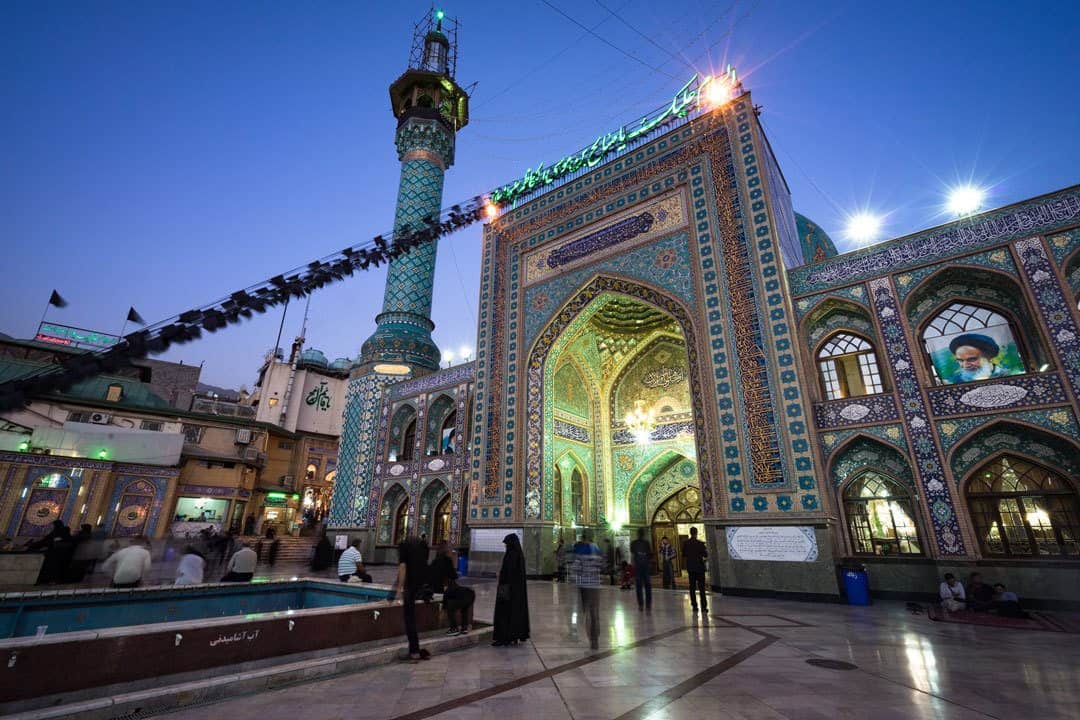
Table of Contents
Iran is Safe!
There’s a lot of customs to follow, you need a visa for iran, have a head scarf in your carry-on luggage before arrival, bring a phrase book or have google translate on your phone, bring a lot of cash, the currency has two names, bring comfortable footwear, research the food and don’t just eat kebabs, bring a backpack rather than a suitcase, draw up an itinerary, but keep it flexible, let your guard down and talk to locals, always ask the price before buying, book domestic flights with your accommodation or travel agent, team up with other travellers and share tours, be on time for your appointments, the traffic is horrible, you need a vpn to access some social media platforms, there is wifi, but be patient with it, pick up a local sim card, iran has its own uber called snapp, you can drink the tap water, good coffee is hard to find, there’s a female-only carriage on the metros, what to know before you visit iran.
The truth is travelling in Iran definitely has its quirks, and being an Islamic country means there’s a few things you need to know about the religion and culture before you go so you can show absolute respect.
Luckily these are easy enough to know before you go if you do a bit of research. We spent one month travelling around Iran and learnt so much during our time there.
To help put your mind at ease about travelling in this incredible country, here’s our list of the most important things to know before you visit Iran.
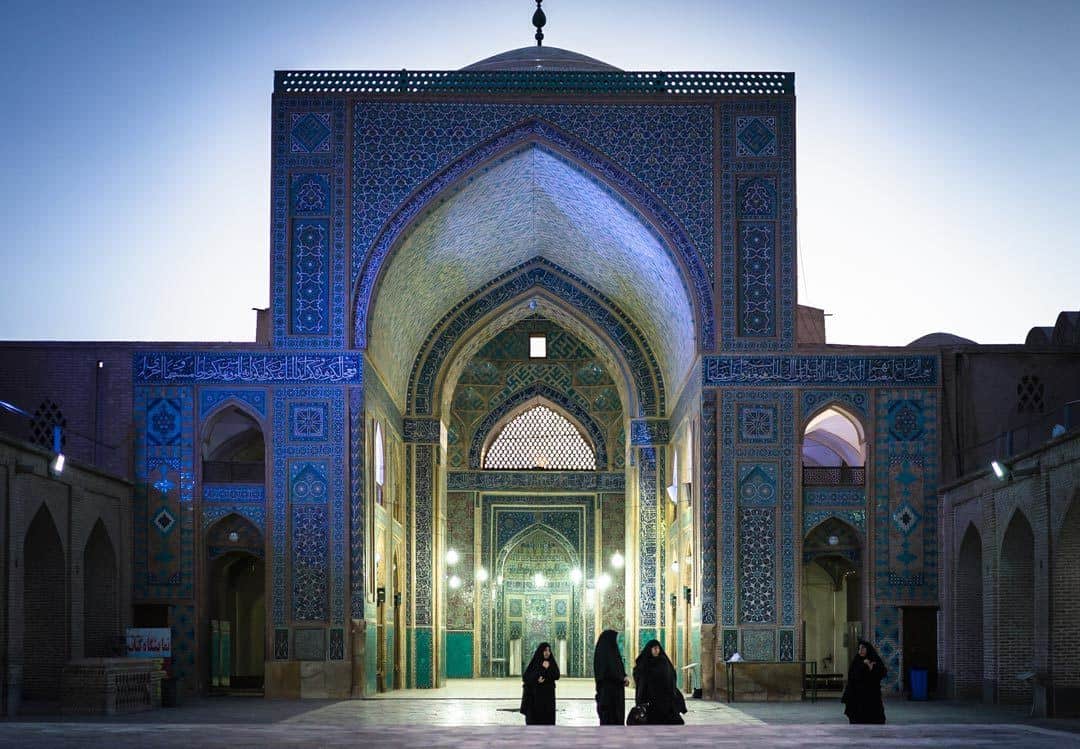
All of the mainstream media outlets portray Iran as an unsafe country, somewhere that you’ll be at risk if you visit.
The mainstream media is wrong.
We did not feel unsafe once through the whole 4 weeks of us backpacking independently in Iran.
We weren’t with a tour group, had no tour guides, don’t speak the local language, took public transport and taxis, wandered the streets on our own – basically everything you shouldn’t do if you’re in a dangerous country.
And guess what? Nothing bad happened to us at all!
The Iranian people are so friendly and helpful. They want you to have a great time and tell your friends so more people will come and visit.
We were walking around one morning on a quiet street when a car passed us and turned around. A group of young people stopped the car, came up to us, and asked if we were ok or if we needed help.
Once we told them we were just looking for a coffee they pulled out their phones and started showing us where the cafes were on a map.
They even offered us a ride, and said if the cafes were closed they had coffee at their home and would love to make us some.
This is just one example of dozens of interactions that happened to us when we were in Iran. Iranians love that tourists are coming to their country and travelling around.
The locals know what the media says about them and what a lot of the world thinks of their country, and the people just want to show that they are nice, generous people.
Theft against tourists is very rare and even the Religion Police (secret police) tend to leave tourists alone.
Just be careful around the bazaars and crowed places for pickpocketing. We didn’t have any issue and didn’t hear of any other travellers having problems, but this is common sense in any busy place in the world.
With all that being said, there is a large military and police presence in Iran. Do not photograph any military areas or government buildings, and stay away from any protests if you see them.
Obviously there are some areas of Iran that are no-go zones, such as the borders of Afghanistan, Pakistan and Iraq, so do your research and talk to locals if you’re thinking about going anywhere near them.
When you travel somewhere you want to take in everything about the country and its people, and that includes the culture and customs.
Iran has quite a few local customs that may take some getting used to, so it’s important to learn about them before you go so you don’t accidentally offend or disrespect anyone.
Some of the most common ones that throw tourists off are:
- Women must wear hijabs (headscarves) at all times in public. They must also wear loose-fitting clothes that don’t show their figure.
- Giving a thumbs-up sign is considered rude, similar to giving the middle finger in Western society.
- Men can wear short-sleeved shirts, but long pants must be worn at all times.
- Men and women who aren’t related shouldn’t touch either. That means no shaking hands or hugging someone of the opposite sex.
- If you are travelling with your significant other, avoid any public displays of affection.
- Always bring a gift if you are invited to someone’s house. Candy, pastries or flowers are fine.
Now we want to give a special mention to ta’arof – This is a hospitality trait where it’s customary for someone to refuse payment for a service, and is probably the most confusing thing for any tourist to get their head around.
Basically what happens is if you make a purchase (a souvenir, taxi ride, etc), the person may refuse your payment out of politeness. It is then up to you to insist despite their refusals that you want to pay. After two or three times they’ll then accept your money.
If they still keep refusing then perhaps you have just experienced some amazing Iranian hospitality! But chances are they’ll accept the payment once the process has been completed. Don’t worry, you’ll get the hang of it.
The locals are so lovely, that if you do something wrong someone will approach you and nicely let you know. For example, if you are a lady and your headscarf falls off without you knowing, a local will kindly let you know.
Don’t stress about getting your outfits beforehand as shopping in Iran is cheap. Just bring one headscarf and set of loose-fitting clothes, and buy more once you get there.
The culture is the best thing about visiting Iran, and after a few days, you’ll start to understand and fall in love with it just like we did.
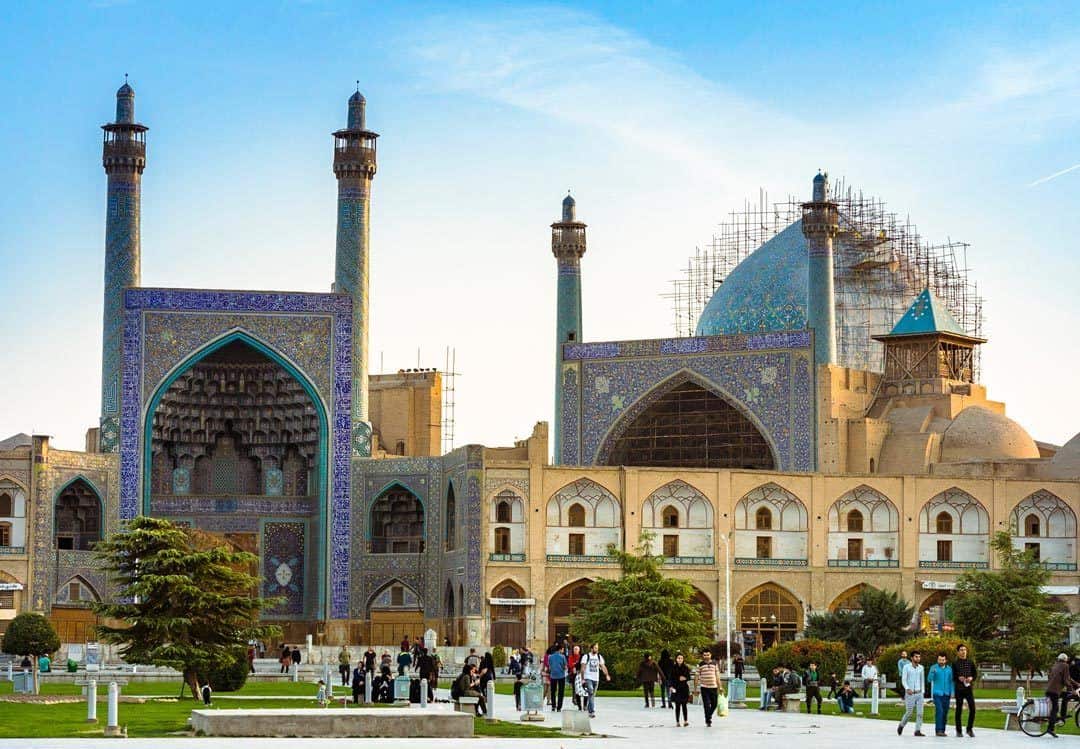
In order to visit Iran, you’re going to need to get a tourist visa. This used to be a very difficult process, but luckily things have gotten easier with the introduction of visa on arrivals in 2016
On the 14th February 2016, the Ministry of Iran announced that citizens of 180 countries can now apply for VOA of 30-days at most international airports, including Tehran, Shiraz, Mashad, Tabriz and Isfahan.
There’s an exception to this rule though, and if you are from Canada, the UK or the USA, we have some bad news for you…You can only visit Iran if you join a guided tour, so no chance of getting a VOA and travelling independently.
Your tour company will help organise your visa for you.
Check out our article on how to apply for a Visa On Arrival in Iran.
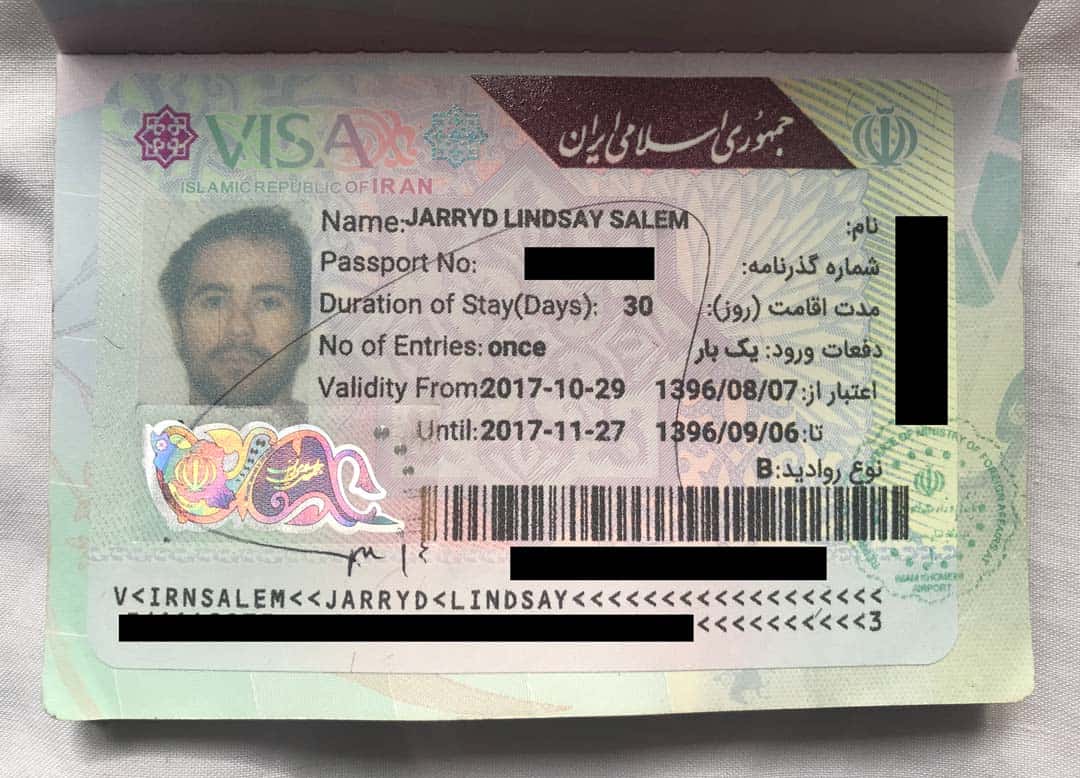
You Need to Dress Appropriately
This follows on from the customs section above, but in a bit more detail.
Iran is an Islamic country, and as such you need to follow the Islamic dress code. Here are some things to keep in mind.
Women need to cover their arms, legs and head. This including a Hijab, loose long length shirt with long sleeves and pants.
Leggings or tight jeans are ok as long as your top is long and covers your bottom. When wearing pants, you need to be covered down to your ankles.
The most common way to cover your head is with a scarf. The local women wear bright colours and are very stylish with their clothing, so don’t think you need to wear all black.
Black is still worn a lot but not so much among the younger generation.
You can wear sandals. Some guesthouses and hostels will allow you to take your headscarf off on their premises but do check first.
Men aren’t allowed to wear shorts in public, so bring long, lightweight pants as the best option. T-shirts are fine to wear in public. Men can wear sandals too.
If you do wear inappropriate clothing it’s not the end of the world, and besides some angry looks from some of the older generation, you’ll probably just end up having a friendly local let you know what’s best to wear.
In Tehran, the locals push the limits in terms of what they wear in public. At the end of 2017, an uprising occurred and supposedly women were no longer required to wear the Hijab in public in Tehran, but wait until you are in the country to find out for certain.
When you land at the airport, it is respectful to put a scarf straight on your head ladies. This will cause no trouble for you by locals or the officials at the airport.
Once you’re in the air on an international flight you’ll see most young ladies take their hijab as soon as the plane leaves the ground. Just follow what the locals do.
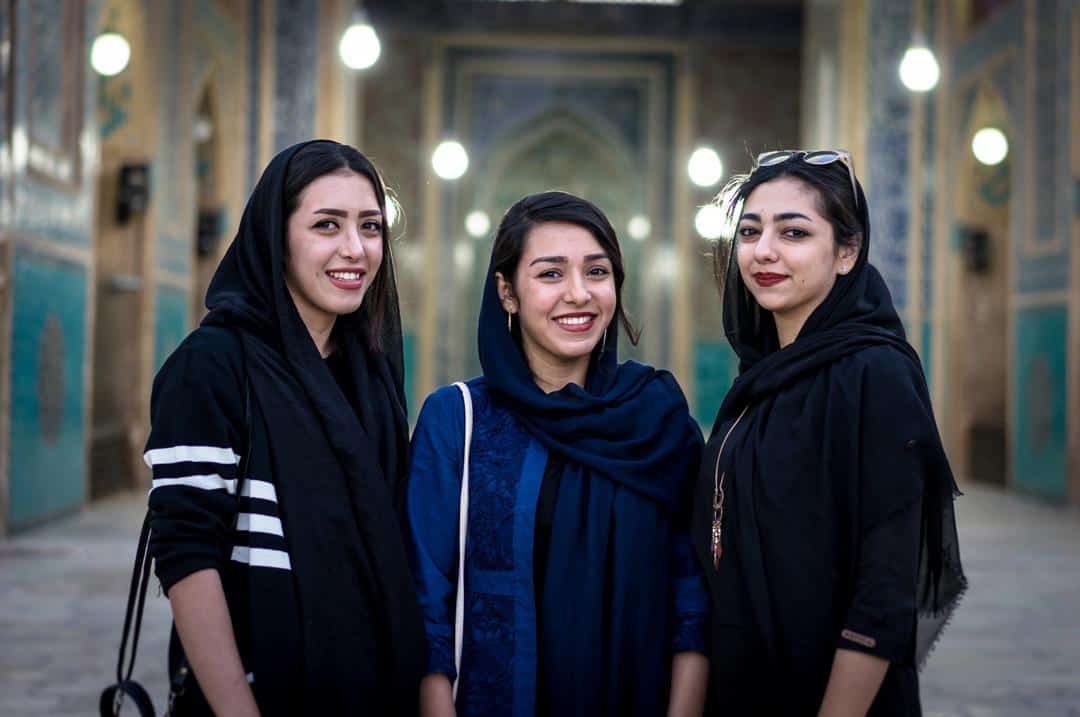
We were quite surprised to discover that a lot of Iranians could speak a little bit of English, but that wasn’t always the case, so do yourself a favour and bring along something that can help translate English to Persian.
We always travel with Google Translate and offline languages saved on our phones, but at times having a phrasebook is the best (and most social) way to interact with people who don’t speak any English.
Remember, you are in a country that doesn’t have English as an official language, so don’t be that rude tourist that gets upset if people aren’t understanding you.
Persian (Farsi) is difficult, and no locals expect you to learn much beyond hello and thank you while you are there, but do your best anyway as a few extra words will go a long way in showing respect.
Also don’t be surprised if you are constantly invited out for tea with people so they can practice their English. If the opportunity comes up, make time for it, as it’s an amazing experience for both the local and yourself.
Don’t forget your cash when visiting Iran, as none of the ATMs in the country accepts foreign credit or debit cards thanks to the embargo. So if you forget to bring all of your cash for your entire trip, you’re out of luck.
Figure out what your usual budget is for a trip ($50 a day, $100 a day, etc), then bring a bit extra just in case. USD is best for all around the country but Euros and British Pounds are also accepted in Tehran.
There’s two exchange rates in the country – official rate and black market rate – and the black market rate is of course much better.
We actually found an exchange booth at Tehran airport that gave pretty close to the black market rate, so we traded some cash there.
As a tip don’t exchange all of your foreign cash into Rials at once, because you’ll either get ripped off on the exchange rate back if you have any left over, or you’ll be unable to trade it outside of the country.
Also don’t be too concerned about travelling around with thousands of dollars in your backpacks. As we mentioned earlier theft is rare. Do keep your money stashed in different spots though just in case.
UPDATE: If you’d prefer not to carry all your cash with you, can actually pre-order a local Iranian debit card from the company, Mah Card . It works just like a normal debit card in your home country.
You order it on their website and they’ll deliver it to your hotel in Tehran when you arrive. They have an online system too where you can top up the funds if you’re running low.
Use the code ‘ NOMADASAURUS ‘ at check-out to get a 40% discount on the card when ordering. Instead of a 19 Euro issue fee, our code brings it down to 11 Euro.
“Toman or Rial?” Get used to asking that question, because if you don’t it could end up being a costly mistake.
The currency in Iran is officially known as the Rial, and is valued at roughly 30’000 IRL to USD$1. That’s a lot of zeros, so what the locals have started doing is dropping a zero and calling the new value a Toman.
1 Toman = 10 Rial
When you hear prices quoted in Tomans you need to add a zero on the end and pay the amount in Rials. It sounds confusing, but you’ll pick it up pretty quickly.
That’s why it’s important to always ask Toman or Rial, so you don’t accidentally pay too much on an item. Most vendors quote in Tomans anyway, so chances are if the price seems too good to be true, you need to multiply it by 10.
Rumour has it that Iran will officially introduce Toman as a currency in the coming years, but that hasn’t come into effect yet.
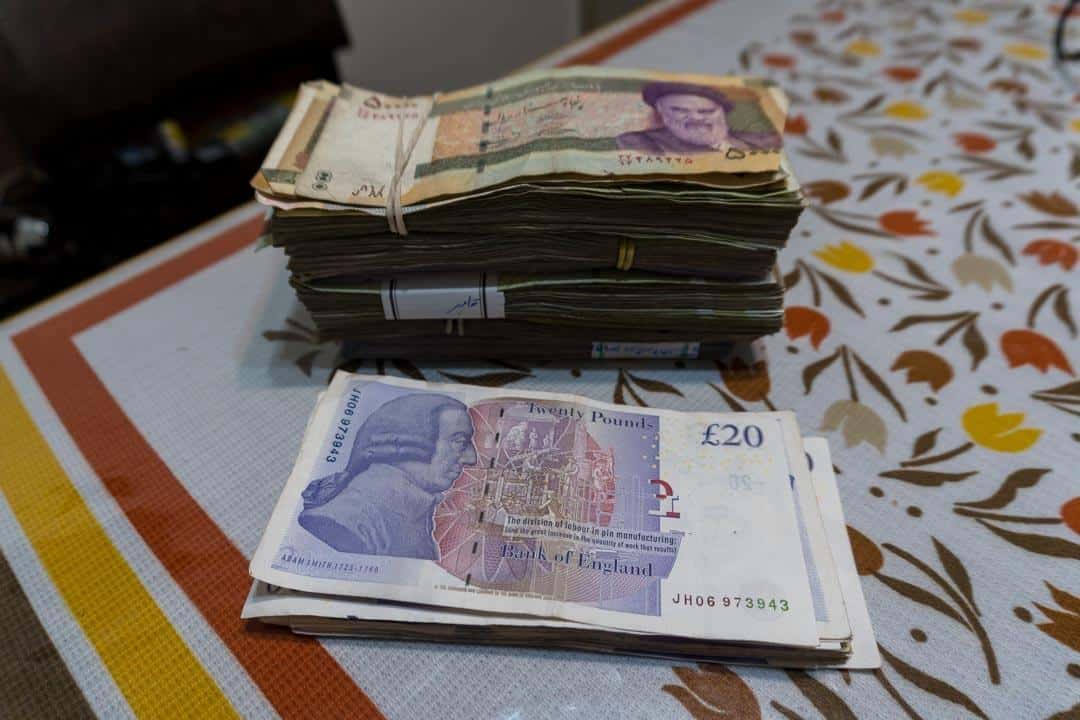
You are going to do a lot of walking in Iran, so bring comfortable footwear. The towns here are so amazing that you’ll probably end up walking at least 10km every day, so look after your feet.
These don’t necessarily have to be hiking boots (unless you’re planning on doing some treks). Just make sure you have some flat shoes that you can wear all day without a problem.
Don’t bring heels. You don’t need them, and you won’t wear them. We had a pair of hiking shoes each and a pair of sandals. That was perfect.
Persian food is varied and delicious, and there’s plenty of different styles to try, so be adventurous!
Most people travelling on a budget will end up eating falafel sandwiches when they’re in Iran because they are cheap ($1 !), filling and delicious, but there’s plenty more to Iranian cuisine then just kebabs.
We don’t consider ourselves to be foodies, but luckily we were travelling with our good friends Dan and John and they are all about culinary travel, so they had a huge list of food they wanted to try. And boy were we thankful they did!
They had looked up the different types of food they wanted to try, so we basically followed their advice and tried it all. Of course, it was super delicious too.
One particular dish we all loved was dizi. It’s quite confusing how to eat the first time, so we had the restaurant owner show us how to mix and grind all the ingredients. If she didn’t show us, we wouldn’t have a clue how to eat it.
If you are a vegetarian, there are food options but they can be limited. There is a lot of eggplant, lentil and chickpea dishes. There are simple salads and rice also.
Try to get away from the popular tourist areas as well, as the prices are going to be a lot higher than the average place.
Move away and you will be surprised how much the price drops, and the portions are larger. If you are passing a local restaurant and it is packed with locals, that is going to be a winner.
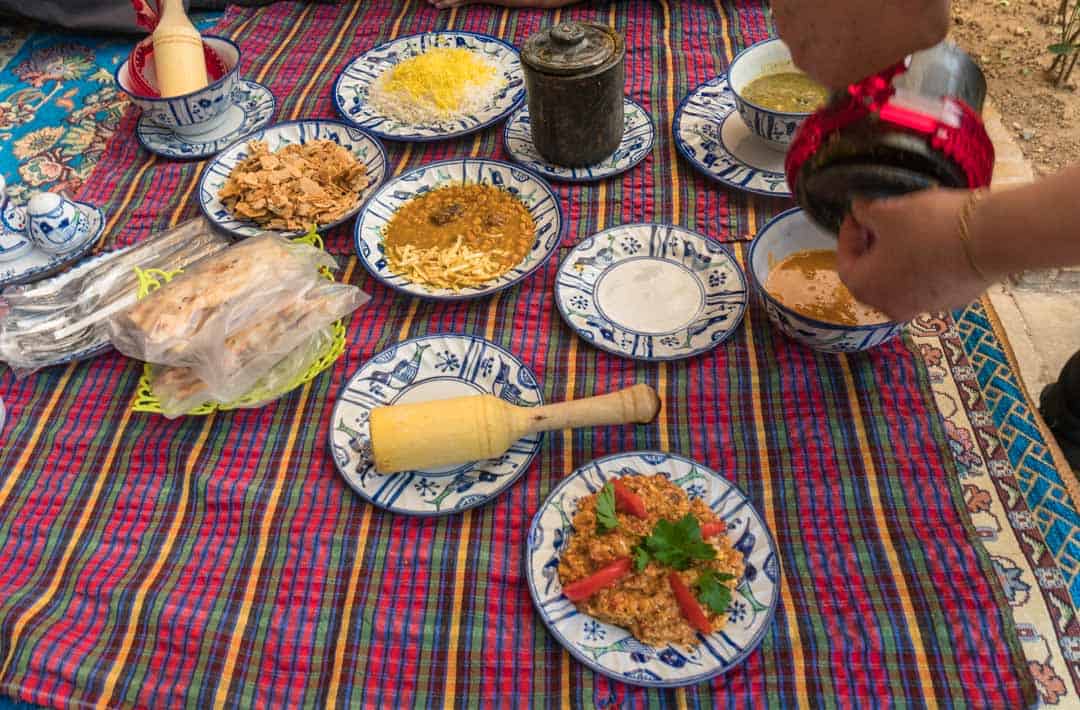
We always recommend people travel with a backpack rather than a suitcase, but this is especially useful when you visit Iran.
The road and paths are uneven, and wheeling a suitcase would be a nightmare. A lot of hotels don’t have lifts, so unless you’re feeling strong it’s going to be hard to carry your suitcase up a lot of flights of stairs.
Always choose a lightweight backpack that fits you perfectly for the best support.
There are also hybrid backpacks, that have harnesses and wheels on the bottom for the times where you just don’t want to carry it.
Unless you are on a whirlwind 7-day trip of the country we recommend you design an itinerary of what you want to see and do, but don’t book anything until you are in the country.
Iran is one of those countries that is best to research beforehand so you can make the most of your time and you don’t miss anything, but don’t be surprised if some places you end up liking more than others.
Be willing to change your plans if you get somewhere that you want to stay an extra day, or if you meet a backpacker that raves about one town you hadn’t considered before.
Don’t stress about booking buses, flights or trains before you arrive. Everything can be booked in-country, for a much cheaper price than you’ll find online.
By not locking in your travel plans, you can change and swap your itinerary easy enough.
Disclaimer: The one time that you may need to book everything ahead of time is during Nowruz, which is the Persian New Year. If you’re planning on travelling to Iran during this time (it happens around the spring equinox in March) you’ll find things are extremely busy with millions of locals travelling around the country to spend time with their families too.
Looking for somewhere else to check out when you visit Iran? Don’t miss our article on the best things to do in Shiraz!
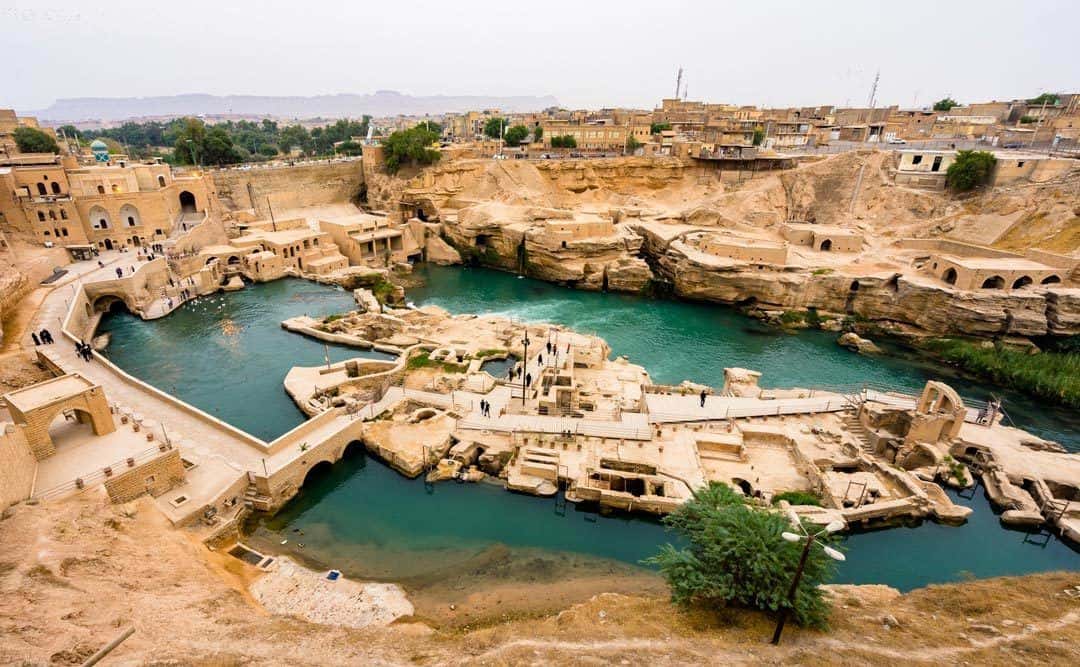
One of the best experiences you will have in Iran is spending time with all the friendly locals. And trust us, you’ll get plenty of opportunities if you are open to it.
The city squares are usually where locals will approach you to welcome you to their country, have a chat and practice their English.
Don’t shy away from this, even if you are a solo traveller. We found out so much information about Iran and how the locals live simply by chatting away.
Most people asked us questions about where we are from and were very happy to answer our questions. It was a true insight to Iran and we made some beautiful friends from it (many of whom we still keep in contact with).
Don’t be surprised if you get a lot of invitations to people’s homes as well, and this may be one of the few countries where we’d say hanging out with strangers is highly encouraged. The Couchsurfing scene is huge here too if you’re into that.
Do be wary of some people who will take you to an expensive tea house though. They are nice people, you will have great conversations, but they can be a little cheeky.
Also always look at the menu before you start ordering to make sure they haven’t taken you somewhere that has crazy prices.
Some will invite you out and try to sell carpets to you. If you are not interested just be firm and move on with the conversation.
We only had this happen to us once out of more than a dozen great experiences, and once we made it clear we weren’t buying a carpet we still had a great chat with him.
There is only one thing with all this – Expect to be stopped every few minutes by people wanting to chat! Make sure you’re mentally prepared when you go out around town to have a million friendly conversations.
You shouldn’t just do this in Iran, you should do this everywhere you travel, but it’s important to keep in mind.
In some countries, there are tourist prices and local prices. To be honest, we almost never felt ripped off here, but it did happen occasionally.
Before you buy anything, whether it’s a souvenir, a meal, a pot of tea, a tour, a taxi ride or whatever, ask to see the menu or how much it will cost to avoid any unpleasant surprises.
Get out of the tourist squares too. Chances are if you walk a couple of blocks outside of those popular areas, the prices will drop dramatically.
When buying survivors, ask the price at a few places, get the vibe from the person/place and then buy. Try your bartering skills, but don’t be offensive.
We always try to settle in the middle so both parties are happy. This is their business and they need the money more than you do.
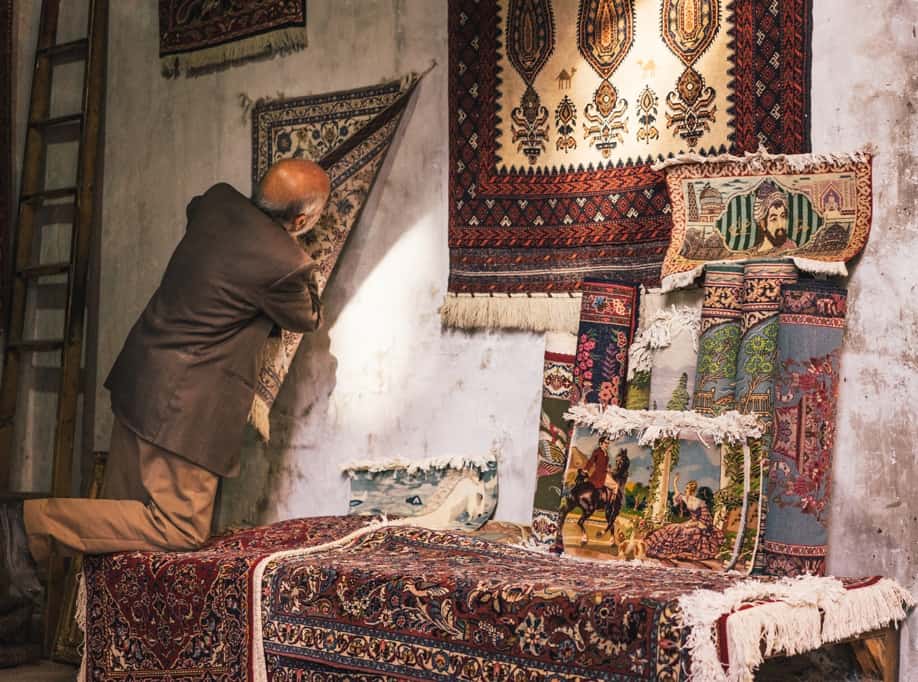
If you are flying domestic, book through an agent or your local guesthouse in the country. All the local airline pages are in Persian, and these are where the best deals are.
Online booking agencies like Skyscanner and Momondo will not bring up these flights. We were in the west near the Iraqi border and wanted to fly to Tehran. Our local guesthouse helped us out and we booked it for $50 USD including snack and bags.
They were charging $200 USD on one of those online booking agencies above. We never were questioned at the airport about the local price and everything went smoothly.
If you’re not travelling in a group of four, ask at your guesthouse or talk to other travellers to see if you can share the cost of a driver with them.
Sometimes hiring a driver between towns as private transport would work out to be the same price as 4 bus tickets. You get there faster and can stop when you like along the way.
This will save you money and you might even make some awesome friends out of it.
Iranians are very punctual. If you plan to leave for a tour at 8am be in reception at 7:45am, and the driver will most likely already be there.
Buses and trains also won’t wait for you if you aren’t there. The last thing you want to do is miss your tour because you slept in or hadn’t packed yet.
If you’re heading to the airport, bus or train station make sure you leave plenty of time in case of bad traffic.
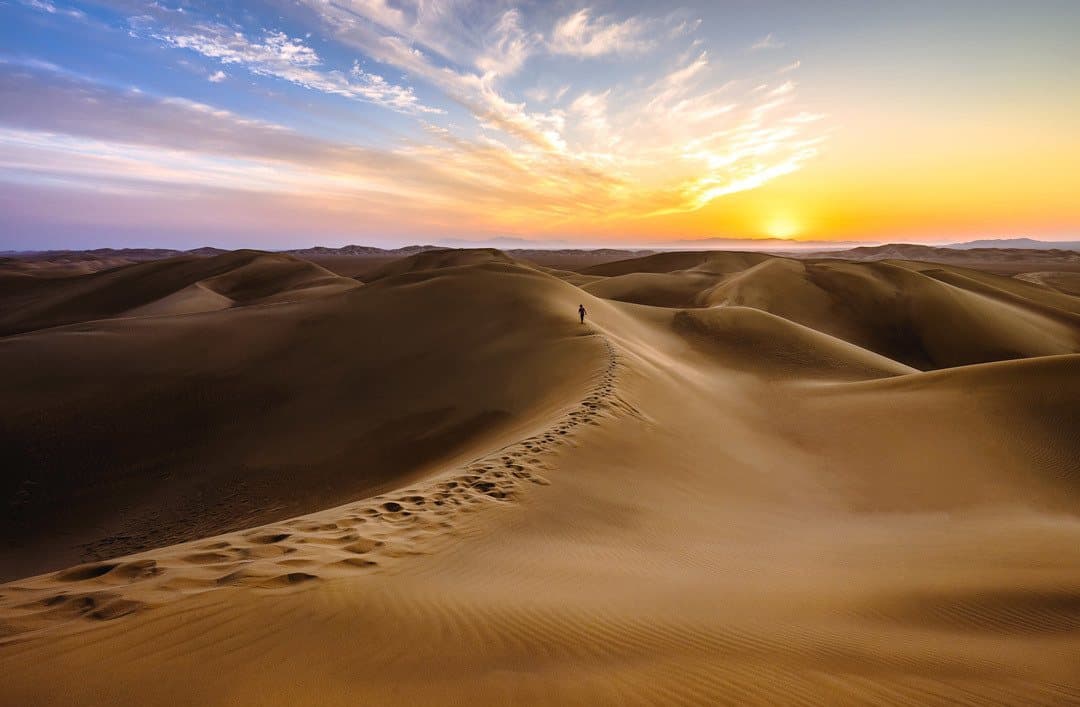
When we say horrible, we’re being polite. The traffic in Iran is actually insane.
If you’re exploring Tehran don’t be surprised if you have plenty of “Holy s**t!” moments as you go to cross the street or you get around in taxi.
It’s not that Iranians are bad drivers…they just don’t have a concept of space when driving around. In one way it’s almost as entertaining as it is scary.
No one is actively trying to run pedestrians down, but if you do try to run the gauntlet of crossing a busy road it’s best to wait for a local to join them on their hell-bent journey to the other side.
Some social media platforms are banned in Iran and you cannot access them without a VPN (Virtual Private Network).
You cannot access Facebook, Facebook Messenger, Twitter, YouTube or Pinterest. You can access Instagram , but the rest only with a VPN.
We used ExpressVPN and had no issues. Here is a link to get your first 30 days for free .
Make sure you download your VPN before you arrive in Iran, because a lot of the VPN sites are blocked by the government.
If you can, we also recommend having access to a few different VPNs, because every now and then one might be blocked in Iran.
ExpressVPN worked for us during our trip, but some people have reported that it didn’t work during their own trip. Last we heard it’s back up and running properly now though.
Most of the guesthouses we stayed at had free wifi, but don’t expect it to be fast.
Some hotels had wifi available in the rooms, while others were only in the reception area or dining rooms. It all depends on how upmarket your place is. In popular cities, tea and coffee houses had wifi also.
One thing to keep in mind though is that just because there is wifi at your hotel, be respectful on how much you use it.
There are no unlimited data plans in Iran, so the hotels have to pre-purchase data in small packets.
Please don’t be that person that streams Netflix or tries to download the new season of Game of Thrones, because all that will happen is you’ll end up using all the net for everybody else in the hotel, and cost the owner more money.
Yep, we met a guy that did just that in Varzaneh, and because it was a weekend it meant nobody in the hostel could get internet until Monday. Thanks, mate.
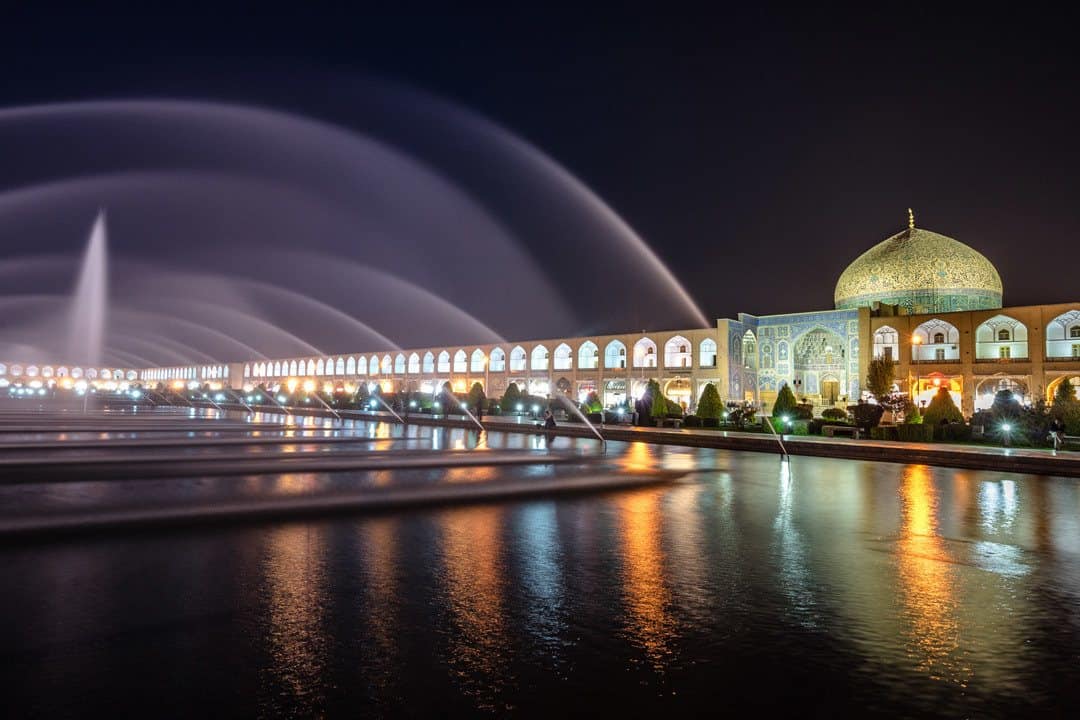
Despite what you may have been told, you can buy a local sim card in Iran as a foreigner, and it’s a great idea to do so.
This way you can call hotels to make bookings use WhatsApp and Snap (more on that below) on the go, and keep in touch with friends and family back home.
We bought up a sim card with the telecommunications company IranCel through our hostel in Tehran, however, they marked the price up by double.
We found out later that you can buy sim cards at the airport or at any store, so our suggestion is to do this yourself.
When going into the phone store bring your phrasebook or a local friend. You will not need to show any ID, just pay in cash, but it helps to have your passport with you just in case.
You can top up at little general stores that display the IranCel sign. They will do it all on your phone and charge a small fee for their time. Please don’t argue with that, it’s maybe 25c USD.
We were getting 5GB of data for about $10 USD.
There is an app in Iran called Snapp, and it is similar to Uber. It’s a rideshare app where drivers register and customers can order cars to get around town.
This was a lifesaver for us!
What makes Snapp so great is that a price is determined by the app and you pay in cash once you get to your destination. There’s no metre, so the driver will take the most direct way possible.
When you book it you’ll get the driver’s name, their car model and their registration number, so you know you’re getting in the right vehicle.
Yo drop a pin on a map for where you want to go, so there’s no need to try and explain it to the driver in case he doesn’t speak English (or your pronunciation is crap).
The other added benefit is you can rate the drivers afterwards, so they are more likely to be honest rather than a taxi driver.
The only thing is you cannot easily download it onto an iPhone, as Apple is an American company and does not support Iran. It doesn’t show up in the App Store.
If you go to the Snapp website you can download it to your Apple phone through a special link there. Downloading it on an Android phone is easy with no issues.

This one was a big surprise to us, but you can drink the tap water just about everywhere in Iran.
It’s totally safe to drink, even if you’re new to the country, so don’t worry about buying plastic water bottles everywhere you go.
Bring a reusable water bottle instead and simply fill up as you go.
Don’t drink river water tough if you are out hiking.
Iran is a nation of tea drinkers, so it’s no surprise that you’ll get delicious fresh tea for cheap (or free) just about everywhere.
But what about us coffee drinkers??
The bad news is that getting good coffee is very hard in Iran. Despite their close proximity to places like Turkey, the coffee culture phased out years ago and so now the best you’ll find is usually those horrible instant packets.
There is a silver lining though, and some entrepreneurial locals have discovered that coffee is basically the second greatest thing on earth (after a delicious IPA, which you also can’t get in Iran), and some Western-style coffee shops are popping up in major towns.
They’re not cheap, but when you need that caffeine hit in the morning it’s totally worth it.
When you catch the metro around Tehran or Esfahan, there are carriages designated just for women, which is great if you’re a solo female traveller.
These are basically sections that males aren’t allowed in to stop accidental touching of non-related mixed genders, but it also adds a sense of security for women taking public transport.
Occasionally if the mixed carriages are full you’ll see one or two men in the female ones, but they tend to stand next to the door away from everyone.
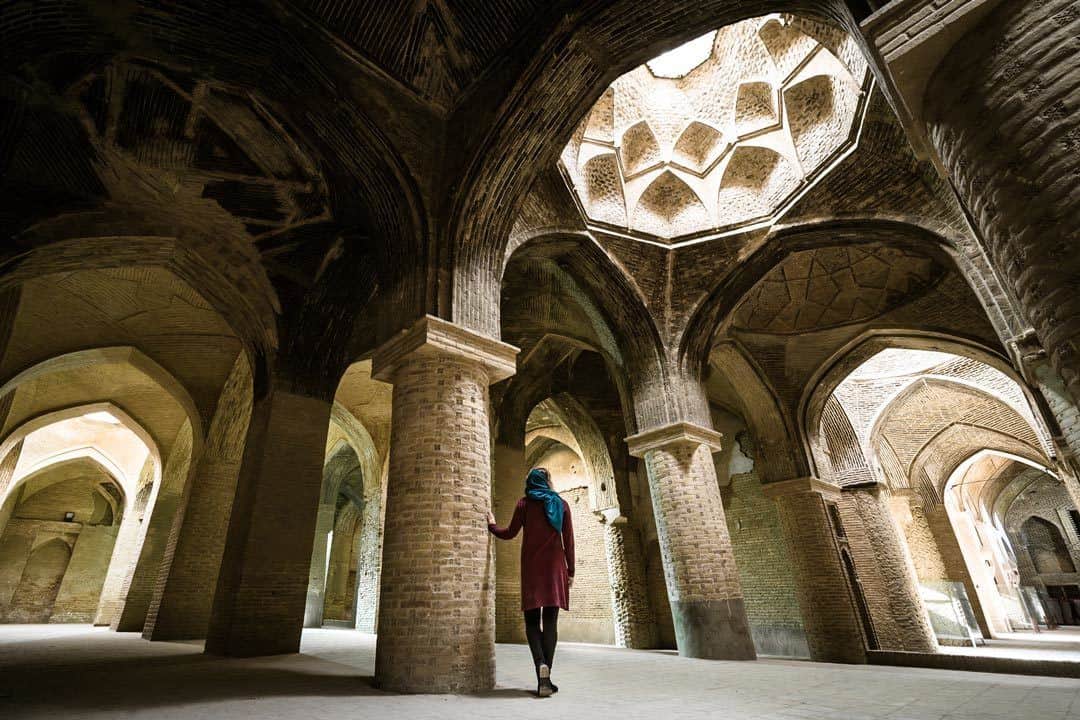
[box] Those were just some of the things you need to know before you visit Iran. Has the article helped you? Do you have anything else to add? Leave a comment below and let us know![/box]
Alesha and Jarryd
Hi, We’re Alesha and Jarryd!

We’ve been traveling the world together since 2008, searching for the planet’s best destinations and adventures.
Love Travel?
Sign up for our free weekly newsletter for the best travel tips, ideas and deals!
We respect your privacy. Unsubscribe at any time.
READ MORE...
The Best Time To Visit Antarctica – Month By Month Breakdown
Siyam World Review – The Best 5-Star Resort in the Maldives
Sun Siyam Iru Fushi Review – 5-Star Luxury in the Maldives
Related posts, guide to buying a motorbike in southeast asia, the gruesome world of harbin’s siberian tiger park, 40 years after the war – celebrating the vietnamese new year with cluster bombs, 105 thoughts on “25 things to know before you visit iran”.
Hello friends, I read your comments and I wish I could say that I am happy that you think so naively about the Iranian regime, but the truth of Iran and its people is not what these friends say, and unfortunately the bitter truth is that all those media that They present this regime and the leaders of the Islamic Republic as terrorists and a bunch of dishonorable and inhuman people, they are telling the truth and only the oppressed people of Iran understand this! you can ask them. But for you tourist friends, yes, this country can be a paradise because your money is worth many times more than ours, and not you tourist friends, but the unfortunate people of this cursed country feel the pressure. Our only wish was to have normal rights and a normal life like you, but this regime stole that life from the people of Iran and blackened the lives of the people of this country. Hoping for a day when this terrorist regime, which has made the Middle East and the whole world insecure, will be destroyed and we Iranian people have good and sincere relations with the people of other countries of the world . That day we will have at least a normal life and the world will not recognize this country as a criminal terrorist country. Written by a 27 young Iranian.
hi I want to just say now ( 2023-15-11 ) that the US dollar is 510000 Rials and here is heaven for people of countries where the currency is the dollar and Iran just is Hell for local people thanks to the Iran government for this situation!!!!!!
Hi dear Alisha and Jerry My name is Raziyeh. As an Iranian, I wanted to express my sincere gratitude for your kind words and appreciation of our beautiful country. Contrary to media propaganda, Iran is safe, and Contrary to media statements, we are hospitable and genial people who do everything to ensure you have a fun time in Iran. Please do not believe the lies that social media tells about our country. We’ll be happy to see tourists and give information to them. I hope you revisit our country. Best regards, Raziyeh.
Hi everyone I’m from Iran. I’m happy that you liked your trip to Iran. Iran has a lot of museums and attractive places if you’ll come you should visit them. And we’ll be happy to see tourists and give informations to them.
Iran is an extremely lovely place to travel. Thank you for the trip advice. I adore your article.
For foreigners especially Westerners Iran is a very dangerous country. There is a high risk of being arrested on fake charges. Atleast 50 foreigners have been arrested recently and sentenced without a fair trail. The “friendly” citizens of Iran will not help you out unless you pay them witg Euro or Dollars…..
Well! I accidentally found this while surfing the net, and it’s a bit sad that each dollar is 450000 Rials… People are still friendly to tourists though, no matter how hard our lives are. I hope you visit our country again, after all these sad events, of course.
22 days later and its 510000. when will these evil leaders leave us alone
We are glad that you were satisfied with your trip.You pointed out great points like someone who has lived inside for years… Our people believed, but the government has crushed the people so much under the economic pressure that they have become a little unfair to each other. Be sure to use SNAP inside Iran.. Be sure to check the price before buying.. Our common currency is Toman and Rial is nominal. For example, now every 1 dollar is equivalent to 33000 Tomans.. To eat a pizza, you need 6 or 7 dollars.3 cents are required for 1.5 liter of taqriya water.. If you have an acquaintance in Iran, you can be much easier.. Don’t pay too much attention to the capital because it has very beautiful cities with a very old history. Thank you for choosing which country for your trip. Good luck
Thank you for the excellent information and for taking an interest in the lovely country. really nice tips for visiting Iran.
I’m glad you liked Iran. Unfortunately, due to the difficulty in managing economic affairs, the Iranian people suffer from the high cost of goods. Now each dollar is equivalent to 277,000 rials, which is really terrible, of course for our people! Of course, Iran is still full of beautiful places and amazing places! I hope you have good trips …❤
Hi guys I am Ava. I am from Iran/ Isfahan. If you want to come to Iran I would be happy to help you. I have a beautiful Iranian old house.
Can you please write about traveling in Iran at the moment. I would be traveling on a New Zealand passport. Thank you. Evan.
Iran holds many surprises for visitors; like the climate which can fluctuate greatly, depending on the area and time of year, dispelling the long-held myth that Iran is nothing more than a vast, sweltering desert. But Iran is a historical place and i like to visit this type of places that is why few days ago i read this type of article on another site it contain huge information. While some surprises are nice when travelling, it’s important to be as well prepared as possible.
Is $1000 for 7 days visiting 5 cities everything included except airline tickets a reasonable price? Please let me know what you think! Cities included are Tehran, Yazd, Esfahan, Shiraz, and the desert side with Caspian sea. Thanks,
Definitely if you stay at budget accommodation, take public buses as transport and not eat at fancy restaurants. Have a good trip
it’s very good
Indeed it is 🙂
I am Iranian. You described Iran very well. I am glad that you visited Iran
Thank you for your comment Masoud. We really enjoyed travelling around Iran. 🙂
Hi Thank you for your essay about Iran. As an Iranian I do hope you have good memories generally from Iran. No country is perfectly free of any trouble but please do not believe propaganda against Iran unless you travel to Iran and live with Iranian for a couple of weeks (at least) and then judge.
Hi there! I’m an Iranian, and i’m REALLY happy that you loved our country! I hope other tourists enjoy their travel to Iran, and I wanted to say, that Pinterest doesn’t need VPN! 🙂 And also about hijab, if you’re thinking that it’s gonna make you struggle, well, it definitely isn’t. I mean, it’s not such a big deal, and you’ll get used to it and continue enjoying! Anyways, hope you like our country
Reasons for a Group Visit to Iran Experienced travelers may want to look away. Guided tours can really be the best option for some travelers going abroad. Of course, they limit you a little and lose a little freedom. You will not have enough time to fall in love with a place and you will not have enough time to stay there, and other companions may not be with you. But no matter what the veterans might say, there are good reasons to tour for those who want to.
Salaam All, I’ve travelled extensively in the Middle East (Egypt, Palestine, Lybia, Qatar, Dubai, Saudi Arabia, Iran and India. My wife, daughter and myself went on holiday to Iran in 2012 and 2015 (for my 60th birthday). An Iranian couple came to sing happy bithday to me in farsi. It was an inexplicable experience, no crime on the street, no fighting, very, very safe, people very friendly and warm, food and confectionary very good, not expensive to shop but hotel accommodation could be expensive, public transport (bus and metro rail) very good and effecient, metro stations very clean and very easy for foreigners to use. Although we were based in Northern Tehran (Eliheyah), we once drove by luxury coach to Ishfahan to spend one week there (2012), the other trip we flew to Shiraz to spend one week there (2015). I fell in love with this country, it’s absolutely beautiful. In Tehran, we even went in the cable cars on the Azborg mountains. O, I just cannot stop raving about IRAN. I’ll visit there anytime. Please don’t believe the media with their negative reports, go see for yourself and discover this amazing country. Salaam from Riedwaan Salie (Cape Town, South Africa.
That is so nice. What a great birthday trip. We are so glad you had a wonderful time with you family. We found the country very welcoming and friendly also. Thank you for your comment. 🙂
Your itinerary was perfect! I hope you come back again very soon! I heard now you should ask for visa only from agencies. Also now for your money matters you can use a local debit card like Daricpay to charge and transfer money online
We hope to visit again one day. Take care
Hi Im am an iranian person and your information was totally correct about iran I am very glad to see you were anjoyed traveling to iran If you come to iran again you can visit other cities like shiraz,Tabriz,Isfahan,Hamedan they are as beautiful as Tehran
Thank you so much for your comment. 🙂
Hi all, I have been 2 weeks in Iran the last month, my friends and I were travelling the west part of this huge country touring the famous cities and recommended places over the countryside. I could never thought how beautiful were every little point that we stopped by: landscapes, restaurants, seacoast, food… persian landmarks will remind forever in my mind. As we were travelling by car we trusted (company removed, you can message below if interested), a notorious iranian company which offers a wide variety of car for rent. The service was excelent and they provided us whatever we need in order to make our trip easer. I would definetely recommend this company If you are thinking about renting a car to shuttle from a place to another, they are serious and reliable. Thanks persian people and the company for making our dreamt trip happen!!
We love Iran!!!!
Sounds like you had a great trip. We are so glad so had a great time.
Hi Alesha and Jarryd, Thank you for the useful info and your interest in my beautiful country. I’m Zahra Mazaheri an English – Farsi translator. I would be more than happy to help the tourist to Iran in having a pleasant journey.
Glad you liked our article. All the best
Iran is a wonderful country for all nations to visit. Whether you’re interested in going to cultural and historical places, try local food, shopping, or visiting new people, the country is one of the best places for all of these.
Thank you for your comment. It is a magnificent country
thanks so much for your tips, and i want to add this there is something that we call it “Taarof” This is a polite exchange that takes place in all aspects of life in Iran, in shops, in streets, in businesses, at homes. Simply stated, it is a form of one person making an offering and the other, refusing it. This ritual may repeat itself several times before the individuals finally determine whether the offer and refusal are real or simply polite. Be very careful how and with whom you taarof so that it does not interfere with your stay. Use common sense as to when to do it and when not to.
Thank you so much for this. After travelling the country for 3 weeks, we only experienced this once in Tehran on the outskirts of the city, We ate locally, bought locally, stayed locally, bought a lot of items on the street but only experienced it once. We were shocked. We had read about it and was waiting every time but it never came. Maybe if you are a foreigner they don’t do it as much. Thank you the explanation.
I really appreciate for your thoughts on this topic. Thanks for sharing this information with us.
Hi Alesha and Jarryd, this was so helpful. We’re off to Iran in a couple of weeks and great to get some tips re luggage, local currency cards and communication options. thanks david
Hi David, We are so happy the article was helpful. You will have a great time in Iran. Do not over pack. Woman have to be covered. Loose clothing is a must and a long top/dress is best as it covers the figure. Her arms and legs have to be covered. Sandels can be wore. A hijab is a must so bring scarfs. For the men, your arms do not have to be covered. Do bring pants as you need it for mosques. Our advice is to bring zip off pants. They are great. We did not use local currency cards. We bought all our cash in euros and exchanged it in Tehran on day 1. We did it with our guesthouse. They gave us a great rate. As for communication, do download Farsi offline before you go so communication can be easier. Surprisingly a lot of people do speak broken English. have a great trip.
Hi guys. Im so glad you had a good time over here. I believe Iran is the most misunderstood nation (thanks to media!) and articles like this may help people see Iran for what it is. One thing i need to point out is the currency exchange rate. the rate of 30,000 to 1 USD is no longer valid. 1 USD would be exchanged to about 110,000 rials now (11,000 Toman). Hope to see you back here soon! cheers
i promise to passengers ( our guess ❤) that we can make nice memory for you , and hope you enjoy that
Hi guys, great article! Just wanted to suggest that you include information about the Pocket WiFi and Travel Debit card services offered by MahCard (www.mahcard.com) as well… We travelled from Amsterdam to Iran during January this year and we used both services from MahCard and they really made our trip much easier…
Thank you for your tip Lotte. We have never heard of these guy. Definitely would be helpful. We strongly encourage travellers to do their on research on companies and make their own judgements. All the best
Hello! Very useful info about Iran. I am preparing a trip with car from UAE to ROMANI so it will be Bandar Abbas to Turkey Border. Any info and advices are welcomme! Thx
Hi Als, not too sure about that border. We flew in to Tehran. All the best.
Hello Dear Guys, I’m really glad to find your blog. It’s really interesting to me. I should say thank you to you for giving this good information about my country to people. It would be our honor to be host in your next travels to Iran.
I have been to a lot countries. I have been to super cold areas like Norway and have lived in the snowy Switzerland, and have also been to warm countries such as Bali, Sri Lanka, etc… What I love about Iran is that whenever and in whatever season you go, there are always 4 seasons. The southern part (Persian Gulf) is known for its golden beaches and hot climates, other areas such as Shemshak, Darbandsar, etc… are known for their snow and mountains. I recommend going to ski resorts in winter, and as a person who has lived in Switzerland I can tell that they are better. At the same time where you find snow in Iran, you can also travel to the other side where there are hot deserts. I recommend you go to these desert areas with a local tour called RONATURE, which is an ecofriendly tour and provides vegan and vegetarian food, furthermore supports locals and the environment. The Persian Gulf is unimaginably beautiful. Qeshm island in the south is probably the most beautiful place in the world, unfortunately there are not many photos of this island online because not many people know about it yet, but I do recommend taking diving courses there. The water park in Kish island is the best I’ve ever seen, much better than the ones in Dubai. I could go on for forever but you go to Iran once and experience all the four seasons. You get snowy mountains and sunny beaches. You go skiing and after a short flight you are tanning on the beach. This is a miracle and not something other countries dont have to offer. I can say nothing more but to recommend this marvellous country. Do not listen to the media, Iran is safer than Europe and Im not even slightly exaggerating.
Thank you for helping people to travel to Iran, I believe everyone should visit Iran beyond the media portrayal.
We totally agree with you Vahid. Never listen to the media about a destination, we don’t. We really enjoyed our time in Iran and encourage people to experience this country for themselves. 🙂
Sorry, I won’t support Iran. The government is evil. They imprison and torture their own citizens and they execute gay people. How can you support a government like that? Oh, and if you have an Israeli stamp on your passport, they won’t let you in. That’s ok with you?
We don’t support the government, we support the people of the country, who are among the friendliest, most genuine and hospitable people we have ever encountered. If we were to boycott countries with corrupt and evil governments, we’d start with the US.
I recently moved to Iran, as I am Iranian-American (well, now mainly just Iranian). I really appreciate all of the sweet and insightful comments and your wonderful website. Since the last time I lived here I was a child and have only visited every few years, when I arrived I was definitely feeling like a Persian that came back from a lost time warp of sorts, and had to learn the deeper levels of what you all already thoughtfully mentioned like tarof and the culture. Iran is a BEAUTIFUL & AMAZING country and I am lucky to be here. Just to let people know, everything I read here is true and helpful. 🙂 Even riding a bus from Iran into Armenia (to access my american bank for my final paycheck), I started out feeling slightly awkward as the 99% Persian only passenger peers around me were playing cute little games with each other laughing, with LOTS of incredible Persian music… I started getting many happy flashbacks of American-Iranian dance parties… but this was the REAL thing! Within minutes I joined in after being invited to clap my hands and a few girls were doing little hand dances in their seats… within about 10 minutes half the people on the bus were all SINGING together, it was precious. I felt like I was home, with my (native) Iranian people, and I got little happy tears in my eyes. YOU CANNOT FIND THESE MOMENTS IN AMERICA or EUROPE where nearly everyone around you surrounds you with welcoming bright eyes all at the same time. It’s like they are making you part of their family. I recommend visiting Iran for ANYONE… You will see that Iranians are good hearted and loving, even with all the sanctions. Give them a genuine smile, and you will get 100 smiles back, with tea and poetry. 😀
What a beautiful moment. That is great you are going back to your roots. We hear you. Iranians are good hearted and so generous. It is a beautiful country. Have a great time and hope you settle in quickly. All the best
Thanks for visiting my country. Hope tourism breaks all the wall of this global village.
We hope so too. It is a beautiful country with many beautiful people. We loved our time there
Thank you so much for this amazing article! I am going to visit Iran, but just for one week, so I need to take everything that I can from this short trip. I didn’t know that I need a VPN, that is a surprise! I have Surfshark subscription. Maybe you know how it works in Iran?
Not too sure if it will work or not. We used VPN Express and had no issues. There are free VPNs if you get suck and find yours does not work. Have a great trip.
So disappointing to learn that Canada is not one of the countries included on the Visa on Arrival program…I really want to spend a week in Tehran but it looks as though that won’t be possible. That’s really too bad 🙁
I know. It is a little more of a hassle but worth it. I know Canadians, UK and USA citizens have to go on a tour but there are many great tours within the country. If you want a tour that is not a tour, check out Yomadic. He’s tours are informative but relaxed and have great reviews. All the best.
I was 10 days in Iran (Teerah, Esfahan, Yazd and Siraz) and … is a great country, good food, culture and fantastic people. Thank you Iran!
Glad you had a wonderful time Vitor. 🙂
hi im ghazal from kermanshah iran! a offer all to come here and feel how friendly people are
Yourwellcom
I’m sorry for this government rule.
Your welcome. I hope you back soon in my country.
hello,im shahzad from iran. thank you so much for your excelent content about Iran. all of the sentences are true about my country and u knew it very well.im so happy that you had good times here. As the other iranian people said,now 1 USD is equal with 141,000 Rials :).so Iran is a very cheap country for tourists,too:). come to my country and enjoy,it would be your best trip with no debt:)
Hi Shahzad, We had a wonderful time there. Thank you for the update with the exchange rate. We recommend all travellers to visit Iran. 🙂
Thanks for this guys! I am super excited leaving for Tehran on Monday I booked a small tour as I felt anxious about travelling independently first time ever in Iran. If I like it -and I am sure I will – I shall go back. I was advised to take a day travel backpack and a medium sized wheely which I hope to fill up with things bought locally. Of course I shall take essentials. Is a long skirt allowed? It might be cooler than trousers. What do you think?
Hi Alex, I hope you are having a wonderful trip, That great you booked a small tour. Sometimes it is the best way to see the country and learn about the people and culture. There is so many great souvenirs to buy. Unfortunately my bag wasn’t big enough. 🙂 Absolutely a long shirt is allowed but not a tight body fitting one. Long sleeve and maxi dresses are perfect. Trousers are great just make sure you top is loose and long past your bottom. Have a great trip.
Wow, Thanks for this. I’am glad, that I found your page. I’ll travel in october alone to isfahan. I’m already so excited
That’s amazing. You will have a great time. The Iranians are so friendly and welcoming. There is so much to do there. Here is a video we made about Isfahan if you want to check it out. https://youtu.be/XDYJ44CutT4
Great points!
Regarding bringing a load of cash though, I found a solution. In my last trip to Iran, I got a DaricPay card. It made everything easier!
Thank you for your suggestion and information. Glad that worked for you. We still recommend visitors to take cash as not everywhere will accept cards.
Hello everyone. This is Ali, an Iranian. This page is a good guidance; LIKE ! Iran is a country of different climates and has very beautiful historical monuments and natural areas. Contrary to propaganda, Iran is safe and a good choice for travel. Come to Iran and have nice time here.
Thank you Ali. 🙂
This is great ! Thank you! I’m preparing to go there in June and your article answered a lot of questions! I will come back to it just to remember everything. Thanks again.
Glad the article could help. Have a wonderful trip Joanna.
Great i read your experiences you had great fun in Iran. Everyone should need to aware about your guidelines before visit.
Hi Eric, thank you. We had a great time in Iran. Definitely everyone should read up on the guidelines, not just what we have written but from other also. It is important to do your research before travelling to a country. 🙂
Hey, great article on Iran tourism. What should I plan in terms of budget, if I want to plan a 7-day trip to Iran and cover major tourist/historical destination.
How would you rate food for just vegetarians. Thanks!
We budgeted $80 USD a day for a couple. We came home with a little bit of money but we rather have more than less as there is no ATMs that work for foreigners. As for vegetarian food, there are many options.
This is awesome article, I’ve read a ton of articles online these past couple of months as I’m traveling to Iran in May. I’ve already bought a NordVPN subscription regarding the social media access, I hope it will work fine too, saw some recommendations for it too. Other than that I really cannot wait for the trip, so I keep reading about it. Thanks 🙂
Awesome Steve. Have a great time. The people there are so friendly. It is an amazing country.
hi steve, i recommend, first travel to iran then try free vpn then buy subscription.because some vpn in iran dose not work. instagram and what up don’t need vpn.have a nice trip!
Hi I am very pleased to be pleased with your trip to Iran I hope that one day we will be able to travel to other countries as well These days, people in my country are very sad.
Hi Mostafa, thank you for your message. We did enjoy visiting your country but did hear this from many locals. We hope that one day it all changes and travel will be a lot easier for Iranians. We saw nothing but friendly and welcoming people. The most friendliest country we have visited. We hope happiness comes soon.
Glad to hear that you had good trip in Iran guys. However things get worse and now 110,000 rials = 1 USD which is good for tourists. Lol.
Thanks for that Mohammad. Not good for the locals. We thought it was cheap when we visited last year. Sorry to hear that
I glad to read this site My country has very beautiful natural scenery and tourism, as well as very caring and kind people… I hope to see you in my city, Isfahan, the city of culture and art, and we can spend good times together^_^ I hope that there will always be in all countries, including my country
Hello I am Iranian I am very pleased that you have been satisfied with traveling to Iran I wish you success
Thank you for stopping by. We loved travelling Iran. The people were so welcoming and we had a lot of great chats with many. We are looking forward to returning one day.
You were ok travelling without a guide? Is it easy to travel around without one? And is it possible to hire guides to specific places, such as Persefone of some mosque? My wife and I are planning to visit Iran on April or October? What’d say? Thanks a lot.
Absolutely. We met so many local people and had so much fun. It is an easy country to get around in. Their transport system within the cities were easy and great. Their bus system across the country was comfortable and faster than the train. You can hire guides at main attractions as you go. The hotels can help with that also. Have a great trip.
If you are from the USA, Canada or UK you need to go on a tour.
Hi We are older Australians and are wanting to go to Iran. We usually plan our holiday booking accommodation and transport before we go so are a little hesitate going without anything booked. We have not been on a tour before and they don’t appeal to us.
Thank you so much for this valuable information. My mother and I are trying to book an organized trip with Intrepid Travel. They told us that we were not allowed to be out and about without the accompaniment of a male. Which they say we would have to stay in our hotel during our free time unless we go with a male. Have you heard of this before?
I am Mehdi and I am from, Shiraz Iran. I welcome your arrival to Iran in advance. Staying you in your hotel during your free time in Iran is not right. You can go out without a male. I can help you if you have any question. please don’t hesitate to ask me. you can contact me at [email protected] . I hope you have a nice trip in Iran. Regards; Mehdi
Hi Cathy, that is so strange they would tell you this. That is wrong on Intrepid Travel to tell you this and if they are concerned about this for their guests they should provide tours for you free of charge as staying in the hotel room is not a very good experience at all. I hope you wrote to them to express your disappointment with this.
As Mehdi said above, that is not right. When we were travelling throughout Iran there were many woman travelling on their own that out and about by them selves. We did not hear of any issues. Obviously have your wits about yourself. The people of Iran are so friendly. The friendliest we have come across in our travels. I hope you got to experience this and see a lot of the beautiful country.
Hi Cathy, I’m an Iranian person, this is not right, you can go out without a male. Iran is full of friendly people and I’m sure you will enjoy your time and this would be one of the most unforgettable trips.
Hello kathy I’m very surprised by your talk I am from Iran and I assure you that it is not
Hey guys! This is one of the *very* few articles about Iran that I completely agree with. Oh, apart from one sentence: “Iranians are very punctual”… I actually laughed out loud. You must have got lucky. In any case, I’m glad you enjoyed your time, and hope we cross paths one day.
(also, feel free to edit this out: the photo of Alesha at Friday mosque in Yazd is actually Friday mosque in Esfahan)
Thanks so much Nate! Glad the piece got the seal of approval from the Iran expert himself! And I guess we did get super lucky with the locals being punctual. For the whole month we were there we were never left waiting. Will count our lucky stars, and make a note that perhaps it’s not always the case.
And thanks for the correction on the Friday mosque! Have amended it now. Happy travels mate.
Hi dears! I’m an iranian girl & I love my country… Actually my father is a tour guide & I’ve heared such lovely words from so many tourists… they mostly say they had heard many bad things about iran and they have experienced the bests when they came here… I’m so glad to here such nice words by many travelers and i really appreciate you cause you ‘re telling the truth about my amazing country!!!! I love you all dears!!
Leave a comment Cancel reply
Save my name, email, and website in this browser for the next time I comment.
Independent travel in Iran: 1 to 4-week itinerary
By Joan Torres 8 Comments Last updated on April 1, 2024
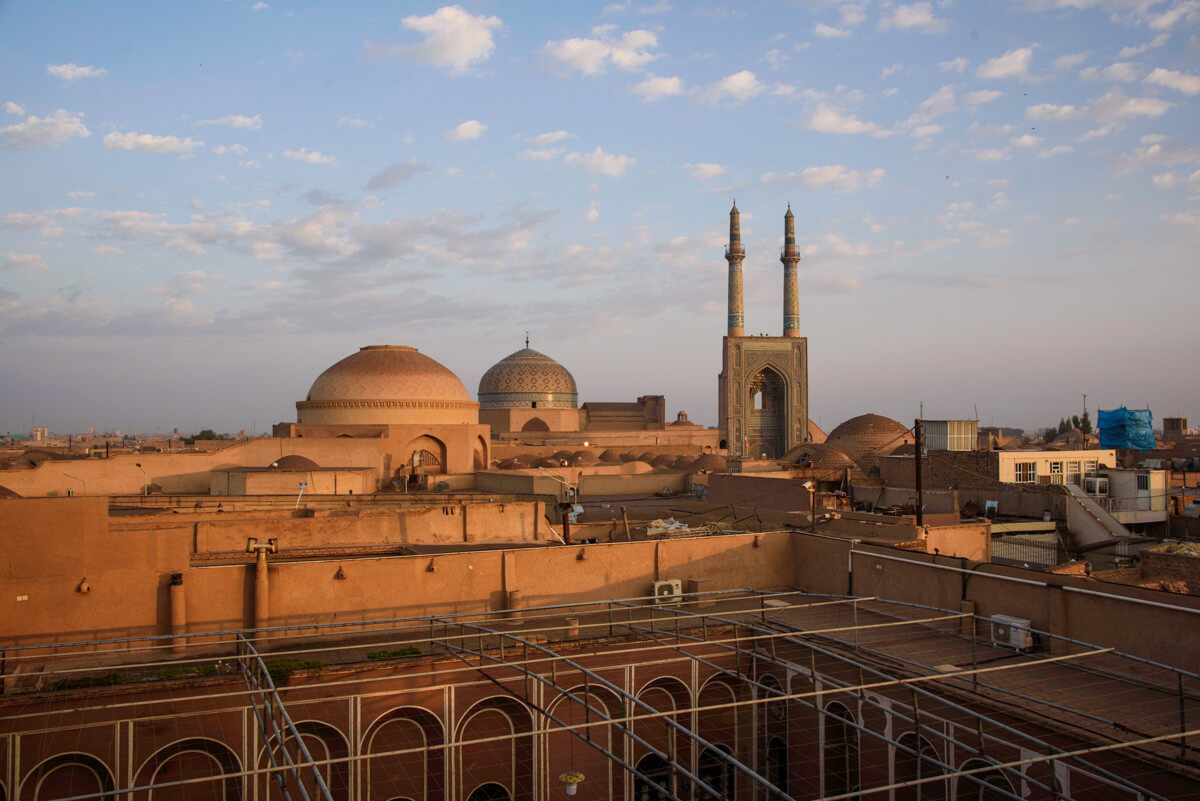
Skip all content and get ExpressVPN
Get unrestricted access with the fastest VPN for Iran country.
Iran, the hottest destination of the decade, is a country filled with a very old history, mind-blowing architecture and amazing people.
The country is, however, extremely big, has been inhabited for millennia and was ruled by one of the most powerful empires that ever existed in human history.
As a consequence, Iran is, today, an extremely complex society home to an infinite number of historical sites, many of which are not open to the public yet.
And there is even more.
With some striking mountain ranges, the Persian Gulf islands, unique deserts and countless towns and cities with different kinds of people and culture, Iran is a country which you can’t finish, not in a lifetime at least.
However, whether you come here for a week or a month, getting a glimpse of the great power of the Persian empire or getting to know some locals over a cup of local chai is totally possible.
After visiting the country twice for more than months, I have compiled this 1 to 4-week itinerary for independent travel to Iran that contains my favorite places in the country.
It took me almost two months to visit all the places I mention, spending 4 to 5 days on each one, which is a lot of days. However, if you plan well-ahead and stay 2 or 3 days in each one, you could perfectly squeeze my Iran itinerary in a month.

In this backpacking itinerary for Iran you will find:
Table of Contents
- Moving around
- Accommodation
- Day 1, 2 – Tehran
Day 3, 4 – Kashan
- Day 5, 6, 7 – Esfahan
Day 8, 9 – Yazd
- Day 10, 11, 12 – Kaluts
Day 13, 14 – Shiraz
- Day 15, 16, 17 – Mashhad
- Day 18, 19 – Gonvad e-Qavus
- Day 20, 21 – Khalid Nabi
- Qeshm Island – 3 days
- Masuleh – 3 days
- Tabriz – 3 days
- More resources
How to book hotels, flights and tours in Iran
Because of the sanctions, foreign cards or popular sites such as booking.com can’t be used in Iran, but now you can thanks to 1stQuest .
1stQuest is a local company that offers services such as visa LOI, hotel booking, tours, domestic flights, and travel insurance for Iran.
5% discount on ALL bookings with voucher code:
How to travel independently around Iran (Transportation)
Iran is an extremely easy country to move around, as it has a very well-connected bus network and plenty of domestic flights.
Domestic flights
Iran is a pretty big country, so for those short in time, taking a domestic flight would be wise, especially for going from Tehran to places like Qeshm Island, Mashhad or Shiraz.
You can check flight schedules and book your tickets through 1stQuest, and you can get a 5% discount on ALL flights:
With voucher code: ATC-QST
Bus – Buses are the way to go in Iran. There are endless connections and the VIP buses are particularly comfortable and not expensive at all.
Because of the sanctions, in Iran, most booking sites don’t accept international foreign cards. Before, you could book them via 1stQuest but they are not offering this particular service anymore. However, you may still use 1stQuest for visa services, hotels, flights, travel insurance and tours.
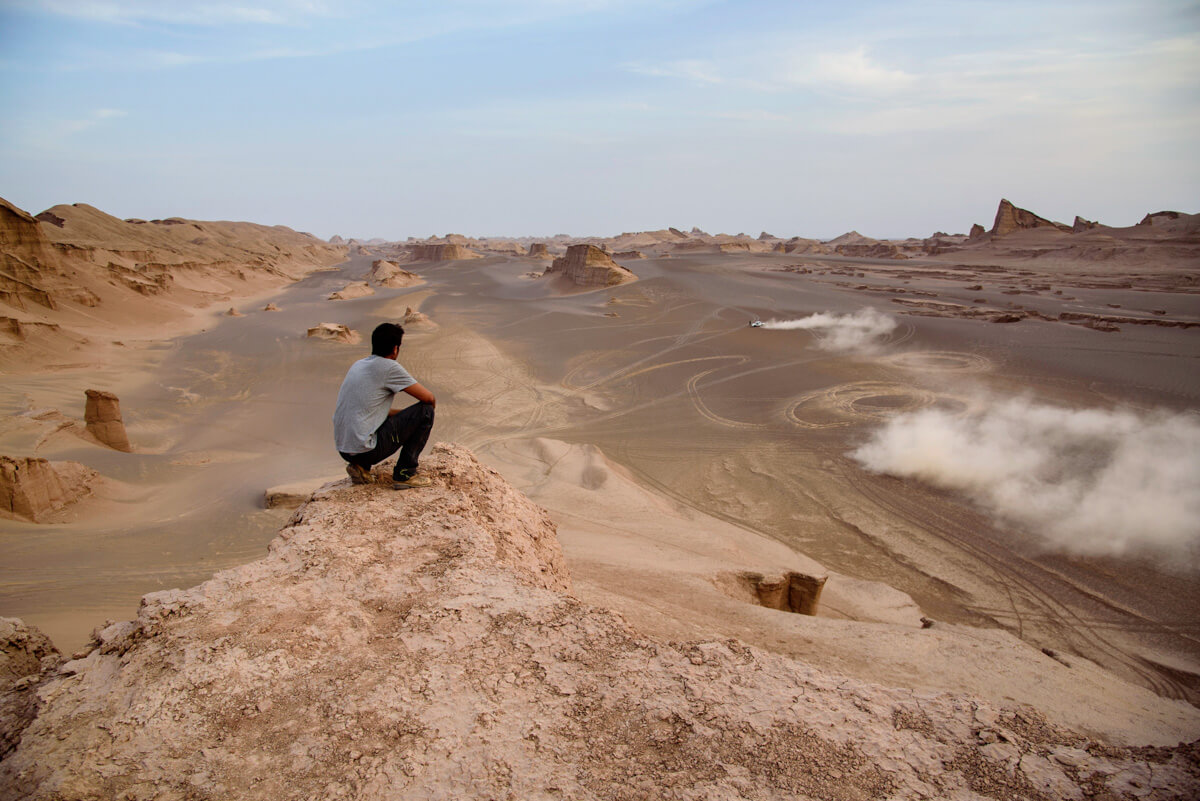
Accommodation in Iran
As you may know, popular websites such as Booking.com , don’t have hotels listed in Iran.
Therefore, how can you book a hotel in Iran? Well, you have a couple of options:
- Via your travel agency (if you go on a tour)
- Making a phone call
- Just showing up and trying your luck
- Via a local booking website like 1stQuest
From luxury hotels to backpacker hostels, 1stQuest has many listed hotels all over the country.
You can get a 5% discount in ALL your hotels bookings.
Use my promotional code: ATC-QST
Side note – Keep in mind that the Iranian Government sometimes blocks this sort of travel websites, so 1stQuest may not be accessible from an Iranian server. In this case, there are 2 things you can do: 1 – Book the different hotels in advance, before going to Iran 2 – Get a VPN for Iran like ExpressVPN to access censored sites. CLICK HERE TO LEARN MORE
Best books for backpacking in Iran
Here’s a selection of a few useful books but, for a complete list, check the best books about Iran , classified into politics, history and novels
Bradt guide – Bradt has always the most comprehensive guides to the most off-beat countries. I love Bradt because they give plenty of tips for the independent traveler, as well as loads of cultural insights.
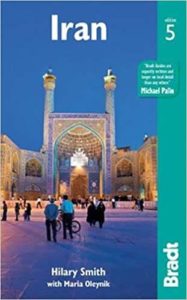
Lonely Planet guide – I personally prefer Bradt but, if you are a Lonely Planet fan, they have just released their latest edition for Iran.

Best graphic novel – Persepolis – This is, perhaps, the most famous story ever written about Iran. It is the story of a non-religious woman, before and after the 1979 revolution. An easy way to understand the complexity of Iranian society.
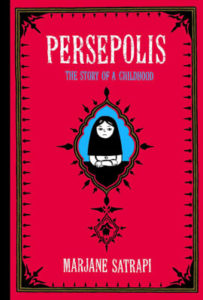
Independent travel in Iran – 1-week Iran itinerary
Iran is a massive piece of land so, if you only have one week, after Tehran, the closest cities are Kashan and Esfahan.
In Iran, you have to pay to enter most sites, including all the mosques, gardens and museums I am suggesting in this article. Usually, most sites charge between 150,000 and 200,000IR , which is 5 to 10 times more than what the locals have to pay
Map of the one-week Iran travel itinerary
Day 1 – Tehran
The capital of Iran is a real chaotic metropolis, where you can find an extremely mixed society, both the traditional, conservative Iran and the most hipster people in the country.
From ancient bazaars to 21st-century malls, Tehran is a very surprising city that could you keep busy for several weeks. This mixed society reminded me a lot to Beirut .
If you are lucky and the sky is clear, you must go to Tabi’at Bridge , the place from where you get the best views of the Tehran skyline.
Also don’t forget to check out the Grand Bazaar of Tehran , a real maze of bustling streets and carpet shops, and Golestan Palace , located in the middle of the city jungle but where you find beautiful gardens and the classic, colorful Persian tiles Iran is famous for.
A lot of people who visit Iran also go to Caucasian countries. Read my ultimate guide for traveling to Georgia
Moreover, if you are into politics, don’t forget to check out what used to be the actual USA Embassy before the 1979 revolution, as today it is a museum with plenty of anti-American propaganda.
Last, if you wanna take a break from all the chaos, go to Darband , located at the bottom of Mount Tochal and almost reachable by metro. With plenty of waterfalls and small day-treks, this was my favorite spot in the city.
For more information, read: Things to do in Tehran in 2 days
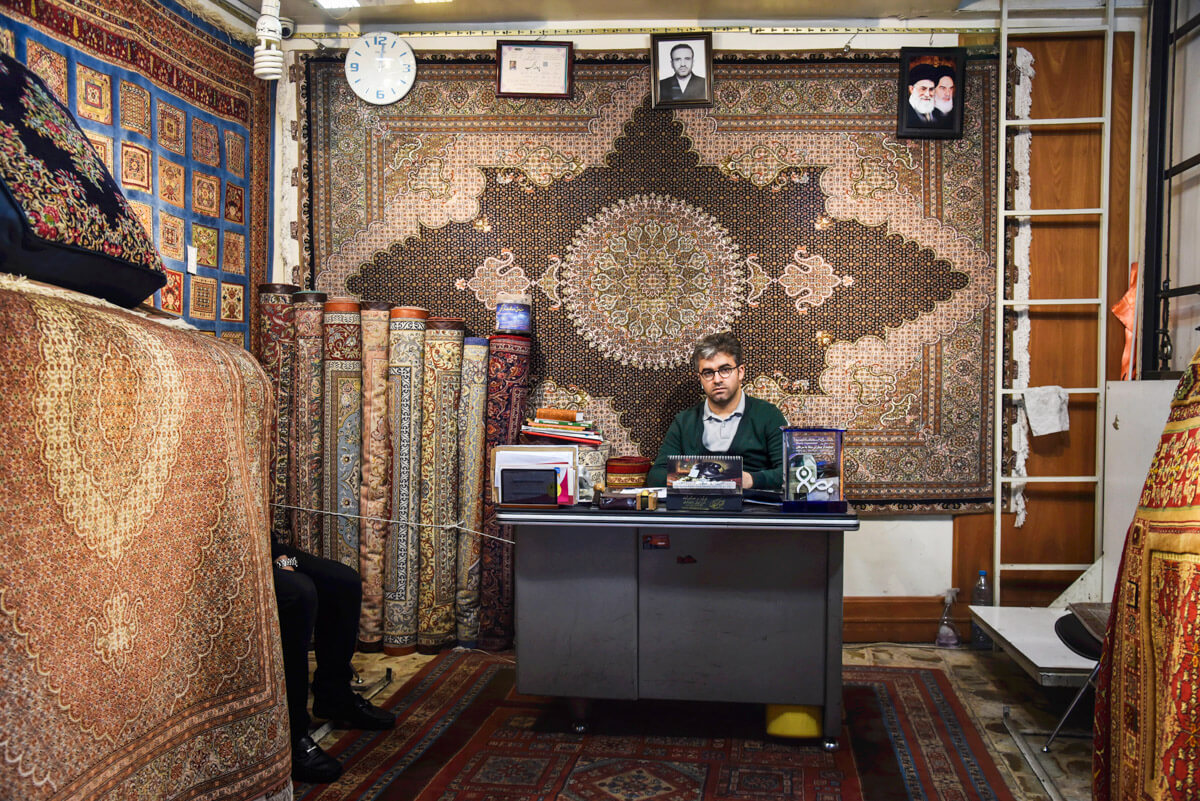
The best tours in Tehran
- Old Town Tehran – Oudlajan is the old quarter of Tehran and this walking tour will take visit all highlights.
- The Armenian Quarter – Tehran is home to a large Armenian Christian population and in this tour you will explore the area where they live.
- Golestan Palace – One of the top attractions in Tehran.
You can get a 5% discount on ALL your tours.
Where to stay in Tehran
You can get a 5% discount on ALL your hotel bookings.
Backpacker Hostel – Heritage Hostel – Plenty of common areas, a beautiful garden with a Persian pool, a barbecue place, and very modern facilities. I honestly think that this is the best hostel in the country and the best choice for independent travelers in Iran.
Budget Hotel – Khayyam Hotel – A cheap option, but very good, option near the Grand Bazaar of Tehran, so this is a great choice for budget travelers that don’t want to stay in a hostel.
A bit nicer – Hejab Hotel – A good option for mid-range travelers.
For more options, check Best areas to stay in Tehran .
Getting out of Tehran
Since this is the capital, you can come and go by public transportation from anywhere in the country.
Against the Compass tip – In order to save time, some independent travelers book a one-way ticket to either Shiraz, Yazd or Esfahan and visit all the cities on their way back.
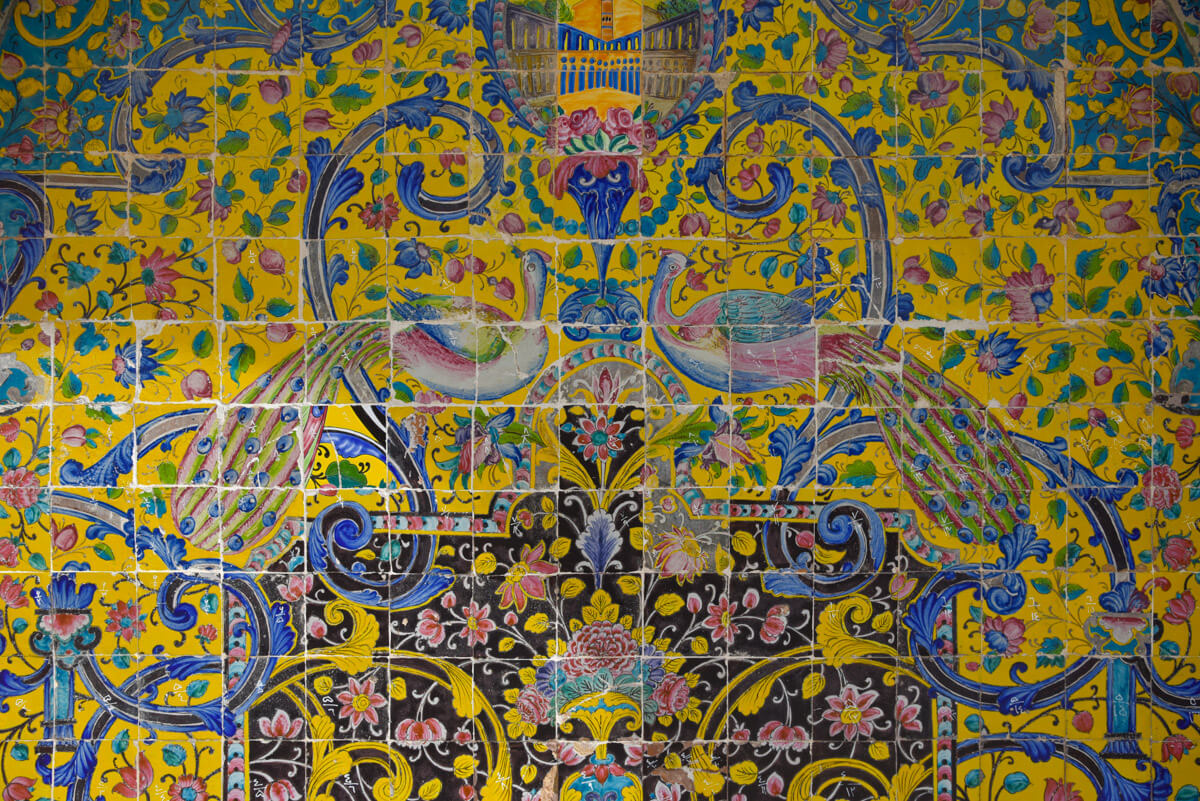
Kashan isn’t the greatest of all the Persian cities but its privileged location makes it very convenient for any Iran itinerary.
This also means that tour groups abound but this shouldn’t put you off because I can’t deny that it is actually pretty and, if you don’t have the time to visit Yazd, Kashan also has the famous wind towers and windy mud-brick alleys.
Besides the classic bazaar, where you can check out the textiles Kashan is popular for, don’t forget to visit Khan Amin al-Dowleh Timche , a mosque with one of the craziest dome ceilings; the traditional Persian Fin Gardens and the unique Agha Bozorg , a big mosque whose wall colors are confused with the houses from the old city.
For more information, read: Things to do in Kashan
Against the Compass tip – If you want a more off the beaten track option, Qom is a better alternative to Kashan. I personally didn’t go there but it is a very holy city with some amazing shrines and the location is also very convenient the 1-week Iran itinerary.

Best day trips from Kashan
To be very honest, Kashan isn’t my favorite place but I have to say that this is a good base for doing a few great day trips:
- Nushabad – 2,000-year old labyrinthic ruins.
- Maranjab desert – Sand dunes with epic sunsets.
You can visit both on a combined tour.
Where to stay in Kashan
Budget Hostel – Sana Historical Hostel – With both private rooms and dorms and located right in the old town, Sana is the most popular choice for independent travelers.
Budget Traditional House – Kamal-a Molk House – A beautiful, and very cheap, traditional guest house in the heart of Kashan.
Mid-range – Mahinestan Raheb – A few hundred-year-old house which has been beautifully restored into a beautiful hotel, very comfortable and lovely.
For more options, here you can see all the available hotels in Kashan
How to get to Kashan from Tehran
It’s very easy. Buses run regularly and it is only a 3-hour journey. You can also go by train but it takes 1 or 2 additional hours.
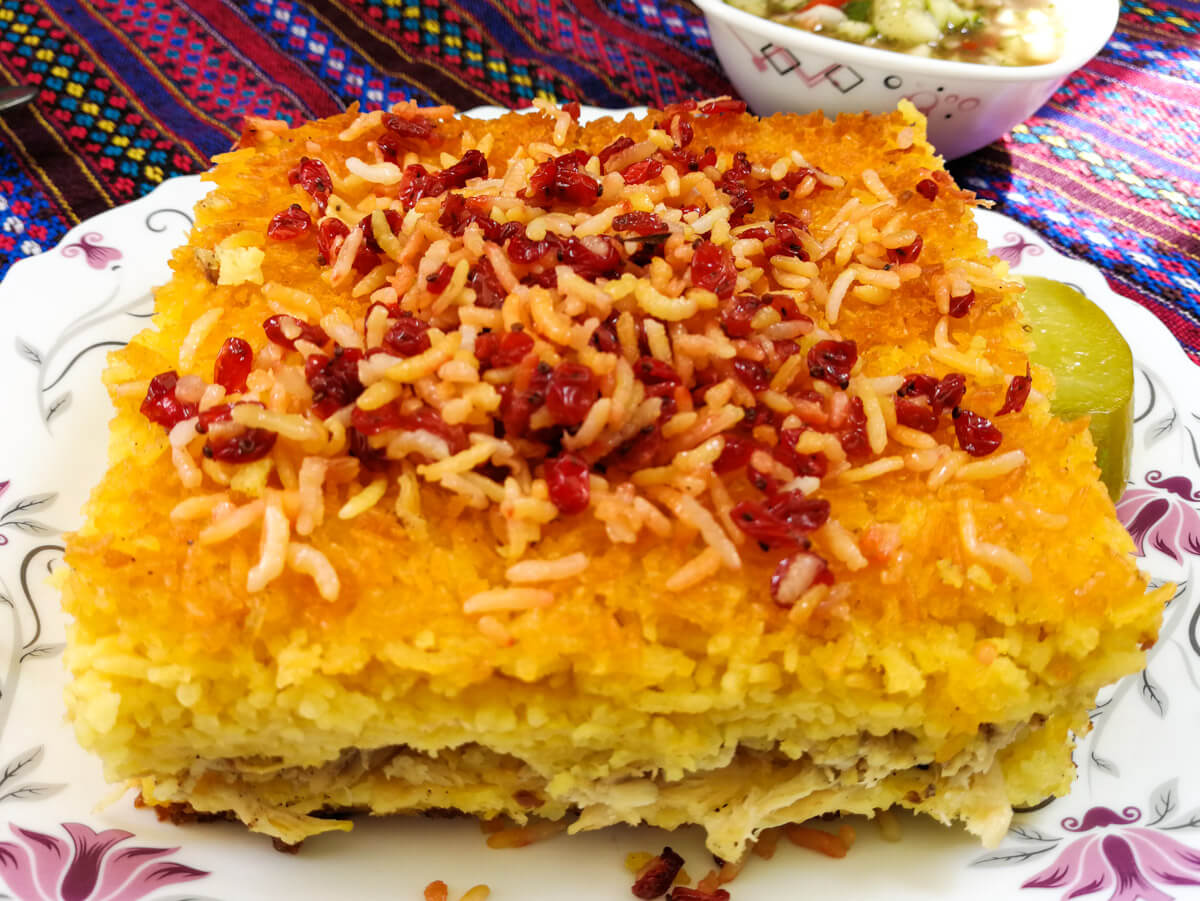
Day 5, 6 – Esfahan
Tip – If you have more than a week, consider staying in Esfahan for at least 3 or 4 days.
Esfahan is Iran’s most amazing city and its mosques are one of the main reasons independent travelers come to Iran.
With hundreds of years of history, Esfahan has always been home to a very important community of intellectuals and scholars and, historically, its importance was often compared to Athens or Rome.
Today, according to Iranian standards, this is a pretty modern city, very clean, composed of perfectly tree-lined streets, which makes it very pleasant to walk around.
The first place you need to go is Imam Square , where you find both the Shah Mosque and Sheikh Lotfallah Mosque , whose ceilings and domes will leave you breathless.
Imam Square is also a place where locals hang out, especially during late afternoon and evening, so I recommend you not to rush and stay there for a while.
During the day, I suggest you stroll down the old bazaar , one of the nicest in the country, with plenty of spices and the worldwide famous creepy mannequins.
In the evening, a good idea is to head to the river to see the different historical bridges, the most famous being Si-o-seh Pol . However, the last time I was there in April 2018, the river was completely dry, which made me very sad.
Oh! By the way, Esfahan is also famous for some sweets called gaz , which are filled with walnuts and have a gummy texture. Also, don’t forget to look for the local biryani (which is quite different from Indian and Pakistani) and saffron ice-cream .
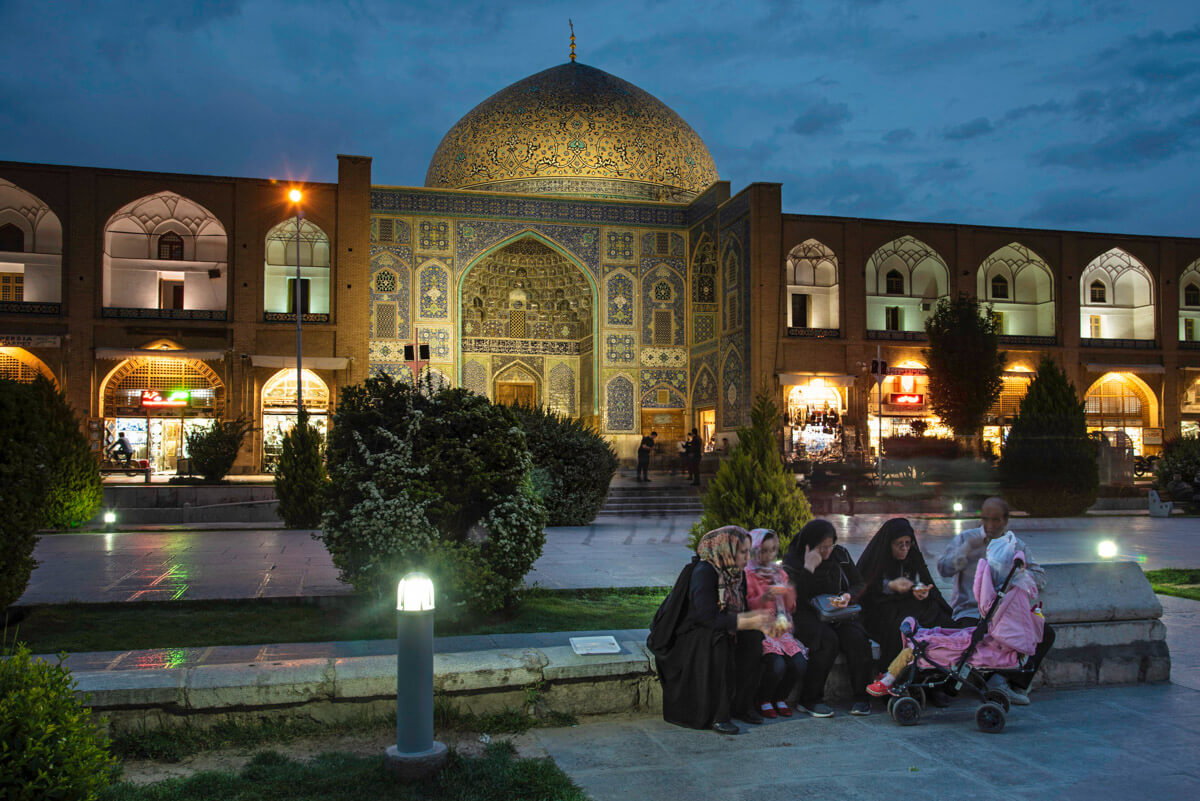
Where to stay in Esfahan
Budget Hostel – Ragrud Hostel – A brand-new hostel with very modern facilities, awesome staff and the best reviews ever. I am sure this place will, very soon, become very popular in Esfahan.
Budget traditional house – Sarayeh Orbidehesht – If you prefer a traditional guest house, this one is really great.
Mid-Range Hotel – Setareh – Traditional breakfast, super friendly and English-speaking staff and very close to the main attractions.
For more options: Click here to see all the available hotels in Esfahan
How to get to Esfahan from Kashan
There are several buses all day long and it is just a 3-hour trip.
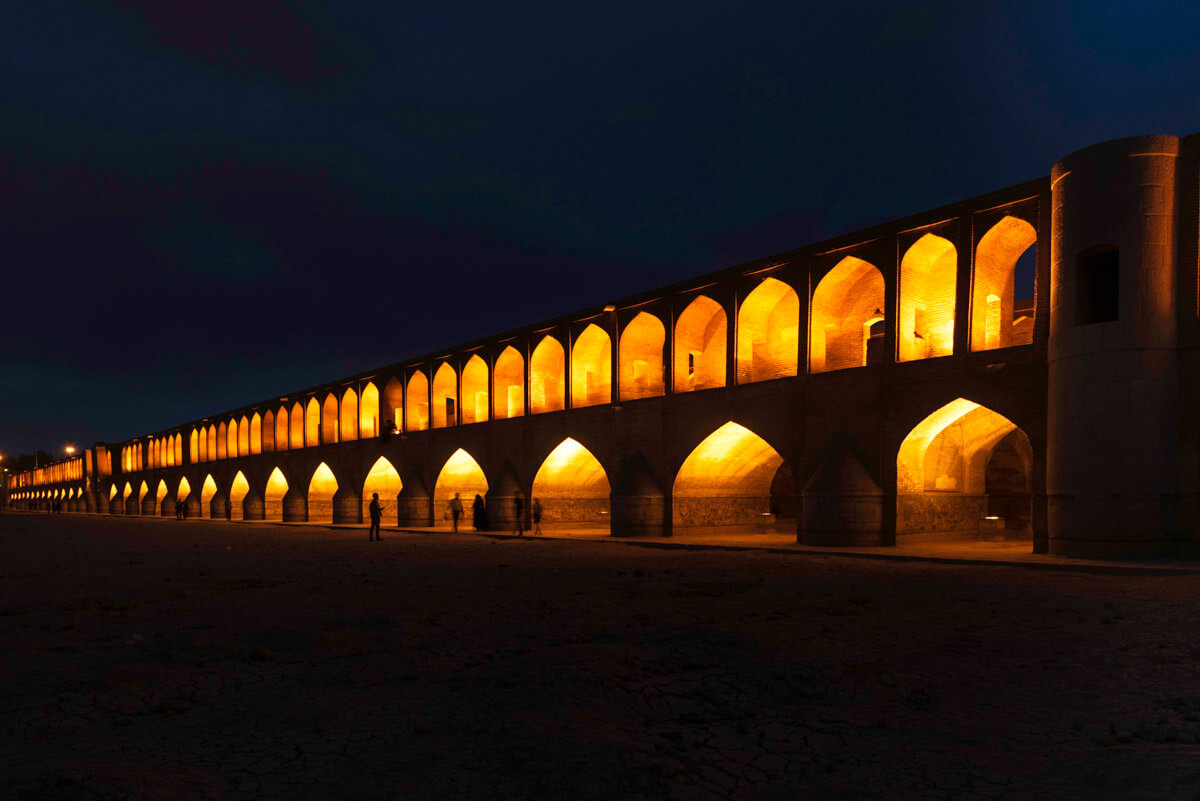
Independent travel to Iran – 2-week Iran itinerary
Most people would have two weeks for traveling independently in Iran.
If you want to save time, consider flying from Tehran to Shiraz, as you will save a 1,000-kilometer journey.
Map of the two-week Iran backpacking itinerary
With its perfectly-shaped old city, cute mosques, souvenir shops and plenty of decent coffee places, Yazd is, by far, the most touristic city in Iran. It reminded me a lot of Khiva in Uzbekistan .
With tens of tour groups overrunning the magnificent narrow alleys of the old town, to be very honest, I am not the biggest fan of Yazd but, truth be said, it is a very beautiful city and, perhaps, the most photogenic in the country.
Moreover, I also liked Yazd because it is a nice place to chill out. After hectic travels and hard-backpacking, it is always nice to finally be in a place where you are just one more tourist, find good accommodation, coffee and loads of food choices.
So yeah, I actually enjoyed Yazd and it should be a must on any Iran itinerary.
This used to be a Silk Road trading town, so there is a lot of heritage dating from that period. The coolest thing to do in Yazd is get lost in the old city, while you check the wind-towers and stumble across the different sites and mosques, the most remarkable being Masjed e-Jameh , a mosque from the 15th century and one of the tallest in Iran, with 48-meter minarets.
At sunset, you must go to a rooftop to enjoy the views . There are many hotels and cafés that allow you to do that.
Some places will charge you 1€, while in others you just need to order something. I can’t recommend anyone in particular because all of them have different views and perspectives but Orient Hotel is a popular spot.
Moreover, just outside of the old city, you find the Amir Chakhmaq complex , the famous three-storey facade building and the main landmark in the city.
Also, you should know that Yazd has the second largest population of Zoroastrians, a religion that dates back at least 4,000 years and was the official religion in the pre-Islamic Persian Empire.
Here, they have one of their holiest sites, the Fire Temple , which has a flame which they claim hasn’t stopped burning since the 5th century .

Where to stay in Yazd
Budget Hostel – Shahdad – The only real backpacker hostel in town, this traditionally decorated hostel is the best option for budget travelers.
Mid-range Hotel – Moshir al Mamalek Garden Hotel – You will love this place. A building with real wind towers, many travelers claim that this the best hotel they ever stayed in Iran.
For more options: Click here to check all the available hotels in Yazd
How to get to Yazd from Esfahan
Esfahan to Yazd is a good 4 to 5-hour ride and buses run frequently.

Day 10, 11, 12 – The desert of the Kaluts
In Kerman province, quite far away from everything, you find the Kaluts, the most silent and remote desert I have ever been to.
Here, NASA registered the highest temperature ever found on the Earth’s surface (71ºC) so, if possible, try not to come in summer. Nevertheless, the temperature cools down exponentially in the evening, so you should be fine for the sunset.
Life is not possible in the Kaluts, not even microorganisms, but its beauty and sunsets are out of this world, similar to the Mars landscape so, if you are fancying some desert adventure, this is the place to go.
If you have time, you can also visit Kerman city, as well as Shazdeh Garden and Shah Nematollah Vali Shrine. These sites are quite off the beaten track and the people in Kerman are always happy to meet foreigners.
The closest settlement to the Kaluts is an oasis town named Shahdad , famous for its date plantations, handicrafts made of palm trees, lovely traditional guesthouses and desert fortresses.
For more information, read my guide: A trip to the desert of the Kaluts

Where to stay in the Kaluts
You can camp if you go on a pre-arranged tour but, if not, you can stay at the nearest village called Shahdad. There is a very budget guest house called Ab Anbar and a fancier one named Nebka . Both are nice.
How to get to the Kaluts from Yazd
If you are traveling independently in Iran, first, you need to go to Kerman city, which is around 400km from Yazd. It is quite a journey, so I recommend you take an overnight bus (or train).
Shahdad is 100km from Kerman and a taxi would roughly cost 850,000IR.
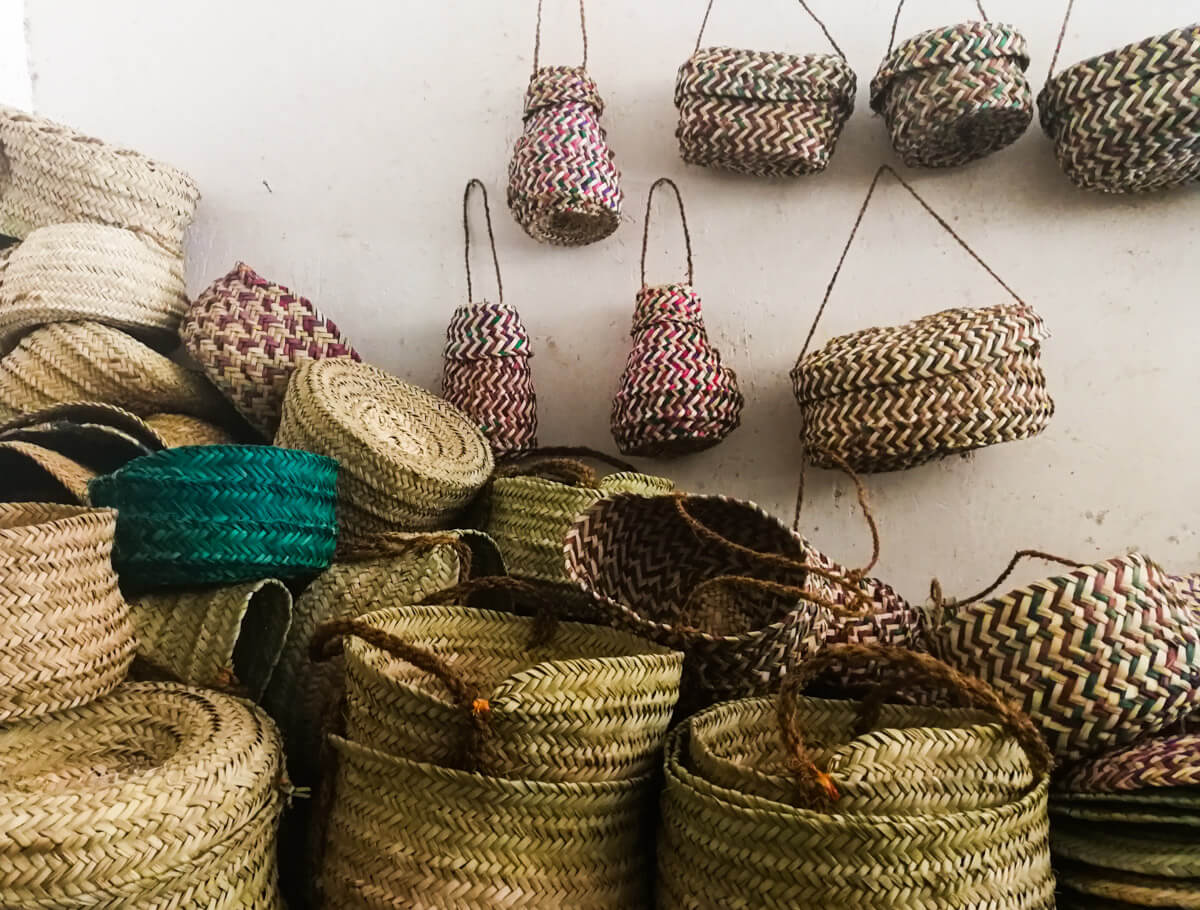
I love Shiraz.
Actually, I stayed here for 10 days, mainly because I was doing a project for a company but I enjoyed my time very much.
For some reason which I don’t know, the people from Shiraz are very open-minded, more than other cities in Iran. Actually, I drank more alcohol here than anywhere else in the country.
One day, one guy invited me to his house at 9:30am in the morning and gave me some shots of arak . It was a nice feeling to wander around Shiraz a bit tipsy after that.
There are also a lot of things to do in Shiraz, like visiting Vakil mosque , Nasir al-Molk , the famous mosque with the famous color effect from the sun rays; the ancient Vakil Bazaar , the less-visited, but outstanding, Shrine of Shah-e Cheragh and Hazfez Tomb and, of course, the ancient Persepolis , the ruins of what used to be the center of one of the greatest empires that ever existed.
For more information, read my guide: Things to do in Shiraz
Day trips from Shiraz
To visit these places, you will have to add 1 or 2 additional days for each one to your original Iran itinerary.
- Visiting the Qashqai Nomads – Read my report here
- Exploring the ruins of the Sassanid Empire – Read my report here
- Trekking in the Zagros Mountains – Read my report here
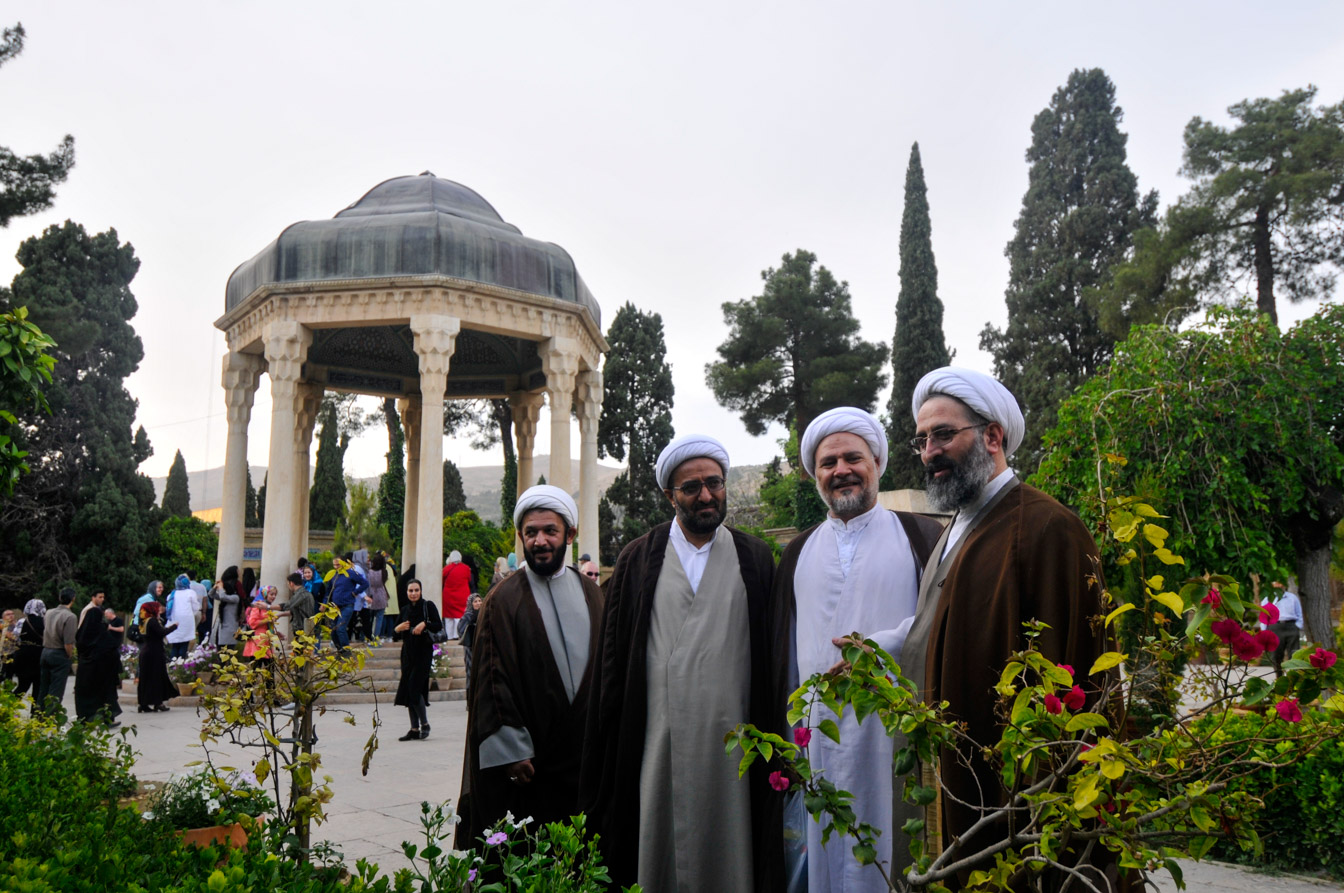
Where to stay in Shiraz
Backpacker Hostel – Taha Traditional Hostel – A real backpacker hostel, very well-located and great traveling atmosphere. Highly recommended!
Boutique Hotel – Niayesh – The busiest hotel in town, where everybody stays, from backpackers to wealthy couples and tour groups. Breakfast is included and it has several outdoor areas where you can rest and get some food.
For more options: Click here to see all the available hotels in Shiraz
How to get to Shiraz from Kerman
It’s a 7 or 8-hour trip, so I strongly recommend taking a night bus.
Getting out of Shiraz
You can take a direct bus to Tehran, no problem, but if you want to save time, consider flying.
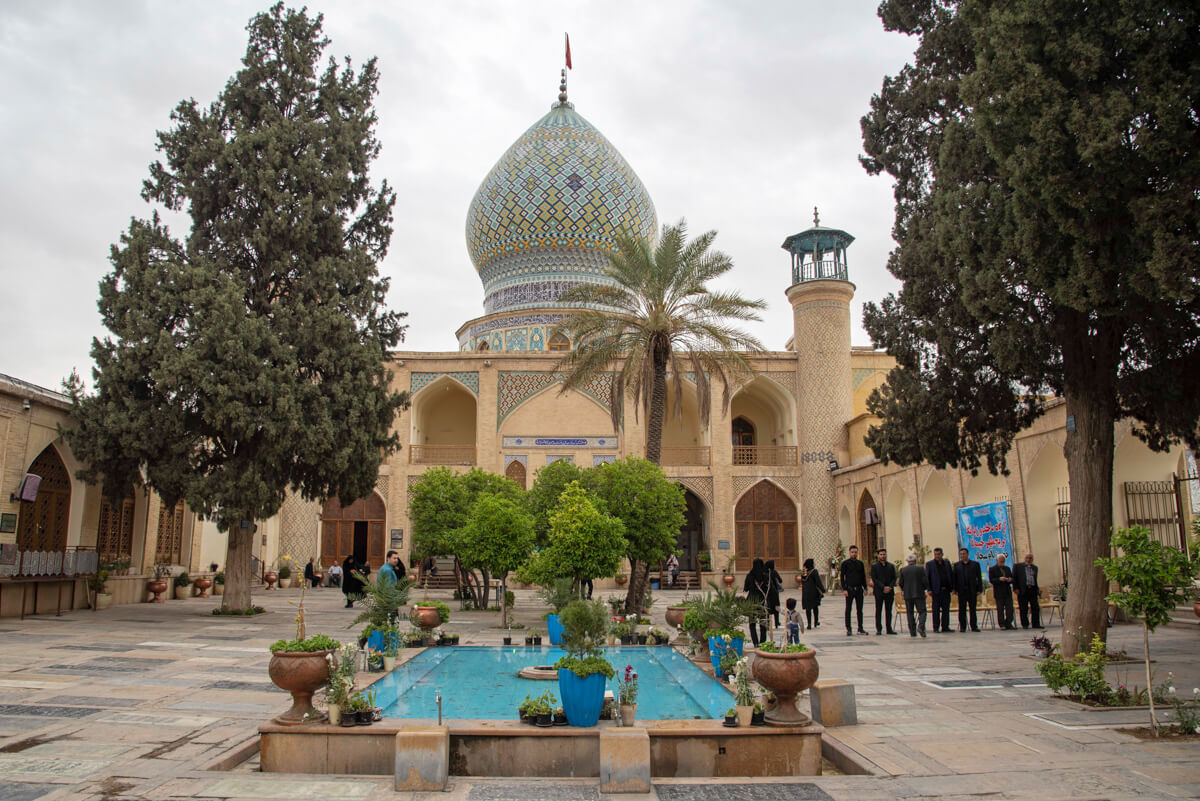
Independent travel to Iran – 3-week Iran itinerary
It’s mandatory to have a travel insurance to get your visa on arrival in Iran. Because of the sanctions, most insurance companies don’t provide coverage for Iran, but IATI Insurance does. Get your exclusive 5% discount if purchasing via this link
If you have an extra week for independent travel in, consider getting off the beaten track, so I suggest you visit Golestan province and Mashhad.
This is just my personal opinion but the truth is that I really loved these places. Let me tell you why.
Map of the 3-week travel itinerary to Iran
Day 15, 16 – Mashhad
There are two reasons to visit Mashhad:
One is to visit the Imam Reza Shrine and the other is to stay at Vali’s .
As you may know, Mashhad is the holiest place in Iran and one of the most important cities for Shia Muslims in the world. The reason is that the shrine is where Imam Reza rests, the 8th Imam of Twelver Shiïtes.
The shrine is the largest religious complex in the world and, when you step in, it is easy to understand why. It is f*** huge and you will lose count of all the courtyards and different mosques.
Cameras in Mashhad The only downside is that you can’t take in a professional camera but only your phone. I didn’t know that and had to leave my camera and tripod at the entrance and didn’t have battery on my phone, so no pictures for me. Moreover, if they see you are a foreigner, they will assign you a guide, which kind of sucked as well, because mine didn’t explain anything to me but just made me follow him. You can, however, sneak in easily.
As the top pilgrimage site in the country, Mashhad is a wealthy city with great tourism infrastructure, as it receives loads of pilgrims from Lebanon and Iraq , two countries with large Shia populations.
There is a modern metro line and plenty of different food options, including Lebanese restaurants.
The second reason to come is to stay at Vali’s. Vali has a family homestay that, for years, has hosted plenty of international travelers, especially overlanders going (or coming) from Afghanistan and Turkmenistan.
I stayed 4 days at his house as the only guest and we celebrated the Iranian New Year, ate great homemade food and they just took very good care of me.
Besides, he has plenty of stories to tell, is very talkative and can you take outside of the city for day trips.
Visit Vali’s website for more details.
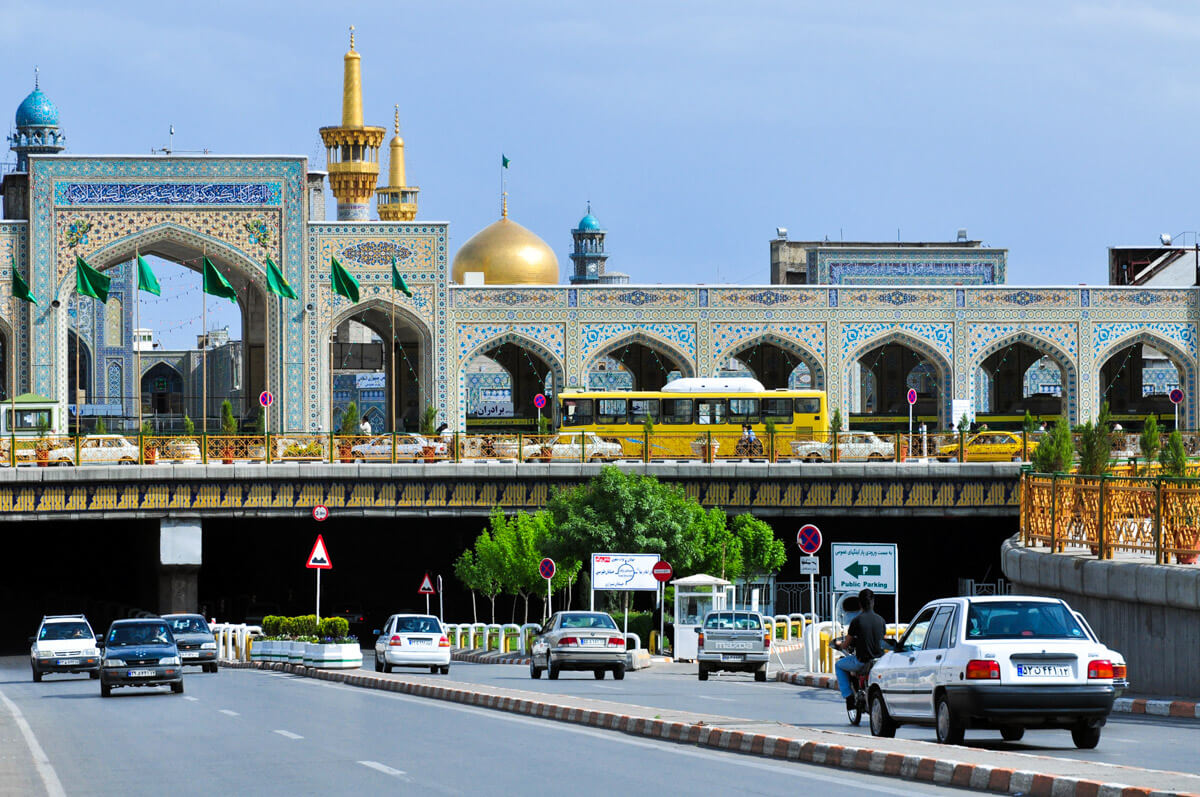
Best day trips from Mashaad
I recommend you go to Kang, a traditional stepped village 50km from Mashhad. It’s very beautiful to see and there are some small trekking opportunities around the area.
To go there, take the Metro Line 1 to Vakilabad and then a bus or shared taxi. Additionally, a trip by taxi from the city center with 1-hour visit costs 600,000IR.
Where to stay in Mashhad
Budget Homestay – Vali’s – Like I said, staying at Vali’s is one of the best things to do in Iran. Visit his website for more information .
Mid-range – Darvishi Royal Hotel – Vali’s is great but it’s a place for budget backpackers. If you wanna stay in a good hotel, this is one of the best options in town.
How to get to Mashhad
Being the most visited city in the country, you can get here on a direct bus or train from anywhere in Iran, including Shiraz, if you are following the suggested itinerary.
The only downside is that Mashhad is really far away, no matter where you are, so if don’t have much time, consider flying in. I personally went by train from Bandar Abbas and it was a 23-hour journey.

Day 17, 18 – Gonvad e-Kavus
Gonvad e-Kavus is the main city in Golestan province, one of the least visited provinces in Iran but, controversially, the most beautiful.
I bet that you didn’t know that this province is home to the largest population of Turkmens, the actual people from Turkmenistan. This means that, in Golestan, there is a clear Central Asian culture, visible in their food, nomadic life and Mongolian features.
In Gonvad-e Kavus you find a UNESCO World Heritage site (a 72-meter tower), handicraft shops selling traditional Turkmen products and is the gateway to some of the most striking scenery in the whole country.
Golestan is the ultimate destination for independent travel to Iran.
For more information, read my travel guide to Golestan
Where to stay in Gonvad e-Kavus
There are very few options and your best bet will be staying in Hotel Ajam or Couchsurfing.
How to get to Gonvad e-Kavus from Mashhad
You should take a night bus. It’s an 8-hour journey.

Day 19, 20 – Khalid Nabi
Also located in Golestan, Khalid Nabi is the most stunning site I visited in my Iran itinerary, and not for the site itself but because it is located in the most epic spot ever.
Basically, Khalid Nabi is a cemetery where a pre-Islamic prophet and his followers are buried. The prophet is buried inside a cute building, whereas all his followers are found under some penis-shaped rocks.
The bigger the penis is, the older the man when he died. If you see a cross-shaped rock, it means that the person buried is a woman.
The archaeological is not the only reason to come but the landscape is absolutely gorgeous and the area is filled with small Turkmen villages and nomadic yurt camps.
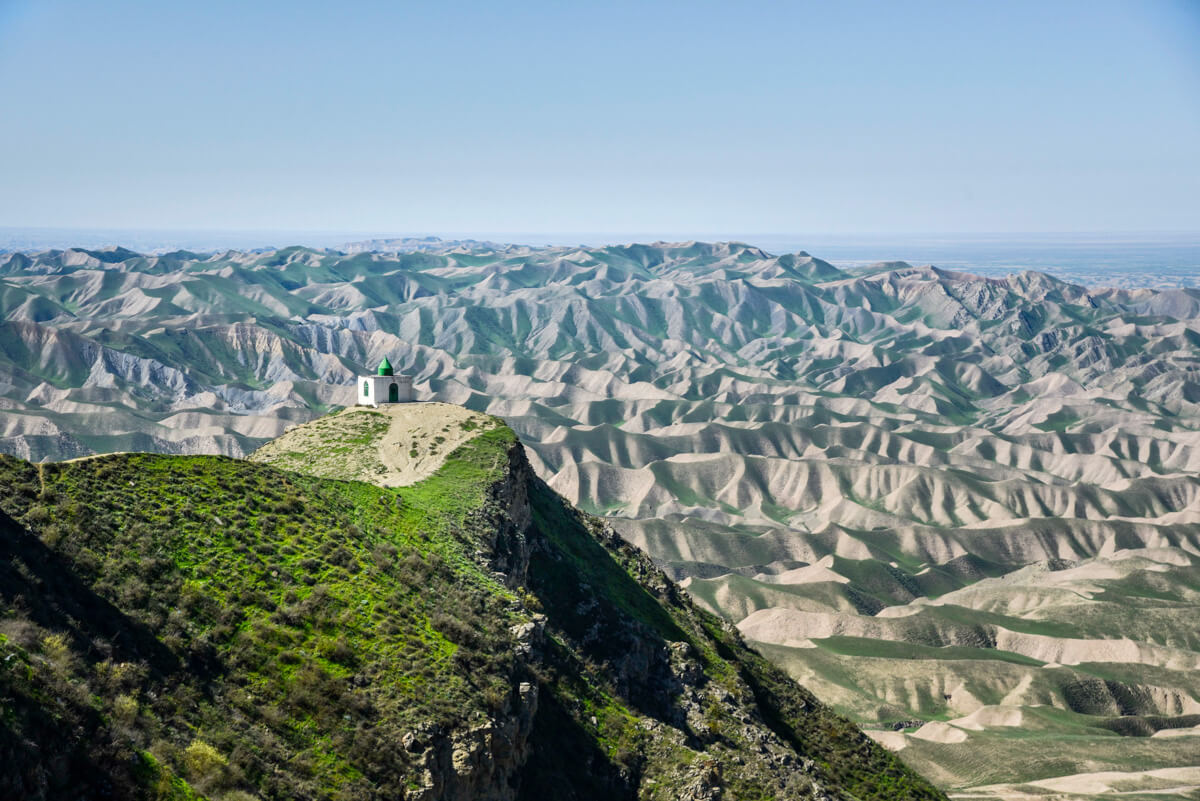
Where to stay in Khalid Nabi
If you want to experience the real Turkmen and Central Asian culture, I recommend you stay in Tamer-e Qarah Quzi , a village 35km before from Khalid Nabi. Here, there is a homestay run by Naim and his family, a Turkmen family that will bless you with their hospitality.
Besides, Naim can also take you for some trekking and visit nomadic camps.
Highly recommended!
How to get to Khalid Nabi and Tamer-e Qarah Quzi
To go to Tamer, you have to get a local shared taxi to Kalaleh (40,000IR) and, from there, a second one to Tamer (40,000IR). Khalid Nabi is just 35km away from Tamer but the road is really bumpy so it takes around 1.5h.
A round-trip by taxi costs 400,000IR. I hitchhiked and was picked up by some Iranians from Tehran who were drinking vodka in the car. It was pretty cool.
Remember that, for more information, read my guide to Golestan province
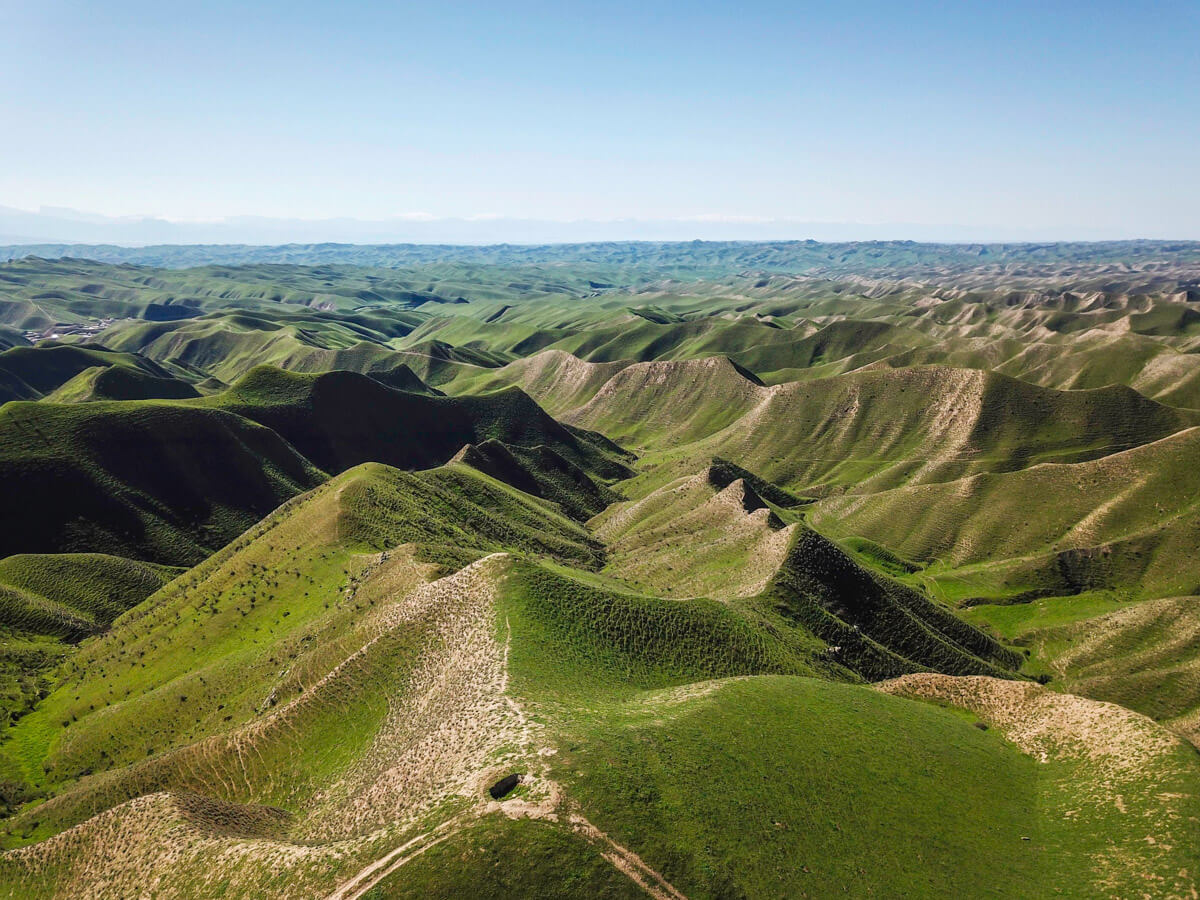
Iran independent travel – 1-month Iran itinerary
If you have a full month, consider adding the Persian Gulf Island and the north-west to your Iran itinerary.
Map of the 30-day travel itinerary to Iran
Qeshm Island – 3 extra days from Shiraz
Note – You should come here after Shiraz.
If you wanna taste the Persian Gulf culture, I suggest you add Qeshm Island to your Iran itinerary.
The Persian Gulf culture is the traditional culture from Oman , Saudi Arabia , the United Arab Emirates and, of course, south Iran. This culture, however, is fasting disappearing in the Arab countries but, fortunately, not in Qeshm.
The inhabitants of Qeshm are Sunni Wahabis, the most conservative branch of Islam. The most surprising thing is the way local women dress, in such colorful abayas and wearing some strange masks. It may seem a bit intimidating but they are actually quite laid-back and you can take photos of them, no problem.
Qeshm is also famous for its geology, consisting of strange rock formations. To see this, go at sunset to Star Valley .
I also suggest you visit the Shib Deraz and the Sea Turtle Breeding Area , Hengam Island , Laft and, of course, try the local food, which consists of spiced seafood.
You can also take a ferry to Hormuz Island , which leaves every day at 9am and 2pm. I personally didn’t go but I have been told that it is a beautiful island.
The only downside of Qeshm Island is that, for people who travel independently in Iran, the public transportation options are scarce.
For more information, read my travel guide to Qeshm Island
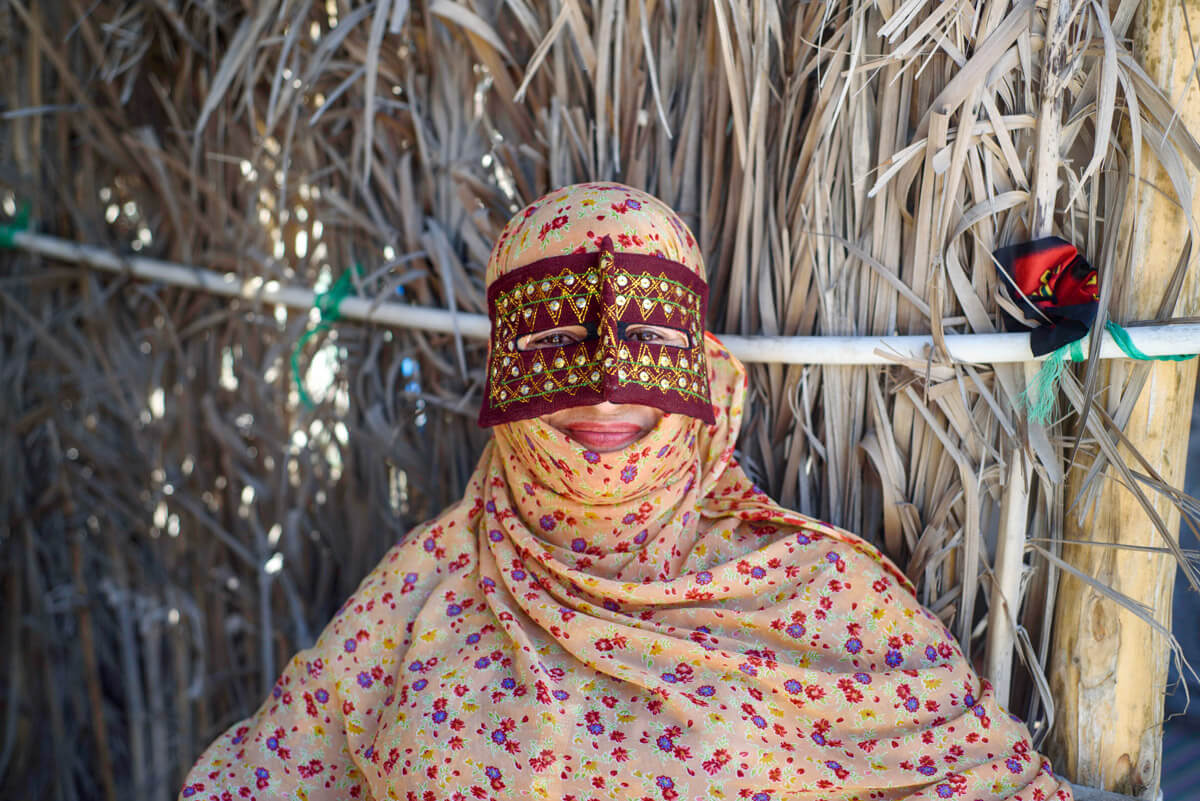
Where to stay in Qeshm Island
I recommend you pick one place and do day trips from there.
I personally pitched my tent in Shib Deraz beach but there are a few good options to stay around the island.
In Qeshm, there are some nice hotels and, if you want to stay somewhere remote, stay in Sar Rig Village, at Asad’s Homestay.
How to get to Qeshm Island from Shiraz
From Shiraz, you need to take a bus to Bandar Abbas (8 hours, 500km).
Once in Bandar Abbas, go to the ferry terminal. Boats leave every half an hour (150,000IR).
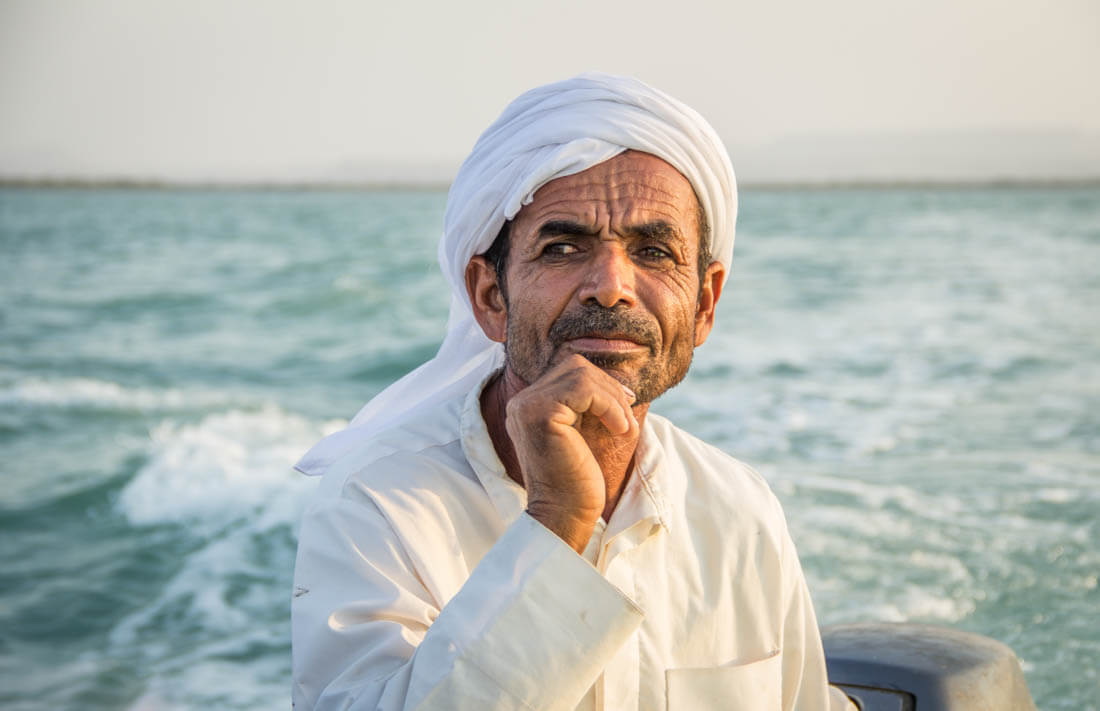
Masuleh – 3 extra days from Tehran
Masuleh is the most famous stepped mountain village in Iran.
However, being the most famous means that it gets a mix of different opinions and feelings.
The most voracious travelers will tell you not to go because it gets swamped with local tourists, souvenir shops, and pricey restaurants, whereas the rest will tell you that it is a lovely village and you must go.
In my opinion, both are kind of wrong. On the one hand, it is true that Masuleh gets all the attention from all the travel guides and this is because it is actually very cute and has a developed tourist infrastructure.
On the other hand, despite being very touristic, most tourists just remain in the village, without knowing that Masuleh is surrounded by some of the most awesome mountains in the country, composed of lush, green plains and remote shepherd huts, which offer amazing trekking opportunities.
I went trekking myself and didn’t bump into absolutely anyone. So yeah, I think that you should definitely come.
For more information, read my travel guide to Masuleh
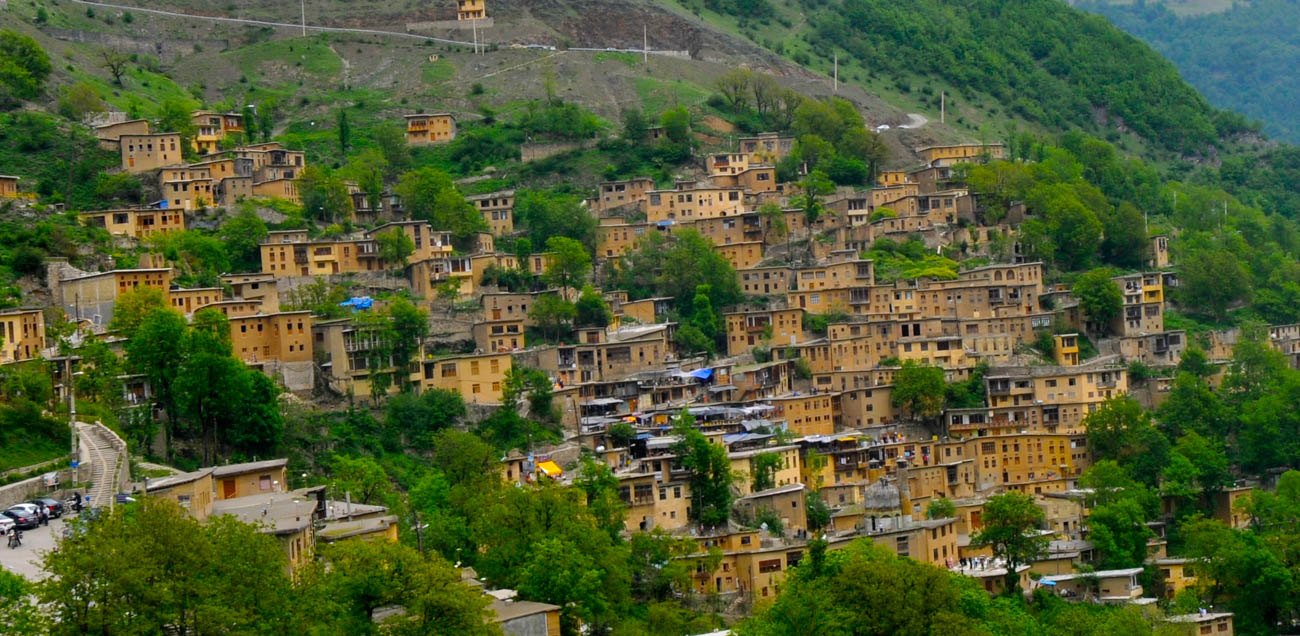
Where to stay in Masuleh
I stayed in a random homestay and you can do the same because there are many but they can’t be booked online.
If you are looking for comfort, Aram Hotel seems like a popular mid-range option.
How to get to Masuleh from Tehran
You need to first go to Fuman, which takes 4 hours from Tehran. Masuleh is 34km from Fuman and private taxis cost 300,000-400,000IR. Local shared taxis leave from a station 3km from the main bus station and they cost 100,000-150,000IR.
Additionally, if you don’t find buses to Fuman, you can also go to Rasht, which is a bigger city very close to Fuman.

Tabriz – 3 extra days from Masuleh
The city where the famous Persian carpets come from and where you find the largest covered bazaar in the world, Tabriz is a real off the beaten track city and, practically, the only visitors are overlanders coming from the Caucasus countries.
The bazaar has been listed as a UNESCO Heritage site so, if you are into bazaars, it doesn’t get much better than this.
Tabriz also has some very friendly people who haven’t been spoiled by mass tourism yet, so people are quite a highlight, as well. Don’t forget to visit the Blue Mosque , even though due to an earthquake, it still undergoing a long restoration process.
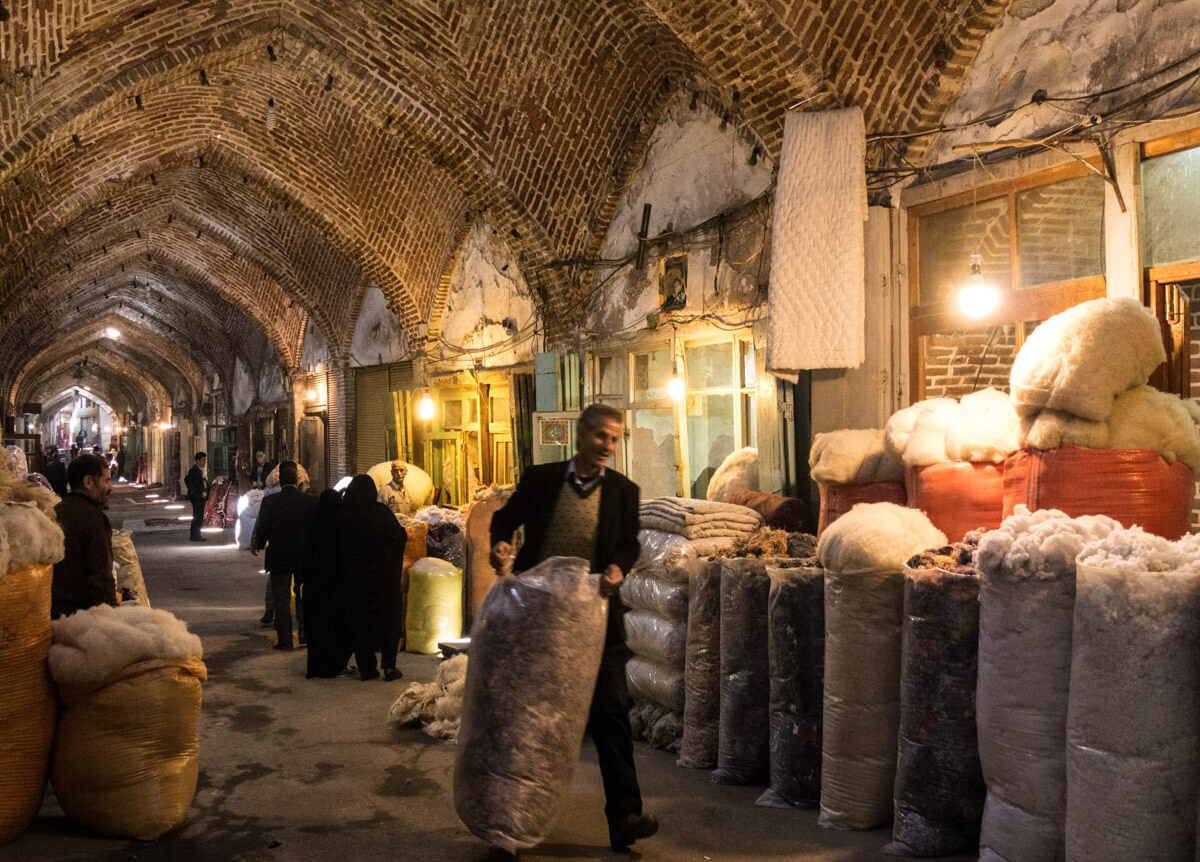
Best day trip from Tabriz: Kandovan
I also suggest you go to Kandovan , often called the little Cappadoccia, a very peculiar cave city easily reachable from Tabriz. You can book you
For this, you should first take a bus to Osku, which shouldn’t cost more than 40,000IR. Then, a taxi to Kandovan would cost 200,000IR roughly.
Where to stay in Tabriz
Budget Hotel – Ramsar Guest House – Cheap accommodation for backpackers. (online booking not available)
Mid-range Hotel – Tabriz el Goli Pars – Nothing fancy but good quality service according to its price range.
For more options: CLICK HERE TO SEE ALL THE HOTELS AVAILABLE IN TABRIZ
How to get to Tabriz from Masuleh or Tehran
If you are in Masuleh, you should go to the city of Rasht, where you may find direct buses.
If you are in Tehran, take an overnight bus because it is a very long way. They leave daily.
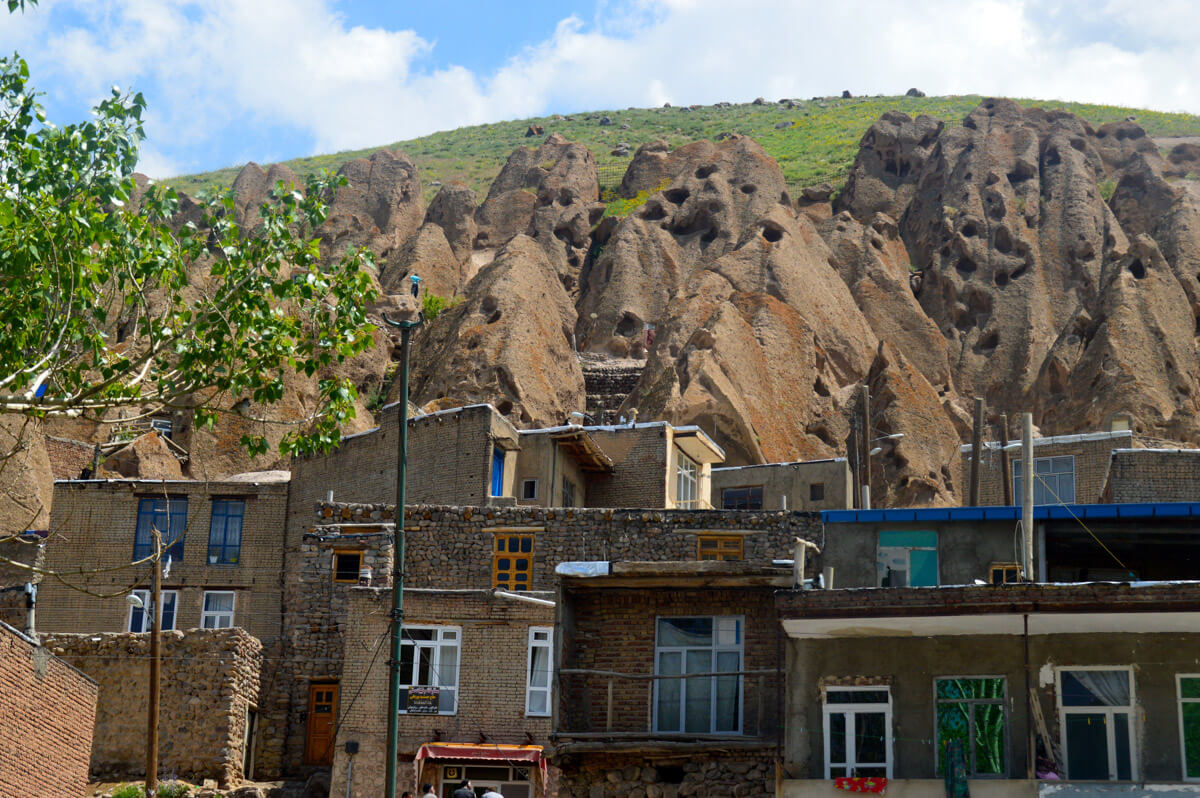
More resources for independent travel in Iran
📢 In my Travel Resources Page you can find the list of all the sites and services I use to book hotels, tours, travel insurance and more.
Remember to always use my code – From booking a hotel to visa services, travel insurance and tours, if it is via 1stQuest , remember that you can use my 5% discount code, as many as you want, whenever you want: ATC-QST
All guides and articles for traveling in Iran destination
- Iran Travel Guide
- Best Books about Iran
- Travel insurance for Iran
- VPN for Iran
- Solo Female Travel Guide to Iran
- Tehran Travel Guide
- Qeshm Island Travel Guide
- Travel Guide to Shiraz
- A trip to the desert of the Kaluts
- Trekking Guide to Zagros Mountains
- Meeting the Qashqai People
- Fars Province Travel Guide
- Visa Guide for Iran
- Masouleh Travel Guide
- Travel Guide to Golestan Province
- Iran-Iraq border crossing
- Is Iran Safe?
- Darband Travel Guide
- Best Hotels in Tehran
Travel Itineraries to other countries in the Middle East
- Syria Itinerary
- Saudi Arabia Itinerary
- Travel Guide to Oman
- Travel Guide to Lebanon
- Iraq Itinerary
You might also like our Pakistan Travel Guide or Azerbaijan Travel Guide .
You will also be interested in: Where in the Middle East is safe? and The most beautiful places in the Middle East .
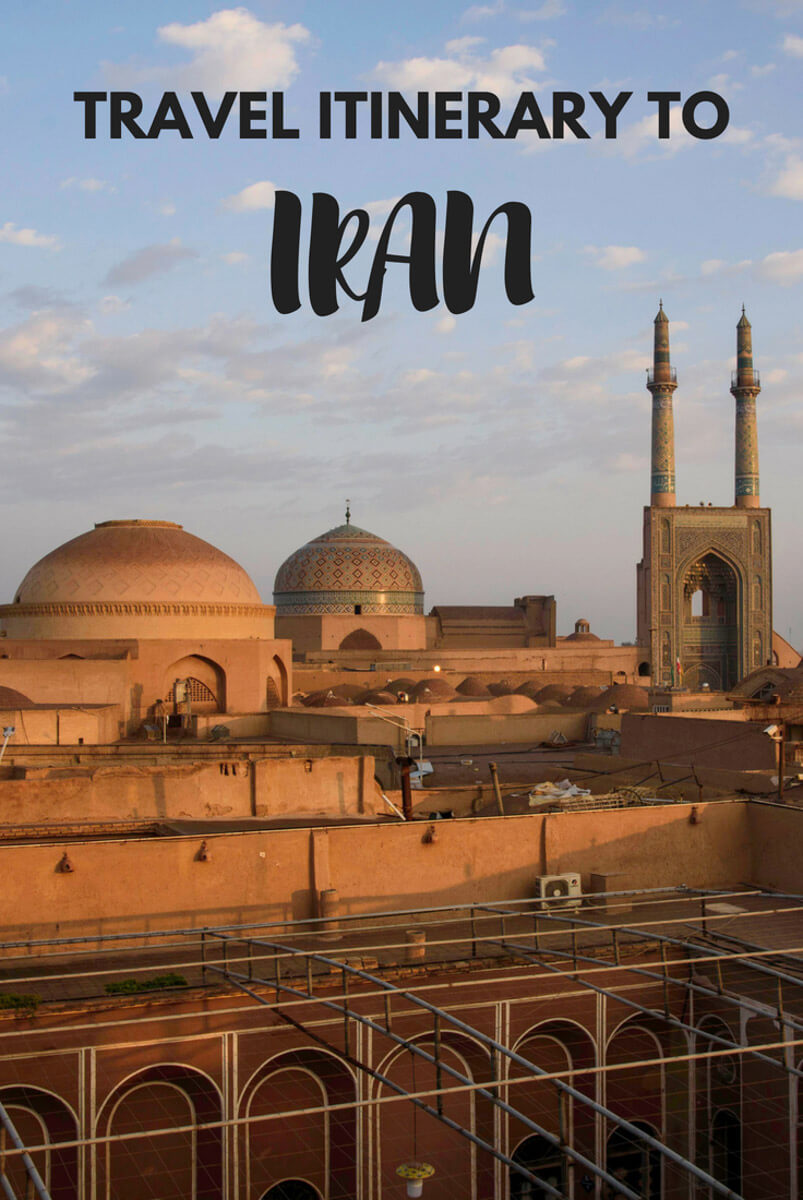
Hello Joan, how are you? Just discovered your website today and I have to say that this is the most useful blog I have ever visited 🙂 I have a question. I have 3 weeks in Iran and besides doing the classic itinerary from Tehran to Shiraz I also want to visit one of the less visited places you recommend. I can’t decide between Kurdistan and Golestan. Which one would you go with? Thank you in advance
Hey man! That’s a very hard question to answer! It really depends on what you like. To be honest, I haven’t visited much of Kurdistan, as I just passed through on my way to Iraq and spent less than 24 hours, but I traveled in Golestan extensively and i loved it because my Turkmenistan visa was denied in the past and Golestan is the closest place in the world to Turkmenistan, as most people there are ethnically and culturally like the Central Asian country. Kurdistan is also great, but I had already visited Iraqi Kurdistan before, so I preferred spending more time in Golestan
Having spent quite a bit of time in Iran over the years, I applaud your effort in promoting travels in this lovely country with exceptionally friendly people.
I would highly recommend your blog to friends who are planning to visit and so wish this was available when I was there.
Great job and keep up with the good work. Thank you!!!!
I really miss Iran, thanks for compiling some of the best things about it and putting it out there 🙂
Hello friend very compelete useful guide which encourage me (as an iranian & travel lover) to start visiting my country again, if this COVID-19 let us. I,ve visited most of the famous places when i was a kid with my family and i think a majority of them most be re-visited since i coudnt remember as well as your descriptions BTW, we pronounce that city in Golestan as Gonbad e-Kavus (NOT GonVad) and its not the main city of Golestan altough a large one (main is Gorgan)
Hello Joan. Thank you for your blog. I see you used a drone while in Iran. I thought they were banned. Would you mind to explain how you did? Thanks Antonio
Hi Antonio, I didn’t do anything. I just entered with it.
Impressive article, enjoyed reading it. Thanks for shedding light on this topic.
Leave a Comment Cancel reply
Your email address will not be published. Required fields are marked *
Notify me when new comments are added.
Join our Expeditions
From Syria to Iraq in Pakistan, Against the Compass is finally running expeditions to the most epic and off-the-beaten-track countries.
We have scheduled expeditions for every month of the year.
Latest posts
- How to travel to Eritrea in 2024
- How to travel to Svalbard in 2024
- How to travel to Afghanistan during Taliban rule (2024)
- How to Travel to Libya in 2024
- Backpacking Venezuela Travel Guide (2024)

Borders Of Adventure
Leading Culture and Adventure Travel Blog by Becki Enright. Looking at the world with a different angle to change perceptions of misunderstood places, for the best in travel.
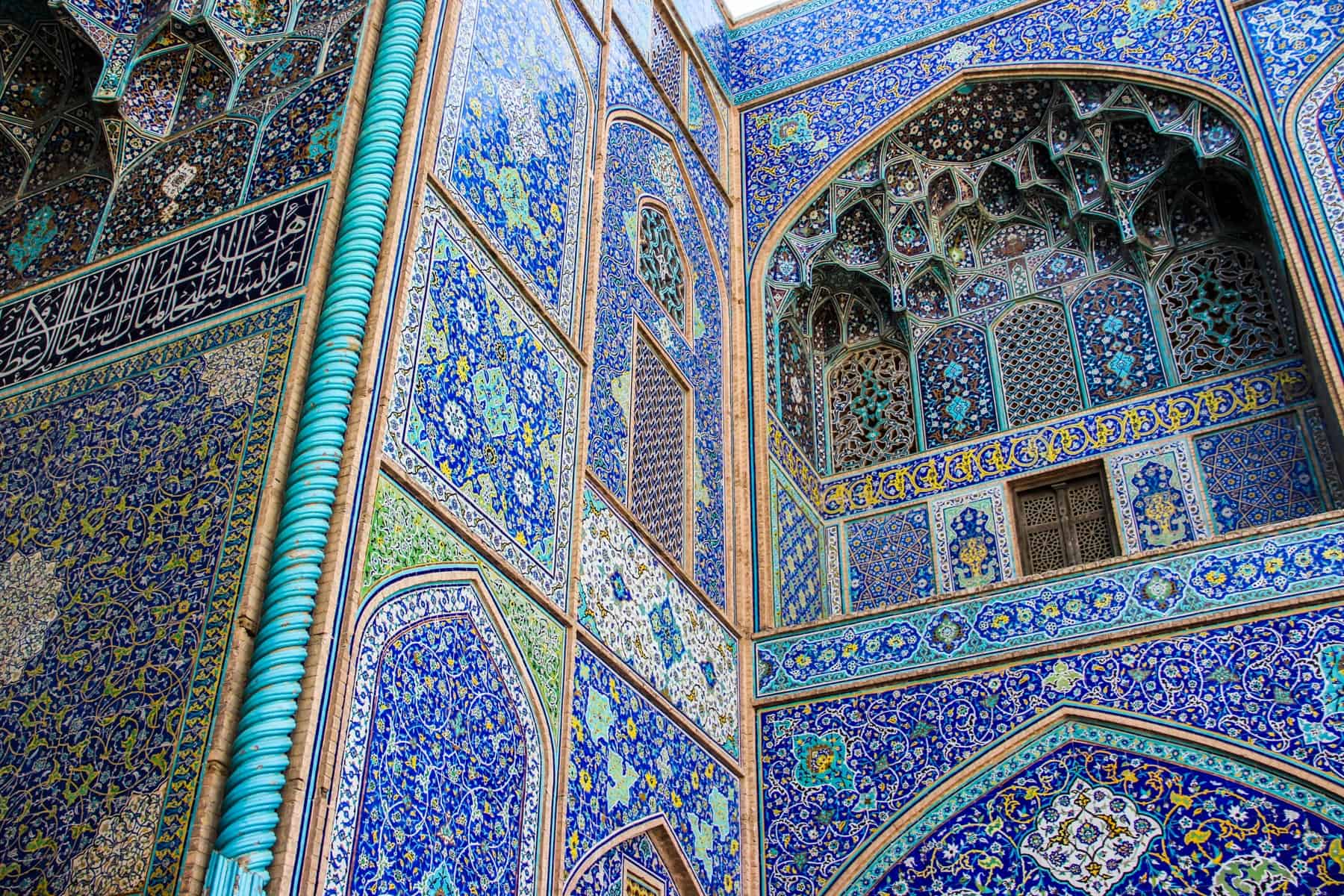
Iran , Misunderstood Destinations
This Is How to Travel to Iran – Everything You Need to Know
Disclaimer: This post contains affiliate links to handpicked partners, including tours, gear and booking sites. If you click through or buy something via one of them, I may receive a small commission. This is at no extra cost to you and allows this site to keep running.
Many travel to Iran to experience the delights of the ancient Persian Empire yet are unaware of the limitations faced by the rules and regulations of what is now the strict Islamic Republic.
As travel warnings persist and diplomatic relations with other countries continue with varying degrees of existence, many are confused about how to go about entering Iran and travelling in Iran safely, efficiently, and within the boundaries set by the current regime.
However, an Iran trip doesn’t have to be difficult at all – tourism is growing as relations develop; hatred of the western world is not as rife as the media likes you to think, and travel in the country is safe. Ancient Persia is within easy grasp, most notably in the central region where key sites have been maintained and the infrastructure linking them is growing, and tourists are not subjected to as heavily enforced rules as the locals.
With enough pre-planning and prior research, you can easily avoid the limitations and stresses of travelling in what is perceived as a closed and tricky country to traverse.
Use this checklist and list of tips for when you visit Iran as a comprehensive guide to help get you started. This Iran travel guide shows you how and is constantly revised with the help of an authorised tour guide on the ground in Tehran, alongside access to regular Iran tourism updates via tourism business partners.
Travel Warning: Due to the volatile security in the region and the recent developments in April 2024, check your government and official advisories before visiting Iran.
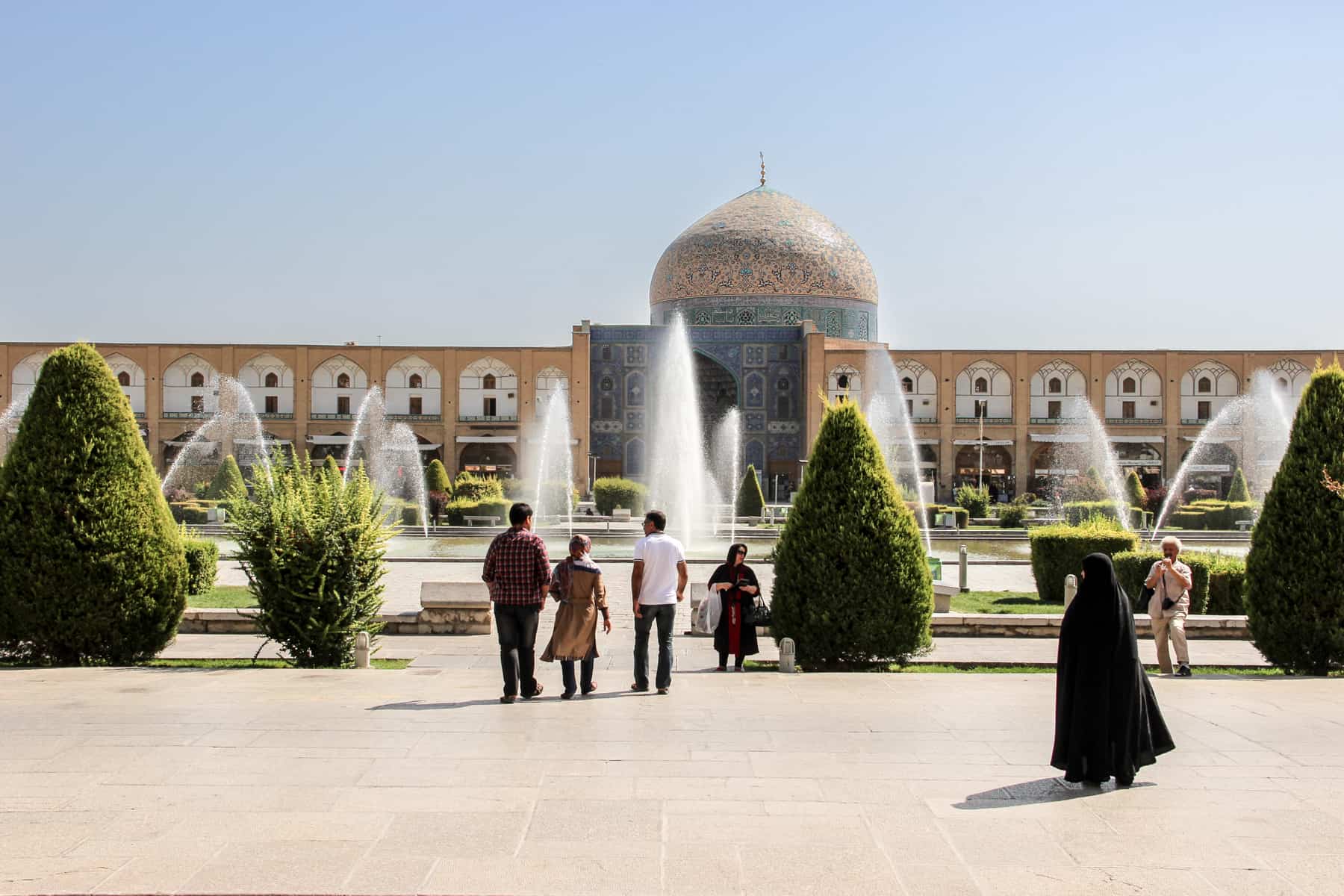
Check Before you Visit Iran
Persia and iran – are they the same, how to get an iran visa on arrival – 180 countries, cost of visas for iran and cost for visa on arrival in iran, you must have travel insurance for an iran visa application, iran tourist visa and authorisation code costs, iran visa timings with authorisation code, proof of travel to israel, current diplomatic relations, nationality restrictions – americans traveling to iran, nationality restrictions – british and canadians travelling to iran, nationality restrictions – israelis travelling to iran, booking the best iran tour, private guided tours of iran, travelling independently in iran, couchsurfing in iran, solo female travel in iran, when is the best time to visit iran, unesco world heritage sites in iran, what should i pack for iran, you are safe in iran, and iranian people are very welcoming, is it safe to travel to iran right now, rules in iran, is iran an arab country, currency in iran – two names, one currency, credit and debit cards in iran, inner-city transport, intercity transport, separate men’s and women’s carriages on iran public transport, pre-register with your country’s foreign office, which sim cards to use in iran, which vpn to use in iran, finding traditional food amongst the fast food, drinking in iran, etiquette in iran, understand the concept of ‘persian time’, read more on the history of iran and iran travel, want to travel iran – pin it.
Inbound bookings for Iran usually change when something has severed particular diplomatic ties, which then reverberates to tourism apprehension and a halt to tourism altogether. Always check the news and the political landscape before travelling to Iran to see if you (and your nationality/country) are affected by visas and entry to Iran. It’s always a matter of time and patiently waiting to see how the political landscape plays out following these events. Here are some of the more recent ones.
On 3rd January 2020, it was announced that the Iranian Major-General Qasem Soleimani was killed in a US airstrike, with Iran calling for ‘severe revenge’. While the outcome is not yet known, this does ignite fears of a conflict in the Middle East , and it pays to be more aware of travel warnings at this time. American citizens, in particular, may face more restrictions.
Following the Ukrainian Airlines plane crash near Tehran, several flights routes to Iran have been cancelled following the news that the Ukrainian jet was ‘unintentionally’ shot down . If you have any Iran travel planned, check your airline to see if the service is still running.
The arrest of the UK Ambassador to Iran in Tehran as part of government protests have further sparked an international row between the two countries. UK travellers should be on alert for developments.
Both Iran and Persia are used interchangeably about the country and also while you are on the ground. Reference to Persia is more so in the context of the history and legacy of the ancient kingdom of the Persian Empire; Iran is about the modern-day Islamic Republic of Iran in the Middle East.
READ MORE: Best Places to Visit in Iran to See Ancient Persia
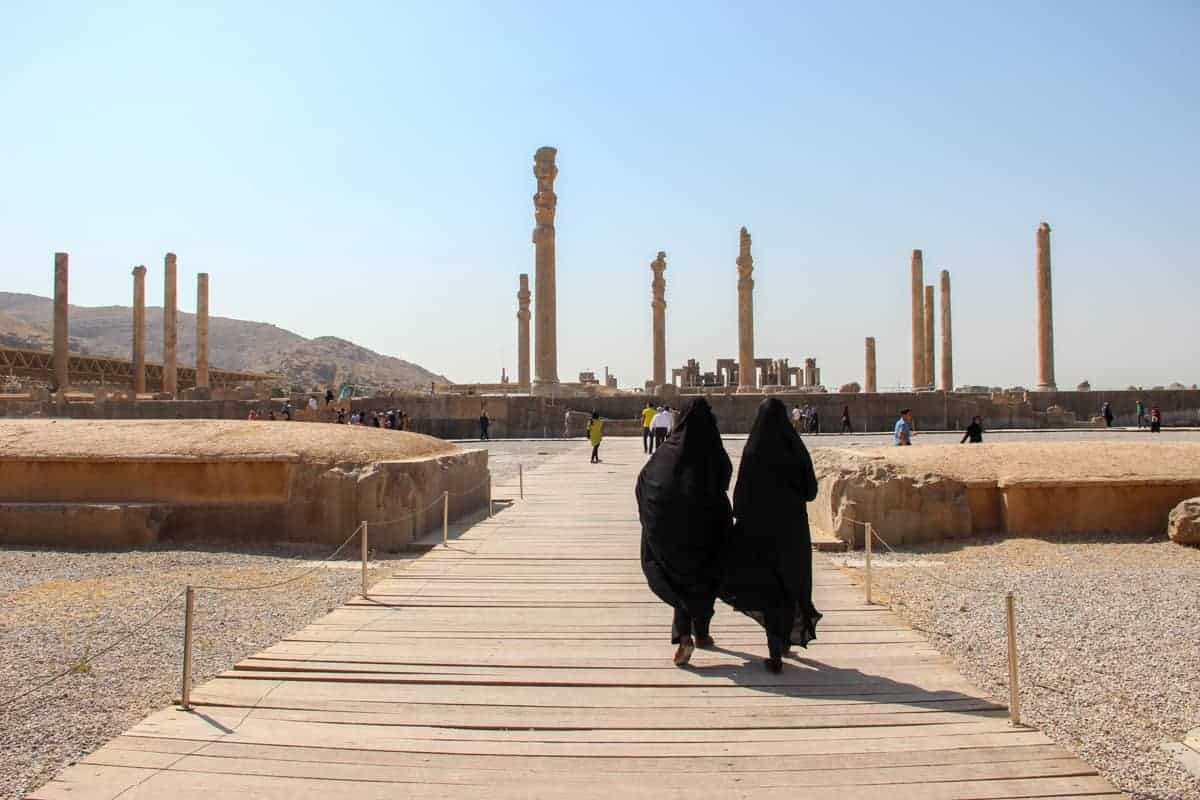
You’ll stumble between modern-day cities and the sights of ancient Persia, like the Persepolis, on any Iran trip.
Can Everyone Travel to Iran? Iran Visas and Authorisation Codes
Getting a visa for Iran is quite possibly the most stressful and challenging part of your entire trip. You first need to know if you are eligible and what limitations you may face.
For countries like the UK, which have strained and little to no diplomatic relations with Iran, you may find that you cannot even get an Iran visa in your country because there is no Iranian embassy. British travel to Iran means a little more legwork, where you may also have to travel elsewhere, like Dublin or Paris for example, to obtain the visa since there is no Iran embassy in the UK.
Most airlines flying to Iran will not allow you on a flight unless you show you have an Iran visa, but you can get a visa on arrival. However, sanctions have been lifted, most notably in 2016, with up to 900 Iran visas daily on average granted on arrival, according to the Office of Foreign Affairs. Tourism numbers annually have increased year on year, with 5.2 million foreign visitors entering Iran in 2015, in comparison to 4.7 million in 2013.
On the 14th February 2016, the Ministry of Iran announced that airports could issue 30-day visas for Iran, for nationals of 180 countries.
Non-eligible nationalities for Iran Visa On Arrival:
Afghanistan, Bangladesh, Canada, Colombia, India, Iraq, Jordan, Pakistan, Somalia, USA, UK
A 30-day Tourist Visa Upon Arrival, for those of eligible nationality , can be obtained at the following Iran airports:
IKA: Tehran Imam Khomeini Airport THR: Tehran Mehrabad Airport MHD: Mashad Airport SYZ: Shiraz Airport TBZ: Tabriz Airport ISF: Isfahan Airport
Follow the signs that say ‘Visa on Arrival’ where you will be asked questions about your trip to Iran and asked to present:
- Details about your confirmed first night’s accommodation in Iran, including the address and phone number (you may also be asked about your travel plans on-going).
- Proof of a confirmed return flight ticket.
- A copy of your travel insurance policy document and policy number.
- Those people I met who were granted an Iran tourist visa on arrival as part of the tour were given a special letter from the company that they could present to both the airline and passport control on arrival.
You can be waiting up to 30 minutes before your visa is granted and you can proceed to immigration. You will need:
- A passport with at least six months validity
- Two passport photos, in which women should be wearing a headscarf
- The completed visa form. You can also fill out the form online before arrival in Iran, from which you will receive a visa application reference number, print it off and take it with you.
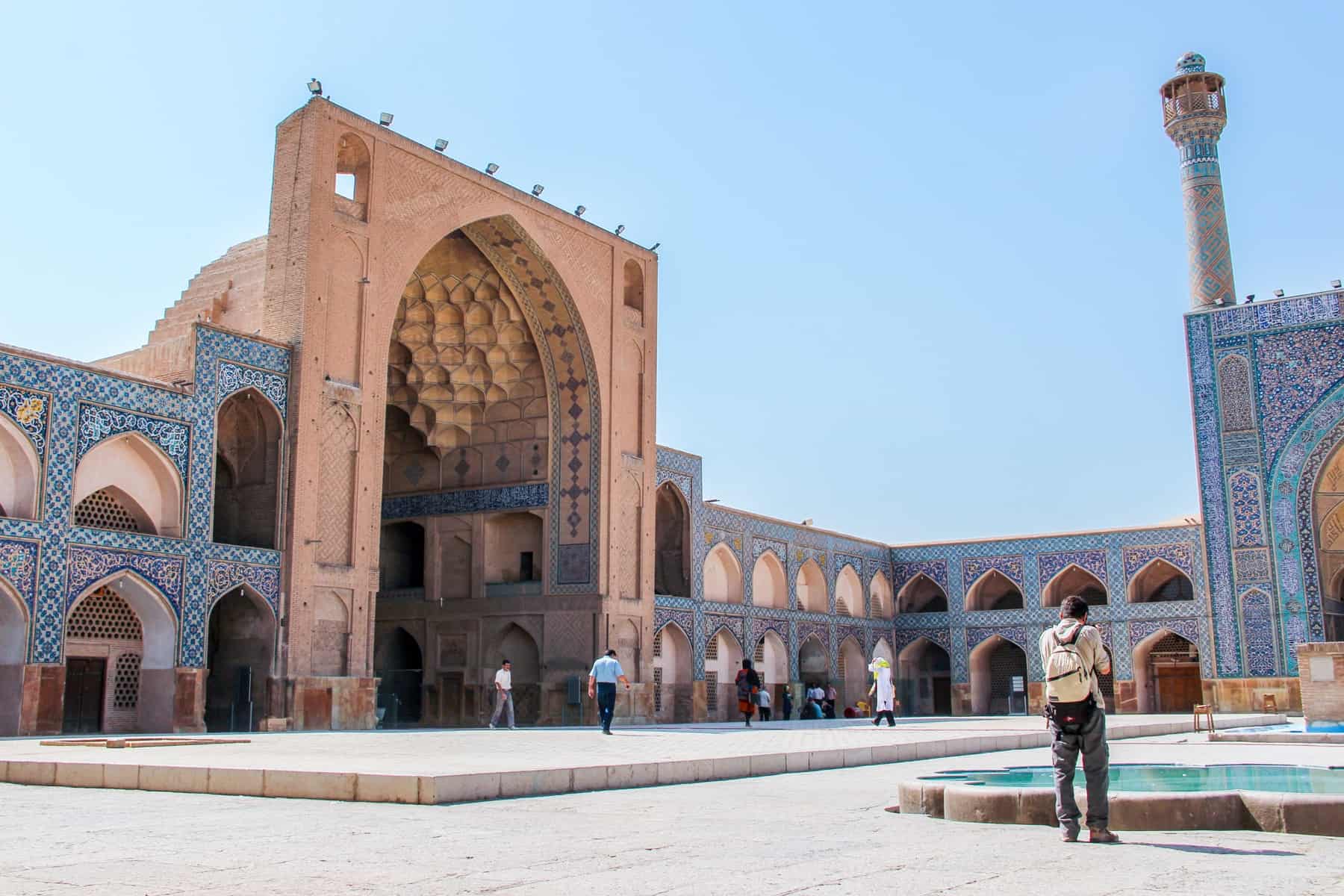
One of the many beautiful places in Iran to visit – The UNESCO World Heritage site of The Great Mosque (Masjid-e Jameh) of Isfahan.
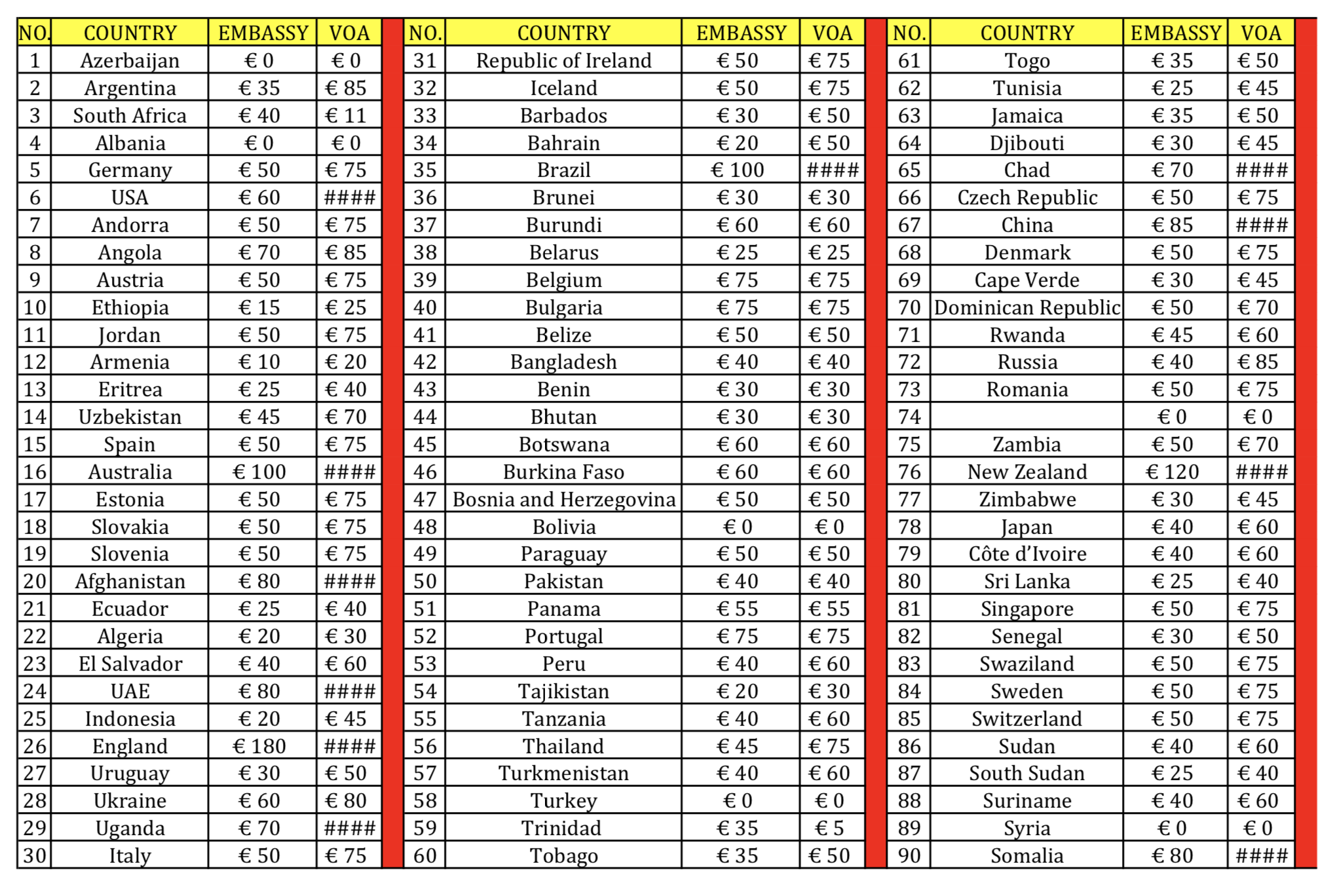
The costs for a visa in Iran and visa on arrival in Iran – each country is different.
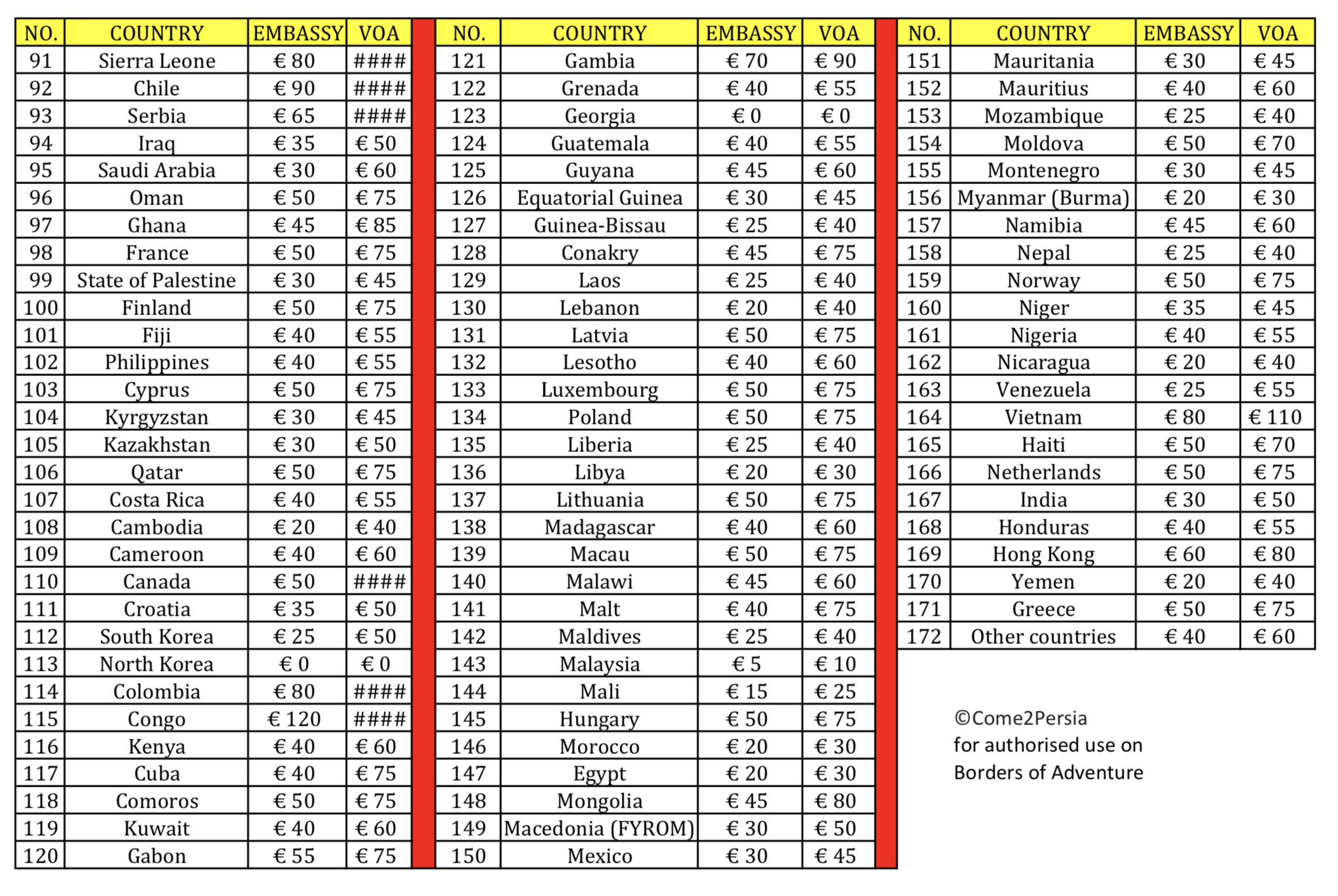
Iran Travel insurance is a requirement to obtain your visa for Iran. Without proof of purchase and printed documentation, you cannot pick up your visa from the embassy or secure your visa on arrival at the airport.
Aside from it being a stupid idea not to have travel insurance coverage, check that your current policy (or the one you are thinking of getting) covers Iran. Some do not provide travel insurance for Iran or only cover limited regions of the country and activities.
Getting Your Iran Authorisation Code – Non-Eligible Nationalities
For those not eligible for a visa on arrival, and those wanting to apply for a visa for peace of mind before they arrive, you have to apply for an Authorisation Code. EVERYONE has to have one of these, which will determine if you are granted an application for a visa.
- For those who HAVE to travel in a group (see below), this code will generally be processed by your tour company.
- For everyone else, you can use 1stQuest which offers essential travel services for Iran travel. Otherwise, source an Iranian travel agency local to you at the time of planning or seek direction from the embassy you wish to get a visa from about where to apply for it.
- When applying for the authorisation code, you will need to specify which embassy you will be processing your visa at – a pain for those travelling around with no solid plans. Once the code is released, you cannot change the embassy choice. It’s wise to choose an embassy in a city you are likely to fly to Iran from (see also timings below).
Authorisation codes (if not booking with tour) come with an administration cost of around 35 Euro, which is dependent on the agency you are working with. There is no set price for an Iran Tourist Visa since it is determined by nationality and where you process your visa.
I paid €180 for mine in Tbilisi, Georgia and a British guy on my tour paid a little more to process his in Paris. The Australians in my tour group paid differing amounts between €50-€100, as did the Germans. There’s no hard and fast rule – it’s more about luck.
If all that wasn’t enough, it is highly likely that
1. Your authorisation code will take WEEKS to process
2. It will most likely arrive with only a matter of DAYS to spare before your planned arrival in Iran or tour start date.
This means that before any trip to Iran, especially when travelling on a tour, you will be rushing to the embassy in the hope of getting your authorisation code for Iran processed quickly. You may have to pay extra for fast-tracking and organise your flight ticket to Iran very last minute. This doesn’t always guarantee the best price and the idea of getting a cheap ticket to Iran has to be pushed aside.
DON’T book your flights to Iran or any travel arrangements until you know your Iran visa will be processed. Many people travel to Turkey beforehand to process their visas and fly to Iran from there, using the country as a cost-effective flight or train route for entry.
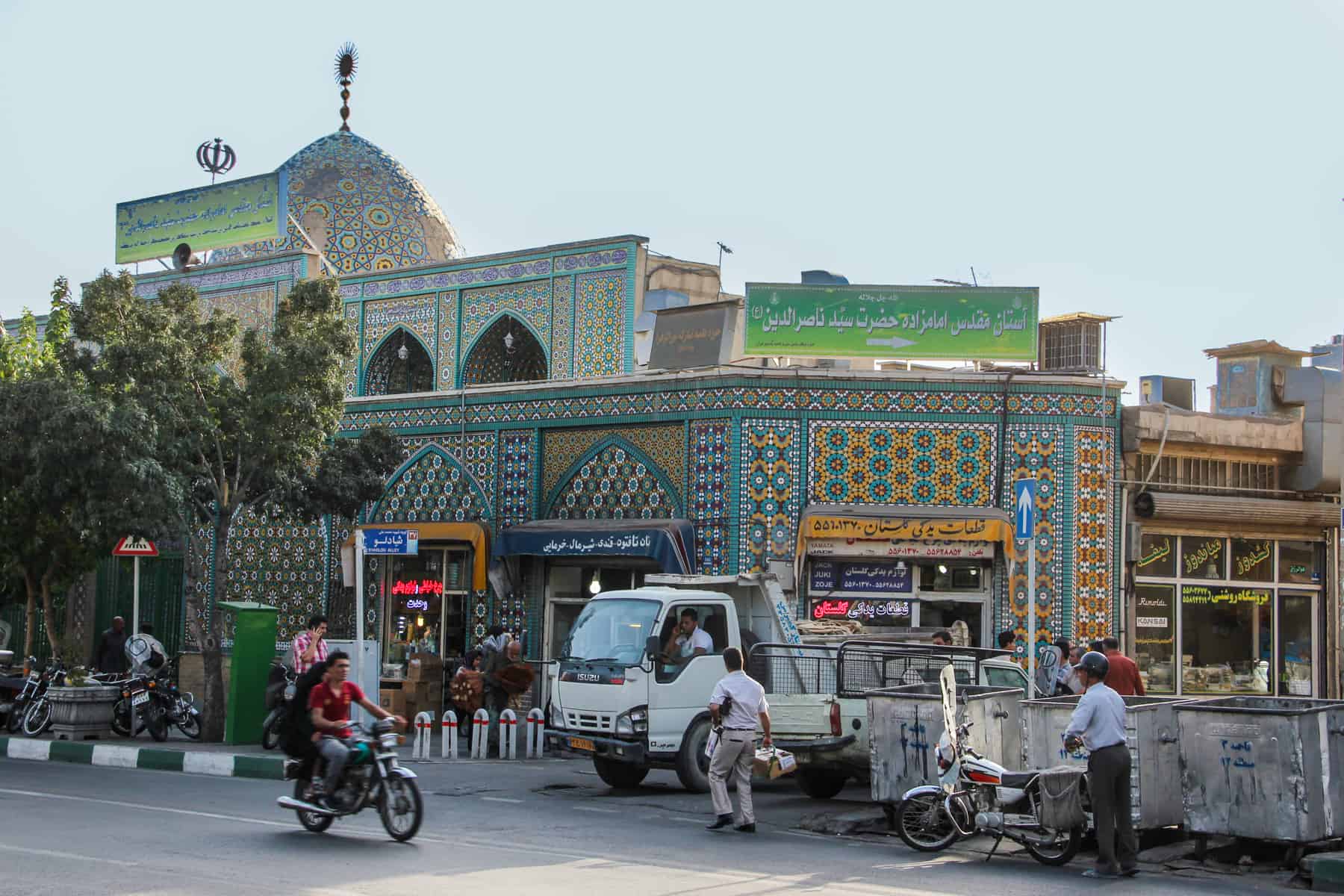
Everybody needs to get an Authorisation Code before travelling in Iran.
Refusal of Entry to Iran
The main reason for Iranian visa refusal is when there is proof you have travelled to Israel and the government’s paranoia based on your career (think journalists, media workers and similar).
Iran tourism issues are not linear, and while anything can happen at any time that would affect a particular nationality entry, the majority of the problems are political-based and beyond our control. Diplomatic relations and any political actions for/against Iran based on historical or current affairs at the time of applying may affect your refusal of entry into the country, or an Iran travel ban put in place.
On 4th January 2020, it was announced that the Iranian Major-General Qasem Soleimani was killed in a US airstrike, with Iran calling for ‘severe revenge’. While the outcome is not yet known, this does ignite fears of a conflict in the Middle East , and it pays to be more aware of travel warnings at this time.
On 6th October 2019, it was reported that the two Australians imprisoned in Iran for flying a drone were freed in a political swap. It is suggested that strained relations between the UK and Iran after Britain seized an Iranian oil tanker in Gibraltar are inciting such political moves to detain people breaking the rules.
On 29th August 2018, France informed diplomats to postpone all but non-essential travel to Iran after a foiled bomb plot near Paris. The following day, Iran dismissed such restrictions , proving that it is best to stay aware of any sudden changes.
Solo Travel in Iran vs Tours in Iran
One of the biggest questions I hear is: Can US citizens / Americans travel to Iran? They absolutely can, but because of the long-standing history of coups, espionage, nuclear sanctions and everything else in between (outside of the control of the average American citizen unconnected to the historical actions of their government), all US passport holders are only allowed into Iran if part of Iran tour packages (or with a tour guide).
Despite restrictions, it is safe for Americans to travel to Iran, so don’t be put off by the bureaucracy needed to get there. US travel tips to Iran focus on this red tape. For example, it still stands that Americans must also be escorted from the airport to the hotel, and cannot make their arrangements. This all has to be pre-organised pick-up (a simple addition via the tour company) so do check this before you leave.
READ MORE: Inside The Den of Espionage – Former US Embassy in Tehran Turned Museum
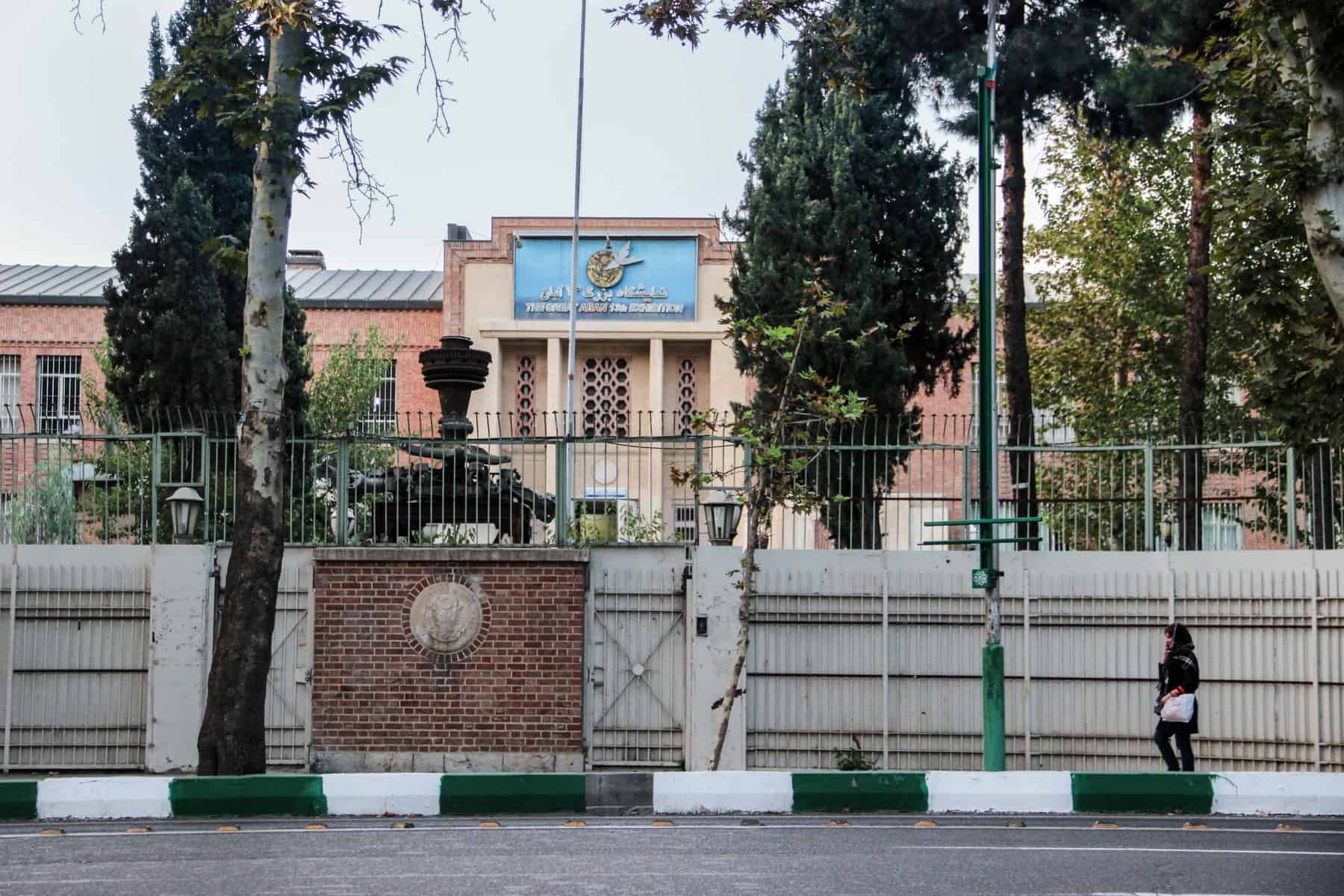
The former US Embassy in Tehran, Iran
As of February 2014, British and Canadian citizens going to Iran became subjected to the same ‘tour only’ sanction (official Iran tour operator or private Iran guide). As a result, your visa is usually only granted for the exact number of days of your tour, with a couple of days on either side if you list this as part of the arrival and departure options.
British passports holders should also pay attention to Foreign Office updates following strained relations between the two countries after the oil tanker seizure, as listed above in ‘Current Diplomatic Relations’.
Unfortunately, Israeli citizens cannot enter Iran at all, and this is unlikely to change anytime soon.
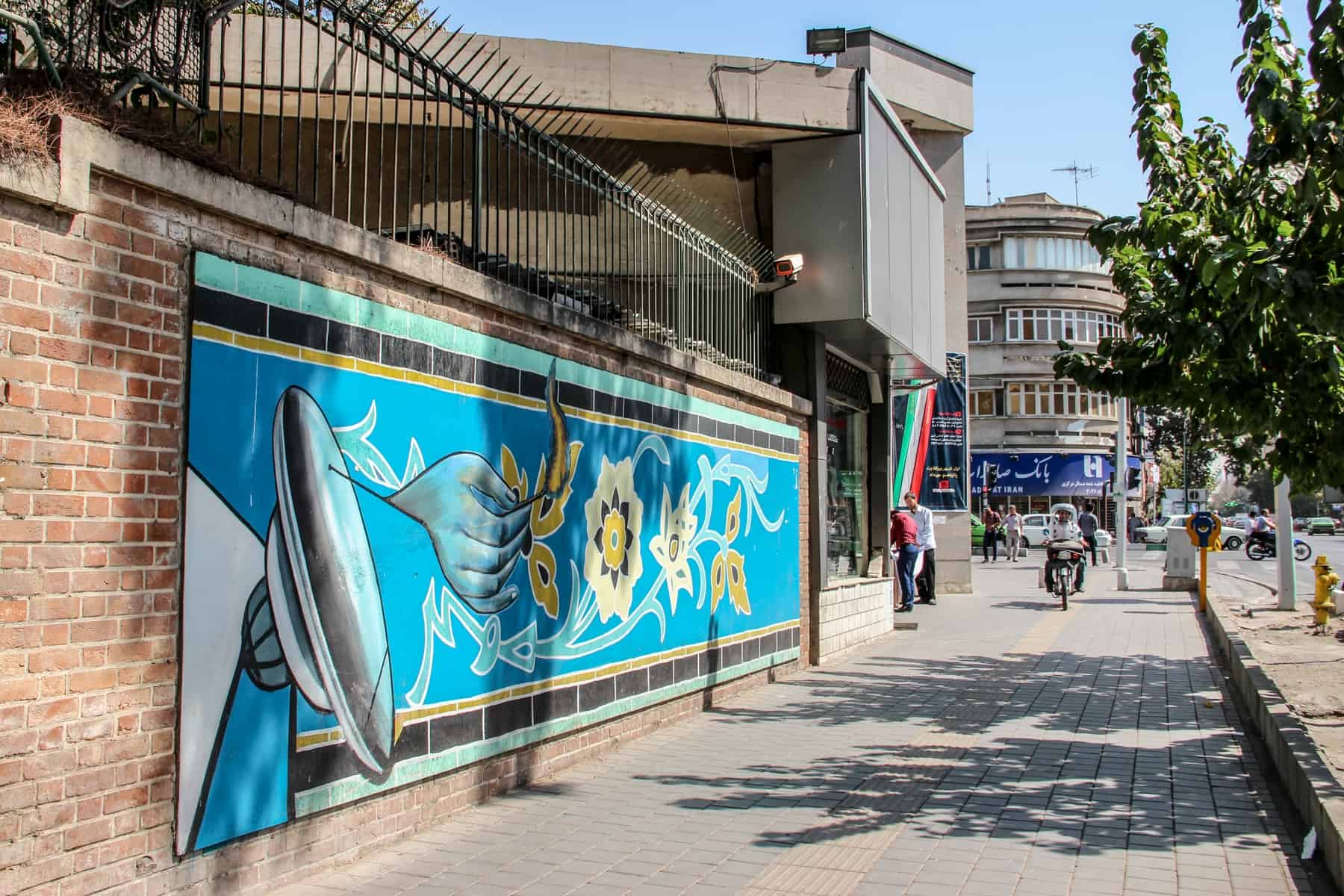
Check on any nationality restrictions before you visit Iran. It may mean having to join a tour and hire a guide.
While those booking up Iran holidays might choose a tour package for the fact that everything is taken care of on the ground and for ease of travel, I had no choice since I had a British passport.
There’s an overwhelming amount of Iran tour packages, and it can often be hard to know where to start. At the time, I travelled with G Adventures on a Discover Persia tour which operated through the revered Iranian agency AITO. I allowed myself free time to visit Tehran on either side of my trip, so I had a taste of both worlds, albeit on a small scale. Currently this trip is not running.
The upside to a tour, however nomadic and sporadic you usually are, is that these trips pack a real punch in getting you to many sites in 14 days. On the G Adventures Iran tour, I saw places I would not have been able to access easily on my own or with public transport. Plus, my local guide to Iran was the bundle of knowledge that a history and sociology geek like me needed for an ancient civilisation such as Persia. The downside of such holidays in Iran is a lack of free time and lazy resting for an itinerary that would normally, on my terms, take about three weeks, not two.
Being in a tour group when visiting Iran does not mean being chaperoned and watched 24-7. ven while on a small group tour, we were allowed time to ourselves in each destination.
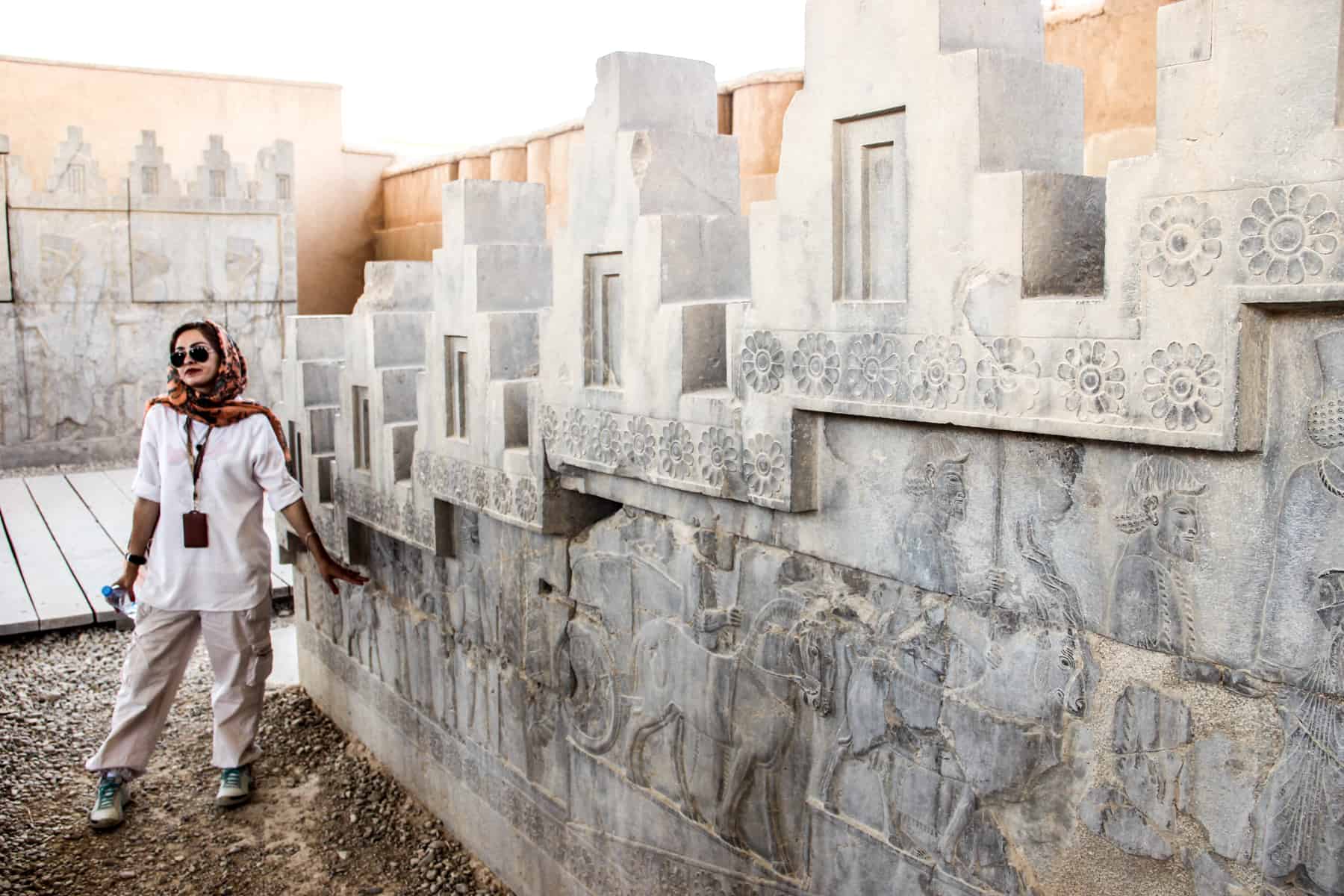
Choosing between and small group tour and a private guide – with a local who will show you all the historical places in Iran.
Generally, under the condition that you must have two people minimum, hiring a private tour guide in Iran is also an option. This is a viable option for those with visa restrictions who do not want to travel in slightly larger groups.
Come2Persia is a certified and reliable Iran travel agency run by a trusted Iranian friend of mine, Ali Reza Nokhostin, who I met and travelled with when in Georgia. He is both passionate about showing off his country and in changing perceptions of Iran. Specialising in incoming tours to Iran, Come2Persia also provides other travel services needed to complete the private tour package, including hotel bookings, visa application, transportation and access to various guides, not just Ali.
Note that while solo / independent travel is moderately easy in Iran (if of a free nationality), Iran is not that well-trodden on the independent travel path. There’s little to no hostels and guesthouses, and a dominance of big, expensive hotels (especially in Tehran) and even then it is rare to stumble upon a bunch of solo travellers to join.
However, solo travel in Iran is happening, and it is safe, it’s just a little more challenging than usual, which can, in itself, be pretty exhilarating.
Note that Couchsurfing in Iran is officially illegal, but it happens anyway. Nearly all independent travellers I have spoken to have mentioned that they have travelled here via this resource with your local hosts, of course, being the best guides. However, travellers looking to Couchsurf in Iran must be aware that they can not hold the Couchsurfing host responsible if anything goes wrong because there is no official ‘filter’ in place when it comes to the hosts listed online.
In a society where women are much more restricted than their male counterparts, to travel Iran as a solo female is a little harder and viewed with surprise/suspicion depending on where you go.
Also in Iran, since public displays of affection between males and females are not allowed, any harassment or inappropriate contact by an Iranian male to a female traveller would be frowned upon and draw attention.
Iran is one of the safest countries in the world based on tourists’ feedback. There have been many solo female travellers who have experienced Iranian hospitality and kindness.
However, it is vital to bear in mind that Iran is an Islamic country with traditional values and of course, some types of outfits would send the wrong message, especially in smaller and more conservative cities, such as Yazd, Kashan and Qom.
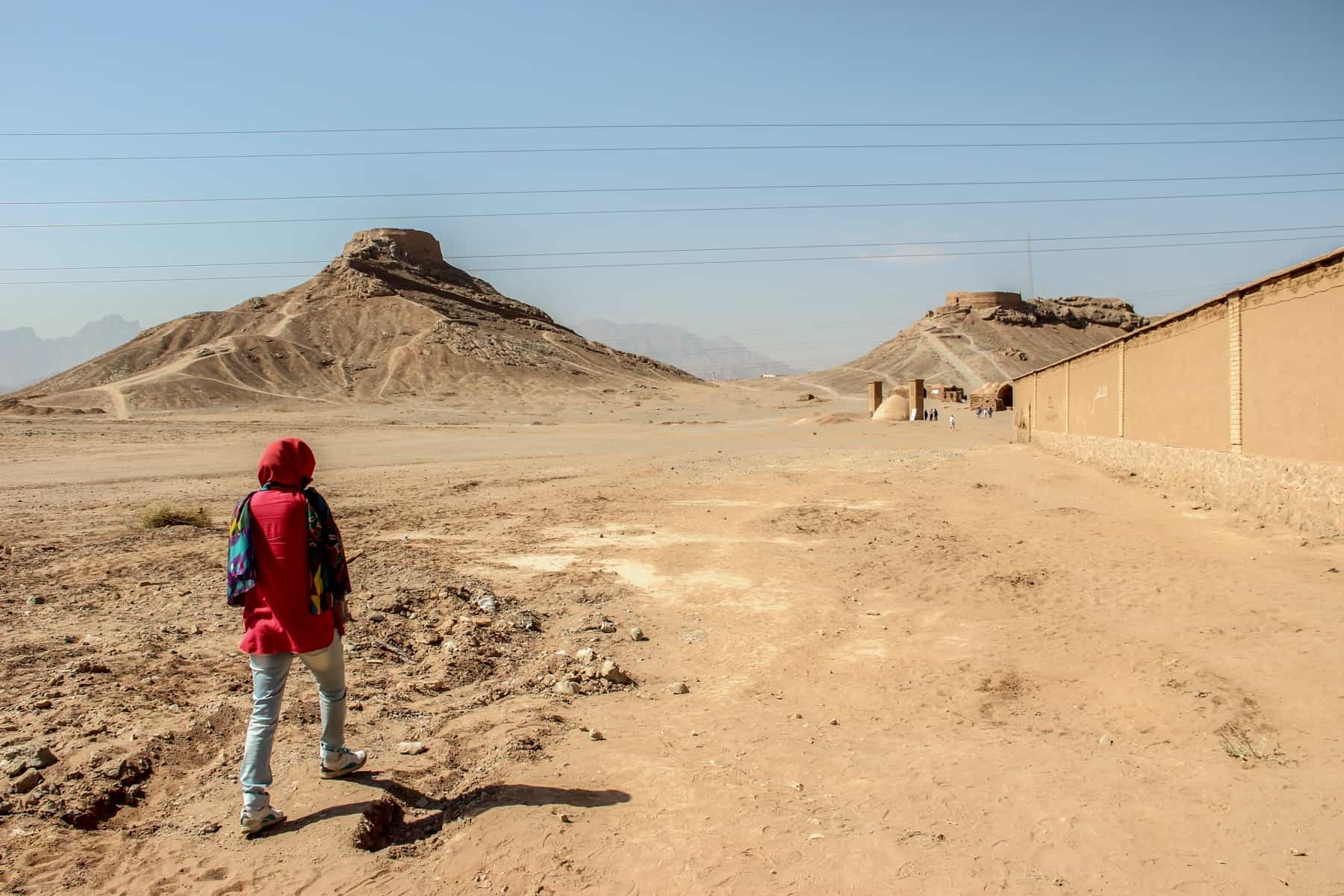
Solo female travel in Iran is safe, but with awareness of the conservative values of this Islamic country.
Iran is a four-season country, which means in different corners of the country, you can experience various climates at the same time. So, when is the best time to go to Iran, based on the different climates in the country? As a quick guide to Iran and its geographical mix, we can divide the country into three regions:
- From early March until late May
- From early September until late November
- There is one high season, from mid-April until mid-November
- Only one high season, from late November until late March
In between the high seasons from July to September is marked by high temperatures rendering travel on the classic route potentially uncomfortable.
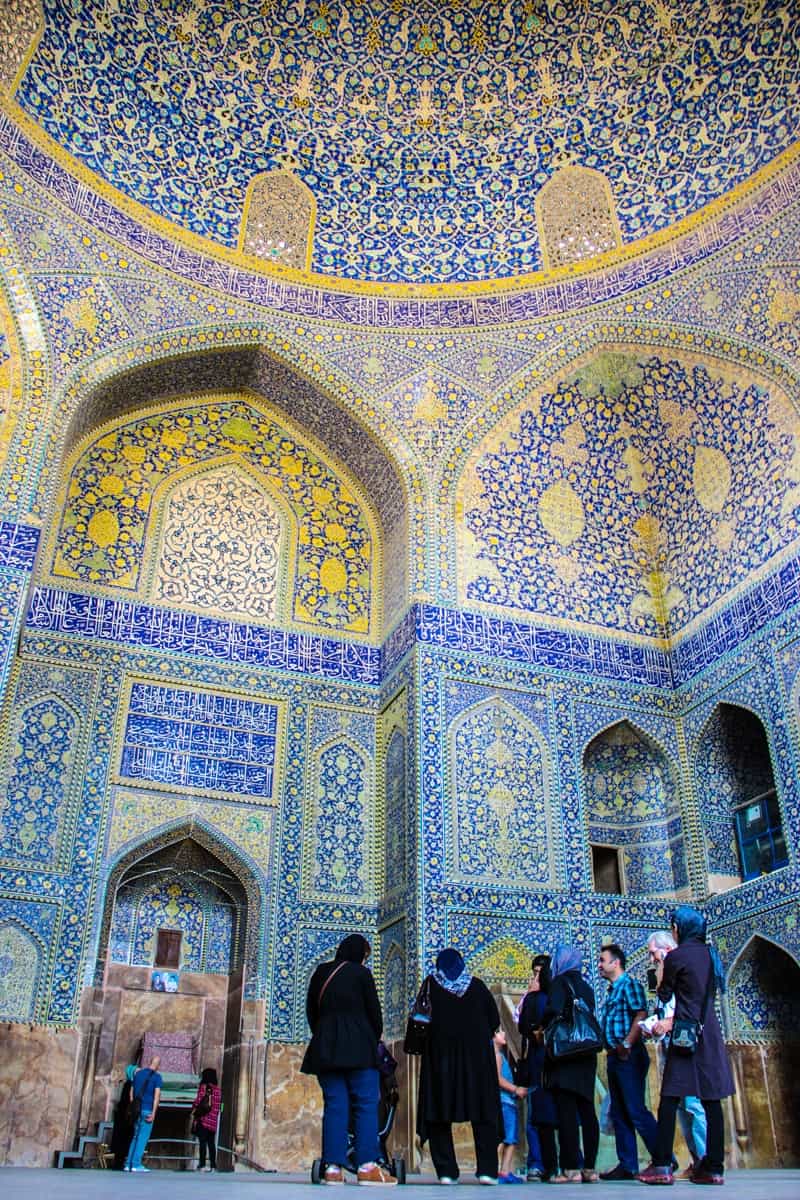
The stunning Sheikh Lotfollah Mosque is Isfahan is one of the must-see sites.
Iranians love to shout about the abundance of UNESCO World Heritage Sites. As my local friend stated, “It gives Iranians a lot of pride to possess such ancient lineage”.
Iran has 24 UNESCO World Heritage Sites – 22 cultural and two natural. Each of which is the result of years of investigation and presentation of evidence as to why they should be regarded as world heritage sites. It would take more than one trip to traverse them all.
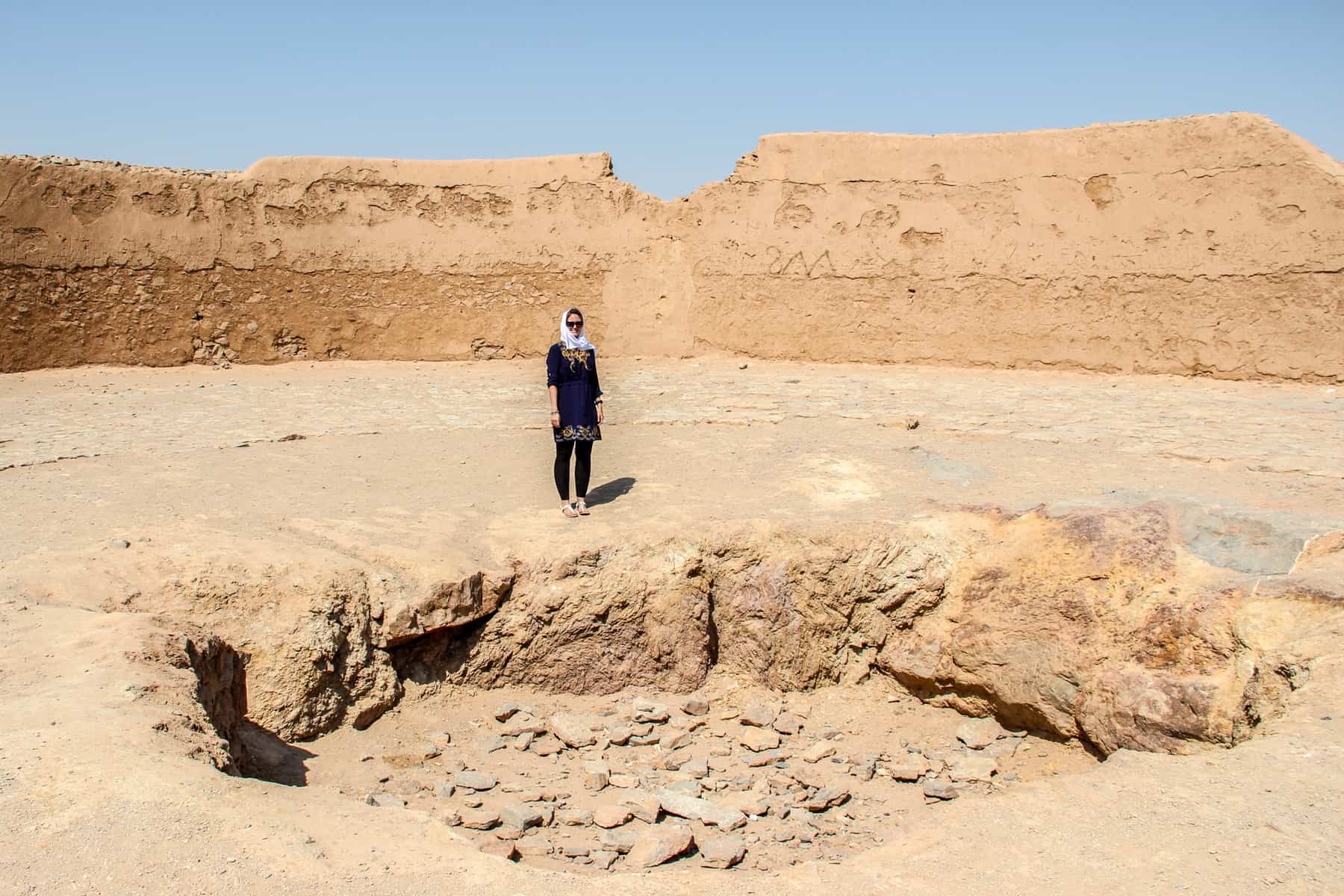
The Zoroastrian Towers of Silence in Yazd – one of the 24 UNESCO World Heritage Sites in Iran.
Dress Code in Iran – Headscarves and Hijabs
Iran does have a strict dress code, and this is one of the biggest concerns for female travellers to Iran. Most importantly – PACK A HEADSCARF IN YOUR HAND LUGGAGE. It’s called ‘Roosari’ in Farsi, and you MUST be wearing it the moment you exit the plane and are officially in Iran.
You must wear a headscarf the entire time you are in Iran (except when in your hotel room), as well as loose clothing that covers your body. But let’s get one thing straight – you don’t have to wear a burka or anything that completely hides you.
When you arrive, you will soon see that reality is far removed from the stereotype. Iranian women are super stylish and proud of their appearance – fashion being a means to stand out and make a statement.
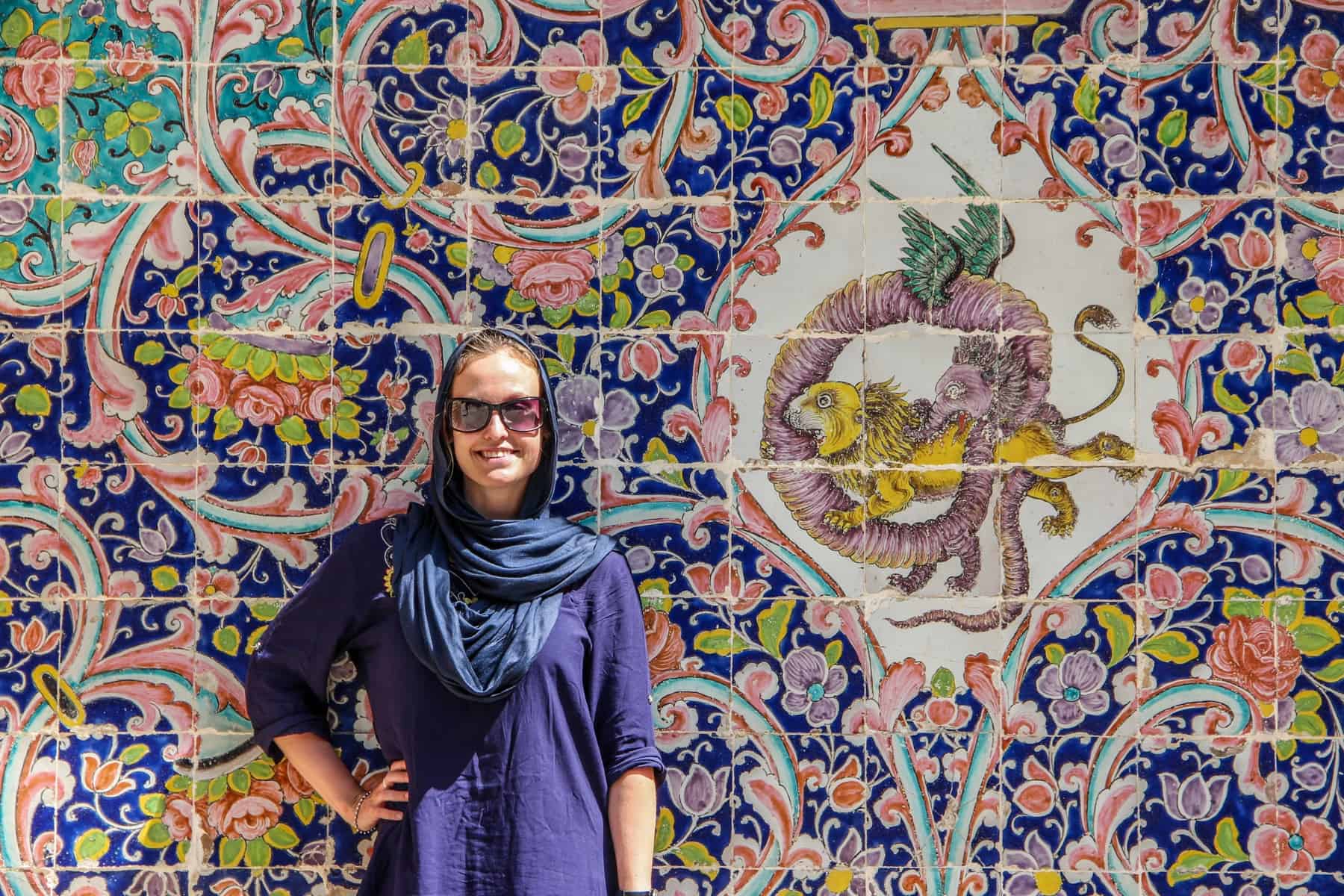
The dress code for women in Iran doesn’t have to be complicated.
The ‘Morality Police’ you hear of do exist in Iran but are not spending their time chasing down foreign visitors, so do not worry too much with that. If anything, you will get a polite mention. Visitors have a bit more flexibility when it comes to the rules.
- A headscarf is the most immediate essential item, and you can buy more when you are there) . If your headscarf falls, don’t worry – quickly put it back on again. You won’t be in trouble for this, but pay attention at all times. Wearing your hair in a high bun or ponytail helps keep the scarf in place. Many Iranian women wear it a little loose and halfway back on their head, since showing a little hair is granted.
- Tops must be loose-fitting, and three-quarter length sleeves are ok – a little more comfortable in the heat. The general rule of thumb is that the body should be covered and arms should not be bare.
- It is said that trousers must be baggy, but some local women wear tight, brightly coloured leggings. As long as your legs are covered down to the ankles, it is fine. For tourists, leggings worn with a long, loose-fitting top are acceptable. However, in the more conservative areas such as Isfahan, Mashad and Qum, respect the values and revert to looser fitting trousers.
- Colour of clothing. It’s a myth that you need to dress in dark colours or black tunics. Embrace fashion the ways the locals do and bring some colour into your Iran packing list!
- Open toes sandals are OK. Pack some sports shoes for longer day trips where you might be walking a lot (such as at the Persepolis). You’ll soon see how sports shoes are fashionable in Iran, especially in bright colours!
- Worried you do not have enough appropriate attire? Fear not, as soon as you arrive in Tehran or even Shiraz (if you fly into the city), hit the bazaars and the local markets . There’s plenty to be sought out. Other people on my trip stuck with two outfits and alternately hand-washed them every night.
- Strict dress codes do not apply in the same manner when travelling with children . Young boys can wear shorts and t-shirts and girls under ten are not required to wear a headscarf.
For men it’s more straightforward – you will be dressing much the same as you do in western countries, except no short shorts, no super short sleeves and no extreme tight-fitting clothing.
READ MORE: Iran Dress Code for Women (What to Wear in Iran)
Is Iran Safe? Is it Safe to Travel to Iran?
Iran’s image of being a terrorist-driven, American bashing, nuclear weapon holding, burka-clad society is something that has been highly driven mainly by western media. “Is Iran safe?” “Isn’t it dangerous in Iran?” are likely to be some of the first questions you encounter from others when you announce you are travelling here.
In short: Iran is a safe place to visit.
Since the election of the more moderate President, Hassan Rouhani in August 2013 and his re-election in 2017 , both international relations and internal rules have become less severe and slightly more open. It won’t take long before Iranians give you a warm welcome, ask where you are from or even invite you to dinner or tea.
It is a part of Iranian culture to go out of their way to help you, and it’s not uncommon to be given a phone number on a piece of paper or a business card in case you need to call upon someone.
The people of Iran are just as keen to show you they are the opposite of how they are portrayed, just as you should be teaching them that the western world doesn’t hate them.
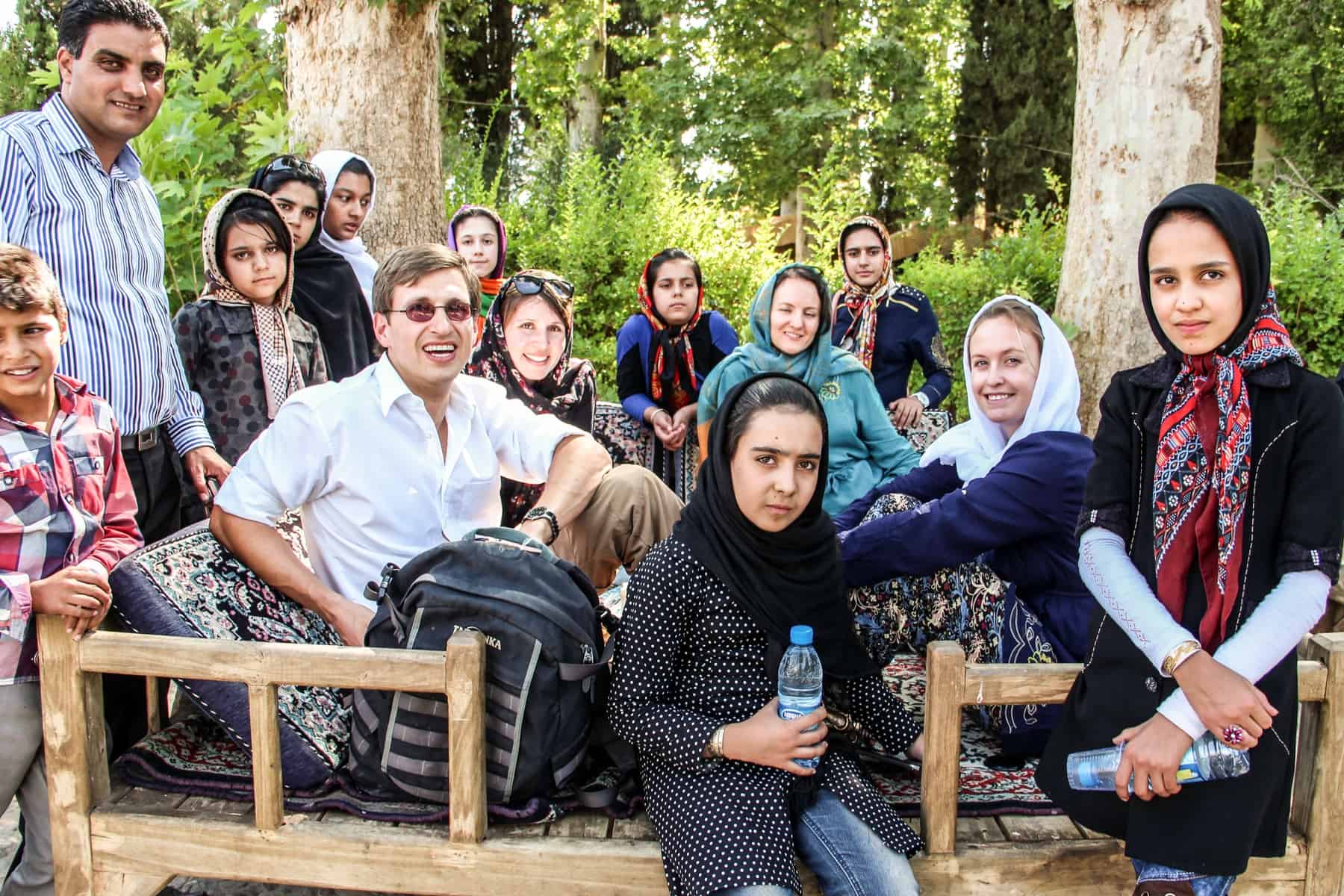
Is it safe to travel in Iran? Absoluely. Locals are very welcoming.
There’s never a right time for those who are worried, anxious or scared. Of course, you need to keep up to date with any significant political changes and your country’s diplomatic ties, but avoid listening to the hive of scaremongering out there and those who say don’t travel in Iran.
For example, in June 2018, there were protests about the economic situation in Iran, and these took place inside and around the Grand Bazaar in Tehran. It means being aware of any internal demonstrations and staying away from those areas, as you would in any country.
Iran remains as one of the most stable countries in the Middle East. While breaking the rules of Islamic society (including drinking alcohol, taking drugs and engaging in sexual activity with locals) can result in deportation, arrest or worse, general travel here is entirely safe.
Don’t assume you can break any rules in Iran, play the dumb tourist and get away with it. Iran is a Muslim country where Islamic law is strictly enforced.
An example of harsh punishment is with the case of the two Australians imprisoned in Iran for illegally flying a drone near a military installation, freed in October 2019, but as part of a political swap. It might seem that the punishment doesn’t fit the crime, but what is justified in your country can have harsher consequences elsewhere.
This is an Islamic State with a strict system, and if you can’t play by Iran rules, don’t go.
Given the location of Iran in the Middle East, the Muslim religion and some similarities in culture and language, the scaremongering of Iran can often revolve around the ‘it’s Arab’ misconception.
Iran is not an Arab country. Iranians are not Arabs. The language spoken is Persian (also known as Farsi) and not Arabic (although there are many languages spoken within Iran including Kurdish and forms of Turkish, Indo-European languages and Khuzi Arabic for example, due to the many ethnic groups that exist within the country).
Not only is the Arab misconception a source of contention generally, but Persians can take offence at these preconceived ideas.
Take US Dollars or Euros with you to Iran and change them up into Iranian Rial at the local exchange offices (not the dodgy guys on the street or at the hotels which have the lower government exchange rate). Before you know it, you have millions of Rials, and it all looks easy.
However, while ALL notes state ‘Rial’ there is another ‘currency’ or ‘super unit’ that is used – Toman – which is not listed on any note or coin.
Toman is used by locals and is one-tenth of the Rial total. 1 Toman = 10 Rial.
When I was first presented with a dinner bill of “37,000”, I was quietly happy that my food had cost the equivalent of $1.5, but this was, in fact, the price in Toman.
To convert to Rial, you simply add a zero – therefore my dinner was 370,000 Rial.
Lost? It takes a couple of days to get used to, but in the majority of cases, unless stated clearly, all prices are in Toman and not Rial. Hence, the basic equation anywhere in Iran is to add a zero onto printed prices (if ‘Rial’ is not listed), or ask market vendors and others which ‘currency’ they are operating in to save the confusion.
A big question is if you can use your credit or debit card in Iran. Sadly not, since there is no network in Iran for the use of international cards. It’s always been the best option to carry enough cash with you for your trip to convert to Iranian Rial on the ground.
However, there is now an Iranian prepaid debit card for tourists and temporary visitors called the Mah Card. Like most travel cards, you can instantly add funds to your card in your preferred or home currency, and it will convert it to Iranian Rial. It is more convenient than carrying cash, protects you from unauthorised purchases and is accepted country-wide.
To get 40% off the price of a Mah Card (Full price €19) enter BECKI at the checkout.
Public Transport in Iran – Options, Usage and Cost
When traveling in Iran, you have various options for public transport:
Intercity transport:
Private car
- Domestic flight
The Metro is available in several cities in Iran, mainly in Tehran; alongside Shiraz, Tabriz, Mashhad and Isfahan. It is the best option to get around in Tehran, and the stations are also easily accessible by taxi and buses. The ticket price for one trip is 1000 Tomans (approximately 25 cents). You can also buy a card to pay for the metro trips and even the buses in Tehran. The rush hours are mainly 7-9 a.m. and 5-7 p.m.
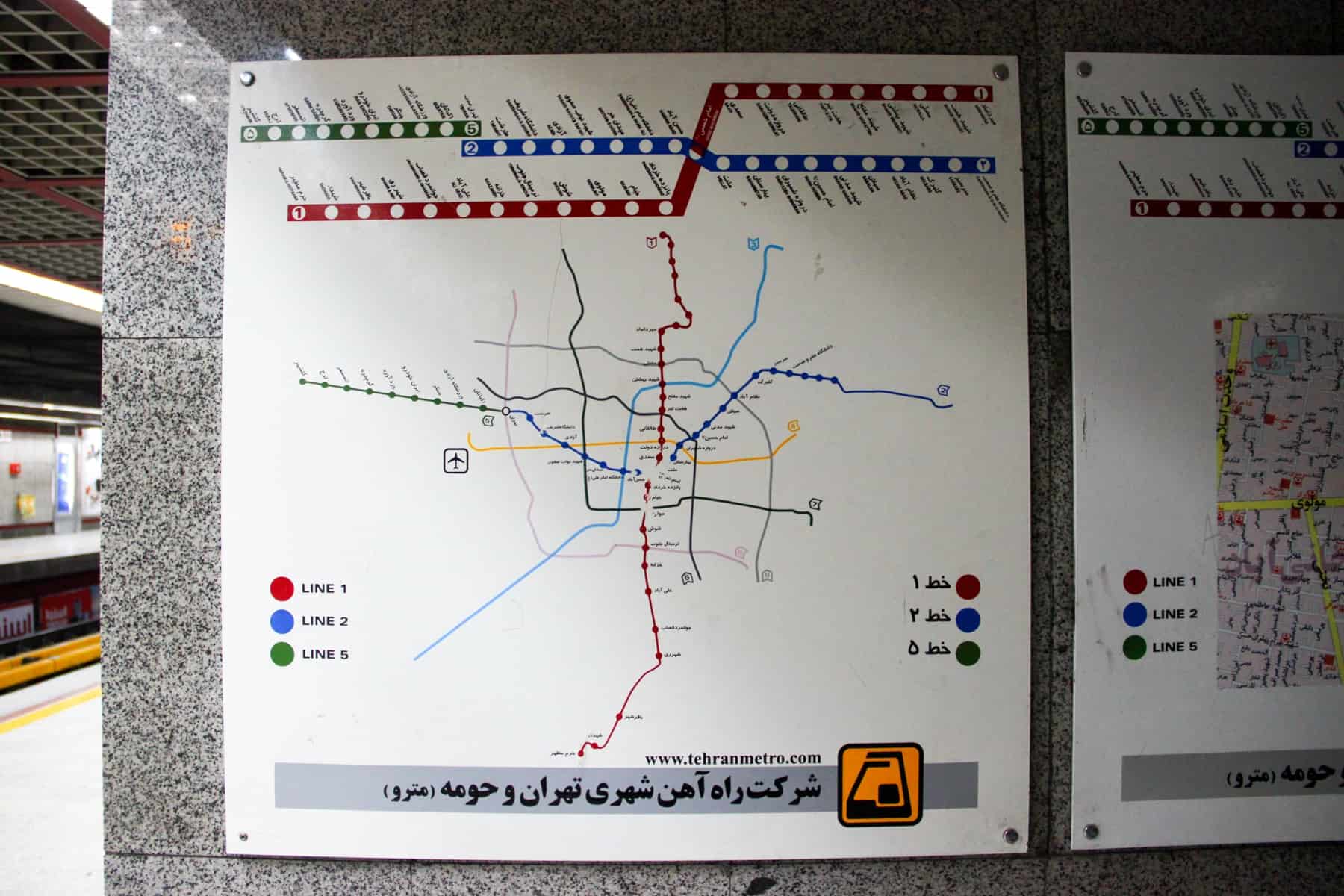
Tehran metro map and the three lines that cover the city.
You can find buses in every corner of the country. There are two main types of buses in big cities: regular and BRT. BRT buses are red, and because they have designated stations and paths, they are express buses. You can pay for the buses by your Metro card, and the fares would vary between 500 to 1000 Tomans (12 to 25 cents) per trip. You can find all the bus and BRT stations on Google Maps.
There are different types of taxis inside the cities:
- Shuttle/shared taxis (khatti): It is a way cheaper way to get around the cities. The two downsides are that they are for fixed destinations and you will have to wait for the taxi to be filled. The fares are also fixed, and you cannot negotiate.
- Private taxis (darbast): You can easily hail a taxi and say ‘darbast’. It means the driver will not pick any other passengers up and you must negotiate the price before getting on.
- Non-registered taxis (shakhsi): These are non-taxi drivers who you would easily spot from the yellow and green cabs. These are people who try to earn some money by giving people a ride. Again you must negotiate the price before getting on.
- Uber-like apps: Tap30 and Snapp are the two leading apps that you can easily use on your phone. Unfortunately, they’re not available on App Store and Google Play, but you can ask a local to help you with downloading them on your phone. Tap30 is available in many cities including Tehran, Karaj, Isfahan, Shiraz, Tabriz and Mashhad. Snapp is available in the same cities and also in Ahwaz and Qom.
- Bisim Taxi: You can also call the numbers 133, 1828 and 1833 in major cities in Iran to call a taxi wherever you are.
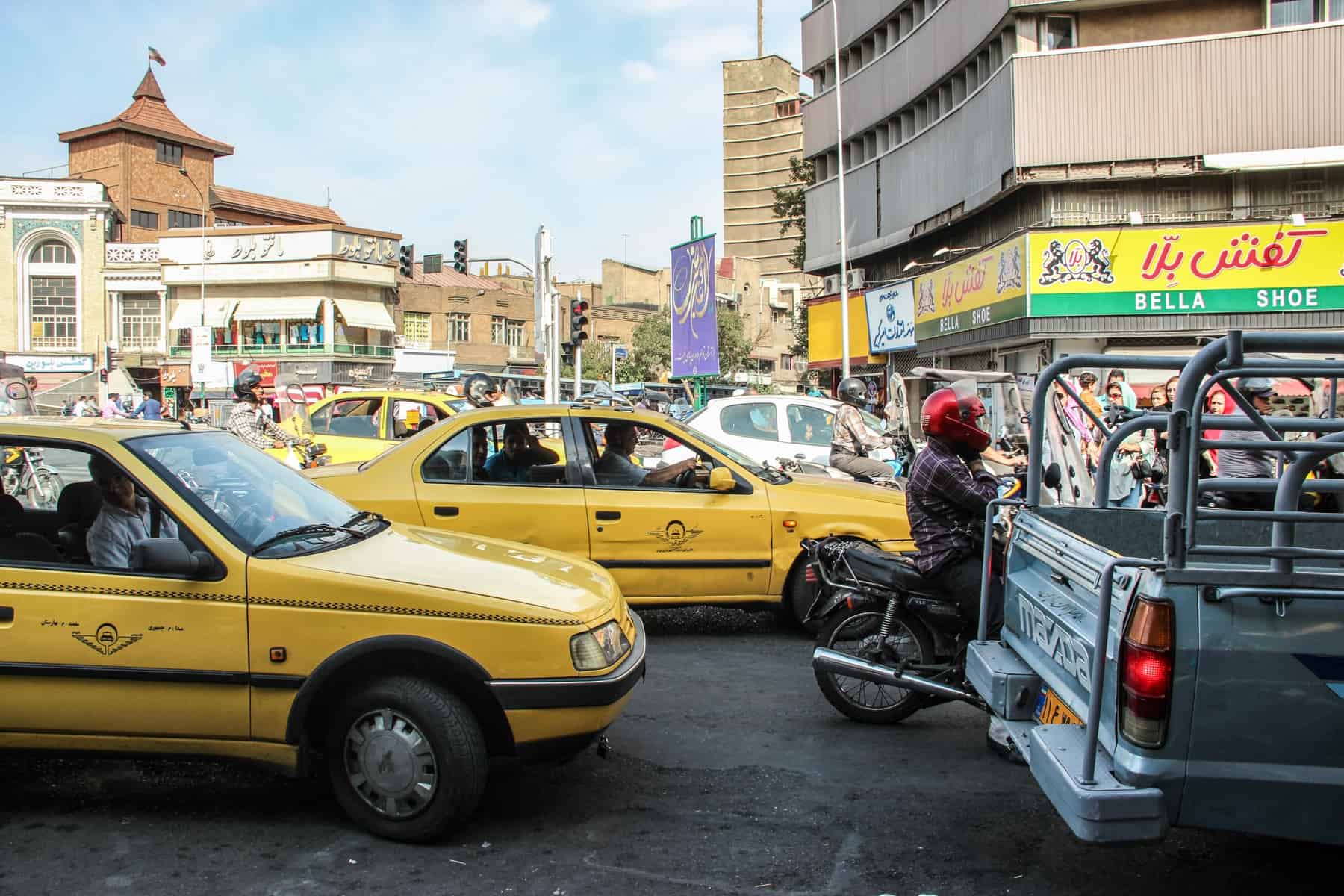
There are plenty of taxi options in Iran.
There are two types of buses between the cities in Iran: regular buses (44 people on board) and VIP buses (25 to 35 people on board). You have more legroom on VIP buses, and you can almost lie down on the seats. You can ask a receptionist at the front desk of the hotel, go to a local travel agency or go directly to the bus terminal to buy a bus ticket in Iran. The prices vary according to the type of bus and the distance. For example, the price for a VIP ticket from Tehran to Shiraz is around 70,000 Tomans ($16).
Using trains is the best and safest option to get around the cities in Iran. There are different types of trains: 4-bed, 6-bed and the so-called ‘bus’ trains. You can also ask if the train you are trying to take is an express train or a regular train. You can book trains through the hotels, local agencies or go directly to the train station. The price for a ticket from Tehran to Yazd, for example, is between 30,000 to 70,000 Tomans ($8 to $15).
You have two options to travel in Iran by a private car. You can hire a driver or a licensed driver-guide who can not only drive you from one city to another but show you the sites en route and give you all the information you need in English and other languages. You can find a driver-guide in Iran through TourHQ . You can either go to a taxi company or a local travel agency to hire a driver or a guide. Beware a killing machine in Iran named ‘Pride’ it’s a very low-quality car produced by Saipa company. It’s the worst car in Iran. Recommended cars in Iran are Peugeots and Samand by Iran Khodro Co.
Domestic flights
If you do not have much time on your hands and you want to visit the classic route (Tehran, Qom, Kashan, Isfahan, Yazd and Shiraz), it is recommended to take a domestic flight from Tehran to Shiraz. From there, you can continue your journey by other means of public transportation eventually back to Tehran. You can buy flight tickets from local travel agencies. The price of the flight ticket is approximately 180,000 Tomans ($40), and it takes around 80 minutes.
On the Metro: Generally, the cars are mixed gender, but if women need more privacy, they can get on the first and the last car on both sides.
On the Buses: In some buses, the women sit in the back and the men in front. Other times it is the opposite. However, a couple can sit together in the men’s section and not vice versa.
Different countries have different specifications, rules and warnings about travel to Iran – some way more dramatic than others. If you can, register or alert your foreign office about your whereabouts for safety and as a piece of mind measure. As a British citizen, with no embassy representation in Iran, this is more so a good idea.
Not that some travellers cannot secure travel insurance until they have alerted the relevant authorities of their travel plans. Hence, it is worth checking precisely who you need to inform before you depart, to be comprehensively covered.
Internet Access in Iran
Be prepared to take a forced ‘Digital Detox’ during your time in Iran. Internet in Iran is slow, all social media (except Instagram and What’s App) is blocked, and you usually are paying per hour for the privilege of a sluggish connection. While I sporadically got decent internet, which allowed my VPN to work, it was never superb. Want to look up sites in Iran? Super quick. Want to find some decent news in the outside world? Good luck.
Tell your family and friends that they may not hear from you that often, and be prepared to do without the connection, however hard it may be.
Irancell is the best phone operator in Iran which offers temporary SIM-cards designed for tourists. They offer a pre-paid 4G internet and credit balance, and when it is used up you can put in a new credit code sold at any supermarket all around Iran to increase your credit and buy internet packages.
You can only have only one VPN app on your phone, so you will need to test which one works best. For Android users, Hi VPN, Psiphon, Hotspot Shield are recommended, and for IOS users Psiphon, Free VPN, VPNProxyMaster and X-VPN are deemed to be the best VPN in Iran that work well at the moment.
Food in Iran (and Vegetarian Difficulties)
I had built up incredible visions of Persian cuisine in my mind before I got to Iran. I thought it would be everywhere – easily accessible and in abundance. Wrong.
Traditional Persian food is available, but you have to do some digging on where to go and find it. Try delicious vegetable and pomegranate stews, traditional Dizi (a lamb based strew where the broth is separated from the solids which are then mashed together and eaten separately) or Ash (a thick and tasty soup of lentils, beans, starch noodles, vegetables, fried mint, fried onion and yoghurt).
Other than that, you will realise that Iran’s streets are paved with fast food outlets, whose neon lights advertise the norm – kebabs, burgers and pizzas. Try and seek out the falafel places, since these are usually the best choice for a cheap and tasty fix.
Vegetarians have more of an issue. I travelled with a vegetarian and whether at a big buffet or a local teahouse or restaurant, what appeared to be the vegetarian option still had meat in it. It may mean living on aubergine/eggplant-based dishes, which are your safest bet, or begging for meat to be left out of your meal if not already pre-prepared.
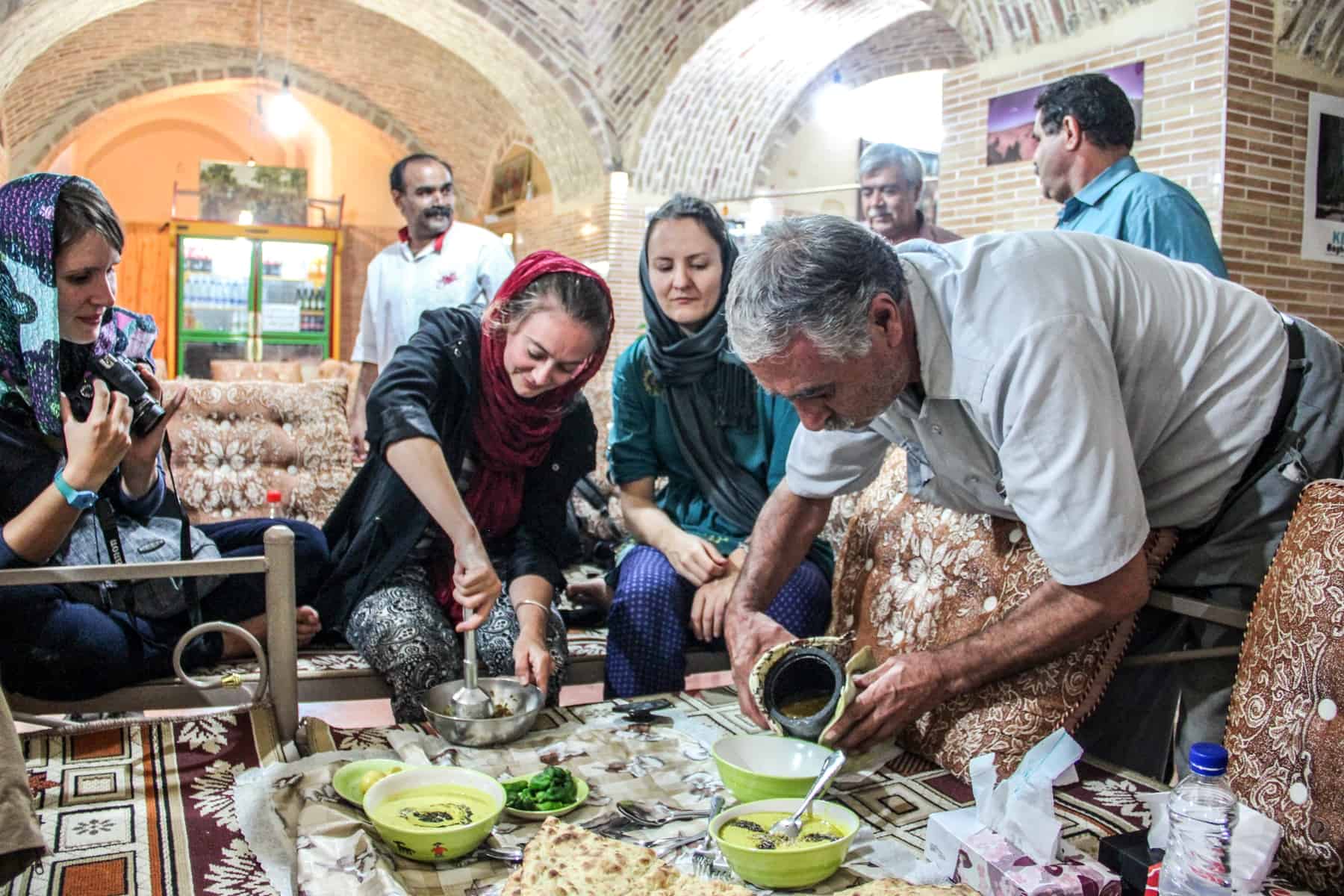
Food in Iran is better when locals show you real Persian cuisine.
There’s no alcohol in Iran. No bars, no clubs. Nothing. The best you get is non-alcoholic beer in a variety of fruity flavours like peach, lemon and strawberry which grace most menus.
There’s no set of different rules for travellers in Iran and those visiting. A local might be being kind in offering to find you the real deal at some underground gathering, but really, don’t take the chance. They might be able to waver the punishment; you won’t.
Like any country, it is crucial to know, understand and adhere to cultural and religious customs and rules that can often be very different from those at home. Here are the main rules for etiquette in Iran and interesting Iranian culture facts:
- One of the primary forms of social etiquette is TAROF, which is where Iranians usually insist on offering things to people and sometimes they do not mean it. However, you should not accept the first time.
- In Muharram month (the mourning month of Imam Hossein) people DO NOT usually wear bright colours (especially red) to respect the religious values.
- In Ramadan month , in which the majority of people keep fast during the day, it is disrespectful to eat and drink in public.
- In restaurants in Iran , it is incredibly unpleasant to see anyone clear their nose, especially loudly. In general, restaurant or not, it is also unusual to see somebody break wind.
- Shaking hands between men and women is a complicated topic. Generally speaking, it is not okay for men and women who are not related to shake hands. However, it is entirely relative. Usually, it is not advised for female tourists to extend their hand towards men, and it’s best to wait and see if the men do so first.
- The thumbs-up hand signal a derogatory sign in Iran, and it is best not to use it, especially in the presence of older people.
- When it comes to public displays of affection , you’ll see that affectionate touching, kissing, and shaking hands between men and women who are relatives are very normal. Iranian dating customs are more complex. You can kiss your significant other on the cheek, but french kissing strictly goes beyond the line. Holding hands is not something one would raise an eyebrow about at all, whereas hugging, on the other hand, would seem to be crossing the line a little. It is relative as to what extent the public display of affection is tolerated. For example, inside holy places and religious cities, it would not be easily tolerated.
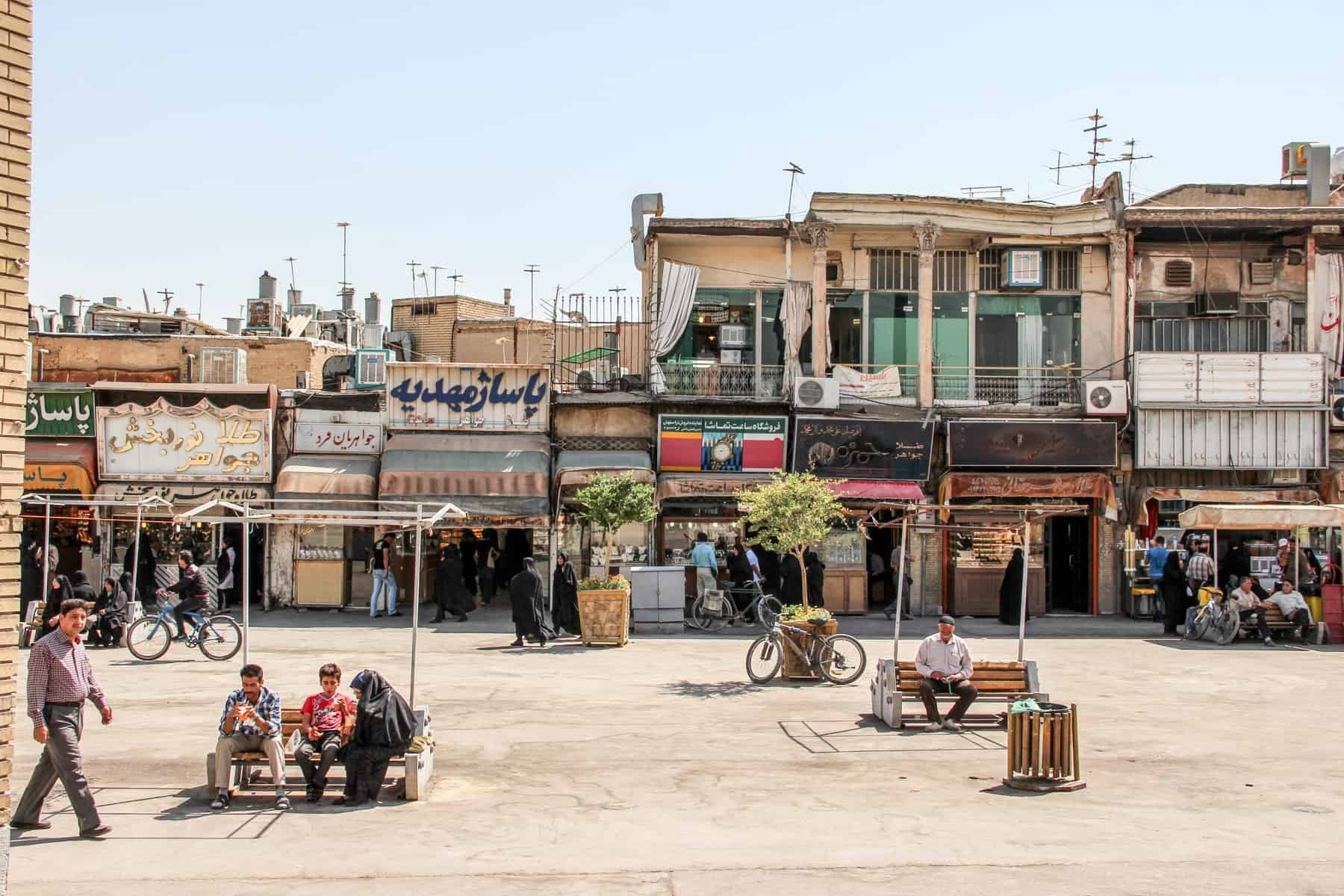
Wherever you are in Iran, it is important to adhere to cultural and religious customs and rules.
‘Persian Time’ is much like ‘Asian Time’ – things take much longer than you expect. When you travel Iran you’ll soon see that service is slower and the times you are given for things, like an arrival at a destination, are not always clear or roundabout correct, like this example:
Guide: “It takes four or five hours. So if we leave at 8 am, we will get there around 4 pm.”
Me: “But that’s eight hours, not four.”
Guide: “Yes, it takes about eight hours. We will stop at x, y and z on the way and arrive around 2 pm.”
In short, don’t rely on or worry about time, and pack a bit more patience than you would at home, especially when it comes to food, service and paying.
Ancient Persia isn’t an easily absorbed history lesson. While your guide (if you choose to have one or if you are a part of a tour group) will spout a level of information that will blow your mind, it is worth reading up on the history of Persia, as well as details on the lead-up to the Iranian Revolution in 1979. This will give a valuable understanding of the basic makeup of the country.
It will mean names like Zoroastrian, Cyrus the Great, the Achaemenid Empire, Reza Shah, Ayatollah Khomeini and Ayatollah Khamenei won’t be lost on you when you go to Iran.
Great books to read before you arrive include:
- Revolutionary Iran: A History of the Islamic Republic for a guide on the more recent history
Iran: What Everyone Needs to Know is by the same author, Michael Axworthy, and tries to explain how there’s more to Iran than its foreign relations, with part of the book also unravelling Iran’s economy, politics, culture and people.
Daughter of Persia: A Woman’s Journey from Her Father’s Harem Through the Islamic Revolution is about a woman who was born in Iran, left to study in the States and returned to a country in the grip of profound change.
- The Wind in My Hair: My Fight for Freedom in Modern Iran about a journalist in exile after being arrested for political activism
Best for when on the road:
- Easy reference for most of us came from the Lonely Planet Iran guide book . While it shouldn’t be your sole source of information, this particular Lonely Planet is a quick fix Iran travel guide, especially for historical hotspots. Having this paper guide was a handy resource for the entire trip, especially since quick access to the internet in Iran both at the hotels and while on the road is very limited.
Have you been to Iran? Are there any other pre-departure tips you would add? And if planning a trip there, and what difficulties are you facing, if any?
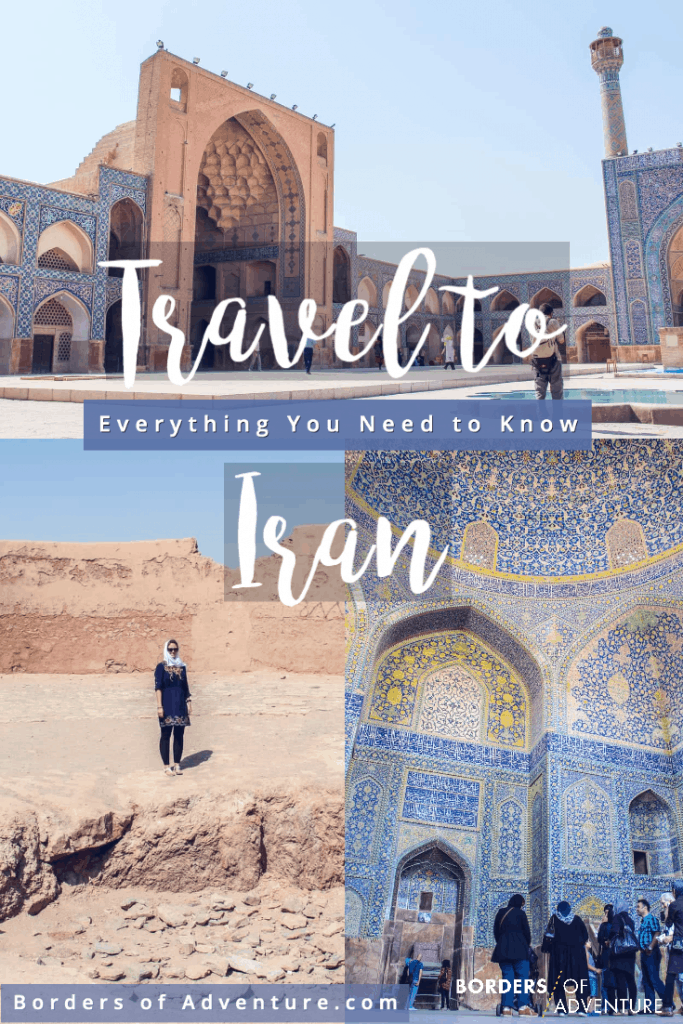
Any plagiarism of this Iran travel blog or any of its descriptions used on other sites and blogs without attribution is not information authorised by myself for use. Know your source.
About Becki
Becki Enright is a British Travel Press Award-winning writer whose work focuses on changing perceptions about misunderstood aspects of destinations. Her writing combines storytelling with insight into the social, historical, political and economic factors that shape the country or place in relation to tourism. Becki has appeared live on Sky News and CNN and has contributed to high profile media including National Geographic, Time.com, Guardian online, New York Times, Grazia and Buzzfeed.
Marcela says
19 April 2022 at 7:42 pm
Hi, is it possible to rent a car without a driver in Iran? Thanks, I loved your post!
28 April 2022 at 11:39 am
I think you can, yes! However, it isn’t something I know much about.
Hanieh says
28 March 2022 at 8:19 pm
Iran and Tehran are great🤩
7 August 2021 at 4:02 pm
Hello. I want to thank for this text. It is completely true about Iran and I as an Iranian approciate that describe Iran and Iranians truly. I really enjoy it. Most of Iranians think people of world consider us as a terrorist country while people of Iran differ from Republic Islamic Iran.
Miranda says
24 October 2019 at 8:53 am
I really like to travel to Iran, but I don’t know when is the best time to travel there, what is your recommendation?
24 October 2019 at 10:52 am
Hi Miranda. All the details are in the article. You can find an overview of the best time to visit Iran here: https://www.bordersofadventure.com/travel-to-iran-things-to-know/#When_is_the_Best_Time_to_Visit_Iran
- Article Archives
- Work with me
- Privacy Policy


Travel to Iran: 30 Tips for Traveling to Iran
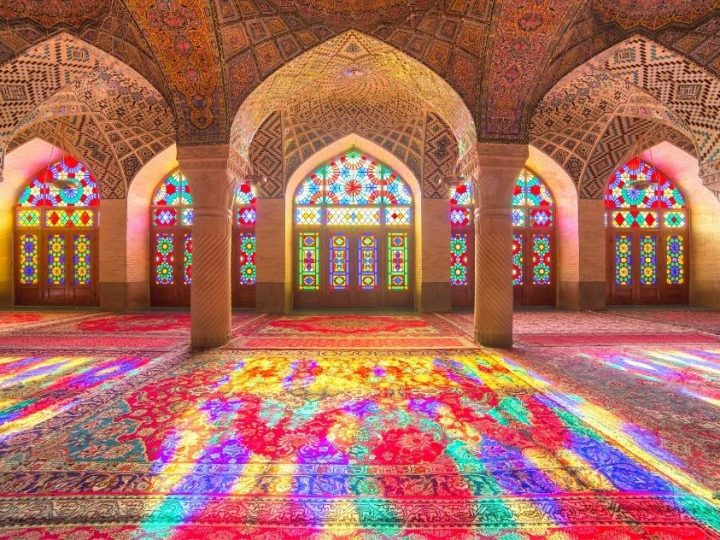
Unlike what you can see in the media, Iran is one of the friendliest countries I’ve ever visited. I think everyone should travel to Iran to experience incredible hospitality, see vibrant cities, discover mystic deserts and eat delicious food. Why?
Did you know that Iran hosts nineteen UNESCO World Heritage Sites ? There’s so much to see that even if you spend a month traveling around the country, you won’t see everything that the country has to offer. Iran has it all. If you plan to travel to Iran, here are my best tips.
I traveled to Iran independently, on my own and without a tour group. While I was able to travel around the country on my own due to my EU passport, even if you’re from the UK or US and require to do an organized tour you could hire a guide and create your own itinerary. So not all is lost! 🙂
Many blogs are blocked in Iran, so if your VPN isn’t working for some reason you won’t be able to access some sources again. Fortunately, my website isn’t blocked, so you can re-read my articles when you’re already in Iran as well.
Traveling to Iran: Things to Know Before You Go
1. iranians aren’t arabs.
One of the most important things to remember is that Iranians aren’t Arabs, they’re Persian. They speak Farsi (and other dialects), not Arabic, and some people might feel offended if you great them with Arabic words.
Since the Arab invasion of Iran, Farsi has been written in Arabic letters with slight differences. While a lot of Arabic words have made it to the Persian dictionary, it doesn’t mean that an Arab can understand Farsi or the other way around.
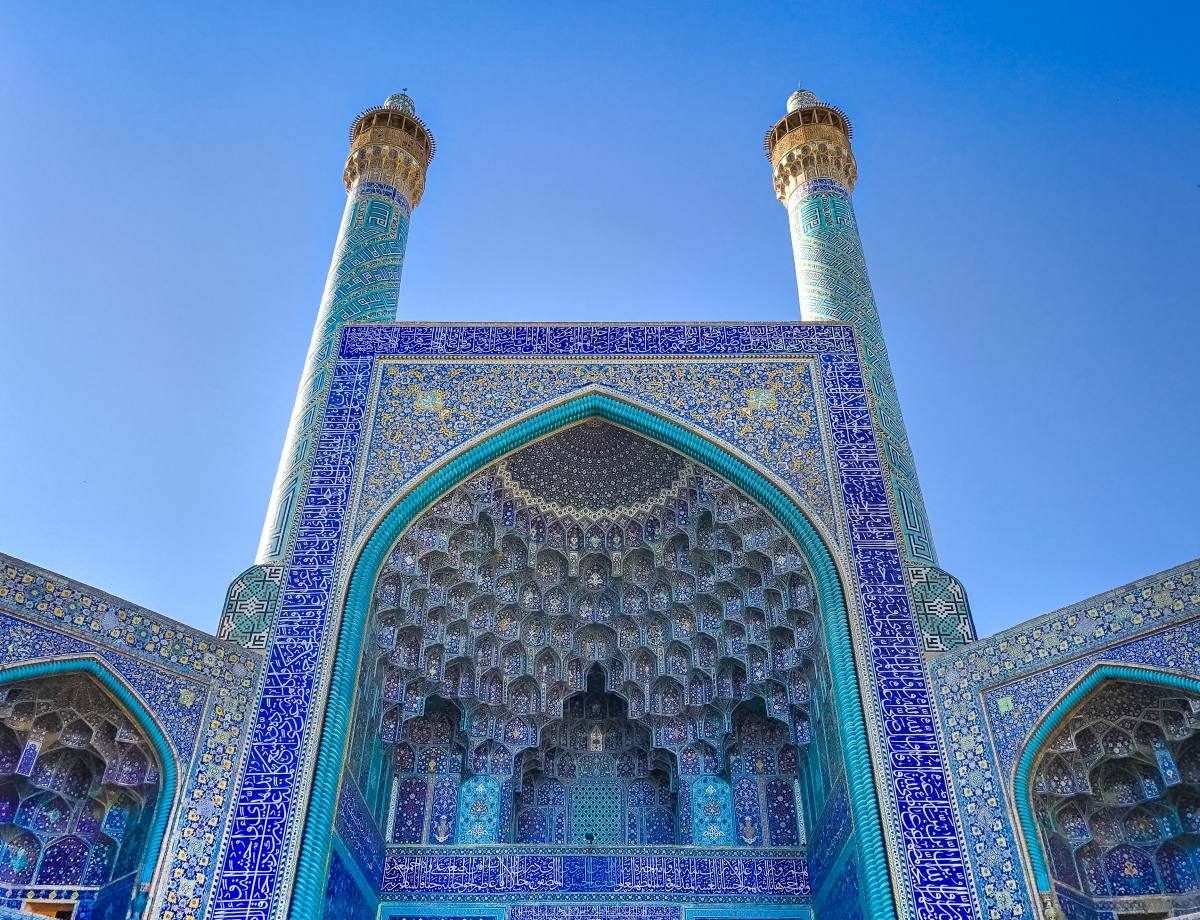
2. What’s The Best Time to Travel to Iran?
Iran is a big country, so temperatures differ. For instance, when I was visiting Iran in late March it was freezing cold in Tabriz and Tehran, but very warm in Esfahan.
During the summer, temperatures frequently break into the 40’s (C), so it might not be the best time to visit. Especially since you need to be covered up head to toes.
I’d say that the best time to visit Iran is spring (late February – late May).
The worst time to travel is the 2-week long Iranian New Year holidays called Navroz (for 2018: 21st March – 4th April) . I was actually in Iran during these holidays and it was, in fact, the worst time to visit. You won’t be able to stay with many locals as everyone is visiting families and many places are closed.
3. Iranian Don’t Hate Americans
One of the biggest myths in Western Media is that Iranians hate Americans. I only encountered one posted at a mosque in Tehran. But after a few conversations with people around the mosque, I quickly realized that they all agreed that some group of weirdos put it there and no one really thinks that.
I had endless conversations about it with many locals and none of them expressed any hate towards Americans. In fact, American movies were shown on a local bus and people love to drink Coca-Cola.
4. Iran Is a Great Place for Backpacking
Many people don’t consider a country like Iran to be good for backpacking. But they’re wrong. Iran is the ultimate backpacking destination. Iran is cheap, it has hostels in major tourist places, cheap hotels and guesthouses in others, comfortable buses, and friendly locals. What more can you want when you backpack…?
I’m usually not a fan of backpacking and hostels. But backpacking in Iran is different than in some other popular places. Travelers were more mature, interested in different cultures, and not just in partying and taking usual selfies in the morning. I might be biased, but when I backpacked in other places I was rarely able to find people who wanted to join me for a trip to the museum. Not in Iran.
5. How Much Money Do I Need to Travel to Iran?
Iran is a country that offers great value for money, even more so these days. But money is one thing you really need to plan on if you’re going to Iran, as foreign card won’t work in any ATM and you cannot pay by card. Similar to Cuba , Iran is a cash country.
Bring EUROS, not US Dollars. Many websites and travel blogs will tell you to bring only Dollars. Thankfully, I had Euros too. Dollars were very unwanted (I imagine after Trump’s travel ban ). While some people still accepted them, it wasn’t easy.
I spent approximately $20-40 per day while traveling solo and with a friend, I met on my first day. It wasn’t an extreme budget trip and we weren’t restricting ourselves. I recommend planning on bringing more, just to be safe. This will allow you to book a double room in a budget hotel, local meals, taxis and taking buses everywhere.
Remember that Iran has beautiful Persian carpets and you might want to buy one. My friend and I both bought carpets, so I was happy that I had some spare cash with me. Prices for a rug range between $100-800 depending on the size.
Click Here for official / street exchange rate history.
NOTE: Iran recently introduced a special pre-paid debit cards for foreign travelers called Mah Card . It’s a great solution for those who don’t want to carry too much cash around. You can sign up online and they’ll meet you at your hotel upon arrival, issue your card and deposit your foreign currency into your Mah Card.

6. Currency in Iran is Very Confusing
Rial is the official currency, but all prices are in Toman. It gets a bit confusing and you’ll most likely get a real hang of it right before you leave.
1 toman = 10 rials
But it’s not just that simple. If someone asks you for 20 it means you need to pay 200 rials, but I also encountered 20 meaning 20,000 as they just don’t want to deal with zeros.
7. You Can Get Iran Visa at the Airport OR Beforehand
If you’re worried about the hassle of getting a visa to Iran, fear not! Citizens of many countries are eligible for a visa on arrival for up to 30 days. See rules and documents required in my other post .
If you’re illegible to travel around Iran on your own, you can consider taking the Discover Persia 14-day G Adventures tour , which I’ve heard good things about. The tour doesn’t chaperone you 24/7 and you’ll have some free time, so even if you’re not a group trip person, you’ll be fine. Check here for the latest Discover Persia tour prices and itinerary .
Another option would be Iran tours from Intrepid. They have a few options available, so check the latest dates and prices here .
If you’re a US citizen or resident I suggest contacting 1st Quest to obtain a visa. They’re the best and quickest when it comes to arranging visas online, not only to Iran.
Travel Insurance for Iran:
You won’t be granted a visa without valid travel insurance. And in case you’re wondering EU insurance cards won’t work, as they do check whether your policy is actually valid for Iran. While you can technically buy insurance at the airport, you’ll have to stand in another line to do so. This is why I recommend 1st Quest . It’s valid for Iran and it’s reliable.

8. Iran is Safe to Travel
Apart from what media portrays Iran is safe. I actually felt safer in Iran than during my last visit to NYC. Also, once you meet some friendly Iranian (within 10 minutes of your walk outside of the hotel), they’ll make sure that you as a foreigner have everything you need.
I never encountered people being so helpful anywhere else in the world.
Random strangers will get off the metro with you at the wrong station for them to show you the right way. They’ll escort you to your seat on the bus to make sure that you find everything right and don’t miss it. They’ll guard your stuff too.
I only felt unsafe once, in Esfahan at night, but nothing happened.
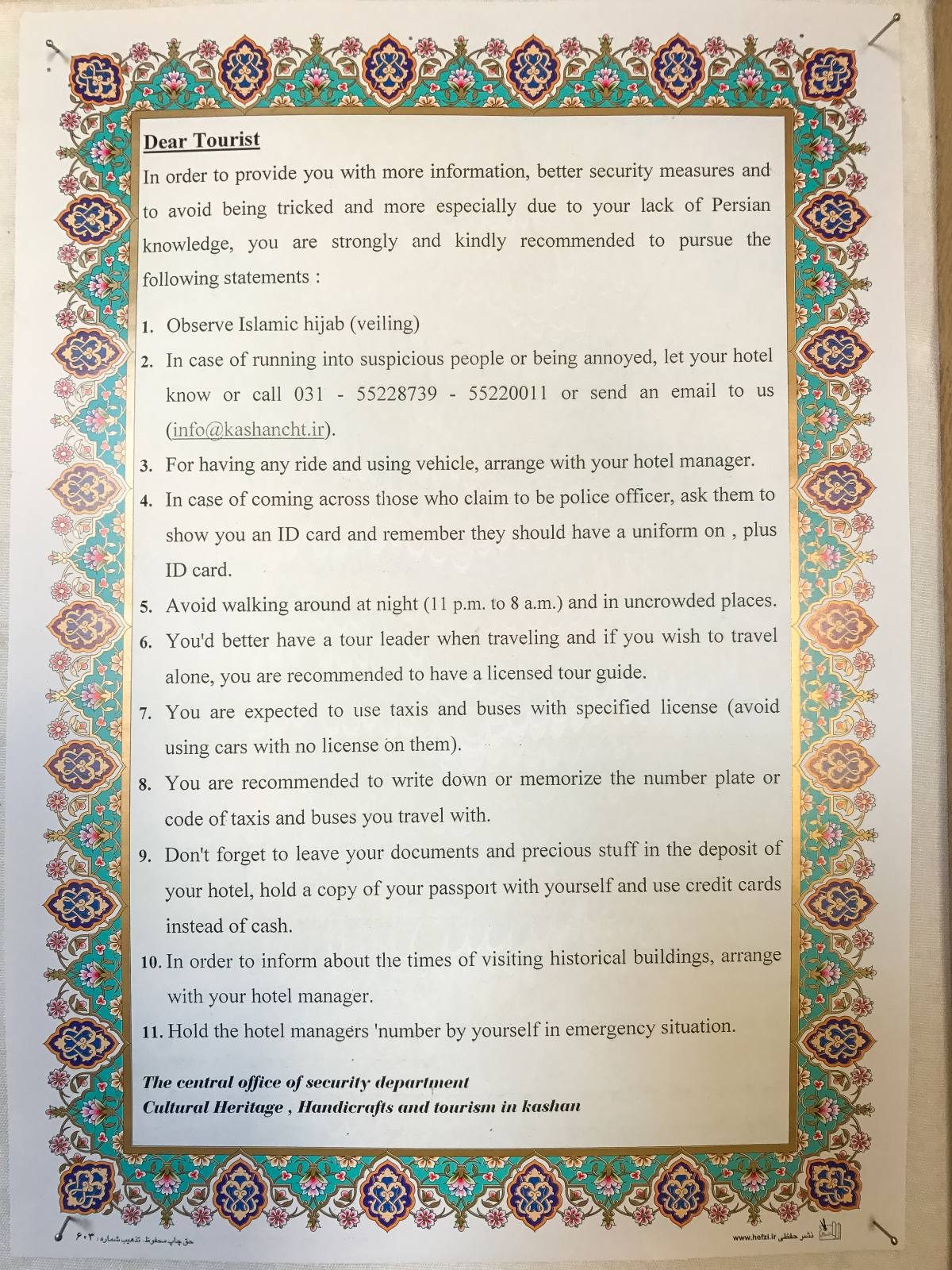
9. Crossing the Road is Probably the Most Dangerous in Iran
Crossing the road in Iran is terrifying. Seriously, I’d never want to drive in Iran as traffic rules seem to be some sort of general guidelines. If you want to cross the street, whether it’s a crosswalk or elsewhere, you need to just start walking and pray that the cars will stop.
If you’re going to wait till cars stop you might as well be waiting until next year, as they’ll never stop before you’re actually halfway through. Your best bet is to maintain eye contact and look like you know what you’re doing.
10. Be Prepared for Some Crazy Drivers
You might get a heart attack in a taxi, as Iranian drivers are crazy. So don’t even attempt to drive yourself, even if your new friends offer. I mean, just take a look at this photo below proving that it’s totally fine to stop in the middle of a roundabout to have a chat…
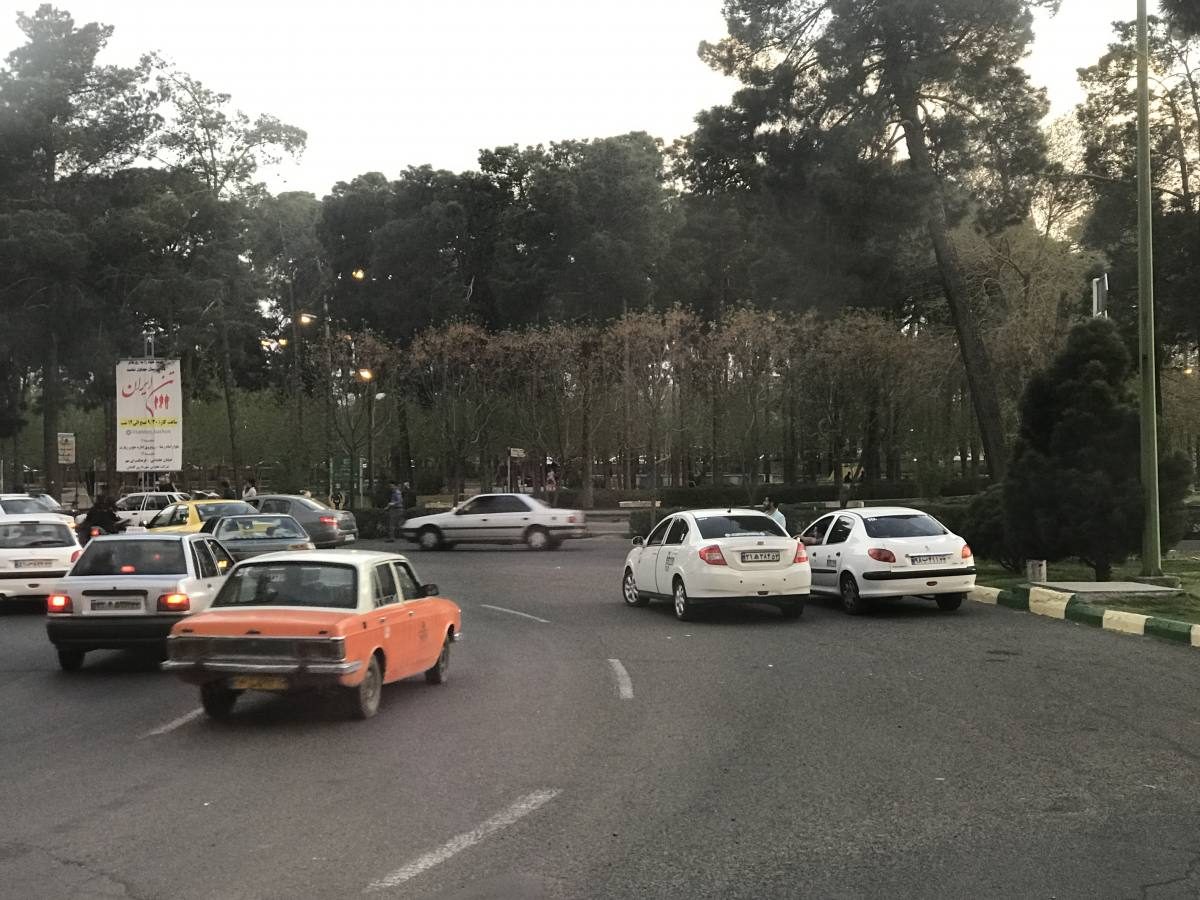
11. Hotels Will Keep Your Passports Until You Check Out
Hotel receptions will keep your passport and give it back to you upon check out. Some people might be afraid of that, but they really keep it safe. Make sure you always have a copy of your passport though!
12. There’s No Good Guidebook for Iran
I’m usually not a fan of traveling with a guidebook. I did it once with Rick Steves’ guide to Slovenia and Croatia and every place mentioned was either overcrowded or overrun by tourists. But I understand that some people prefer to have a guidebook and for a country like Iran, it might come in handy.
While Lonely Planet’s Guide to Iran is still a bestseller, it’s also very outdated. The newest edition came out in September 2017 . Many restaurants and guesthouses mentioned there closed down and I found that often travel times and bus schedules are wrong. BUT and I thickened and underlined ‘but’ on purpose, the guide is still all right and helpful when traveling to Iran.
I still recommend getting a copy, but taking into consideration that some things might not be up to date and double-check.
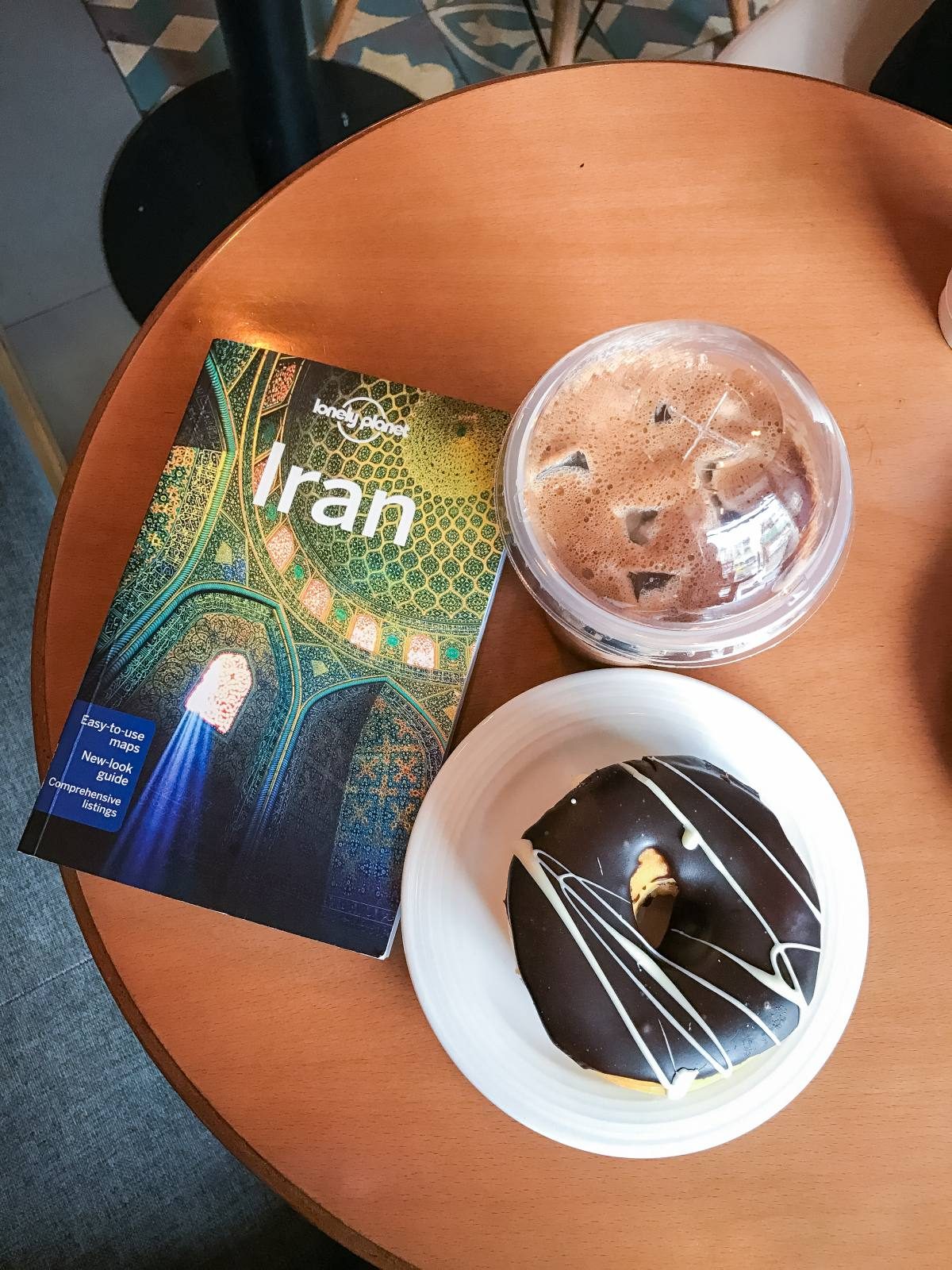
13. Women Must Wear a Headscarf
Iran is officially the Islamic Republic and both women and men must follow the dress code rules (yes, it’s not just for women). Men shouldn’t wear shorts, and women need to cover up their hair with a headscarf and their body.
I was quite worried about having my entire scalp covered at first, but I quickly realized how ‘relaxed’ the rules are. Many young women just cover only the top of their hair.
Iranian women are super stylish, so if you’re wearing baggy elephant pants you’ll feel out of place – believe me! Also, bring a short skirt or dress as well, as in private homes women quickly change into tight shirts and skirts. You’ll look ridiculous in your conservative clothes inside and everyone will ask you why don’t you change.
14. You Need a VPN to Browse the Internet Freely
While there’s the internet in Iran, similar to China, you’ll need a VPN in order to see certain websites. You’ll need to install a VPN (a virtual private network) in order to access a certain website. Facebook, Twitter, and YouTube are blocked in Iran. Travel blogs who wrote about Israel are also blocked in Iran.
What’s not blocked? You’ll be able to access your Gmail account without any issues. The most popular social network in Iran is Instagram which isn’t blocked. I find it slightly ironic, knowing that Instagram is owned by Facebook that’s blocked in Iran.
Make sure to do your research and check out my other post, as not all VPNs will work in Iran.
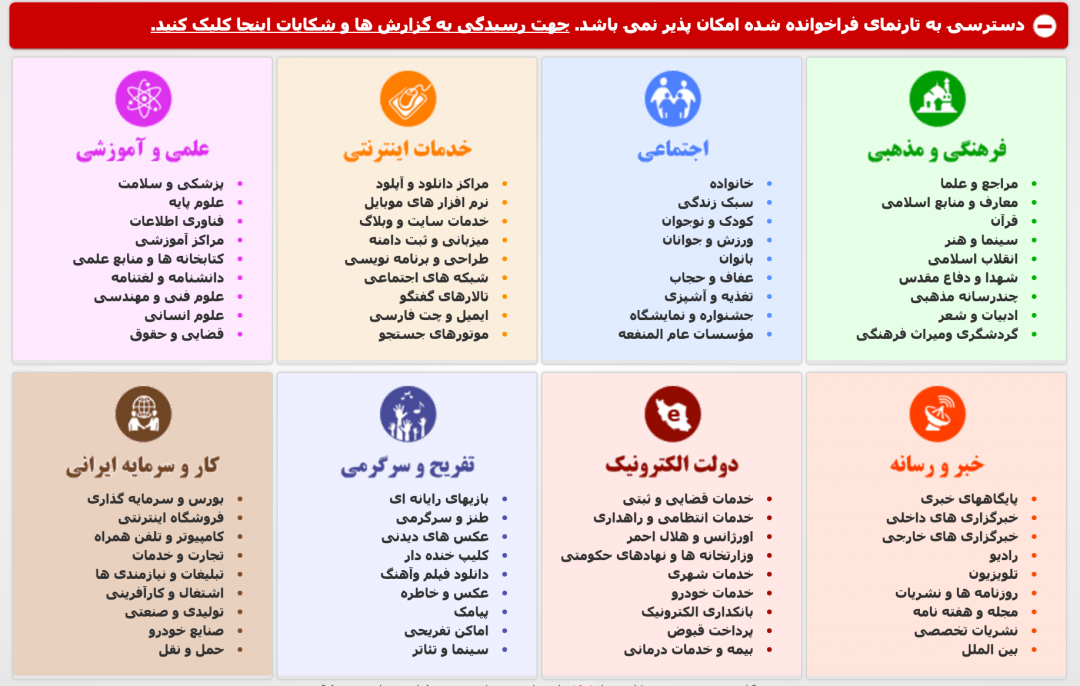
15. Get an Iranian SIM Card
Iranian SIM is cheap and you might find yourself in sudden need of Google Maps, so I highly recommend it. You can ask at your hotel/hostel where is the nearest Irantel. The basic SIM costs 10 Euros and includes 2 GB of internet.
You might also download the Telegram app if you want to make staying in touch with your new Iranian friends as smooth as possible. Iranian use this app to communicate, instead of texting, as it’s encrypted.
16. Toilets are Everywhere, but…
First things first, don’t ask for a toilet. Ask for a WC, as that’s the word used by Iranian.
Prepare yourself for squat toilets. Even many hotels don’t have western toilets and you can forget about them even in fancy restaurants. Don’t forget to bring a roll of toilet paper with you. It’s rarely provided outside private homes, and even in less expensive hotels, I was lacking a roll in my bathroom quite often.
17. Stay with Iranians if you can
Without a doubt, the most enjoyable part of backpacking Iran is having the opportunity to stay with locals. While Couchsurfing is technically illegal is widely used, so even if you’re not a couchsurfer you might give it a go. YES – it’s safe to interact and stay with locals in Iran. Everyone is extremely hospitable and they’ll invite you to stay multiple nights.
My friend and I were stopped on the street by locals on many occasions who were offering us to stay with them, wanted to buy us lunch, inviting us to birthday parties and weddings. While it obviously doesn’t happen in the Western world and might seem strange at first, it’s Iranian culture. Just say yes. You’ll see a completely different Iran – trust me.
Note that Americans, British, and Canadians citizens are forbidden from entering local homes, leave alone staying with them.
18. Don’t be Afraid of Asking Iranians Some Personal Questions
If you’re curious about something, don’t be afraid to ask Iranians about it. My friend and I met a group of girls in Kurdistan with whom we had some deep conversations about cultural differences, their lives, and our lives. It was really eye-opening and I’ve learned a lot.

19. If You’re Vegetarian, I Hope you Like Eggplants and Lentils
While my opinion can be totally bias and connected to the fact that I visited Iran during national holidays, I was having issues finding some vegetarian dishes in Iran. Leave alone if you’re vegan. Outside of the popular tourist route, vegetarian options were out of questions and even a milk cinnamon soup contains meat.
But if you’re sticking to the tourist route (Tehran – Kashan – Esfahan – Yazd – Shiraz) you’ll be able to find restaurants offering eggplant ragout, or eggplant mousse. I also saw lentils on the menu quite often, but double-check with the waiter if they contain meat as some portions might.
Overall, I wasn’t impressed with Iranian food at all apart from a few dishes. I blame it on bad timing of Navroz holidays and the fact that I’m not a big meat eater and all salads and yogurts were served with cucumbers that I’m allergic to, so I couldn’t eat them either.
But you might change your might if you attend some home-cooked meals or food tours. I found out about Persian Food Tours from locals, but unfortunately, I already left Tehran when I did. Let me know how is it if you decide to do it!
20. Forget About Alcohol in Iran
If you’re into traveling and getting drunk on the way, Iran might not be a place for you. There is no bars and alcohol can’t be found normally, unless you really know how to look for it (not recommended). If caught drinking alcohol, you could be looking at some jail time or a fine. But don’t worry – water bottles look like flasks of vodka.
Having no alcohol doesn’t mean that you won’t be able to party and have fun. I’ve attended a birthday party and it was great to see how Iranians can entertain themselves without a drop of alcohol. We danced, we talked – it was fun!
You’ll actually often see a beer on the menu, but it means nonalcoholic. It also has different flavors, so you might as well try it.
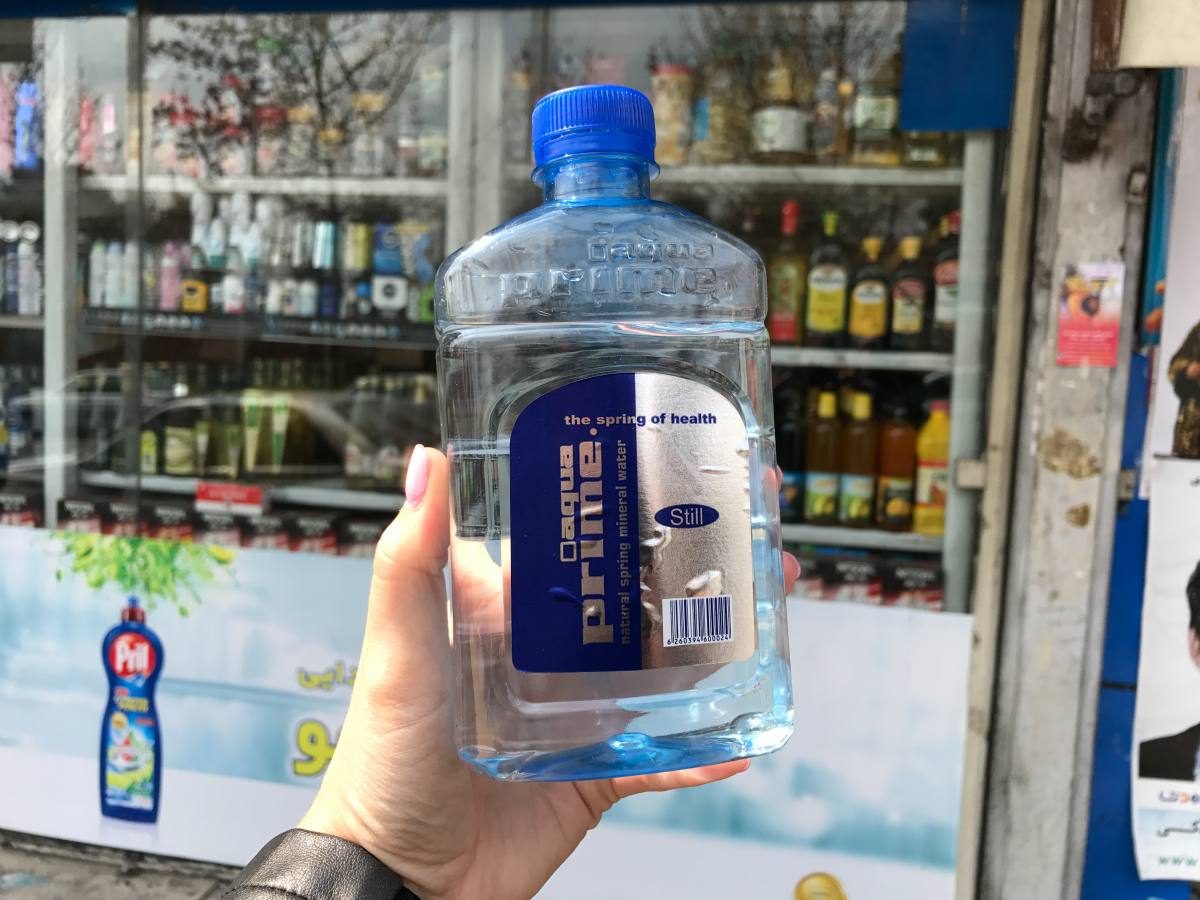
21. Restrain Yourself from Public Affection as a Couple
As in any other conservative country, PDA is not well seen. While it’s technically not illegal, you shouldn’t be holding hands with your loved one, or kissing in public places.
22. Everyone Will Approach You and Talk to You
While having random strangers approach you isn’t common practice in other countries, it is in Iran. People often strike up random conversations with foreigners to practice their English.
23. Take Your Shoes Off Everywhere in Iran
No matter if you’re staying at a fancy hotel, guesthouse, hostel or someone’s home, take off your shoes. No one wears shoes inside. At restaurants with traditional seating, you’re required to take your shoes off before jumping on a seat.
24. Shop at Iranian Markets
Bazaars play a huge part in Iran’s day-to-day life and you can find them pretty much in every city and small town. The largest bazaar in the world (UNESCO World Heritage Site) is in Tabriz, where I actually bought my carpet.
If you don’t want to shop, don’t skip the markets as they’re usually beautiful even to wander around. With high ceilings and mosaics, you can walk around for a while admiring the architecture.
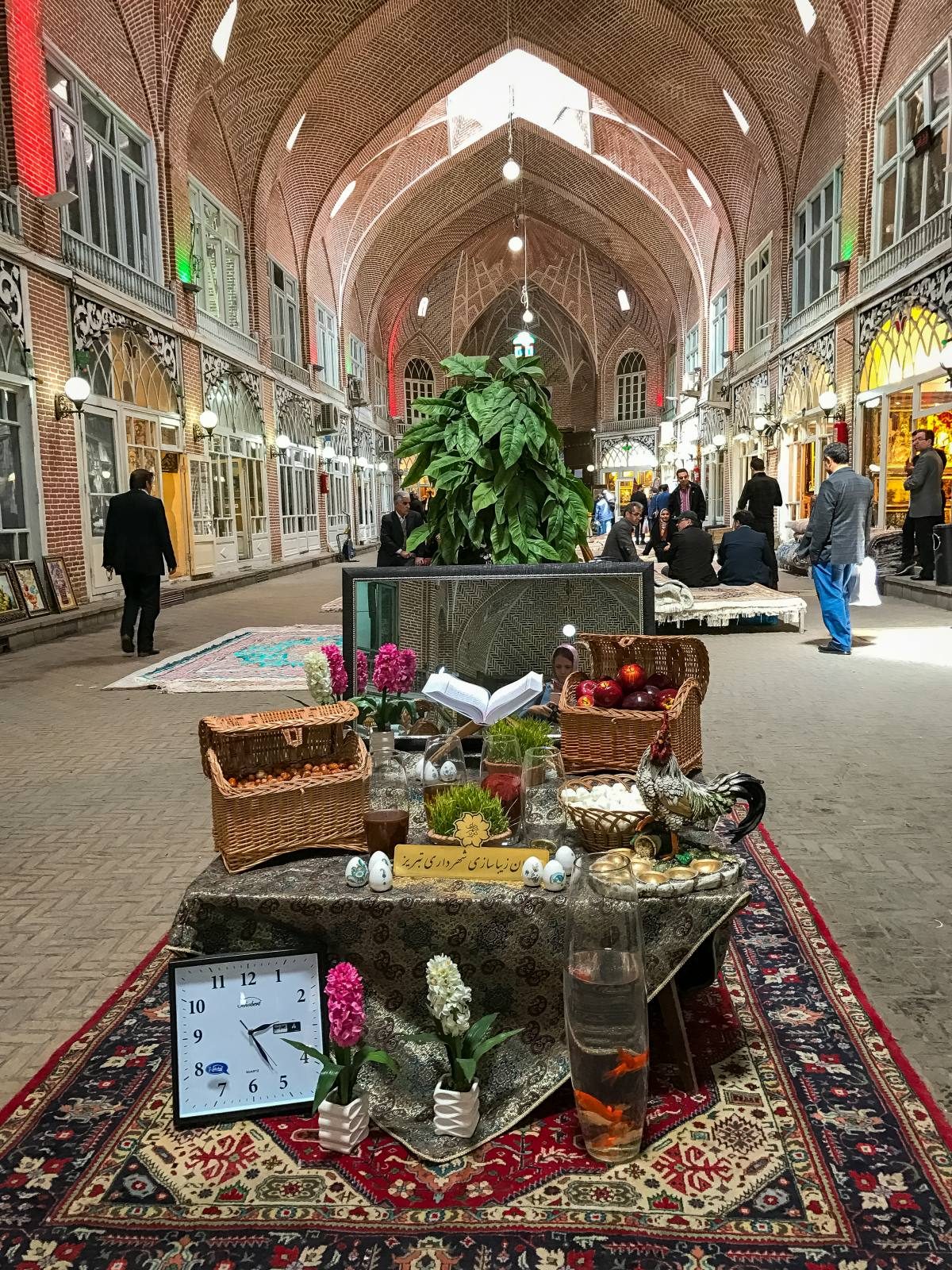
25. There are Men and Women Sections in the Metro and Buses
I often compare the situation in Iran to Mexico , where you also have co-ed carriages and women-only carriages. It’s marked special on the platform with a yellow line on the floor.
But that’s just in theory, as during rush hour in Tehran I’ve seen many men entering women-only carriages with their wives and people telling us that it’s ok for our male friend to come with us. Why? I’m not sure.
26. Prepare for Selfies & Celebrity Treatment
Iranian love taking selfies and they’ll often ask you to take one with you too. I probably ended up on over 500 selfies over the course of 2 weeks, so be prepared for it even if you hate them. Iran was probably the only country where selfie sticks are the best item to sell.
As a foreigner, you’ll also be the center of everyone’s attention. In less or almost no-visited places, like Sanandaj, I encountered a woman who literally screamed with excitement ‘OMG tourists are here!’ when she saw my friend and me on the street.
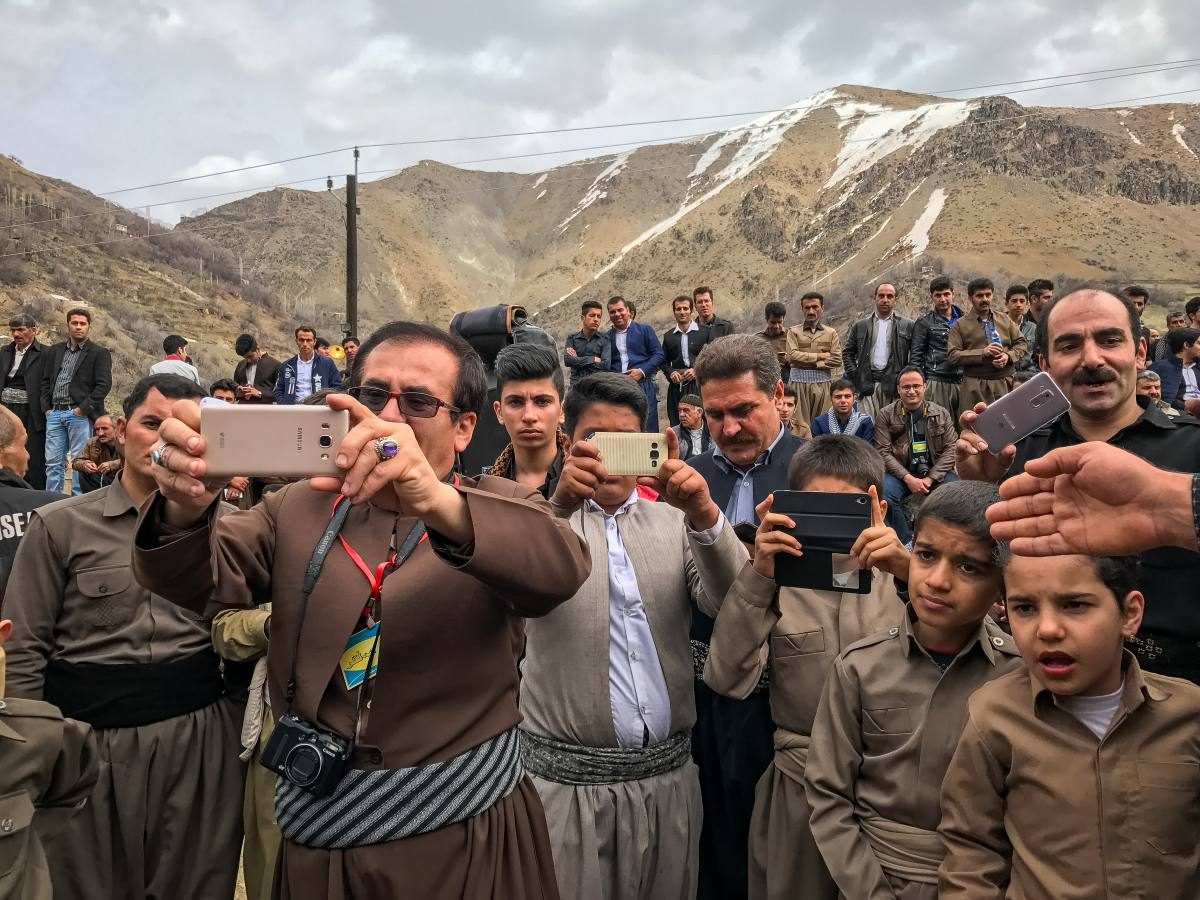
27. Don’t Blow Your Nose in Public
Thankfully, it was a rule I read about before as I’d have totally humiliated myself. Don’t blow your nose in public. It’s considered gross. If you must, do it in the bathroom.
28. Don’t Believe that Buses Don’t Stop for Toilets and Food
Before going to Iran I read many articles telling me that long-distance buses don’t stop for anything unless it’s specifically requested. As someone with a small bladder, I was quite terrified.
It turned out not to be true. Every bus I was on (and I’ve really taken many) has stopped for a toilet break many times and sometimes even for an hour for dinner. Don’t worry about it, but remember that there’s no toilet on the bus!
29. Learn to Drink Tea in an Iranian Way
Forget about the way you drink your tea at home. In Iran, you need to try to drink it with locals, which means that you’ll drink some sweet tea. By that, I don’t mean you put a sugar cube in your teacup. You need to put a sugar cube in your mouth and drink the tea ‘through’ that, holding it in.

30. Iran Has the Creepiest Mannequins in the World
Chucky Doll was an angel comparing to Iranians mannequins. I could seriously create an entire collection of Children of Corn in Iran, and if you’re passing some clothing stalls for kids in the dark beware – you might have some nightmares!
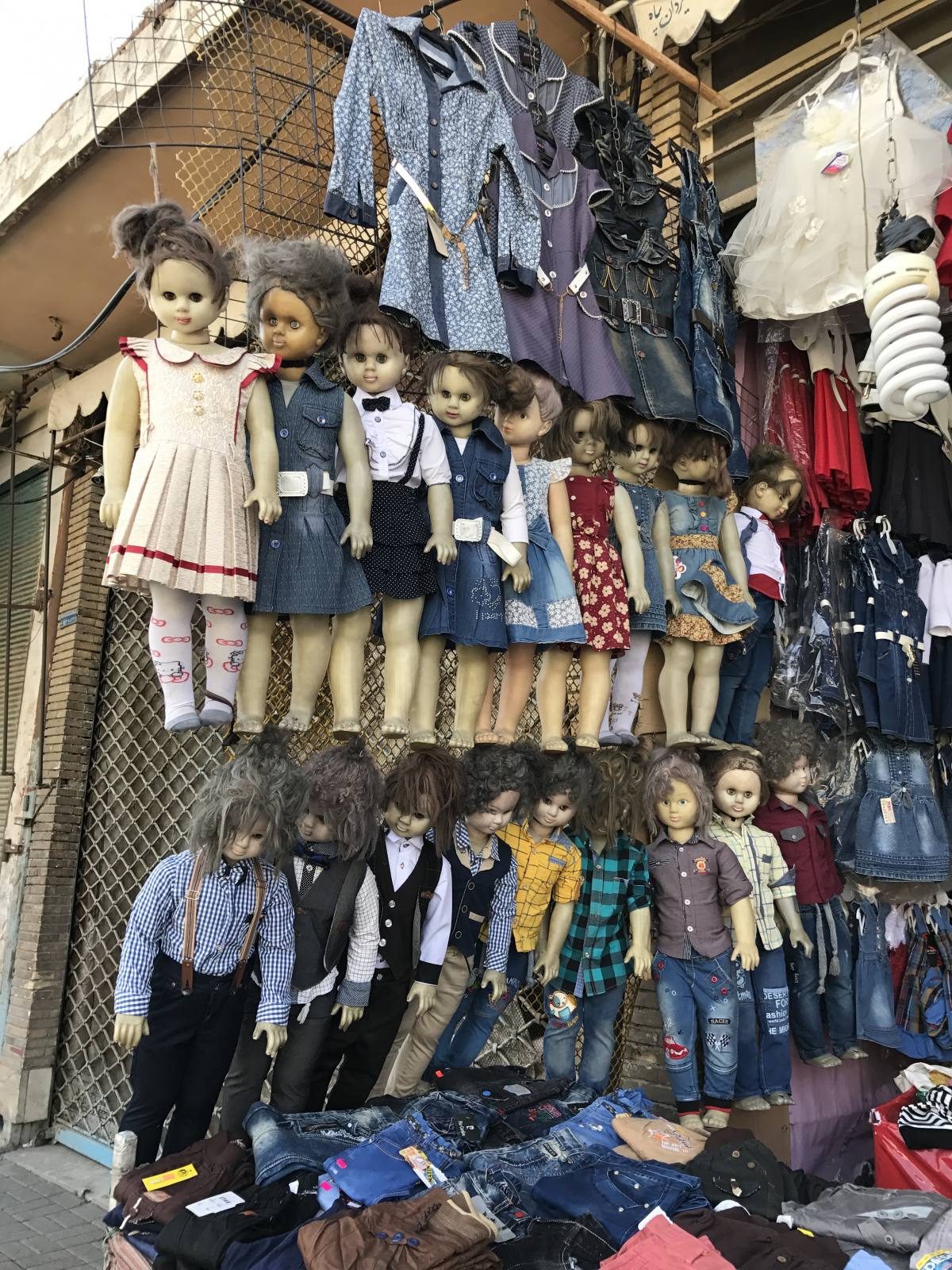
SEE MY VIDEO FROM IRAN:
If you like it subscribe to my YouTube channel for weekly travel videos!
Movies About Iran:
A Separation
Under the Shadow – Something slightly different as it’s a horror taking place in Tehran during Iraq-Iran war.
Books About Iran:
A Prisoner of Tehran – A story of a woman surviving in an Iranian prison during the Iranian revolution.
Children of the Jacaranda Tree – A store about a political prisoner who gave birth inside Evin Prison in Tehran in 1983. The book traces the characters to present day, teaching you a lot about Iranian revolution.
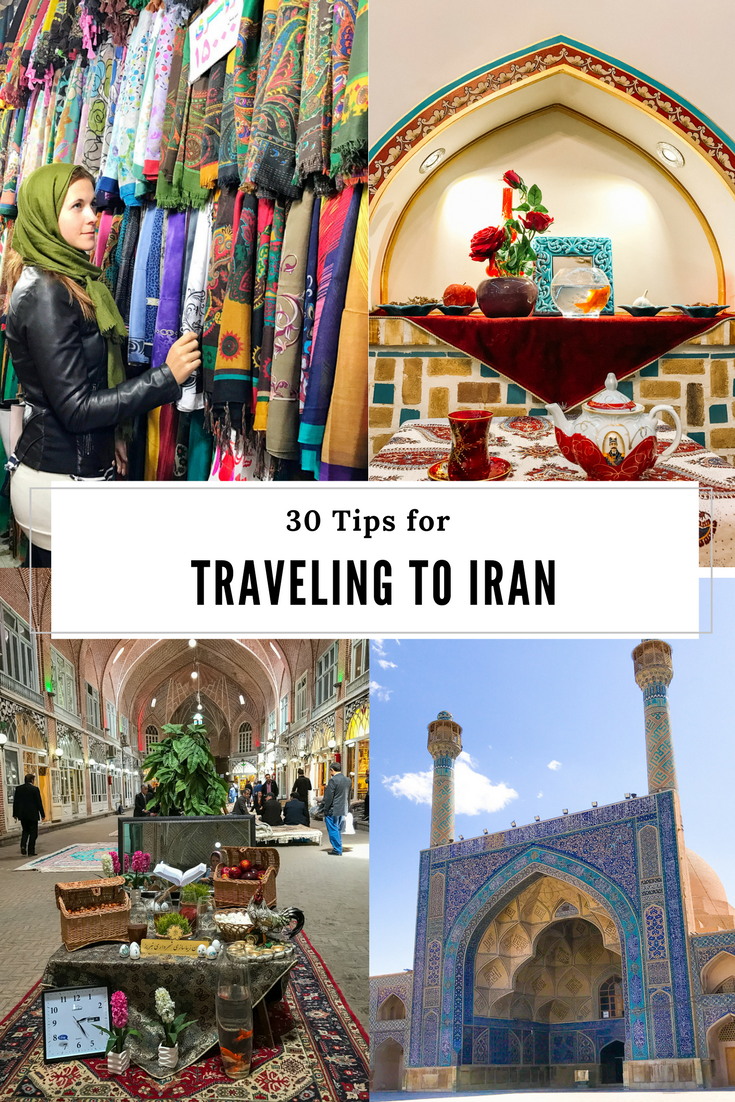
Any questions on travel to Iran? Check out my ultimate guide to Iran page.
READ MORE IRAN TRAVEL TIPS
I hope you enjoyed my tips for visiting Iran! Hopefully, you found it useful. Here are a few more wanderlust-inducing articles that I recommend you read next:
- Is It Safe to Travel to Iran?
- How to Get a Visa on Arrival for Iran
- What to Wear in Iran as a Woman
- Backpacking in Iran: Everything You Need to Know
- My Funny Stories from Iran
Share this:
Notify me of new posts by email.
Sunday 3rd of January 2021
thank you for your great website. im iranian and i decided to make a video about tourism in iran as my english project. your website is very useful👍
Monday 7th of September 2020
U forget to say If u ever get sick in Iran, doesn’t matter what u’re suffering from and what the hell is wrong with u , u definitely have to drink some “Chai Nabat”
Sunday 12th of July 2020
WOW! What a bunch of great information. Thanks for taking your time to share this. My boyfriend is Iranian, but I have never been in Iran, from his words it is really contrasting country, hope to visit one day.
Tuesday 7th of April 2020
Very great and comprehensive post. You already answered many questions we face as a travel agency in Iran. Great Job! I just can add about squatting in the Iranian toilet, that don't forgot to check your pockets before squatting to avoid falling all your properties down :))
Wednesday 16th of October 2019
Hi Anna, So grateful to have bumped into your article.
(+98) 935 -122 0038
Ultimate iran travel guide [2024].
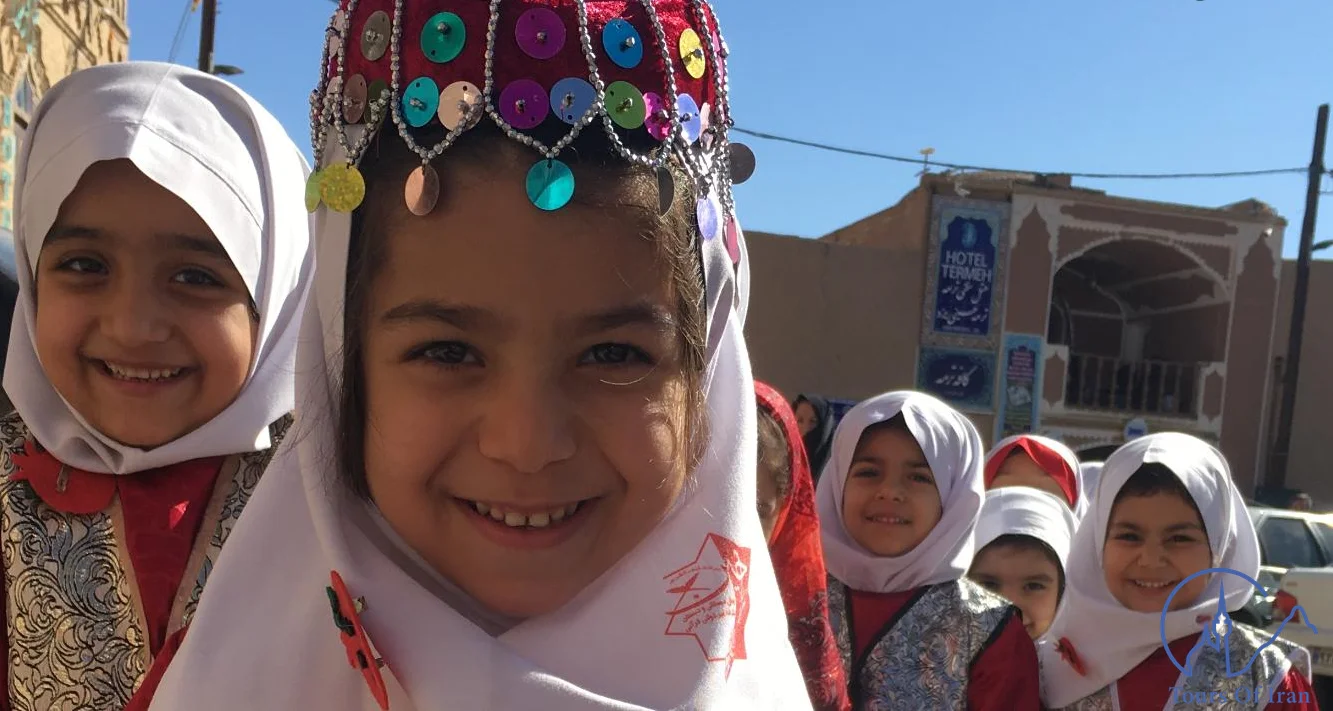
Table of Contents
Welcome to the ultimate Iran travel guide!
You will find all the information and insights you need to plan a memorable trip to this mesmerizing country in this comprehensive article. From the ancient ruins of Persepolis to the bustling bazaars of Tehran, Iran offers many experiences for travelers seeking history, adventure, and cultural immersion.
Iran a country steeped in history and culture, is located in Western Asia. With deserts, mountains, and lush green valleys, it boasts a diverse landscape. The country’s warm hospitality, rich traditions, and architectural wonders make it a top destination for intrepid travelers.
Let’s just dive in the Iran travel guide:
Plan A Perfect Trip To Iran
Planning is critical to a successful trip to Iran. Here are some essential steps to help you plan a perfect trip to Iran:
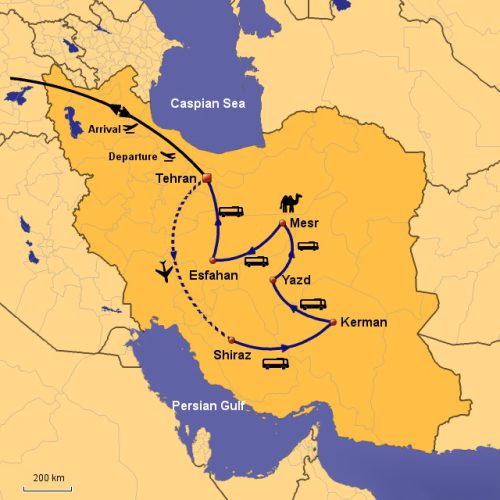
Get a thorough understanding of Iran
Taking the time to research Iran’s history, culture, customs, and places of interest is the first step in the Iran Travel guide. Make sure you are familiar with local traditions and netiquette to ensure a respectful and enjoyable experience.
Iran has been a crossroads of cultures and civilizations for thousands of years. From the ancient Persian Empire to the Islamic Golden Age, Iran’s past has left an indelible mark on its present. Discover the fascinating stories of Persian kings and poets at UNESCO World Heritage Sites such as Persepolis.
Documents Required for Travel to Iran
Make sure your passport is valid for at least six months after your intended departure date. The type of visa you need will depend on your nationality and the purpose of your visit.
Iranian visa requirements can be complex, so it’s important to check with your country’s Iranian consulate or embassy for the latest information. You can also simply submit your Iran Visa Application Form and Tours of Iran will handle the rest.
In Iran, tourist visas are usually valid for 30 days and can be extended. Visit Visa Information for more information on Iran visas.
Best Time to Visit Iran
Throughout the year, Iran experiences a variety of weather conditions.
Spring (March to May) and autumn (September to November) are considered the most ideal times to visit when the weather is pleasant and mild.
Iran’s landscapes come alive with colorful flowers in spring, making it an ideal time for outdoor activities and sightseeing. However, autumn is a great time to explore historical sites and hike in the mountains because of its cooler temperatures.
Plan a flexible itinerary
Make an itinerary that covers your preferred destinations while allowing for unexpected discoveries. You can find well-known sites as well as hidden gems off the beaten track in Iran.
Iran’s must-visit destinations
Isfahan is a city that will amaze you with its stunning architecture. Explore the majestic Imam Mosque and the enchanting alleys of the historic bazaar and marvel at the intricate designs of Naqsh-e Jahan Square.
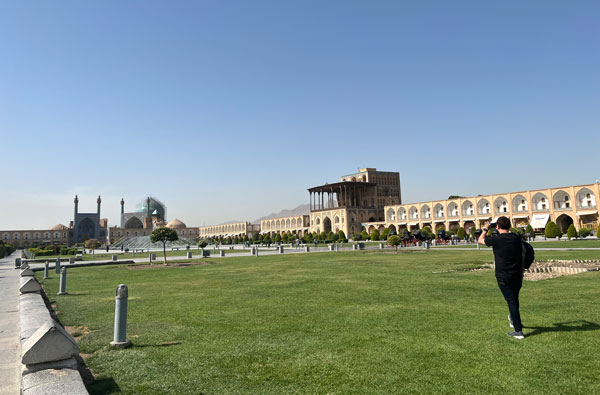
Persepolis: Step back in time at Persepolis, an archaeological marvel that was once the ceremonial capital of the Achaemenid Empire. Admire the colossal columns, intricate reliefs, and ancient tombs that narrate the glorious past of Persia.

Shiraz: Shiraz, the city of poets and flowers, beckons with its poetic charm. Visit the tomb of Hafez, the renowned Persian poet, stroll through the tranquil Eram Garden, and explore the mesmerizing Nasir al-Mulk Mosque.
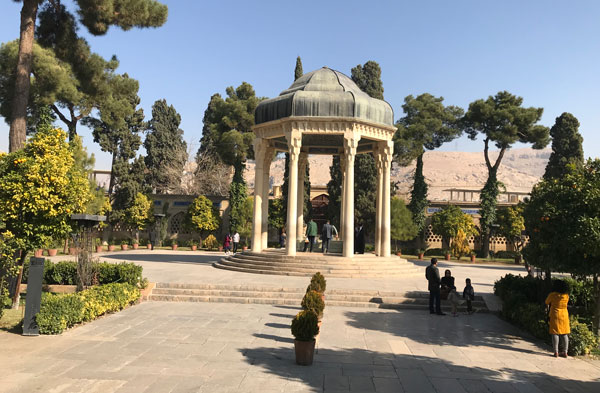
Tehran: Discover the dynamic capital city of Iran, Tehran , where modern skyscrapers stand alongside historical palaces. Visit the Golestan Palace, delve into Iran’s rich history at the National Museum, and enjoy panoramic views from the Milad Tower .
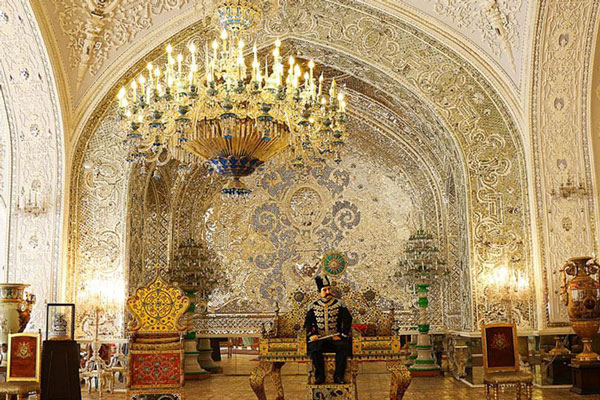
Yazd: Yazd has a unique architectural heritage, boasting traditional windcatchers that cool the buildings during scorching summers. In Yazd Explore the Jame Mosque and immerse yourself in the ancient Zoroastrian culture.
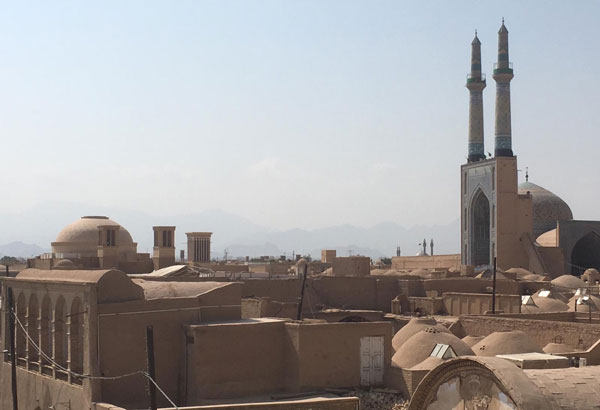
The Ancient City of Bam: Explore the ancient city of Bam, known for its impressive mud-brick citadel that dates back over 2,000 years. Although partially destroyed by an earthquake, Bam Citadel is still a testament to Iran’s rich history.
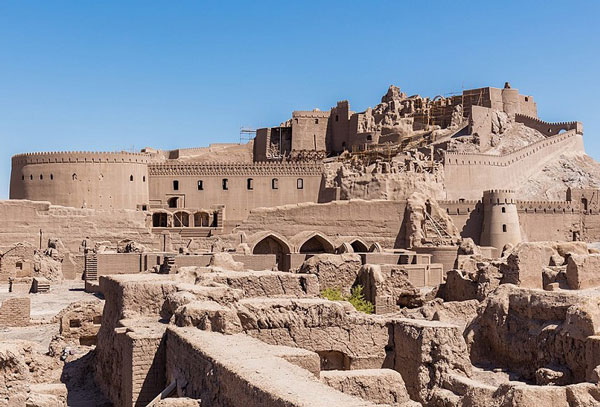
The Caspian Sea: Escape to the picturesque coast, where lush green forests meet sandy beaches. Relax in the resort towns of Ramsar and Chalus, or embark on a scenic journey through the dense forests of the Alborz Mountains.
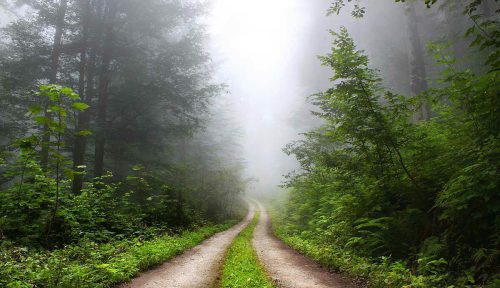
Tabriz: Tabriz , a historic Silk Road city, is renowned for its UNESCO-listed bazaar, the largest covered market in the world. Admire the stunning Blue Mosque and explore the Tabriz Historic Bazaar Complex, a UNESCO World Heritage site.
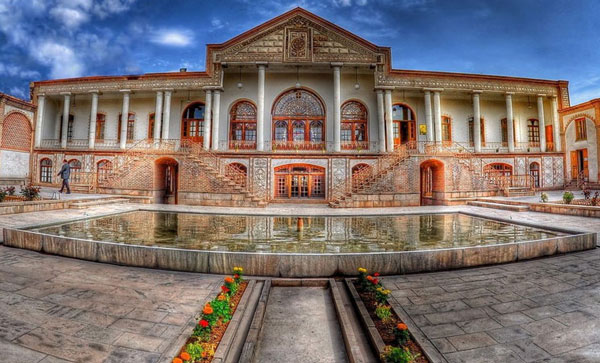
Chabahar: A port city with untouched beaches and offshore islands. Enjoy activities like scuba diving, snorkeling, and dolphin watching, and witness the unique landscapes of the Martian Mountains.
Must-See Historical Sites in Iran
Iran’s rich history has left behind a treasure trove of historical sites and architectural wonders. Here are some must-see places to explore:
Persepolis – Ancient Ruins Frozen in Time
Persepolis , also known as Takht-e Jamshid, is one of Iran’s most significant archaeological sites. Built during the Achaemenid Empire, it was the ceremonial capital and symbol of Persian power.
The sprawling complex of Persepolis features imposing stone platforms, magnificent gateways, and intricate bas-reliefs. The reliefs depict various scenes, including royal audiences, processions, and representations of tribute-bearing nations.
Visiting Persepolis is a journey back in time to the ancient world, where you can witness the grandeur and glory of the Persian Empire.
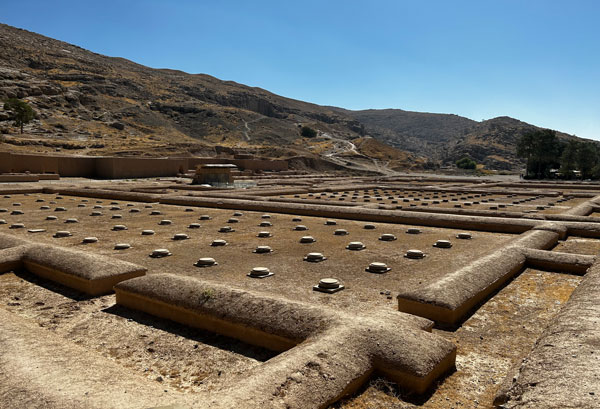
Naqsh-e Jahan Square – A Jewel of Islamic Architecture
Located in the heart of Isfahan, Naqsh-e Jahan Square , also known as Imam Square, is an iconic symbol of the city’s grandeur and history. Constructed during the Safavid era, the square is an impressive example of Islamic architecture and urban planning.
Surrounded by stunning buildings, including Imam Mosque, Sheikh Lotfollah Mosque, and Ali Qapu Palace, Naqsh-e Jahan Square is a UNESCO World Heritage site. Its vast open space once hosted royal ceremonies, polo games, and other grand events.
Visiting the square during different times of the day reveals the changing hues of the surrounding buildings, adding to the allure of this historical masterpiece.
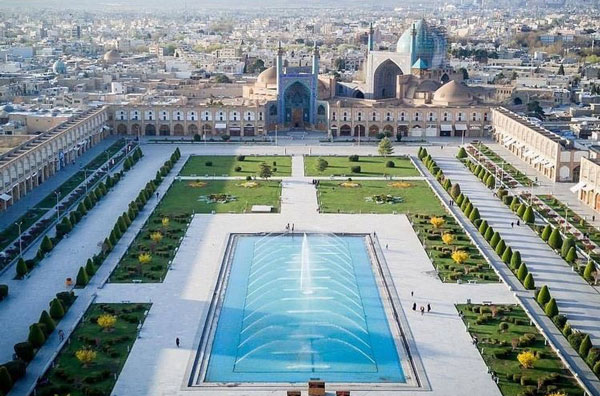
Golestan Palace – A Window to the Qajar Era
In the heart of Tehran, Golestan Palace is a masterpiece of Qajar-era architecture and design. The palace complex served as the seat of power for several rulers of the Qajar dynasty.
The palace’s opulent rooms, halls, and gardens showcase exquisite craftsmanship and intricate tile work. Visitors can explore the Marble Throne Hall, Mirror Hall, and the stunning Shams-ol-Emareh (Edifice of the Sun), offering panoramic views of Tehran.
Golestan Palace provides a glimpse into Iran’s royal past and the luxury of the Qajar dynasty.
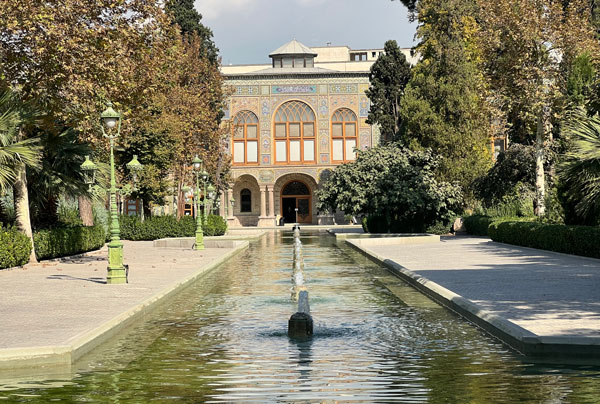
Pasargadae – The Tomb of Cyrus the Great
Pasargadae, located near Shiraz, is another UNESCO World Heritage site in Iran. It is home to the tomb of Cyrus the Great, the founder of the Achaemenid Empire and one of history’s most influential leaders.
The tomb’s simple design starkly contrasts Persepolis’s grandeur, reflecting Cyrus’s humility and humanity. The site also includes the ruins of Cyrus’s palace and a royal garden.
Visiting Pasargadae offers an opportunity to pay homage to one of the ancient world’s most respected leaders and learn about the roots of the Persian Empire.
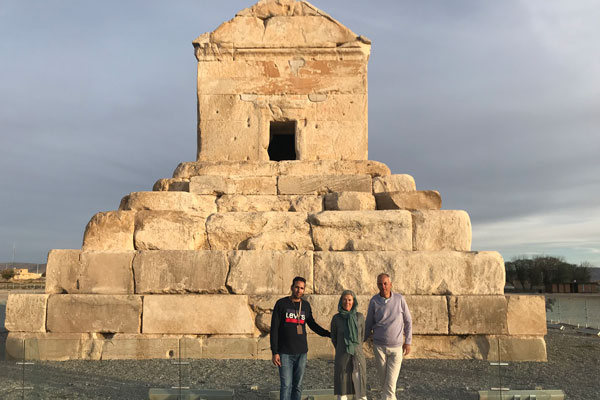
Bam Citadel – A Silent Witness of History
Located in southeast Iran, the Bam Citadel is an ancient mud-brick fortress that has stood for over 2,000 years. Once a bustling city along the Silk Road, Bam was tragically devastated by an earthquake in 2003.
Despite the destruction, the citadel still stands as a testament to the architectural genius of ancient Persia. Exploring the citadel’s ruins takes you on a journey through time, with remnants of ancient buildings and streets telling the stories of its vibrant past.

Historic Gardens of Iran
Iran is famous for its exquisite historic gardens, recognized as UNESCO World Heritage sites for their cultural significance and beauty. These gardens combine art, architecture, and nature, creating an oasis of tranquility within bustling cities.
Eram Garden – A Paradise in Shiraz
Eram Garden, located in Shiraz, is a magnificent Persian garden dating back to the 13th century. Its name, “Eram,” translates to “heaven” in Arabic, fitting for the garden’s ethereal beauty.
The garden’s design includes flowing water, cypress trees, and vibrant flowerbeds. At its center stands the Qavam House, a grand mansion that showcases traditional Persian architecture.
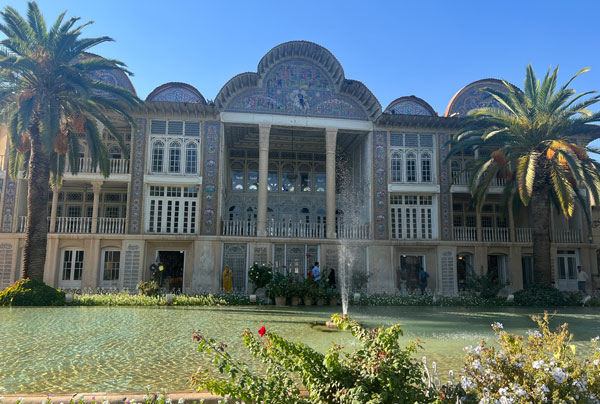
Fin Garden – A Timeless Sanctuary
Fin Garden, situated in Kashan, is a historical oasis that dates back to the Safavid era. Its design represents the harmony between architecture and nature, with a central pavilion overlooking a large reflecting pool.
The garden’s tranquil ambiance and refreshing water features make it a favorite among locals and visitors. Strolling through the garden, you’ll encounter hidden corners, colorful blossoms, and ancient cypress trees.
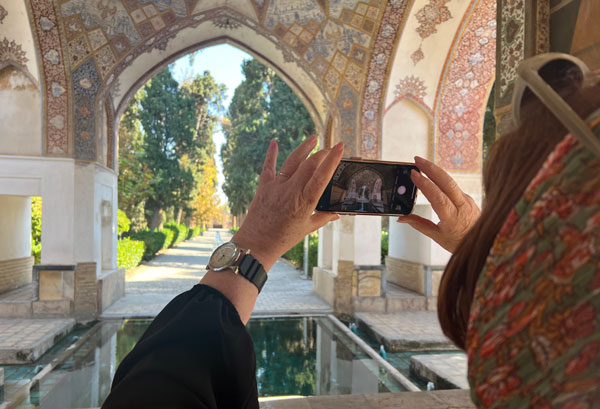
Shazdeh Garden – A Crown Jewel of Kerman
Shazdeh Garden is a stunning example of Persian garden design located in Kerman. Built during the Qajar era, it is a visual masterpiece featuring terraced gardens cascading down the mountainside.
The garden’s fountains, water channels, and lush greenery create a serene atmosphere, providing respite from the arid climate of Kerman. Shazdeh Garden’s symmetrical layout and charming pavilions make it a popular spot for leisurely walks and photography.
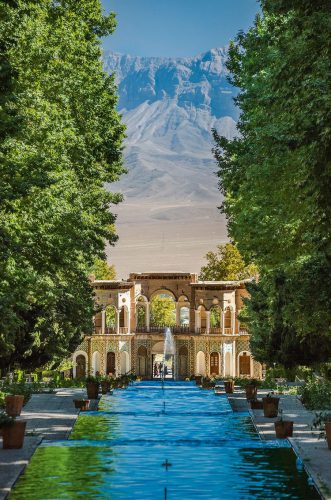
Prepare for the Cultural Experience
Embrace the unique cultural experience that Iran offers. Dress modestly, particularly in religious sites, and respect local customs and traditions.
Iranians are known for their warm hospitality and friendly nature. Don’t be surprised if strangers offer you tea or engage in friendly conversations. Accepting these gestures with a smile is a way of showing appreciation for their hospitality.
Iran Travel Guide: Cultural Experiences in Iran
Traveling to Iran is not just about exploring historical sites and natural wonders; it’s also an opportunity to immerse yourself in the country’s vibrant culture and traditions. Here are some cultural experiences that will enrich your journey:
Traditional Persian Cuisine – A Gastronomic Delight
Indulge in a culinary journey through Iran’s delectable dishes. Persian cuisine is known for its rich flavors, aromatic herbs and spices, and meticulous preparation.
Rice plays a central role in Iranian cuisine, and various rice dishes, such as Chelo Kebab, Zereshk Polo, and Baghali Polo, are staples on dining tables. Meat lovers will delight in the succulent kebabs, including Barg, Jujeh, and Koobideh.
When enjoying Iranian Dishes , Remember to try the famous Persian stews, such as Ghormeh Sabzi (a herb and meat stew) and Fesenjan (a walnut and pomegranate stew). These dishes embody the culinary heritage of Iran and reflect the country’s diverse regional flavors.
Tea Culture – A Symbol of Warmth and Hospitality
Iranian Hospitality is one of the strongest feelings that you experience in Iran. Iranians have a strong tea culture, and sharing tea with locals is a familiar ritual. Tea is more than just a beverage in Iran; it symbolizes hospitality and warmth.
The traditional way of serving tea is to pour it into small glasses from a samovar (a traditional teapot). Iranians often accompany tea with sweets or dates, creating a delightful balance of flavors.
Joining locals for tea is a fantastic way to engage in conversations and learn more about Iranian culture and daily life.

Persian Carpets – A Work of Art
Persian carpets, known as Persian rugs, are world-renowned for their intricate designs, vibrant colors, and exceptional craftsmanship. These handwoven masterpieces are a significant part of Iran’s cultural heritage and artistry.
Every Persian carpet tells a story, with each region boasting unique styles and patterns. Carpets are not just decorative elements in Iranian homes; they hold deep cultural and symbolic value.
Visiting a carpet workshop allows you to witness the skill and dedication of Iranian weavers as they create these exquisite works of art. Whether you purchase a carpet or appreciate the artistry, Persian carpets offer a glimpse into Iran’s rich cultural tapestry.
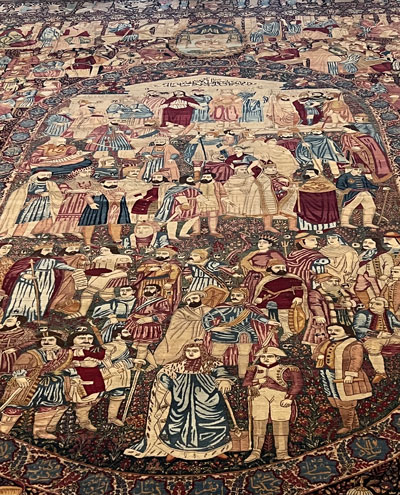
Nowruz – Celebrate the Persian New Year
If your visit aligns with the spring equinox, celebrate Nowruz, the Persian New Year. Nowruz marks spring’s first day, symbolizing rebirth, renewal, and the triumph of light over darkness.
Nowruz celebrations typically last for two weeks and include various customs and traditions. One of the most popular activities during Nowruz is setting up a Haft-Seen table adorned with seven symbolic items, each starting with the letter “S” in Persian.
During Nowruz, you’ll witness lively street festivities, special performances, and a joyous atmosphere throughout the country. Joining in on the Nowruz celebrations will immerse you in the spirit of new beginnings and unity.
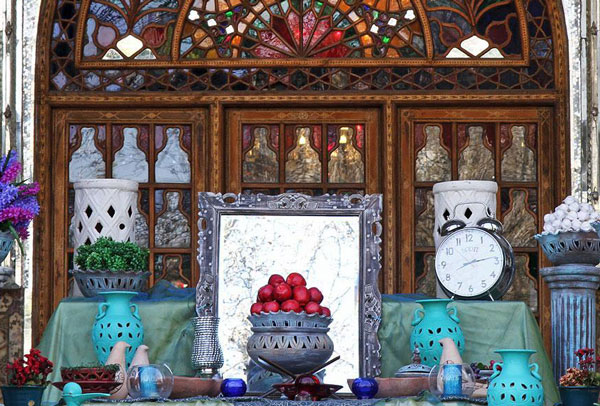
Ta’arof – The Art of Polite Gestures
In Iran, politeness and courtesy are highly valued, and one way this is expressed is through a cultural practice known as Ta’arof. Ta’arof involves polite gestures, expressions, and offers that can sometimes appear confusing to visitors.
For example, when Iranians offer something, such as food or tea, they may do so with the expectation that the offer will initially decline. This can lead to a back-and-forth exchange of polite refusals before accepting the offer.
Ta’arof is a way of showing respect and humility, and while it might be initially unfamiliar to visitors, embracing it adds to the cultural richness of your experience in Iran.
Iran Travel Guide: Safety Tips
Iran is generally safe for travelers, and a crime against tourists is rare. The Iranian people are known for their warmth and hospitality; visitors are often welcomed with open arms.
Still, like when you go anywhere, be careful and know what’s happening around you. Petty theft can occur in crowded places, so keep an eye on your belongings and avoid displaying expensive items.
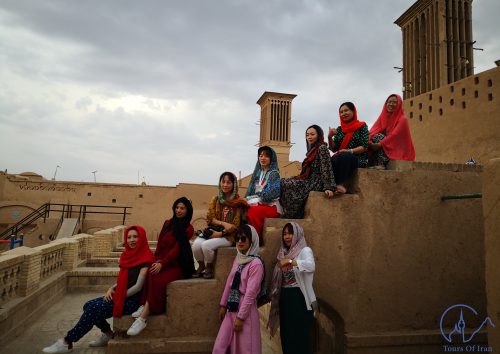
Iran Dress Code and Etiquette
Iranian people, especially women, prefer dressing modestly. Women should wear loose-fitting, non-transparent clothing that covers the arms and legs. It is also customary to wear a headscarf, or hijab, in public.
Men are required to adhere to a dress code of modesty in Iran, refraining from wearing shorts and sleeveless shirts by cultural norms. Traditional Iranian clothing, such as a chador or manteau, is optional for foreign visitors.
In addition to the dress code, respecting local customs and cultural norms is essential. Avoid public displays of affection, and always ask for permission before taking photos of people, especially on religious sites.
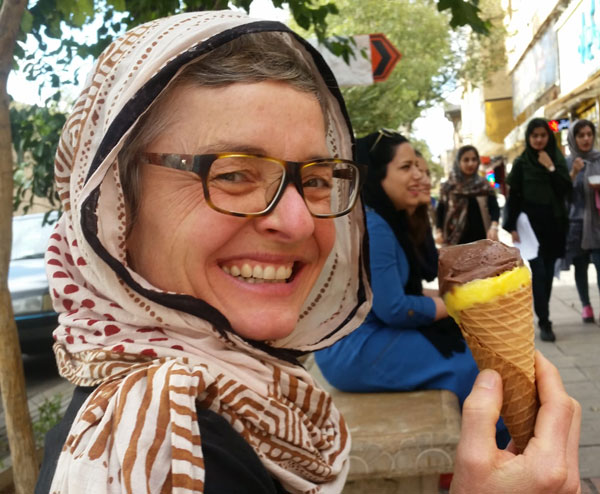
Money in Iran
Using international bank cards in ATMs in Iran can be challenging due to international sanctions and restrictions.
International debit and credit cards are not commonly accepted in Iran. This is because Iranian banks have limited or no connections with international banking networks, such as Visa or Mastercard.
The recognized monetary unit of Iran is the Iranian Rial (IRR). As an international traveler, you’ll likely deal with Toman, which equals 10 Rials. The exchange rate can fluctuate, so checking the current rate before your trip is advisable.
Cash is the preferred form of payment in Iran, as credit and debit cards are not widely accepted. ATMs are available in major cities, but you can not use international bank cards & it’s just for local bank cards. So it’s best to carry enough cash for your daily expenses.
To ensure you have access to funds while traveling in Iran, it’s advisable to carry sufficient cash in Iranian Rials or explore alternative options such as exchanging foreign currency at authorized exchange offices or using pre-loaded travel cards that are accepted in the country.
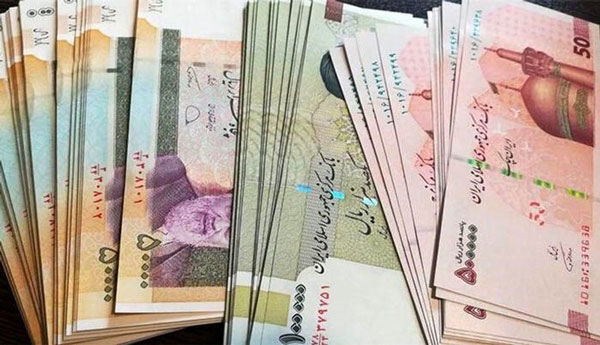
Read more about Iranian Currency .
Language Barrier
While Persian (Farsi) is the official language of Iran, many Iranians, especially in urban areas, can communicate in English, especially in hotels, restaurants, and tourist sites.
Learning a few basic Persian phrases, such as greetings and expressions of gratitude, will be appreciated by the locals and enhance your travel experience.
Iran Travel Guide: Final Words
This was the Iran Travel Guide [2023]. When Travel to Iran, it’s a destination that will capture your heart and ignite your sense of wonder. With its rich history, stunning landscapes, and warm hospitality, it promises an unforgettable travel experience. From exploring ancient ruins to savoring delicious cuisine and immersing yourself in Persian culture, every moment in Iran celebrates heritage and beauty. So, pack your bags, prepare for the adventure of a lifetime, and get ready to create memories that will last a lifetime.
How useful was this post?
Click on a star to rate it!
Average rating 5 / 5. Vote count: 1
No votes so far! Be the first to rate this post.
About the Author
Mohammad Hesani
A professional tour guide from Yazd, a world heritage site famed for its architecture. With a master's in Tourism Marketing, he has diverse experience in hotels, teaching, and travel agencies. Since 2016, Mo has dedicated himself to guiding tours, driven by his passion for history and culture. He loves meeting people and sharing his country's rich heritage
Leave a Reply Cancel reply
Your email address will not be published. Required fields are marked *
Our EXPERTS

Sori Hasanzadeh

Recent Posts
- SHIRAZ TRAVEL GUIDE
- Exploring the Grand Bazaar of Tabriz
Dress Code in Iran: A Guide for Travelers
- Saadi Shirazi: A Timeless Persian Poet
- Persepolis: The Majestic Heart of Ancient Persia
Related posts

7 benefits of private tours to Iran

Where is Persia?

Iran Adventure For New Zealanders

Iran Travel Risk Map 2024

It’s time to travel to Iran from Europe
We use essential cookies to make our site work. With your consent, we may also use non-essential cookies to improve user experience and analyze website traffic. By clicking “Accept,” you agree to our website’s cookie use as described in our Cookie Policy .”In addition, you can change or withdraw your consent at any time by clicking “Cookie Settings” under the Article 3.2 of “Cookie Policy”.

Travelling to Iran? Things to Know Before You Go.
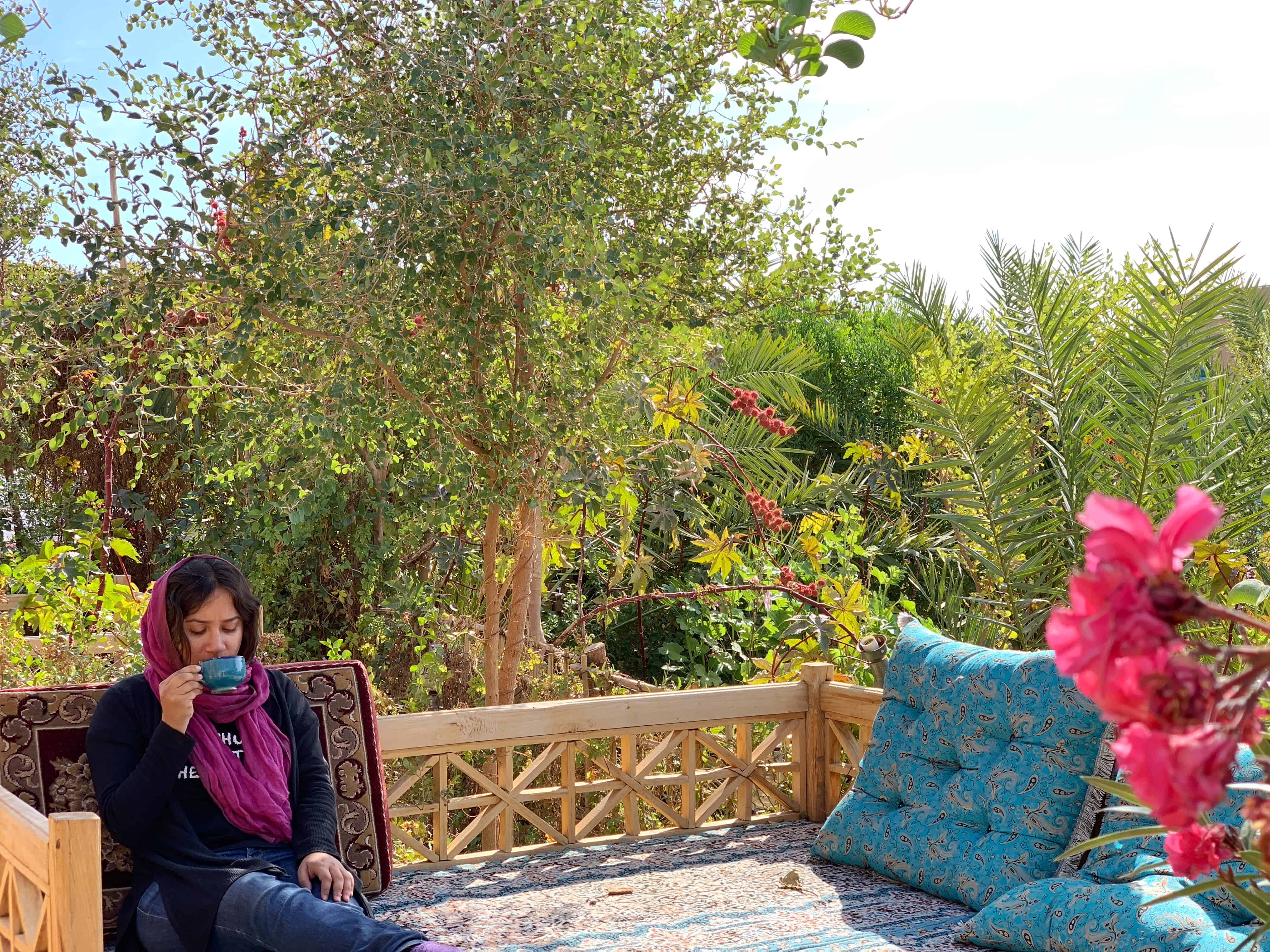
Looking for Iran travel tips? Take mine, and go explore this incredible country.
I harboured a dream of travelling to Iran for a long time, but when it came down to finally planning a month-long trip in the country earlier this year, I had no clue where to begin.
Iran recently started offering e-visa for Indian passport holders – but ours got rejected. I typically look at websites like Expedia, Skyscanner, Kayak and Goibibo to book flights – but none of these aggregate flights to/from Iran. I use Airbnb and Booking.com to find experiential accommodations around the world – but none of these work in Iran.
I use Visa or Mastercard to pay or withdraw money from ATMs abroad – but neither of them work in Iran; to complicate matters, there are two exchange rates and two currencies in Iran. I buy travel insurance from World Nomads or Indian companies – but none of these cover travel in Iran. Hell, even Facebook, Twitter and BBC don’t work in Iran!
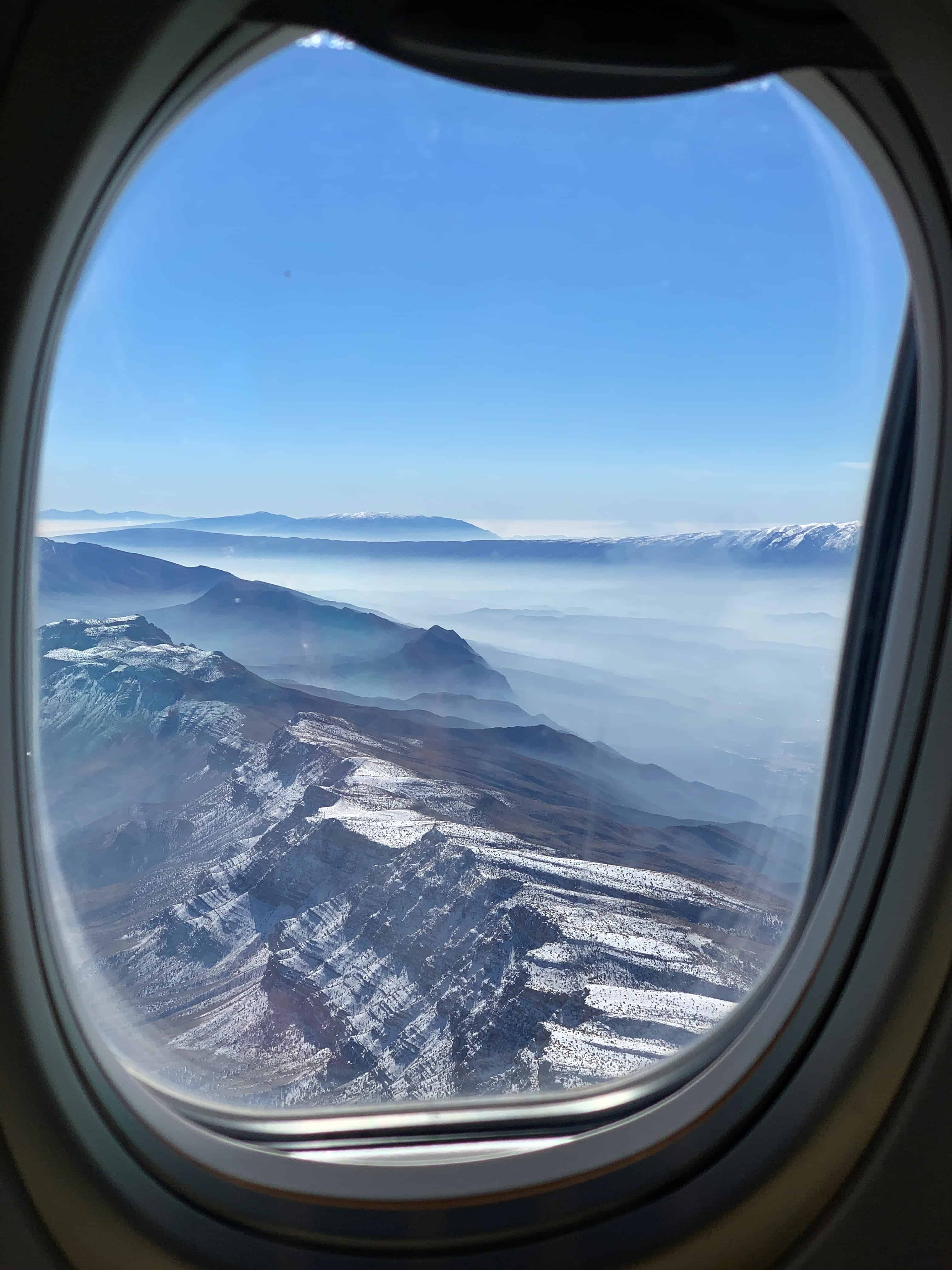
Slowly, we made our way through these challenges, discovering new sites and travel hacks, with a lingering concern over whether Iran was worth the trouble. Turns out, if there’s one country in the world that’s worth the pre-trip hassle, it’s Iran.
Behold all my Iran travel tips to help plan your first trip to Iran:
Why Iran travel should be on bucket list in 2020
Is iran safe to visit, iran tourist visa on an indian passport, entering the us after travelling to iran, booking flights to iran from india, the best time to visit iran, the official and unofficial exchange rates in iran, iran’s two currencies, finding unique accommodations in iran, travel insurance for iran, learning conversational farsi to travel in iran, accessing social networks in iran, getting ready for iran travel: what to pack for iran / what to wear in iran, vegan and vegetarian food in iran, “tarof” and how to accept iranian hospitality, solo travel iran, where to go in iran, travelling around iran by public transport, getting over iran, helpful iran travel blogs, books, music and movies about iran, what else would you like to read about iran travel what are your iran travel tips.
While many popular cities around the world are suffering from too many tourists , Iran is the polar opposite. Tourism is so low that you can have mind-blowing experiences across the country – from the exquisite Nasir-ol-molk in Shiraz to the Kaluts Desert near Kerman – pretty much all to yourself. On offer are bazaars dating back a thousand years, architectural marvels from ancient empires, geographically unique (and often bizarre) islands and deserts, unexpectedly well-developed infrastructure, stunning gardens and cypress groves that inspired generations of poets, and above all, local friendships that’ll help you find a lost part of your soul.
Also read: Why You Should Drop Everything and Travel to Iran Now
I remember sitting in a basement resto in Shiraz, watching the local news on television. The screen was split in two: on one side, Trump was raving about how Iranians were going through complete hell because of his sanctions on the country. On the other side, streamed a live feed from Esfahan’s tree-lined boulevards, with locals casually walking and eating roasted chestnuts – just a regular day in the country.
I’ve repeatedly been asked: Is Iran safe to travel? The country’s political regime is oppressive, and its relations with the US have been deteriorating, yet life in Iran isn’t what it’s often depicted to be in Western media . I actually felt safer there than many popular tourist destinations. As with anywhere else, stay aware of the on-going political situation and speak to a local tour operator in Iran to gauge how things really are.
Also read: We Travel to Realise Everyone is Wrong About Other Countries
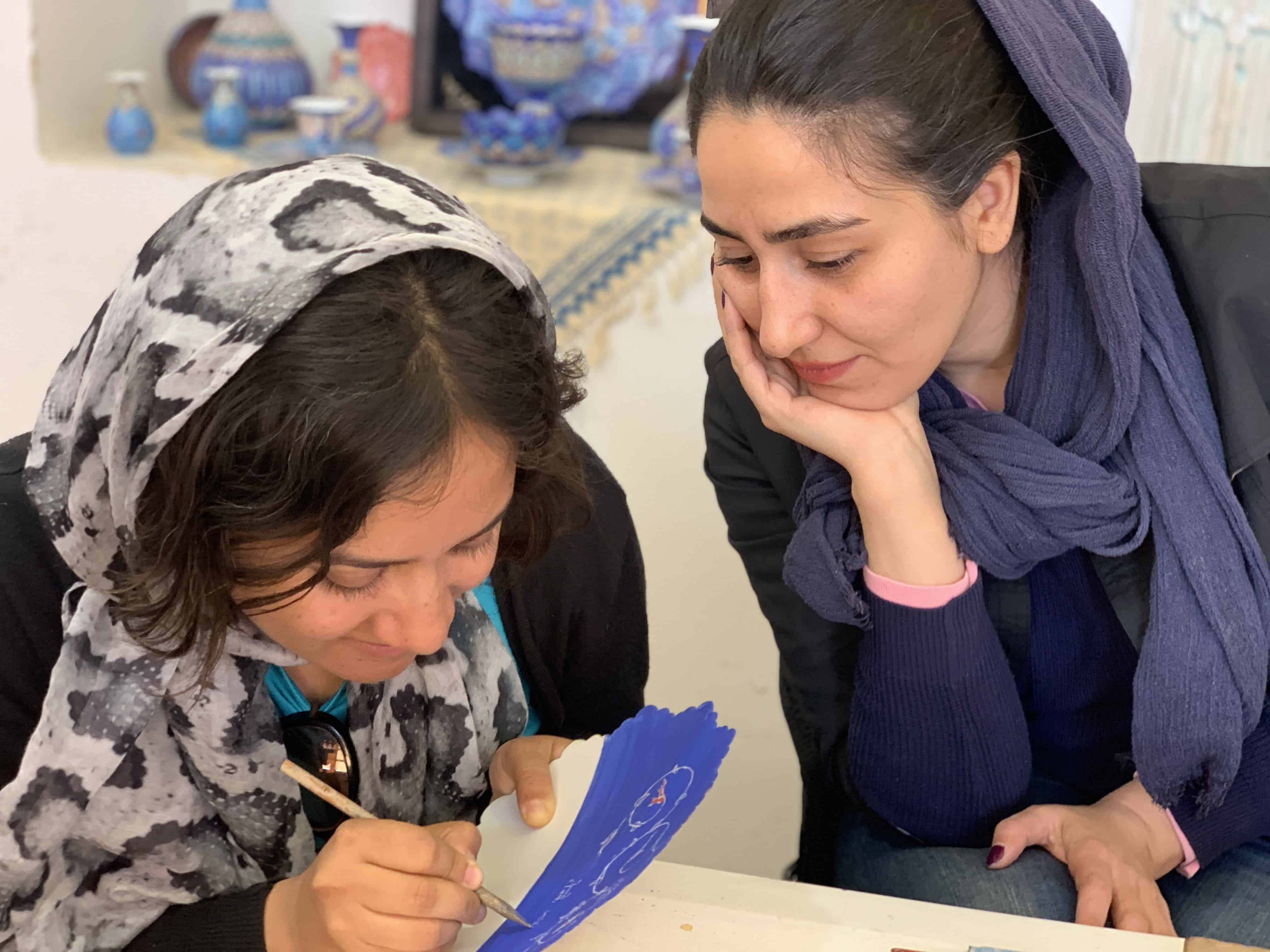
Indian passport holders visiting Iran can now avail of a 30-day Iran e-visa – but like many others, ours got rejected without an explanation. We took the long-winded route of applying for an Iran tourist visa at the Iran consulate in Mumbai. The process is as follows:
- Get in touch with an Iranian travel company and ask them to apply for a visa code on your behalf. Send them your passport copy, tentative trip itinerary and a form. We applied through Uppersia ; they process visa codes if you book a trip through them.
- Once you receive a visa code (takes upto 10 days), submit your documents at the embassy. The submission rules are still archaic; in addition to our travel documents, we had to submit medical tests for TB and HIV! To know the latest list of documents, call the Iranian consulate in the city you plan to apply, since they differed between Mumbai and Delhi.
- We paid extra to expedite our Iran tourist visa, which then took 2-3 days since submission.
Also read: How I Manage Visas on My Indian Passport as I Travel Around the Globe
The good news is that the Iran tourist visa is not stamped on your passport. It is a separate physical document, and even at immigration in Iran, only the document is stamped at entry and exit. So i n theory, there’s no proof on your passport that you’ve been to Iran . I haven’t travelled to the US after Iran, but I still expect to be interrogated if and when I do.
If you plan to travel to the US in the near future, I highly recommend that you apply for a US tourist visa before visiting Iran – since in the US visa application, you need to disclose all countries you’ve ever set foot in. Chances are, in a post-Trump US, this won’t be an issue.
Also read: US Tourist Visa for Indians: Tips and Requirements
International websites like Expedia, Skyscanner, Goibibo etc don’t aggregate flights to / from Iran. So we individually looked at airline websites like Emirates, Mahan Air (an Iranian carrier), Iranian Airlines – and found a sweet deal from Mumbai to Shiraz! To get the best deal, check not only flights to Tehran but also Shiraz and other cities.
Also read: How I’m Financially Sustaining My Digital Nomad Lifestyle
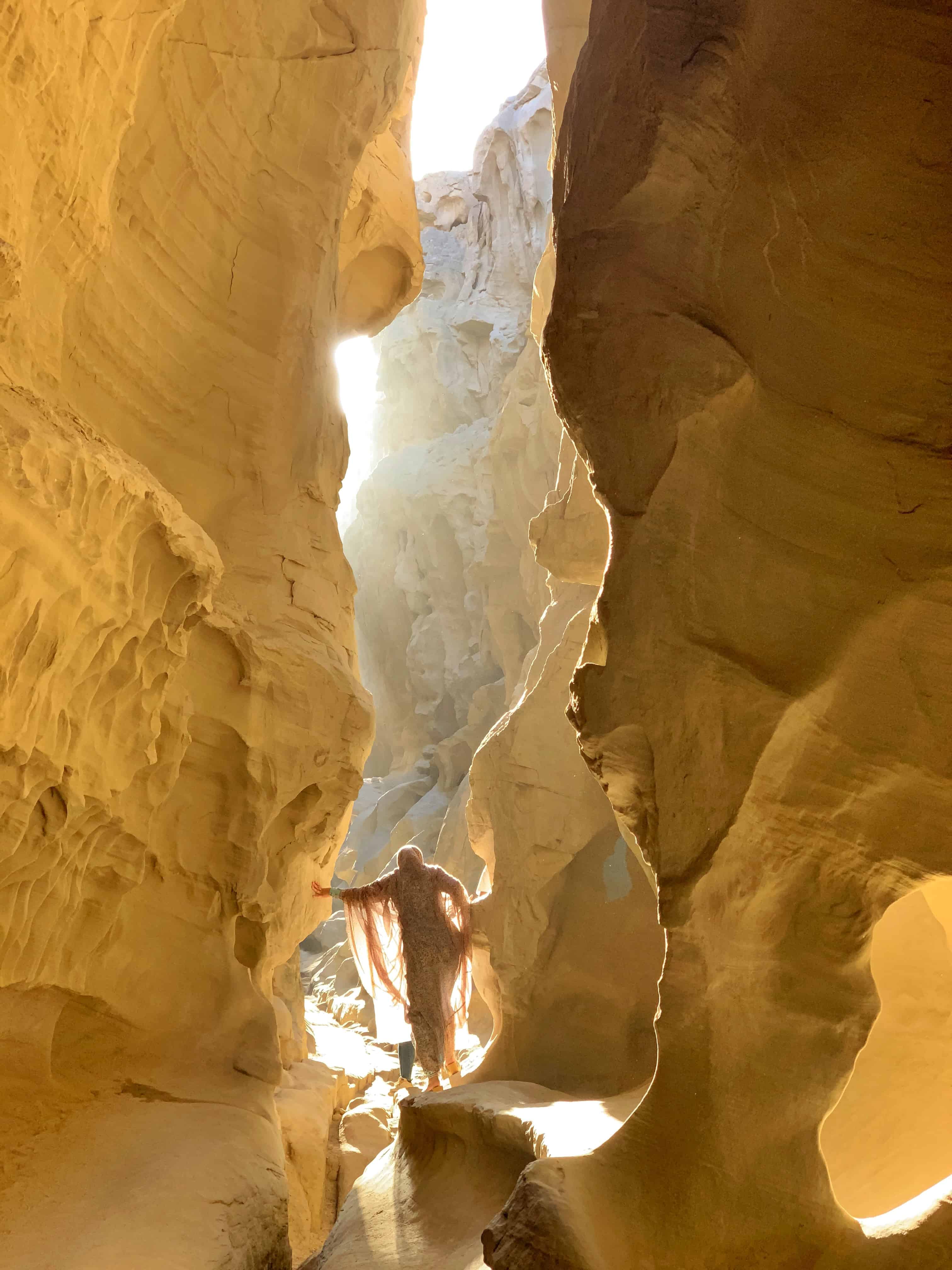
All locals unanimously agreed that spring (late March – early May) and autumn (late September – early November) are the best times to visit most parts of Iran, except the mountainous northern regions. We factored the weather into our travel plans in Feb/March, and ended up exploring the southern islands of Qeshm and Hormuz, and the Kaluts desert – too hot to visit at other times of the year.
Also read: Why You Shouldn’t Put Off Your Travel Dreams
Since Mastercard and Visa debit / credit cards don’t work in Iran, not even in ATMs, carrying cash (US$) into Iran is the only option. Upon landing in Iran, we exchanged 50 USD at the airport’s money exchange counter, and were surprised to receive a HUGE wad of local currency – 3 times the exchange rate. That’s when we learnt that there are two exchange rates in Iran.
The unofficial exchange rate is 3 times the official one ; it currently ranges from 11000-14000 rial to a dollar. This made our trip to Iran 3 times cheaper than we had originally budgeted for! It’s possible to exchange USD pretty much anywhere in Iran – at a hotel, money exchange, a random shop on the street, even with a taxi driver. Just make sure you get the unofficial rate.
Also read: 6 Months, 6 Countries: Epic Memories from Central America
Currency in Iran is super confusing, for there are two legal currencies – Toman and Rial; 1 toman=10 rial. Most prices are quoted in toman, but it’s always good to ask. We gradually found our bearings and also felt grateful that except for one unsuspecting encounter, no one tried to rip us off.
Also read: Creative Ways I’ve Learnt to Manage Money on My Travels Abroad
Since Airbnb and booking.com don’t work in Iran, we relied largely on TripAdvisor and Instagram to figure out our accommodations. Homestays, guesthouses and hotels all need to be emailed individually and paid either through bank transfer (a complicated process from India) or in cash. Thanks to a collaboration with Uppersia – a local travel company managed by an Iranian, all-women team – almost all our accommodations were arranged through them. They recommended some local guesthouses that only Farsi speakers can find, and also conveyed my vegan dietary requirements to all accommodations.
Also read: Dreamy Airbnbs to Experience Europe Like a Local
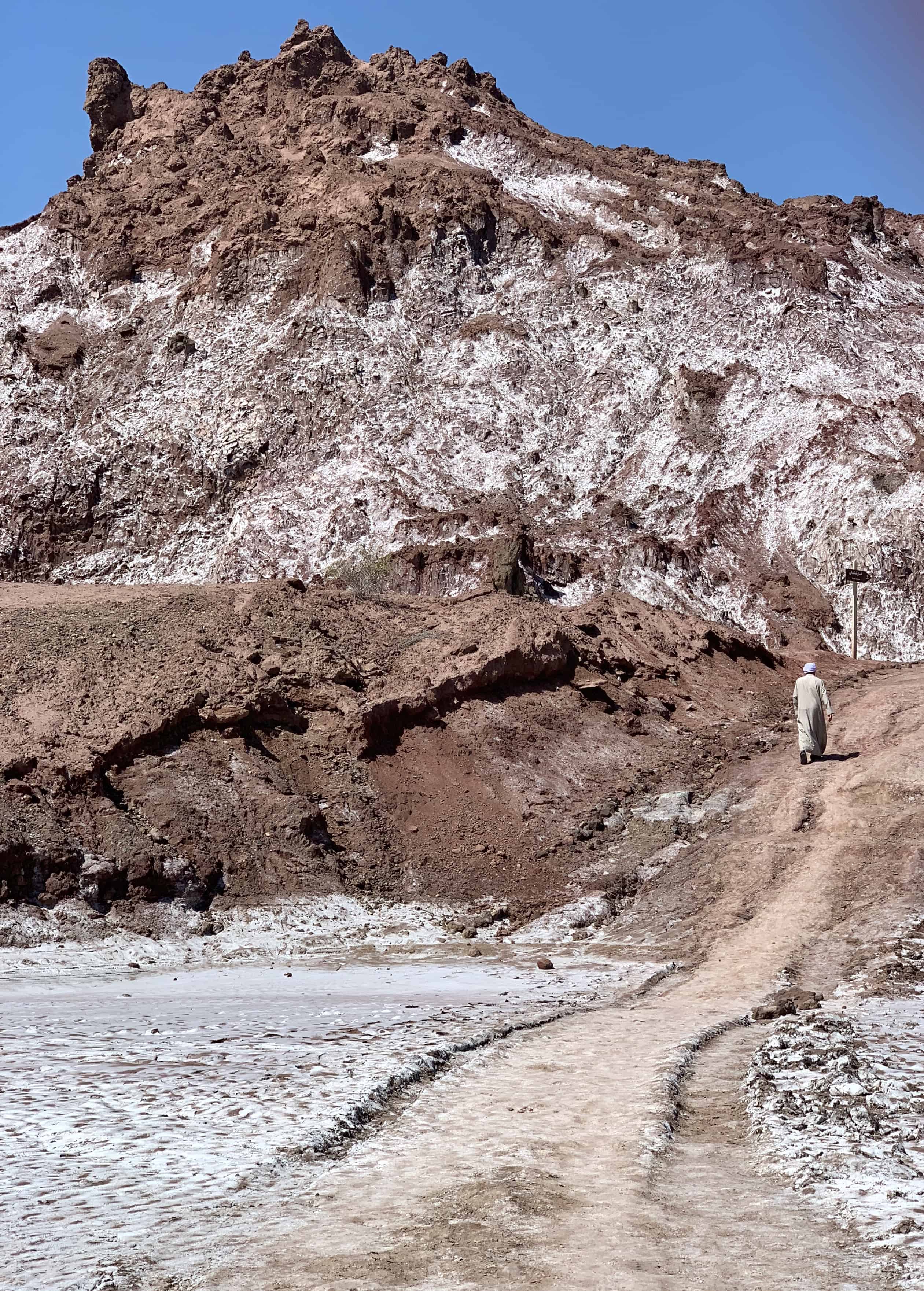
Most travel insurance companies -World Nomads, HDFC Ergo, Bajaj Allianz etc, don’t cover travel in Iran. We ultimately found IATI , a Spanish company that offers travel insurance in Iran . Luckily, we didn’t need to use our travel insurance, but it’s always reassuring to have one no matter where you go.
Also read: Travelling Abroad First Time? 10 Questions on Your Mind
Although it’s possible to get by with English in the cities, most people on the countryside only speak Farsi. We ended up learning a bit of conversational Farsi through the brilliant podcast Chai and Conversation – and practicing it with locals throughout Iran. Some basic phrases you should know:
- Salam: Hello
- Sobh bekher: Good morning
- Chitori: How are you?
- Befarmah: Welcome (you’ll hear it very often)
- Merci: Thank you (like in French)
- Nushe jahan: roughly translates to ‘my pleasure’
Also read: How to Earn Money While Travelling
While Instagram and Gmail can be legally accessed in Iran, you need VPN for everything else.
We ended up using E xpress VPN all month – safe, fast and allowed us to access everything we would in our lives outside of Iran. Make sure you download the Express VPN app and pay for a subscription before you enter Iran. One subscription allows upto 3 devices to be connected.
I also tried Nord VPN and some free VPNs, but Express VPN was by far the fastest and most reliable. Wifi is readily available at homestays, and a local SIM card is cheap and useful.
Also read: How Croatia Compelled Me to Rethink Travel Blogging
Unfortunately it’s true that women need to wear a hijab (headscarf), and cover their arms, butts and legs while in public spaces in Iran. Within your accommodation, it’s usually okay to let your hair loose. It’s rather fascinating to see how Iranian women transition from their often footloose, fashionable lifestyle at home to being fully covered while stepping out.
My relationship with the hijab quickly changed from nonchalance to annoyance to resentment, and finally to empathy for the women who don’t have a choice. Having said that, I must emphasize that we cannot judge Iranian women by the hijab . I met so many free-spirited, independent, badass, inspiring women across the country.
I didn’t buy any new clothes for Iran, except for a light long sleeve cardigan that covered both my arms and butt. I paired that with t-shirts, tops, even dresses while wearing leggings below. Note that Iran has a dress code for men too – shirts with sleeves (no sleeveless) and long pants. If only they’d cover their head in solidarity!
Also read: How I Fit All My Life Possessions in Two Bags as I Travel the World
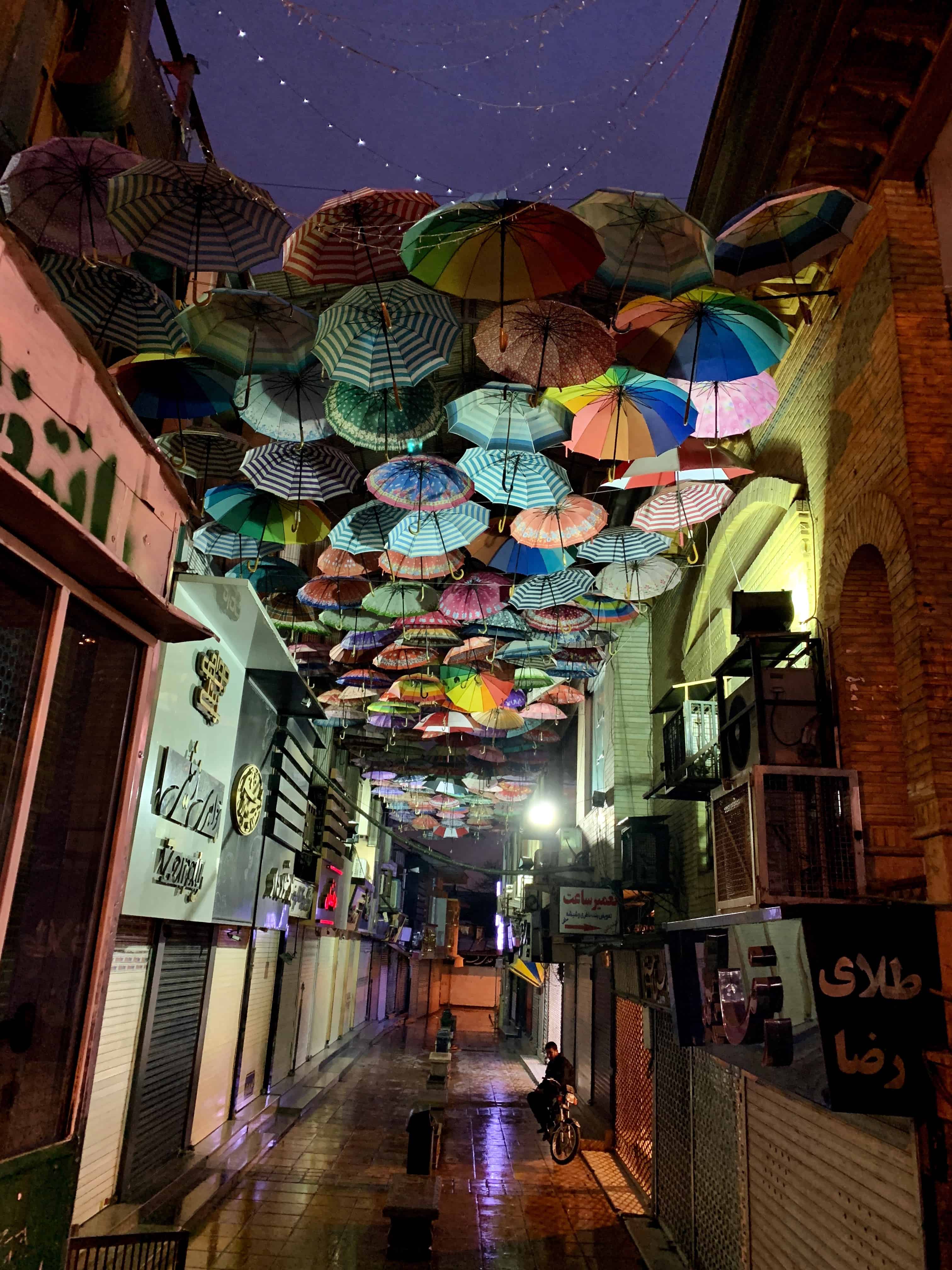
I was quite worried about being vegan in a meat-loving country like Iran, but relieved to stumbled upon Iran Vegan Travel – a small company that aggregates vegan hosts across Iran. We ended up staying at an all vegan guesthouse in Isfahan (which has changed hands since, sigh) and with a lovely vegan Iranian family in Tabriz. That meant incredible vegan Iranian food (including vegan kebabs) and veganised traditional Iranian dishes like kuku sabzi and ghormet sabzi.
During the rest of our trip across Iran, I relied heavily on the HappyCow App to find vegan-friendly restaurants and cafes. Many of our homestay hosts were accommodating enough to customise local dishes without animal products.
Also read: The Ultimate Vegan (and Vegetarian) Survival Guide for Japan
Tarof is Persian etiquette that puts the guest first: taxi drivers refuse to accept money for a ride, homestay owners refuse to let you pay for your stay, hosts stuff you with food, strangers offer to pay for your meals or entrance to an attraction, even fresh juice shops refuse to take your money. This kindness towards strangers is deeply rooted in Persian culture (much like in Indian hospitality) – but please, don’t take advantage of it to score a free meal or stay .
The rule of thumb is that if someone refuses your money or offers to pay for you 3 times , they genuinely mean it. Otherwise it’s tarof – it’s in their culture to offer, and we should reciprocate the gesture with gratitude but insist on paying our fair share. I’ve read accounts of travellers who ended up getting their accommodation, food, even transport free – which sucks, because the Iranian economy is doing terribly, tourism is one of the few avenues to make money, and as travellers, we should really know better than to take advantage of a local’s warm-hearted hospitality. Almost everything that you would pay for abroad, insist on paying for in Iran.
Also read: I nspiring Places to Live, Work and Explore as a Digital Nomad in 2019
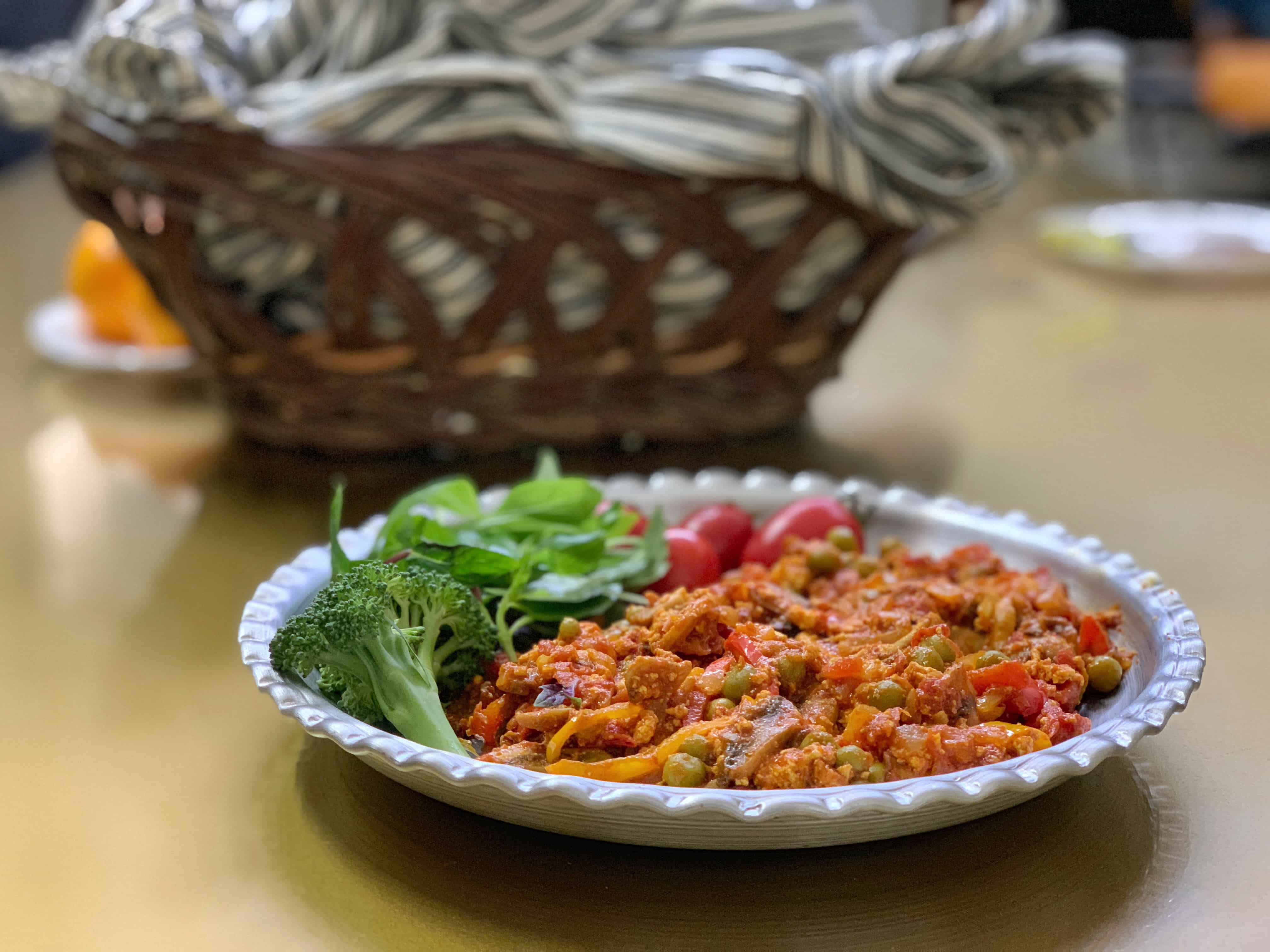
Although I didn’t travel solo on this trip, I can totally imagine doing it. The locals are hospitable and always up for a conversation, hardly anyone will try to tout you, there is much to keep you occupied, it feels safe enough and it’s one of the most affordable countries to solo travel in.
Also read: What Solo Travel Has Taught Me About the World – and Myself
Even as someone who doesn’t like spending too long in cities, I absolutely fell in love with Shiraz and Isfahan. The old gardens, stunning architecture, small-town vibe, tree-lined streets, old bazaars, nearby villages, there’s so much to love. Among other highlights of our trip were the islands of Qeshm and Hormuz, the Kaluts Desert and the cities of Kerman and Tabriz. Look out for my travel recommendations for Iran, coming soon.
Also read: A Guide to Exploring the High Tatras of Slovakia
VIP buses are surprisingly amazing in Iran, and can comfortably ferry you across long distances. Infact, ours turned into a land journey from the Persian Gulf, via the south of Iran, to Yerevan in Armenia ! It’s best to ask your host to book your bus ticket online, since websites are only in Farsi. Trains only ply a few routes in Iran.
Within cities and for short excursions nearby, we used local taxis – either booked through our accommodation or hailed directly on the street. In smaller places, many people will stop their cars to give you a taxi ride for a quick buck – which is totally safe. A little bit of haggling is common, but don’t go overboard considering the state of the economy.
Also read: What Indian Cities Can Learn from Copenhagan about Green Tourism
For a couple of months after I left Iran, my world felt bland, soulless. I threw myself into Iranian films, Persian music, books by Saadi and other Persian poets, and began learning the Urdu script so I could slowly make my way to Farsi. Yeah, withdrawal symptoms of Iran seem to be common among travellers. The only solution is to go back, again and again 😉
Also read: How Travelling is Breaking My Heart
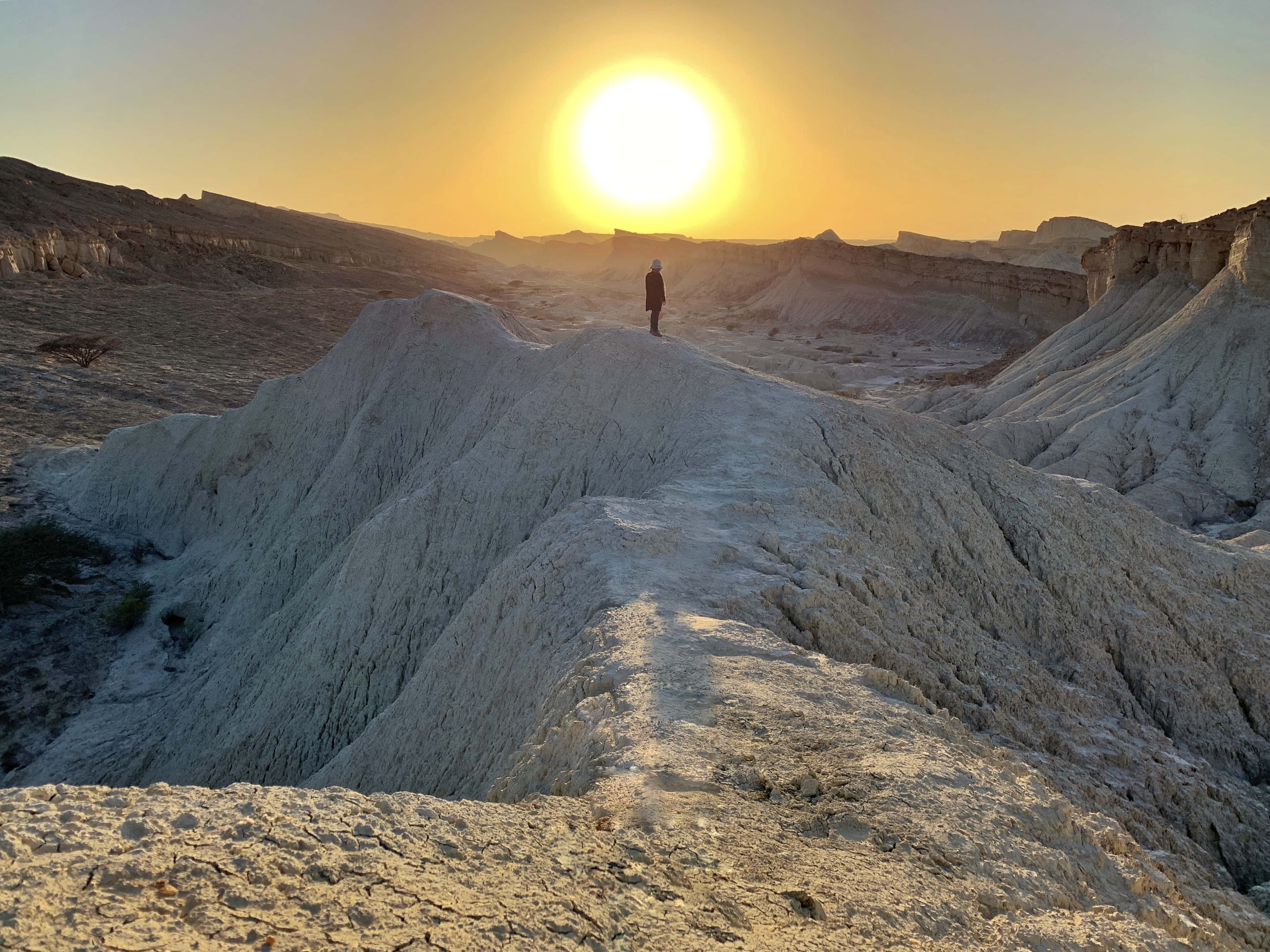
Travestyle: An awesome travel blog run by an Iranian couple based in Iran. Their posts on offbeat Iran and what to wear in Iran were particularly helpful.
Against the compass: Offers a wealth of information about independent travel in Iran – and other countries under the tourist radar.
Also read: Responsible Travel Tips for Authentic, Meaningful Experiences on the Road
A small selection of Iranian books, music and movies I love:
Music: Blue Flowers (album) by Marjan Farsad.
Books: Reading Lolita in Tehran by Azar Nafisi. The 40 Rules of Love by Elif Shafak (based on the lives of Rumi and Tabriz).
Movies: Taxi by Jafar Panahi. A Separation and About Elly by Asghar Farhadi.
*Note: I travelled to Iran in collaboration with Uppersia. Opinions on this blog, as you can tell, are always mine!
Join my adventures around the world virtually on Instagram , Facebook and Twitter ! I’m currently exploring Uzbekistan and Tajikistan in Central Asia.
Order a copy of my bestselling book, The Shooting Star .
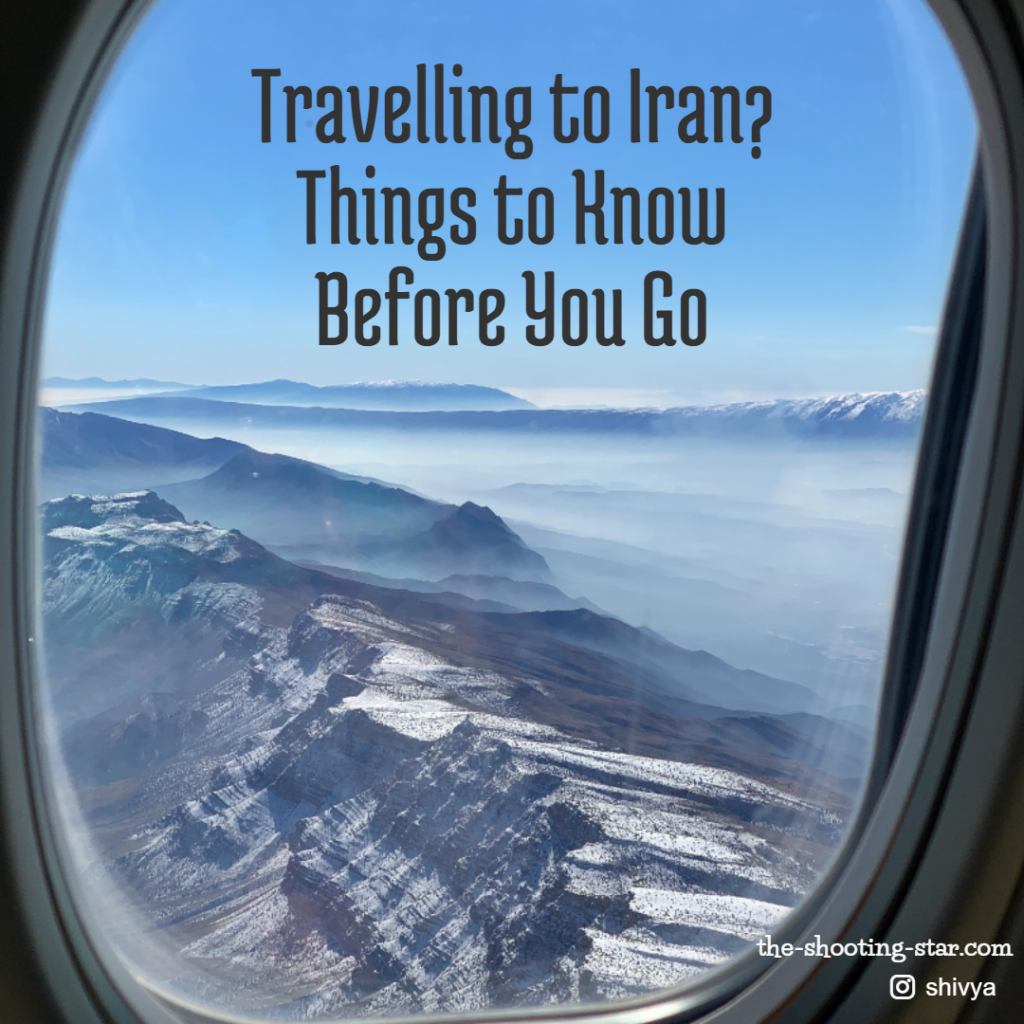
Welcome to my blog, The Shooting Star. I’ve been called a storyteller, writer, photographer, digital nomad, “sustainability influencer,” social entrepreneur, solo traveller, vegan, sustainable tourism consultant and environmentalist. But in my heart, I’m just a girl who believes that travel – if done right – has the power to change us and the world we live in.
The Shooting Star Academy

Similar Posts
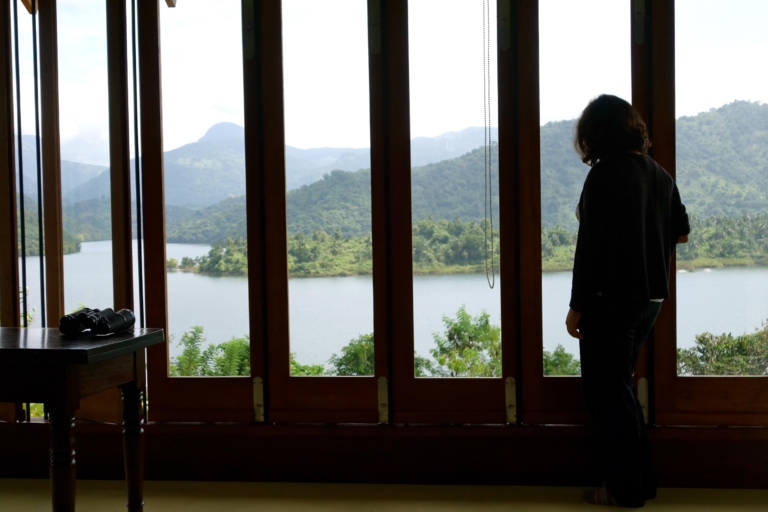
8 Epic Yet Affordable Airbnbs in Sri Lanka.
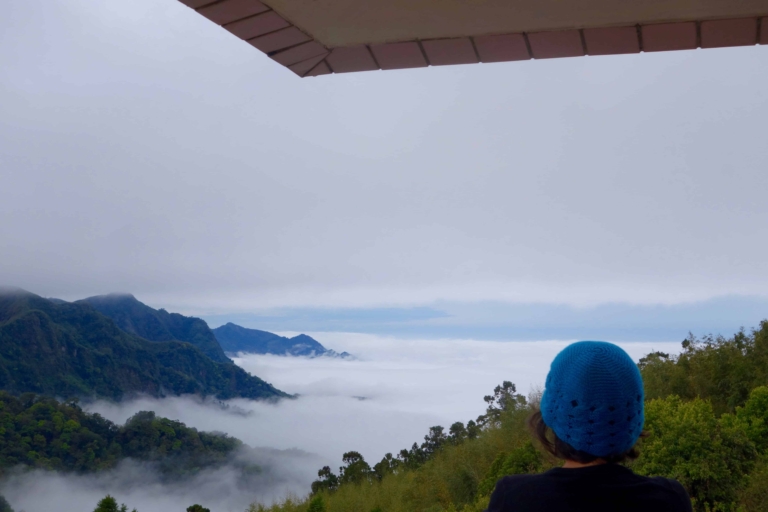
Not Your Typical Travel Guide to Taiwan.
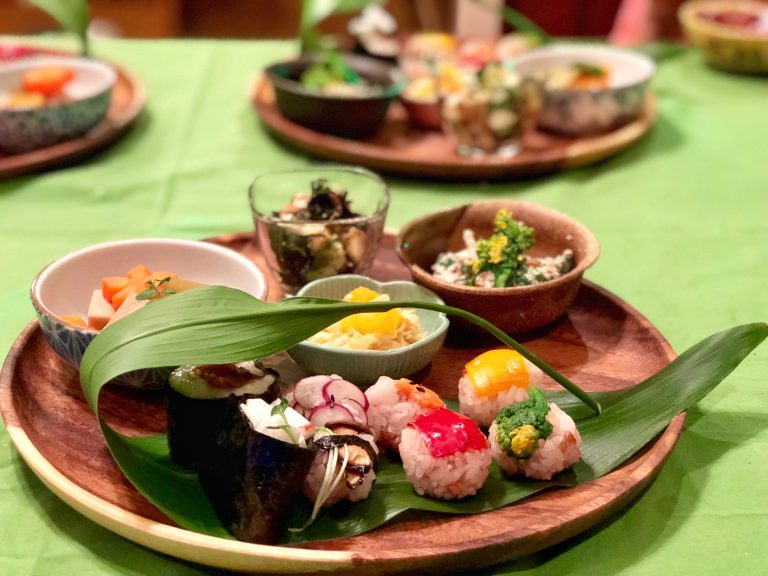
The Ultimate Vegan (and Vegetarian) Survival Guide for Japan.
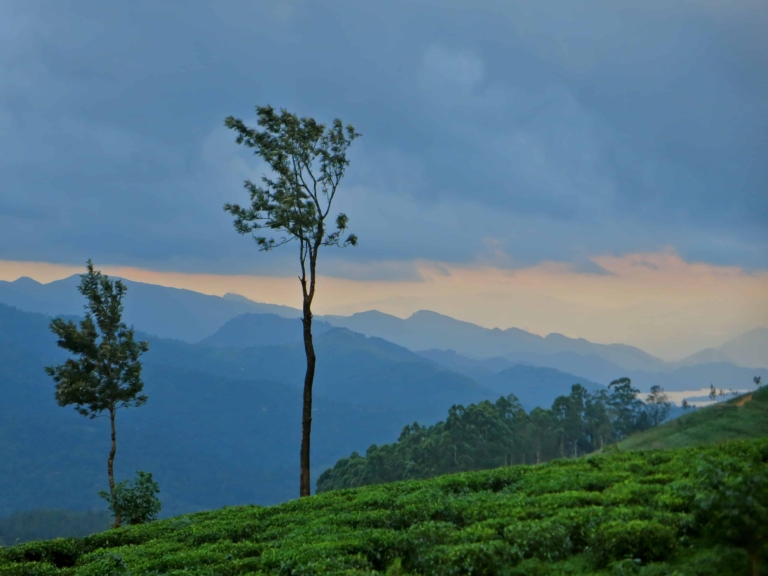
Madulkelle Tea and Eco Lodge: Tete-a-Tea in Nature’s Lap.
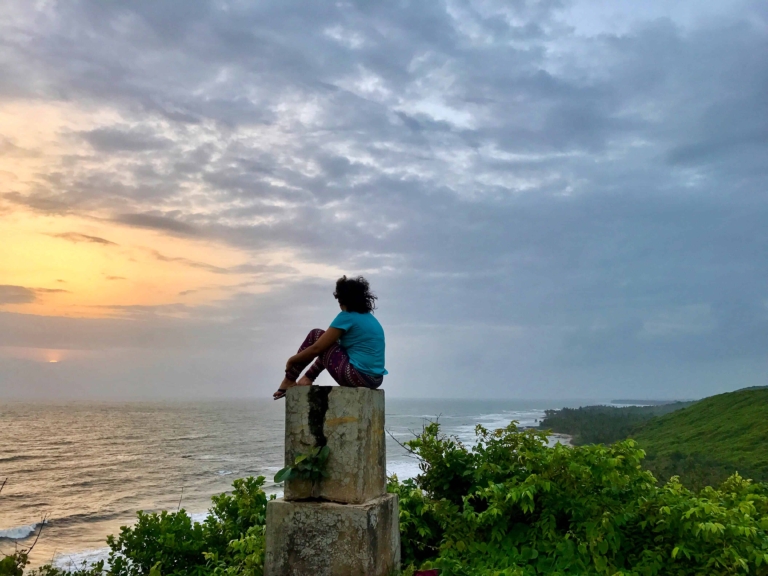
Offbeat Getaways From Mumbai That’ll Inspire You to Rethink Life.
Tempat senang: rejuvenation., 41 comments.
Thank you for sharing, Iran is on my travel list.
Hope you make it there soon!
Your first post about Iran ignited my wanderlust to drool over Iran, this one closed all my apprehensions about it. Now, I can do a solo without any hiccup in a land that attracted me since childhood when I read about the Persian Emperors Cyrus, Darius and long lasting historical bond of Persia with us.
So glad to read your comment, Amitava! I’m sure you’ll love the country and all our shared history and heritage. Hope you make it soon!
Thank you for that! That was practical, comprehensive and romantic – all at once!
Glad you thought so!
Awesome Pictures and information for Iran Country. Kindly Share More Pictures For Iran and Specific special food.
Will be writing a vegan guide to Iran soon! More photos here: https://the-shooting-star.com/2019/05/14/why-travel-to-iran-now/
Thank you very much for information about this unique country 🤩 Would love to visit Iran one day.
Hope you make it soon, such a unique and beautiful country indeed.
How harsh challenges you faced. Thanks for sharing this information..
Haha, harsh only in the context of modern day travel. But so worth it.
Love the way you write and share the exact details needed to visit a new place. This post made me want to visit Iran. Also, love the books, music and movies section. Please include for all the countries you visit 🙂
Great idea. Will try to include them as much as possible!
I am from America so naturally our media portrays Iran in a different light. I to worry about the safety in Iran. Great article on tourism in Iran.
Hope you’ll give Iran a chance though. It’s not the same as its politics, just like America.
Thank you so much dear Shivya for this post. I was married for 21 years to a Persian man and I always loved to visit Iran. Since we are divorced since many years I still have the desire to go visit Iran, I actually could visit his family, living in Tehran. Yet I would love to go on my own, rent a car and go to all the rural villages and see the real life of Persian woman, yet I don’t know if this would be save travelling as a solo woman. It would be a “candy of the eye’ for my camera and me. Anyhow thank you for all your information. Salam dear Shivya.
Would be amazing for you to travel across Iran and document life there. I’m sure people will love meeting a kind soul like you Cornelia.
Indeed that would be amazing for me and my camera, thank you so much for your kind reply my travel friend Shivya. Hopefully this dream will come true in the near future. Happy travelling to you.
Well detailed info. Just skipped Iran visit for this year for US visa reason but wish to visit soon. Thanks for sharing lovely words. Love it.
The politics makes me so mad but it’s so worth visiting!
Thanks for your valuable info and Iran is in visiting list of mine this year.
Hope you make it soon!
Amazing post. Thanks for sharing!
thanks for sharing the exact details needed to visit Iran ,i would like to visit over there and one more thing images are awesome.
Lovely post. Thank you for all the information.
your way to express things is very good thanks
thanks for sharing this beautiful experience + guide 🙂
Hope it helps plan your own trip!
The journey to Iran must be fascinating. You described it very well in your post.
Thank you, Diana
Hey. your article give a pivotal information and give us a good guide before travelling to Iran . Thanks for sharing .
this is amazing fabulous thanks for sharing it
Iran has been on my travel list for a very, very long time. Thanks for this post, it reignited me the desire to visit it 🙂
So glad to hear that; hope you make it to Iran soon!
Amazing and thorough blog…every time I read your blog You inspire me at the same time I envy you and your courage..love you Shivya..thanks for sharing such and valuable information in one post. It covered everything. Take care and keep traveling 🙂
I have not gone abroad yet. but this year by hook or crook I’ll be going. thanks again!
Such a great explanation, I will travel to Iran soon, I have some problems with booking internal flights in Iran. do you have any suggestions?
Hey nice post. I am also a traveller and blogger since 10 years. I am happy to read this article. When I travel different past of the world I also know the culture, food, living style and many more things, I also want my shayari collection to read them. Walking through streets of other countries I feed good.
Brilliantly put! All the sentences were filled with information from the start. I loved the section of ‘Books, music and movies about Iran’, blogs, and sticking to quality content 😀 I can’t wait to travel to Iran especially after reading Persepolis – maybe you can add this too in the books section 🙂
Very informative, I am planning to visit to Iran soon. Thanks
That was a nice write-up. The article was so informative thanks for sharing and keep posting. you can also check on Tours and Travels – Coimbatore
This is for the first time that I am hearing from someone that I should ensure that the exchange rate should be the unofficial one. Hahaha
Leave a Reply Cancel reply
Your email address will not be published. Required fields are marked *
Notify me of follow-up comments by email.
Notify me of new posts by email.
- Destination Iran Tours
- Iran Highlights Tour (6/7/8 Days)
- Iran Classical Tour (8/9/10 Days)
- Iran In-Depth Tour (12/13/14 Days)
- Iran Silk Road Tour (12/13/14 Days)
- Iran Skiing Tour (5 days)
- Join a Small Group Tour
- Iran Tour Operators
- Tour Services
- Iran Travel Card
- Iran Visa Services
- Iran Hotel Booking
- Iran Travel Information
- Iran Travel Advice
- Iran Travel Testimonials
- Iran Travel Newsletter
- Iranian Embassies & Consulates
- Iran Travel Blog
- Iranian Music
- Arts and Crafts
- Medicinal Herbs
- Attractions
- Responsible Tourism Articles
- Responsible Tourism Charter
- Tangible Cultural Heritage
- Intangible Cultural Heritage
- Iran Biosphere Reserves
- Chapar Gasht Parseh Travel Agency
- World Tourism Services
- Other Services & Products

Popular Topics
- Zoroastrians
- Zand Dynasty
- Zagros Mountains
- Yalda Night
- World Traveler
- Women Traveling Alone
- Windcatchers
Popular View All

Sohrab Sepehri’s Grave in Imamzadeh Sultan Ali, Kashan
Sohrab Sepehri is one of the prominent Iranian poets, born in Kashan in 1928
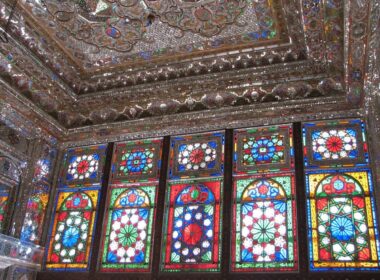
Orosi-Sazi Art in Iranian Architecture
Orosi-Sazi art is considered one of the most famous Iranian wooden handicrafts
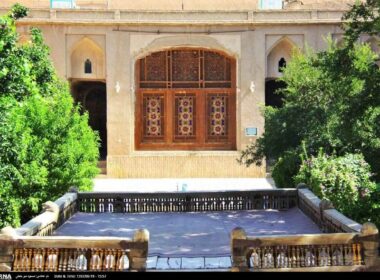
Lariha House Museum in Yazd, with Unique Persian Architecture
Lariha House in Yazd is one of the captivating buildings of the Qajar period and
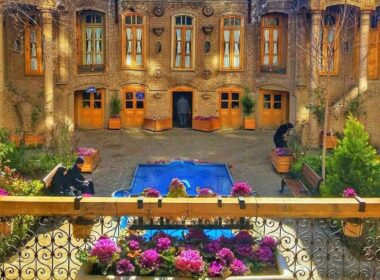
Darougheh House in Mashhad, a Qajar Historical House
Darougheh House in Mashhad is one of the Qajar historical houses and Mashhad
26+ Vital Iran Travel Advice & Tips
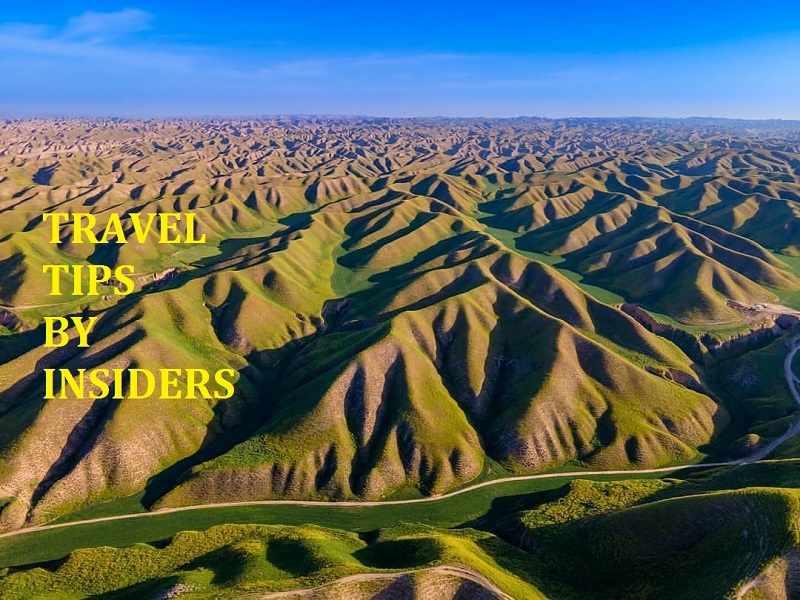
Before you travel to Iran, you need to study some practicable travel advice to get more prepared to make a trip to Iran. Destination Iran travel tips are helpful pieces of advice to make you prepared beforehand. No matter you make a journey on your own or you take a tour to Iran , you will find the following advice tips helpful.
Travel Advice & Tips for International Travelers
Former travelers have asked us several vital questions about certain things during my career as a tour guide. They are some of the most important issues helping you travel more comfortably and peacefully inside Iran. Below is a list of such questions and answers which make thorough Iran travel advice for you.
Please note that they will be updated as you add your feedback and comments to enrich them.
How are the variety and quality of foodstuff in Iran?
Those who have been to Iran have felt spoiled by the variety of high quality stews and kebabs among many other dishes. There are restaurants of various kinds. You will find a lot of herbs and spices, but Iranian dishes are not as hot and spicy as the Indian ones. A moderate amount of herbs and spices is generally added to Iranian dishes just to give them different tastes. Most of the foodstuff and vegetables taste the same old natural tastes everybody appreciates.
The meat usually served in the restaurants is chicken, veal, fish and lamb. Of course, you may find turkey, quail, lobster and shrimp too, but no pork, snake, frog, dog or other types of meat. They are prohibited to be eaten in Islam and this is observed everywhere.
The vegetarians can order raw or cooked vegetables in hotels as well as restaurants. If you’re a vegetarian, it is also recommended to let your tour guide know about it beforehand so that he/she can arrange it for you, because in some restaurants people need to be already informed. That is because it is not so popular in Iran to be a vegetarian. Our Iran travel advice here for you is to feel free to tell your guides about it .
How are the health and hygiene observed in Iran?
In fact, cleanliness is part of the Iranians’ belief system and it is evidently observed everywhere both in public and in private. There have been overwhelming campaigns, like vaccinations and trainings, to eliminate many diseases used to exist in remote settlements. They have been successful and today you see clean streets, restaurants, hotels, shops, supermarkets, parks, etc.
What kinds of drinks are possible to buy in Iran?
You can buy Any kinds of soft non-alcoholic drinks. There are Iranian-made drinks as well as international brands served everywhere. People drink tap water. It is filtrated and refined before supplied to them, but for the newcomers traveling to Iran, I do not recommend it. Instead, you’d better take Iranian bottled water. Of course, some brands are better than others. What we can offer as your Iran travel advice provider is to ask your guide about the best brand one can find in each city.
How is the quality of roads in Iran?
All the main roads are asphalted and the maintained on a regularly basis. There are highways in many routes and separate lanes to and from cities to safeguard transportation. As a matter of fact, contrary to many travelers’ expectations, roads are of very good quality.
As Iran has got a huge number of interesting sites across its geographical locations, sometimes you have to reach out to some of the remote ones taking dirt roads too. Our travel tip here is to make sure you get a map of Iran roads in English .
How far are the distances between the attraction?
Usually there are not short distances between the major attractions compared to most of the distances between the European cities or towns. Instead, you can see a lot of landscape, meet the people in the intact rural areas and experience the real life situations.
In addition, you will not find some of the amazing sites inside cities. For instance, tour guides can take possible opportunities to arrange picnic meals for you. Iranians are picnic lovers and take every opportunity to arrange for it.
What is the usual clothing in Iran?
Women wear non-transparent, loose garments covering all their bodies except for the hands and face. Color is a free choice, but red, orange, pink or similar colors are not put on during national or private sad occasions. Black is not a must. Chador is not a must either, but when it comes to visit a holy mausoleum and you have the opportunity to experience wearing a chador for a few minutes, do not skip the opportunity to feel the atmosphere.
Men put on non-transparent garments too. They may wear short-sleeve shirts or T-shirts (unlike women), but not shorts in the public. The choice of color is the same for men as well. Due to the heat of the Sun and in order to protect your skin, I would not recommend wearing short sleeve shirts. If you do, do not forget to put on some Sun block cream on your skin. But, it is your choice!
Please keep these points in mind as they are some of the most important Iran travel advice you may get from us.
When are the high and low seasons of tourism in Iran?
Usually the majority of tourists visit Iran during two periods of time: 1) from the beginning of March to the end of May, and 2) from the beginning of September to the end of November. A couple of weeks before or after each Iranian New Year, there is another wonderful choice to visit Iran. Also, the very best time to visit the south of Iran (like Persian Gulf islands and shorelines) is during January and February.
The story is different for the lovers of nature who like trekking or skiing. They find an extraordinary variety in Iran four seasons a year. Our Iran travel advice for nature lovers is to go to a different part of Iran and you can always visit Iran.
What is the time difference with the rest of the world?
The formula to set your time is very simple: UTC+ 3.5 (UTC + 4.5 from March 20 to September 21).
What is the electricity voltage in Iran?
220 volts AC, 50Hz. Plugs are of the round two-pin type. If you have 110 volts appliance to use on your trip, like shaving machine, hair drier, etc, it is recommended to take a 110-to-220 plug with you while traveling. Of course, you can find it in Iran too, but it can be a waste of time in some situations.
The best travel tip we can give you is to bring your adapter if you have one.
What is the communications service?
IDD service is available. Country code is 98. Outgoing international code is 00. In case you need to make a short distance call in the street, the telephone booths are marked in English. There are also phone cards for domestic as well as international calls available.
What is the mobile service used in Iran?
It is GSM, 3G and 4G network. In other words, if you have a mobile phone from any part of the world, it will work in Iran if your phone company has made a contract with Iranian Telecommunication Company (ITC). There are three operators providing services: Hamrah-e-Aval, Irancell and Rightel. Mobile network is improving.
The best Iran travel advice we can provide is to buy a SIM card in Iran with internet in it. Find Iranian service providers here !
Are there any fax facilities in hotels?
Yes, you can find fax facilities in most of the hotels as well as at main post offices in Iran.
Are there any Internet facilities in Iran?
Yes, there are a growing number of Internet users in Iran. So, almost all the major hotels provide their guests with Internet facilities and the others are being equipped for the same purpose. Also, many Internet cafes are already opened to the public and many other ones are going to be opened due to the increasing need of the people. Most of coffee shops and restaurants have WIFI and mobile operators offer GPRS, and since 2014, 3G & 4G services.
How fast are mailing services done in Iran?
Airmail to Europe as well as Canada and the United States can take around two weeks. Of course, sharing photos via email or social media is much more popular these days.
What goods are regarded as forbidden postal items?
1) Narcotics and laxatives
2) Explosives, radioactive and inflammable materials or other dangerous materials
3) Items against Islamic moralities
4) Live animals except for honey bees, leeches, silkworms, parasites and bug-busting animals recognized by the institutes
5) Goods forbidden to enter the destination country
6) Items that might cause a danger for post company?s personnel or might hurt the other postal items or equipment, and
7) Private documents corresponded between parties other than the sender or the receiver or any of their family members.
Is it possible to mail postcards without envelopes?
Yes. If postcards are made up of hard paper or cardboard without any raised parts and both sender and receiver’s names and addresses are written on the back of the cards, it will be possible.
Are there any local English newspapers available in Iran?
Yes, there are several dailies in English. Most of the times, you can find one in the lobby of the major hotels and newspaper selling stands.
What is Iranian Currency?
It is called Iranian Rial (IR). Notes are in denominations of IR 20,000, 10,000, 5000, 2000, 1000, 500, 200 and 100. Coins are in denominations of IR 500, 250, 100, 50, 20, 10, and 5. You may come across the word Toman there. 10 IR = 1 Toman. Everyone is using this word instead of Rials except for some special cases. The rate of exchange goes through very few fluctuations every day.
The best Iran travel advice we can offer here is to search the web and check out with an official exchange office when you’re in Iran..
Are credit cards accepted in Iran?
Not exactly. There are not any official services for the internationally known credit cards in Iran. Also, some smart businessmen can accept credit cards. In some particular shops you can purchase some items like carpets, handicrafts, jewels, etc by credit cards like in some major hotels or some other shops outside hotels. Generally, it is recommended to take some cash with you while traveling in Iran.
We have come up with a solution for you: The best Iran travel advice for using a card in Iran is to try our Iran travel cards :
Is it safe to have cash while traveling in Iran?
Of course, it is. This doesn’t mean that you don’t have to be careful with the cash you have on you. Generally, you need to take the same precautionary measures that you take in other countries.
Are the prices high or low in Iran?
Fortunately, the price for the majority of the items that tourists are looking for are relatively low. Items like high quality books, souvenirs, meals, foodstuff and transportation are very tempting because of their relatively high quality yet low prices.
What are the prohibited items while traveling to Iran?
Alcoholic beverages, narcotics, guns and ammunition, all horticultural and agricultural goods including seeds and soil; aerial photo cameras, transmitter receiver apparatus, pornography, most films, cassettes, CDs and videos and any kind of fashion magazine. Of course, hunters who are visiting Iran on hunting tours can get necessary permits for carrying their guns and ammunition via their Iranian travel agents beforehand.
What are the restricted items while going out of Iran?
Antiques and a large amount of gold, silver, and jewelry. By definition, antiques are objects older than 100 years. The best Iran travel advice you can get from us on this subject is to keep away from trouble.
What are the working days and off days in Iran?
Iranian working days are from Saturday to Thursday and Fridays are the National off days. On Thursdays, some companies are totally off and some are working only half day.
Is it customary to do tipping in Iran? Where and when?
Yes. It is customary to tip porters, servants and janitors in hotels, porters in the airports, waiters or waitresses in restaurants, drivers giving services during tours as well as guides.
More Travel Advice
As Iran is quite unknown to you, you will need to read more than a list of questions and answers. Therefore, we recommend you to read various detailed Iran travel advice provided to you in our blog posts.
You can find more travel tips at the following blog posts:
- Iran Travel Advice about Telecommunication and Internet
- How to Choose a Hotel in Iran
- Iran Travel Advice about Food & Drinks
- How Can Americans Visit Iran?
- 3 Approaches to Obtain Iran Tourist Visa
- Iran Travel Advice about Dress Code
- 7 Tips for Taking Photos in Iran
Destination Iran's Sponsors


Iran Travel Guide: Things to Know Before Traveling To Iran
A complete guide for a savvy traveler.
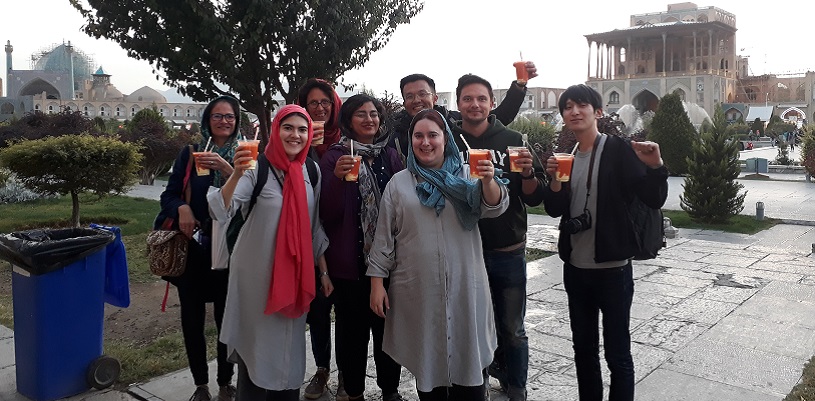
Incredible, welcoming, and surprising! That’s how travelers have almost always found Iran. Despite the media portrayal, the country’s ancient history, diverse nature, rich culture , and unbelievably hospitable people speak for themselves and have always changed travelers’ views altogether. But a savvy traveler always checks before planning and packing up, right? So, this ultimate Iran travel guide will help you find out the things to know before traveling to Iran .
- Welcome to Iran
- Tips and how to travel to Iran in 2023
- This Is How to Travel to Iran – Everything You Need to Know
- Ultimate Iran Travel Guide
- Traveling to Iran in 2023: Tips for Traveling to Iran
- Tourist Guide in Iran
- Iran travel advice
- Things to Know Before You Visit Iran (2023 Guide)
- When is the best time to visit Iran
- Can you travel to Iran as an American
- 1 Iran Travel Tips, Dress Code in Iran
- 2 Iran Travel Guide, Is Iran Safe?
- 3 The Weekend, Dates, and Times you Should Remember in Iran, Iran Travel Guide
- 4 Iran Travel Tips, One Currency, Two Names
- 5 Communication, Iranian SIM Card, and Internet
- 6 Alcohol in Iran Travel Tips
- 7 Iran Travel Guide, Things to Know about Nightlife and Partying in Iran
- 8 No International Credit Cards- No Visa or MasterCard
- 9 The Surprising Love of Iranians for Tourists, Welcome to Iran
- 10 Etiquette in Religious Places
- 11 Things to Know Before Traveling to Iran, Practical Words to Know in Persian
- 12 Iran Travel Tips, Travel Adapters for Iran
- 13 Iran Travel Guide, Getting Around the Cities/Country
- 14 Handshake Etiquette and Public Display of Affection (Iran Travel Tips)
- 15 Things to Know Before Traveling to Iran, the Best Time to Visit Iran Travel Guide
- 16 Iran Travel Tips, the CRAZY Traffic
- 17 Understand the Târof (Things to Know Before visiting Iran)
- 18 Accommodation in Iran
- 19 Tips for Traveling to Iran During Ramadan and Muharram
- 20 Free Water
- 21 Restrooms in Iran
- 22 Items Forbidden to Bring to Iran, Things to Know before Traveling to Iran
- 23 American, Canadian, and English Citizens Iran Travel Tips
- 24 Stamp of Israel
- 25 Tea or Coffee?
- 26 Blocked Websites and Social Media Platforms in Iran
- 27 Iran Travel Tips, What if You Need Medical Assistance in Iran?
- 28 In an Iranian Home
- 29 Segregated Public Transportation in Iran Travel Guide
- 30 Traveling in Iran as a Vegan or Vegetarian
- 31 Tipping in Iran
Iran Travel Tips, Dress Code in Iran
Above all things to know before you travel to Iran , you need to know wearing a headscarf (hijab) is a MUST for all women. The good news is, Iranian women are liberal and fashionable about it and so can you! What else? Well, both men and women should be wearing modest clothing. So neither can wear shorts in public; and no stringers for men. As a rule, women shouldn’t show skin except for in hands, face, and feet. Although you’ll find Iranian ladies dressing more liberally, I’d recommend loose fitting shirts that cover your arms and pants that come down to your ankles. And if you’re wearing leggings or tight jeans, make sure your shirt is long enough to cover your bottom.
More Iran Travel Tips
- Have a scarf in your carry-on luggage before arrival.
- Some hotels and guesthouses allow you to take off your headscarf on their premises. But do check with them.
- Don’t stress over clothing! Shopping in Iran is not only cheap, it is also a fun way to mingle with the people. Just bring a scarf and a set of loose-fitting clothes, and shop for more when you get there.
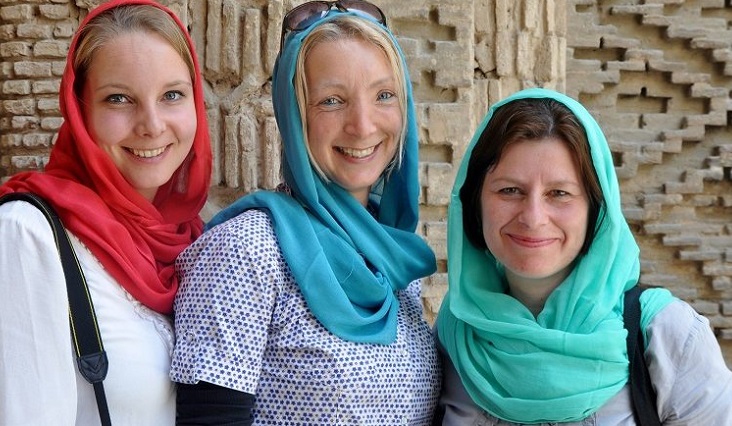
Iran Travel Guide, Is Iran Safe?
One of the top things to know before visiting Iran is that both statistics and tourist experiences show that Iran is a very safe place to travel to. So much so that many tourists have described it as the safest country they’ve ever been to (just search around)! Travelers have had safe journeys across isolated deserts , stayed in stranger’s homes, left belongings in restaurants with no problem and … But like any other places in the world, you still have to be cautious. I recommend keeping your passport (or a copy of it if you’ve handed it to your hotel) with you all the time, watching your belongings at crowded places, staying away from Afghanistan and Iraq border (unless you are with a tour), staying away from any protests if you see them, and avoiding photographing things and places that might be considered sensitive state/military property.
The Weekend, Dates, and Times you Should Remember in Iran, Iran Travel Guide
In Iran, the weekend is Friday. So, all banks and government offices, as well as most businesses (including some department stores), are closed on Fridays. Some even close earlier on Thursdays. During some official holidays (including Tasu’a and Ashura) all places including historical site are closed.
Banks and government offices are open from around 8 A.M. to 2:30 P.M. (except for Thursdays). Exchange offices are open from around 10 A.M. to 5 P.M. And shop hours are very flexible, typically 8 A.M. to 9 P.M.
Iran Travel Tips, One Currency, Two Names
The official currency in Iran is the Iranian Rial (code IRR). But although the bank notes and goods pricings are written in Rial, the prices are almost always given in Toman (1 Toman=10 Rials). So, if for example a shop keeper charges you 10,000 Tomans for a carton of milk, you should pay 100,000 Rials. Well, that’s still a lot of zeros, right? So Iranians usually even drop 3 more zeros and simply say 10 Tomans.
I recommend learning Farsi numbers to read prices yourself:
- Zero – ۰
- One – ١
- Two – ۲
- Three – ۳
- Four – ۴
- Five – ۵
- Six – ۶
- Seven – ۷
- Eight – ۸
- Nine – ۹
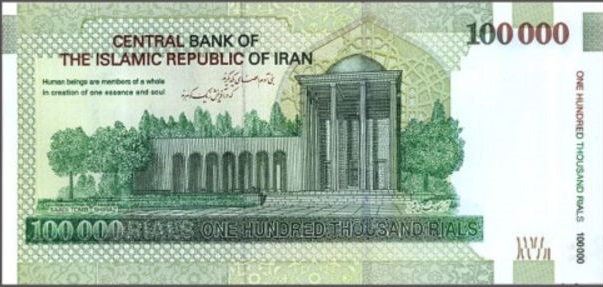
Communication, Iranian SIM Card, and Internet
Private phones, Iranian Sim Cards , Wi-Fi and mobile data connection, and fax services at most hotels make communication efficient and reliable in Iran. To lower your expenses, you should pick up an Iranian SIM Card. There are 3 different companies in Iran that can provide you with it. Check out the websites I have listed below to find out their services and tariffs. With these cheap SIM Cards, you can have Internet access almost everywhere in Iran. Plus, Wi-Fi access is also widespread via hotels and Internet cafés. Iran country code is +98.
Here are websites for the main SIM Card providers in Iran:
http://www.mci.ir
http://www.irancell.ir ( MTN Irancell Sim Card Internet Packages & Price)
http://www.rightel.ir

Alcohol in Iran Travel Tips
If you can’t live without alcohol, Iran will totally let you down! Since the 1979 Islamic revolution, alcohol has become illegal throughout the country. You can find non-alcoholic beer in super markets, but that’s it!
Iran Travel Guide, Things to Know about Nightlife and Partying in Iran
If you are a party person, Iran is probably not the place for you! No dance clubs, no bars, and no alcohol! I think that means no nightlife! The Iranian version of nightlife is hanging out together with family or friends in the parks or cafés after sunset. Summer nights are most lively and people may stay out until after midnight.
No International Credit Cards- No Visa or MasterCard
Iran has its own independent banking system, so you can’t use your international credit card (including Visa and MasterCard) there. Therefore, you should either carry cash or get an Iranian Tourist Card. Most types of currencies are acceptable in Iran and can be exchanged for the Iranian Rial. Find better exchange rates in exchange agencies rather than banks. If you prefer not to carry cash, pre-order an Iranian Tourist Card (local Iranian debit card).
The Surprising Love of Iranians for Tourists, Welcome to Iran
Most tourists who have visited Iran have had one thing in common: being surprised by how Iran is different from what they pictured it. And the rest of them are the ones who were already aware of the fact that Iran is so much different from its media portrayal. Things like “we’ve never felt as welcomed, fascinated, and humbled as we did when we visited Iran” and “we’ve been treated to nothing but courtesy and friendliness” are of the common comments of travelers to Iran.
Some even described the way they have been received by the Iranian people as “the closest we have felt to being rock stars”! So if you don’t mind people coming to you all the time to greet you, welcome you, practice their English, and invite you to a cup of tea or even a meal in their home, Iran will be full of sweet surprises for you. And you know what? Most travelers have mentioned this hospitality as the greatest part of their trip.
Etiquette in Religious Places
Keep in mind that where you’re visiting is someone else’s worship space. So dress and behave respectfully. To visit most mosques or holy shrines in Iran, women should wear a chador (veil) before entry. You can usually find a kiosk at the entrance where you can borrow one. You also have to take off your shoes before entering the carpeted interior/praying area.
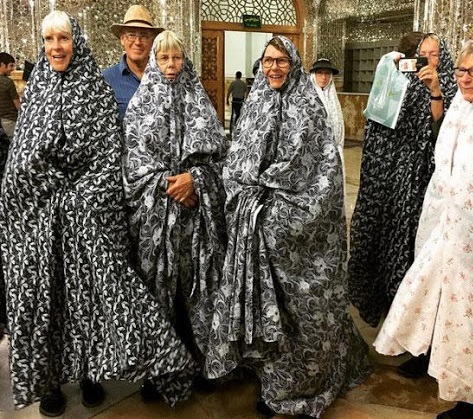
Things to Know Before Traveling to Iran, Practical Words to Know in Persian
While other languages and dialects (including Turkic, Kurdish, and Arabic) are spoken in Iran, the official language of the country is Farsi. Besides learning Farsi numerals, there are a few other phrases that will definitely come in handy. Here they are:
Hello: Salaam!
How much? : Chand?
Where is…? : Koja?
How are you? (formal) : Haal-e Shoma Chetor-e?
How are you? (informal) : Khoobi?
Thank you! : Mamnoon/ Merci/ Sepaas!
I’m fine! : Khoobam!
Goodbye : Khodahafez!
Rial or Toman? : Rial ya Toman?
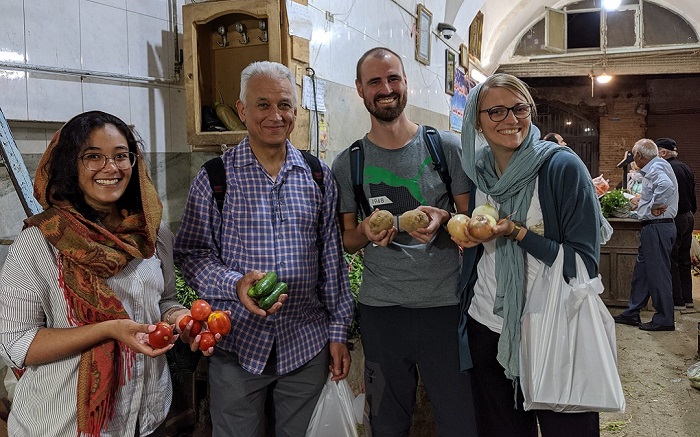
Iran Travel Tips, Travel Adapters for Iran
There are two plug types in Iran. One has two round pins and the other has 2 round pins with two earth clips on the side. Iran operates on a 230 V supply voltage and 50 Hz.
Iran Travel Guide, Getting Around the Cities/Country
Airplanes and buses are the main means of transportation. But most main cities are also accessible through train. The islands are also reachable by planes and ferries. Inside the main cities, the subway and the buses can take you all around the city. You just need to find out which one to take. Taxis are also widespread. If you just find one on the street, tell the driver that you want it to be darbast (meaning exclusive), or he’ll fill the taxi with other passengers.
I personally recommend a Snapp, which is the Iranian version of Uber. It is a real lifesaver and the perfect thing is that the exact price is determined by the app. The only problem might be that the driver may call you to ask where exactly you are. Then you can ask a passerby to help the driver find you. The number of people who will be eager to help you will actually surprise you! If you’ve got an iPhone, the app doesn’t show up in App Store, so you should directly download it from its website.
Handshake Etiquette and Public Display of Affection (Iran Travel Tips)
Generally, shaking hands with the opposite gender is hit-and-miss in Iran. So unless you know the person is ok with it, don’t go for a handshake, especially in public. The safe way is to put your hands on your heart and show them a bright smile. More importantly, avoid public display of affection even with your spouse.
Things to Know Before Traveling to Iran, the Best Time to Visit Iran Travel Guide
If you are planning to travel around the country, spring and fall are generally the best seasons for a trip to Iran , especially spring. Summers can be intolerable in some regions (southern Iran being an example), and winters can be really cold or snowy in certain regions (like west and northwest Iran). But if you are into winter sports, Iran is a great budget destination. And if you particularly like to visit the hotter regions, winter is of course the best time of year to travel to Iran.
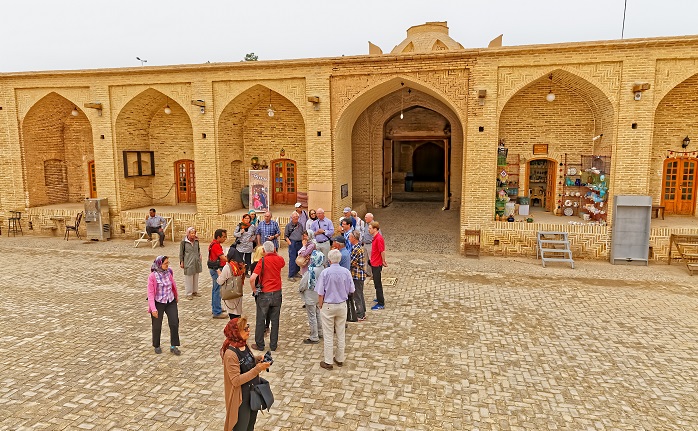
Iran Travel Tips, the CRAZY Traffic
One of the things to know before traveling to Iran is about the traffic! Probably the worst thing you can experience in Iran is the traffic! Most specifically, crossing the street could be like an adrenaline-rush ride (LOL). It is not that Iranians are bad drivers. It seems like they just neither have a concept of space when driving around nor do they take traffic rules seriously! So I recommend crossing the street with an Iranian person while making sure the Iranian is closer to the approaching traffic (LOL)!
Understand the Târof (Things to Know Before visiting Iran)
One of the interesting things to know before traveling to Iran, is that you may be surprised if a taxi driver, cashier, or shop keeper rejects your money and says ‘ghâbel nadâre’ (meaning it’s my treat or it’s on me). Because it doesn’t really mean that you can just leave and not pay. It is in fact a common polite gesture in the Persian culture : Târof. But if you insist more and the person keeps insisting that it’s his/her treat, then you’ve just tasted a piece of Iranian hospitality. The sweet gesture is also common if you make Iranian friends. So if you get treated once, it’s polite to return the favor later.
Accommodation in Iran
Most major booking websites (such as Airbnb, Agoda, and Booking.com) are not available in Iran. So you just can trust the hotels recommended by TripAdvisor or other reliable travel websites. However you can find budget Iran accommodations in Hostelworld. Something else you should know about Iran is that it is common for your hotel to hold your passport during your stay.
Tips for Traveling to Iran During Ramadan and Muharram
One of the other important things to know before visiting Iran is about the date of your vacation. It is always a great idea to consult the Persian calendar before planning your trip. The reason is that your trip might be quite different from what you expect on certain dates. During the holy month of Ramadan, when Muslims are fasting, you’ll not only not be able to eat in public but you’ll also have trouble finding a place to eat during the day. Plus, the overall vibe of the county will be subdued. During Muharram, people will be mourning and the cities will be clad in black. Unless you are interested in a religious adventure, Muharram wouldn’t be a great time to visit Iran .
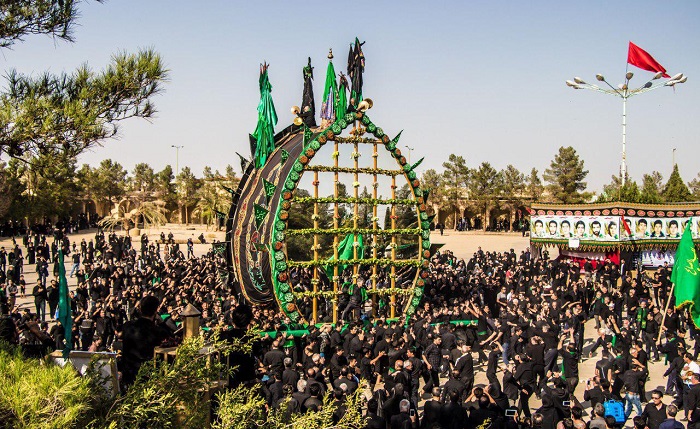
Tap water in most cities is safe to drink and you will find at least one water fountain in each park/site.
Restrooms in Iran
You can always find toilets (often free) at parks, bus/train/petrol stations, mosques, and airport terminals. Toilets in most public restrooms are the Iranian squat toilets (with the exception of airports and hotels). Also, you can’t find toilet paper in most public restrooms, so take yours instead.
Items Forbidden to Bring to Iran, Things to Know before Traveling to Iran
One of the most important things to know before traveling to Iran is the list of items that are forbidden. The list includes any sort of alcoholic drinks, narcotics, weaponry, munitions, aerial photography camera, sender and receiver sets, and books, periodicals, and multimedia that can be considered a moral, cultural or political threat.
American, Canadian, and English Citizens Iran Travel Tips
First of all, if you are an American, Canadian, and English citizens, you should know that not only you are welcome in Iran, but you are also probably the most popular among Iranians! But the rule is that you are not allowed to travel independently. So, you must either join a tour or be accompanied by an approved guide.
Stamp of Israel
An important tip for your travel to Iran is that if you have traveled to Israel in the past 6 months, you can’t even receive an Iran visa .
Tea or Coffee?
While you’re in Iran, always go with tea. You can rarely find good coffee in Iran (except for in some coffeehouses) and in most places the best you can get is a cup of instant coffee. But chai (tea) is the national drink and you can find good tea with amazing taste and color all around Iran. Plus, Iranians love herbal drinks. So you can try a variety of herbal drinks in Iranian cafés.
Blocked Websites and Social Media Platforms in Iran
One of the important things to know before traveling to Iran is that Facebook, Twitter, most western news agency websites, and a number of other websites are blocked in Iran. But you can do as the Iranians do! Use a proxy! Although the possible lowered speed might frustrate you, but at least you have access. Make sure to download your VPN before your trip to Iran, because a lot of websites that provide VPN applications are also blocked in Iran.
Iran Travel Tips, What if You Need Medical Assistance in Iran?
It might come as a surprise, but the medical standards in Iran are so high that the country even welcomes a considerable rate of medical tourists from the Arabian countries. Highly professional doctors and medical staff and modern medical facilities leave no room for you to worry about your health safety in Iran. But you should note that treatment is never free and you’d better get a travel insurance with health coverage.
In an Iranian Home
Got invited to an Iranian home? This is going to be one of your UNFORGETTABLE memories! Beside the finger-licking home-made food you’ll be treated to, you’ll be humbled by the sweet kindness and hospitality of your hosts. Just remember to get your host something (flowers, chocolates, pastries, and souvenirs from your country are just fine) and take off your shoes before you enter (this applies to 99% of Iranian homes).
Segregated Public Transportation in Iran Travel Guide
If you prefer public transportation, one of the top things to know before traveling to Iran is that the city buses are segregated in Iran. Women can enter the male section when the bus is not crowded though. Subways also include women-only sections, but women don’t actually have to use them.
Traveling in Iran as a Vegan or Vegetarian
To be honest, vegetarians and vegans might have a hard time in Iran. It’s not impossible to find vegetarian or vegan dishes in Iran , but most restaurants serve food that contain meat or other animal products. Hopefully, side salads and dishes of fresh herbs are very common all around the country. You can opt from different kind of rice mixed with vegetables, Mirza Ghasemi (Smoked aubergines with garlic), Kashk-e Bademjan (eggplant dip), Ash Reshteh ( a soup containing greens, beans, and noodle- ask the chef whether it contains meat). Vegetarians also can go for Kookoo Sabzi (herb frittata with egg) and Kookoo Sibzamini (potato patties).
Tipping in Iran
In Iran, it is common to tip taxi drivers, bellboys, porters and guides. And the amount depends on your generosity. Yet, tipping in restaurants isn’t very common; but showing appreciation for a waiter’s good service is always nice.

Zahra Soltani
Content manager, international relations manager.
To Zahra, introducing the beauties of Iran is a delight and an inherent mission! Beyond that, arts, culture, literature, mythology, and all the astonishing secrets of our marvelous universe set her soul on fire! This is what makes Zahra a filmophile, an insatiable reader, and a passionate writer.

Shafei Mosque (Kermanshah, Iran)
Top iranian foods: persian dishes you’ll have to try.

Related Posts
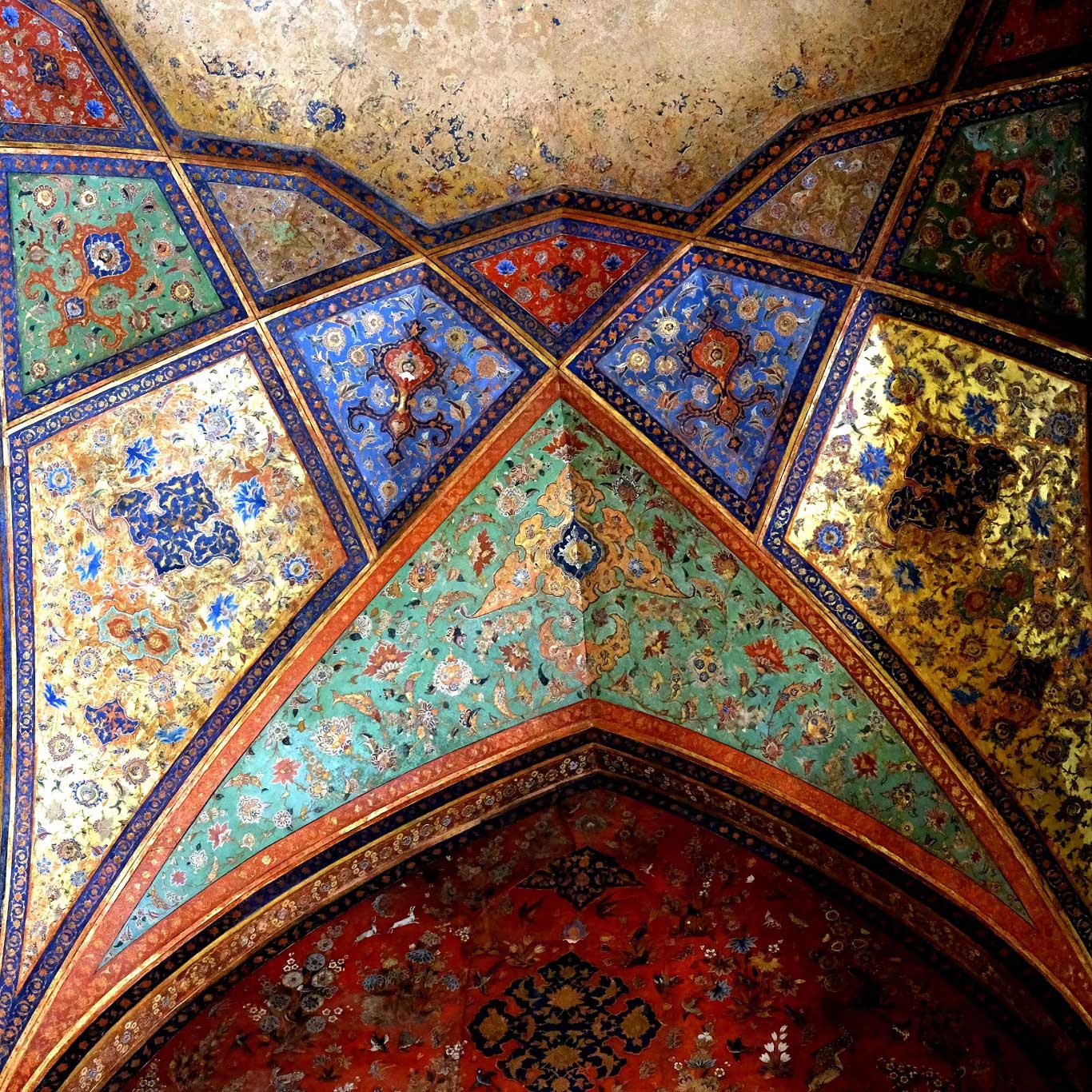
Iranian Arts: Arts of Iran & Ancient Persian art
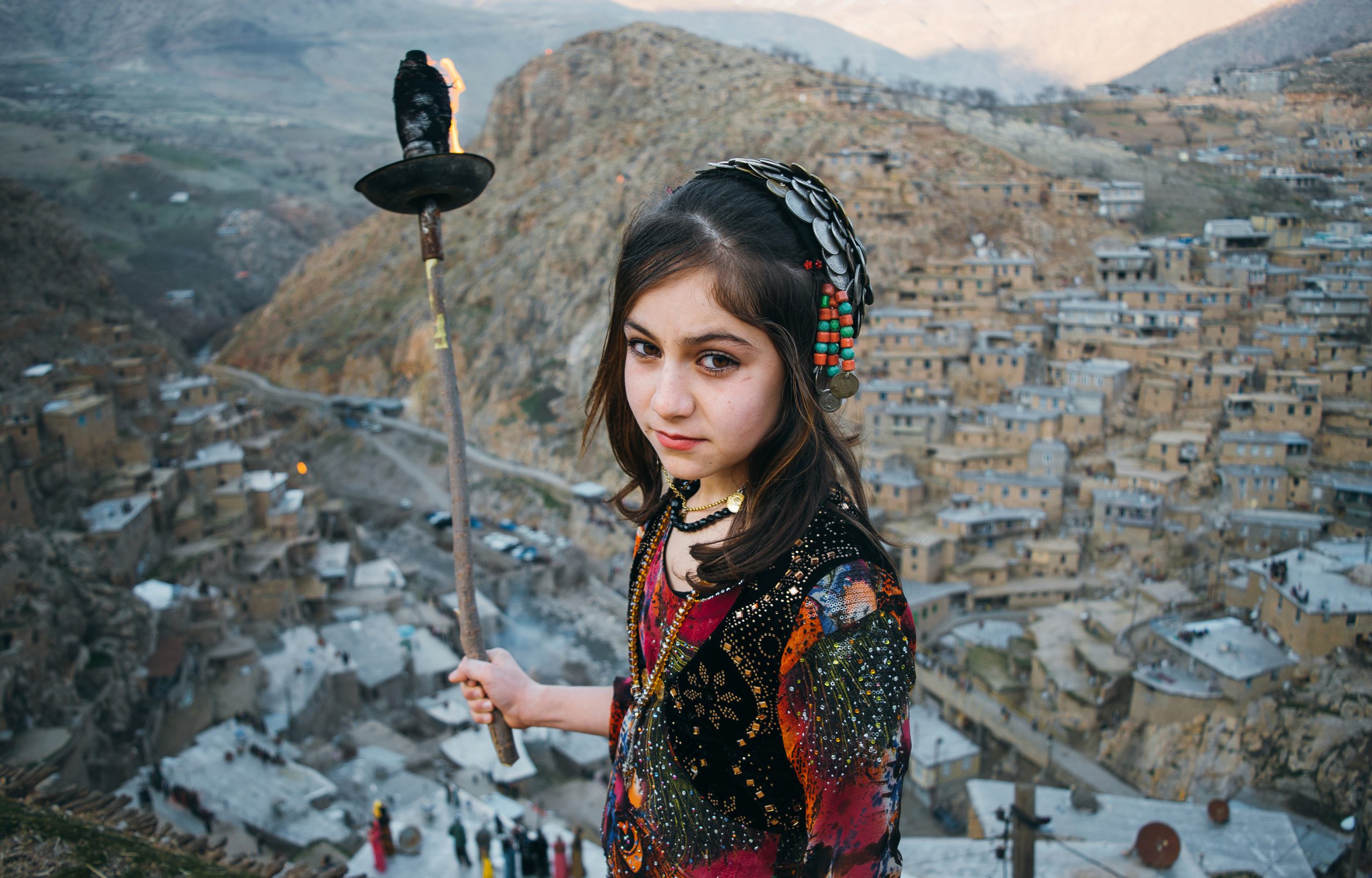
Iran Holiday: National & Public Holidays in Iran (Persian Holidays)
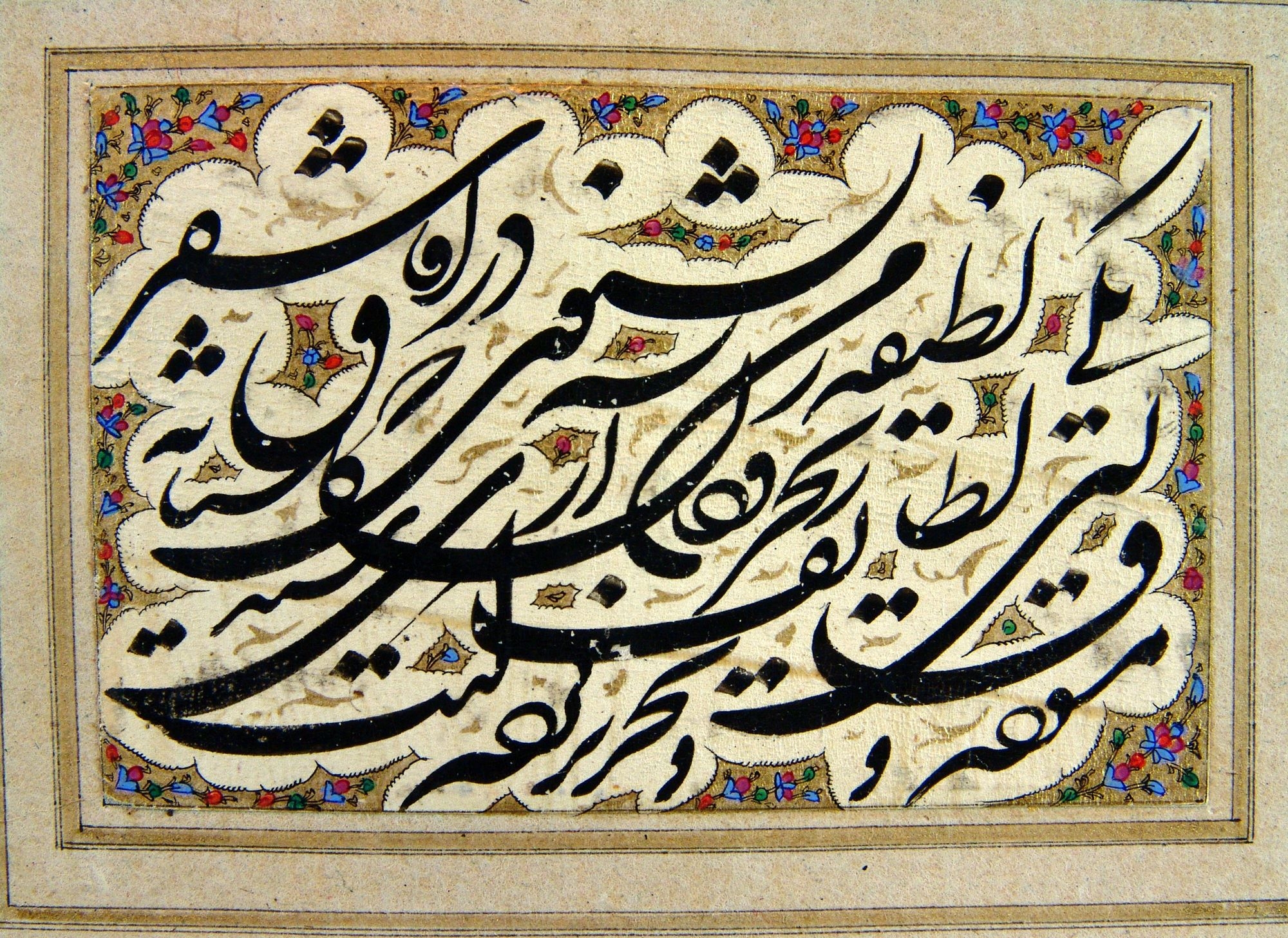
Persian Calligraphy Art & Paintings (Iranian Calligraphy)

Are Welsh citizens as welcome as our English neighbours in Iran?

Of course, they are welcome, just like all the nations around the world. It’s a tradition in Iran to greet and respect guests. American, Canadian, and English citizens are welcome just the process for getting a visa is different and longer.
Thank you. i understand that visas for visiting Iran are to be relaxed and shall be free of charge for those wishing to enter Iran from Qatar during the soccer world cup tournament in November. When can i apply for a visa? i gather that they are not available yet.
i am interested in visiting Kermanshah.
Greetings. We are keeping track of the updates on that kind of visa, but it as you have gathered yourself, it seems that they are not available yet. I recommend applying for your visa as soon as possible if you are interested in visiting Iran. I will email you the link for applying for a visa if you’d like.
WhatsApp us
- Skip to primary navigation
- Skip to main content
- Skip to primary sidebar
Travel & Food, Itineraries & Guides, Hotel Reviews
The Perfect Itinerary for Iran – Essential Persia in 9 Days
December 2, 2019 by Bino 1 Comment
For a country of its size, Iran offers a plehora of things to see and do – especially if you love architecture as well as the great outdoors – that it’s probably hard to compartmentalize the country into a short one or two week stretch. Boasting some of the most beautiful cities, atmospheric desert towns, intricately constructed buildings as well as unreal landscapes, Iran is an eye-opening place and definitely has something for everyone.
The classic travel route for Iran is the one that stretches from Tehran to Shiraz, covering other cities such as Kashan, Esfahan and Yazd in between. Given that these cities are well connected, there’s little need to back track so you can either start in the north in Tehran or down south in Shiraz. This itinerary aims to show how you can cover these cities in Iran, starting from Tehran, but you can easily reverse this.
Table of Contents
Day 1 – Tehran (Azadi and Milad Towers, Golestan Palace, Grand Bazaar)

skyline of tehran
Tehran, the sprawling capital of Iran, is the largest city in Western Asia. For most travelers, the introduction to Iran, is one of congested roads and air pollution. If you happen to visit during a public holiday, it’s a totally different story and you’ll find highways almost empty.
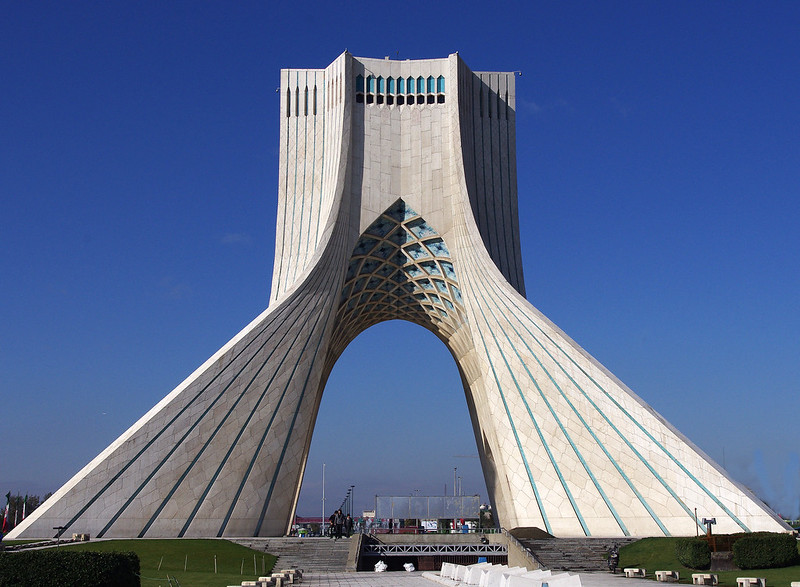
azadi tower
Tehran has quite a number of sights worth visiting and you can easily get around by taxi or hired car. The city also has a metro and is a great alternative for getting around, especially considering the traffic jams. A must visit when in Tehran is the Azadi Tower , an architectural gem that was built to commemorate 2,500 years of the Persian empire. The tower is surrounded by a park which is encircled by a roundabout. It is possible to enter the tower for a fee but in my opinion, you’re better off admiring the curves from the park itself than to be inside the tower.
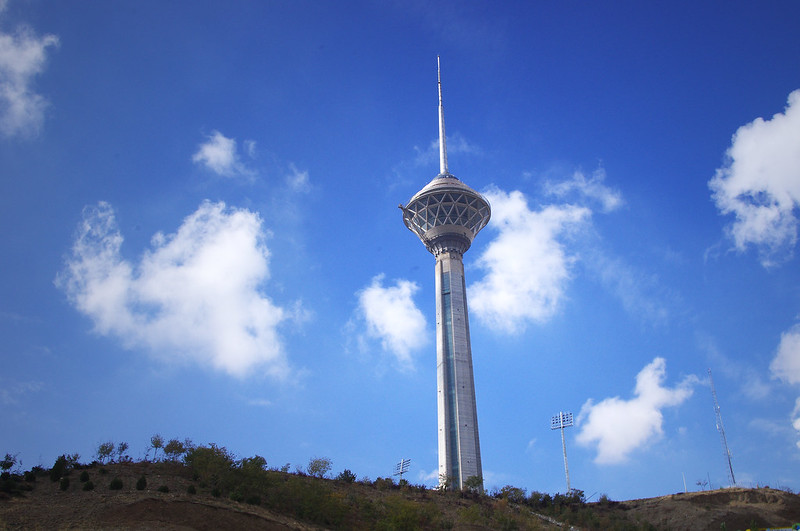
milad tower
Another tower you can check out is the Milad Tower , which offers fantastic views of the city as well as the Alborz Mountains in the distance. Compared to Azadi, Milad Tower is a thoroughly modern construct.
Aside from Azadi Tower and Milad Tower, most of the other sights in Tehran are conveniently located near the stations of the original (red) metro line so it would be practical to group these places together. These attractions include: Saadabad Palace , the former US embassy in Iran , Golestan Palace as well as the Grand Bazaar . Depending on how much time you have left after visiting the towers, you can visit around 1 or 2 other sights along the red metro line before calling it a day. A personal recommendation for an afternoon visit would be the Golestan Palace . This used to be the royal palace when Iran was still a monarchy. Some of the rooms here, including the Mirror Hall, Brilliant Hall and Karim Khani Nook, showcase impressive Persian symmetrical designs. Note that you’d need to purchase separate tickets to enter some of these halls.
Tip: All over Iran, you will get looks walking around as a tourist. The overwhelming majority of these have no malice in them and are just indications of curiosity. A common gesture is to say hello back which in some cases, lead to conversations and even invitations for dinner. It is up to you whether to accept or not. I have accepted one such invitation and some travelers I spoke to did the same. But that doesn’t mean that Iran is scam-free. In a separate incident, a local offered to show me around town as a goodwill gesture and later tried to extort me money for it.
Directly outside the Golestan Palace is Tehran’s Grand Bazaar . You can practically find everything here, from spices to handicrafts, apparel and of course, carpets. While Tehran is still not a touristy place, it’s useful to haggle if you intend to bring a rug back home.
Day 2 – Tehran (Tajrish, Den of Espionage)

autumn colors in tajrish
Your second day in Tehran can be spent venturing to the sights at the farther reaches of Tehran’s red metro line. A personal favorite spot is Tajrish , where the line ends. The air here is cooler and fresher, and the higher altitude makes for a refreshing change to the grit of downtown Tehran. In autumn, you can visit places such as the Saadabad Royal Complex for a burst of red and yellow foliage. Tajrish also serves as a gateway to the Darband and Tochal mountains, where one could ski during winter.
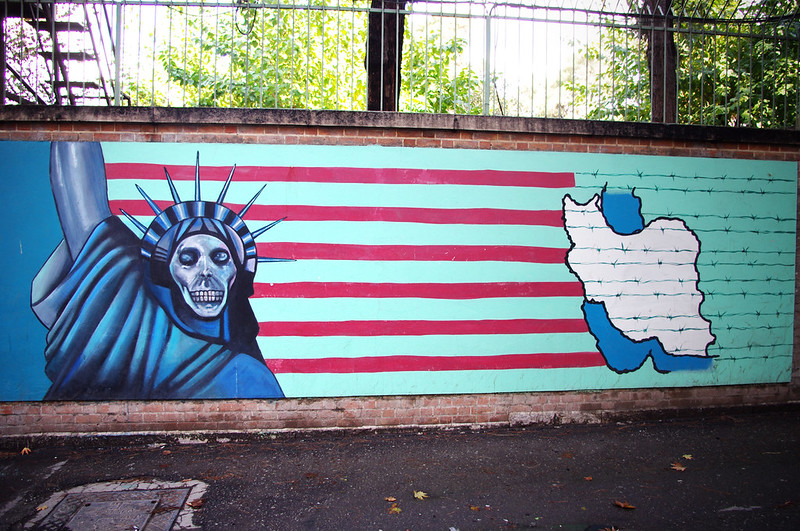
den of espionage, former us embassy in tehran
Further down near Taleghani Station is the former US Embassy in Iran, now called the Den of Espionage and converted into a museum. The site played a particular significance during Iran’s 1979 revolution when students held American diplomats hostage in the embassy for more than a year. The museum grounds offers a colorful throwback to diplomatic life from 40 years ago while the frontage has plenty of colorful anti-American murals, the most famous one depicting the Statue of Liberty with the face of a skull.
After having your fill of Tehran, you can catch a late afternoon or evening bus to the next destination – Kashan, which is around a 3-hour drive. There are plenty of departures each day from the bus terminals and there is no need to book in advance, with the exception of major holidays like Nowruz.
Day 3 – Kashan
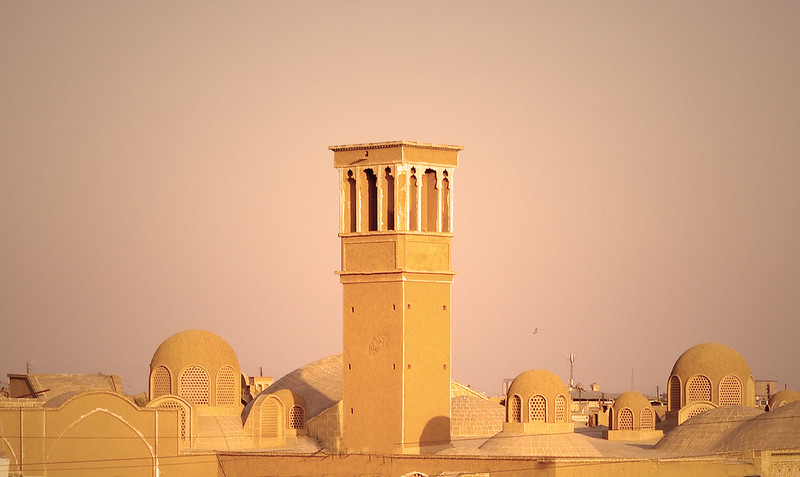
rooftops of kashan
A relatively small town, Kashan, is a must visit especially for architecture lovers. The town has plenty of mansions that were built by rich merchant families and gardens offering a calming perspective to Iranian life – a wonderful contrast from the frenetic pace of Tehran.

historic houses in kashan
There are 4 old houses you need to visit in Kashan and these are the Boroujerdi House , Ameriha House , Tabatabaie House and the Abbasian House . All these houses boast of intricate facades but it is the Boroujerdi House which has the more stunning carvings and interiors of four while the Tabatabaie House is probably the biggest. Note that the Ameri House has been converted into a hotel as of late.
Located in the same area as the old houses is the Sultan Amir Ahmad Hammam , also known as Qasemi Hammam. Bathing was an elaborate ritual in old Persia and this is manifested in no small part in the elaborate design of the bathing pool. Covered in turquoise and gold tilework, floral patterns as well as utter symmetry that will delight architectural buffs, the bathhouse is an interesting place to visit even though it is no longer used. You can also check out the rooftop for a view of the hammam’s bulbous domes as well as the windcatchers from the mansions in the distance.
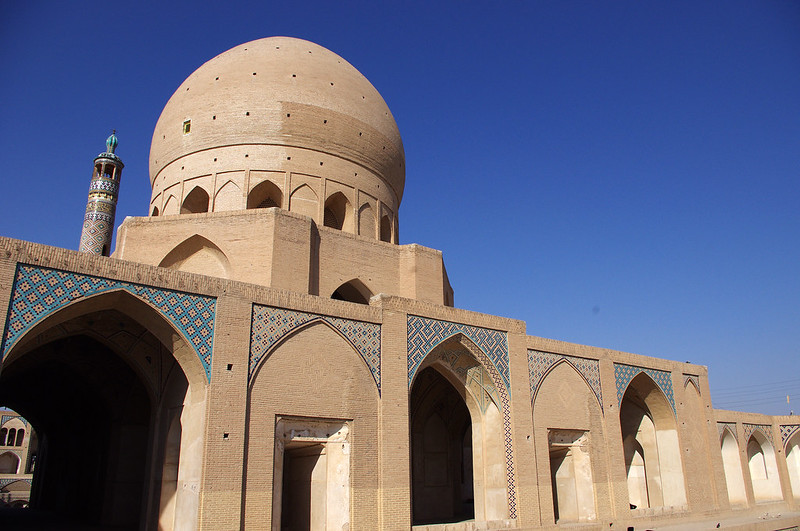
agha bozorg mosque
On the way to the bazaar of Kashan, the 18th century Agha Bozorg Mosque is a recommended stop for its symmetrical design and layered courtyard that extends underground.

Optional: If you have a half-day to spare in your Iran trip, an excursion to the village of Abyaneh is recommended. The town is known for its reddish hue which permeates all the buildings. Visiting here is all about soaking the charming ambiance and interacting with friendly villagers. There is no specific must-see here except for the panorama of the reddish village from afar.
With the exception of Fin Garden , the bulk of Kashan’s tourist spots are within walking distance of each other so my suggestion is to visit the Fin Garden as a stop if you are going on a day trip or excursion to Abyaneh. Otherwise, you can hire a taxi or private car to get you there and back to town. Fin Garden is a typical example of a Persian style garden – characterized by a long water feature that leads to a central structure – and is a UNESCO World Heritage Site.
Day 4 – Isfahan
Catch a morning bus to the city of Isfahan. From Kashan, the trip to Isfahan takes just a little under 3 hours.
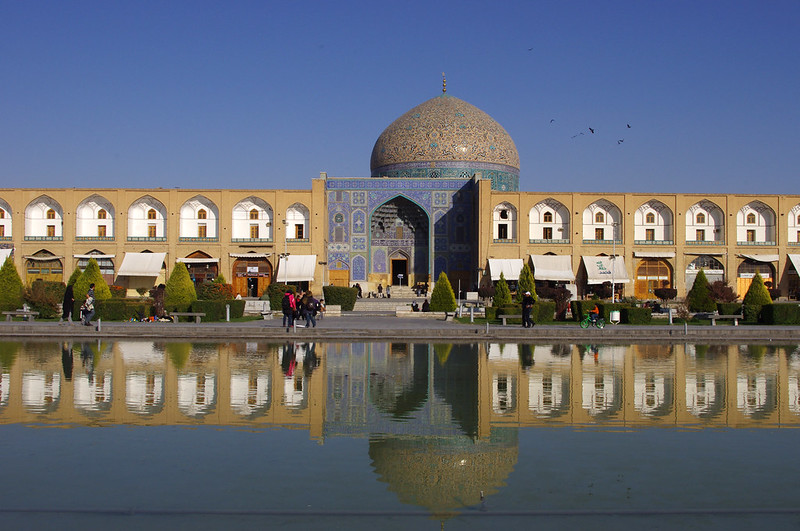
sheikh lotfollah mosque
Called half the world by Iranians, Isfahan is easily the most touristy city in Iran, and with good reason. Its humongous and spectacular public square – the Imam Square – is one of the highlights of any visit to Iran. Flanked by the Sheikh Lotfollah Mosque on one side and the Imam Mosque on the other, as well as well-manicured lawns and horse-drawn carriages going around, this public square is the second largest in the world after Tiananmen Square in Beijing.
Located at the opposite side of the square, the Ali Qapu Palace is another place worth visiting. The highlight here is the music room which have deliberate and attractive holes on the walls to help with the acoustics.
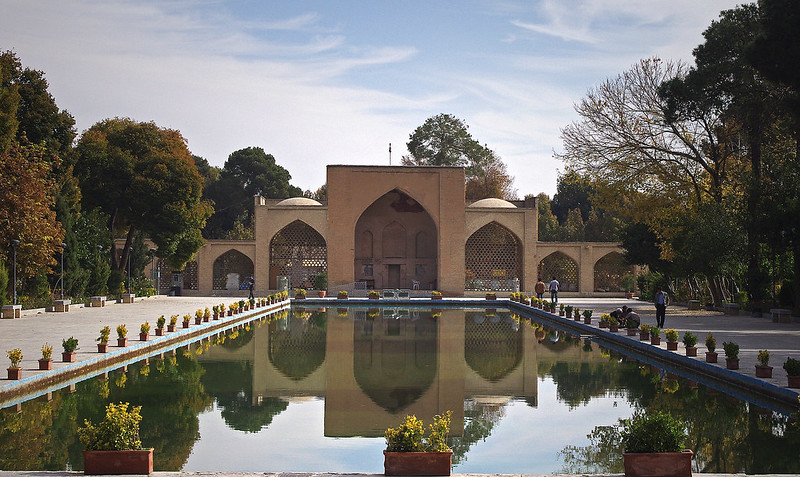
chehel sotun palace
Around a 5 to 10 minute walk to the west of the square is Chehel Sotoun , also called the Palace of 40 Columns. Located in the middle of a park, the interiors of this palace is marked by grand frescoes depicting ancient battles (the Battle of Chaldiran in particular) while the exterior has 20 columns supporting it. Despite only having 20 columns, the 40 columns in the name is brought about by the reflection from the elongated pool in front of the palace, which when reflected shows 40 columns.
Another palace to check out in the area, to the south of Chehel Sotoun, is Hasht Behesht . This is another palace surrounded by a park and is notable for its elaborate ceilings.
If you still have time after this, a walk back to Imam Square is highly suggested. The square takes on a different scene at nightfall, with families out and about and many of the buildings floodlit. The sound of the Islamic call to prayer with the square as backdrop is perhaps one of the most exotic moments one can experience in Iran.
Day 5 – Isfahan
There are plenty of things to see in Isfahan so 2 full days is just about the bare minimum. For the second day, you can check out the attractions farther out from the square – including the Jameh Mosque, Vank Cathedral as well as Sio-se-pol Bridge and Khaju Bridge. The bridges are best visited towards sunset when they’re lighted up so I would suggest starting at the Jameh Mosque.
The Jameh Mosque of Isfahan is the main mosque of the city and became a UNESCO World Heritage Site in its own right in 2012. It is the oldest mosque in Iran that still stands to the present day, dating back from the 8th century. Adjacent to the mosque is Isfahan’s own Grand Bazaar. While not as charming as the bazaar around Imam Square, the former presents a more authentic side to local life.
A nice change from the mosques is the Vank Cathedral , a church located in the neighborhood of Jolfa south of the river. The cathedral is a stunning mix of Islamic and Christian architecture, with all the hallmarks of Persian-style symmetry. From the outside, the church actually looks like a mosque with its bulbous dome but once you’re in, you’ll see frescoes depicting Biblical stories such as Adam & Eve as well as events from the life of Jesus Christ. The area surrounding Vank Cathedral in particular, is brimming with cafes, and is a nice place for an afternoon rest especially when it gets very hot.
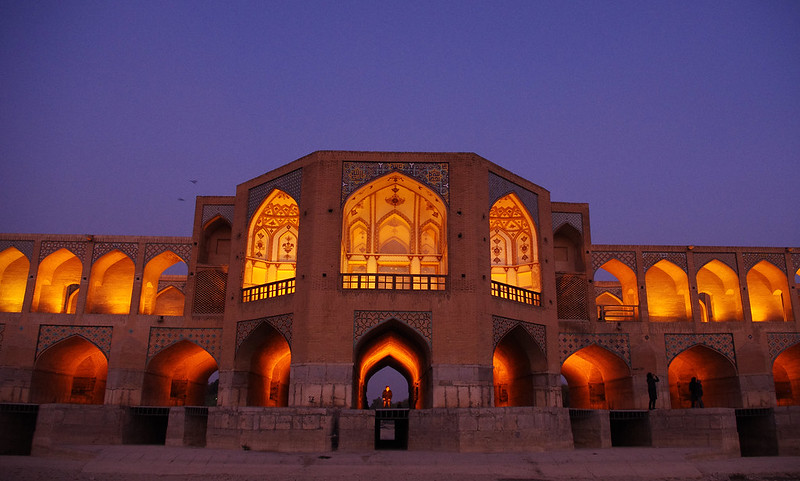
khaju bridge
As night falls, head over to check out the two beautiful bridges – Sio-se-pol as well as Khaju Bridge which are both lit up. Even during the dry months when you can barely see the river, these 17th century bridges still function to transport people between the north and south side of the city.
Day 6 – Yazd
Many travelers tend to bypass Yazd in their Iran trip due to its slightly out-of-the way location from the main north to south route. To do that would be a mistake, in my opinion. Yazd is different from the other cities. There is a romantic, fairy-tale like quality to this town that brings to mind stories such as Aladdin. Think: maze-like alleyways made of clay, bumping into random mansions or historic houses turned hotels and being invited to rooftops to appreciate the windcatcher-dominated skyline of the old town.
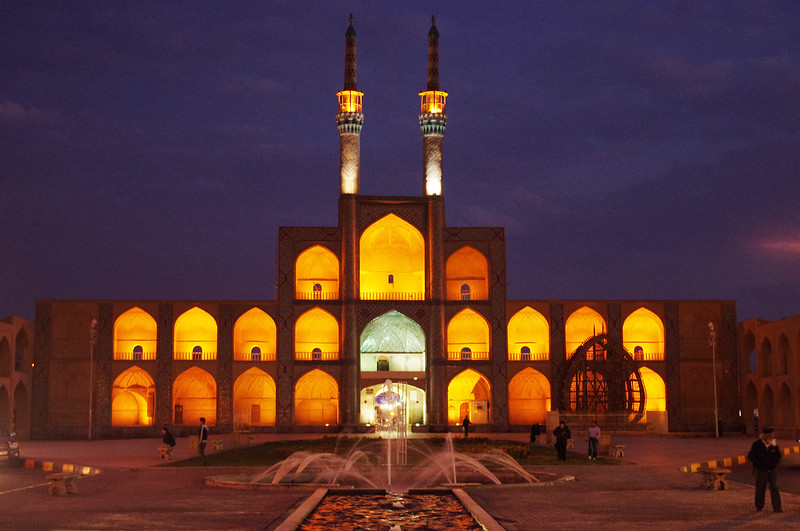
amir chakmaq mosque
Although there are quite a few sights in town, wandering and getting lost inside the old town is perhaps the biggest draw of the city. The most recognized building in town, the Amir Chakmaq Mosque , is worth a visit. The structure is noted for its arched alcoves which get lighted up at night. I visited twice – once during the day, and another time to appreciate it at night. Just next to the Amir Chakmaq complex is a zurkaneh or a house of strength. The Saheb-al-Zaman Zurkaneh (workouts occur Saturday to Thursday from 7 to 8PM) is the place to go to witness men working out using traditional wooden clubs – in sync to the tune of local music and trance-like chanting.
Another interesting place to visit in Yazd is the Atashkadeh or the Zoroastian fire temple. A nice break from Islamic architecture, this is the place to visit to understand more about one of the world’s oldest religions. The temple also contains what is said to be the oldest continuously burning flame.
Day 7 – Yazd
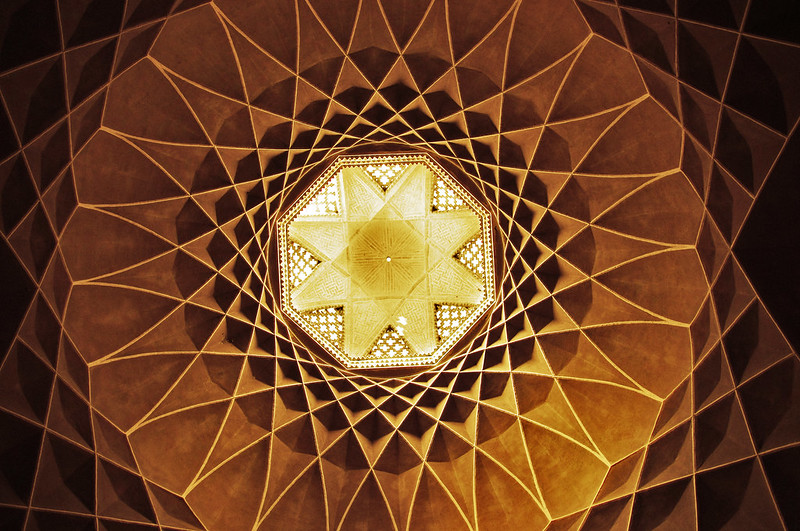
ceiling of dolatabad gardens
Your second day in Yazd can be spent visiting attractions you did not manage to cover the previous day. While there are still more to see in Yazd such as the Dowlatabad Gardens (a UNESCO World Heritage Site), the Water Museum for a fascinating peek of how water is distributed in this desert city and Yazd’s own Friday Mosque , I would recommend spending a couple of hours just getting lost in the old town. Perhaps you can stumble upon a nice-looking old house or two. Compared to the ones in Kashan, some of the traditional houses in Yazd have been converted into restaurants and cafes. It’s a highly atmospheric affair sipping on a cup of tea (or two) and downing a hot stew especially on a cold day.
The afternoon can be spent catching a bus to the next destination – Shiraz. The Yazd to Shiraz bus ride is the longest in this trip and takes over 5 hours. It will be well into the evening once you arrive in Shiraz.
Day 8 – Shiraz
There is probably no other city in Iran that conjures romantic images as much as the city of Shiraz. The city of poets as well as wine. This city is undoubtedly the premier city in the southern part of Iran and the well-developed infrastructure attests to this. Despite the city’s size, many of the sights are actually within walking distance from the main street – Zand Boulevard.
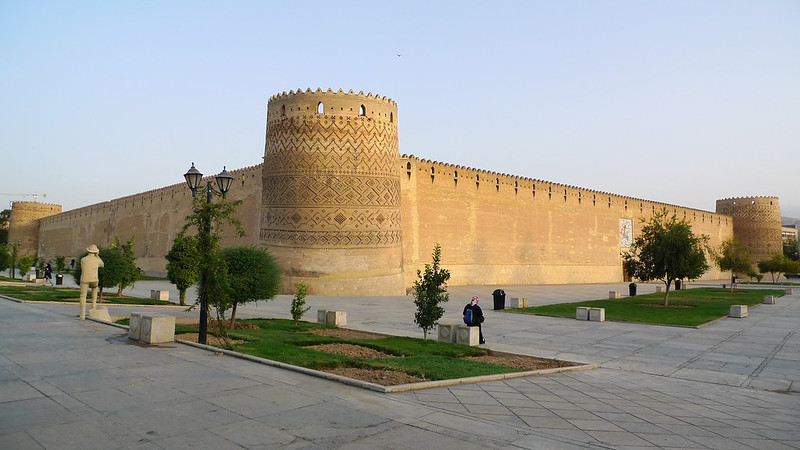
arg of karim khan
Start your day at the Arg of Karim Khan , an 18th century brick citadel typical in the Middle East. Its location and traditional appearance near a busy roundabout in downtown Shiraz makes for an interesting contrast.
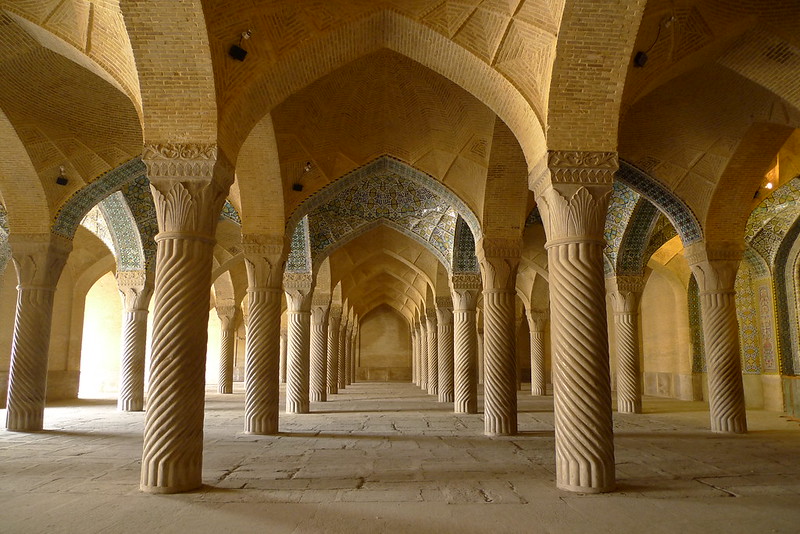
vakil mosque
Turn right and walk through Vakil Bazaar where you can make a stop at the Vakil Mosque with its spectacular columns. Next, make your way to Lotf Ali Khan Zand Street which is parallel to Zand Boulevard. Your priority in the morning should be to visit Nasir-ol-Molk Mosque . Just another mosque you say? If you are active in social media, especially instagram, this is one place you must check out in Shiraz. Within walking distance from the mosque is the Narenjestan Garden , the first of many gardens you will encounter in Shiraz. The gardens and the house within the compound were built by the wealthy Qavam family in the 1800s. The gardens are known for its tile work depicting 3 figures from the Qajar Dynasty.
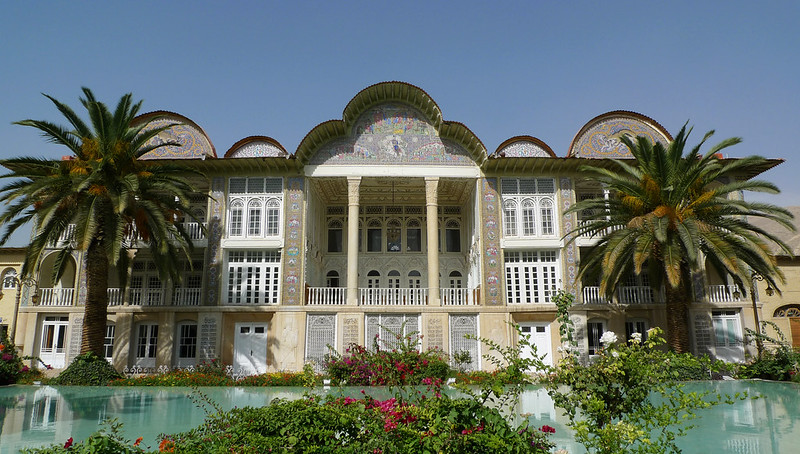
eram gardens
The rest of the day should be spent visiting sights that are further afield. The Eram Garden , is in my view, the most impressive among Iran’s gardens. The building fronting it, is painted in a soothing white and is decked with numerous paintings. From Narenjestan, allow around 15 minutes drive.
Day 9 – Persepolis

Allow around half a day to venture out of Shiraz to visit the biblical city of Persepolis. One of the great wonders of the world, ranking up there with Angkor Wat, Machu Picchu, the Forbidden City and Taj Mahal; this ancient city embodies Persian heritage so much so that the last Shah of Iran used it as a site for his coronation in the 1970s.
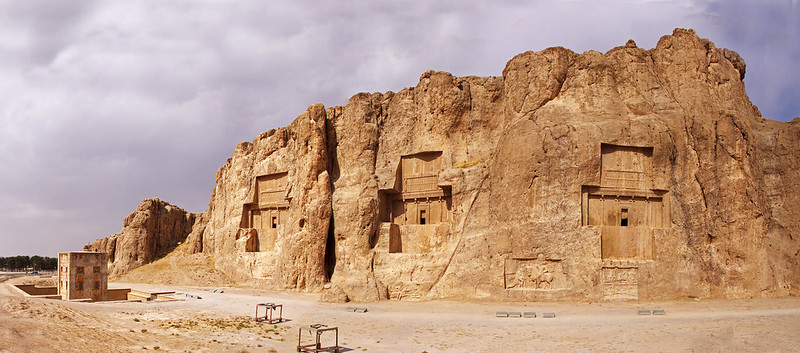
naqsh-e-rustam
Although laying in ruins, there is still quite a bit of structure left to allow visitors to imagine what it must have looked like back in the day. Bas reliefs on the walls show how various civilizations paid tribute to the Persian empire, bringing gifts to the king. To reach Persepolis, you can book a private tour which includes a visit to Naqsh-e-Rustam as well.
With a morning departure, you can expect to be back in Shiraz by earl afternoon, after which you can spend the rest of the day doing some last minute souvenir shopping or catching your flight out of Iran.
Tips for Visiting Iran
- Many nationalities can obtain a visa-on-arrival for Iran, but there are cases where having a pre-arranged visa or visa authorization code makes sense such as for avoiding long waits at the airport for getting the visa. You can get a pre-arranged visa authorization code if you prefer to avoid that risk.
- Iran is still mainly a cash society. You’ll find that your Visa, Mastercard and American Express credit cards don’t work. Euros and US Dollars work best for changing money. Many merchants even accept direct payment in these currencies over the ever-depreciating Iranian Rial.
- Many merchants have the habit of quoting prices in tomans rather than Rial, which is the official currency. As a rule of thumb, 1 toman = 10 Rial.
Where to Stay in Iran
Tehran – Pretty much a budget option, Firouzeh Hotel has been a favorite among intrepid travelers particularly due to its very helpful receptionist/s who can give plenty of tips on Tehran.
Kashan – One of the city’s tourist attractions, the Ameriha House, has been turned into a hotel called Saraye Ameriha Boutique Hotel and is currently the top-ranked hotel in Kashan. I personally stayed at the Ehsan House just a few blocks down the road. It’s clean, adequate and also presented in the Persian style, though with less character than its top-ranked rival.
Yazd – Hidden within the snaking alleys of the old town, Kohan Hotel is a charming option with its traditional courtyard typical of houses in Yazd as well as Persian style rooms. If the caretaker is feeling extra friendly, you might be invited up to the rooftop to check out the hotel’s windcatcher as well as admire the ones from the neighboring houses.
Esfahan – For unabashed Persian splendor, the palatial Abbasi Hotel is generally considered the most luxurious hotel in Esfahan though newer boutique options such as Ghasr Monshi Hotel are taking market share away from the Abbasi.
Shiraz – Darbe Shazdeh is a beautiful boutique hotel located not far from Vakil Mosque. Some rooms come with glass stained windows similar to the ones in Nasir ol Molk Mosque. For a more budget option, Sasan Hotel is a reliable hotel just off Zand Boulevard
You May Also Like

Hi, my name is Bino and I started I Wander around 15 years ago with the aim of sharing about some of my personal journeys and experiences, hoping that the information may benefit readers like yourselves. Let me know your thoughts by leaving a comment below. Alternatively, you can also email me at b i n o (at) iwandered.net. You can follow I Wander on Facebook , Telegram , or Instagram . Also, if you liked this article, please feel free to SHARE or RETWEET
More Posts - Website
Reader Interactions
Older posts.
December 3, 2019 at 5:42 pm
I have been thinking of a trip to Iran for a while now and your post is a great starting point for a tour of the country. I wasn’t aware of the beautiful Kashan, thank you!

Leave a Reply Cancel reply
Your email address will not be published. Required fields are marked *
Save my name, email, and website in this browser for the next time I comment.
Iran Travel: The Complete Guide You’ve Been Waiting For!
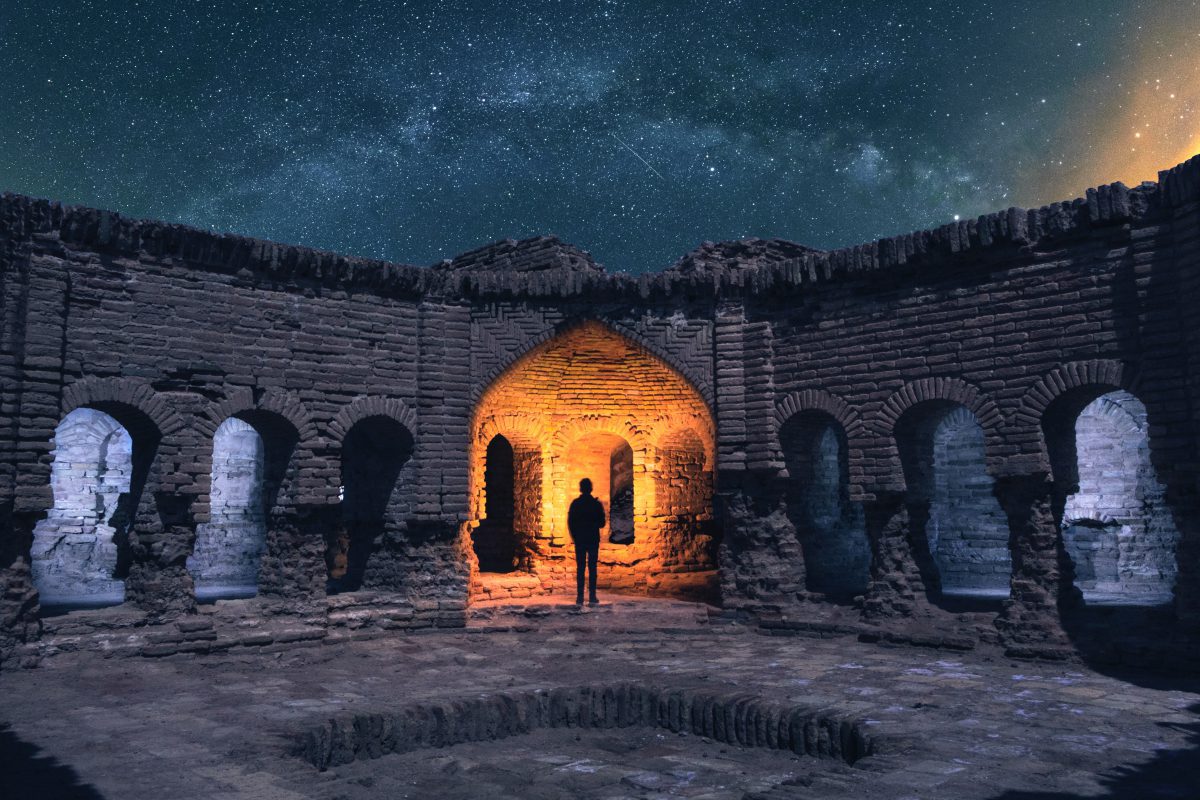
Table of Contents
Welcome, fellow explorers and adventure seekers! If you’ve ever dreamt of embarking on a journey to a land where ancient history, stunning landscapes, and warm hospitality converge, you’re in for a treat. In this Iran Travel Guide, we’re about to unravel the secrets of Iran, a country that has captivated the hearts of travelers for centuries.
Whether you’re considering Iran Travel as your next trip or you’ve already booked your ticket, our aim is to equip you with the knowledge you need to make your trip an unforgettable experience, from understanding the intricacies of obtaining an Iran visa to managing your finances while in the country, we’ve got you covered. We’ll also delve into the nuances of Iranian etiquette and dressing codes, ensuring that you navigate this beautiful nation with grace and respect.
So, get ready to embark on an enriching journey through the enchanting realms of Iran. Pack your curiosity, an open heart, and a sense of adventure because Iran is waiting to reveal its treasures to you. Let’s begin this odyssey together!
Iran Travel Guide: Why Visiting Iran?
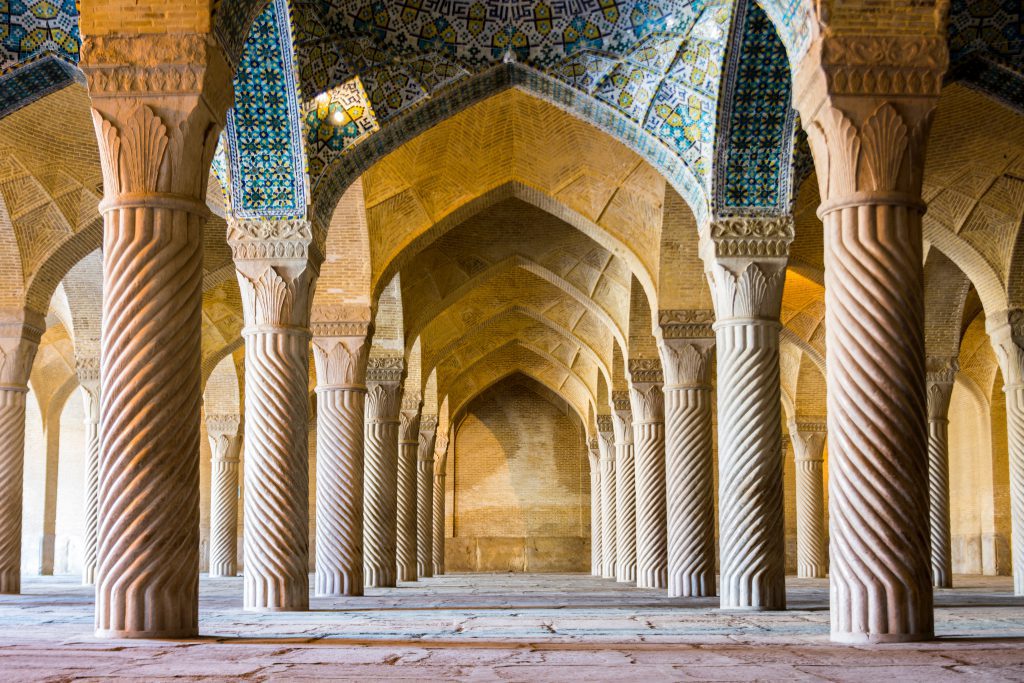
Visiting Iran is an absolute must for any adventurous traveler! With its rich history, breathtaking landscapes, and warm-hearted locals, Iran offers a truly unique and unforgettable experience. Imagine wandering through ancient cities like Isfahan, where stunning mosques and palaces adorned with intricate tile work transport you to a bygone era.
Don’t miss the mesmerizing beauty of the deserts, where the sand dunes seem to stretch on forever under a sky painted with stars. And, of course, the delicious cuisine will tantalize your taste buds with aromatic kebabs, fragrant saffron rice, and sweet baklava. But what truly makes Iran special is the warmth and hospitality of its people, who are eager to share their culture and stories with visitors. Here we listed a few reasons why to visit Iran:
1. Embrace the Timeless History
Iran boasts an ancient civilization that dates back thousands of years, and its historical significance is awe-inspiring. From the magnificent ruins of Persepolis , a UNESCO World Heritage site, to the grand Golestan Palace in Tehran , each structure is a testament to the country’s glorious past. Wander through winding alleys of historic cities like Isfahan and Yazd, where intricate architecture and the echoes of the past transport you to a bygone era.
2. Immerse in Vibrant Culture
Iran’s culture is a tapestry of diverse influences, from Persian, Arab, and Turkish to Central Asian and European. Experience the warmth of its people as they welcome you with open arms and indulge you with their hospitality. Marvel at the vivid colors of traditional clothing and savor the flavors of Iranian cuisine , renowned for its aromatic spices and delicately prepared dishes.
3. Mesmerizing Landscapes
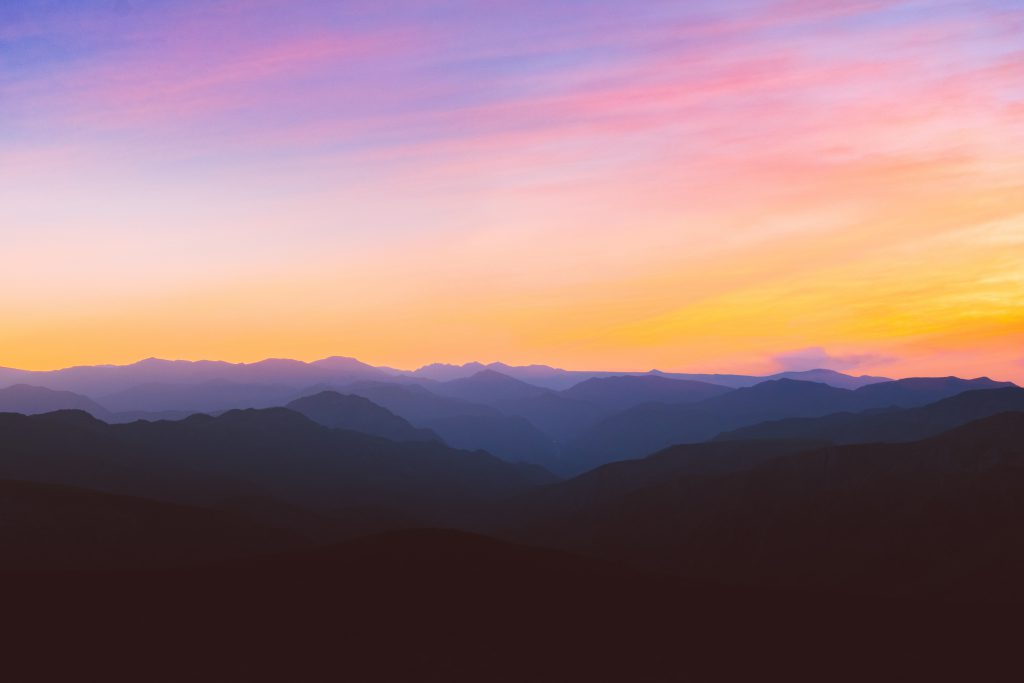
Venture beyond the cities, and Iran unfolds its breathtaking natural beauty. From the lush greenery of the northern forests (Hyrcanian Forests) to the stunning deserts of Dasht-e Kavir and Dasht-e Lut , each landscape is a masterpiece of nature’s artistry. Don’t miss the serene beauty of Mount Damavand or the otherworldly Kaluts, where wind-sculpted sand dunes create a surreal landscape.
4. UNESCO World Heritage Sites
Iran is home to an impressive array of UNESCO World Heritage Sites , and exploring them is like traveling back in time. Discover the ancient city of Bam and its adobe citadel, the awe-inspiring ancient aqueducts of Shushtar , and the magnificent Armenian Monastic Ensembles of Iran. Each site offers a unique glimpse into the country’s diverse heritage and architectural brilliance.
5. Dazzling Art and Architecture
Iran is an art lover’s paradise. Delve into the mesmerizing world of Persian carpets , renowned for their intricate designs and craftsmanship. Admire the mesmerizing beauty of Islamic architecture in mosques like Nasir al-Mulk in Shiraz , where colorful stained glass windows cast a rainbow of hues on the floors.
6. Experience Festivals and Traditions
Plan your visit to coincide with one of Iran’s vibrant festivals, and you’ll be treated to an immersive cultural experience. Witness the exuberant celebrations of Nowruz , the Persian New Year, or be part of the spiritual fervor during Ashura . These festivals offer a window into the soul of Iran’s traditions and values.
7. Warmth and Hospitality of Locals
Iranians are known for their exceptional warmth and hospitality towards visitors. Prepare to be embraced with open hearts and enjoy a genuine connection with the locals. The enriching interactions you’ll have will undoubtedly leave a lasting impression on your travel memories.
8. Safe and Welcoming Environment
Contrary to misconceptions, Iran is a safe country to visit. The people are warm and friendly, always ready to assist travelers. While you should exercise usual caution as with any foreign destination, Iran’s reputation for safety is well-deserved.
9. Off-the-Beaten-Path Adventures
If you yearn for unique experiences, Iran has plenty to offer. Explore the enigmatic village of Masuleh, nestled in the Alborz Mountains, where houses are built into the mountainside. Trek through the lush valleys of Golestan National Park, spotting rare wildlife along the way. These off-the-beaten-path adventures will leave you with unforgettable memories.
10. Photography Paradise
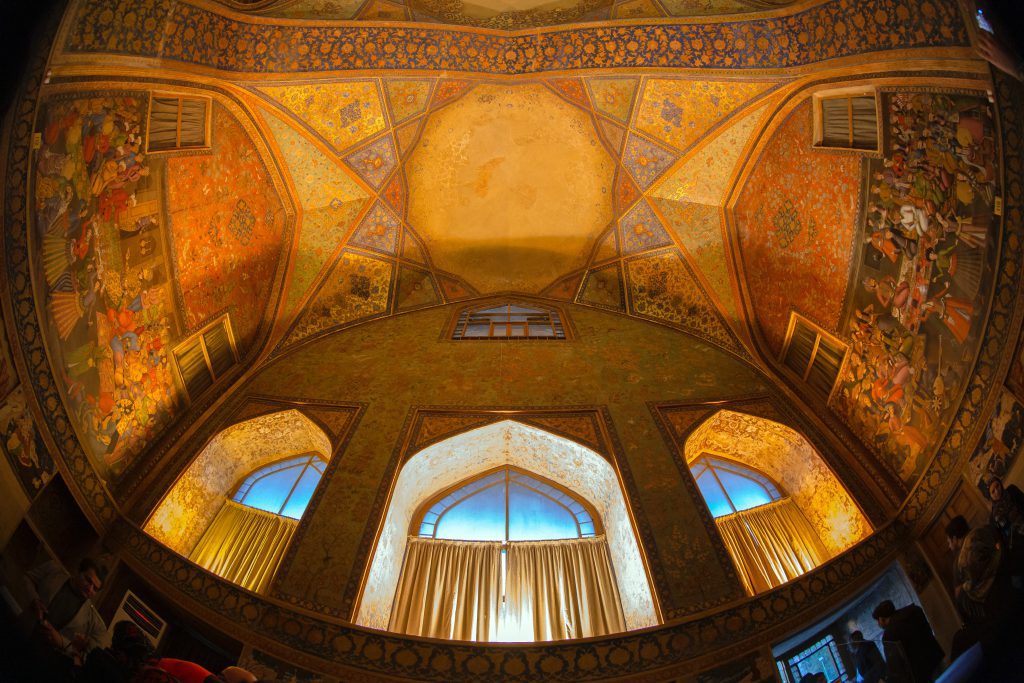
Photographers will find Iran to be a haven of visually stunning landscapes and architectural marvels. From the colorful bazaars to the ancient ruins, every corner of Iran is a potential masterpiece waiting to be captured through your lens.
Persia or Iran: Are They the Same?
Have you ever wondered if Persia and Iran are the same thing? They’re often used interchangeably, but there’s an incredible history to each.
Persia refers to the ancient Persian Empire , which existed around 550 BC to 330 BC. Persia was famous for its amazing art, culture, and architecture back then. It left a big mark on the Middle East and beyond. Today, we use “Persia” to talk about this old kingdom and its impact.
In 1935, the country officially switched its name from Persia to Iran , which means “land of the Aryans.” This change was meant to highlight Iran’s deep ties to the Aryan people who came to the region thousands of years ago. Nowadays, we use “Iran” to talk about the modern-day Islamic Republic of Iran in the Middle East.
Even though people often use Persia and Iran interchangeably, it’s cool to know the history behind each name. By learning about the fascinating history of Persia, you can better appreciate the rich culture and heritage of this beautiful country.
When we dive into Persia’s awesome history and how it influenced the world, we can start to really admire Iran’s amazing culture and heritage. So, let’s explore and learn!
Can Everyone Travel to Iran?
Iran has become a popular travel destination that attracts wanderers from all over the world thanks to its rich history, captivating culture, and breathtaking landscapes. However, some prospective travelers may have lingering questions about whether everyone can travel to Iran. Let’s answer that question!
The answer to whether everyone can travel to Iran is a resounding yes ! Iran, in recent years, has taken significant steps to facilitate travel for visitors from diverse backgrounds and nationalities. The Iranian government, recognizing the potential of tourism and the desire of travelers to explore its wonders, has streamlined visa procedures, making it easier for tourists to obtain necessary travel permits.
While some nationalities can enjoy visa-free entry for short stays, most visitors can apply for a visa through a simple process. The option of a visa on arrival at major airports has also been extended to many nationalities, further enhancing accessibility. These measures reflect Iran’s commitment to being a welcoming and inclusive travel destination. We will talk about getting Iran visa in detail later in this article.
Safety and security are crucial considerations for travelers, and Iran stands as a country with a relatively low crime rate. Misconceptions surrounding its geopolitical situation often overshadow the reality on the ground. The Iranian people are known for their warm hospitality and friendliness towards visitors, making travelers feel welcomed and safe throughout their journey.
Cultural sensitivity plays a significant role in ensuring a smooth travel experience in Iran. The country has a rich cultural heritage, and respecting local customs is essential. While the dress code is more conservative compared to Western norms, adhering to it when visiting public places and religious sites is not only a sign of respect but also fosters positive interactions with the locals. If you’re interested in reading about someone’s experience traveling to Iran with To Iran Tour, we have a fantastic travelogue from one of our guests below. It’s definitely worth checking out!
Iran Travel Story: A Memorable 15-year-old’s Wanderlust Through Iran
Iran is making strides in improving accessibility for people with disabilities. Although there may still be challenges to overcome, many public places, hotels, and tourist attractions have taken steps to accommodate travelers with mobility challenges. Efforts are continuously being made to make Iran a more inclusive destination for travelers of all abilities.
When traveling to Iran, some people may worry about language barriers since English may not be commonly spoken. However, this should not discourage anyone from discovering this fascinating country. The Iranian locals are renowned for their kind-heartedness and eagerness to help tourists communicate, often using hand gestures and basic English phrases. Additionally, many young Iranians speak English as a second language, and it is taught in high schools.
Financial transactions and currency exchange are essential aspects of travel planning. Iran’s official currency is the Iranian Rial (IRR) . While international credit cards may not be widely accepted, travelers can use US dollars or euros and exchange them at official exchange offices or banks. Carrying sufficient cash is advisable, especially when visiting more remote areas where ATMs may not be readily available.
Iran has its unique cultural norms, particularly regarding gender segregation and LGBTQ+ rights. Travelers need to approach these considerations with cultural sensitivity and respect. Understanding and adhering to local customs can create a harmonious travel experience and foster positive interactions with the local community.
Healthcare is a crucial aspect of any travel experience. Iran boasts a well-developed healthcare system with competent medical professionals. While the likelihood of medical emergencies is low, having comprehensive travel insurance is recommended to ensure peace of mind throughout the journey.
To sum up, Iran has made significant strides in improving its travel accessibility in recent years, making it a warm and inclusive destination for visitors from all over the globe. With simplified visa processes, increased safety measures, and a commitment to meeting diverse needs, Iran warmly welcomes travelers. Adapting to local customs, respecting cultural sensitivities, and being open to new experiences will undoubtedly enhance the travel experience in this captivating country where history, culture, and natural beauty unite seamlessly.
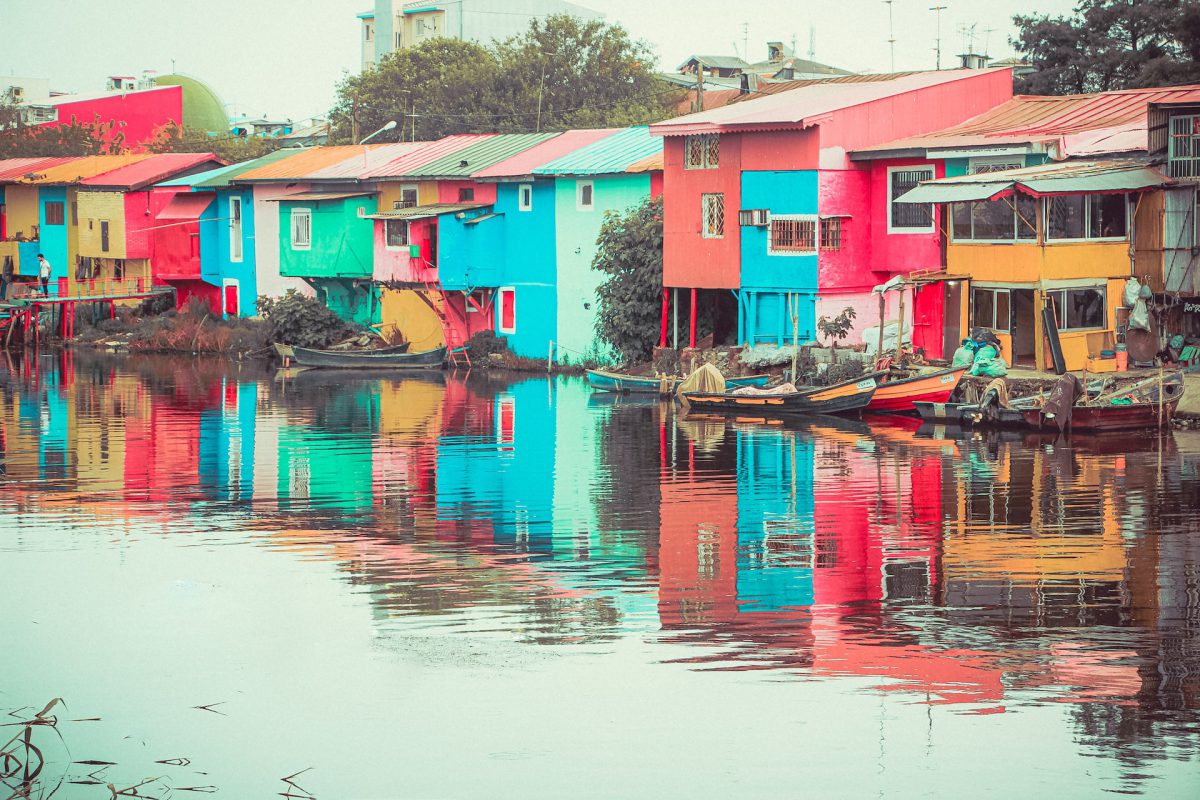
Thank you for joining me on this journey through the historical tapestry of Persia and Iran. Now, we want to extend a personal invitation to each one of you. If you’ve been captivated by the allure of Iran and are considering a visit, or even if you’re just curious to learn more, I invite you to explore our Iran travel guide. It’s a labor of love, crafted to share the magic of Iran with fellow travelers. From general steps to plan your travel to Iran to everything you need to know about Iran visa that might confuse you, our guide promises to be your trusted companion on your Iranian adventure.
How to Plan Visting Iran? (12 Steps)
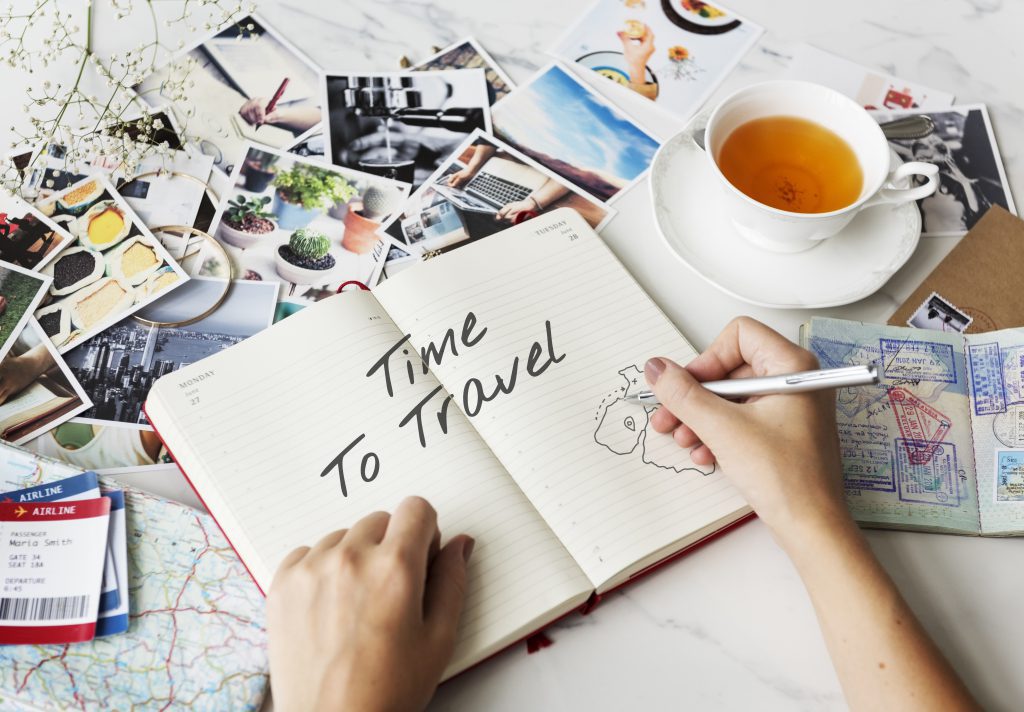
Traveling to Iran, with its rich cultural heritage and stunning landscapes, requires meticulous planning to ensure a smooth and fulfilling journey. Follow this step-by-step guide to efficiently plan your trip to this captivating destination.
Step 1: Research and Itinerary
Start by researching Iran’s diverse attractions and destinations . Identify the places you wish to visit and create a detailed itinerary. Consider the duration of your trip, the activities you want to engage in, and the must-see landmarks you don’t want to miss. You can check ToIranTour packages and customize your desired tour itinerary.
Step 2: Visa and Travel Documentation
Check the visa requirements for your nationality. Most visitors can obtain a tourist visa for Iran through the Iranian embassy or consulate in their home country. Alternatively, you can opt for a visa on arrival at major airports or use of visa services of an authorized tour operator/travel agency. Ensure your passport is valid for at least six months beyond your planned departure date. There is more information about getting Iran visa in the rest of the article and also on our blog .
Step 3: Best Time to Visit
Consider the best time to visit Iran based on your preferences. Spring (March to May) and autumn (September to November) offer mild temperatures and pleasant weather, ideal for exploring the country. Also, the best time to visit depends on the tour and activities. However, each season has its unique charm, so choose according to your interests.
Step 4: Cultural Awareness
Familiarize yourself with Iranian customs and etiquette to show respect for local traditions. Note that women should wear modest clothing that covers the arms, legs, and hair when in public places. Understanding and embracing the culture will enhance your travel experience.
Step 5: Language and Communication
While English is not widely spoken, the Iranian people are known for their warm hospitality. Learn a few basic Persian phrases to facilitate communication and connect with the locals. This will enrich your interactions during your journey.
Step 6: Accommodation and Transportation
Book your accommodation in advance to secure the best options that suit your budget and preferences. Iran offers a range of accommodations, from luxurious hotels to budget-friendly guesthouses. Plan your transportation within the country, whether by domestic flights, trains, or buses, to efficiently navigate between destinations. You can check the accommodation and transportation with a local tour operator.
Step 7: Health and Travel Insurance
Prioritize your health and well-being by consulting a healthcare professional for any required vaccinations or health precautions before traveling to Iran. Additionally, consider purchasing comprehensive travel insurance to provide coverage in case of unexpected medical emergencies or trip disruptions.
Step 8: Currency and Money Matters
Familiarize yourself with Iran’s currency, the Iranian Rial (IRR), and its exchange rates. While credit cards are not widely accepted, carrying sufficient cash is advisable, especially when traveling to remote areas where ATMs may not be readily available. Also, read about travel costs in Iran to plan accordingly.
Step 9: Safety and Security
Iran is considered a safe destination for travelers, with a low crime rate and a welcoming local population. However, exercise standard safety precautions and stay informed about local conditions to ensure a worry-free journey.
Step 10: Respect for Religious Sites in Iran
Iran is home to numerous significant religious sites. Show respect when visiting mosques, shrines, and other places of worship by adhering to dress codes and rules for visitors.
Step 11: Iran Local Customs and Traditions
Respect local customs and traditions to foster positive interactions with the Iranian people. Greetings, gestures, and dining etiquette -which we are going to talk about later in this article – may differ from your home country, so be open-minded and willing to embrace cultural differences.
Step 12: Packing Essentials
Pack appropriate clothing for varying weather conditions and cultural considerations. Don’t forget essentials like sunscreen, comfortable walking shoes, and a reusable water bottle for staying hydrated.
DIY or Tour for Traveling to Iran? Our Iran Travel Guide Perspective
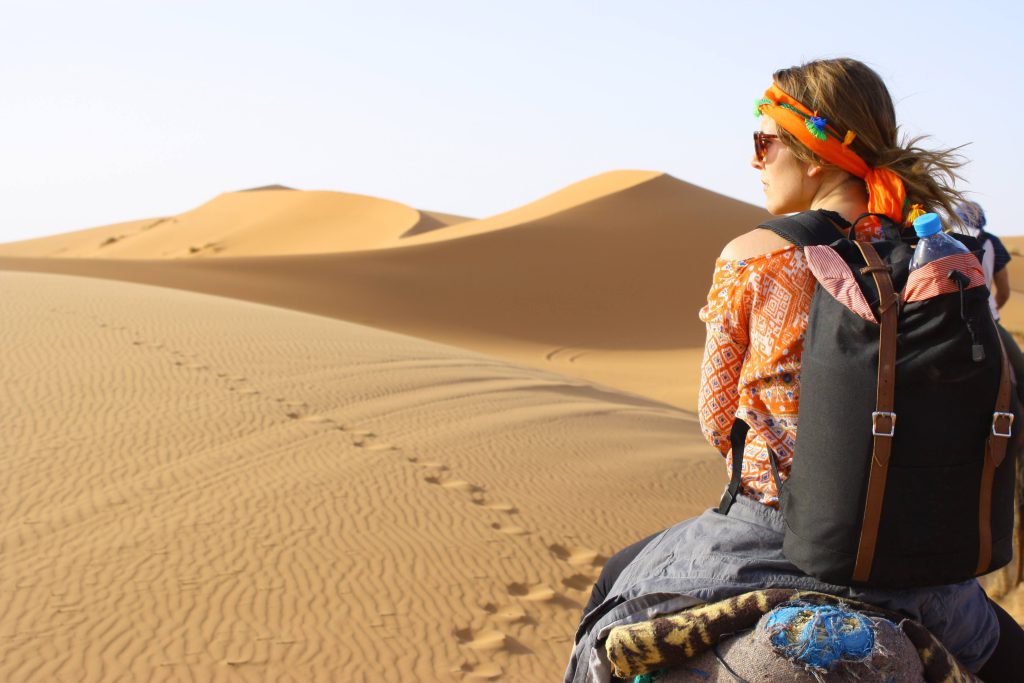
When you’re thinking about having an awesome trip to Iran, you’ve got to decide if you want to plan everything yourself or join a guided tour . Each option has its own good and not-so-good points, so it’s important to pick what suits you and your travel goals best. In this comparison, we’ll look at the perks of DIY travel to Iran or going on a tour for visiting Iran. We’ll highlight why it’s a great idea and show you why tour services are valuable.
DIY (Do-It-Yourself) Travel to Iran
- Freedom and Flexibility: DIY travel offers the freedom to create a personalized itinerary, exploring off-the-beaten-path destinations at your own pace. It caters to adventurous spirits who relish the thrill of independent exploration.
- Cost Control: Traveling independently allows budget-conscious travelers to choose accommodations, transportation, and dining options that align with their financial preferences.
- Authenticity in Interactions: With DIY travel, you have the opportunity to interact with locals on a more personal level, leading to genuine cultural experiences and connections.
Weaknesses:
- Logistical Challenges: Planning transportation, accommodations, and activities can be time-consuming and potentially overwhelming, especially in Iran with language barriers and unfamiliar customs.
- Navigating Language Barriers: English is not widely spoken in Iran and this will lead to communication challenges in certain situations.
- Cultural Awareness: Researching and adhering to local customs and etiquette may require extra effort to ensure respectful interactions.
Travel to Iran by Tour
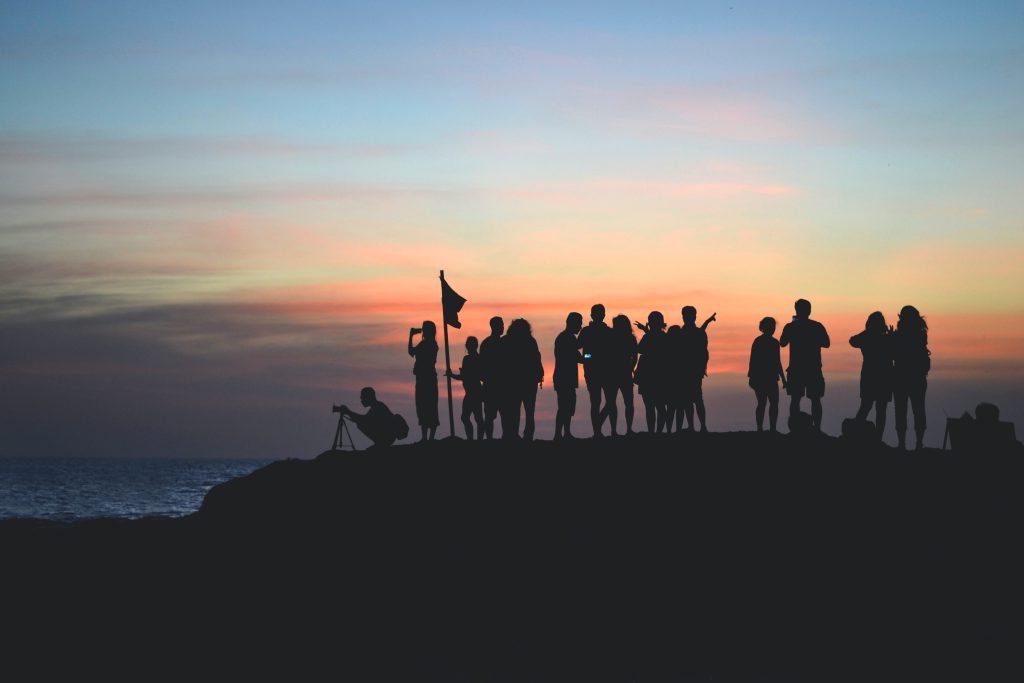
- Reasonable Pricing: Contrary to common misconceptions, tours to Iran often offer excellent value for money, including a comprehensive package of services and experiences at a reasonable cost.
- Local Knowledge: Tour guides possess extensive knowledge of Iran’s history, culture, and landmarks, providing enriching insights and context to enhance your understanding of the destination.
- Close Connections with Locals: Tour operators often have well-established relationships with local communities, facilitating authentic encounters with Iranians and unlocking hidden gems inaccessible to DIY travelers.
- Awareness of Subtleties: Experienced tour guides are attuned to cultural nuances, ensuring that travelers navigate social interactions with grace and sensitivity.
- Authentic Experiences: Tours curate experiences that offer a balance between must-see landmarks and off-the-beaten-path wonders, providing a more authentic and immersive travel experience. Since Iran is a less-known destination, this issue becomes more important.
- Fixed Itineraries: Tours operate on pre-planned itineraries, which may not cater to individual preferences for spontaneity and exploration. To solve this problem, you can use individual and customized tours. ToIranTour can help you in this matter.
- Group Dynamic: Traveling with a group may limit personal freedom and require compromise on specific preferences. However, using the services of tour operators who are committed to organizing tours with small groups can solve this problem to a large extent.
While both DIY travel and guided tours have their perks, let’s talk about why you might want to consider taking an Iran tour. Tours in Iran are like having a friendly local show you all the best stuff. They know the coolest places, the tastiest food, and the most interesting stories.
When you join a tour, you don’t need to worry about all the nitty-gritty details of planning. The tour guides take care of everything, so you can relax and enjoy your trip. Plus, they know all the ins and outs of Iran’s beautiful landscapes, so you won’t miss a thing.
But the best part? You get to connect with the local folks, discover hidden gems, and dive deep into Iran’s rich history and culture. It’s an adventure you won’t forget! So, if you’re looking for a stress-free and amazing way to explore Iran, consider joining a tour .
How Can I Buy Iran Tours?
To make sure your trip is fantastic and easy, you need to think about a few important things when choosing your tour. We’re here to help you with that. Check out these key factors to find the perfect tour for your travel to Iran:
1. Attractiveness of the Itinerary
Examine the tour itinerary closely to determine its appeal and alignment with your interests. A well-crafted itinerary should encompass a balance of must-see attractions and off-the-beaten-path gems, offering a comprehensive exploration of Iran’s diverse landscape. Look for unique experiences, cultural encounters, and opportunities for authentic interactions with local communities.
2. Licensed Tour Operator
Verify whether the tour operator is licensed and accredited by relevant authorities. A licensed operator adheres to specific standards, ensuring compliance with safety regulations, customer protection, and quality of services. This validation offers peace of mind and enhances the reliability of the tour.
3. Right Price vs. Misleading Pricing
Price is a crucial consideration, but it should not be the sole determining factor. Be cautious of tours that offer significantly lower prices than competitors, as they may compromise on the quality of services and experiences. Compare the inclusions of each tour to assess its true value and avoid being misled by seemingly inexpensive options.
4. Customer Support
Good customer support is integral to a satisfying travel experience. Look for a tour operator who is responsive to inquiries, provides detailed information, and is attentive to your needs and preferences. A reliable tour operator should be readily available to address any concerns before, during, and after your journey.
5. Communication with the Tour Operator
Efficient and clear communication with the tour operator is vital for a seamless travel experience. Ensure your Iranian tour operator is accessible through various communication channels, such as email, phone, or chat. Prompt responses and transparent communication demonstrate the operator’s commitment to customer satisfaction.
6. Group Size and Dynamics
Consider the group size of the tour and how it aligns with your preferences. Smaller groups offer a more intimate experience, while larger groups may foster camaraderie with fellow travelers. Choose a group size that complements your travel style.
By picking a tour that matches your interests , you can have an incredible adventure exploring Iran’s history, culture, and beautiful natural sights. So, get ready to discover the magic of Iran and enjoy every moment of your unforgettable journey!
Local Tour Operator or International Tour Operator?
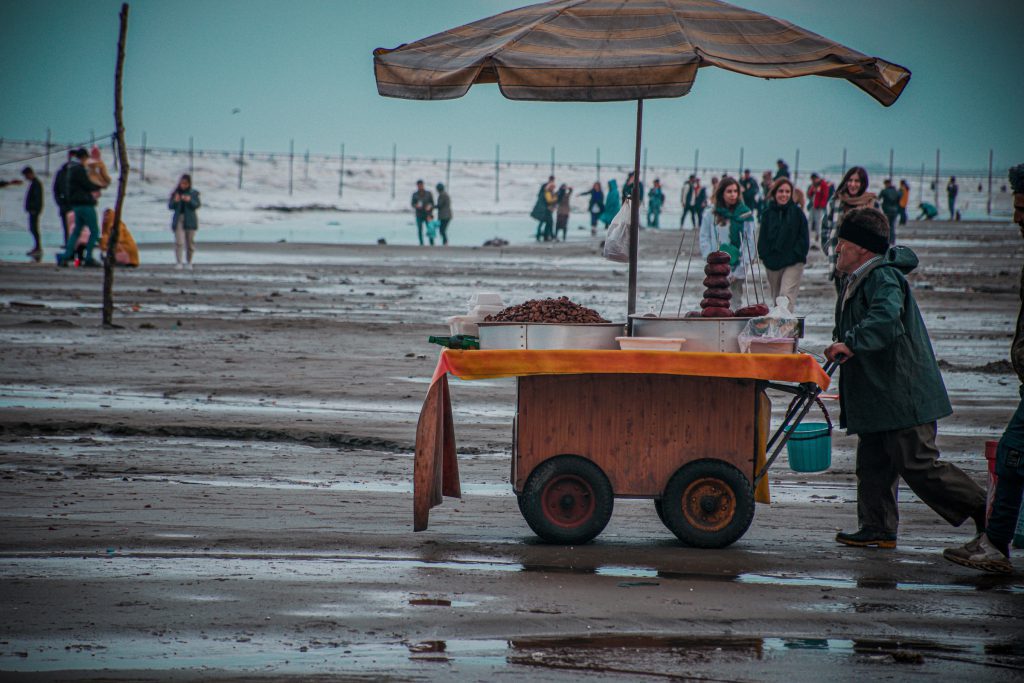
When you’re planning your trip to discover the amazing attractions of Iran, you have two choices: you can either go with a local tour company or an international one. Each of these options has its own good sides and not-so-good sides, and they’re better suited for different kinds of travelers. In this comparison, we’ll focus on why using a local tour company can be a great idea. We’ll talk about what they’re really good at and how they can make your travel experience even more special.
Local Tour Operator
- Reasonable Pricing: Local tour operators usually have great prices because they really know the local scene. They can talk with suppliers and get good deals, often saving you a lot of money – up to 80-100% less than international tour operators. One reason is that local operators have lower taxes. On the flip side, many international tour companies team up with locals to run their tours. When they add an extra layer like an intermediary, costs go up, and so does the price for you.
- Local Knowledge: Utilizing the expertise of a local tour operator grants travelers access to a wealth of insider knowledge. Local operators possess an in-depth understanding of Iran’s history, culture, and attractions, allowing for enriching insights and personalized recommendations.
- Close Connections with Locals: Local tour operators have well-established relationships with local communities, leading to meaningful cultural interactions and authentic experiences that might not be possible with international operators. Local tour operators are attuned to cultural nuances and customs, ensuring that travelers navigate social interactions with respect and grace, leading to more immersive and respectful experiences.
- Flexible Itineraries: Local operators can offer more flexibility in tailoring itineraries to individual preferences, allowing travelers to focus on specific interests and personalize their journey.
- Unknown brand and trust: Naturally, international tour operators have a more well-known brand, and it is easier to trust them. Of course, you can trust local tour operators who have an official license and also have good performance in their previous services. On the other hand, you can book your tour with just a small deposit.
International Tour Operator
- Global Expertise: International tour operators often have a wider network of destinations and resources, offering comprehensive tour packages that cover multiple countries or regions.
- Ease of Booking: International operators usually have user-friendly websites and customer service in various languages, making booking and communication more accessible for a diverse clientele.
- Higher Costs: International tour operators may have higher overheads and administrative expenses, which can be reflected in the pricing of their tours, making them comparatively more expensive.
- Limited Local Insights: While international operators offer broad coverage, their understanding of the local culture and customs in specific destinations may not be as deep as that of local operators.
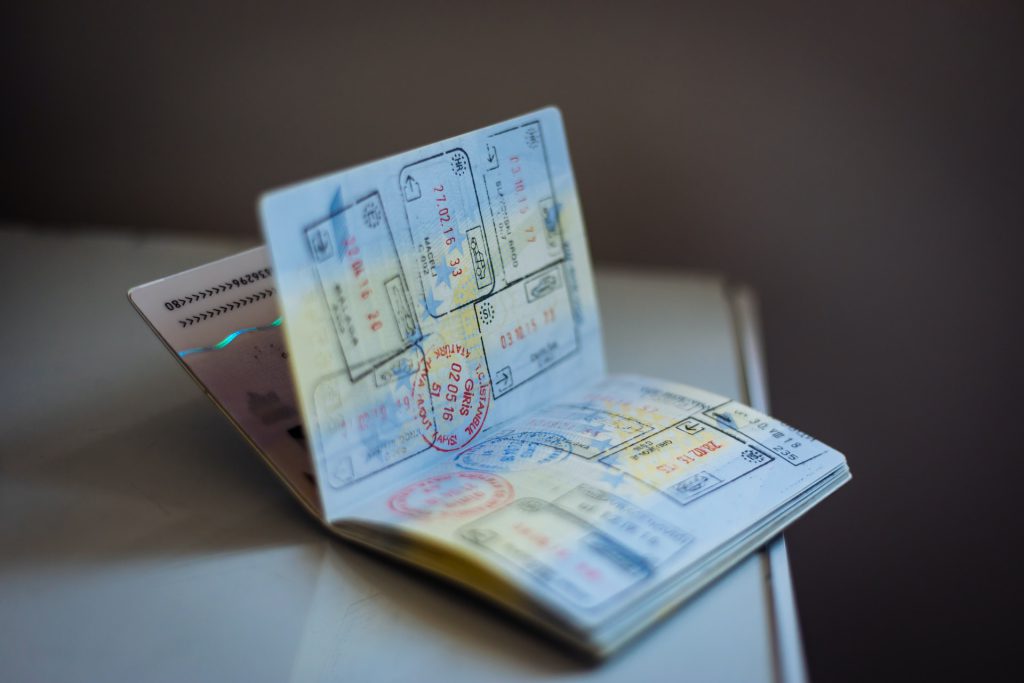
Are you having trouble with the Iran visa application process? You’re not alone. Getting a visa for Iran can be tricky for many travelers. It’s important to determine if you’re eligible and what rules you need to follow.
Generally, visiting Iran needs a visa, except for a few countries that can travel to Iran visa-free. There are some countries that can get their visa on arrival, but some countries are not eligible for Iran visa on arrival, and they must get their visa before their trip (which normally takes about 3 to 7 days to get your visa). There are some countries that don’t need any visa for visiting Iran. Keep reading to find out which group you belong to.
To get your visa, you can go to Iran’s embassy in your country, or apply for your Iran visa online , or even easier, use an authorized tour operator to do the process for you.
For some countries like the US, the UK, and Canada , things might be more complicated. Their governments don’t have good relationships with Iran’s government, which can make getting a visa even harder. Right now, there’s no Iranian embassy in the US.
Don’t let this process stop you from exploring the great things Iran has to offer. With some planning and looking into things, you can make the visa application go smoothly. Make sure you know what your nationality needs and give yourself enough time.
Even though getting a visa can be tough, Iran is an amazing place to visit. There are ancient cities with beautiful buildings, delicious food, and friendly people who will make you feel welcome. So, don’t let the visa process hold you back. Start planning your trip to Iran today, and To Iran Tour can help you make getting your visa easier .
How to Get an Iran Visa on Arrival?
Feeling a bit stressed about getting your visa to Iran? Well, here’s some good news! If you’re from one of 180 countries, you might not need to stress too much.
Starting from February 14, 2016, Iran’s Ministry announced something cool. They said that at their airports, they can give 30-day visas to people from those 180 countries. This makes things super simple if you want to visit Iran and see all its amazing stuff.
But hold on a second! Not everyone from those 180 countries can just show up and get a visa. It might depend on where you’re from, and there could be some rules you need to follow. Before you pack your bags for Iran, make sure to check what you need to do based on where you’re from.
If you’re allowed to get an Iran visa on arrival, you can do it at different airports, like Tehran Imam Khomeini Airport (IKA), Mashad Airport, Shiraz Airport, and more. Here’s what you’ll need to do:
- Answer some questions about your Iran trip,
- Show them where you’re staying (like a hotel reservation),
- Share a copy of your travel insurance,
- Prove you have a return flight ticket
By keeping yourself informed and being careful, you can have a great and safe trip to Iran!
Iran Visa Requirements: Best Guide 2023
Travel to Iran Without a Visa
There are 14 countries in 2023 that can visit Iran without any visa at all. These countries include Turkey, Azerbaijan, Georgia, Malaysia, Oman, Venezuela, China (for 21 days), Hong Kong, Macau, Egypt, Armenia, Lebanon, Bolivia, and Syria. To read more about Iran travel without a visa, read the article below:
Travel to Iran Without a Visa in 2024: Your Ultimate Guide
Non-eligible Nationalities for Iran Visa on Arrival
It’s important to know who can get a visa when they arrive in Iran. If you’re from countries like Afghanistan, Bangladesh, Colombia, Iraq, Jordan, Somalia, the United States, Canada, and the United Kingdom, you can’t get a visa on arrival.
If that’s the case for you, don’t worry! You can still get a visa in a few different ways. You can go to the Iranian embassy in your home country, apply online, or ask an authorized tour operator to help you out , which is the easiest option.
How to Get an Iran Visa; A Complete Guide
What is the Iran Visa Authorization Code
This code is necessary for everyone who wants to apply for an Iran visa and serves as a determining factor for your visa application’s approval.
For those who plan to travel in a group, the tour operator will generally process the visa process and get the authorization code.
For solo travelers or those who don’t have a tour agent, ToIranTour can be a reliable option that offers essential travel services for visiting Iran. Alternatively, you can source an Iranian travel agency or seek direction from the embassy where you plan to obtain your visa.
When applying for the Authorisation Code, you’ll need to specify the embassy or airport where you’ll be processing your visa (unless you’re American, Canadian, or British because Iran doesn’t have embassies there). This can be a bit challenging for those traveling without solid plans or those who plan to visit multiple cities in Iran. It’s wise to choose an embassy in a city you’re likely to fly into Iran from, taking into account the processing time required for your visa application.
Remember, the Authorization Code isn’t your visa . It doesn’t guarantee you’ll get one. Once you have the code, you have to collect your visa label at the embassy/Iranian airport within three months . It’s a good idea to apply well ahead of your trip to handle any delays or issues. So, by getting the Authorization Code and applying for your visa early, you can have a smooth and fun trip to Iran.
Iran Tourist Visa Cost
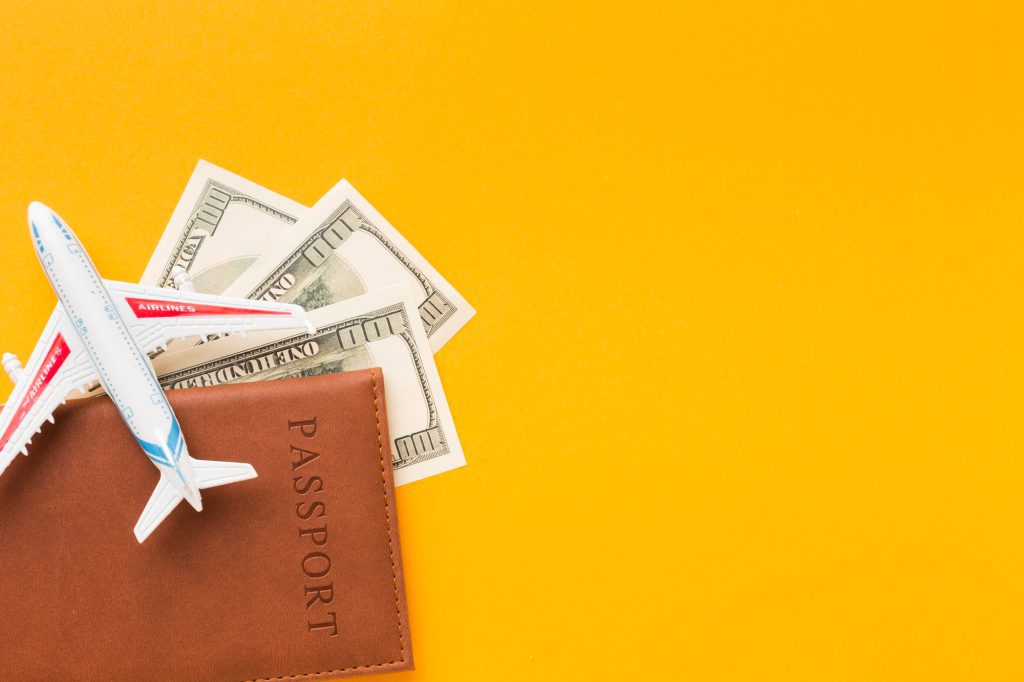
When planning to obtain an Iran tourist visa, it’s important to budget for the costs of the visa. The cost of the visa service varies depending on the agency, usually with an administration fee of 30 to 50 euros, unless booked along with a tour package.
To Iran Tour offers the most affordable service for this situation, and they even have promotions where it can be free. Plus, if you book a tour with To Iran Tour , you won’t have to pay for the visa service.
However, the price of an Iran tourist visa depends on your nationality and the embassy where you apply for it. There isn’t a fixed fee for the visa, so it’s essential to inquire about the current fees at the embassy where you intend to obtain it. Consequently, the visa cost can vary depending on the location where you submit your application. For instance, one traveler paid €180 for their visa in Tbilisi, Georgia, while another paid a slightly higher amount to process their visa in Paris.
An IMPORTANT note is that to pay the cost of a visa at the airport, have enough cash in your pocket as in Iran, international payment cards are not valid. We have travelers who put their cash money in bags and do not have access to their money when check-in and have administrative problems, So keep enough cash in EUR/USD by yourself while getting your stomp visa at the airport.
It’s recommended to budget for the highest possible cost when planning your trip, as visa fees can change without notice. By budgeting accordingly and planning in advance, you can ensure a smooth and hassle-free visa application process and enjoy your trip to Iran with ease.
Iran Visa Timings
Obtaining an Iranian tourist visa is not a time-consuming process, but travelers should plan accordingly to avoid any last-minute stress. It’s important to be aware that the Authorisation Code, necessary for obtaining a visa label, could take 3 – 7 working days to process except for US, Canada, and Britain passport holders, which take more time (around 30-45 working days). Even if you fast-track the process, it’s likely that the code will arrive with only a few days to spare before your planned arrival in Iran or tour start date.
This means that before any trip to Iran, especially when traveling on a tour, you’ll need to plan in advance and be prepared to rush to the embassy to process your authorization code. You may have to pay extra for fast-tracking and organizing your flight ticket to Iran at the last minute, which doesn’t always guarantee the best price. So, it’s a good idea not to book your flights to Iran or any travel arrangements until you know your Iran visa will be processed.
By planning ahead and being aware of the potential delays and challenges in obtaining an Iran tourist visa, travelers can have a stress-free and enjoyable trip to this beautiful country.
How Can US citizens Travel to Iran?
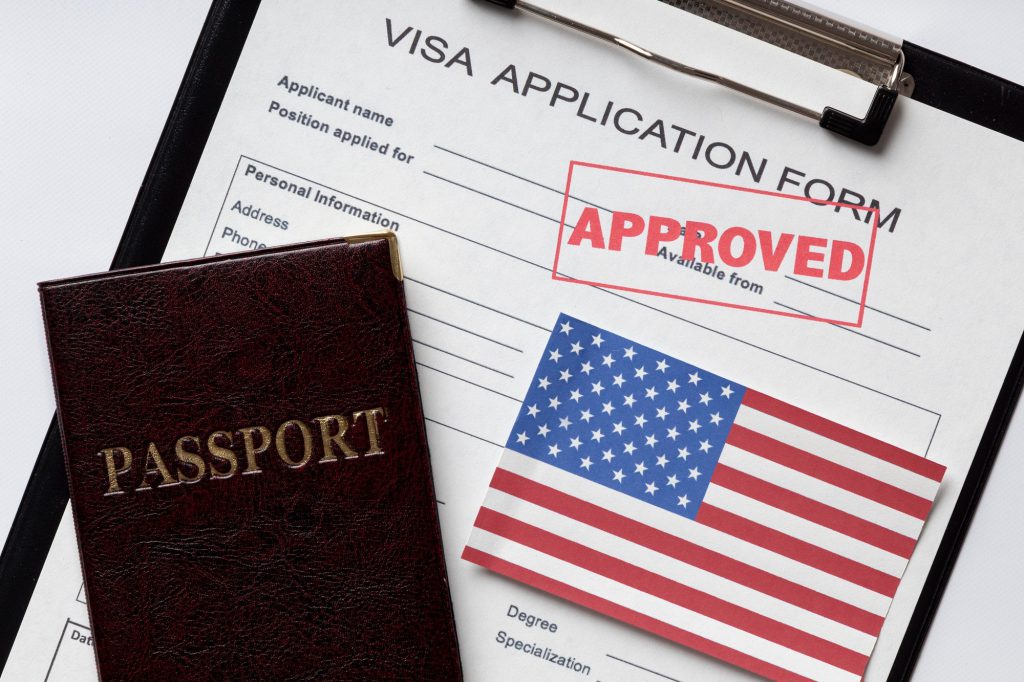
For American citizens, exploring the wonders of Iran can be an enticing prospect, but it comes with a unique set of considerations due to the complex relationship between Iran and the United States of America.
When it comes to visas, Iran has stricter conditions for American citizens, and the United States has similar policies for Iranian nationals. While the process of obtaining a visa for American citizens traveling to Iran may require more time and effort, it is entirely possible with the right approach . Here’s a brief explanation of the process.
1. Visa Application Process:
If you plan to travel to Iran, it’s best to start the visa application process well before your intended departure date. It’s recommended to begin the process at least two months in advance to ensure there is enough time for processing.
2. Contacting the Iranian Interests Section or Embassy
American citizens seeking to obtain an Iran visa must contact the Iranian Interests Section located at the Embassy of Pakistan in Washington, D.C. This is due to the absence of any direct embassy or consulate representation of Iran in the United States. Alternatively, they may choose to contact an Iranian consulate in a third country.
3. Application Documentation
Applicants will need to submit specific documentation to support their visa application, including a completed visa application form, a valid passport with at least six months’ validity beyond the planned departure date, passport-sized photographs, a detailed travel itinerary, and their resume which you can download its sample resume here .
4. Letter of Introduction
If you’re an American citizen planning to visit Iran, you’ll need something important: a special letter. This letter can be easily obtained through a trusted travel agency in Iran. They’ll help you get this letter from the Iranian Ministry of Foreign Affairs.
This letter is like your travel pass. It should explain why you want to visit Iran, your travel plans, and if someone in Iran is helping you, they should be mentioned too.
5. Group Tour vs. Independent Travel
American citizens can choose between traveling as part of an organized group tour or in a private tour.
IMPORTANT note: Both should be escorted by an authorized tour guide. Joining an organized group tour can simplify the visa process, as the tour operator may assist with obtaining the letter of introduction and navigating the application procedure.
6. Additional Screening and Processing Time
Due to the sensitive nature of the bilateral relationship, visa applications from American citizens undergo additional screening, which may contribute to longer processing times compared to citizens of other countries. However, it is crucial to remain patient and diligent throughout the process.
7. Visa Validity and Duration
After approval, the visa will specify its validity period and the permitted duration of stay in Iran. It is crucial to strictly adhere to these limitations to prevent any complications while traveling.
Therefore traveling to Iran as a US citizen may require navigating a more intricate visa application process due to the existing differences between Iran and the United States. However, with careful preparation, proper documentation, and patience, obtaining an Iranian visa is entirely possible. By adhering to the specified requirements and following the recommended steps, American travelers can embark on an unforgettable journey to discover the rich history, culture, and beauty of Iran, making memories to cherish for a lifetime.
Iran Visa for US UK and Canada Citizens: A Comprehensive Guide
How Can British and Canadian Citizens Travel to Iran?

British and Canadian citizens can travel to Iran following a similar process as American citizens . They must apply at the Iranian embassy in England or Canada, considering the required documentation and a letter of introduction from an authorized travel agency in Iran. Notably, these nationalities cannot obtain airport visas and must only use escorted tour services through a tour operator.
If the office of the custodian of Iran’s interests in Washington or other embassies located in Canada and England is far from your place of residence, or if you cannot visit them for any reason, you can receive your visa through the postal service. You should send the necessary documents, including your passport and your photo, along with a special form filled out by mail to the office of Iran’s Interests Protector or the embassy of your choice. After completing the administrative formalities, they will send the passport along with the visa to you.
Visa Refusal Possibilities
Travelers need to be aware that there is a risk of visa refusal for Iran if there is proof that they have traveled to Israel. This is due to the political tensions between the two countries and the Iranian government’s strict stance on the matter.
Additionally, visitors who work in certain industries, such as journalism or media, may also face scrutiny from Iranian authorities. This is because the Iranian government is sensitive to the portrayal of the country in the media and may view journalists and media workers as a potential threat to their national security.
If you have traveled to Israel in the past, it’s important to be transparent about this when applying for an Iran tourist visa. While this may increase the likelihood of visa refusal, it’s important to be honest to avoid any potential legal issues or complications during your visit.
It’s also recommended to avoid discussing any sensitive topics related to politics or religion during your stay in Iran, as these may be viewed as provocative and lead to unwanted attention from authorities.
Nationality Restrictions- Israelis Travel to Iran
It’s really important to know that if you’re from Israel, you can’t go to Iran. The two countries don’t get along right now, so this rule probably won’t change for a while.
We understand that it might be disappointing if you’re from Israel and you want to visit Iran to learn about its amazing culture and history. But it’s super important to follow the rules and not try to sneak into Iran. If you do, you could get into big trouble with the law, and your safety could be in danger.
Even if you have another passport from a different country, don’t try to go to Iran if you’re also an Israeli citizen. It’s just not safe.
Travel Insurance for Visiting Iran: Insights from Our Iran Travel Guide
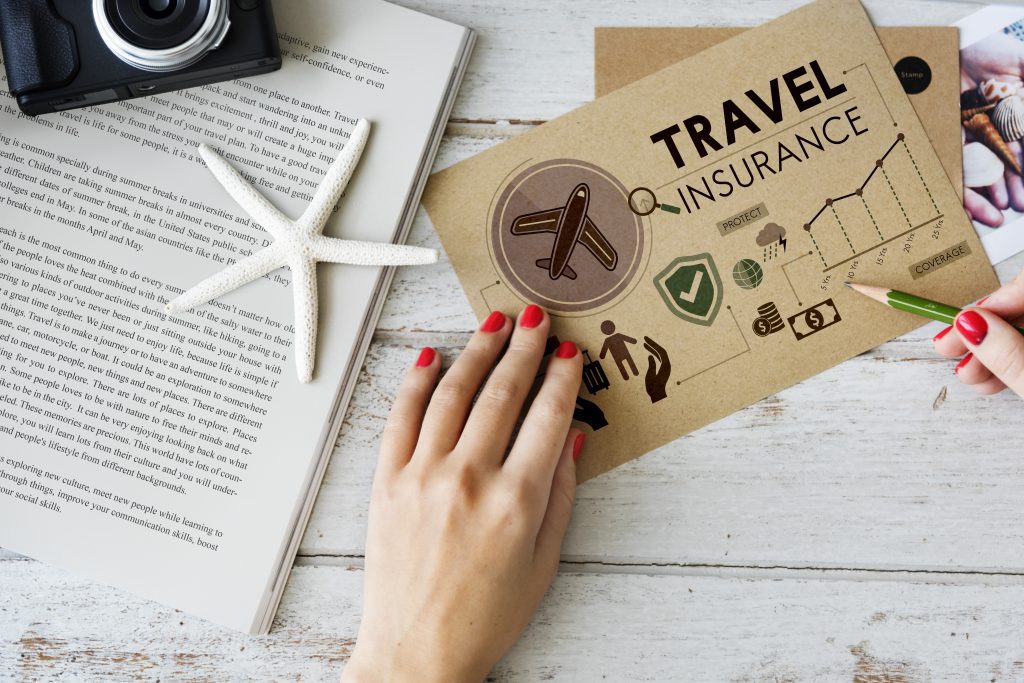
When you’re getting ready for a trip to Iran, remember this: You need travel insurance to get your visa. It’s like a permission slip for your trip.
But not just any insurance will do. Make sure your insurance covers all of Iran and all the stuff you want to do there. Some insurance might say no to certain places or activities, so read the fine print!
You can also ask your tour guide to set you up with health insurance from a company like Saman Insurance. This insurance will help if you get sick or have an accident, and it can cover up to 50,000 Euros in medical bills.
So, if you want to stay safe and have a blast in Iran, get good travel insurance and be careful. Happy travels!
Booking the Best Tour
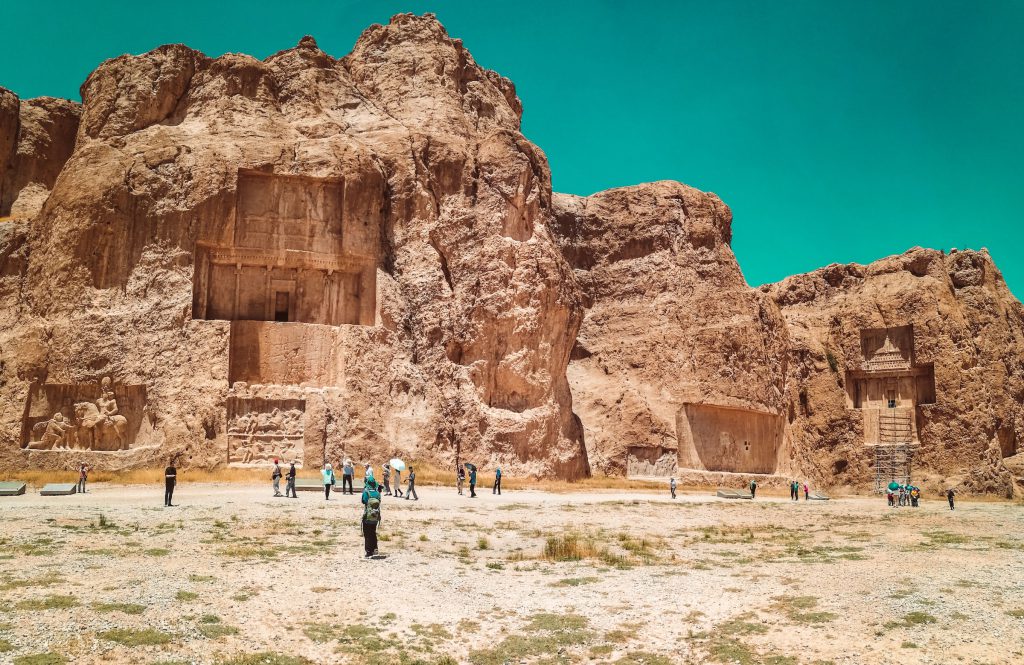
Booking an Iran tour package is a fantastic way to dive into the country’s incredible culture and history. It’s especially great if you want a smooth and stress-free trip. This might be your only option if you’re from the UK, the US, or Canada. You see, these countries have special rules that say you must join an official Iran tour operator or hire a private Iran guide.
Now, there are so many Iran tour packages out there that it can feel a bit overwhelming. But don’t worry! If you pick a trusted tour company like To Iran Tour , you’re in for a memorable adventure. We’ll take you to amazing places in Iran, ones that you might not easily reach on your own or using public transport. Plus, your local guide will be a treasure trove of info about Iran’s ancient history – perfect if you’re a history and culture fan.
You might think being in a tour group means you’re stuck all the time, but that’s not the case. You’ll still have plenty of free time to explore each place at your own pace. Even in a small group, we had loads of opportunities to discover Iran’s hidden gems on our terms.
Now, one thing to remember is that Iran tour packages can be quite packed. There’s not much downtime or rest days on the schedule, which might feel a bit rushed if you prefer a slower travel pace. But in just 12-14 days, you’ll see and experience so much that you’ll never forget.
All in all, booking an Iran tour package is an awesome way to soak up this incredible country and its rich culture and history. With a bit of planning and research, you’ll find the perfect tour that matches your interests and travel style. You’ll make memories that will stick with you forever.
Private Guided Tours of Iran
For those who prefer a more personalized travel experience, hiring a private tour guide in Iran is a great option. While it typically requires a minimum of two people, it offers the flexibility to customize your itinerary and travel at your own pace.
Private guided tours of Iran are particularly appealing to those who may have visa restrictions or prefer to avoid traveling in larger groups. With a private guide, you’ll have the benefit of local knowledge and expertise, and you can tailor your itinerary to suit your interests and preferences.
One of the advantages of a private guided tour is that you can have an intimate and authentic experience of Iran’s culture and history. Your guide can take you to off-the-beaten-path destinations and provide insights into local customs and traditions, giving you a deeper understanding and appreciation of the country.
Additionally, a private guided tour allows you to avoid the hassle and stress of planning logistics and transportation on your own. Your guide can handle all the details, from arranging accommodations and transportation to helping you navigate local customs and etiquette.
Iran Independent Travel
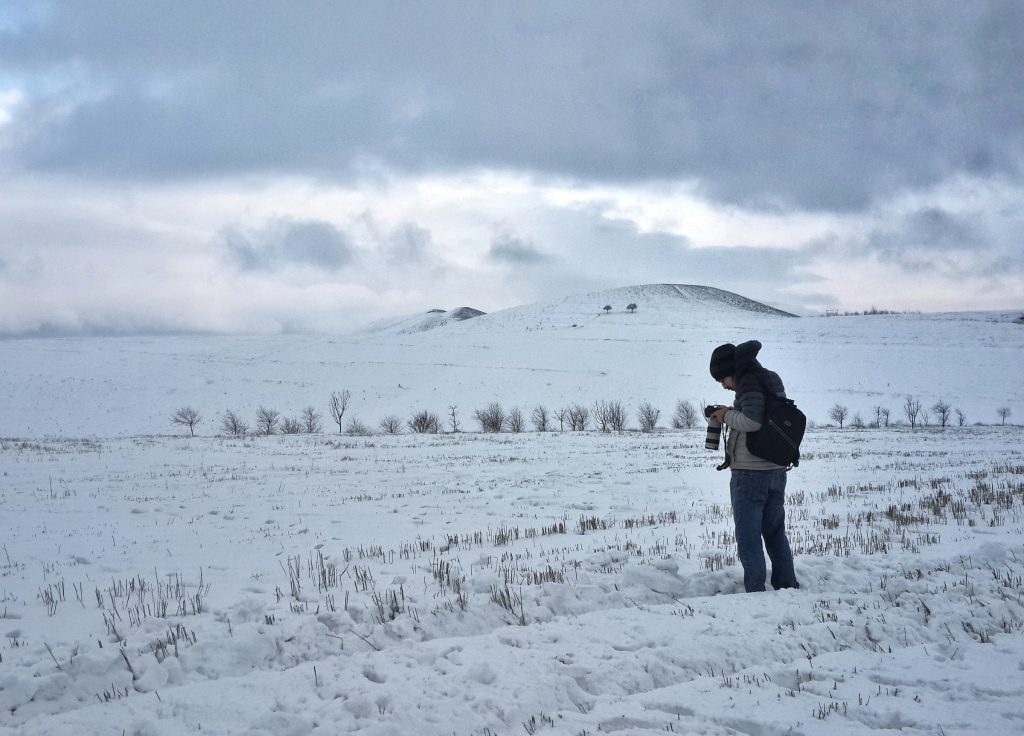
While solo and independent travel to Iran can be moderately easy for those with a free nationality, it’s important to note that the country is not yet well-trodden on the independent travel path. Hostels and guesthouses are scarce, and big, expensive hotels dominate the landscape, especially in Tehran. It’s also rare to come across a group of solo travelers to join.
However, that doesn’t mean that solo travel in Iran is impossible or unsafe. On the contrary, it’s a rewarding and exhilarating experience that offers a unique glimpse into the country’s rich culture and history. While it may require a bit more planning and effort, traveling independently in Iran allows you to create your own itinerary and explore at your own pace.
One of the advantages of independent travel is the flexibility to stay in smaller, locally-run accommodations and eat at local restaurants, giving you a more authentic and immersive experience. It also allows you to connect with locals and learn about their way of life, which can be a highlight of any trip.
Of course, traveling independently in Iran also requires some caution and common sense, such as being aware of local customs and dress codes and taking necessary precautions for safety. It’s also important to do your research and plan ahead to ensure a smooth and enjoyable trip.
Couchsurfing in Iran
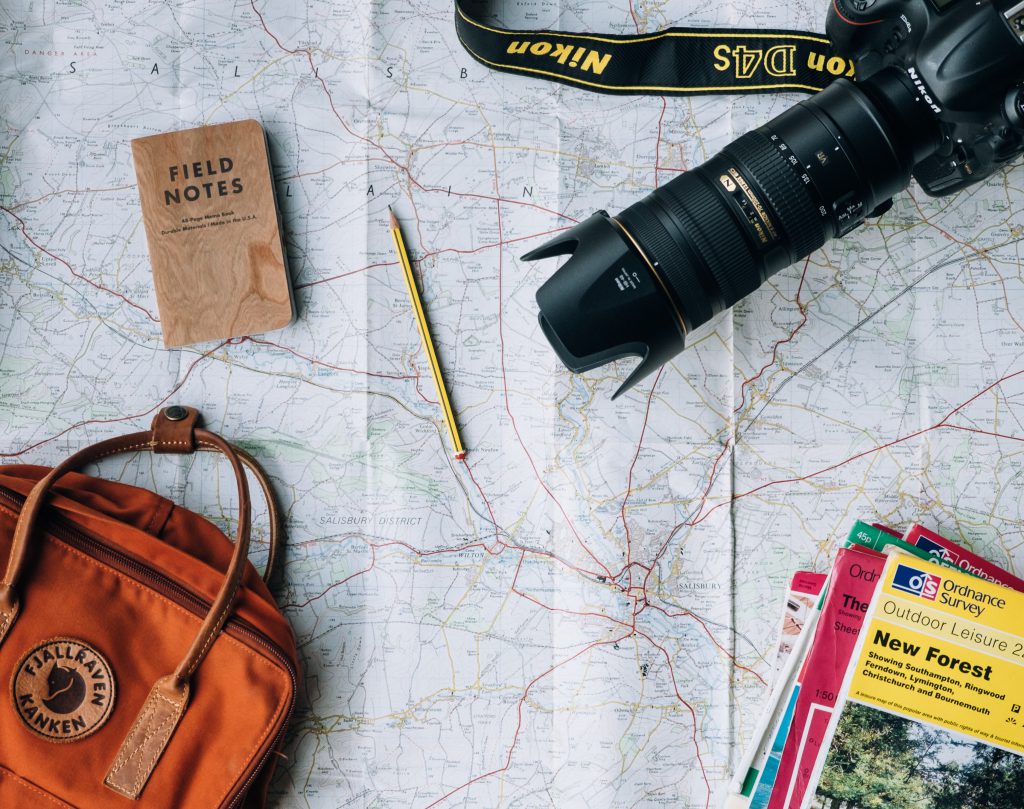
Couchsurfing can be a popular option for budget-conscious travelers looking to connect with locals and experience the culture firsthand. However, it’s important to note that Couchsurfing in Iran is officially illegal. While many independent travelers have reported using the resource and finding local hosts to be excellent guides, there are some risks involved.
One of the main concerns with Couchsurfing in Iran is the lack of official filters in place for hosts listed online. This means that travelers must exercise caution and take responsibility for their own safety. In the event that anything goes wrong, Couchsurfing hosts cannot be held responsible.
Despite these risks, Couchsurfing in Iran can be a rewarding experience for those who are willing to take the necessary precautions. It provides an opportunity to connect with locals and gain a deeper understanding of the country’s rich culture and history.
It’s important to note that while Couchsurfing may be illegal in Iran, it does happen anyway. However, travelers should be aware of the potential risks involved and take necessary precautions to ensure a safe and enjoyable experience. This may include carefully vetting potential hosts, staying in public areas, and communicating clearly with your host about your expectations and boundaries.
Solo Female Travel to Iran
Traveling alone as a woman in Iran can be a bit tough sometimes, but it can also be incredibly rewarding if you’re open to experiencing the unique culture and people here. While women might have some more rules to follow compared to men, many solo female travelers have found Iranians to be really friendly and kind.
Here are some things to keep in mind to make your trip smoother:
- Respect Local Customs: Especially in smaller and more traditional places like Yazd, Kashan, and Qom, it’s essential to dress modestly. That means avoiding clothes that are too revealing, as it might come across as disrespectful.
- No PDA: Public displays of affection, like hugging or kissing in public, aren’t allowed in Iran. However, friends of the same sex usually hug or kiss each other on the cheek and it’s considered normal.
Despite these things to watch out for, Iran is actually considered one of the safest countries for tourists . You can confidently explore its beautiful landscapes and rich culture, knowing that most locals will be warm and welcoming.
Just remember to be cautious like you would anywhere else. Stay away from poorly lit areas at night and keep an eye on your surroundings in crowded places. With some careful planning and an open attitude, traveling solo as a woman in Iran can be a really enriching experience that might change your life.
In the end, while it might require a bit more effort and attention to local customs, it’s a unique and rewarding way to discover this amazing country and make unforgettable memories.
Best Time to Travel to Iran
Iran is a year-round destination with diverse climates and landscapes, making it an ideal destination for travelers seeking a variety of experiences. However, the best time to visit Iran depends on the region you plan to visit and your personal preferences.
For the classic route , which includes popular destinations like Tehran , Kashan, Isfahan, Yazd , and Shiraz, the best time to visit is during the two high seasons. The first high season runs from early March to late May , while the second high season runs from early September to late November . During these periods, the weather is generally mild, and the landscapes are lush and green, making it ideal for sightseeing and outdoor activities.
If you’re planning to explore the Northwest and West route along the Zagros mountains , which includes destinations like Ardabil, Tabriz, Zanjan, Hamedan, Kermanshah, and Sanandaj, the best time to visit is during the high season from mid-April until mid-November . During this period, the weather is generally pleasant, and the landscapes are at their most picturesque.
If you’re thinking about visiting ski resorts in the northern part of Tehran like Dizin, Shemshak, and Tuchal, or if you’re headed to places in Southern Iran such as Ahwaz, Bushehr, Bandar Abbas, and the Persian Gulf Islands , the perfect time to go is from late November to late March . This is when the weather is cooler, and the ski resorts are at their busiest and most fun!
Keep in mind that July to September in Iran can get really hot, which might make the usual travel route not so comfy. But don’t worry! If you plan well and keep an eye on the weather, you can still have a great time visiting Iran during this time.
So, the ideal time to go to Iran depends on what you like and where you want to go. Iran has all sorts of landscapes and weather, so no matter when you decide to visit, you’ll always find something cool to do in this awesome country. For more detailed information about the best time to visit Iran based on your destination and weather, check out this article below:
Best Time To Travel To Iran: Your Ultimate Guide 2023
Iran UNESCO World Heritage Sites
Iran is a treasure trove of UNESCO World Heritage Sites that will leave you awestruck. With 26 sites recognized by UNESCO, including 24 cultural and two natural wonders , Iran boasts an ancient lineage that Iranians take pride in.
Each of these sites is the result of years of research and presentation of evidence to prove their significance to the world. From ancient palaces to stunning natural landscapes, these sites offer a glimpse into Iran’s rich cultural and historical heritage.
Visiting all of these sites would require multiple trips to Iran, but the effort is well worth it. Some of the most popular UNESCO World Heritage Sites in Iran include the ancient ruins of Persepolis , the stunning Sheikh Safi al-din Khanegah and Shrine Ensemble in Ardabil, and the beautiful Masjed-e Jāmé in Isfahan .
Other notable sites include the historic city of Yazd , the ancient hydraulic system of Shushtar , and the Tabriz Historic Bazaar Complex, which is one of the largest covered bazaars in the world.
If you’re into history, nature, and culture or want a fantastic travel adventure, Iran’s UNESCO World Heritage Sites have something for you. So, get your bags packed, plan your trip, and let’s explore the awesome things this amazing country has to offer. You can even join the UNESCO tour with To Iran Tour to see it all!
Dress Code in Iran
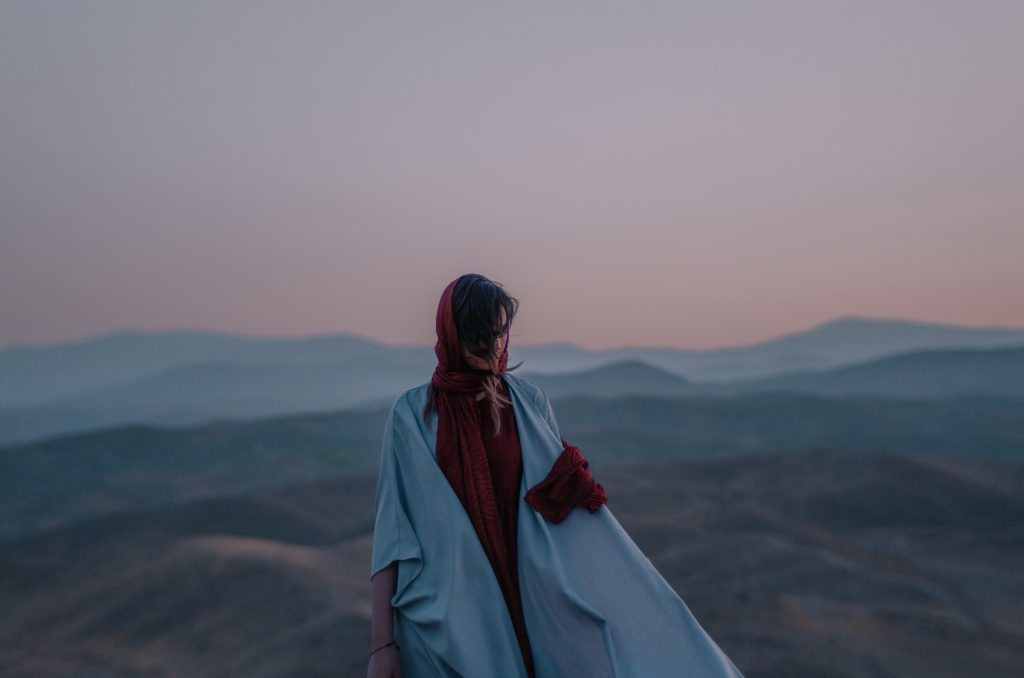
If you’re planning to visit Iran, it’s good to know that they have a dress code that you need to follow. As a woman, you should wear loose clothing that covers your body and a headscarf. But don’t worry, you don’t need to wear a burka or anything too concealing. You can still show off your personal style and wear clothes that make you feel confident and comfortable. Just keep in mind the local customs and you’ll be all set!
Even though there is a strict dress code in Iran, you’ll quickly see that it’s not as stereotypical as you might think. Iranian women are very fashionable and take pride in their appearance. Fashion is a way for them to express themselves and make a statement, and you’ll notice them wearing beautifully designed headscarves and stylish clothing that still comply with the Iranian dress code .
It’s also worth noting that the dress code applies to both men and women. Men are required to wear long-sleeved shirts and pants that cover their legs.
While it’s true that there is a “morality police” in Iran, whose job is to enforce the dress code and other moral codes of conduct in public, it’s important to note that they are not actively targeting foreign visitors. So, as a traveler to Iran, you don’t need to worry too much about being chased down by the morality police.
In general, if you show respect for local customs and adhere to the dress code regulations, you can have a secure and enjoyable travel experience in Iran. Therefore, don’t allow concerns about the morality police or any misunderstandings preventing you from exploring all the amazing things that this country has to offer.
Packing Tip for Travel to Iran
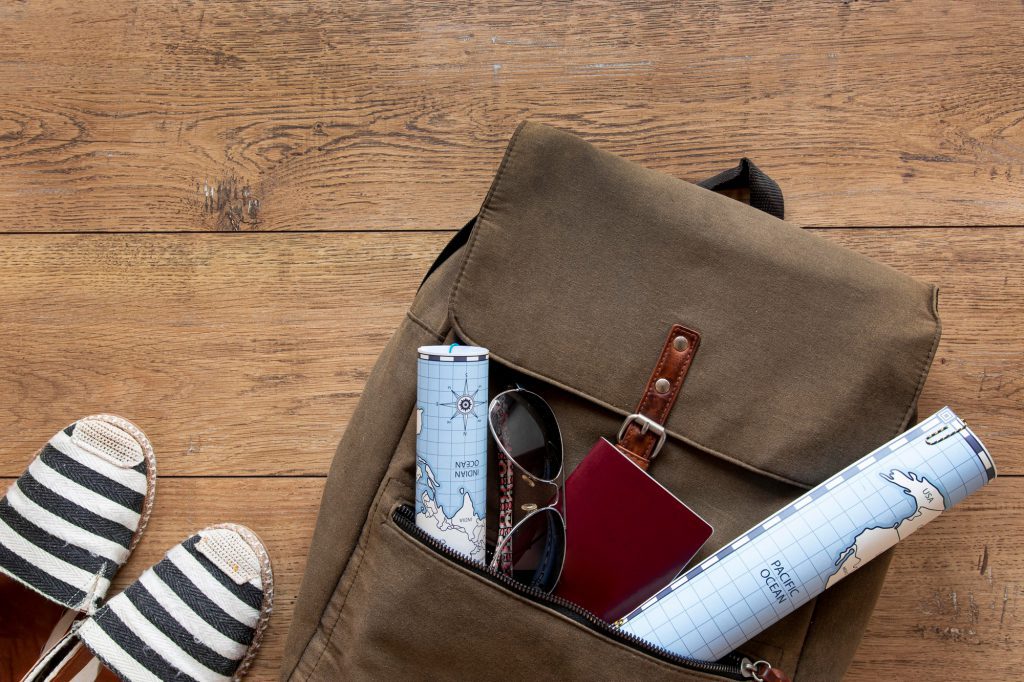
Packing for a trip to Iran can be a bit daunting, especially with the strict dress code regulations. However, with a little bit of preparation and the right mindset, you can embrace the local customs and still express your personal style.
The most immediate essential item to pack for Iran is a headscarf, also known as a ‘Roosari’ in Farsi. But don’t worry if it falls off – just put it back on again. While wearing a headscarf is mandatory, it’s common for Iranian women to wear it a little loose and halfway back on their head, with a high bun or ponytail to keep it in place. And if you’re worried about showing a little bit of hair, don’t be – it’s granted.
When it comes to tops, loose-fitting ones with three-quarter-length sleeves are ideal, especially in the heat. The general rule of thumb is that your body should be covered, and your arms should not be bare. As for trousers, they should be baggy, but tight, brightly colored leggings worn with a long, loose-fitting top are also acceptable, as long as your legs are covered down to the ankles.
The myth that you need to dress in dark colors or black tunics is just that – a myth. Embrace fashion the way the locals do, and bring some color into your Iran packing list! Open-toed sandals are OK, especially on hot days, and sports shoes are fashionable in Iran, especially in bright colors, so pack some for longer day trips.
If you’re worried about not having enough appropriate attire, fear not. As soon as you arrive in Tehran or Shiraz, hit the bazaars and local markets for plenty of options. And if you’re traveling with children, it’s worth noting that young boys can wear shorts and t-shirts, and girls under ten are not required to wear a headscarf.
For men, dressing in Iran is more straightforward, much like in Western countries, except for no short shorts, super short sleeves, or extremely tight-fitting clothing.
Overall, remember to approach the dress code with an open mind and respect for local customs. And don’t be afraid to express your personal style while still adhering to the guidelines. With the right attitude and a well-stocked suitcase, you can have a comfortable and enjoyable trip to Iran.
Is Iran Safe to Travel?
Even though some Western media might paint a different picture, Iran is a safe and friendly place for travelers. You might worry about safety because of politics and cultural differences, but the truth is that Iran is a great place to visit.
The people in Iran are super welcoming. You’ll meet lots of friendly locals who are excited to have you in their country. Whether you’re exploring busy markets or historical sites, Iran offers a one-of-a-kind travel experience.
Like anywhere else, it’s essential to be cautious and aware of your surroundings when you travel. But honestly, the chances of running into safety problems in Iran are pretty low. Many travelers say they feel safer here than in other popular tourist spots.
So, if you’re thinking about visiting Iran, don’t let safety worries stop you. With the right mindset and some preparation, you can have a safe and unforgettable trip to this fascinating country.
Iranians are known for their hospitality. They often go out of their way to help visitors, whether it’s giving directions, suggesting a great local restaurant, or offering you a ride. They might even share their contact info, just in case you need assistance. This shows how much they want you to feel welcome and at ease during your stay.
It’s also worth mentioning that Iranians want to break away from the negative image sometimes shown in the media. They’re proud of their culture and want you to see the beauty of their country and the warmth of their people.
As a visitor to Iran, you have a special chance to bridge cultural gaps and show Iranians that the world outside isn’t as unfriendly as they might think. By approaching your trip with an open mind and a desire to learn, you can make meaningful connections and get a deeper understanding of Iranian culture.
In the end, the hospitality and friendliness of the Iranian people are some of the best parts of traveling to this amazing country. So, don’t hesitate to engage with the locals and fully enjoy the rich cultural traditions that make Iran such a unique and captivating destination.
Is Iran Safe to Travel RIGHT NOW?
When thinking about visiting Iran, like any other place you might want to go, it’s a good idea to keep an eye on the news about politics and how your own country is getting along with Iran. But don’t worry too much because Iran is actually one of the safest countries in the Middle East for travelers.
Now and then, people in Iran might have protests about politics or money issues, but these usually stay in one place and don’t put tourists in danger. Just be smart and avoid those protest areas, like you would anywhere else.
Remember, Iran follows Islamic rules pretty strictly. So, things like drinking alcohol, doing drugs, or having romantic relationships with locals can get you in big trouble – like being kicked out of the country, getting arrested, or worse. But if you respect their way of doing things and follow the rules, you’ll have a great and safe time in Iran.
Overall, as long as you keep an eye on what’s happening and are careful, there’s no need to be super worried about going to Iran. If you go with the right attitude and prepare well, you’ll have a fantastic trip to this remarkable country.
Is Iran Safe to Visit 2024? A Comprehensive Overview
Essential Things to Remember When Visiting Iran
When you plan to visit Iran, it’s really important to be respectful and well-informed. Iran is a Muslim country where they take their rules seriously, especially Islamic law. So, it’s not a good idea to act like a clueless tourist and think you won’t get in trouble.
You see, what might be okay back home could get you into real trouble here. Iran has strict laws and customs, and it’s super important to follow them.
But here’s the good news. If you respect the local ways and follow the rules, you can have a safe and enjoyable trip to Iran. So, don’t let the strict rules scare you away. Come with an open mind and a desire to learn about the unique and fascinating culture of Iran. You’ll have a great time!
Is Iran an Arab Country?
There is a common misconception that Iran is an Arab country, fueled by its location in the Middle East, Muslim religion, and some similarities in culture and language. However, it’s important to note that Iran is not an Arab country, and Iranians are not Arabs.
Iranians speak Persian, also known as Farsi, which is not the same as Arabic. While there are many languages spoken within Iran, including Kurdish, Turkish, and Khuzi Arabic, the primary language is Persian. This is due to the many different ethnic groups that exist within the country, each with its own unique language and cultural traditions.
It’s crucial to acknowledge that misinterpreting Iranians as Arabs can lead to misunderstandings and hurt feelings. Although Iran has certain similarities with Middle Eastern Arab nations, it possesses a unique culture and history that distinguishes it.
In essence, when traveling to Iran, it’s vital to maintain an open-minded attitude and a genuine desire to explore the country’s distinctive cultural traditions and history. By recognizing the differences between Iran and its neighboring Arab nations, you can develop a greater appreciation for the richness and diversity of the entire region.
The Iranian currency system can be a bit confusing for those unfamiliar with it. Iran uses two units of currency, the Rial (IRR) and the Toman.
The Rial is the official currency of Iran. It has been the official currency since 1932, and the symbol for the Rial is “﷼”.
The Toman is not an official currency but is widely used in everyday transactions in Iran. The Toman is equal to 10 Rials. This practice of using the Toman as a unit of currency dates back to the early 20th century when the value of the Rial significantly decreased due to inflation.
To convert Rials to Tomans, you remove one zero from the Rial amount. For example, 1,000 Rials is equivalent to 100 Tomans. In practice, prices are often quoted in Tomans rather than Rials. For instance, if an item costs 10,000 Rials, it would be referred to as 1,000 Tomans. This pricing convention is used in everyday life, in markets, shops, and sometimes even on price tags.
The official currency notes in Iran are denominated in Rials, not Tomans. When you’re working with important papers, like contracts or international deals, you’ll often use the Rial as the currency.
The currency notes come in various denominations, including 1,000,000 Rials, 500,000 Rials, 100,000 Rials, 50,000 Rials , and so on.
Although the official currency is the Rial, the Toman is more commonly used and understood by Iranians in their daily lives. For example, if someone says a product costs 500,000, they most likely mean 500,000 Tomans, which is equal to 5,000,000 Rials.
Iran Travel Costs 2024: The Best Detailed Guide for Tourists
Currency Exchange in Iran
To get the best exchange rates , it’s recommended to take US Dollars or Euros with you and exchange them at reputable exchange offices. Let’s figure out more about exchanging money in Iran:
There are a few ways to exchange your money into Rials, and some are safer than others:
- One option is to go to the currency exchange at the airport. It’s a secure choice, but the exchange rate there might not be as good as what you’d find in the market.
- Another way is to exchange your money at the hotel or exchange offices in some hotels. Their rates are similar to what you’d get at the airport.
- If you’re in Tehran, you can also sell your foreign currency on Ferdowsi Street or at exchange offices in the city. These places have a wider range of rates, and they’re usually better than the airport rates.
The only catch is that you might not be headed to Ferdowsi Street on your trip. If you plan to visit the Tehran market, you can ask your guide (if you have one) to take you to Ferdowsi Street for currency exchange.
Just remember, it’s not a good idea to deal with people on the street who are buying and selling currency. Stick to the official exchange places for your safety.
Credit and Debit Cards during Iran Travel

If you’re planning a trip to Iran, it’s essential to understand the financial landscape and the options available for making transactions. Unfortunately, using credit or debit cards from outside of Iran is not possible due to the lack of an international card network.
This means that the best option is to bring enough cash with you to convert to an Iranian Rial. However, there is now a new option available for tourists and temporary visitors like the Mah Card and Irani Card .
The Mah Card is a prepaid debit card that can be used in Iran. Like most travel cards, you can instantly add funds to your card in your preferred or home currency, and it will be converted to Iranian Rial. The advantage of using the Mah Card is that it’s more convenient than carrying cash, protects you from unauthorized purchases, and is accepted country-wide.
So, if you’re looking for a safe and easy way to make transactions during your trip to Iran, consider getting a Mah Card. With this handy tool in your pocket, you can enjoy your travels without worrying about carrying large amounts of cash or the inconvenience of finding exchange offices.
Of course, there are other solutions, such as gift cards that are issued through banks, and to use this unofficial solution, you should ask your tour operator for help.
Public Transport in Iran
Exploring Iran’s cities is an adventure in itself, and luckily, there are plenty of public transport options available to help you get around!
Best Inner-City Transport Options
Metro (subway).
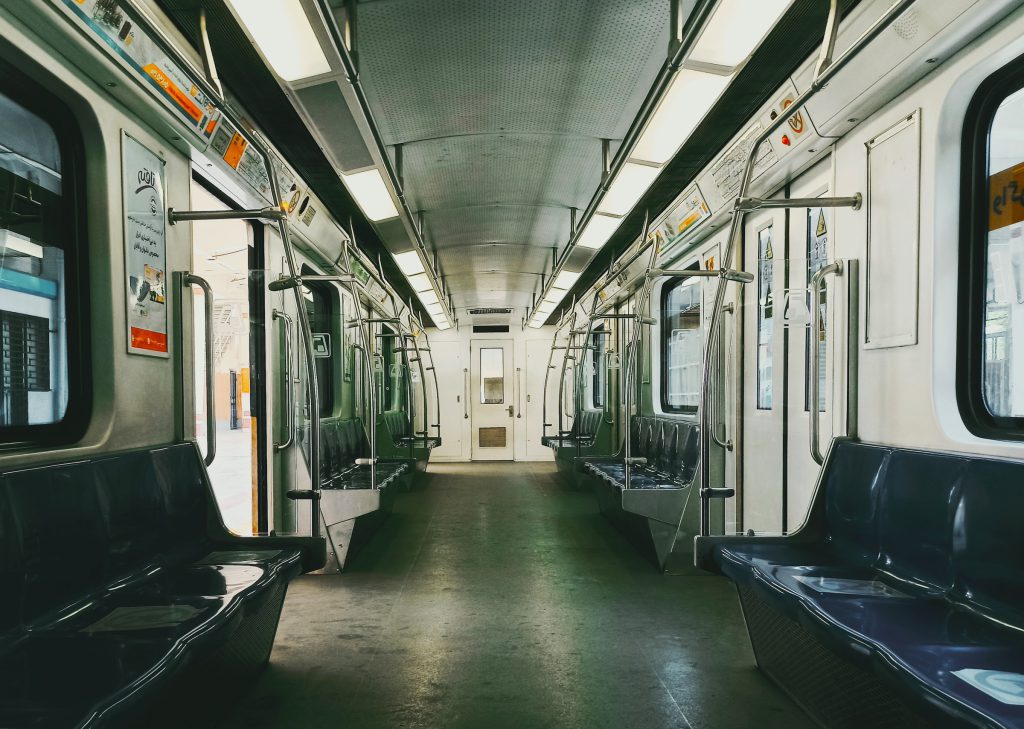
The Iranian Metro is a modern and efficient way to explore the city, especially in Tehran, Shiraz, Tabriz, Mashhad, and Isfahan. It’s the ideal option to get around Tehran, and the stations are easily accessible by taxi or bus.
The ticket price for one trip is about 3000 Tomans, which is equal to approximately 0.1$ in 2023, I know, it’s so cheap. Additionally, you can purchase a card to pay for the metro trips and even the buses in Tehran. Rush hours are typically from 7-9 a.m. and 5-7 p.m.
The metro guidance can be easily found in each station, but if you want to be prepared for your metro journey, check out the Tehran Metro website or other cities’ maps.
Buses are another popular option for inner-city transport in Iran. They are widely available and offer an affordable way to get around the city. Bus fares vary depending on the distance you are traveling, but they are generally inexpensive.
There are two main types of buses in big cities: Regular and BRT. You can pay for the buses using your Metro card, and fares typically range from 3000 to 10,000 Tomans (10 to 25 cents) per trip. You can easily locate all the bus and BRT stations on Google Maps.
In comparison to subways, buses are somehow time-consuming because of traffic jams. So, if your destination is near a subway station, our suggestion is to take the subway instead of the bus.
Another way to get around in the city is by taxi. There are different types of taxis available, including shuttle/shared taxis (Khatti in Farsi), private taxis (Darbast in Farsi), and non-registered taxis (Shakhsi in Farsi). Shuttle/shared taxis are a cheaper option, but they are for fixed destinations, and you may have to wait for the taxi to fill up. Private taxis are readily available, but you should negotiate the fare before getting in. Non-registered taxis are driven by people who are not licensed taxi drivers, and you need to negotiate the price with them too. It is advisable to get a shared Taxi or Private Taxi and not a non-registered one for your safety.
Of course, platforms such as Snapp and Tapsi have been launched, which have a function similar to Uber. You can download their applications from Google Play or directly from their websites and register with your Iranian SIM card.
Finally, if you need a taxi in a hurry, you can call the numbers 133, 1828, and 1833 in major cities in Iran to request a taxi wherever you are. This service is called “Bisim Taxi” and is available 24/7.
10 Essential Apps for Traveling to Iran: Empowering Your Exploration!
Intra-City Transport Options
Buses are a common and affordable way to travel between cities in Iran. There are two types of buses available: regular and VIP buses. VIP buses offer more legroom and comfortable seating, with space to almost lie down.
You can purchase bus tickets from the hotel front desk, local travel agencies, platforms such as SnappTrip, or directly from the bus terminal. Prices vary depending on the type of bus and the distance you are traveling. For instance, a VIP ticket from Tehran to Shiraz costs around 200,000 Tomans ($15).
There are three bus terminals in Tehran: Jonoub Terminal (South), Sharq Terminal (East), and Qarb or Bayhaghi Terminal (West). From these terminals, you can easily buy and board a bus and start your trip to other cities in Iran.
The train network in Iran is relatively extensive and offers a comfortable and scenic way to travel between cities. The trains are well-maintained and offer a range of seating options, from economy to first-class; But their speed and being on time cannot be compared with the European rail transport system.
Trains are the best and safest option for intercity travel in Iran. There are different types of trains available, including 4-bed, 6-bed, and bus trains. You can also choose between express and regular trains.
Book train tickets through online apps, local travel agencies, hotels, or directly at the train station. Prices vary depending on the distance and the type of train. For example, a ticket from Tehran to Yazd costs between 150,000 and 300,000 Tomans ($5 to $10).
Private Car
If you prefer a more flexible and personalized way to travel, you can also consider renting a private car with a driver. This option is more expensive than buses or trains, but it offers the freedom to explore at your own pace.
The Maxim platform has also provided the possibility of renting a car with a driver at a very reasonable price all over Iran. You can download its application from Google Play and register with your Iranian SIM card.
Domestic Flight
Finally, if you’re short on time or traveling long distances, you can opt for a domestic flight. The major cities in Iran are well-connected by domestic airlines, making it easy to get around the country quickly and efficiently.
Online platforms for selling Air tickets, such as Alibaba, provide the online purchase of domestic and international flight tickets.
By understanding the different transport options available in Iran, you can choose the one that suits your needs and budget and explore the country with ease.
Separated Men’s and Women’s Carriages in Iran’s Public Transport
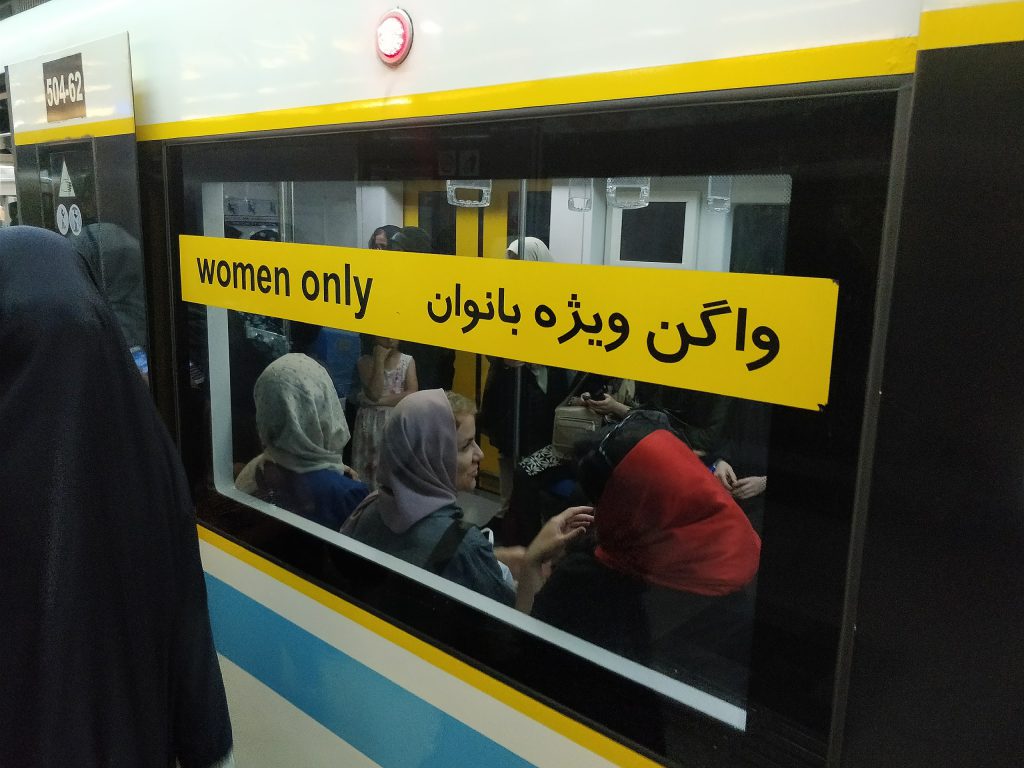
It’s important to note that there are some separate men’s and women’s carriages on public transport in Iran, both on the metro and buses for those women who prefer to use them. While subway cars are generally mixed-gender, women who want more privacy can choose to ride in the first and last wagon on both sides. On buses, there may be designated seating areas for men and women, with women sitting in the back and men in the front, or vice versa. However, couples can sit together in the men’s section but not in the women’s section. Respecting these gender-segregated arrangements while using public transport in Iran is essential.
Pre-register with the Foreign Office of Your Country
Before embarking on your journey to Iran, it’s important to research the specific travel regulations, rules, and warnings for your home country. Each country has its own guidelines, and it’s critical to be aware of them before setting off on your adventure.
To ensure your safety and peace of mind, it’s also a good idea to pre-register or alert your foreign office about your travel plans. This step is particularly important for British citizens , as there is no embassy representation in Iran. By registering with your foreign office, you can stay informed about any updates or changes in travel regulations or warnings.
It is important to note that certain travel insurance providers may ask you to inform the appropriate authorities about your travel plans before you can obtain coverage. To ensure that you are fully protected, it is essential to identify which authorities you need to inform before you leave.
By taking these steps before your trip, you can travel to Iran with confidence, knowing that you have done your due diligence to ensure your safety and security.
Internet Access during Iran Travel
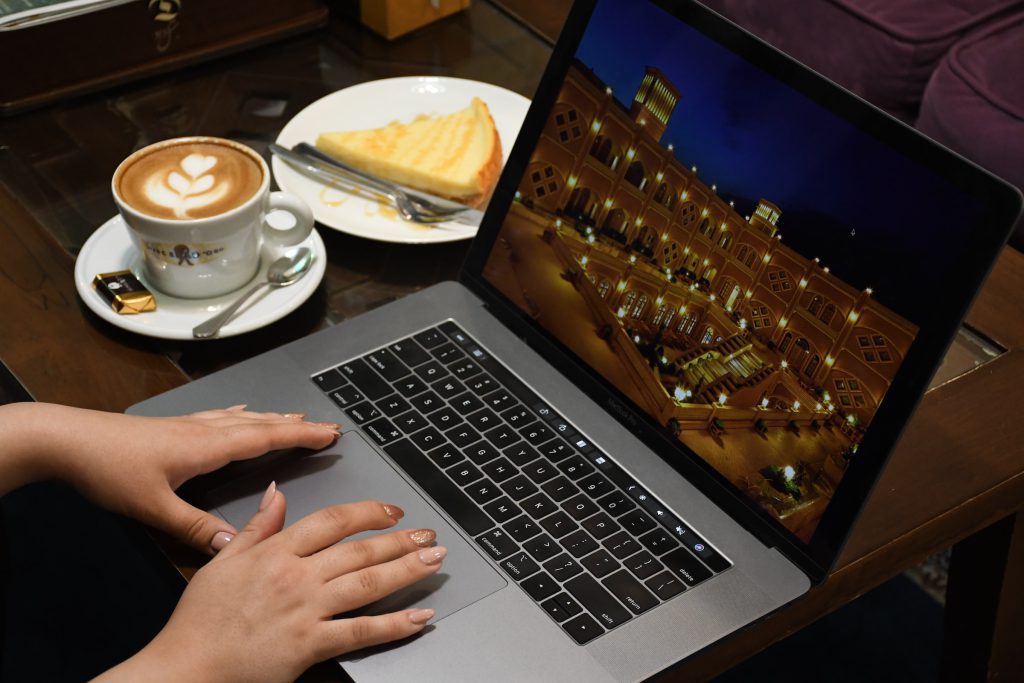
When traveling to Iran, it’s important to anticipate limited internet access and mandatory “digital filtering.” The Internet connection in Iran is known for being frustratingly slow, and many popular social media platforms such as Instagram, YouTube, and WhatsApp are blocked. Additionally, you need to pay fees for a good connection.
Make sure that you inform your family members or friends that you may be out of touch and to prepare for unreliable internet.
Recommended SIM Cards to Use in Iran
When it comes to buying a SIM card in Iran, Irancell is the top phone operator and offers temporary SIM cards specifically designed for tourists. These SIM cards come pre-loaded with a credit balance and 4G internet access, allowing you to stay connected with ease. They are sold at Tehran Imam Khomeini International Airport and are valid for 30 days.
Irancell’s temporary tourist SIM cards provide affordable and convenient connectivity throughout Iran.
You can buy regular Irancell SIM cards from their service centers located in almost every city. However, it’s important to note that you need to purchase charge and internet packages before using them. To do so, you can get assistance from Irancell staff at the centers, use the MTN Irancell application, or dial USSD codes.
Which VPN to use in Iran?
Staying connected while traveling in Iran can present unique challenges, particularly when it comes to accessing the internet and using your preferred VPN. To ensure that you can stay connected and protect your online privacy, it’s essential to find the right VPN for your needs.
There are several VPN options available for both Android and IOS users. For Android users, Hi VPN, Psiphon, v2ray, and Hotspot Shield are recommended, each offering reliable and secure connections. For IOS users, popular VPN options include Psiphon, Free VPN, and VPNProxyMaster, all of which are well-suited to use in Iran.
To have a suitable and safe VPN, you can ask your tour operator or tour guide for help. If you have any questions or help do not hesitate to ask To Iran Tour support team.
Persian Food
Iran is well-known for its varied and flavorful cuisine. If you’re a foodie who loves trying new things, you should definitely give Persian cuisine a try! Some must-try dishes include stews, Dizi (a lamb-based dish with broth and solids separated), Ash, and Haleem. To ensure you have the best experience, it’s important to do some research and find the top restaurants that serve these dishes so you can truly savor the flavors of Iran.
Persian Breakfast Guide: Irresistible Traditions!
Iranian food for vegetarians
In Iranian cuisine, meat is a staple ingredient, but there are also numerous vegetarian dishes that are just as delectable. Mirza-Ghasemi or Kashk-e Badenjan, both made with eggplant, are excellent choices. If you’re on a tight budget, go for Falafel, which is both inexpensive and delicious. However, it’s crucial to convey your dietary requirements to the restaurant staff and be ready to request that meat be omitted from your meal if needed.
By being open to trying new dishes, you can experience the rich and diverse cuisine of Iran with a little extra effort and creativity.
Drinking in Iran
When it comes to drinking in Iran, it’s important to note that alcohol is strictly prohibited, and there are no bars or clubs serving alcoholic beverages. Instead, you’ll find a variety of non-alcoholic beer options available, typically in fruity flavors such as peach, lemon, strawberry, etc.
Alcohol in Iran: A Complete Guide for Tourists
It’s important to understand that there are no exceptions when it comes to alcohol consumption in Iran, whether you’re a local or a traveler. While it’s tempting to take up offers from locals to find the “real deal” at underground gatherings, it’s not worth the risk. The punishment for alcohol possession or consumption can be severe, and there are no allowances made for tourists or visitors.
Did you know that Buttermilk, or “Doogh” as it’s called in Iran, is a delicious fermented dairy drink? It has a slightly sour taste and is often paired with dried herbs like mint for a refreshing flavor. It is very common to enjoy Doogh besides any kind of kebab.
Iranian Etiquette
When visiting Iran, it’s important to be aware of and respectful of the cultural and religious customs that may differ from your own. By following these customs, you can demonstrate your appreciation for Iranian culture and enjoy your trip to the fullest. Here are some etiquette guidelines and fascinating insights into Iranian culture to keep in mind:
- One of the primary forms of social etiquette is “ Taarof” , where Iranians may insist on offering things to people, even if they don’t mean it. As a visitor, it is important to be aware of local customs and not immediately accept an offer.
- During the Muharram month , which is the mourning month of Imam Hossein, to show respect for religious beliefs, it’s best to avoid wearing bright colors, especially red.
- During Ramadan, eating or drinking in public is disrespectful while most people are fasting during the day.
- Shaking hands between men and women can be a delicate matter, and it is generally unacceptable for unrelated men and women to engage in this gesture. As a female tourist, it is advisable to wait and observe if men initiate the handshake first, instead of initiating it yourself.
- The thumbs-up hand signal is OKAY in Iran, but it is better not to use it in the presence of older people. However, younger people understand its meaning.
- In Iran, there are certain limitations when it comes to public displays of affection. While affectionate gestures like touching, kissing and handshakes between family members are acceptable, French kissing is considered inappropriate. Holding hands is generally tolerated, but hugging might be regarded as crossing the line. It’s important to note that inside holy places and religious cities, any public display of affection may not be tolerated at all.
For a truly enriching travel experience, it’s important to embrace and appreciate the customs and culture of Iran. By respecting their traditions, you’ll gain a deeper understanding and connection to the country and its people.
Time in Iran and the Solar Calendar
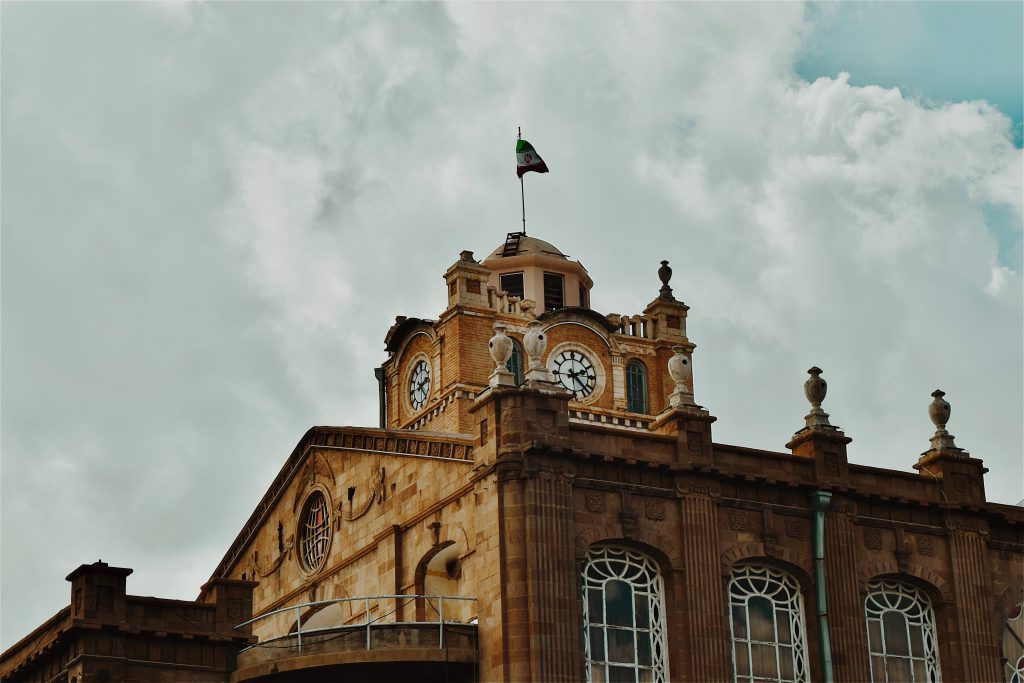
The country operates on Iran Standard Time (IRST), which is UTC+3:30.
The Solar Hijri Calendar
The solar calendar used in Iran is known as the Iranian calendar or the Persian calendar . It is a type of solar calendar that is based on the astronomical observations of the Sun’s movement. The calendar has its roots in ancient Persia and has undergone several modifications throughout history to align it with various astronomical and cultural considerations.
Here are some key differences between the Iranian calendar and the commonly used Gregorian calendar:
- Starting point: The Iranian calendar starts from the year of the Prophet Muhammad’s migration from Mecca to Medina, known as the Hijra. This event occurred in 622 CE in the Gregorian calendar. Therefore, the Iranian year is approximately 621 years behind the Gregorian year.
- Length of the year: The Iranian calendar is a solar calendar that consists of 12 months, each with varying lengths. The total length of a year in the Iranian calendar is approximately 365 or 366 days, depending on whether it is a leap year or not. Leap years occur every four years and consist of an additional day, just like in the Gregorian calendar.
- Naming of the months: The Iranian calendar has its own set of month names, which are deeply rooted in Persian culture and history. The names of the months are as follows: Farvardin, Ordibehesht, Khordad, Tir, Mordad, Shahrivar, Mehr, Aban, Azar, Dey, Bahman, and Esfand.
- Different New Year: The Iranian New Year , known as Nowruz, is celebrated on the vernal equinox, which usually falls on March 20th or 21st in the Gregorian calendar. Nowruz marks the beginning of spring and is one of the most significant holidays in Iran and several other countries in the region.
- Different era: The Iranian calendar uses the Islamic lunar Hijri era, which began with the Hijra mentioned earlier. In contrast, the Gregorian calendar uses the widely accepted Common Era (CE) system.
Time is a curious thing. It flows differently for each culture and place, shaped by history, geography, and tradition.
While visiting Iran, it’s best to keep an open mind when it comes to timeframes. It’s a good idea to bring along some extra patience and be ready to go with the flow. This is especially true when it comes to food, service, and payment. By embracing the relaxed pace of life in Iran, you can fully immerse yourself in the local culture and enjoy a more laid-back travel experience.
Read more on Iran’s History and Iran Travel
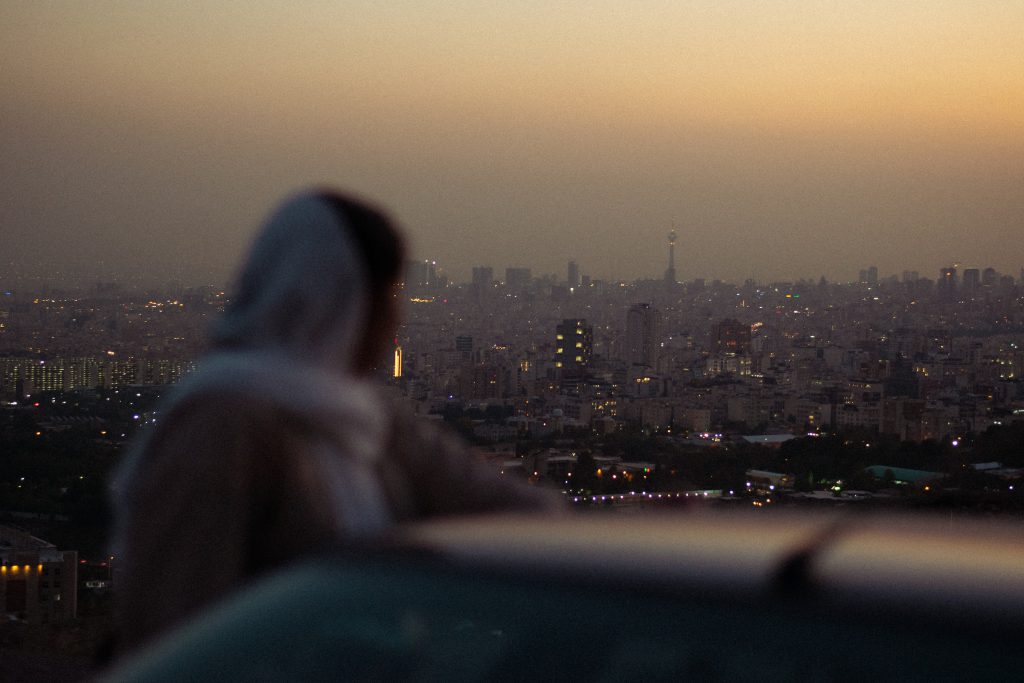
Iran boasts a complex and fascinating history, which can be difficult to comprehend without prior knowledge. Even though tour guides can be informative, it’s recommended to do some research on the history of Persia and the events leading up to the Iranian Revolution in 1979 before embarking on a trip to Iran. This will enable you to gain a better understanding of the country’s composition and value its abundant cultural heritage.
Book Recommendation
Here are some excellent books to read before your trip:
- “Revolutionary Iran: A History of the Islamic Republic” by Michael Axworthy provides a comprehensive overview of recent Iranian history.
- “Iran: What Everyone Needs to Know” is also by Axworthy and delves into Iran’s economy, politics, culture, and people.
- “Daughter of Persia: A Woman’s Journey from Her Father’s Harem Through the Islamic Revolution” is a fascinating book. The story follows a woman born in Iran who went to study in the United States and later returned to the country amidst significant changes.
If you’re traveling in Iran, the Lonely Planet guidebook can be a valuable resource for exploring historical landmarks. While it’s not the only source of information, it’s a helpful tool to have with you since internet access in Iran may be limited.
To make the most of your trip to Iran, it’s a great idea to get to know its history and culture beforehand. Trust me, it will definitely enhance your travel experience!
FAQs about Visiting Iran
Q1: do i need a visa to visit iran.
A1: Yes, most travelers require a visa to enter Iran. You can obtain one through an Iranian embassy or consulate in your home country. There are some countries that can travel to Iran without a visa, and there are also some countries that can get their visa on arrival.
Q2: What is the best time to visit Iran?
A2: Spring (March to May) and autumn (September to November) are ideal times to visit, as the weather is mild, and many attractions are at their best. But Iran has varied weather across different regions. For instance, the ideal season to tour Iranian deserts is winter.
Q3: Is it safe to travel to Iran?
A3: Iran is generally safe for tourists, with low crime rates. However, it’s essential to stay informed about the current political situation and follow local guidelines.
Q4: What is the official currency in Iran?
A4: The official currency is the Iranian Rial (IRR), but you’ll commonly see prices quoted in Toman, which is equivalent to 10 Rials.
Q5: Can I use my credit card in Iran?
A5: No, international credit and debit cards are not widely accepted in Iran. Bring cash in US dollars or Euros and exchange it locally.
Q6: Is it safe for solo female travelers in Iran?
A6: Yes, Iran is considered safe for solo female travelers, but it’s important to dress modestly and be aware of local customs and norms.
Q7: Can I drink alcohol in Iran?
No, alcohol is strictly prohibited in Iran due to Islamic law. You won’t find it in public places.
Q8: What languages are spoken in Iran?
Persian (Farsi) is the official language, but many Iranians also speak English, especially in tourist areas.
Q9: Can I use social media in Iran?
Most social media platforms like Facebook and Twitter are blocked in Iran. However, you can access them using a VPN.
Q10: What is Iran famous for?
Iran is famous for its rich cultural heritage, historical sites, and stunning architecture. It’s renowned for attractions like the ancient city of Persepolis, the vibrant bazaars of Isfahan and Tabriz, and the beautiful mosques, such as the Pink Mosque in Shiraz. Iran is also known for its contributions to literature, poetry, and art, with famous poets like Rumi and Hafez hailing from this region. Additionally, Iran is celebrated for its world-class Persian rugs, saffron production, and traditional handicrafts.
Discover the Beauty of Iran with ToIranTour Services
Leave a reply cancel reply.
Your email address will not be published. Required fields are marked *
Save my name, email, and website in this browser for the next time I comment.
Free Iran Travel Consultation
Let us know whatever you need for your trip, and we assist in arranging everything needed
Recent Posts
- Greek Ship: Lasting Impression on Kish Island
- Amir Nezam House: Exploring the Qajar Dynasty in Tabriz
- Kariz Underground City: From Water System to Tourist Attraction
- Kashan Rose Water Festival: Experiencing the Flora Splendor
- Municipality Palace of Tabriz: The City Timekeeper
Discover the most outstanding articles on all topics of life. Write your stories and share them
- Iran Visa Policy
- Apply for Iran visa
- Active Style
- Inside Style
- Discovery Style
- In-Depth Style
- Knowledge Based Style
- Daily Tours
- Why “To Iran Tour”?
- Partnership with To Iran Tour
Find Your Account

1 7 E s s e n t i a l I r a n T r a v e l T i p s : E v e r y t h i n g Y o u N e e d t o K n o w B e f o r e Y o u r T r i p
Table of content.
Traveling to Iran can be an enriching and captivating experience, offering an opportunity to explore its rich history, stunning landscapes, and vibrant culture. However, as with any international travel, it is important to be well-informed and prepared before embarking on your journey. This article aims to provide essential Iran travel tips and information to help make your trip to Iran a safe, enjoyable, and culturally sensitive experience.
1. A Safe and Welcoming Destination
One of the most common concerns among travelers is the safety of visiting Iran. Fortunately, the answer is a resounding yes—Iran is a safe country to explore and enjoy. While Iran may face external challenges and political dynamics beyond its borders, within the country’s boundaries, it stands as one of the safest destinations worldwide.
Despite any potential misconceptions or propaganda, Iran prioritizes the well-being of its visitors. Locals genuinely care about tourists and strive to ensure that they have everything they need to feel comfortable and enjoy their time in Iran.
The warm hospitality and welcoming nature of the Iranian people contribute to the overall sense of safety. Travelers are often pleasantly surprised by the kindness and helpfulness they encounter throughout their journey.
As a travel tip, It is important to remember that every destination has its own set of precautions, and it is advisable to exercise general safety practices while traveling. These include being mindful of your belongings, using reputable transportation options, and being aware of your surroundings.
By embracing Iran as a safe and inviting destination, you can open yourself up to the incredible experiences and cultural richness that this remarkable country has to offer.
2. Visa Requirements for Traveling to Iran
Before embarking on your journey to Iran, it is crucial to be aware of the visa requirements. In most cases, travelers need to obtain a visa to enter the country. The common option is applying through a local travel agency and once your visa is approved, you can pick it up from an Iranian embassy or consulate depending on your nationality. Iran’s Travel can get your Iran visa in less than one week.
When applying for a visa, it is important to ensure that your passport is valid for at least six months beyond your planned departure date.
It is important to note that travelers holding passports from the United States, United Kingdom, or Canada require the assistance of a local travel agency to arrange a guided tour and apply for their visas.
If you have a stamp indicating a previous visit to Israel in your passport, it is necessary to wait for a period of six months before applying for an Iranian visa.
3. Be aware of the dress code
Iran has a conservative dress code, particularly for women. It is mandatory for women to wear loose-fitting clothing that covers their hair, arms, and legs in public places. Men should also dress modestly.
- For Female Travelers:
Women are required to cover their hair and body in Iran. The headscarf, known as a hijab, can take various styles. You can choose the type of hijab that suits you best, whether it’s a shawl or a scarf. Some women opt to fully conceal their hair, while others allow some hair to show from the front or back. Different styles of tying the scarf are also common, such as a small scarf knotted under the chin or a long shawl wrapped around the hair.
Additionally, women are expected to wear a longer shirt that covers the shoulders to the hips. A trousers or skirt underneath should cover from the waist to the ankles. The choice of fabric and color is flexible, as long as the clothing is not too revealing. On certain occasions like Muharram, it is respectful to wear darker-colored clothing.
During winter or summer, very short-sleeved or sleeveless T-shirts are not permitted for women. Sleeves should be long or 3/4 in length. There are no specific restrictions on shoes, and you will often see Iranian women wearing sandals during the summer months.
- For Male Travelers:
Unlike women, men are not required to cover their hair in Iran. Male foreign tourists can wear short-sleeved t-shirts or shirts without any issues. However, it is important for men to wear long trousers instead of shorts as a sign of respect.
- For children:
Children and young kids have more flexibility when it comes to the dress code. They are not obligated to wear a scarf, and they are free to wear short-sleeved t-shirts, as well as short skirts or shorts.
4. Navigating Iran’s Dual Currency System: Rial and Toman
In Iran, the official currency is the Iranian Rial (IRR). However, it’s important to be aware of the common usage of Toman, which is often used in daily transactions and price quotations. Understanding this dual currency system will help you avoid confusion when making purchases and ensure that you have a clear understanding of the prices.
To clarify, one Toman is equivalent to 10 Rials. So, when a seller quotes a price of 20,000 Rials, they mean 2,000 Tomans. It’s essential to keep this conversion in mind during your transactions to accurately comprehend the value.
Another aspect that can add to the complexity is that Iranians often simplify their conversations by omitting three zeros. For example, if a seller asks for 50 Toman, they actually mean 50,000 Tomans, which is equivalent to 500,000 Rials. Therefore, it’s beneficial to familiarize yourself with the Farsi numbers, allowing you to cross-reference price labels and avoid any misunderstandings.
5. Exploring Iran’s Culinary Delights: Beyond Kebabs
Iranian cuisine offers a rich tapestry of flavors and culinary traditions that extend far beyond the renowned kebabs. To fully appreciate the diverse and delicious food scene, it is worth investing time in researching and sampling a wide range of dishes during your visit.
From aromatic stews bursting with fragrant spices to delicately prepared rice creations, Iranian cuisine is a treasure trove of culinary delights. Expand your palate by indulging in dishes like Ghormeh Sabzi (herb stew), Fesenjan (pomegranate and walnut stew), and Zereshk Polo (barberry rice). These exquisite flavors showcase the country’s culinary prowess and cultural heritage.
Even for vegetarians, Iran offers a variety of mouthwatering options. Throughout the country, you will find an array of delectable vegetable-based dishes that showcase the freshness and diversity of local produce. From hearty soups and salads to flavorful rice dishes and herb-infused appetizers, there are plenty of vegetarian-friendly choices to satisfy your taste buds.
To make the most of your culinary adventure, consider exploring local food markets, visiting traditional eateries, and engaging with locals to discover hidden gems and authentic dining experiences. Embrace the opportunity to try new flavors, and don’t hesitate to ask for recommendations from locals who are passionate about their cuisine.
By venturing beyond kebabs and embracing the vast array of dishes that Iran has to offer, you will embark on a gastronomic journey that will tantalize your taste buds and provide a deeper understanding of the country’s rich culinary heritage.
6. Check Iran’s Public Holidays for a Smooth Trip
When planning your trip to Iran, it is important to be aware of the country’s public holidays, as they can impact your travel plans. Iran follows three calendars: the Persian (Hijri), Islamic (Lunar), and Georgian calendars. Public holidays in Iran are based on these calendars, so it is crucial to check the holiday schedule beforehand.
With approximately 25 holidays throughout the year, there are six specific occasions when attractions and sites are closed, limiting your ability to visit them:
- Martyrdom of Imam Ali
- Martyrdom of Imam Sadeq
- The demise of Imam Khomeini
- The Demise of Prophet Muhammad and the Martyrdom of Imam Hassan
During these holidays, it is advisable to plan alternative activities or explore cultural events that may be available. On other holidays, such as the Iranian New Year, Nowruz (March 20th to April 3rd), it is recommended to book transportation tickets and accommodations well in advance due to increased demand.
If you have any concerns or need assistance regarding the holidays during your trip to Iran and potential limitations you may encounter, feel free to contact us for guidance and support. We are here to ensure your journey is as smooth and enjoyable as possible.
When visiting Iran, it’s important to note that the weekend falls on Friday, as it holds religious significance. This means that Friday is considered a holy day and serves as the official day off for most Iranians. As a traveler, it’s essential to plan your activities and visits accordingly, taking into account that some establishments may have altered hours or be closed on Fridays.
7. Crafting Your Iran Itinerary: Embrace Flexibility and Serendipity
When planning your trip to Iran, the country’s abundant historical sites, breathtaking landscapes, and vibrant cultural experiences may entice you to create a detailed itinerary. However, it is equally important to leave room for flexibility, allowing for unexpected discoveries and serendipitous encounters to enrich your journey.
While having a rough itinerary in mind is helpful for logistics and ensuring you cover the highlights, it’s essential to remain open to the possibility of spontaneous adventures. Iran is a country filled with hidden gems and surprises waiting to be unearthed. By embracing flexibility, you open yourself up to unexpected encounters and unique experiences that may not be found in guidebooks or travel itineraries.
When planning your Iran itinerary, if you find yourself in need of assistance or desire a tailor-made plan to suit your preferences, we are here to help. Our team is dedicated to providing personalized guidance and creating an itinerary that aligns with your specific interests and travel goals. Whether you are seeking cultural immersion, outdoor adventures, or a combination of experiences, we can curate a memorable journey for you.
Additionally, if you are interested in joining one of our available tours , we have a range of carefully crafted itineraries that showcase the best of Iran’s attractions and cultural treasures. Our knowledgeable guides will accompany you on these tours, providing valuable insights and ensuring a seamless travel experience.
Looking to design a customized tour that perfectly aligns with your interests, Our team is ready to assist you once again in crafting a tailor-made experience based on your unique preferences.
8. Embrace Local Interactions for Unforgettable Travel Experiences
When exploring Iran, don’t miss out on one of its most treasured gems: its people. Engaging with locals is a surefire way to enrich your journey and discover hidden treasures beyond the guidebooks. Iranians are renowned for their warm hospitality and genuine friendliness, making interactions with them a highlight of any trip.
Take the opportunity to strike up conversations, seek recommendations, and let the locals be your guide. Embrace the genuine warmth and open-heartedness of the Iranian people, and you’ll be rewarded with unforgettable travel memories. These interactions will not only enhance your journey but also create lasting connections that bridge cultural boundaries.
9. Don’t Assume, Just Ask: Inquire About Prices
When traveling in Iran, it’s essential to adopt the practice of asking about prices rather than assuming something is too expensive. You’ll often be pleasantly surprised by how affordable things can be. Before making any purchase or utilizing services, it’s wise to inquire about the price to avoid any misunderstandings or unwelcome surprises. When shopping for souvenirs, don’t hesitate to compare prices at different locations. By venturing beyond tourist areas, you’ll likely find better deals and more favorable prices. So remember, just ask and discover the affordability that awaits you in Iran.
10. Stay Connected in Iran: Internet, Communication, and Social Media Access
When traveling to Iran, staying connected to the online world and accessing social media platforms may require some additional steps. While internet access is generally available, certain websites and social media platforms might be restricted. To overcome these limitations and ensure secure internet connectivity, using a virtual private network (VPN) is highly recommended. A VPN allows you to bypass online restrictions, maintain privacy, and access your favorite websites and social media platforms.
Furthermore, upon your arrival in Iran, consider obtaining a local SIM card to ensure affordable and convenient communication throughout your stay. Local SIM cards provide you with access to mobile data, enabling you to stay connected on the go. You can easily find SIM cards at various locations, including airports and local shops.
While wifi is available in many hotels, restaurants, and cafes in Iran, it’s important to note that the speed and reliability of the connection can vary. To ensure a smooth online experience, it’s advisable to have alternative methods of connectivity in place, such as using the local SIM card for mobile data when needed.
11. Tap Water and Hygiene Tips in Iran
When it comes to staying hydrated in Iran, you’ll be pleased to know that tap water in major cities is generally safe to drink. However, to ensure peace of mind, it’s a good idea to carry a reusable water bottle and refill it from trusted sources such as filtered water dispensers or bottled water.
In addition to staying hydrated, practicing good hygiene is essential during your travels. While most places provide access to soap and water for handwashing, there may be situations where these amenities are not readily available. To stay prepared, carry a small bottle of hand sanitizer or wet wipes and also toilet paper in your bag. These convenient tools will come in handy when you’re on the go and need to freshen up.
12. Iran Travel tips: Alcohol is prohibited in Iran
During your visit to Iran, it’s important to familiarize yourself with the alcohol regulations in the country. Please be aware that the consumption and sale of alcohol are strictly prohibited due to religious reasons.
In Iran, you will not find alcohol available for purchase in restaurants, bars, or stores. It is essential to honor and comply with these regulations, demonstrating respect for the local customs and traditions.
13. Secure Your Journey with Travel Insurance for Iran
When planning your trip to Iran, it is crucial to prioritize obtaining comprehensive travel insurance. This ensures that you are adequately protected against any unforeseen circumstances and allows you to explore the country with peace of mind. While it is technically possible to purchase travel insurance at the airport, it is recommended to obtain it beforehand. This way, you avoid the hassle of having to stand in another line at the airport and can proceed with your journey smoothly.
For your convenience, Iran’s Travel can assist you in obtaining suitable Iran travel insurance . We can guide you through the process and ensure that your policy is valid and in compliance with the necessary regulations.
14. Squat Toilets in Iran
While many hotels, guesthouses, cafes, and modern houses are equipped with flush toilets, public toilets in Iran commonly feature squat toilets.
Check with Your Accommodation: If you have a preference for flush toilets or are concerned about using squat toilets, it’s advisable to inquire with your chosen hotel or accommodation in advance. They can provide information about the toilet facilities available to ensure a comfortable stay.
While toilet paper is commonly found in mini-markets and stores in cities, it may not always be readily available in public restrooms. To be prepared, carry a small supply of toilet paper or wet wipes with you during your travels.
15. Being Mindful of Security Warnings in Iran
When traveling to Iran, it’s important to stay informed about security warnings to ensure a stress-free trip. Here are a few key points to consider:
Drone Restrictions: It’s crucial to note that bringing a drone to Iran is not permitted in most cases. Under specific circumstances, you may need a permit to fly a drone. To avoid any legal issues or complications, it’s best to refrain from bringing a drone with you during your visit.
Photography Restrictions: Exercise caution when taking photos in Iran. It is strictly prohibited to photograph military establishments or personnel. To respect local regulations and ensure a smooth experience, refrain from capturing images in these restricted areas.
16. Understanding Târof: Cultural Etiquette in Iran
Before visiting Iran, it’s important to familiarize yourself with a unique aspect of Iranian culture called Târof. This customary practice often surprises travelers when taxi drivers, cashiers, or shopkeepers refuse payment and say, “ghâbel nadâre” (meaning it’s my treat or it’s on me). However, it’s essential to know that this doesn’t mean you can simply leave without paying.
Târof is a polite gesture deeply rooted in Persian culture, reflecting hospitality and generosity. It’s a form of social etiquette where individuals offer something out of politeness, even if they expect the other person to decline and insist on paying. The polite back-and-forth continues until an agreement is reached.
If you encounter Târof during your interactions in Iran, it’s customary to engage in a gracious exchange. Politely insist on paying, but if the person continues to insist that it’s their treat, accept the gesture with gratitude. This cultural practice is also common among Iranian friends, where treating each other becomes a delightful part of building relationships.
17. Traveling as a Couple in Iran: Cultural Considerations
When traveling as an unmarried couple in Iran, it’s important to be aware of certain cultural norms and practices. While rules regarding public displays of affection are more relaxed for tourists, there are still some considerations to keep in mind.
As an unmarried couple, you are generally allowed to stay in the same room at hotels and engage in activities such as walking together and holding hands. However, it’s important to note that public displays of affection such as kissing, hugging, and dancing are not widely accepted by couples, whether married or unmarried.
Related articles

Is It Safe to Travel to Iran Now (2024)?
“Is It Safe to Travel to Iran Now?”, If you’re considering a trip to this culturally rich and historically significant country, you...

Qeshm Island Travel Tip and Itinerary on Elspeth’s Diary
This Qeshm Island Travel Tip and Itinerary is based on Elspeth’s Diary on her second trip to Iran with our Iran Travel...

A Trip to Chaharmahal Bakhtiari Province: The Land of Springs and Waterfalls
A trip to Chaharmahal Bakhtiari can be unforgettable for visitors who appreciate the beauty of rivers, forests, waterfalls, and springs. Situated in...
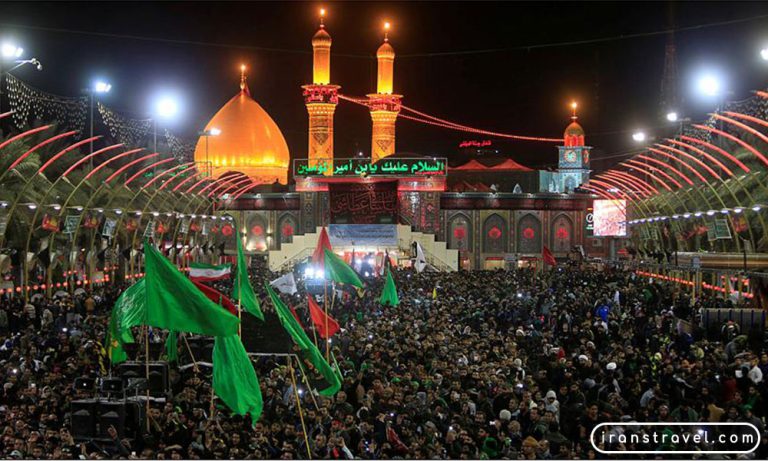
Muharram in Iran: A Journey into the Soul of a Sacred Ceremony
Muharram in Iran and discovering the Soulful Melodies of it is a Journey of Commemoration and Reflection. Immerse yourself in the somber...
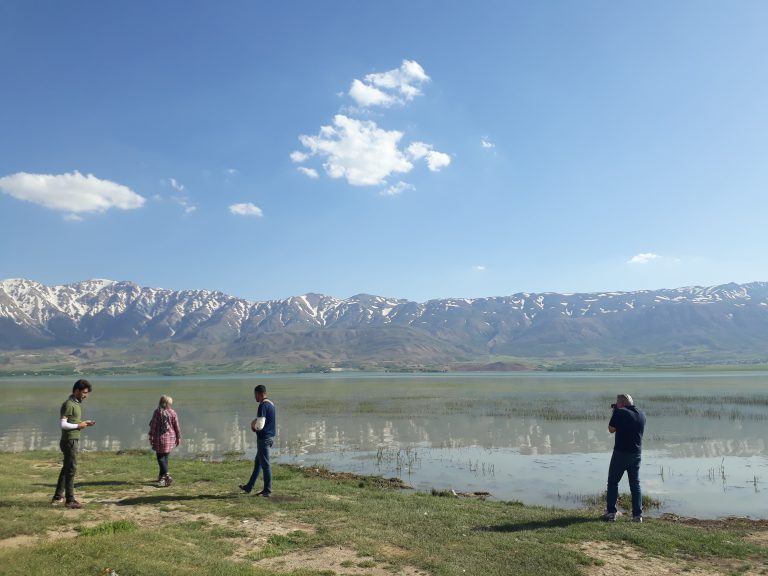
Summer Travel in Iran: When Nature Calls You
Summer Travel in Iran: When Nature Calls You Iran, a treasure trove of ancient civilizations, UNESCO World Heritage sites, picturesque villages, diverse...
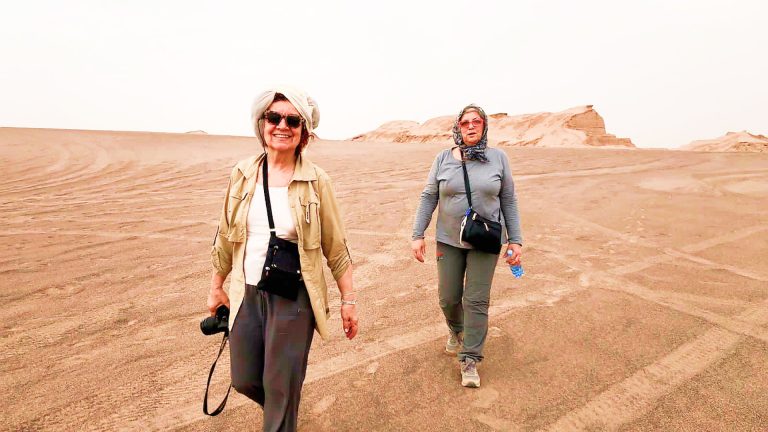
Exploring Iran Deserts Wonders: A Journey through Sun, Sand, and Serenity
Exploring Iran Deserts Wonders: A Journey through Sun, Sand, and Serenity Iran, a land of mesmerizing beauty, proudly hosts some of the...
surfing of c a t e g o r y
Subscribe to our n e w s l e t t e r.
You can enter your email address and subscribe to our newsletter and get the latest practical content.
- +98 912 494 6018
© 2022 Iran's Travel All Rights Reserved.
- Destinations
- Responsible Travel
- Budget Travel
- Travel Planning
- Packing Lists & Tips
- Work With Me
1 – 3 Weeks in Iran: The Ultimate Iran Itinerary
Iran, a country that is a dream to many travelers. Filled with delicious cuisine, beautiful architecture, and out of this world like landscapes, there is something in Iran for everyone. However, knowing where to go in a country as large as Iran can be difficult so to help you out we have created the ultimate Iran itineraries for you below. No matter if you have one week, two weeks or three weeks to spent in Iran, the destinations below are the ones you will want to add to your Iran bucket list . Explore the bustling cities of Tehran, Shiraz and Isfahan or go off the beaten path in the East and South of Iran; there are simply so many things to do and see, and you don’t want to miss out, because you never know when you’ll be back. Keep on reading to find out which destinations in Iran you should add to your itinerary…

Please note: This post contains affiliate links. This means that purchasing a product or service via these links may earn us a small commission (at no extra cost to you of course).
1 Week in Iran: Iran’s Most Beautiful Cities
Only have a short amount of time available? Don’t worry, there is a lot to see in a week, and even a week in Iran is worthwhile your time. 1 Week in Iran is just enough time to see Iran’s most famous and most beautiful cities: Tehran, Isfahan and Shiraz. Travel from North to South and stop in Isfahan, a city that is said to be half the world, and see some of the most beautiful mosques, landscapes and eat some of the most delicious Persian cuisine. Have a taste of some of the best Iran has to offer, and leave the smaller cities and off the beaten path destinations for your next visit to Iran. If you only have limited time, and budget is not something you take into account, you might want to fly to save some time and spent all your time in the cities. To give you a better idea of where the cities are located, check out the blue markers on the map below. Keep on reading to see why Tehran, Isfahan and Shiraz should be on your itinerary!
2 – 3 Days: Explore Tehran
Tehran, Iran’s capital and largest city, is a place you cannot leave of your Iran itinerary. Explore the vibrant hustle and bustle of this concrete jungle, a place that many people tend to leave of their itinerary, which is a shame as it has so much to offer. Wander around the Tehran’s bazaar, visit the former US embassy (now named the Den of Espionage) or admire the beautiful architecture of Golestan palace. These are just a couple of the many things to do in Tehran . As Tehran is home to Iran’s largest international airport, this will be most likely your start and ending point of your trip to Iran, and as such the perfect place to meet other travelers. We recommend to spend at least 2 days in the city, and if you have another day left, use it for a day trip to the mountains surrounding Tehran. From Tehran you can make your way North, should you have a lot of time, or if you are on a strict timeframe, head down South to the beautiful city of Isfahan!
Where to stay in Tehran
There is no shortage of hostels in Tehran, making it easy for the budget backpacker to find a place to stay. From private rooms to dorms, there is something for everyone’s liking in Tehran! Some of Tehran’s most popular places to stay, as of early 2019, are Hi Tehran Hostel , See You in Iran Hostel and Tehran Heritage hostel . And the best thing is, you can now easily book these all on Hostelworld, to see all hostels in Tehran available just click here ! Looking for more info, check out our complete blogposts on the best hostels for budget backpackers in Iran here .

The Azadi Tower in Tehran
3 Days: Visit Isfahan
“Isfahan is Half the World” as the saying goes. In the 16th century the reigning Shah Abbas chose Isfahan as its capital, filling it with bridges, mosques, gardens and many more wonderful architecture that can still be admired today. Many successors kept on adding beautiful architectural pieces, and as such Isfahan is still one of the most beautiful cities for architecture lovers, and photographers, visiting Iran. Admire some of Iran’s most beautiful mosques, such as the Shah Mosque , explore Isfahan’s bazaar or simply watch daily life go by at the Naqsh-e Jahan square. These are just some examples of the many unforgettable things to do in Isfahan . 3 Days should give you enough time to see some of Isfahan’s most beautiful highlights and experience some of Iran’s culture. For many travelers Isfahan is the highlight of their trip, especially those who are only visiting Iran’s cities, it is simply a place you cannot leave out of your Iran itinerary!
Where to stay in Isfahan
With the rising popularity of tourism in Tehran it isn’t hard to find budget and non budget accommodation in Isfahan. For budget accommodation, check out Hostelworld , as this is currently one of the few booking websites that allows you to book accommodation in Iran. Some of the most popular hostels in Isfahan are currently RagRug Hostel , a modern hostel located slightly out of the center of Isfahan, and Mahbibi Hostel , a more traditional hostel in a central location. These hostels both offer a selection of dorm rooms and private rooms, perfect for travelers visiting Iran on a budget .

The Jameh Mosque in Isfahan
2 -3 Days: Explore beautiful Shiraz & Persepolis
Shiraz, Iran’s 5th largest city, is located in the South of Iran and is one of Iran’s most popular tourist destination. The reason, its close proximity to the remains of Persepolis. And while Persepolis is a beautiful place, a place that draws tourists from all over the world, it isn’t the only reason you should visit Shiraz. Shiraz is also home to the tomb of Iran’s most famous poet, and to one of the most colorful and unique mosques in Iran: the Nasir al Mulk Mosque . Take a walk through Shiraz’s bazaar, explore Shiraz’s most beautiful mosques or simply indulge in the delicious Persian cuisine, these are just some of the many amazing things to do in Shiraz . You will need a full two days to admire the highlights of Shiraz, and if you are a history lover and came to Iran to see the ruins of Persepolis, you will need at least another half a day, as Persepolis is located 60km out of Shiraz. From Shiraz you can either decide to fly back to Tehran, if you are on a time crunch, or to enjoy the beautiful train ride through the desert and mountain landscapes of Iran.
Where to stay in Shiraz
With most of Shiraz’s attractions being centrally located it is easiest to find a centrally located hostel, especially for those traveling Iran on a budget , so you can explore the city by foot. The easiest way to book accommodation in Shiraz is by using Hostelworld , as this is currently one of the few booking sites available that allows you to book a hostel in Iran. Currently, one of the most popular hostels in Shiraz is Taha Hostel but there are plenty of other options out there which you can find here !

2 Weeks in Iran: Highlights of Iran
If you have a little bit more time to spend extend your trip to a two week trip in Iran. While a week will give you just enough to scratch the surface of Iran’s beauty, two weeks will allow you to not only see the big cities, but also to see some smaller desert cities, which will guaranteed add value to your trip to Iran. From these desert cities it is easy to explore nearby deserts, mountains and see some of Iran’s most beautiful landscapes. Most people traveling to Iran will follow the itinerary below, as this covers the highlights of Iran. It will offer the best of both worlds: nature and architecture, and will allow you as a traveler to see what Iran is like! Curious to see what you should add to your Iran itinerary, check out the map below. Instead of just seeing Tehran, Isfahan and Shiraz, consider adding the two desert cities, Kashan and Yazd to your trip, read on below why these should be on your itinerary.
2 – 3 Days: Explore Kashan
Kashan, located conveniently between Tehran and Isfahan, is a town that is famous for its traditional houses, and impeccable views. Wander through the small alleys of the old town, visit the bazar, awe at the architecture of the traditional buildings or simply enjoy the view. From Kashan many travelers opt to either spent a day, or even a night in the desert, one of the most famous things to do in Kashan. A day could be all you need to explore this cozy city, but we recommend to spent at leas two days here to fully take it in, and not only explore Kashan, but also its surroundings. To find out exactly what there is to do in Kashan check out our complete guide to Kashan here . From Kashan, instead of taking the bus to Isfahan, opt to book a private tour, easily to be shared with other travelers, to see some of the beautiful stops between Kashan and Isfahan such as Abyaneh and the mosque in Aran va Bidgol.
Where to stay in Kashan
Accommodation in Kashan isn’t hard to find as it has is becoming more and more popular with tourist to visit this beautiful city. The best thing is to find accommodation that is located in the older part of town, as this will easily allow you to walk to the major sights and save some money on transport. Currently, the easiest way to book a hostel is by using Hostelworld , as this is one of the few booking sites out there that allows you to book hostels in Iran. Currently, one of the most popular places to stay for backpackers is Sana Historical Hostel , but you can find all available hostels in Kashan here .

The Agha Bozorg Mosque in Kashan
2 – 3 Days: Visit Yazd
Yazd, another desert city, located East of Isfahan. Yazd is the perfect stop between Isfahan and Shiraz, and can easily be added if you have more then a week to spend in Iran. There are many reasons to visit Yazd: to see the traditional wind towers of Yazd, created to keep the houses cool during hot summer days, to learn more about Zoroastrianism, or again, to explore the beautiful deserts of Iran. It doesn’t matter if you are an architecture lover or a nature lover, there is something for everyone in Yazd. Two days will be enough to see the city itself, if you have an extra day left in your Iran itinerary consider spending a day in the desert by booking a tour, available at one of the many tour offices in the heart of Yazd.
If you are looking to see a bit more off the beaten path of Iran, consider spending a night/day in the nearby town of Taft, at the lovely Nartitee Ecolodge. You will be warmly welcomed by a friendly family who cooks the most delicious food, will be able to tell you more about Zoroastrianism and has bikes available to cycle through the beautiful surroundings. The accommodation is simple, but so peaceful and surrounded by beautiful surroundings. Visiting Taft for a day was one of the highlights of our four week trip to Iran. Find out more info on Nartitee here .
Where to stay in Yazd
Besides deciding to perhaps stay in Taft for a night, it is easiest to book a local hostel with a central location for Yazd. From here it will be easy to find restaurants and many of Yazd’s most beautiful sights. One of the most popular hostels currently available on Hostelworld is Badgir Hoste l. To see all hostels available in Yazd here , to find the best fit for you. Looking for an overview of the best hostels in Iran, be sure to check out our complete guide to budget accommodation in Iran here.

The Jameh Mosque in Yazd.
3 Weeks in Iran: off the beaten path Iran
Want to turn two weeks to three weeks in Iran? Don’t worry, there is enough to see and to do in Iran to keep you busy for weeks. If you have more then two weeks to spend in Iran, consider going off the beaten path in Iran. Instead of making your way from Yazd to Shiraz, opt to go more East, and more South in Iran, this is the itinerary we followed below ourselves for 3,5 weeks in 2017. Visit one of the most unique and beautiful deserts of Iran: the Lut desert and make your way South to explore the beautiful Persian gulf area. This is the ultimate itinerary for adventure travelers, who love to see a bit more then the touristic sights in Iran. While you might run into a few other tourists in these areas, you can easily also go without seeing any for days. Visit the Lut desert and visiting the Persian Gulf is a unique experience, and perfect if you are looking to see a bit more of Iran’s unique and beautiful landscapes. Keep on reading to find out a bit more on these unique destinations!
2 Days: Desert Tour of the Kaluts
If you have been in the Middle East or Africa before then the sand dune deserts of Yazd and Kashan might not be that spectacular to you. If that is the case you might want to skip on the more touristy desert tours, and opt for a more off the beaten path desert instead: the Dasht-e Lut desert, also named the Lut desert. The Lut desert is located East of the city of Kerman and is home to Kaluts, unique sand formations like no where else in the world. It is the Kaluts that earned this desert a spot on the UNESCO World Heritage Site list. The easiest way to visit the Lut desert is by setting up a tour from Kerman, this is also the most advisable way to visit the Lut desert as visiting the Kaluts without a guide is illegal, the reason being their concern for your safety. The Lut desert is partially located in the Sistan and Baluchestan region, for which many countries give a strong negative travel advice due to the drug smuggling that happens in these regions. We experienced none of these dangers when visiting the Lut desert and considered it one of the most unique experiences of our trips. Read more about safety in Iran and other tips in our article on 86 things you must know before traveling to Iran .

Lut Desert in Iran.
2 – 3 Days: Qeshm Island
Qeshm Island is located in the Persian Gulf and has slowly been gaining popularity with foreign tourists visiting Iran, and we cannot blame them, as it is one of the most stunning and unique locations of Iran. Not only many off the beaten path travel bloggers, but also vloggers, are now visiting this stunning part of Iran known for its rugged landscapes and delicious Persian sea food cuisine. Explore the wildlife of Qeshm, tour the island for some of the unique landscapes such as Chahkooh Valley or perhaps explore the world’s longest salt cave, you can do it all on Qeshm Island. If you are planning on visiting Qeshm Island be sure to check out our complete Qeshm island travel guide , containing all info on how to get there, things to do and many more tips!

Valley in Qeshm Island.
1 -2 Days: Hormuz Island
East of Qeshm Island you can find the small island of Hormuz, known for its red color earth that makes the whole island look like it located on another planet. While small, this island is simply like no other, offering stunning landscape views a rainbow valley and some beautiful unique red sand beaches. As Hormuz island is small you can easily combine visiting the island with a visit to Qeshm and simply scooter or take a tuktuk around the island for a day. But it might be worthwhile your time to stay the night and see the sunset, and the sunrise over the beautiful Persian Gulf before making your way back to the main land. There are ferries going daily to the mainland coastal city of Bandar Abbas (from where the ferries to Qeshm also leave). From Bandar Abbas make your way up North to the beautiful city of Shiraz to end your trip.

Red Landscapes of Hormuz.
Make it 4 Weeks in Iran
And there you have it, a one to three week itinerary for Iran, each depending on personal preferences and amount of time available. However, the adventure doesn’t have to end there, as there are many more beautiful places to visit, enough to keep you busy for weeks. If you are looking to add some more off the beaten path destinations to your itinerary you might want to check out these places:
- Mashhad – Mashhad is located in Northeast Iran and is mainly known for religious pilgrimage reasons, and while fairly unexplored, it is actually the second largest city of Iran.
- Tabriz – Tabriz is located North of Tehran, and for most people is considered a bit too far out of their itinerary for Iran. However if you have the time it might be worth exploring as it is home to one of the oldest bazaars in the Middle East.
- Kermanshah – Kermanshah is located in the Kurdish region of Iran (West Iran). Due to its location it is often skipped by travelers, meaning only the most off the beaten path travelers head this way.
And there you have it, everything you need to know to create your ultimate Iran itinerary. Looking for more inspiration on Iran? Find all our blogposts on Iran here or check out our complete Iran travel guide … and oh, don’t forget to pin it!

You might also like

Great work. Nicely Illustrated.
Thank you so much!
Leave a Reply Cancel reply
Your email address will not be published. Required fields are marked *

Follow Me On
Like us on facebook.
- As an Amazon Associate we earn from qualifying purchases. Learn more .
Privacy Overview
Solo female travel anywhere and everywhere.
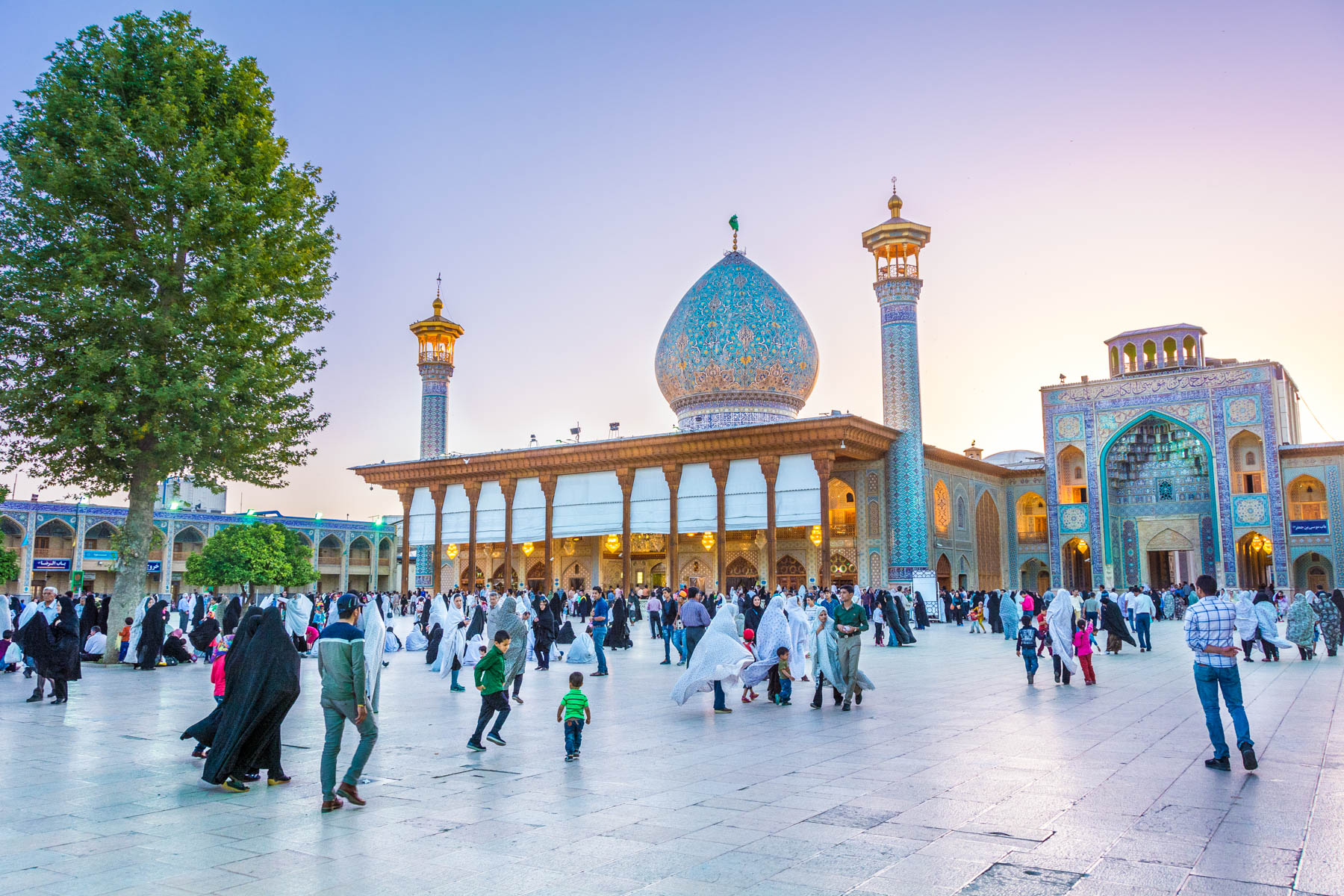
Everything you need to know before traveling to Iran
This guide to things to know before traveling in Iran was updated in 2019. We have spent a total of 3 months in Iran to compile this guide. Iran is by no means a difficult country to travel to. However, there are some things you should know before you travel to Iran. This list will help you prepare the perfect trip to Iran.
Lost with Purpose is blocked in Iran. To access Lost with Purpose in Iran, use a VPN. We recommend ExpressVPN . Read more about VPNs in Iran here.
Iran, officially the Islamic Republic of Iran, has long been closed-off from the rest of the world, but times, they are a-changin’. Visa policies are relaxing and Iran is gaining a reputation as the next hot destination.
To make your trip to Iran a bit easier, here’s a master list of everything you need to know if you want to travel to Iran, including great Iran travel tips.
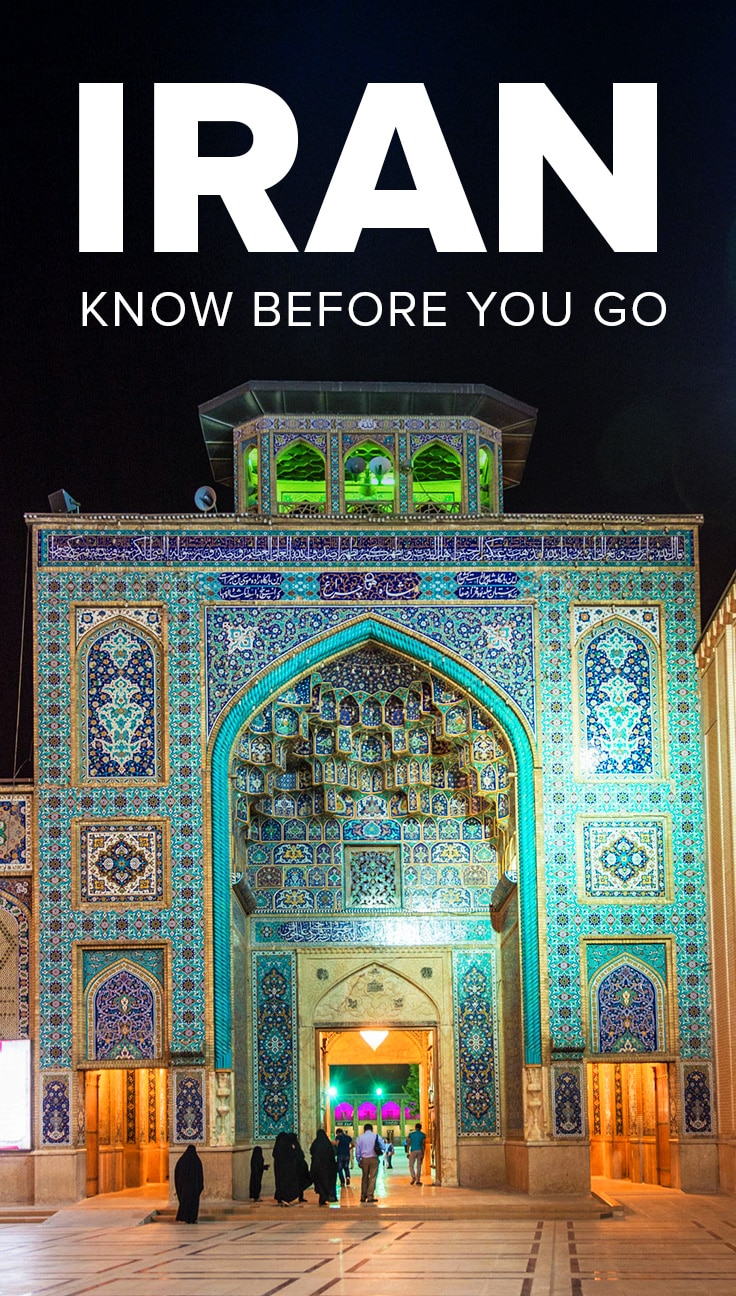
Guide to travel in Iran: Everything you need to know before visiting Iran
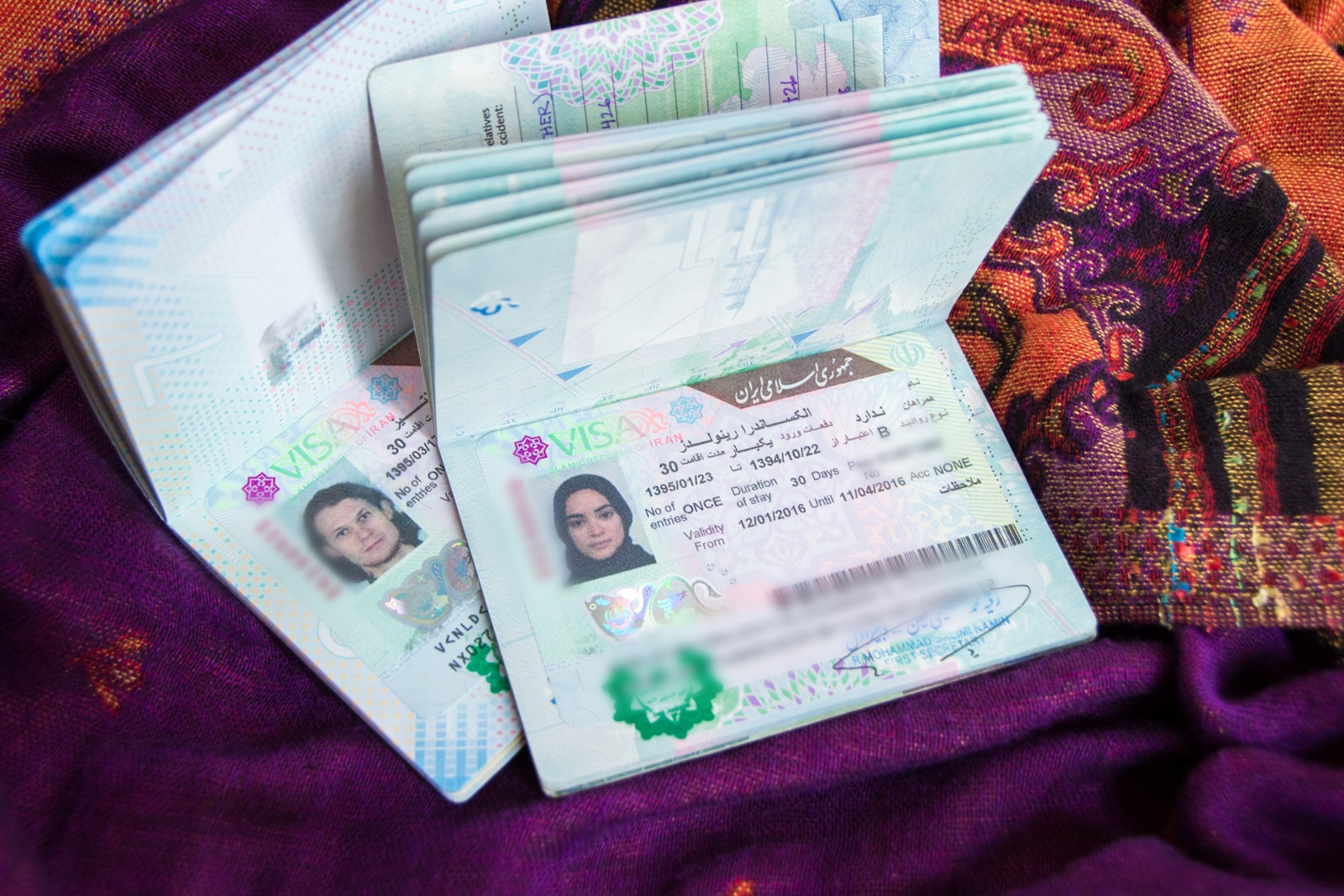
Visas for Iran
- Visas on arrival are only available at airports. A visa on arrival is valid for 30 days. Overlanders, you’ll have to get a tourist visa at an Iranian embassy or consulate ahead of time. If you need help with your visa, we recommend 1stQuest ( use promo code LWP-QST for a 5% discount).
- If you can’t get a visa on arrival, you need to get a tourist visa at a consulate. Citizens of the United States, United Kingdom, Canada, Bangladesh, Jordan, Iraq, Afghanistan, and Pakistan need to get a consular visa before they travel to Iran. If you’re from one of these countries, you need to get an authorization number before applying for the visa. People from other countries have to apply online first via Iran’s e-visa portal .
- If there is proof of entry to Israel in your passport, you cannot travel to Iran. This also applies if you have land border entry/exit stamps from countries neighboring Israel. Want to get around this? See if your country allows applications for a second passport for special circumstances.
- UK, US, and Canadian citizens cannot travel to Iran without a guide. Due to recent changes in Iran’s travel policy, travelers from the United States, United Kingdom, and Canada can’t travel to Iran independently. Citizens from these countries have to be on a tour to travel to Iran. We recommend 1StQuest for this ( use the code LWP-QST to get a 5% discount) .
Check out our two-week itinerary for Iran for inspiration on where to go in Iran!
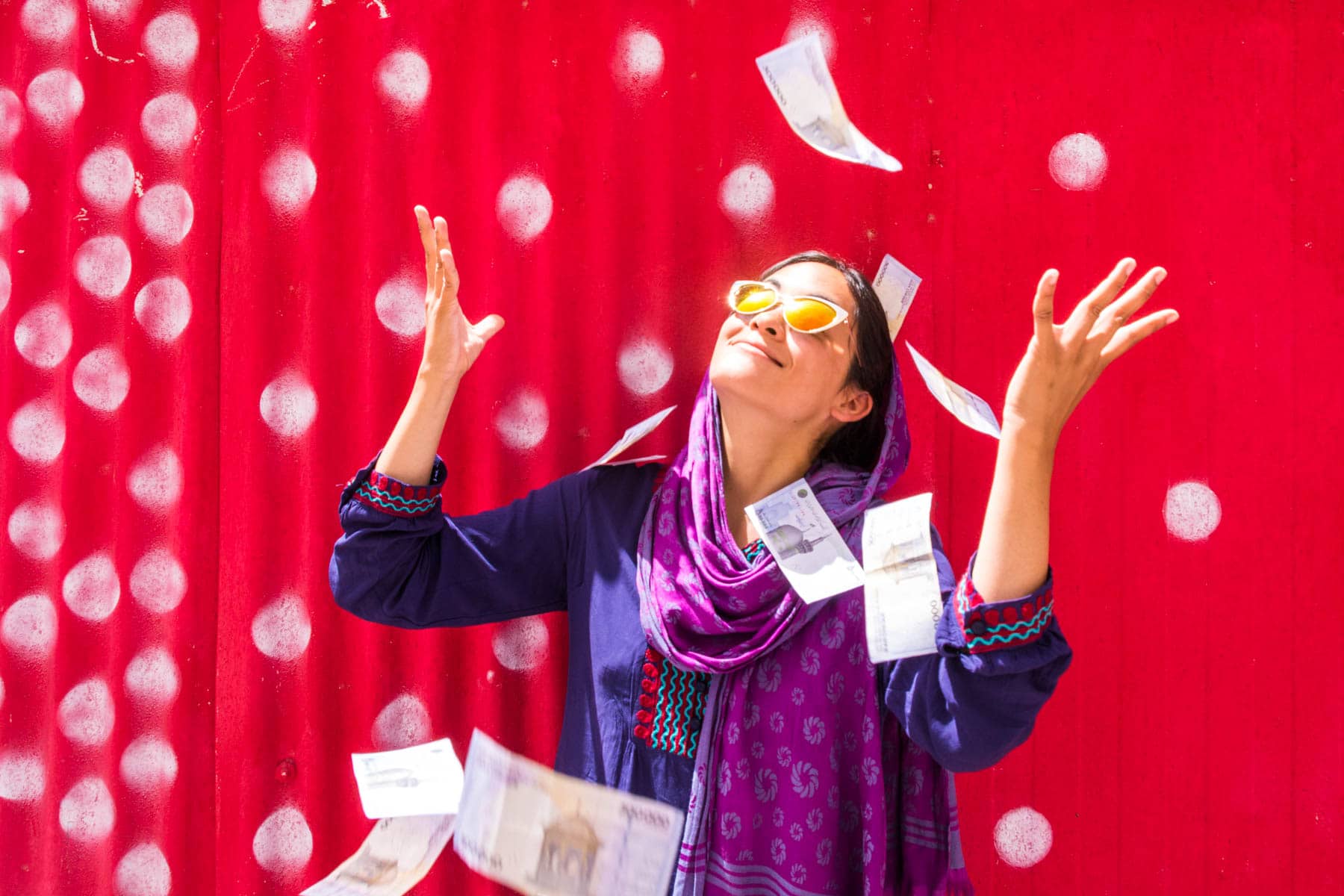
Rial rial bills, yo.
Money in Iran
- International cards don’t work in Iran. Forget ATMs–thanks to the sanctions, you have to bring all the money you’ll need in cash, and change money once in Iran. Dollars are the best, but euros work, too.
- Exchange money at currency exchanges. Exchanges give better rates than the government-controlled banks. If not labeled “Exchange”, look for small shops similar to jewelry stores that have foreign banknotes in the window.
- Iranian rial is the official currency of Iran.
- Prices are given in toman, not rials. 1 toman = 10 rials. People will also abbreviate: for example, if someone tells you something is “5”, they mean 5,000 toman/50,000 rials. It’s confusing in the beginning, but you’ll get the hang of it! Just add an extra “0” to the price to figure out the price in rials. Luckily, people in Iran are very honest and will let you know when you’re making a mistake. Tourist establishments are the exception to this–they usually list prices in rials.
- Keep your dollars close at hand. Don’t let people see how much money you have. Though theft isn’t very common, you don’t want to be trapped because something happened to your only supply of cash for the trip. Not all guesthouses and hotels have safes or lockers, so for god’s sake, please get a money belt . We can’t recommend them enough.
- If you do lose your money or run out of cash, carpet sellers in tourist areas can occasionally charge credit cards for a fee. The fee is around 10-20% of the transaction, so only use this as a last resort.
Pro Iran travel tip: Iran is a cash only economy. This means you’ll have to walk around with large wads of rials. If you don’t feel comfortable about this, check out Mah Card. Mah Card is a prepaid debit card specifically designed for travelers in Iran. Use the promo code LOSTWITHPURPOSE to get a 40% discount on Mah Card .
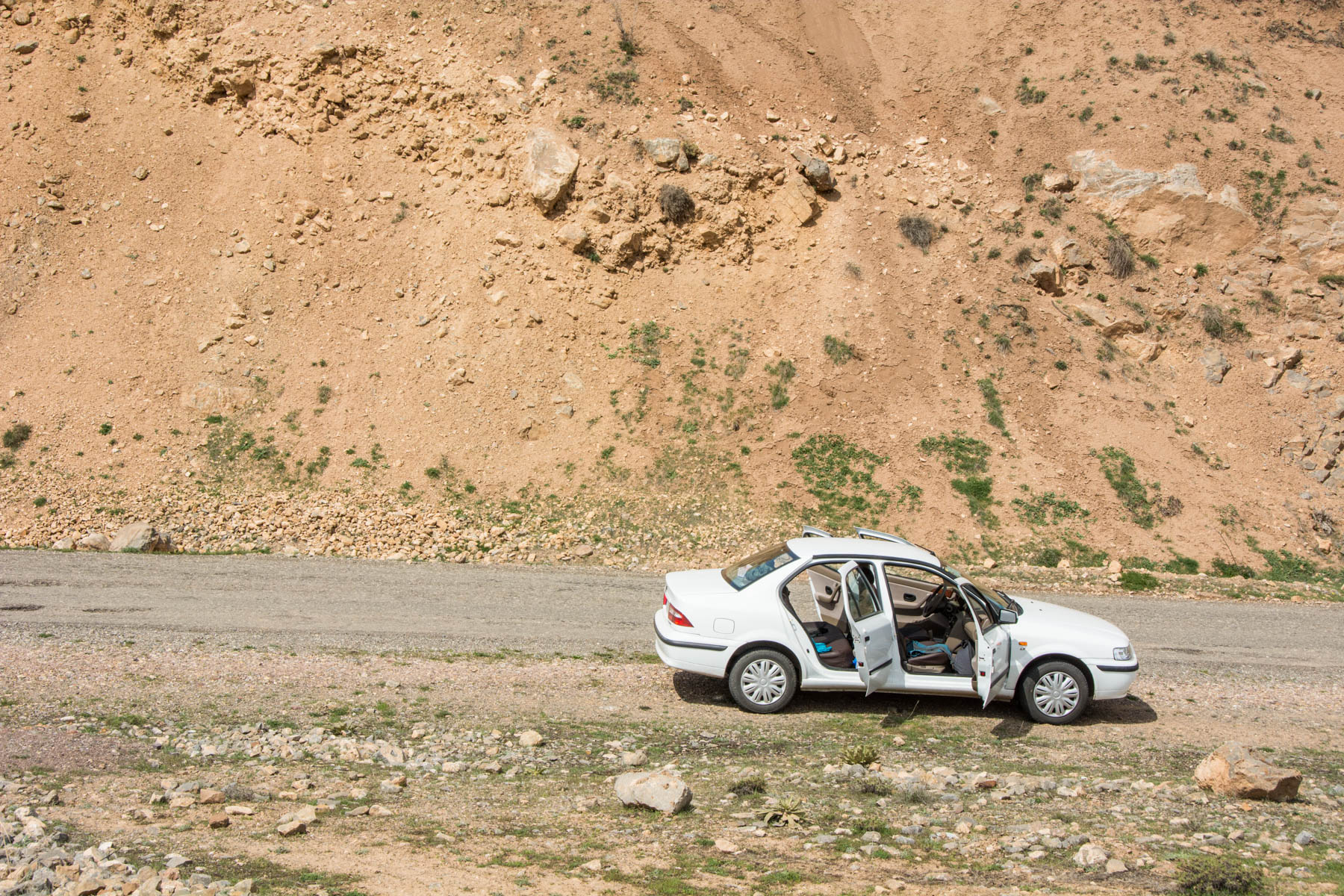
Does this explain the safety situation well enough? We left the car like this for half an hour, and nothing happened to it.
Safety in Iran
- Iran is extremely safe for foreigners. You won’t have to worry about violent crime when you visit Iran, and petty theft is rare. Let’s Go Iran’s safety page sums things up quite nicely. As for worries about ISIS? Um, ISIS has never occupied any space in Iran. You’ll be fine.
- Be careful when talking politics, and don’t insult the Supreme Leader. Speaking badly of the government is punishable by law, so be careful who you talk to. It’s best to pretend to be ambivalent, despite many Iranians being very open about their discontent.
- It’s okay to go to strangers’ homes. They just want to show you the famous Iranian hospitality! If someone invites you, do accept. Girls, take note: if a man invites you, it’s not proper to accept unless his wife or other women are present, or you’re traveling with a boy.
- Don’t take photos of power plants, factories, transportation hubs, or anything military or police when you visit Iran. You don’t want to look like a spy. The government does not like spies and people have been detained for being too close to military installations.
- Hotels will keep your passports while you stay. However, you’re required by law to always have your passport on you. Either carry around copies of your passport while outside or give the hotel copies and ask for your passport back. Make sure you have a copy of the information page and the page with your Iranian visa, including your entry stamp. You can do this once in the country–there are cheap copy shops everywhere in cities.
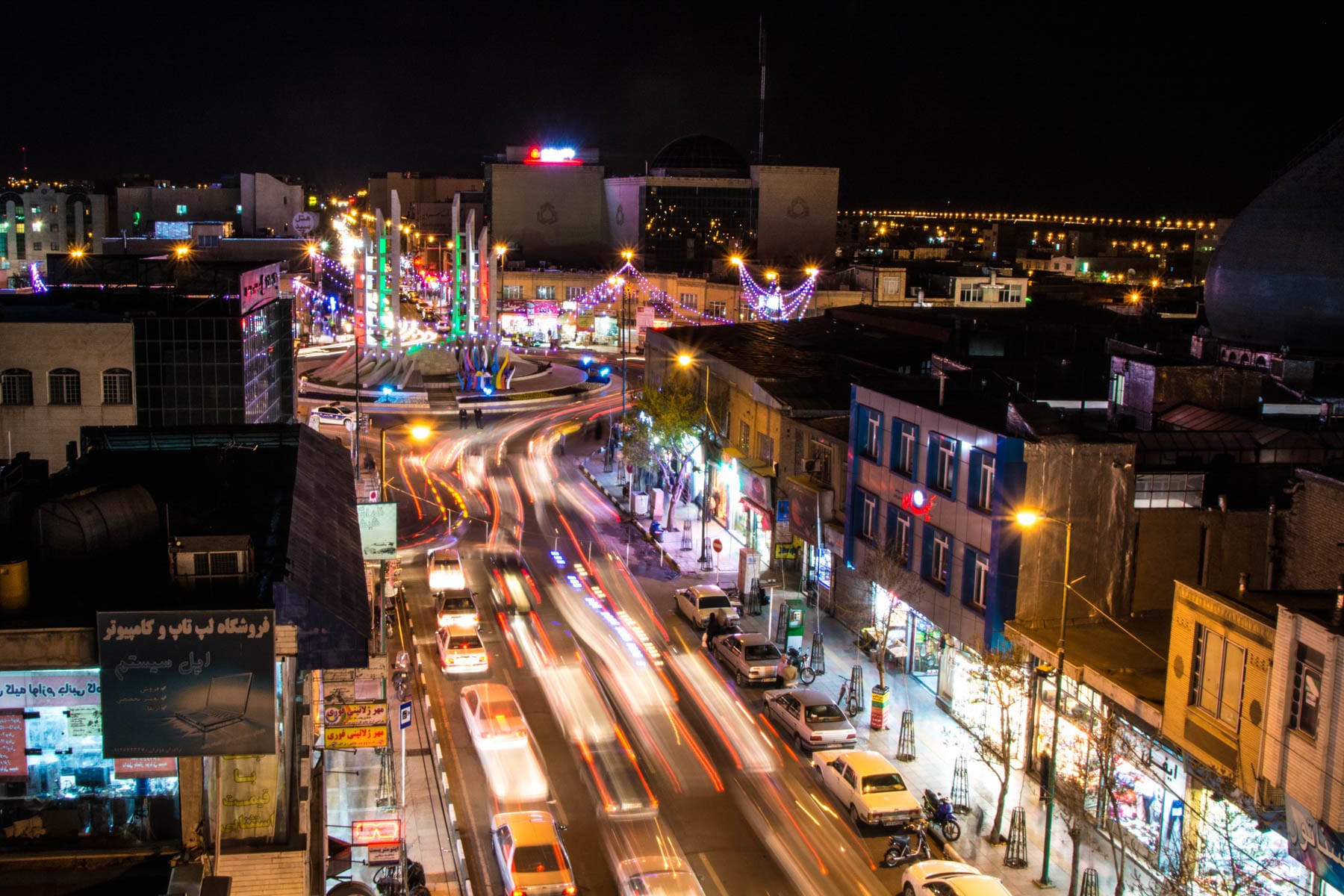
Transportation in Iran
- Buses are the cheapest and most common form of transportation between cities. There are also domestic airlines, for those that want to save time and don’t mind paying a bit extra. 1StQuest can help with domestic flight bookings ( use promo code LWP-QST to get a 5% discount on your bookings) .
- Iran also has its own ride-hailing app called Snapp. We recommend downloading it . Otherwise, you have to haggle for your taxi, which can be difficult, especially when you’re not sure where your destination is. We wrote a guide on how to take taxis without getting ripped off , but a good rule of thumb is to haggle for 60-80% of the quoted price unless it seems abnormally high. Taxis within cities should never be more than 100,000 rials or so.
- Want a comfortable bus ride? Get a VIP ticket. VIP buses have bigger seats that recline further, and you usually get a snack box for the road. They’re usually twice the price of mahmoolys , regular tour buses.
- Don’t sit next to people of the opposite sex unless you know them. It’s an unspoken rule, and people will often shuffle around on buses and in cars to get the order right. If there’s no other option, just sit–it’s not the end of the world.
- Any car can be a taxi. Enterprising locals will often act as unofficial taxi drivers. It’s fine to use their cars, and they’re a bit more flexible with their pricing than official taxis.
- Many city buses require transportation cards. The cards are sold at little huts next to bus stops. The price of a ride with the card is several hundred rials cheaper than without.
- Iranian drivers are insane. You’re going to see a lot of speeding, swerving, and sparse seatbelt usage when you travel to Iran. Prepare yourself.
- If the driving makes you nervous, stick to official taxis/savaris when traveling between cities. Official taxi drivers and bus drivers have to adhere to speed restrictions, which limits their stunts to a minimum. If that’s not possible… just close your eyes and pray to Allah.
- Don’t expect buses to stop for food. Roadside snack stalls are usually your only option, so make sure to stock up on food and drinks along for long bus journeys. However, most buses have a supply of water somewhere, and VIP buses usually give out snack boxes.
- You can ask a bus driver to take a toilet stop. They’ll occasionally stop for guys to take a roadside leak, but ladies have to be more vocal about nature’s call.
Pro Iran travel tip: It has recently become possible to book and pay for buses and planes online with 1stQuest. Check here for buses , and here for plane tickets – use the code LWP-QST for a 5% discount!
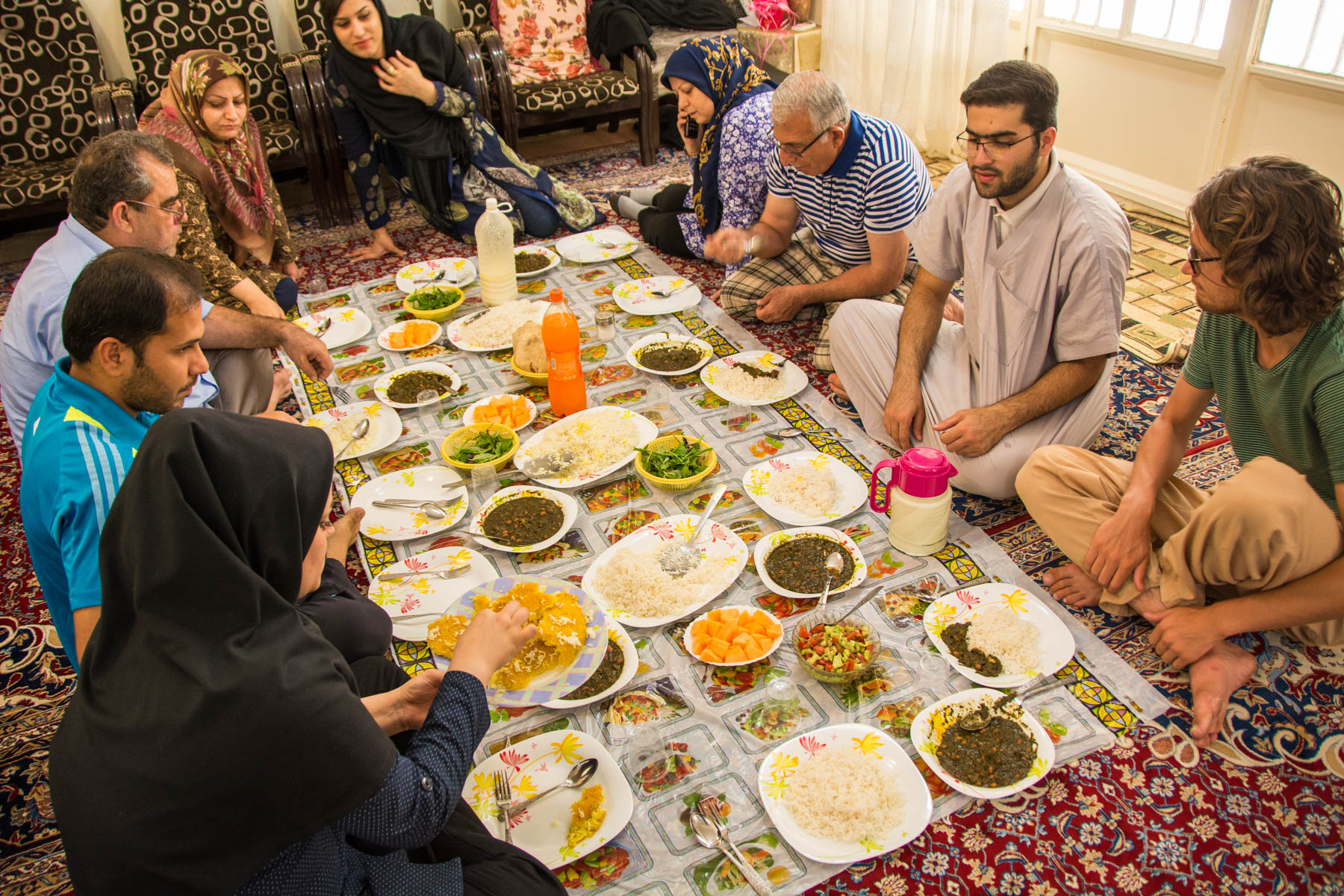
Being literally stuffed with love at a family’s house in Shush. We ended up here after the boy pictured invited us to stay at his home… right after we stepped off of a bus!
Hospitality in Iran
- Iranians love treating foreigners. People you meet are going to want to take you out and pay for everything. Do offer to pay yourself, but if they refuse you 3 or more times (see the explanation of tarof below), just give in and go with the flow.
- Watch out for tarof . In short, tarof is when someone offers something to be polite, not because they want to. It usually occurs in the form of someone offering to you something for free, but can also apply to invitations. To determine if it’s tarof , offer to pay three times. If the person still resists, the offer is legit.
- You don’t need to tip. Tipping isn’t common unless you’re at a really nice restaurant, or you were very, very satisfied with a service you received.
- Take advantage of Couchsurfing if you visit Iran. It’s extremely popular in Iran, and an excellent way to meet locals/arrange homestays. Just be warned that many hosts will expect to be with you all the time. And we mean all the time. To access Couchsurfing in Iran, you need a VPN that works in Iran .
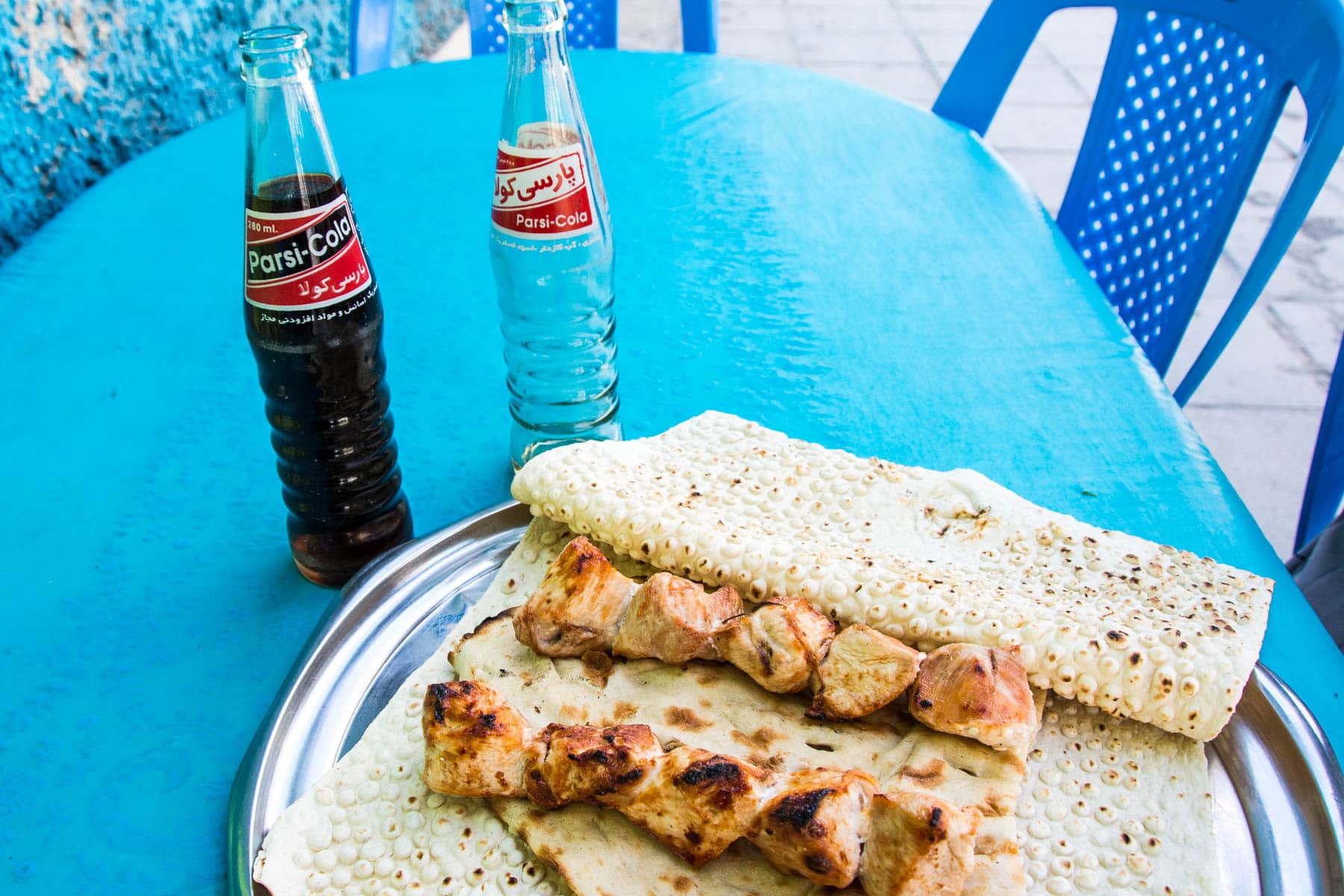
Be prepared to OD on kebabs while in Iran, possibly involuntarily.
Food and drinks in Iran
- Tap water is safe to drink unless stated otherwise. There are also plenty of water fountains all throughout the cities, so bring a reusable water bottle !
- Coffee has recently become popular in Iran. While tea is still the drink of choice for the older generation, coffee has become increasingly popular with younger Iranians. Little coffee shops are popping up all over the place.
- When drinking tea, put a sugar cube in your mouth, then take a sip. This is the Iranian way of drinking tea. Yes, this means you’ll end up consuming a metric sh*t ton of sugar cubes with each cup of tea… also the Iranian way.
- You can often peek in the kitchen to see your options if there isn’t an English menu. Just stare blankly at the Farsi for a bit, shrug, and point to the kitchen. It’ll help you find things other than a kebab.
- Don’t feel pressured to eat kebab when out with Iranians. They’ll often order kebab for you because they assume that’s what you want, and it’s a common choice when eating out since not everyone has the luxury of a charcoal grill in the home.
- Don’t be surprised if you encounter alcohol when you travel to Iran. Just because it’s banned doesn’t mean you can’t find it, as prohibition has taught us. You’ll be fine drinking in private homes, but be wary about consumption in public places.
Pro Iran travel tip: Never leave home without proper travel insurance! We use and recommend World Nomads . Lucky you, they provide travel insurance for Iran!
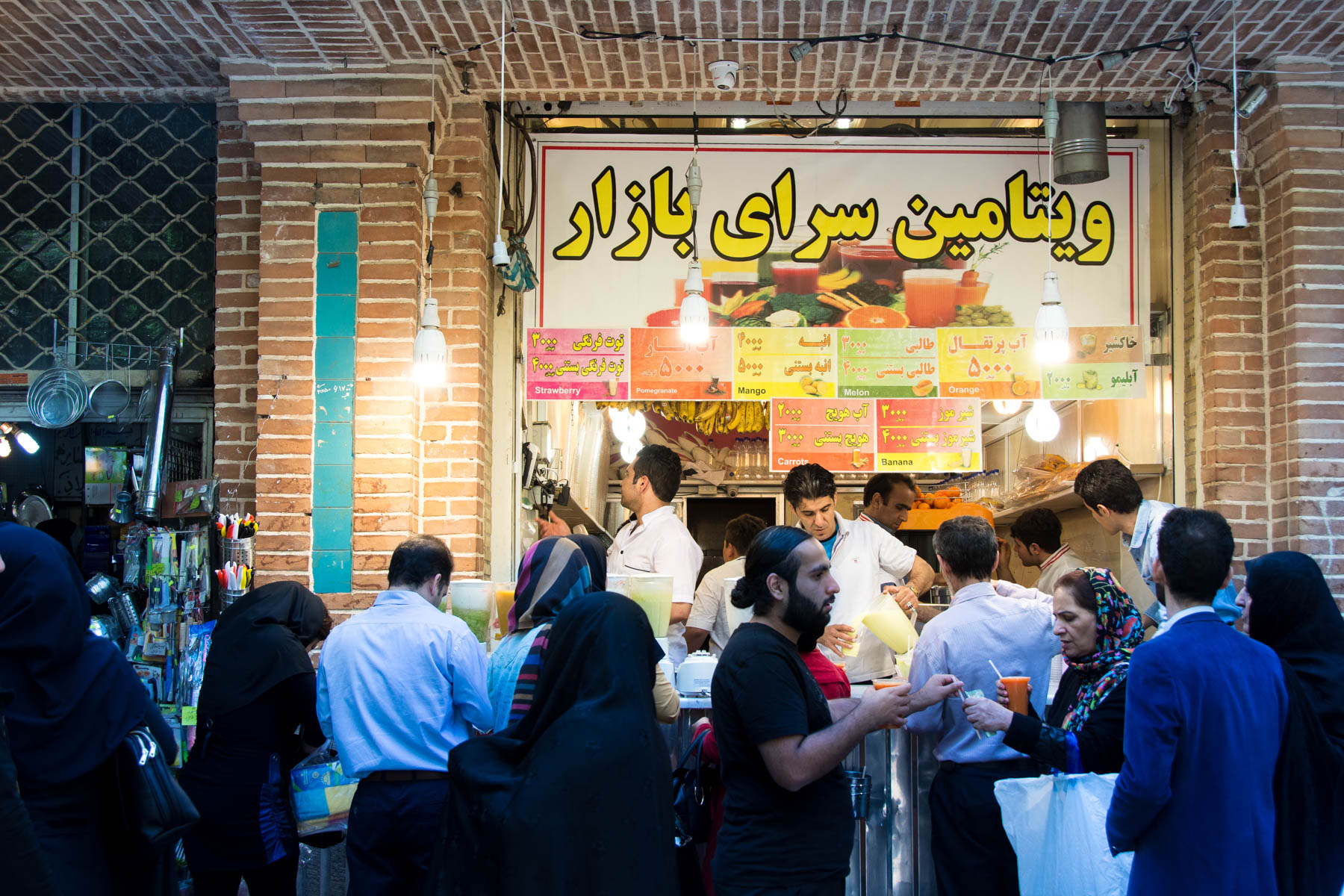
An important aspect of Iranian culture: an addiction to all things blended and delicious!
Culture in Iran
- Persian (Farsi) uses the Arabic alphabet and is written right to left. Numbers will also be different, but confusingly enough, they are written left to right. Try to learn the numbers so you can understand prices and times. You can use bus rides to learn the numbers from road signs along the way.
- Persians are not Arabs . Even though Iran is technically the Middle East, Iranians don’t consider themselves Arabs or Middle Easterners. Iranians are very firm on this and are offended if you mix the two.
- Everything closes between 13:00 and 16:30-ish. During this time people go home to lunch with the family, nap, and avoid the heat. Sights, restaurants, and ice cream places (most important!) will still be open, though.
- Everything also closes on Fridays . Friday is the holy day of the week, and many stores are closed for the whole day. Friday mosques close to non-Muslims as well.
- Lunch and dinner are late. People eat lunch around 14:00, and dinner can be anywhere between 21:00 and midnight!
- No public displays of affection when you visit Iran. It’s illegal to kiss or hold hands in public, though people bend the rules for the latter in big cities. Of course, this doesn’t mean that all things sexual are off-limits—dating is common, and there’s even an active Tinder scene in Iran !
- Don’t wear shoes on carpets. Pack shoes that you can easily take on and off!
- The portraits on billboards and sides of buildings are of martyrs. It’s a “great honor” to die as a martyr for Iran, and the government plays this up by putting their faces on billboards and having martyr murals painted throughout cities.
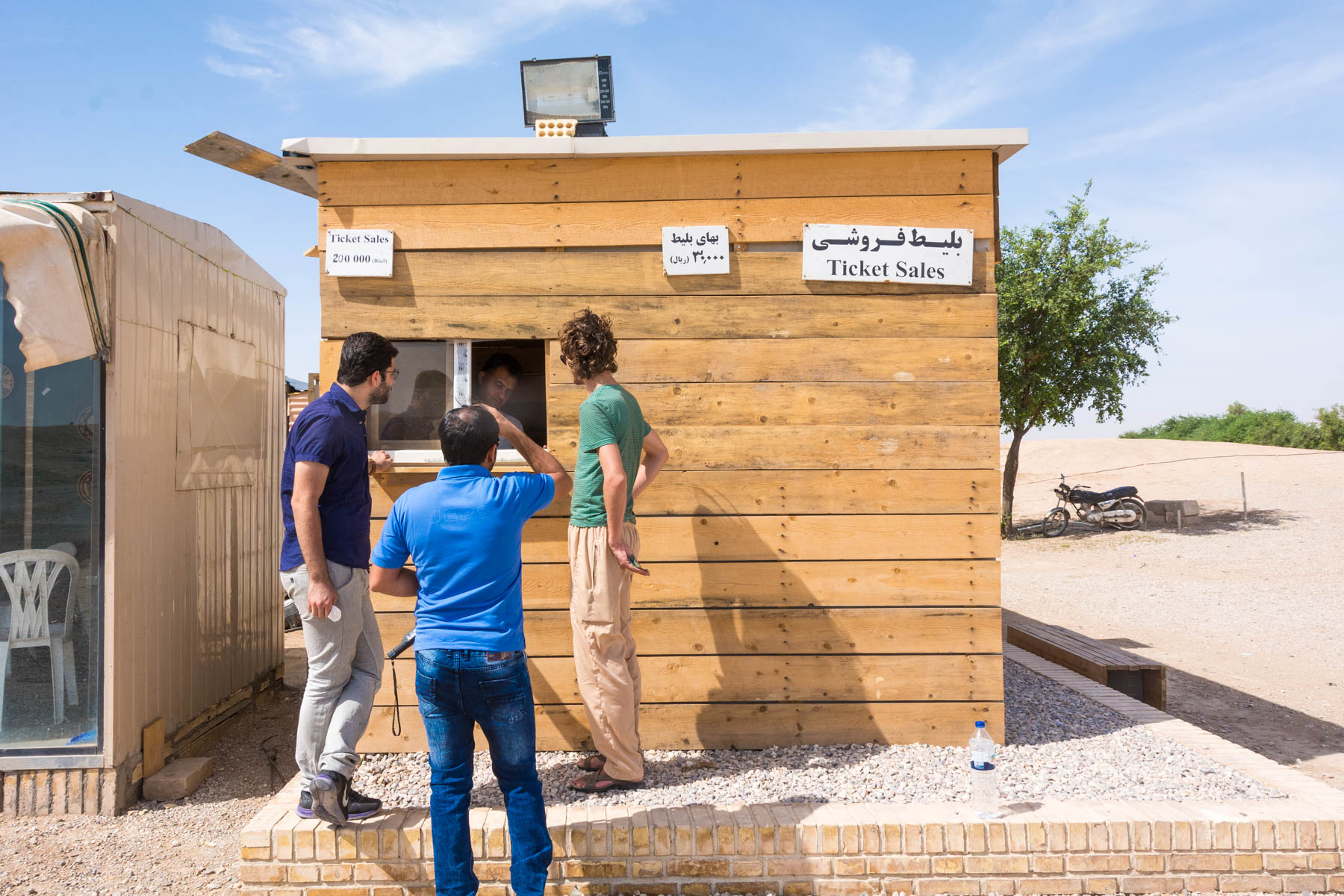
Attempting to haggle down the price of foreigner tickets… unsuccessfully.
Sightseeing in Iran
- The Lonely Planet only offers guidelines. Prices change all the time, and with its long lead time, by the time a Lonely Planet hits the shelves, a considerable amount of information is outdated. Use as a guideline only.
- Foreigner price for sights is usually 6-8 times the local price. And according to locals, foreigner ticket prices are still on the rise. For the budget travelers, the ticket people sometimes bend the rules and give you the Iranian price if you charm them a bit (and it’s not busy). Otherwise, try going in with a local, and have them buy your tickets while you hide.
- Tour agencies often give out free city maps. Check them out–there’s usually interesting things on the maps that you won’t find in guidebooks.
- Visit sights at night when possible. Many religious sites are open in the evening and are much more pleasant: fewer tourists, more locals, cooler weather, and beautiful lighting. Sounds good, right?
Looking for more Iran inspiration? Check out our off-beat Iran itinerary !

When bedbugs attack: the downsides of cheap guesthouses. Not so healthy after all!
Health in Iran
- Carry toilet paper/tissues everywhere when you travel to Iran. Cheap accommodations won’t always have toilet paper, and public toilets definitely don’t. Alternatively, get used to using a bum gun! Remember, you wipe with your left hand, and shake hands with your right.
- If looking for a toilet, ask for a “WC”. In English, that is. It’s more commonly used than “toilet”. If you do want to ask for a toilet, try using the French pronunciation, “toilette”.
- Most toilets are squat toilets. Hotels will sometimes have western toilets, but you’ll be doing a lot of squatting away from home. Start building up those leg muscles!
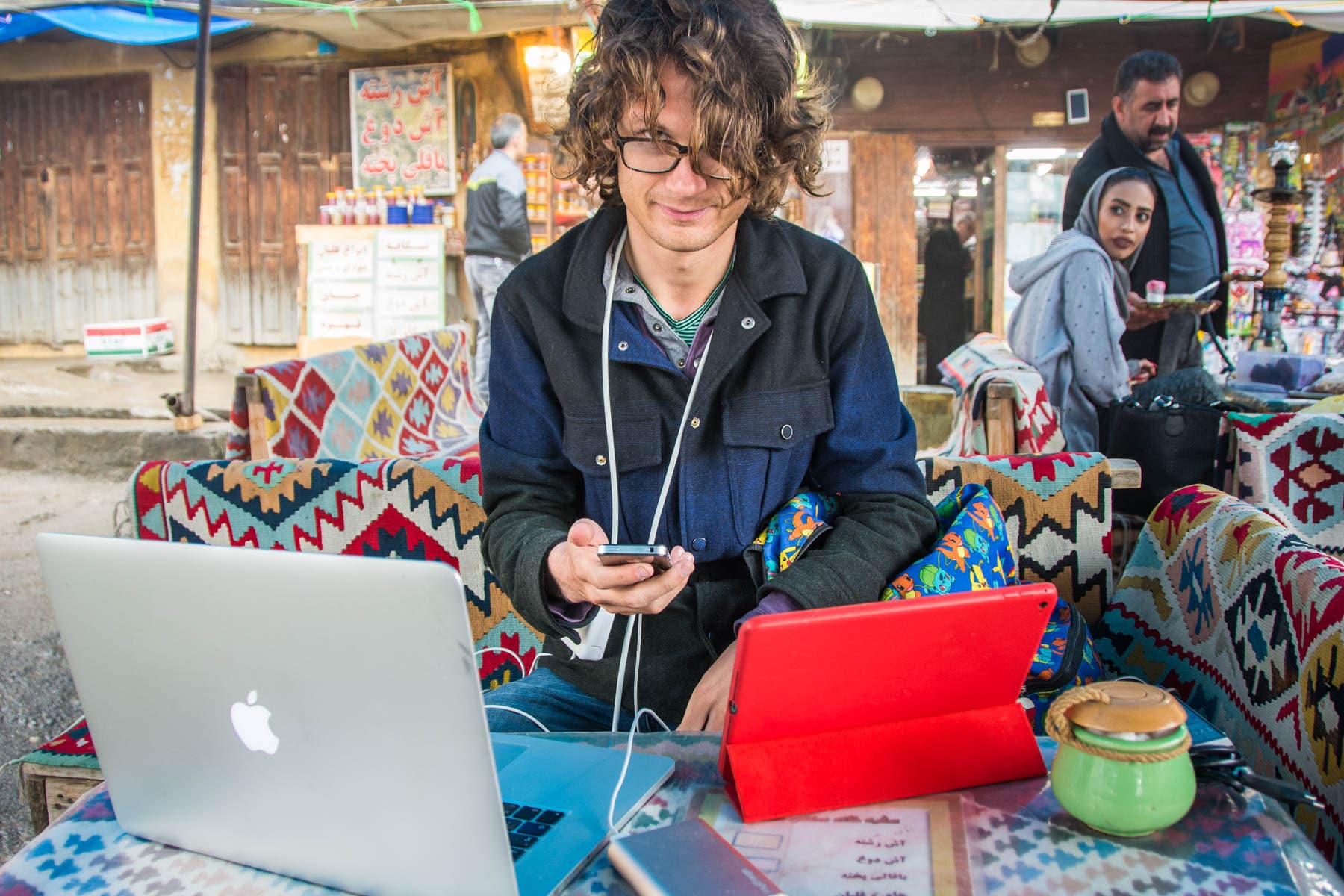
FYI: the internet in Iran will make you want to strangle yourself and/or other innocent things.
Internet & mobile data in Iran
- The internet is censored. Many common social media networks (Facebook, Twitter, Pinterest), Google services (except Gmail), app stores (for paid apps), and western news outlets (BBC, CNN) are blocked, so you’ll need a VPN that works in Iran if you plan on maintaining your internet existence while in Iran.
- Internet is slow and can be hard to find. The government throttles internet speeds , and many cheap guesthouses and hotels outside of the main tourist track in the center of the country don’t have wifi.
- Consider getting an Iranian SIM card. Mobile connections are faster than wifi and SIM cards are cheap. An Irancell SIM card is 500,000 rials, and 10GB of data is 300,000 rials.
- Telegram has recently been blocked. Telegram used to be the most popular messaging app in Iran, but since the government blocked it, more and more Iranians have started using WhatsApp.
- Iran uses European outlets. If your chargers don’t have the two rounded prongs you’ll need an adapter – get your travel adaptor here .
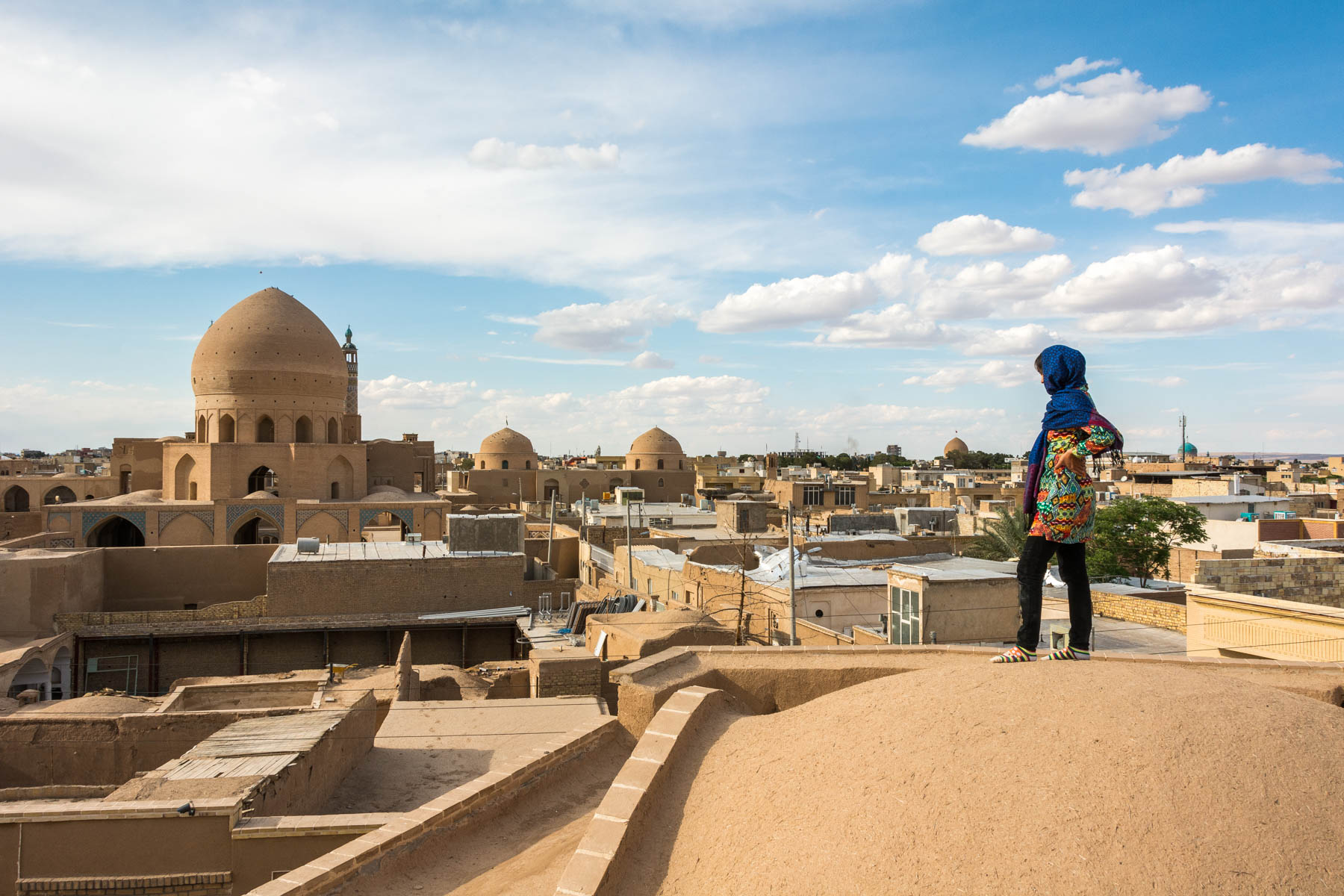
Rocking the demure Iranian ladydress (more formally known as a “manteau”) on the rooftops of Kashan.
Women in Iran
- Women have a strict dress code in the Islamic Republic of Iran. You must wear a headscarf when you travel to Iran, your shirt needs to cover your bum, and you can’t wear shorts or anything with short sleeves. Yay freedom! Tight pants are okay, though.
- Sit in the back of the bus on city buses. Always enter from the middle of the bus, and if you need to pay the driver, do so at the end of the ride by leaning in through the front door after getting out.
- Wear whatever you want at the beach when in the women-only area. Beaches are separated into separate sections for men and women, and a mixed-gender area for families. Alas, you’ll have to cover up if you’re lounging in the mixed area. Don’t forget sunscreen to prevent strange tan lines!
- It’s often okay to take off your hijab in homes or when hiking. Follow other women’s examples in homes. As for the great outdoors, if there’s no one around, who will get you in trouble? You’ll see many Iranian ladies doing the same.
- If a man harasses you, make a scene or firmly turn him away. Punishment for crimes against women is severe, and men are too afraid of being caught to let things progress. The tourist police are also very willing to help, providing you have information or photos they can use to track down offenders.
For more tips on traveling Iran as a woman, check out my female travel guide to Iran.
And there you have it, our master list of things to know when traveling to Iran. Let us know if you have any questions.
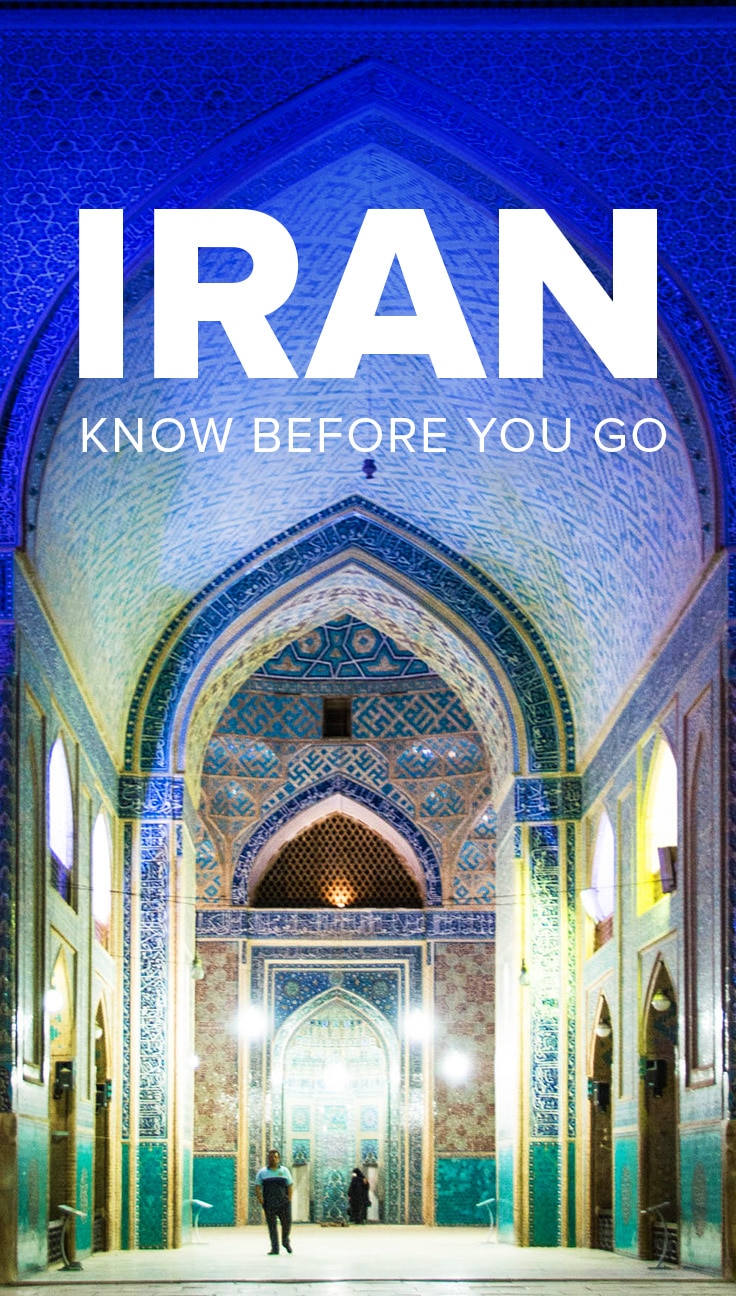
Yay transparency: there are affiliate links in this post. If you buy anything through our links, we get a small commission at no extra cost to you . We promise we only recommend stuff we actually like, and it helps us cover the costs of running the blog!

Alex Reynolds
64 thoughts on “ everything you need to know before traveling to iran ”.
Before Coronavirus quarantine, I was planning a trip to Iran, and I had this website bookmarked with these suggestions. I already followed a couple of tips and got a VPN for traveling, pretty glad I got the 2-year subscription; now, I’ll be able to use it after the quarantine is lifted.
I want to fly iran. call me: +994 403617473
I am very interested in traveling there, but as an American, I am disheartened to learn you have to be with a guide. So, there is no possibility to travel solo?? I am happy to have a guide sometimes, but I hate the idea of being locked into a specific itinerary without any flexibility. Since you have a British passport, did you travel with a guide? How was the experience? Were you able to do your own thing?
Iranian people never say this nonsense!!!!!!!!!
if you decided to travel to iran. as an iranian people i advice you to be in a grope. because you might have some problems if you be only. and the language can be problem for you. i wish you enjoy from my country. and actually iran’s new government has managed the covid-19 very good. don’t worry about it!
Leave a Reply Cancel reply
Your email address will not be published. Required fields are marked *

- Privacy Overview
- Strictly Necessary Cookies
This website uses cookies so that we can provide you with the best user experience possible. Cookie information is stored in your browser and performs functions such as recognising you when you return to our website and helping our team to understand which sections of the website you find most interesting and useful.
Strictly Necessary Cookie should be enabled at all times so that we can save your preferences for cookie settings.
If you disable this cookie, we will not be able to save your preferences. This means that every time you visit this website you will need to enable or disable cookies again.
Travel Guide to Iran – My 8 Day Cultural Itinerary Visiting Cities of Mashhad, Shiraz, Yazd, Ishfahan and Tehran
Iran is probably one of the most underrated tourist destinations in the world, thanks to the impact of mainstream media. As they report conflict and hatred, viewers establish fear and indifference to the country. Not a lot of people care about the true status of Iranians let alone set foot on their soil.
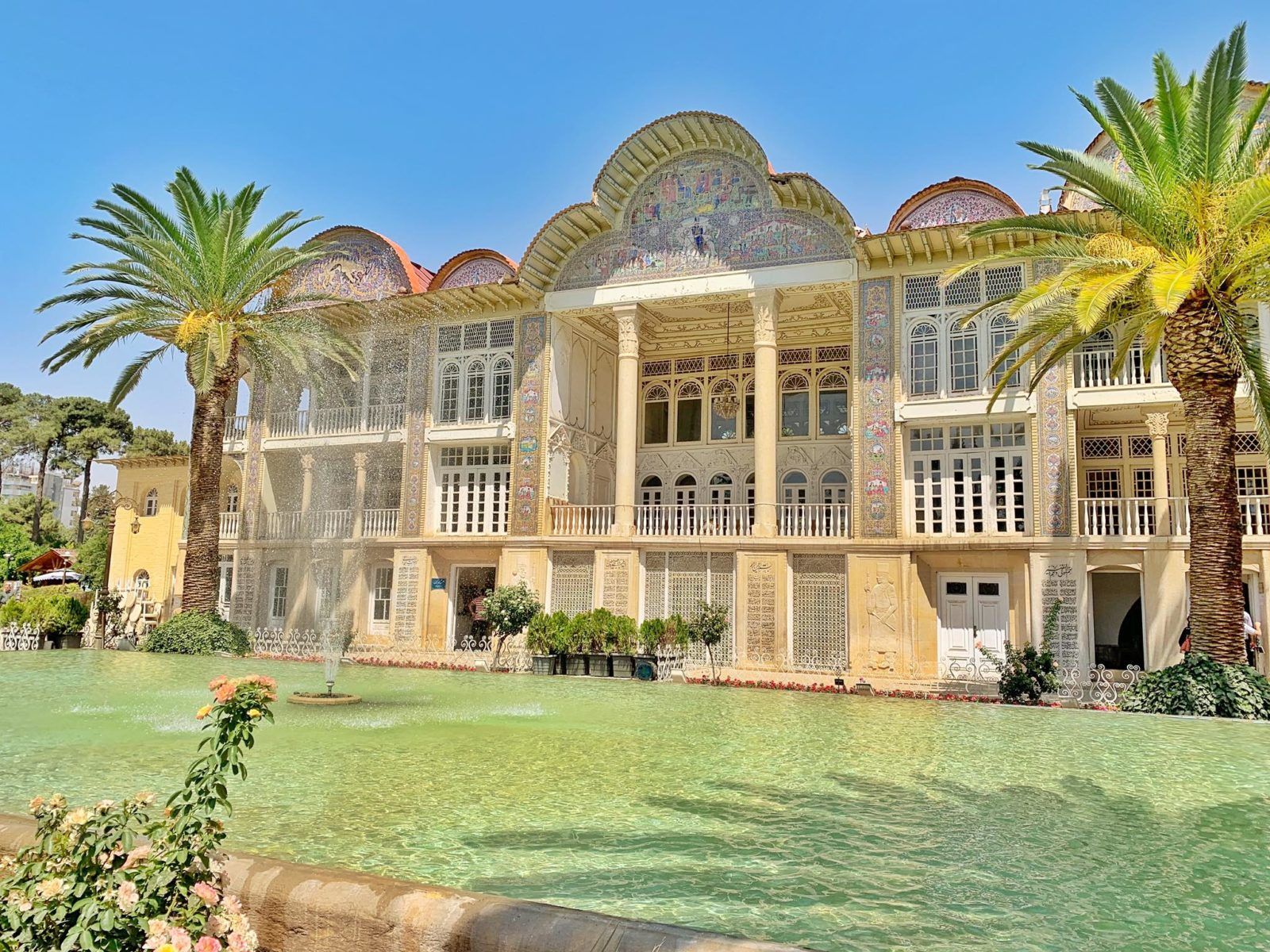
This is one of the compelling reasons why I wanted to see this country for myself. I want to get to know their people, their culture, and see how beautiful their country is. I want to experience more than what I see and hear on the news or on television, this is aside from the fact that I wanted to visit every single country in the world.
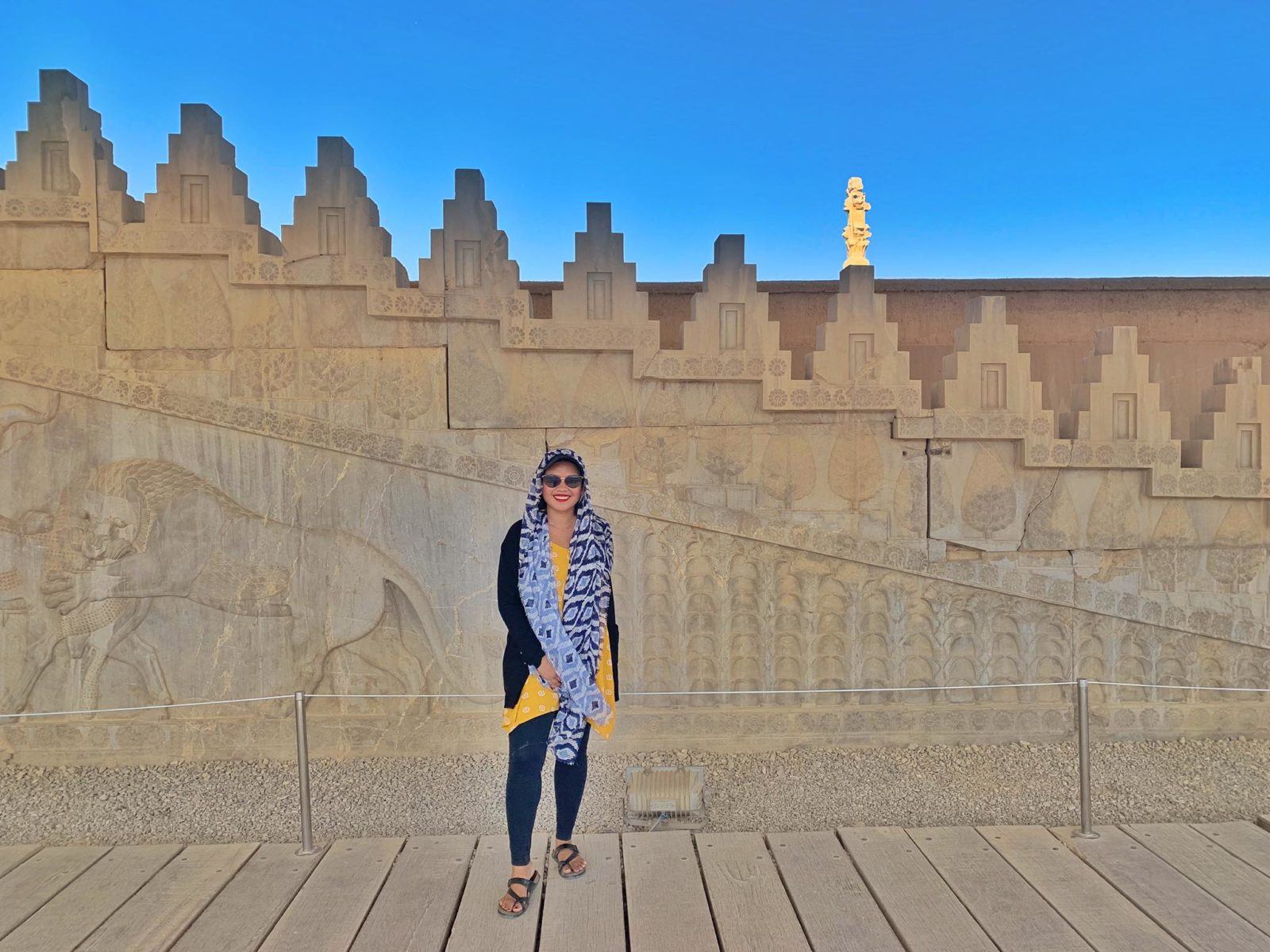
A lot of people think I’m crazy or stupid for traveling around Central Asia, Iran in particular. Well, let me tell you that I probably am! I have crossed the border from Djibouti to Somaliland , sailed from the Florida Keys to the Bahamas , traveled to 15 countries around Africa , and I even went Mountain Gorilla Tracking in Uganda so there’s no way I wouldn’t visit Iran! :p
EXTRA TIPS: I recommend booking your Iran travel services through Exotigo , a trusted Iranian online travel agency. Through their web platform, you can find a large variety of Iran hotels, domestic flights, tour packages and experiences, car rental as well as Iran visa and insurance. They accept all major debit/credit cards and PayPal as well.
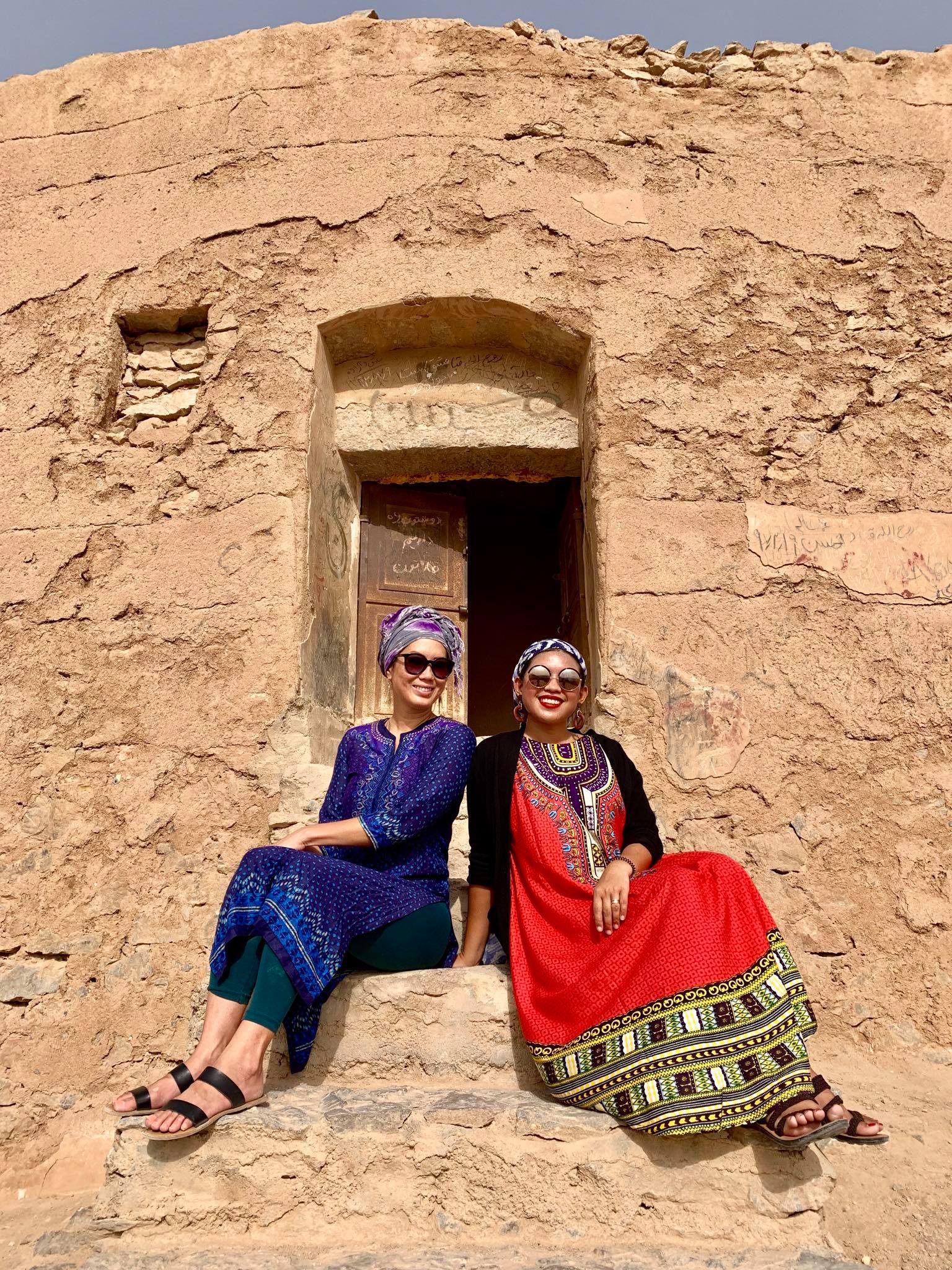
This time, Visit Our Iran planned and arranged this trip, as well as my visas and flights and Marcopolo Iran Touring, hosted me and Bohemian Vagabond Travel Blog: Jacki Ueng for 8 full days! Here is a very interesting cultural itinerary that they prepared for us! 🙂
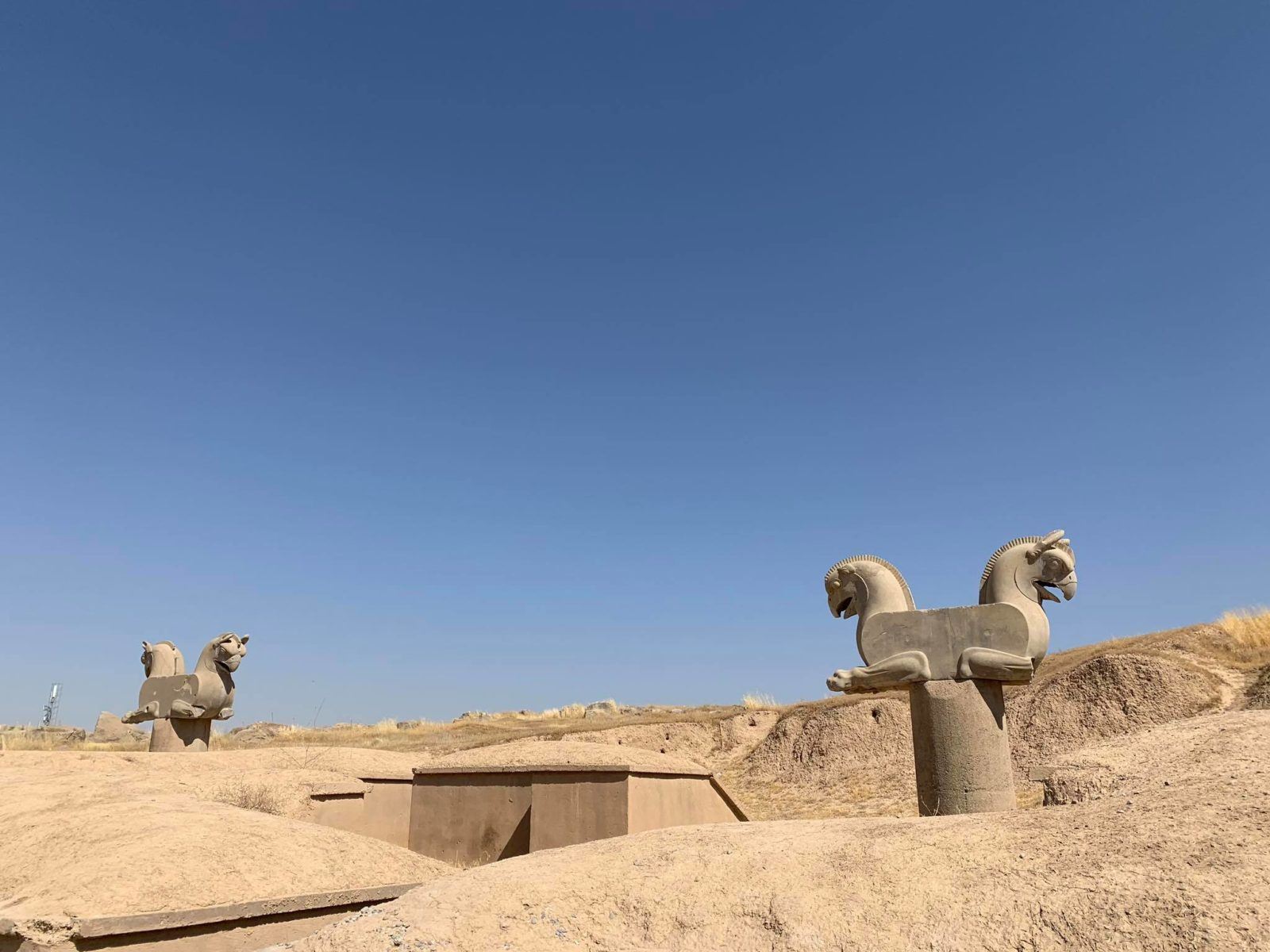
DAY 1: CROSSING THE BORDER FROM ASHGABAT, TURKMENISTAN TO BAJGIRAN, IRAN AND MY OVERNIGHT STAY IN HOMA HOTEL IN MASHHAD
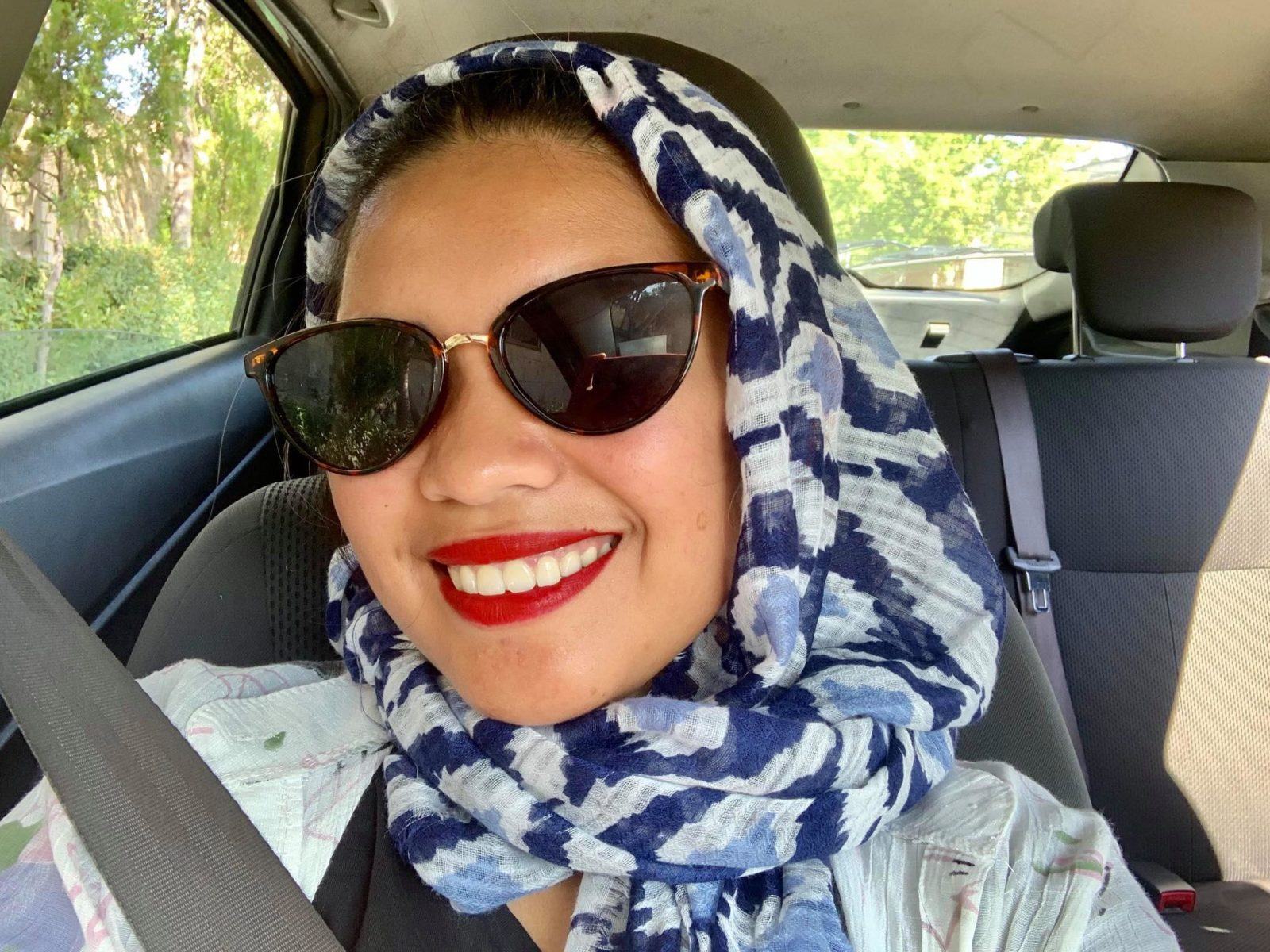
From Ashgabat in Turkmenistan, I crossed the Bajgiran border to Iran with my Philippines Passport and pre-arranged Iranian Visa . It was relatively easy since the two Immigration Offices are close to each other.
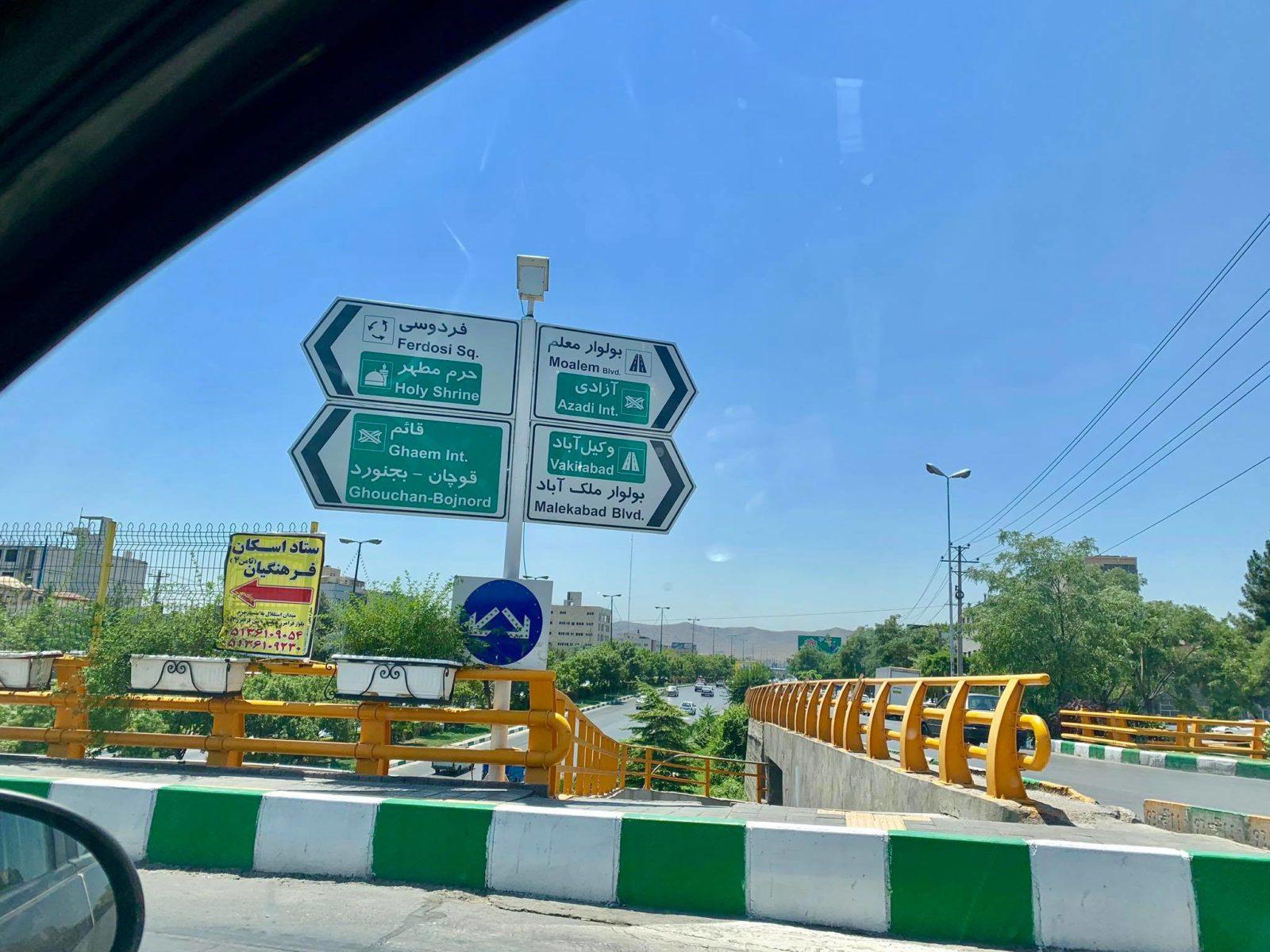
Right before I crossed the border, the environment instantly changed (at least that’s what I felt). Other than the fact that I had to cover myself from head to ankle to follow the rules in Iran, I felt a warm welcome from the Iranian starting from the Immigration Officers who even called a taxi and assisted me with my luggage without asking for anything in return.
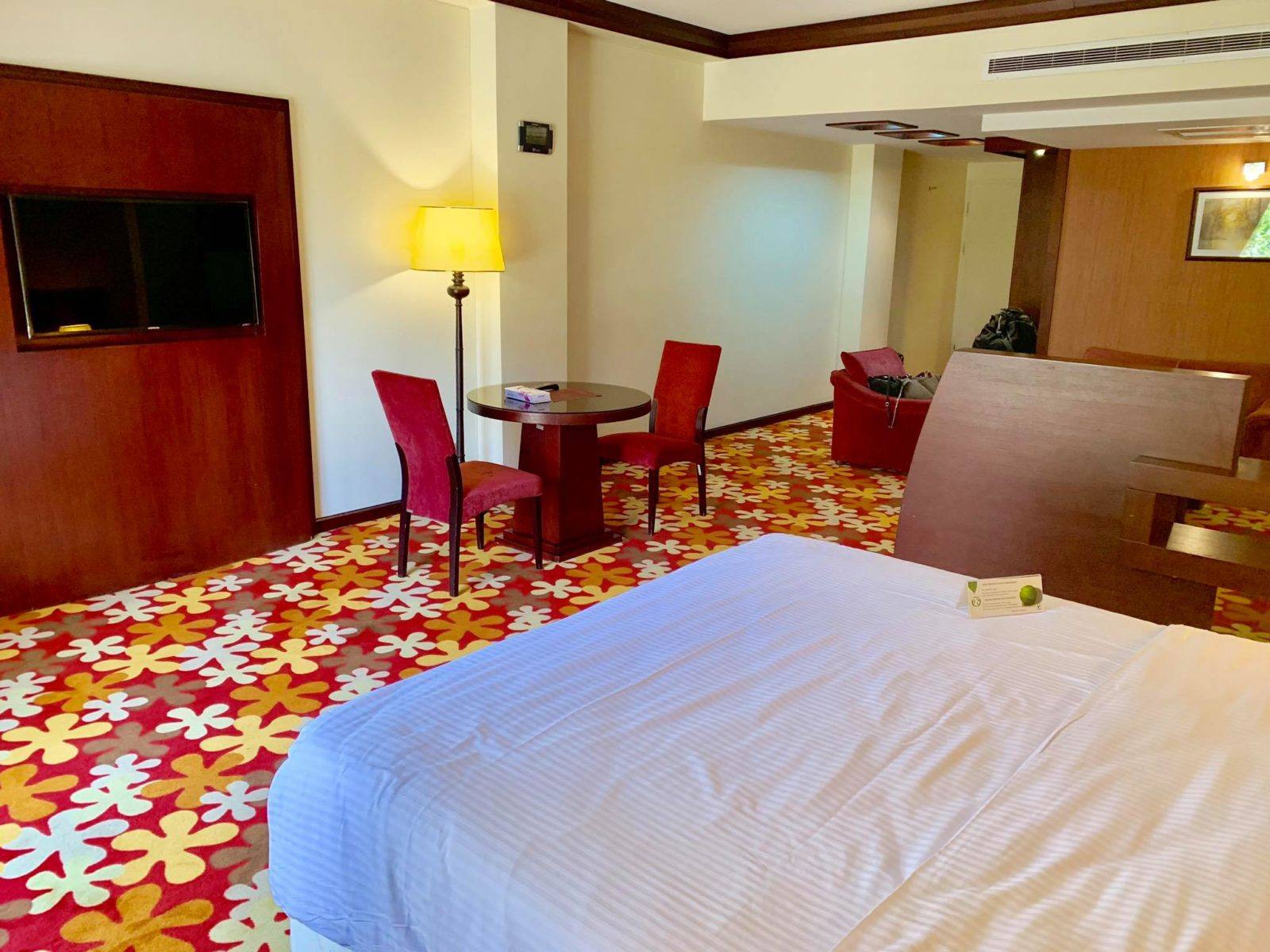
Marcopolo Iran Touring Co . booked a room for me at Homa Hotel in Mashhad (3-hour drive from Bajgiran) w hich happens to be one of the most popular luxury chains of hotel in Iran. It was so nice to have a little staycation from all the hardcore traveling I’m doing! :p
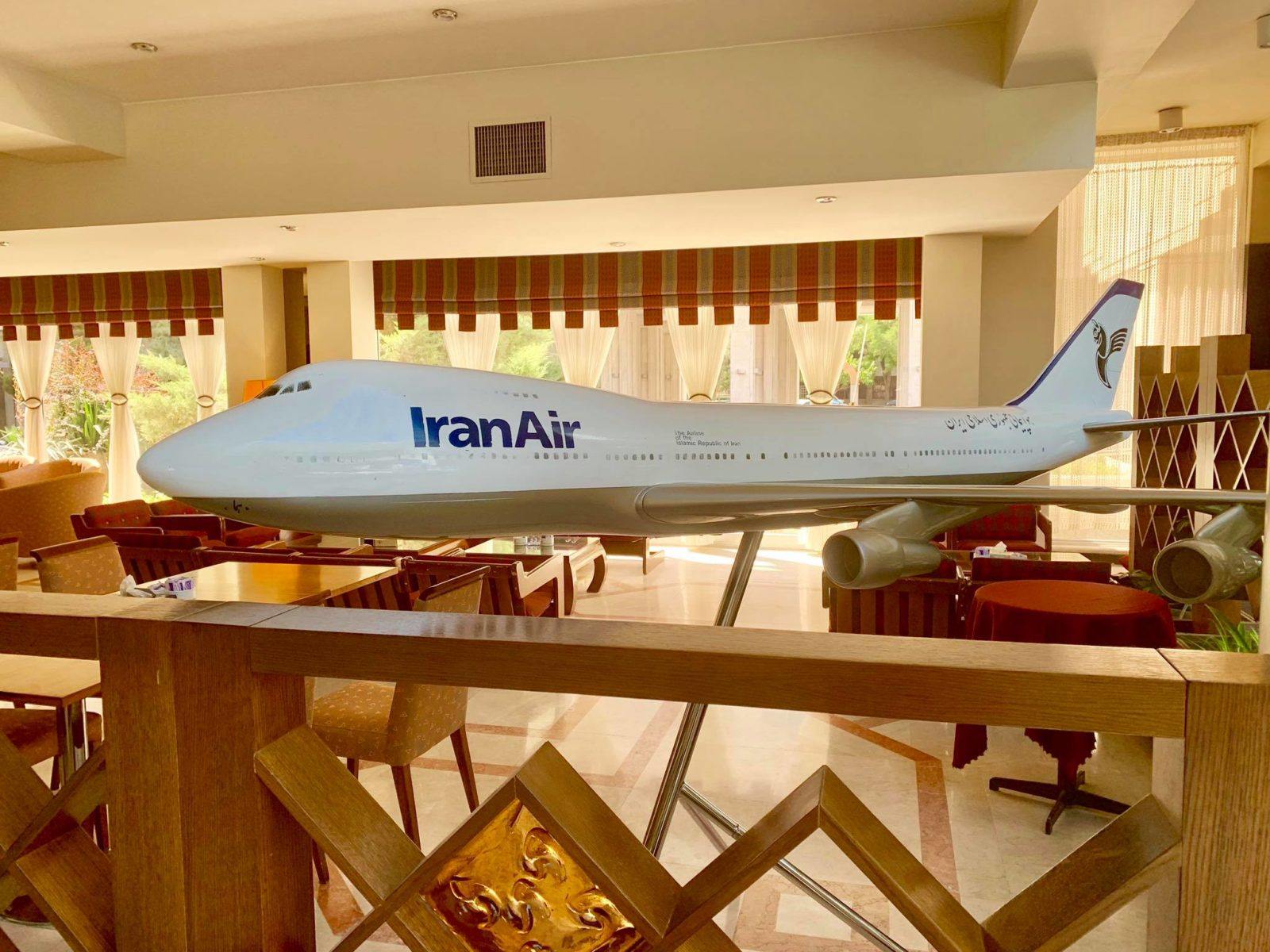
After a couple of hours’ rest, I met Pouyan. He was super nice and he showed me around!
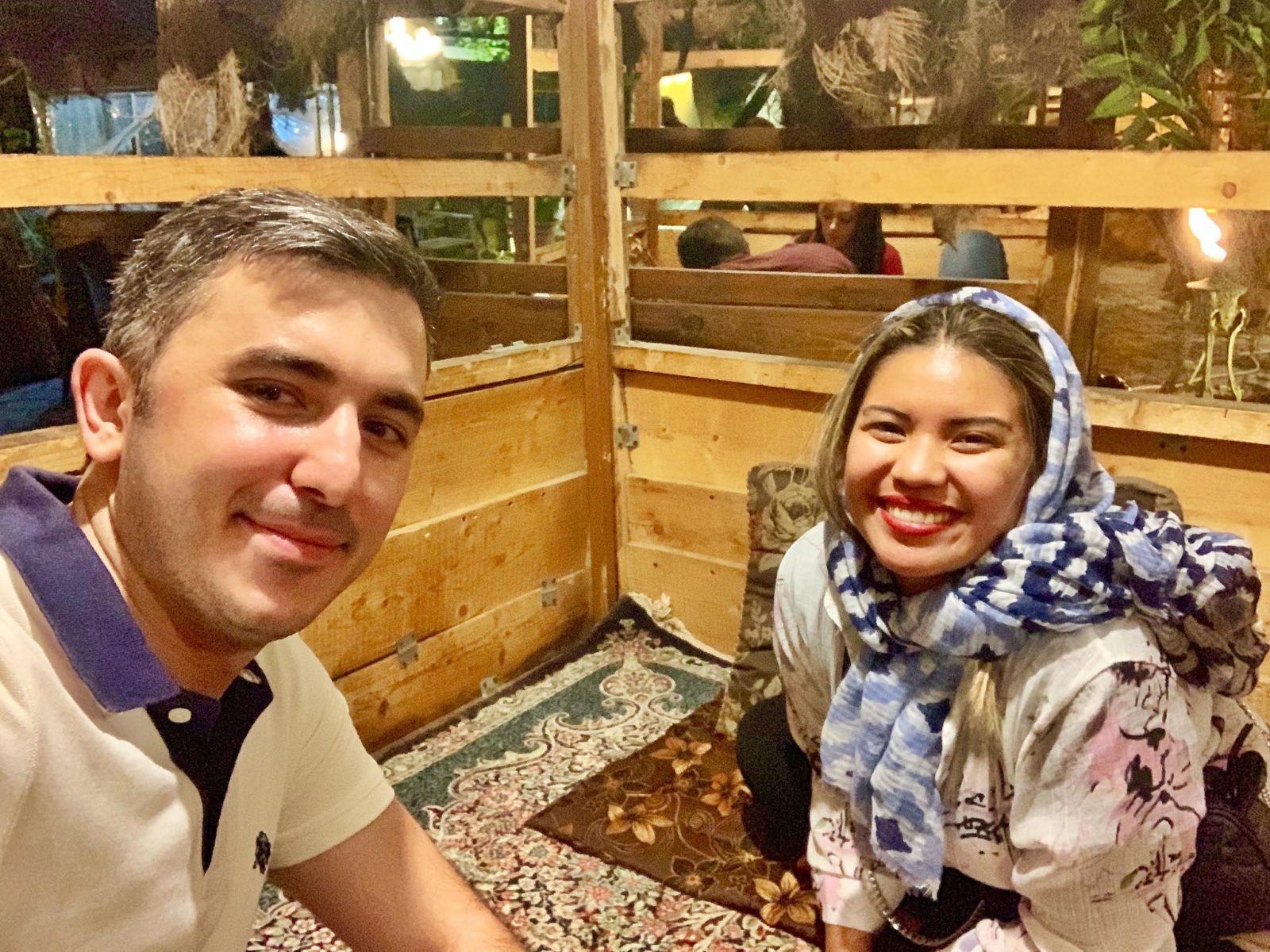
Places we visited in Mashhad:
- Jaghargh Village just close to the city which is a hub for local restaurants
- Imam Reza Shrine which is believed to be one of the holiest places in the world.
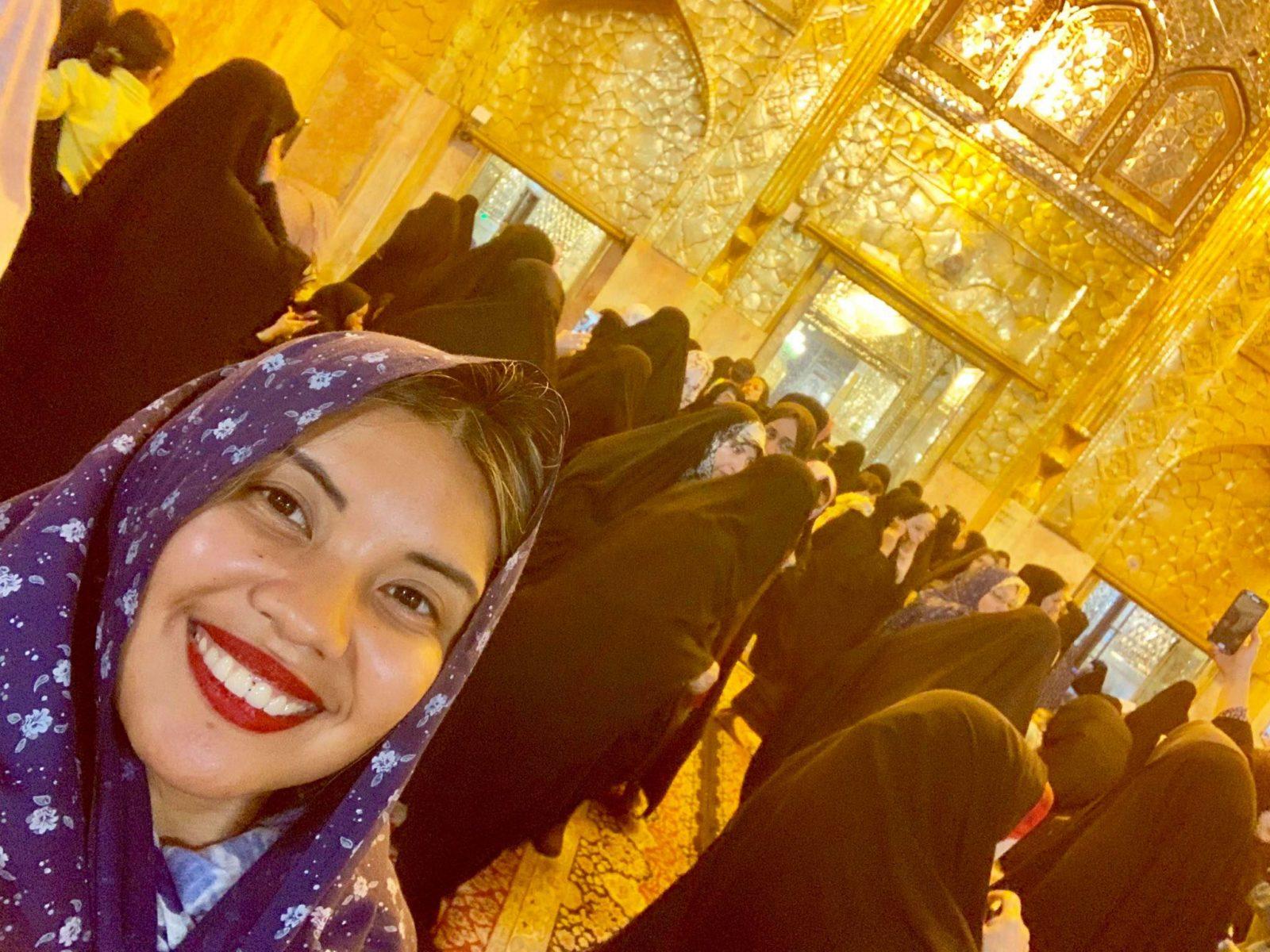
DAY 2: TRAVEL TO SHIRAZ
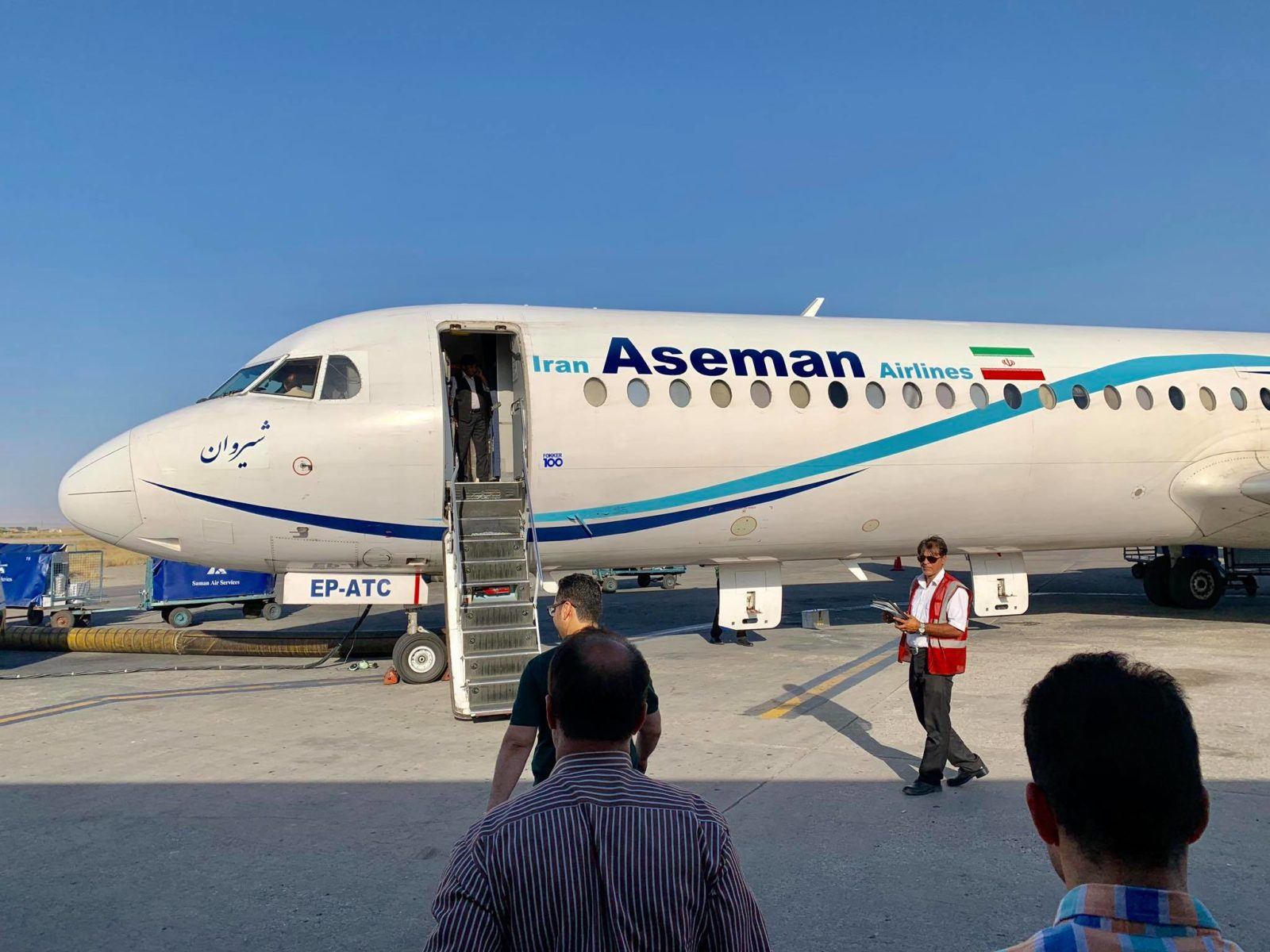
Visit Our Iran arranged my flight to Shiraz (note that foreigners can’t purchase local flights because international debit and credit cards have sanctions). It is a 2-hour flight from Mashhad.
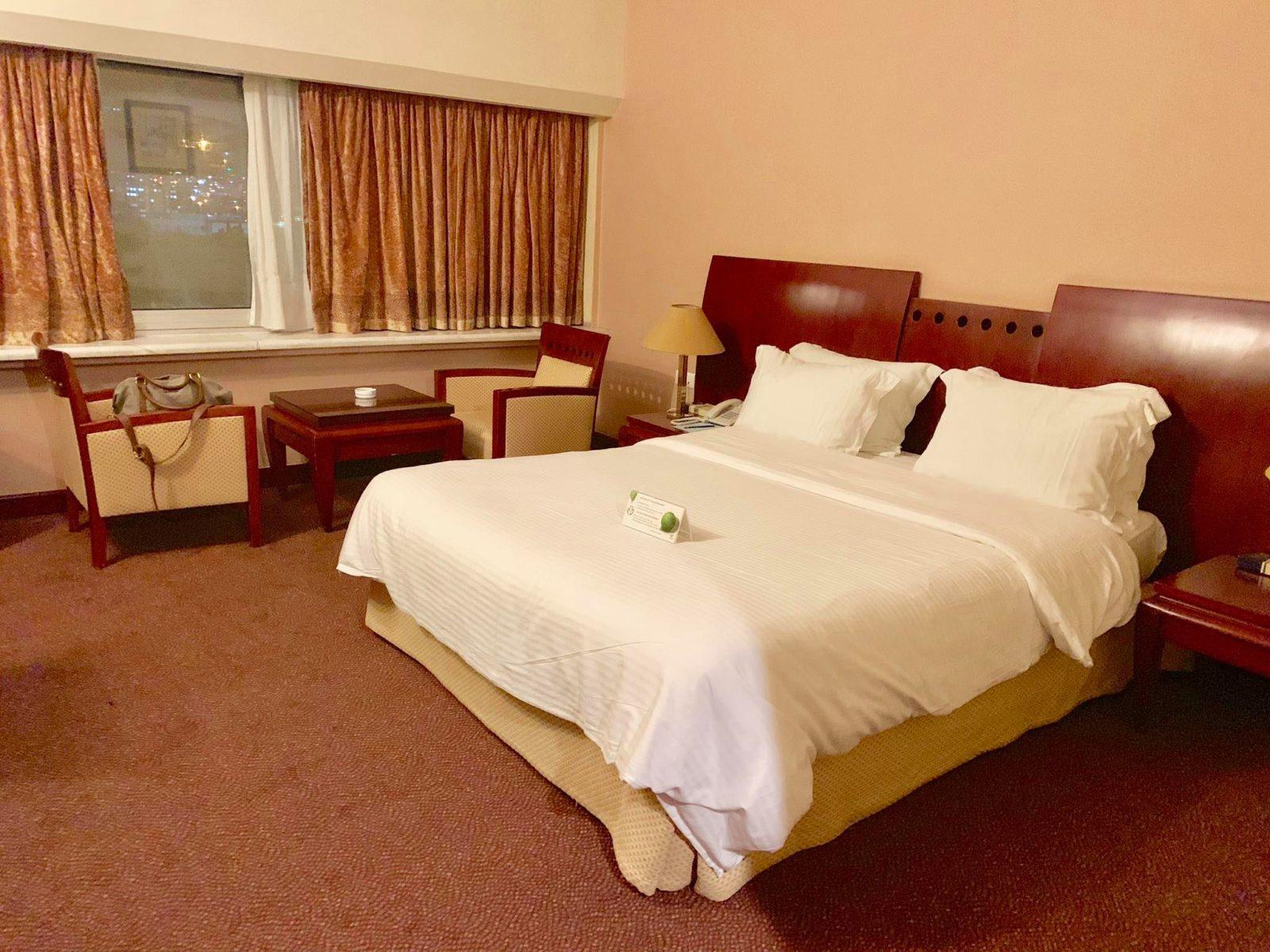
I stayed in another 5-star hotel for 2 nights (thanks to Visit Our Iran and Marcopolo Iran Touring Co so I had a really good sleep before we embarked on a once-in-a-lifetime journey.
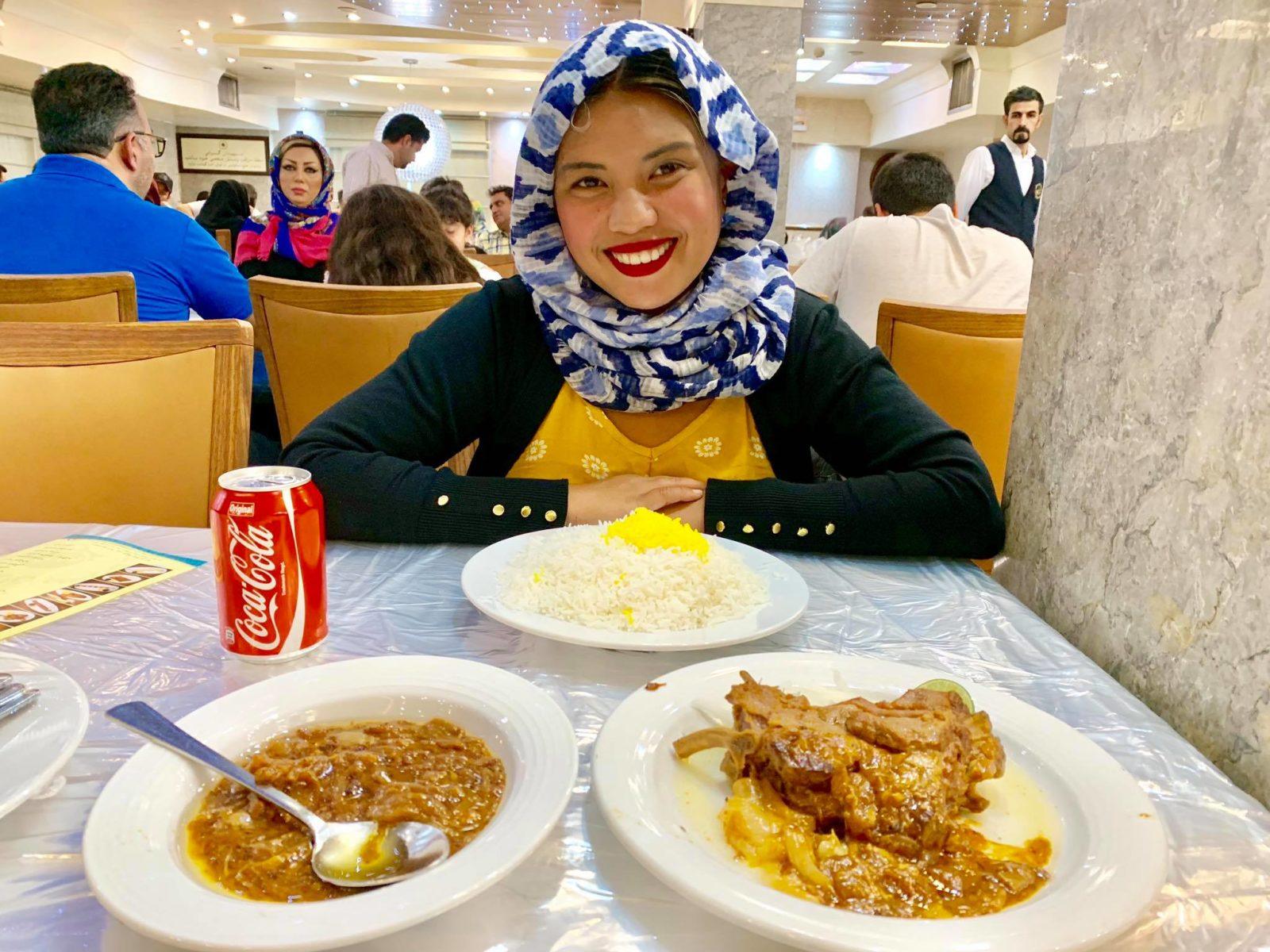
Note that before starting a group tour, I highly suggest you get a full-day rest! Traveling and moving around can be very exhausting so I always recommend you take a solid and power rest 🙂
DAY 3: EXPLORE SHIRAZ
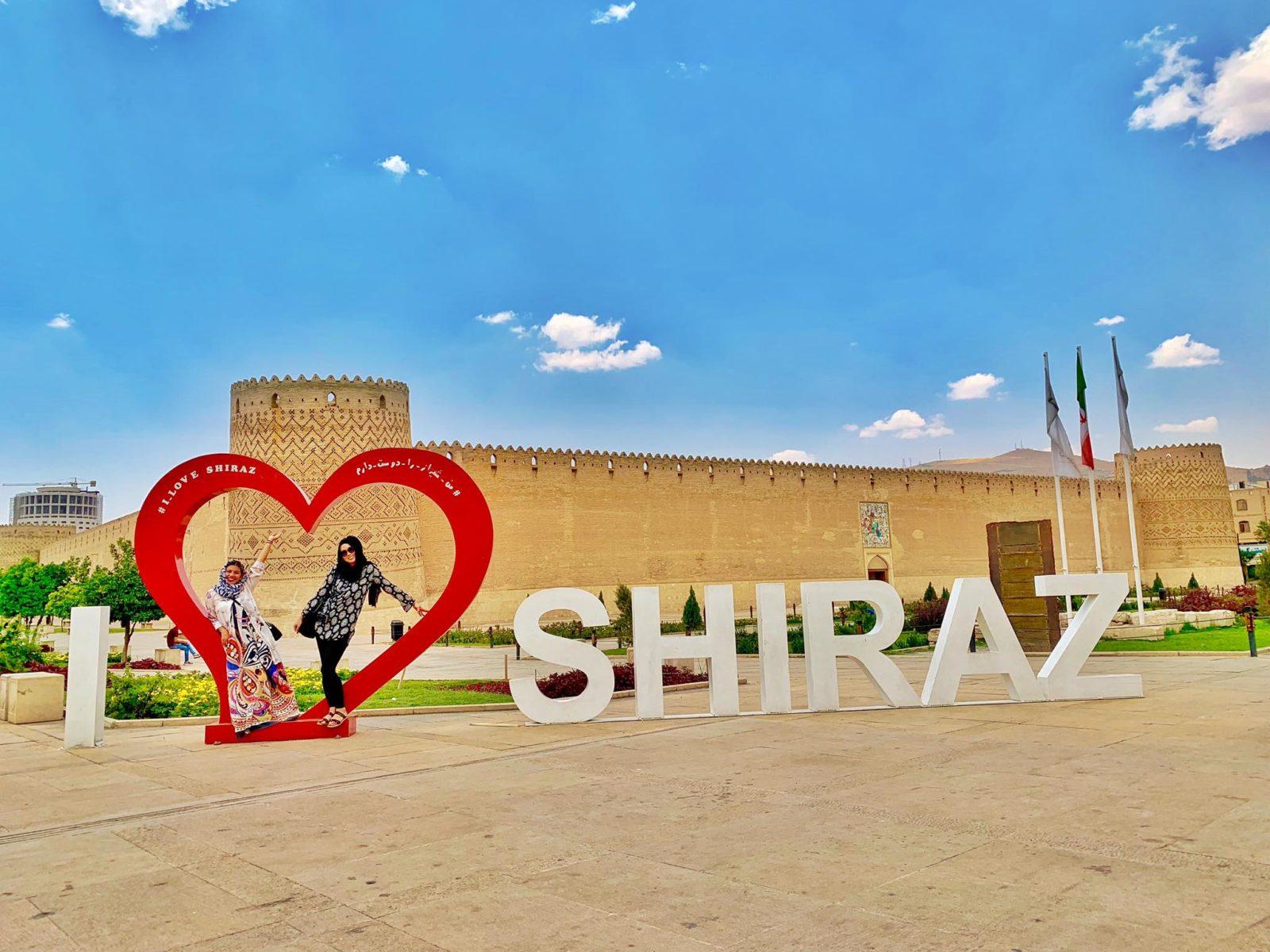
Visit Our Iran arranged a 1,500-kilometer drive for us where we explored one of the oldest cities in Ancient Persia, which is Shiraz. This is the capital of Fars Province and is now the 5th Most Populous City in Iran. We learned so much from our Tour Guide and he took us to local restaurants where we’ve tried delicious local food!
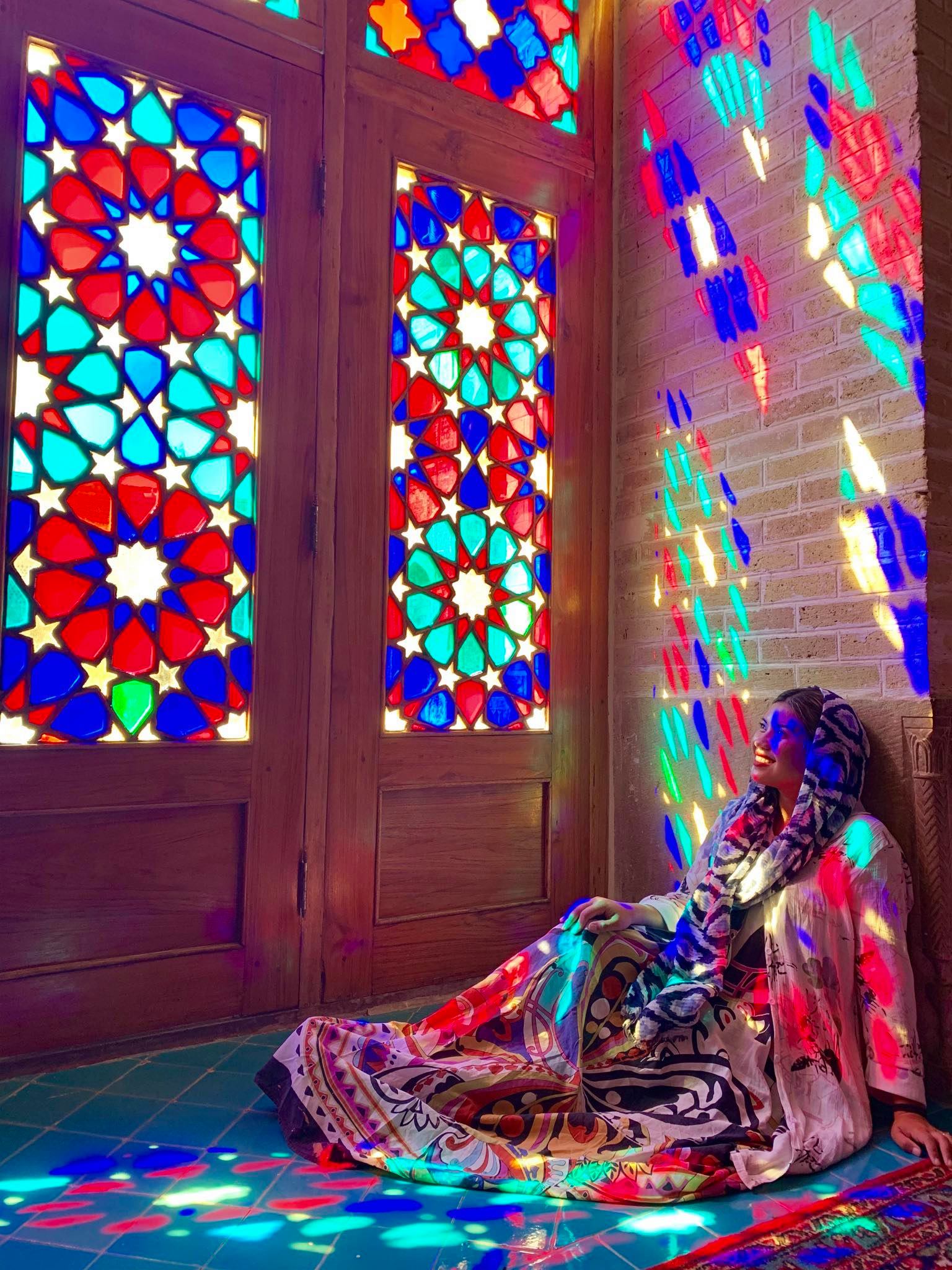
Places we visited in Shiraz:
- Nasir al Molk Mosque, also known as the Pink Mosque known for its extensive coloured glass on its facade and pink interiors
- Citadel of Karimkhan Zand which happens to be one of the most prominent architectural structures from the of Zand Dynasty
- Vakil Bazaar (main bazaar in Shiraz) where you can go shopping for Persian rugs, spices, handicrafts, etc. and see its beautiful courtyards and bathhouses
- Eram Garden which is a Historic Persian Garden where you can just watch the day go by
- Mausoleum of Hafiz built to honor the 14th Century Persian Poet Hafiz who was a native of Shiraz from birth until death
- Shah-e-Cheragh Holy Shrine which you may find underwhelming on the outside but the interior tells a fascinating story with its stained glass, ornamentation, inscriptions, and courtyard
DAY 4: DRIVE TO YAZD AND STOP ALONG VARIOUS UNESCO HERITAGE SITES
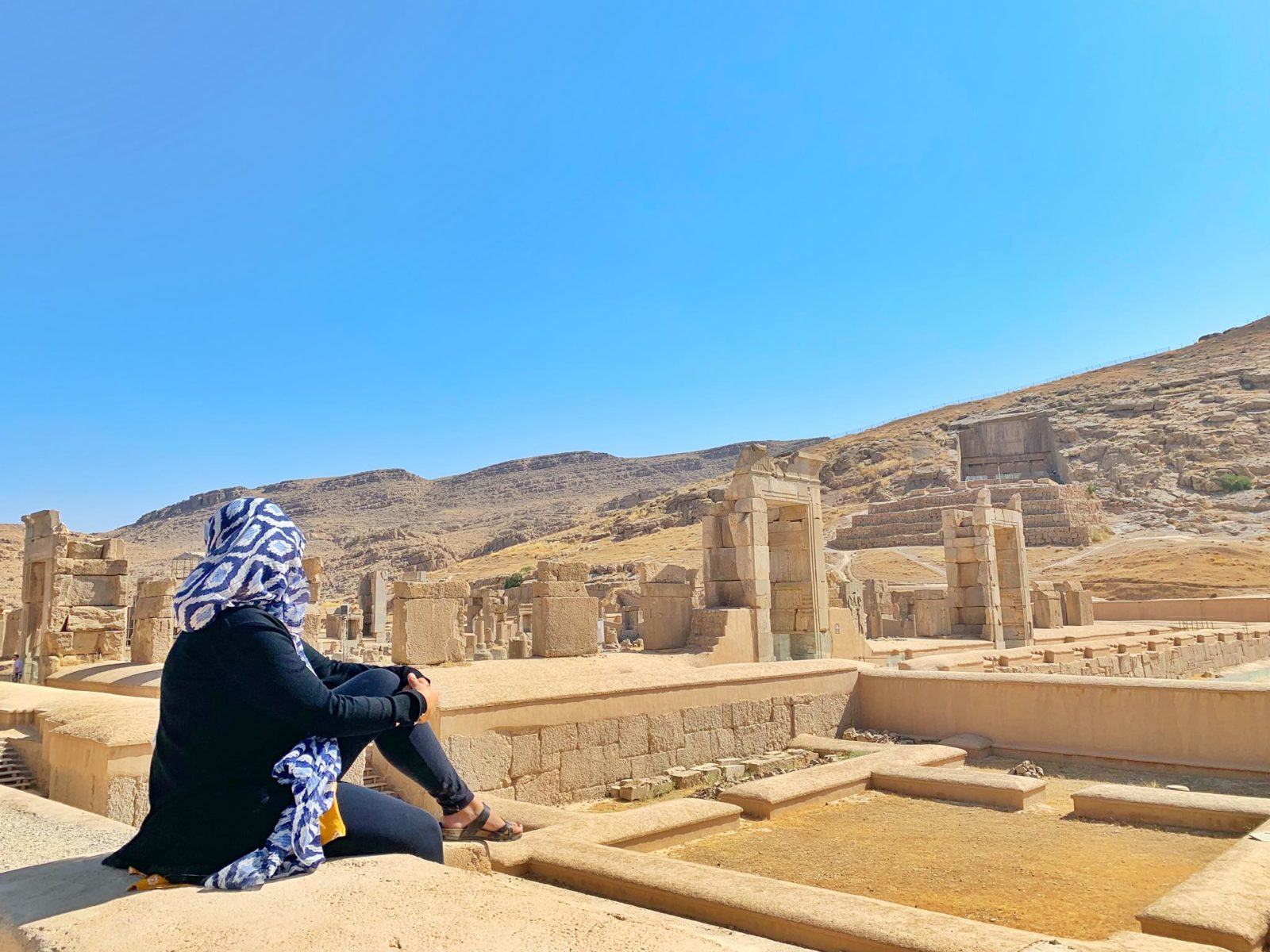
Yazd is the capital of Yazd Province and is recognized as a World Heritage Site by UNESCO. It is a beautiful city in the middle of the desert and is the center of Zoroastrianism. This is the ancient pre-Islamic religion of Iran.
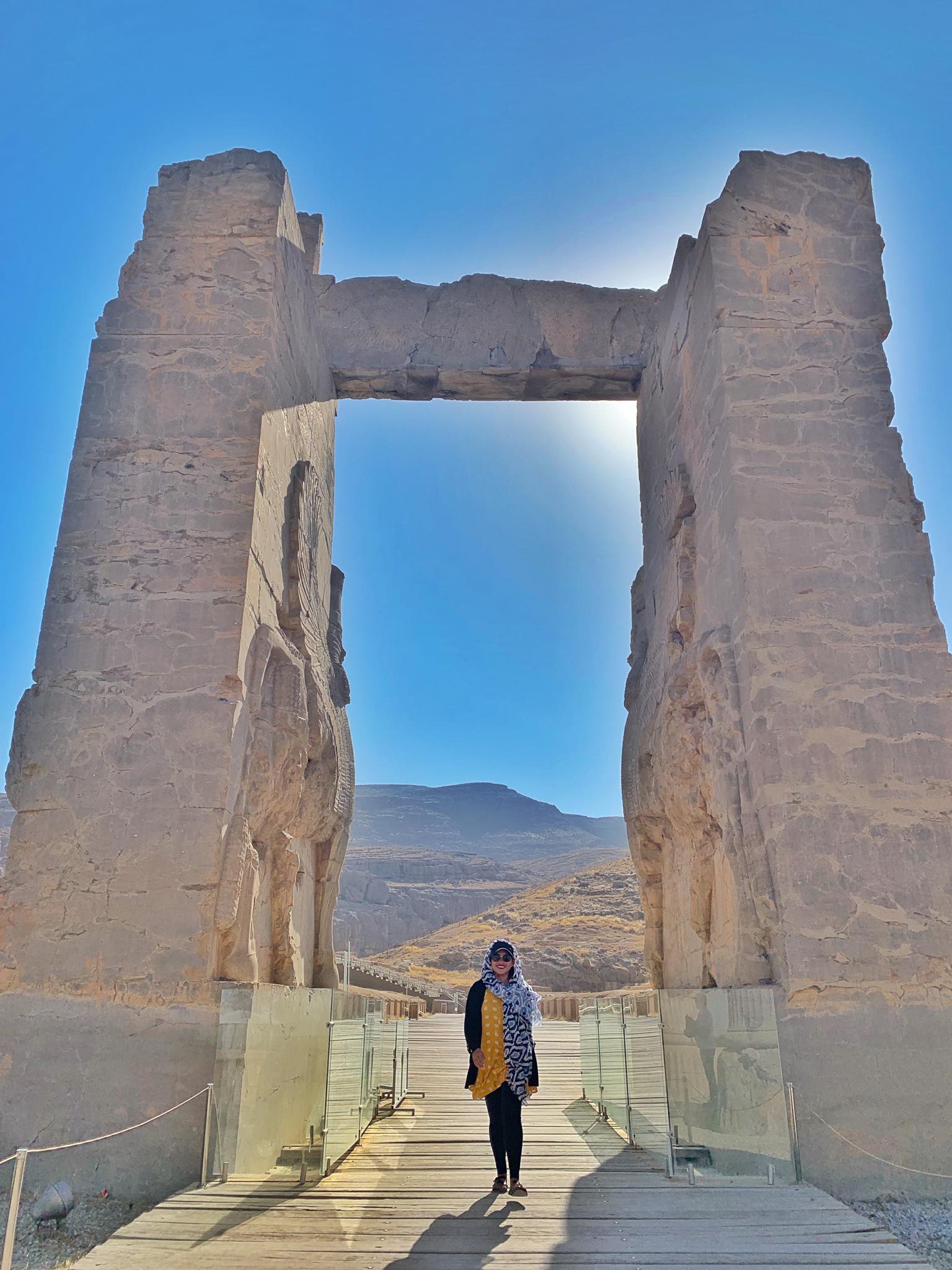
This city is home to unique Persian Architecture and this is why you shouldn’t miss this on your visit!
Places we visited in Yazd:
- Persepolis, the capital of the Achaemenid Empire which Darius I himself founded. The earliest remains of this complex structure date as far back as 51C BC.
- Pasargadae is yet another capital of the Achaemenid Empire under Cyrus the Great, who ordered its construction. It is believed that his body lies on a limestone tomb which can be found there.
- Naqsh-e Rostam is where you’ll find colossal tombs of Persian kings and their families carved on the facade of a mountain range
- Dowlat Abad Garden which is one of the oldest gardens in the city of Yazd
DAY 5: HALF-DAY TOUR AROUND YAZD AND THEN DRIVE TO ISFAHAN
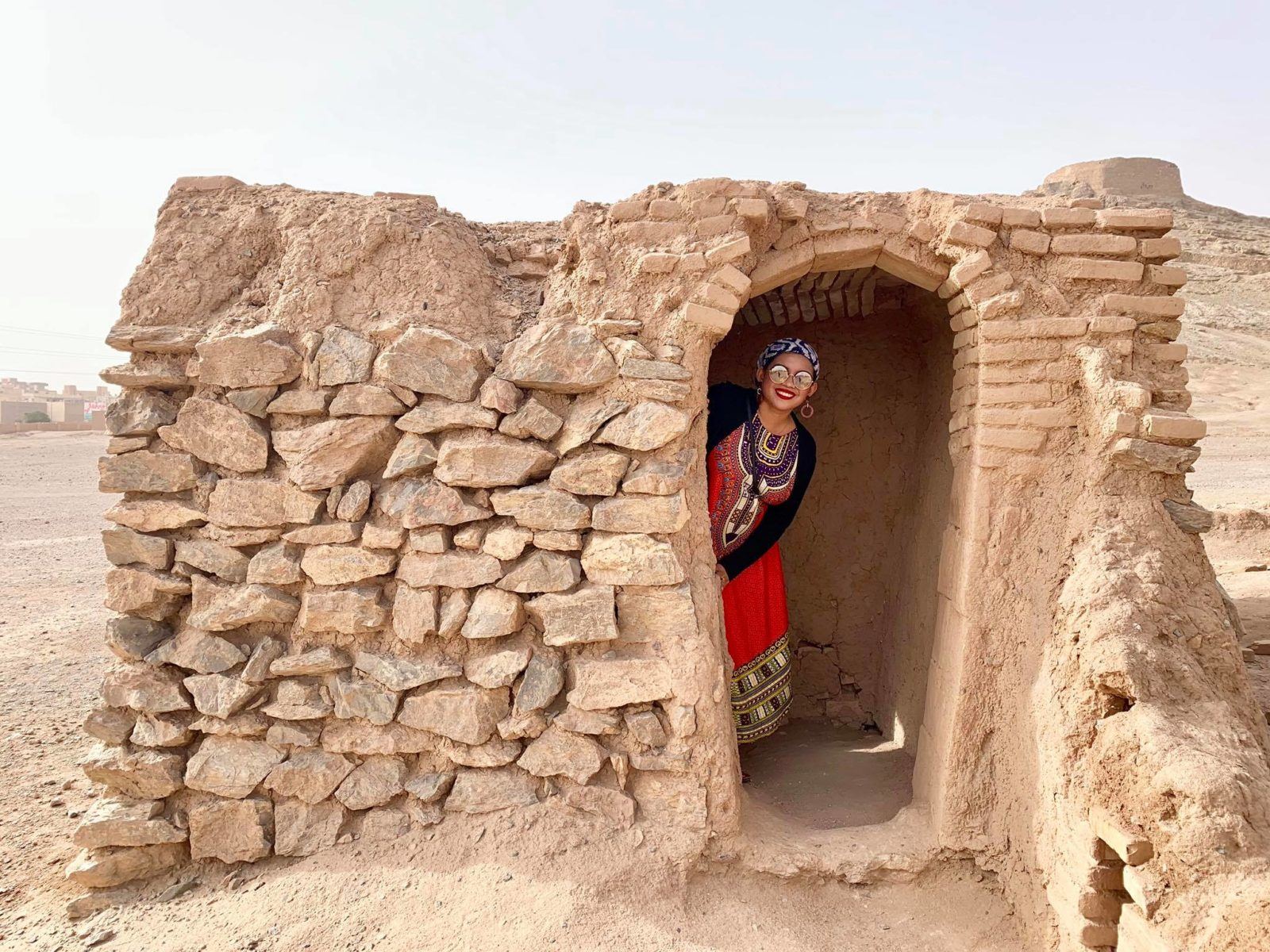
There are so many interesting things to see and do in Yazd so one full-day isn’t enough! We had another half-day tour to see more of the City and then drove to Isfahan in the afternoon.
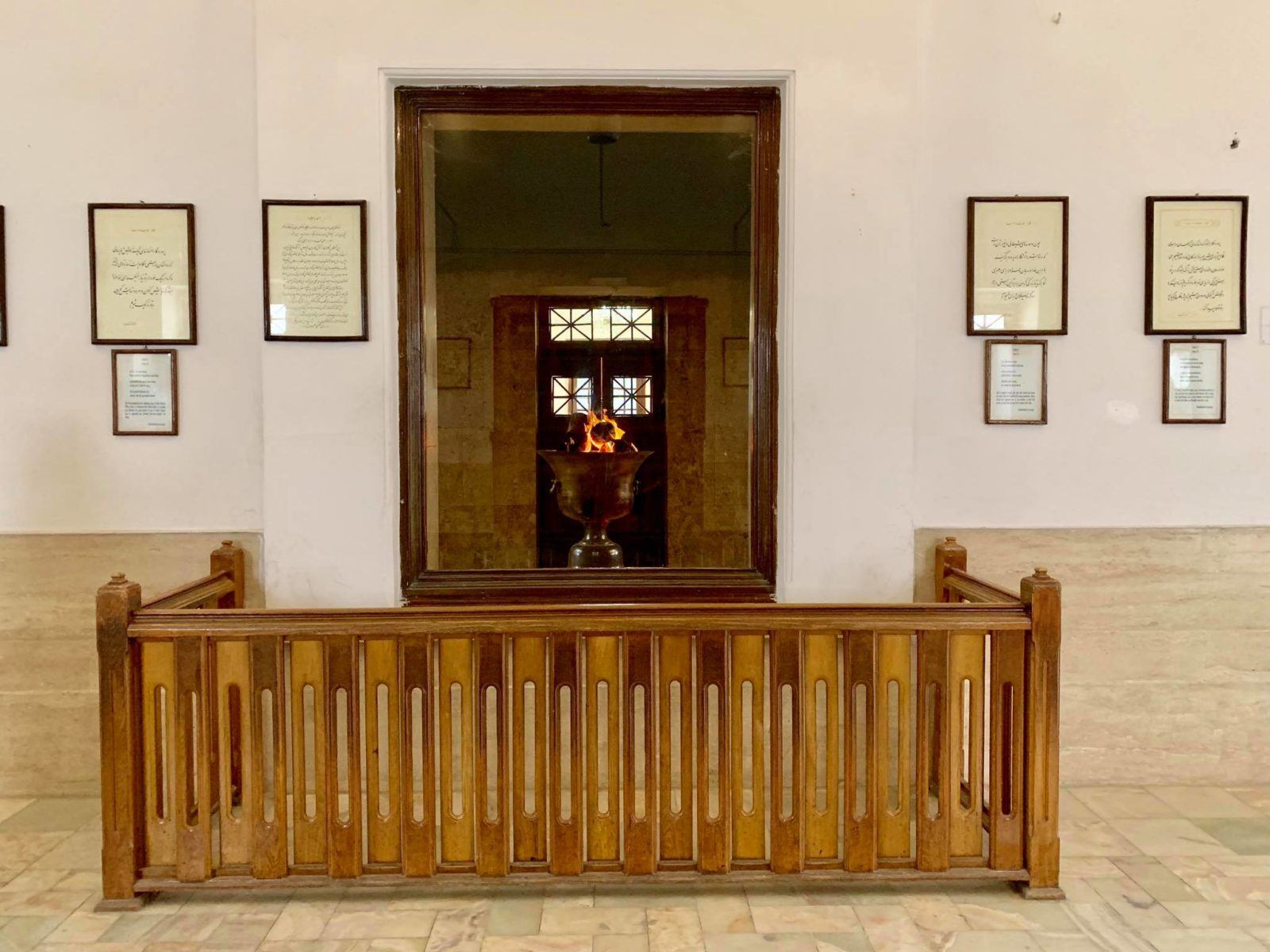
More places we visited in Yazd:
- Towers of Silence which was built by the Zoroastrians for dead bodies to be exposed to birds, a process called excarnation
- Fire Temple, a place of worship for the Zoroastrians
- Jami Mosque, built and rebuilt from 771 to the 20th Century due to several destructions, this is one of the oldest standing mosques in Iran
- Amir Chakhmaq Square, one of the most outstanding buildings in Yazd, considering its importance and aesthetics
Stopovers on the way to Isfahan:
- The Historical Bridges of Si-O Se, one of the symbols of Isfahan and Khajou, described as the city’s finest bridge
DAY 6: FULL DAY TOUR AROUND ISFAHAN
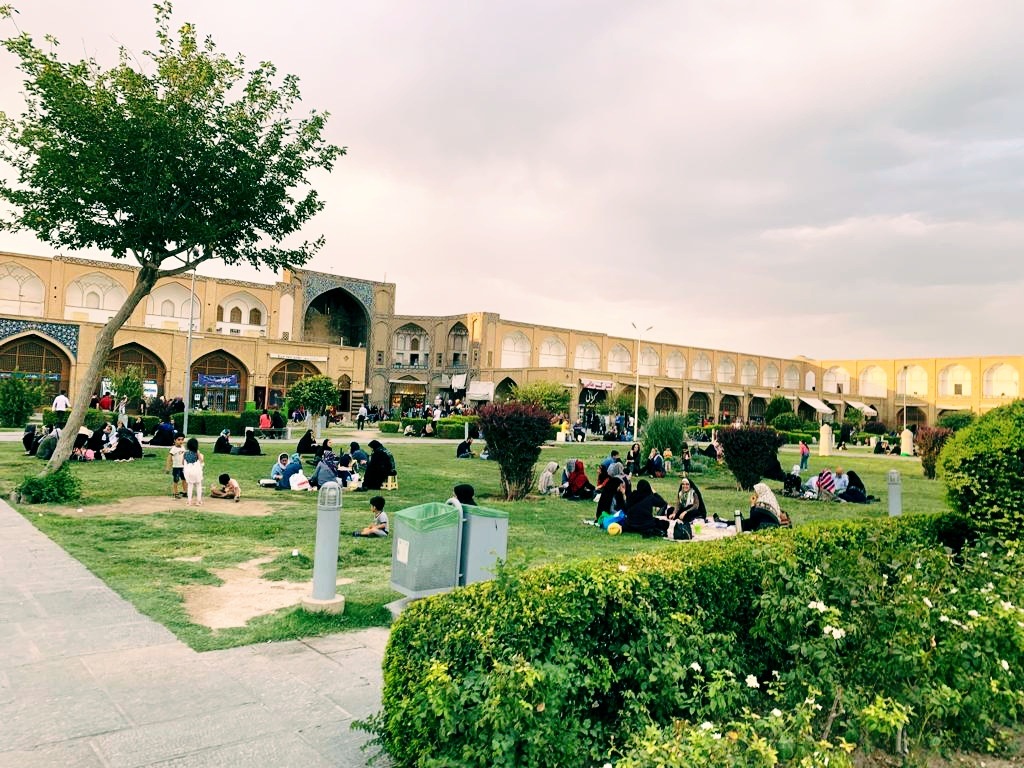
Isfahan is the capital of Isfahan Province and is famous for its Perso–Islamic architecture, tree-lined boulevards, covered bridges, palaces, tiled mosques, and minarets. This is one of the tourist’s favorite stops and you’ll know exactly why with my photos :p
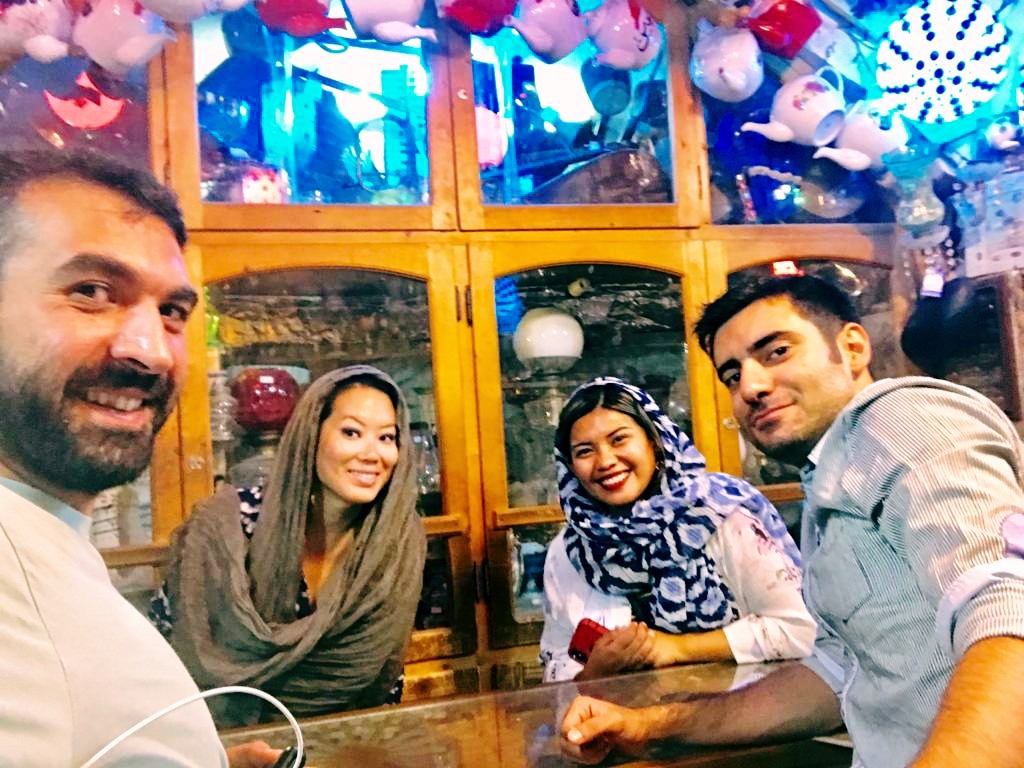
Places we visited in Isfahan:
- Naghsh-i Jahan Complex, the most famous attraction in Isfahan City with its blue-tiled mosaics. It is al where you can also find the Sheikh Lotf Allah Mosque and the Ali Qapou Palace
- Abbasi Mosque, regarded as one of the masterpieces of Persian Architecture during the Islamic era
- Qeysarie Bazaar where you can go shopping for handicrafts, copper, jewelry, carpets, etc.
- Chehel Sotun Palace, a Pavillion for entertainment and guests of Shah Abbas II, the 7th Safavid King of Iran
DAY 7: DRIVE TO TEHRAN AND HAVE STOPOVERS AT KASHAN
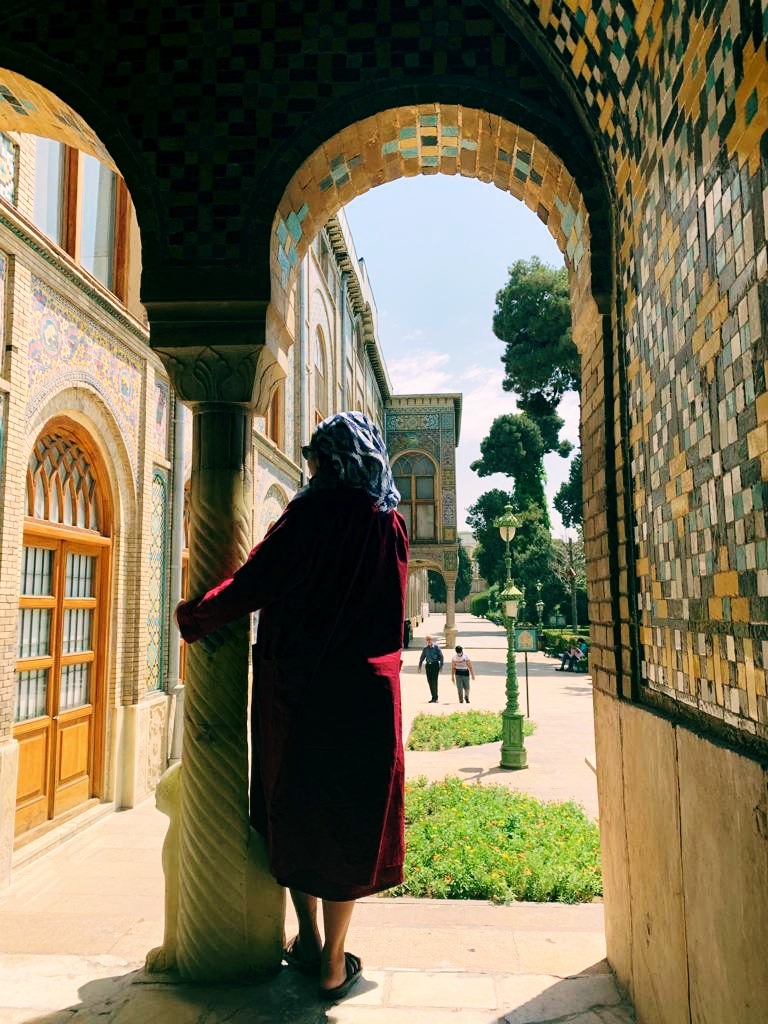
This time, we left early in the morning to drive to Tehran. En route, we stopped at Kashan which is another City in Isfahan Province. Archaeological conquests show that this city dates as far back to the Elamite period of Iran.
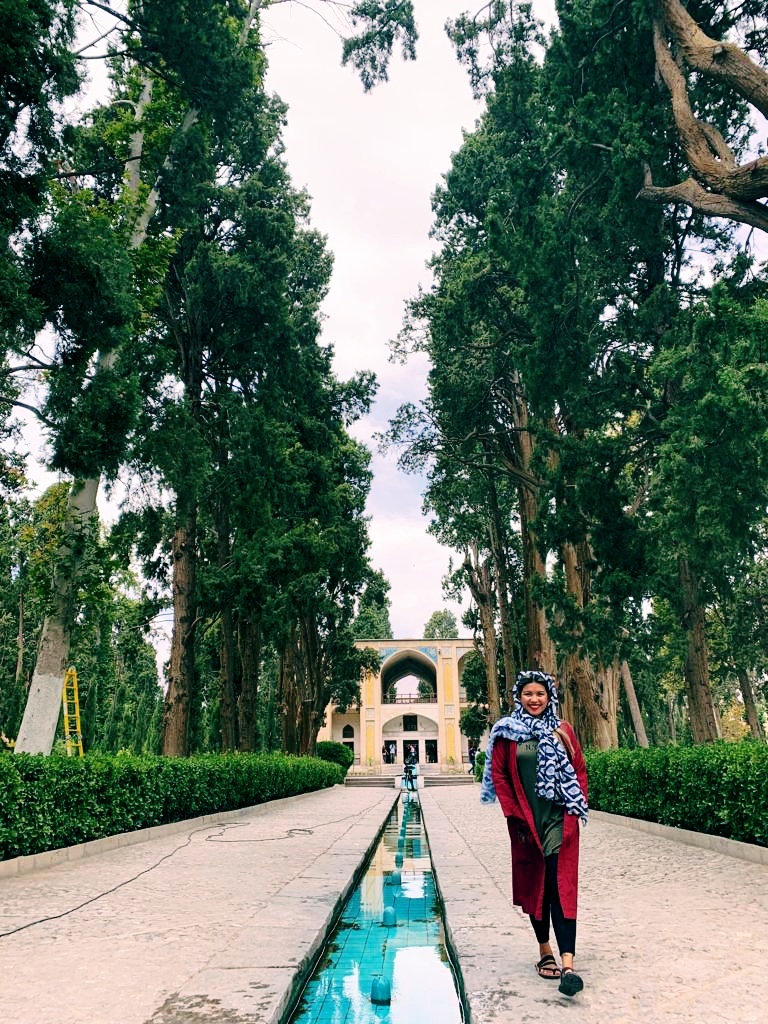
Places we visited in Kashan:
- Fin Garden, where you’ll find Kashan’s Fin Bath, where Amir Kabir , the Qajarid chancellor, was murdered by an assassin
- The Holy Shrine at Qom, considered to be one of the most valuable Islamic architecture in the world
DAY 8: FULL DAY TOUR AROUND TEHRAN
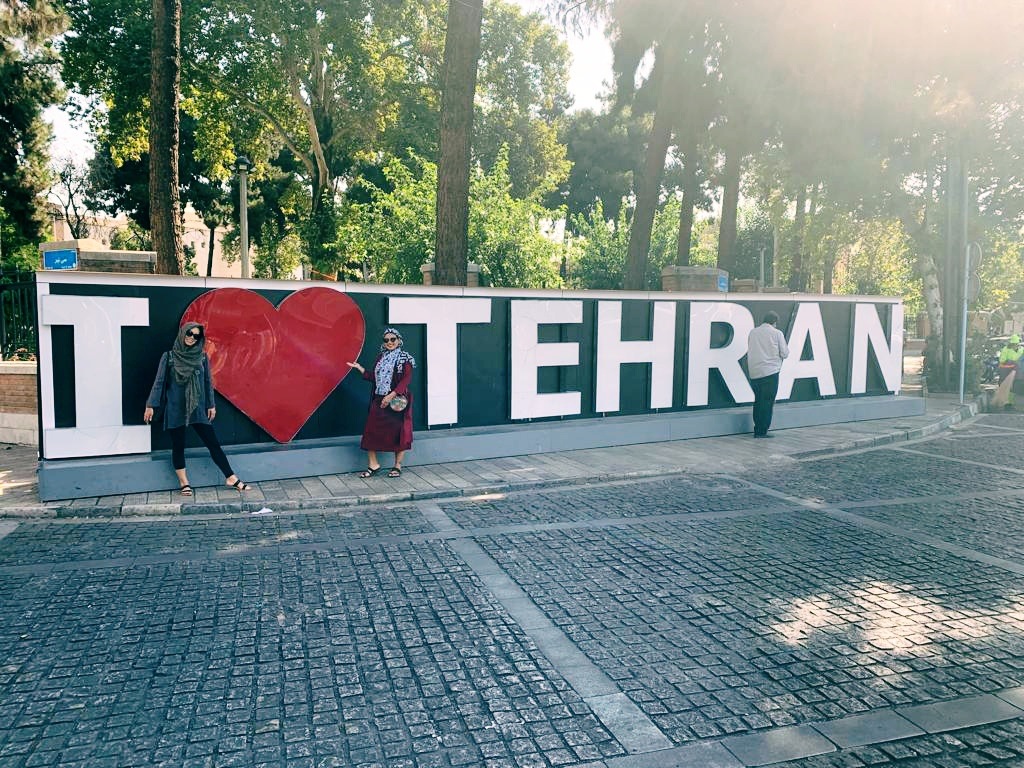
Tehran is the capital of Iran and Tehran Province. This is the most populous city in Iran and Western Asia so expect this day to be a little chaotic.
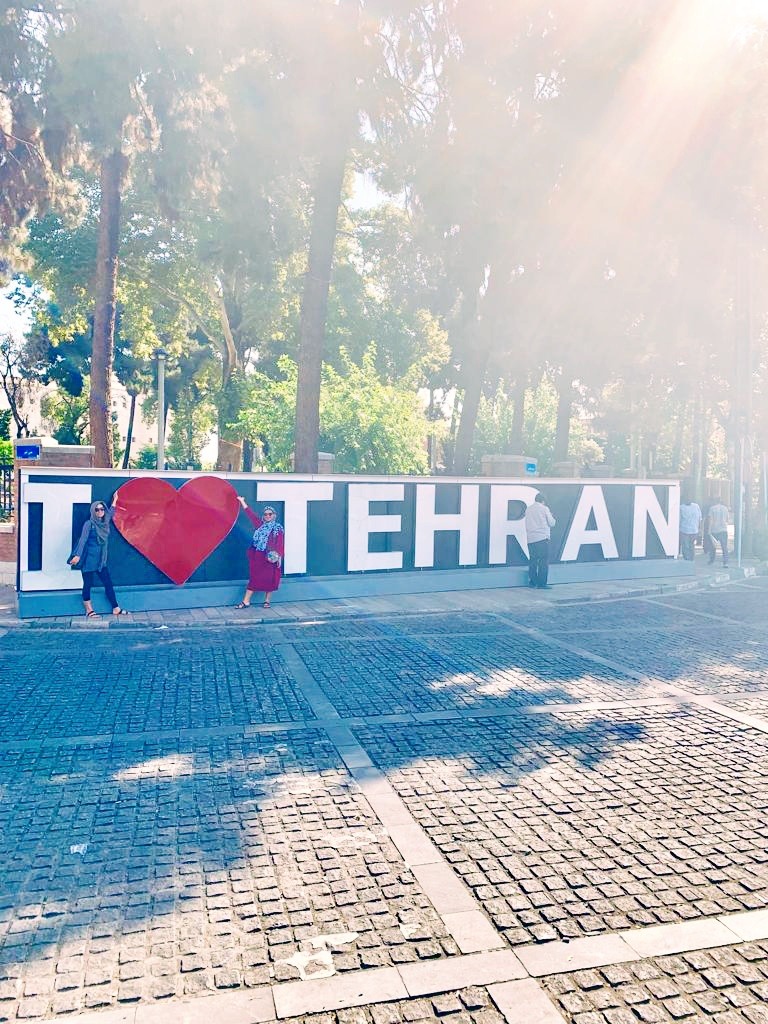
Places we visited in Tehran:
- Golestan Palace where you’ll see royal buildings, vast gardens, and collections of Iranian crafts from the 18th and 19th Century
- The Archeological Section of the National Museum where you’ll find interesting pieces of ceramics, pottery, and carvings mostly from the excavations made in Persepolis, Shush, Rey, etc.
- Tajrish Bazaar, an interesting bazaar where you’ll find a lot of local food from fresh fruits and vegetables, herbs, sweets, homemade sauces, kebab, etc.
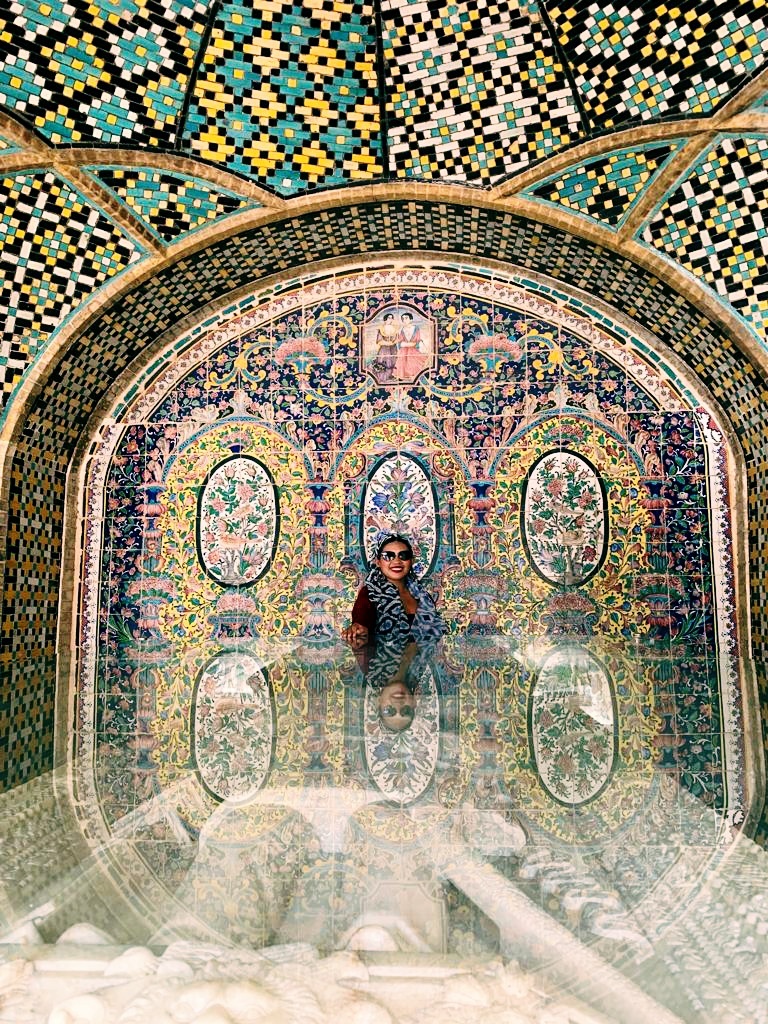
Niavaran Palace, home of royal textile works and museum for clothes, Niavaran exclusive Palace, Ahmad Shahi Palace, Sahebgharanieh Palace, Hoz-khane museum, Jahan Nama’ Museum, garden, etc.
DAY 9: FLY BACK HOME
After 8 days of traveling around this beautiful country, immersing in their culture, indulging in their local delicacies, learning about their religion, and seeing their historical monuments, it’s now time to go home or move forward with our trips.
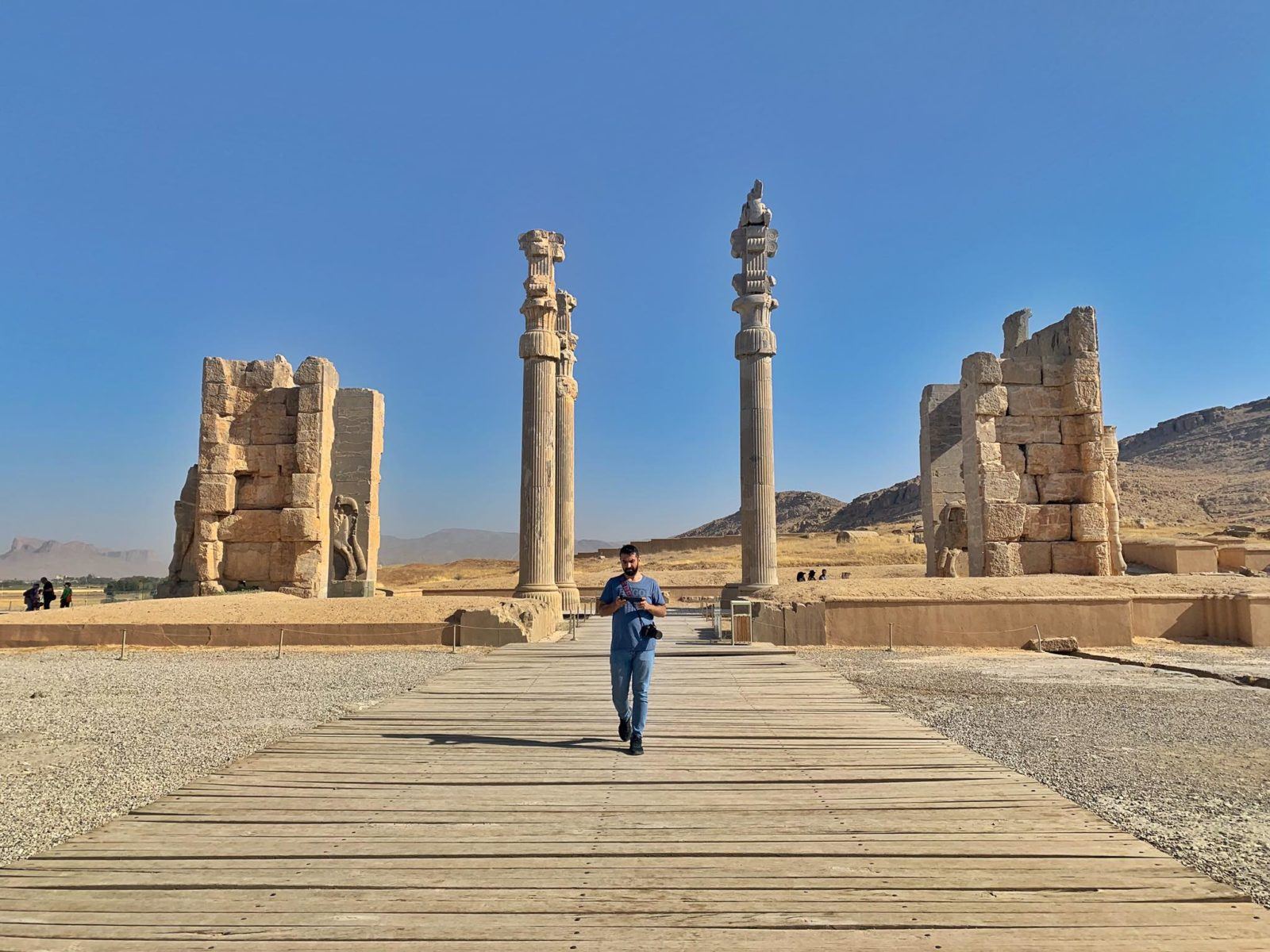
Visit Our Iran made sure we experience and see Iran’s best-kept gems! With our knowledgeable Tour Guide, we got to see the country from the eyes and perspective of a local and we learned so much from him! The Iranians are one of the most generous and sincere people I’ve met throughout my entire journey.
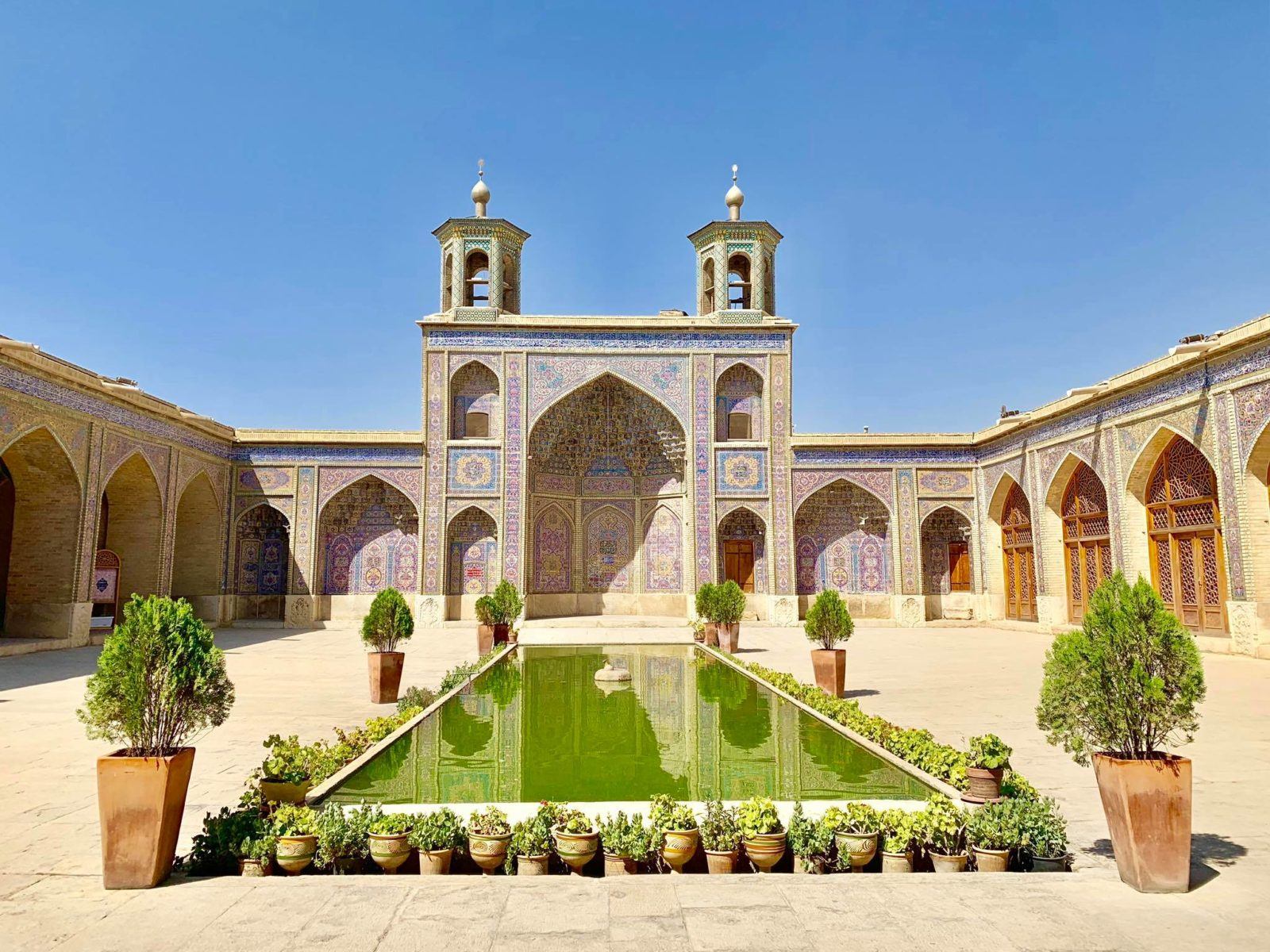
If you want to visit this country stress-free, then I suggest booking your trip with Visit Our Iran . Their tours are all-inclusive, which means that you don’t have to worry about Accommodations, Transportations (except international flights), Entrance Fees for places named on the itinerary, Mid-day refreshment, and English speaking Tour Guide . Get a 10% Discount when you use our code TWOMONKEYSTRAVELVOI2019 .
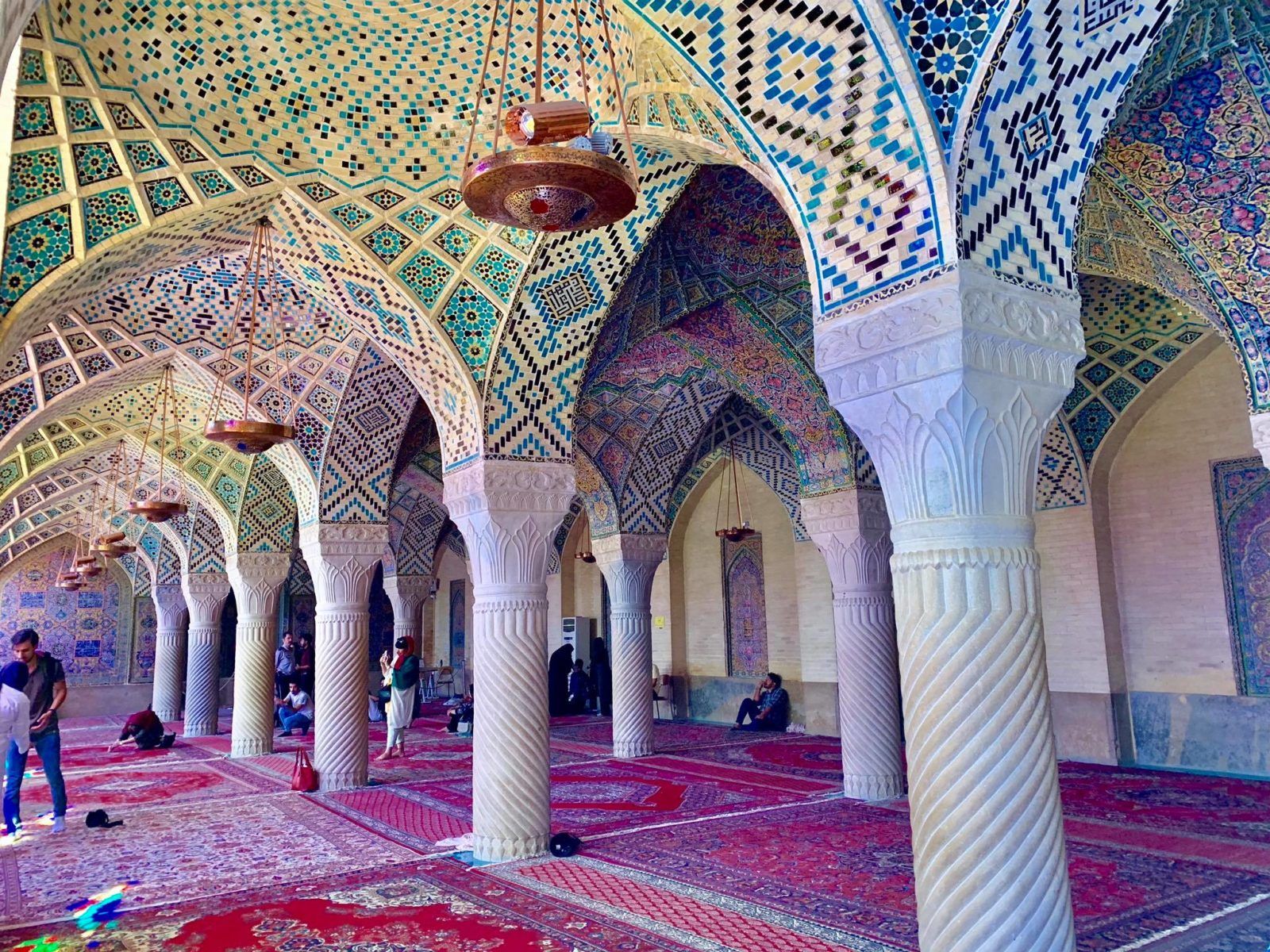
Related Article: Iran Travel Guide for Filipinos
P.S. Don’t forget to leave your driver and tour guide some tips! Enjoy your vacation! 🙂

Are you on Pinterest? Pin these!
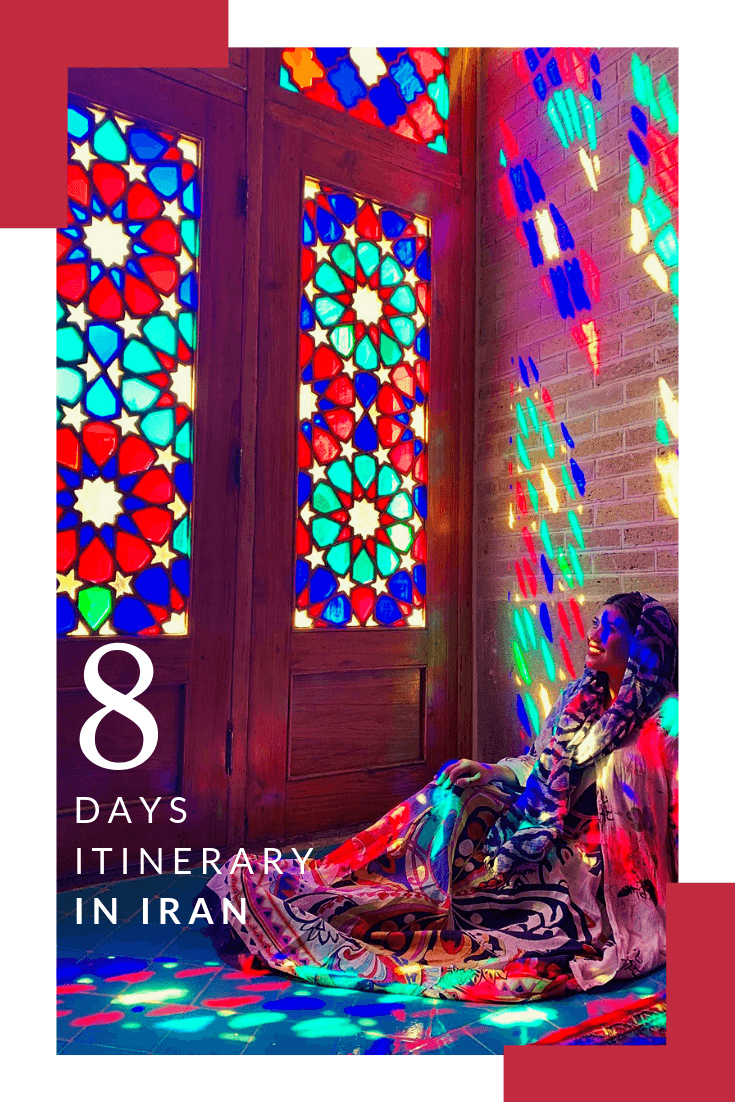
Leave a Reply Cancel reply
Your email address will not be published. Required fields are marked *
This site uses Akismet to reduce spam. Learn how your comment data is processed .
3 thoughts on “ Travel Guide to Iran – My 8 Day Cultural Itinerary Visiting Cities of Mashhad, Shiraz, Yazd, Ishfahan and Tehran ”
Come posso prenotare servizi di viaggio per l’Iran?
Wow, helpful information, I will travel to Iran in April, how can I book hotels in Tehran?
You can book with visitouriran directly! =) You can also get a discount! =)
COPYRIGHT DISCLAIMER: Many of the articles on Two Monkeys Travel Group are guest posts by a number of Approved Contributors and are hosted by Two Monkeys Travel Group. Approved Contributors control their own work and post freely to our site. This includes all text and images that they use within their own work. All contributors are instructed to follow internationally recognised copyright and intellectual property guidelines. Two Monkeys Travel Group takes its own responsibilities very seriously, so if you feel that any part of this work is abusive in any way, please send us an email so that we can investigate - [email protected]
DISCLOSURE: Please note that some of the links above are affiliate links. So when you make a purchase we sometimes make a small commission, at no extra cost to you. The cost to you remains the same, sometimes even cheaper if we have negotiated a special deal for our readers.We use all of the companies we have listed here and that’s why they are in this list, but of course we need to keep Two Monkeys Travel Group running as well as it can, which is exactly what you’re helping with if you do decide to buy or book something through an affiliate link! If you have any more questions about the companies we use or any other companies you’re looking at, just email us and we’ll be happy to help. Please see our full disclaimer page for more information.
Written by Kach Umandap
Founder of Two Monkeys Travel Group. Since 2013, Kach has visited all the 7 continents (including Antarctica) and 151 countries using her Philippines Passport. In 2016, she bought a sailboat and went on sailing adventures with her two cats - Captain Ahab & Little Zissou in the Caribbean for 2 years. She now lives in Herceg Novi, Montenegro where she's enjoying her expat life and living on a gorgeous Stonehouse. She writes about her experiences traveling as a Filipina traveler with a PHL Passport. Also tips on backpacking trips, luxury hotel experiences, product reviews, sailing & adventure travel.
Theme Parks of Quintana Roo: Xcaret, Xel-Há, and Xplor
Take off in style: simple flight booking & entertainment, madrid: why this city is so worth visiting, top places to visit to see penguins in their natural habitat, unveiling the perks of flight deal aggregators: are you getting the most out of your travel budget, related posts, 13 different types of insurance policies in the philippines, commuting in the philippines – foreigner’s guide to manila p2p buses, hong kong foodie guide: 10 must try food and drinks in hong kong, why robinson maldives – adults only resort is the best all-inclusive resort for couples, previous post, top 7 epic music festivals in california 2022, hotel manquehue – luxury in puerto montt, patagonia, subscribe to our newsletter.
Receive tips on how you can live a sustainable long-term travel lifestyle!
- First Name *
- Phone This field is for validation purposes and should be left unchanged.

Can Americans Travel to Iran? A Complete Guide to Safety Tips and Visa Requirements
Yes, Americans can travel to Iran with a valid U.S. passport. U.S.-Iranian dual nationals must use Iranian passports to enter and exit Iran. The Iranian government does not recognize dual nationality, treating U.S.-Iranian dual nationals as solely Iranian citizens for travel purposes.
Safety tips are crucial for a secure trip. Americans should remain aware of local laws and customs. Iran has strict regulations, especially regarding dress codes and interactions between men and women. Travelers must respect these norms to avoid legal issues. Additionally, it is advisable to stay updated on travel advisories issued by the U.S. State Department. These advisories provide valuable information on potential risks and political situations that might affect travel plans.
Navigating language barriers can pose challenges. Farsi is the official language in Iran. While English might be understood in larger cities, learning basic Farsi phrases can improve interactions with locals. It also demonstrates respect for the host country.
Next, understanding cultural nuances can significantly enhance the travel experience. Learning about Iranian etiquette, cuisine, and historical sites contributes to a more enriching and respectful visit.
Can Americans Legally Travel to Iran?
Yes, Americans can legally travel to Iran. However, there are specific restrictions and requirements that travelers must meet.
U.S. citizens face a complex travel environment when considering a trip to Iran. The U.S. government does not have formal diplomatic relations with Iran, which complicates travel logistics. Americans must apply for a visa through the Iranian government, and it is typically required to be part of a guided tour. Travelers also need to adhere to various legal and safety considerations, such as avoiding certain areas and being aware of cultural norms. Additionally, there are risks associated with travel to Iran that travelers should carefully evaluate.
What Are the Current Travel Restrictions for Americans Visiting Iran?
Americans currently face significant travel restrictions when visiting Iran, primarily due to U.S. governmental regulations and diplomatic tensions between the two countries.
- U.S. Department of State Advisory Levels
- Visa Requirements
- Local Laws and Customs
- Health and Safety Concerns
- Impact of Sanctions
The restrictions and guidelines surrounding travel to Iran by Americans encompass several critical areas that require thorough understanding.
U.S. Department of State Advisory Levels : The U.S. Department of State provides travel advisories that categorize risk levels for different countries. The advisory for Iran typically maintains a high level of alert, warning travelers to reconsider travel due to risks such as arbitrary arrest. The specific advisory level may change based on recent developments in the region.
Visa Requirements : Americans are required to obtain a visa before entering Iran. The visa application process includes various steps, such as obtaining an invitation from a sponsor in Iran, often a travel agency or an Iranian resident. It is essential to note that travel to certain areas in Iran may be restricted or require special permissions.
Local Laws and Customs : Understanding local laws is critical for American travelers in Iran. The country has strict cultural and legal norms, including dress codes and rules regarding public behavior. Violating these norms can lead to serious repercussions, including detention.
Health and Safety Concerns : Health precautions are essential for traveling to Iran. Travelers should be aware of potential health risks and ensure they have necessary vaccinations before departure. Availability of western medical care may be limited, emphasizing the importance of travel insurance.
Impact of Sanctions : U.S. sanctions against Iran affect various aspects of travel, including financial transactions. This makes it difficult for Americans to access banking services in Iran or purchase goods with U.S. bank cards while abroad.
Relying on accurate information and thorough preparation is vital for Americans planning to travel to Iran. It is recommended that potential travelers stay updated on governmental travel advisories and consult with experienced travel agencies for the most current information and guidance.
What Are the Visa Requirements for Americans Traveling to Iran?
Americans traveling to Iran need a visa to enter the country. Visa applications require specific documents and adherence to certain regulations.
Visa Types: – Tourist Visa – Business Visa – Student Visa – Cultural Visa
Necessary Documentation: – Valid Passport – Visa Application Form – Recent Photographs – Invitation Letter (for certain visas) – Proof of Accommodation
Processing Time: – Standard Processing (up to 2 months) – Expedited Processing (time varies)
Travel Restrictions: – Limitations on movement within specific regions – Banned activities for American travelers
Application Process: – Contacting the Iranian embassy – Submitting documents online or in person
While these requirements provide a general overview, personal experiences may differ based on individual circumstances.
Visa Types: The visa types for visiting Iran include several categories tailored to different purposes. The Tourist Visa is common for leisure travel. The Business Visa facilitates commercial activities and requires a sponsorship from an Iranian entity. The Student Visa supports educational pursuits and necessitates an admission letter from an Iranian educational institution. The Cultural Visa promotes exchange programs and cultural events.
Necessary Documentation: The necessary documentation to apply for an Iranian visa generally includes a valid passport with at least six months of validity remaining. The visa application form must be filled out accurately. Recent passport-sized photographs are required, usually two. An invitation letter may be needed for business and cultural visas, stating the purpose of the visit. Proof of accommodation, such as a hotel reservation, is essential to confirm travel plans.
Processing Time: The processing time for Iranian visas can take considerable time. Standard processing may take up to two months, depending on the type of visa and embassy workload. For those in urgent situations, expedited processing is available, though the time frame can vary and is not guaranteed.
Travel Restrictions: The travel restrictions for Americans in Iran may include limitations on visiting certain areas, especially those deemed sensitive. Activities such as participating in protests or engaging in political discussions are discouraged. Travelers must exercise caution and consider local customs and regulations.
Application Process: The application process for obtaining a visa generally starts with contacting the Iranian embassy or consulate. Applicants should gather all necessary documents and submit them either online or in person. Following submission, it is important to monitor the application status and be prepared for any additional information requests.
How Can Americans Apply for an Iranian Visa?
Americans can apply for an Iranian visa by following a specific process that includes gathering required documents, submitting an application, and possibly obtaining an invitation letter.
First, Americans must prepare necessary documents such as a valid passport, completed visa application form, and passport-sized photos. The passport should have at least six months of validity remaining. The application form can usually be found on the Iranian embassy or consulate’s website. Photos must meet specific requirements, typically similar to U.S. passport photos.
Next, they may need to acquire an invitation letter if applying for a tourist visa. This letter is often a requirement for Americans because of the U.S.-Iran relationship. The invitation letter usually comes from a tour operator or a person residing in Iran. It should include details regarding the applicant’s travel plans and personal information.
After gathering the documents, Americans must submit their application to the nearest Iranian embassy or consulate. It’s advisable to contact the embassy beforehand to confirm specific submission requirements, as they can vary. Once submitted, applicants will need to pay a visa fee, which can differ depending on the type of visa and processing speed.
Processing times may range from a few days to several weeks, so applicants should plan accordingly. Tracking the application status is often possible through communication with the embassy or consulate.
Finally, upon approval, applicants will receive their visa, which allows them to travel to Iran. It’s essential to adhere to all regulations during travel, as violation of visa conditions can lead to legal issues.
What Safety Precautions Should Americans Take When Traveling to Iran?
When traveling to Iran, Americans should take several safety precautions to ensure a secure and positive experience.
- Register with the U.S. Embassy.
- Avoid political demonstrations.
- Follow local laws and customs.
- Limit travel to less politically sensitive areas.
- Keep a low profile and avoid drawing attention.
- Use trusted transportation options.
- Keep personal information private.
- Purchase travel insurance.
These precautions highlight key considerations for American travelers in Iran. Understanding and adhering to these guidelines can help ensure safety while enjoying the unique culture and history of Iran.
Register with the U.S. Embassy : Registering with the U.S. Embassy in Iran is a critical safety step for American travelers. This registration enables the embassy to provide assistance in emergencies and to keep travelers updated on risks and safety information. The State Department advises American travelers to enroll in the Smart Traveler Enrollment Program (STEP). This system keeps travelers informed through alerts and helps the embassy reach them during a crisis.
Avoid Political Demonstrations : Avoiding political demonstrations is essential for safety. Political protests can occur unexpectedly and may turn violent. The U.S. State Department advises keeping away from all demonstrations, as even peaceful protests can escalate. Staying informed about local events will help travelers navigate their surroundings safely.
Follow Local Laws and Customs : Following local laws and customs is crucial when visiting Iran. Iran has strict laws regarding dress code, behavior, and social interactions. Women, for example, must wear a headscarf and loose-fitting clothing. Non-compliance can lead to fines or other penalties. Familiarity with local customs enhances mutual respect and helps avoid unnecessary trouble.
Limit Travel to Less Politically Sensitive Areas : Limiting travel to less politically sensitive areas minimizes potential risks. Certain regions in Iran are more stable and welcoming to tourists, while others may harbor tensions. Researching travel advisories from the U.S. State Department can help travelers make informed decisions about where to go.
Keep a Low Profile and Avoid Drawing Attention : Keeping a low profile and avoiding attention can enhance safety for American travelers. This includes dressing modestly, refraining from discussing sensitive topics, and not displaying signs of wealth. By blending in, travelers can often avoid unwanted scrutiny or confrontation.
Use Trusted Transportation Options : Using trusted transportation options is vital for security. Public transportation may not always meet safety standards. Utilizing recognized taxi services or rideshare apps ensures a safer travel experience. Researching local transportation options can provide valuable insights into the safest choices.
Keep Personal Information Private : Keeping personal information private helps safeguard travelers. Discussing details about nationality, occupation, or political views may attract unwanted attention. It’s advisable to engage in general conversations and maintain discretion about sensitive topics.
Purchase Travel Insurance : Purchasing travel insurance is a preventive measure that can alleviate worries. Travel insurance can cover cancellations, medical emergencies, and other unexpected situations. Review different policies carefully to choose the best coverage suited for the trip.
In summary, preparing adequately and understanding the local environment can significantly improve safety while traveling to Iran.
Are There Specific Areas or Situations Americans Should Avoid in Iran?
Yes, there are specific areas and situations that Americans should avoid in Iran. Travelers should exercise caution in politically sensitive zones and regions with a history of unrest. Popular tourist areas like Tehran, Isfahan, and Shiraz are typically safe, but monitoring news and guidance from authorities is crucial.
The safety landscape in Iran varies significantly between urban and rural areas. Major cities often have police presence and tourist infrastructure, which provides a level of safety. In contrast, border regions and areas near unrest, such as Baluchistan and the Kurdish regions, carry higher risks. Visitors may experience significant differences in cultural norms and government regulations, which may affect personal safety and behavior expectations.
The positive aspect of visiting Iran includes the opportunity to explore rich cultural heritage and historical sites. According to a report from the World Tourism Organization, Iran welcomed over 5 million tourists in 2019, reflecting its appeal as a travel destination. Travelers often experience warm hospitality and immersive cultural experiences in designated tourist centers.
On the negative side, tensions between Iran and the United States can create an unpredictable environment for American travelers. Research from the U.S. State Department indicates that U.S. citizens face potential harassment or unjust legal actions. Additionally, strict adherence to Islamic laws and cultural norms can pose challenges for Americans who may inadvertently violate local customs.
To ensure a safer travel experience, Americans should consider several recommendations. Stay updated on travel advisories from the U.S. State Department. Avoid traveling alone and seek guidance from experienced local guides. Dress conservatively, respect cultural practices, and avoid political discussions. Engaging with fellow travelers and expatriates can provide valuable insights into safe areas and practices.
What Cultural Differences Should Americans Be Aware of When Traveling to Iran?
Americans traveling to Iran should be aware of several significant cultural differences. Noticing and respecting these distinctions can enhance the travel experience and foster positive interactions.
- Dress code expectations
- Gender interaction norms
- Hospitality customs
- Religious observances
- Communication styles
Understanding these cultural differences is essential for Americans visiting Iran.
Dress Code Expectations : Americans must adhere to the dress code in Iran, which requires women to wear a hijab and loose-fitting clothing. Men should avoid shorts and sleeveless tops. This regulation ensures respect for Iranian cultural values and Islamic law.
Gender Interaction Norms : In Iran, public interactions between men and women are often more conservative than in the United States. Touching or physical displays of affection in public are generally considered inappropriate. For instance, men and women typically do not shake hands unless a woman offers her hand first.
Hospitality Customs : Iranians are known for their hospitality. Visitors should expect warm welcomes and may be offered food and drinks. It is polite to accept offers, as declining can be seen as impolite or disrespectful.
Religious Observances : Iran is an Islamic Republic, and religious practices are deeply interwoven into daily life. Travelers should be respectful during prayer times and avoid eating or drinking in public during Ramadan, the month of fasting. It demonstrates an understanding of local customs.
Communication Styles : Communication in Iran may be more indirect than in the United States. Iranians often use nuanced language to convey meaning. This style fosters politeness, and Americans should be attentive to both verbal and non-verbal cues to understand conversations fully.
By recognizing and respecting these cultural differences, Americans can enjoy a more enriching and respectful travel experience in Iran.
How Can Americans Respect Local Customs While Visiting Iran?
Americans can respect local customs while visiting Iran by observing cultural norms, dressing modestly, understanding local etiquette, and learning about significant religious practices.
Observing cultural norms: Understanding and acknowledging customs is vital for respectful interactions. For instance, greetings might include a handshake, but only when initiated by male to male. Females generally avoid physical contact. According to a study by Khosravi and Ebrahimzadeh (2018), embracing local traditions can enhance interpersonal relationships during visits.
Dressing modestly: Modesty is highly valued in Iranian culture. Women should wear loose-fitting clothing that covers arms and legs, along with a headscarf in public places. Men should also avoid shorts and sleeveless shirts. The Iranian government mandates dress codes, and adherence contributes to a positive visitor experience, as noted in a report by the Iranian Cultural Heritage, Handicrafts and Tourism Organization (2019).
Understanding local etiquette: Politeness is essential in Iranian interactions. It is customary to offer refreshments to guests and engage in small talk before discussing other matters. Showing respect for elders is equally important. A 2020 study published in the Journal of Cross-Cultural Psychology highlights that understanding such nuances can substantially improve communication effectiveness.
Learning about significant religious practices: Iran is predominantly Islamic, and visitors should be aware of prayer times and religious observances. Visitors should avoid scheduling activities during Friday prayers. Engaging respectfully with Islamic traditions shows appreciation for local culture. A survey by the American Institute of Iranian Studies (2021) indicates that understanding religion improves cross-cultural understanding.
By following these guidelines, Americans can enhance their travel experience and foster goodwill while visiting Iran.
How Can Americans Stay Up-to-Date on Travel Advisories for Iran?
Americans can stay up-to-date on travel advisories for Iran by regularly checking official government sources, monitoring news updates, subscribing to travel alert services, and engaging with travel forums.
Official government sources: The U.S. Department of State provides travel advisories for different countries, including Iran. This information includes safety and security updates, health alerts, and entry requirements. Checking their website regularly is essential for receiving the latest updates.
News updates: Major news outlets often report on geopolitical situations and changes in travel advisories. Staying informed through credible news sources can help Americans understand any evolving conditions in Iran which may affect travel plans.
Subscribe to travel alert services: Various travel-related websites and organizations offer alert services that notify users of specific changes in travel advisories. Subscribing to such services ensures immediate information about any critical updates regarding Iran.
Engage with travel forums: Online travel forums allow travelers to share experiences and insights regarding current situations in Iran. Websites like TripAdvisor or Lonely Planet can provide real-time advice and firsthand accounts from individuals who have recently traveled to Iran.
Being proactive in these areas ensures that Americans remain informed about travel safety while planning trips to Iran.
What Resources Are Available for Americans Planning a Trip to Iran?
Americans planning a trip to Iran can access several resources for information on safety, cultural insights, and travel logistics.
- U.S. Department of State travel advisories
- Travel guidebooks and websites
- Cultural organizations and forums
- Travel agencies specializing in Iran
- Local expatriate communities and social media groups
These resources provide a wide range of information, helping travelers make informed decisions about their journey to Iran.
U.S. Department of State Travel Advisories : The U.S. Department of State Travel Advisories offer essential information on safety for Americans traveling to Iran. They provide updates on travel restrictions, health alerts, and potential risks associated with trips. The advisory categorizes risks into different levels, aiding travelers in understanding current conditions. For example, as of October 2023, Iran is categorized under Level 4: Do Not Travel due to factors such as arbitrary detention and terrorism. This information helps travelers assess the potential dangers of their trip effectively.
Travel Guidebooks and Websites : Travel guidebooks and websites such as Lonely Planet or Rough Guides present comprehensive information about Iran’s history, culture, and attractions. These resources include practical tips for navigating local customs, cuisine, and transportation options. They often feature itineraries and recommendations for hotels and restaurants. Recent guidebooks include updated information on how to respect Islamic customs and dress codes to promote positive interactions with local people.
Cultural Organizations and Forums : Cultural organizations and forums can connect travelers with individuals who have experienced life in Iran. Organizations like the Iranian American Cultural Association may offer insights into social norms and etiquette. Online forums like Couchsurfing or Reddit are platforms for exchanging experiences and advice. These networks encourage dialogue between travelers and locals, enhancing understanding and respect for the local culture.
Travel Agencies Specializing in Iran : Travel agencies specializing in Iran can help Americans organize their trips, ensuring a smoother travel experience. These agencies provide guided tours, which include transportation, accommodation, and knowledgeable guides. They can also assist with visa arrangements and logistical challenges. Companies like Danesh Travel and Iran Doostan offer tailored packages, addressing travelers’ specific interests, whether historical, adventurous, or cultural.
Local Expatriate Communities and Social Media Groups : Local expatriate communities and social media groups serve as forums where travelers can seek advice from those living in Iran. Groups on platforms like Facebook and Instagram provide real-time information on local events, safety updates, and cultural activities. These communities often share personal experiences and recommendations, contributing to a well-rounded understanding of the local landscape and enhancing travel experiences.
By utilizing these resources, Americans can prepare adequately for their trip to Iran, ensuring both a safe and culturally enriching experience.
- Can americans travel to belarus
- Can a venezuelan travel to the us
- Can a splinter travel to your heart and kill you
- Can a person with withholding of removal travel
- Can a notary charge a travel fee
- Meet the Team
- Our Manifesto
- Work with Us
- Budget Travel
- Personal Development
- Work & Travel
- United Kingdom
- More of Europe
- Philippines
- More of Southeast Asia
- More of South America
- More of Central America
- South Korea
- More of Asia
- More of North America
- New Zealand
- Pacific Islands
- More of Oceania
- South Africa
- More of Africa
- More of the Middle East
- Travel Essentials
- Travel Gear
Home » Middle East » Iran » Backpacking Guide
Backpacking Iran Travel Guide (2024) • EPIC Budget Tips & Secrets
Salam! Planning on backpacking Iran? I had wanted to travel to Iran for years, it’s a complicated land of ancient history and underground culture, a place where the girls are beautiful and the mountains bewitching.
It is incredibly easy to hitchhike in Iran and the Couchsurfing community enables broke backpackers to travel Iran on a budget of just ten dollars a day… Actually, together with Pakistan, Iran may be one of the top unexplored budget backpacking options in the world right now.
Backpacking across Iran is getting easier and easier. With visas on arrival for Iran now available for most countries, it’s fast opening up to foreign travellers. I’ve spent a total of three months traveling in Iran over two trips, I’ve hitchhiked across the whole country, explored mountains. islands, deserts, and forests.
Why Go Backpacking in Iran
Iran is a truly incredible country through and through. From the most stunning architecture in the world, to some kick-ass nature, to some of the world’s friendliest people, there’s no shortage of reasons to explore this land.
Iran is criminally misrepresented in the media, and is actually very safe for travel. The crazy drivers are for sure the biggest danger. It’s a place where you’ll get to see historical sites dating back hundreds and thousands of years, and even make your way to a literal RAINBOW island…
What’s more, is that Iran remains very firmly OFF the beaten path. You’ll hardly find any other Westerners here, and those that you do run into are likely to be badass travellers like yourself!
Best Travel Itineraries For Backpacking Iran
Places to visit in iran, top things to do in iran (that the lonely planet won’t tell you about), backpacker accommodation in iran, iran backpacking costs, best time to travel to iran, staying safe in iran, how to get into iran, how to get around iran, working in iran, staying connected in iran, what to eat in iran, iranian culture, must try experiences when backpacking iran, final conclusions of the backpacking iran travel guide.
Iran is a big country and there is a lot to see. In case you need some help planning your trip feel free to borrow our epic itineraries.
#1 Iran Itinerary 2 Weeks : The Highlights
Presuming you are coming in by air, start your trip at the nations capital Tehran. Spend a day or two exploring Tehran’s Balistan Palace, giant bazaar and head up the Darbund. At night, rub shoulders with Iran’s youth in the fine coffee and shish shops. Don’ linger too long here though as the real magic of Iran lies elsewhere.
Next up is the mighty city of Esfahan with it’s UNESCO listed centre, market and mosques. After a few nights taking it in, take the bus to Yazd. The ancient desert of Yazd is utterly sublime and the historic centre of the Zoroastrian faith.
From Yazd, take the EPIC bus ride to Shiraz, the classical and spiritual capital of Persia. If you can get away from the city then I suggest a day trip to the mountain town of Qalat.
The last stop is Bander Abbas from where we catch a ferry towards Hormuz – Iran’s rainbow coloured island and the nations real highlight. After a few nights here take a flight from Bander Abbas back to Tehran – they can be piked up very cheaply.
Want to save money on accommodation?

The Broke Backpacker is supported by you . Clicking through our links may earn us a small affiliate commission, and that's what allows us to keep producing free content 🙂 Learn more .
We got you. For reals.
There are so many incredible places to go to in Iran and even after backpacking Iran for three months I feel like I’ve barely scraped the surface of this incredible country. Below are a few of my favourite places to check out when backpacking in Iran.
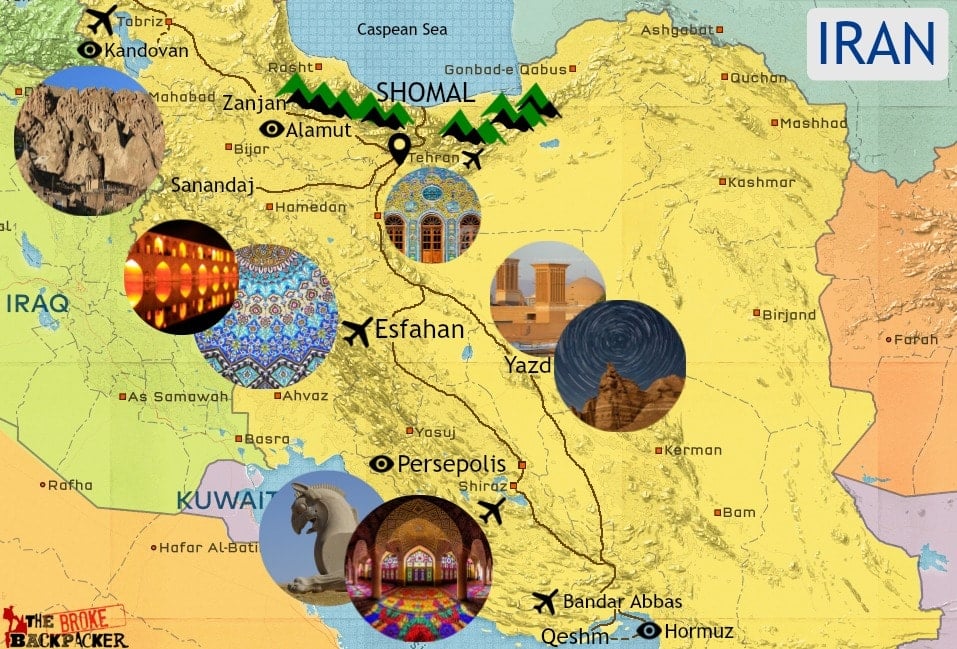
Backpacking Tabriz
If you’re crossing Iran overland from Europe, Tabriz is likely to be your first stop. With a fascinating labyrinthian bazaar and more carpets than people, Tabriz is freezing in the winter and often boiling in the summer. The Blue Mosque is an impressive first start to Iran and Tabriz is well worth stopping in for a night. It’s seven hours by bus from Tabriz to Tehran.
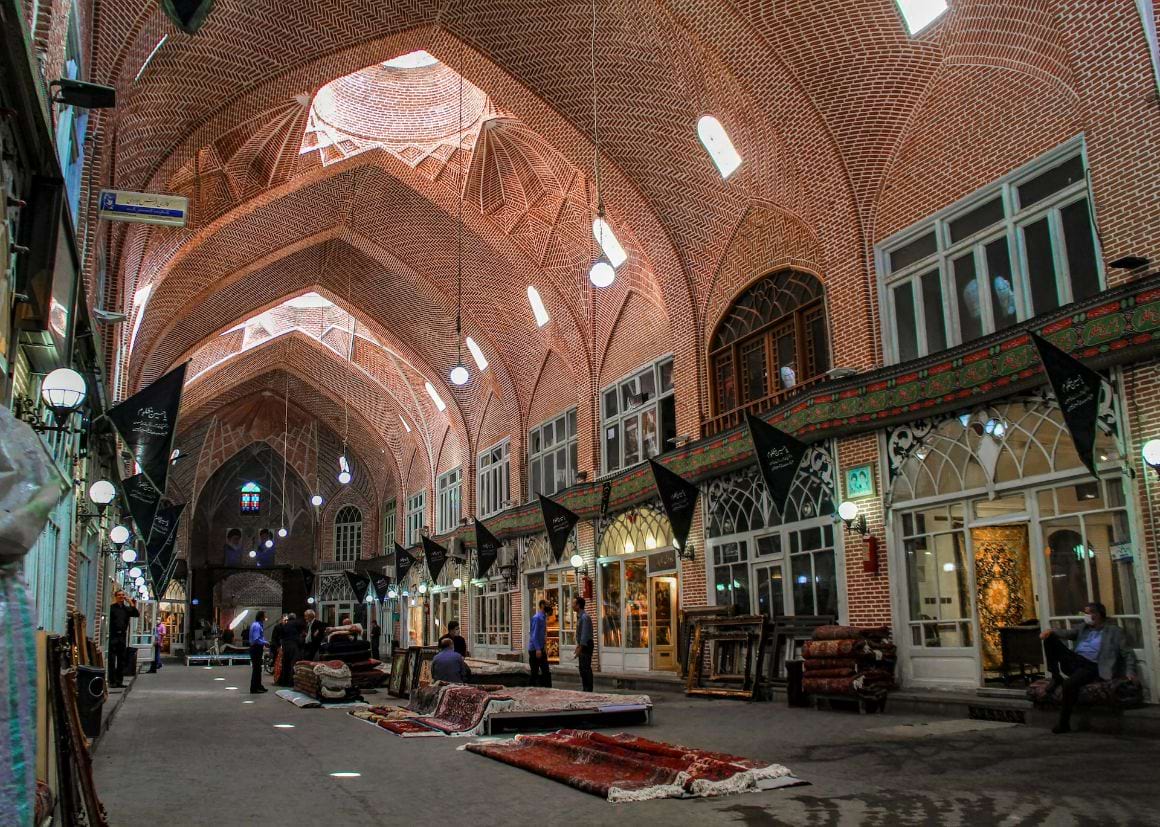
Backpacking Kandovan
Often referred to as Iran’s Cappadocia, Kandovan is famed for its troglodyte (cave people) dwellings and fairy chimneys. There are a few houses offering a basic place to sleep and a super posh hotel carved into the rocks complete with in-room jacuzzis. Try wild camping or find an abandoned cave dwelling to crash in just be safe!
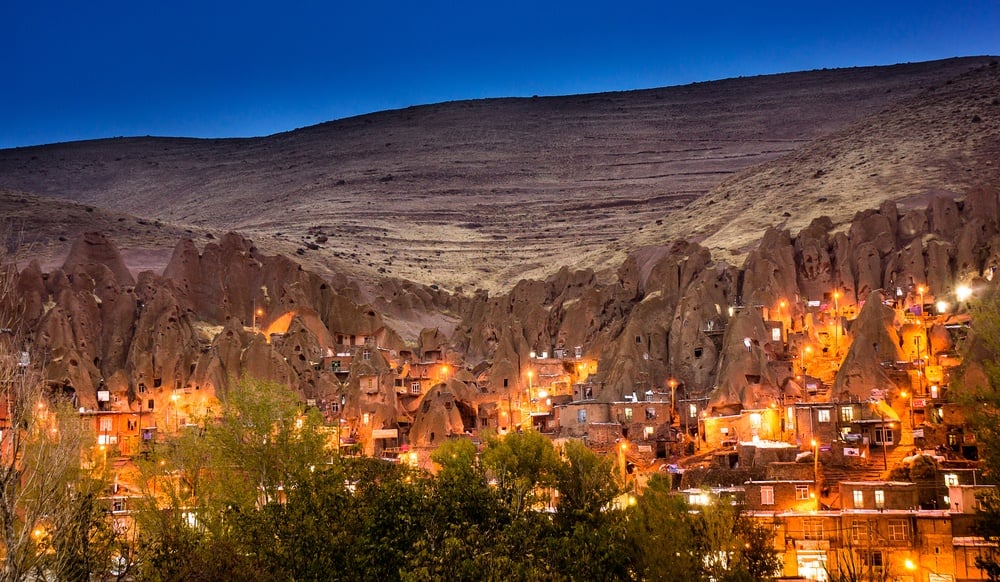
Backpacking Zanjan
Home to Iran’s best pizza place (Liro Pizza), and with the fascinating Salt Men museum nearby (think shrunken mummies and unintelligible signs in Farsi), Zanjan is a good place to break up the trip from Tabriz to Tehran if you have plenty of time.
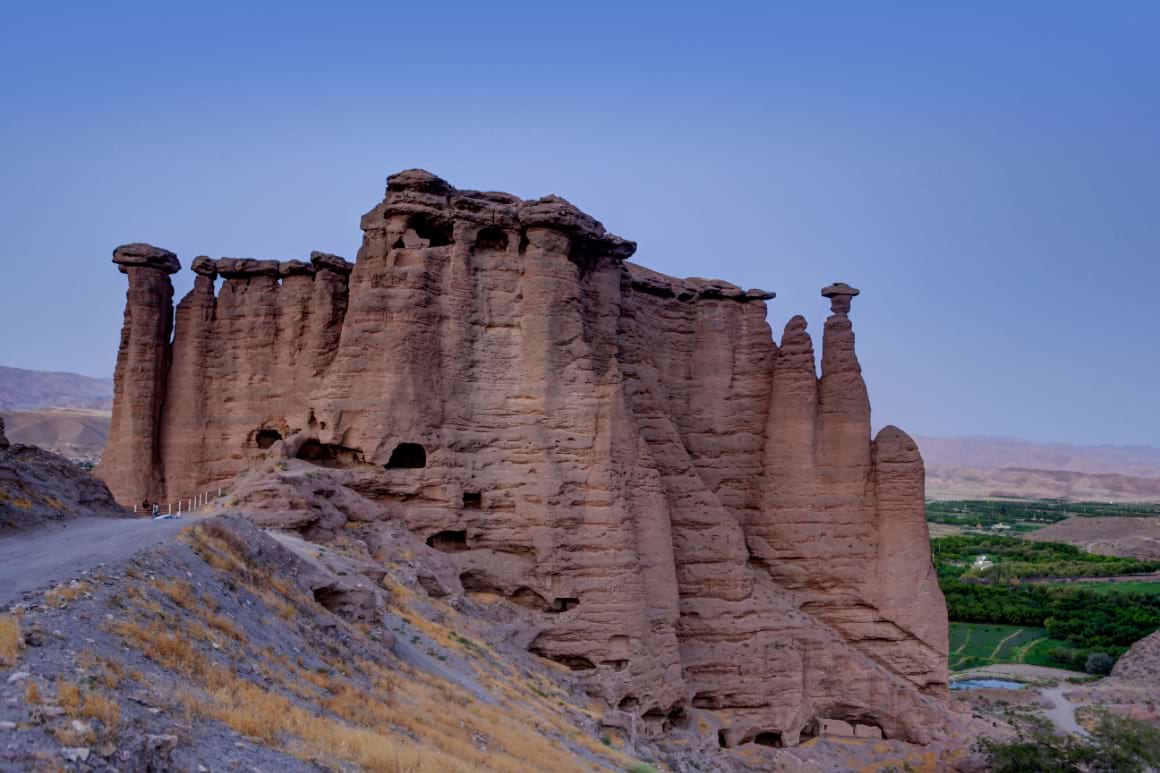
Backpacking Alamut Castle
Once upon a time there was a secretive sect of unstoppable assassins living within the mountains. They were known as the Hashshashin because of the rumour that they were pretty much permanently blazed and that hashish was used during their training rituals. The assassins built a fortress and reigned down terror across Persia as they descended to attack prominent figures in public.
One day, they botched a job… failing to kill Ghengis Khan. Ghengis, being Ghengis, lead his Mongol horde into the mountains and killed every last one of the stoner assassins who may or may not have been fairly slow to react.
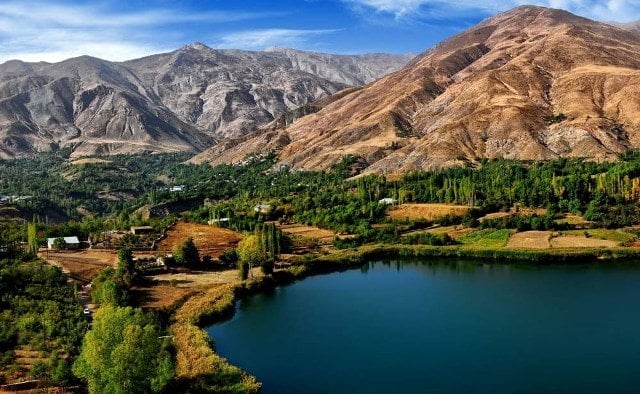
Alamut Castle, the assassins’ HQ, is largely a ruin but it commands stunning views over the valley below and is a great place to camp in Iran. You will need to hire a car to explore the Alamut valley in one day. It’s a two hour drive from Tehran to Qazvin where you can start your Alamut adventure.
Oh, if you’re wondering, the Hashashins were totally the fucking inspiration for Assassins Creed. Best things to do in Iran: start your goddamn Assassin training!
Backpacking Tehran
The capital of Iran and one of the best places for backpackers to party, Tehran is unlike anywhere else in Iran. A popular hub for the young and beautiful, this is a place of risky fashion statements, underground culture, and fascinating history.
There are lots of awesome things to do in Tehran :
- The Golestan Palace is one of the most striking buildings in the world and should not be missed. If you can get hold of a car; driving in Tehran is a great experience (if a bit hectic).
- The Roof of Tehran is a unique place to kick back with a (non-alcoholic) beer in the evening and meet local Tehranis.
- Finding a local host instead of booking one of the hostels in Tehran is going to give you a very different experience.
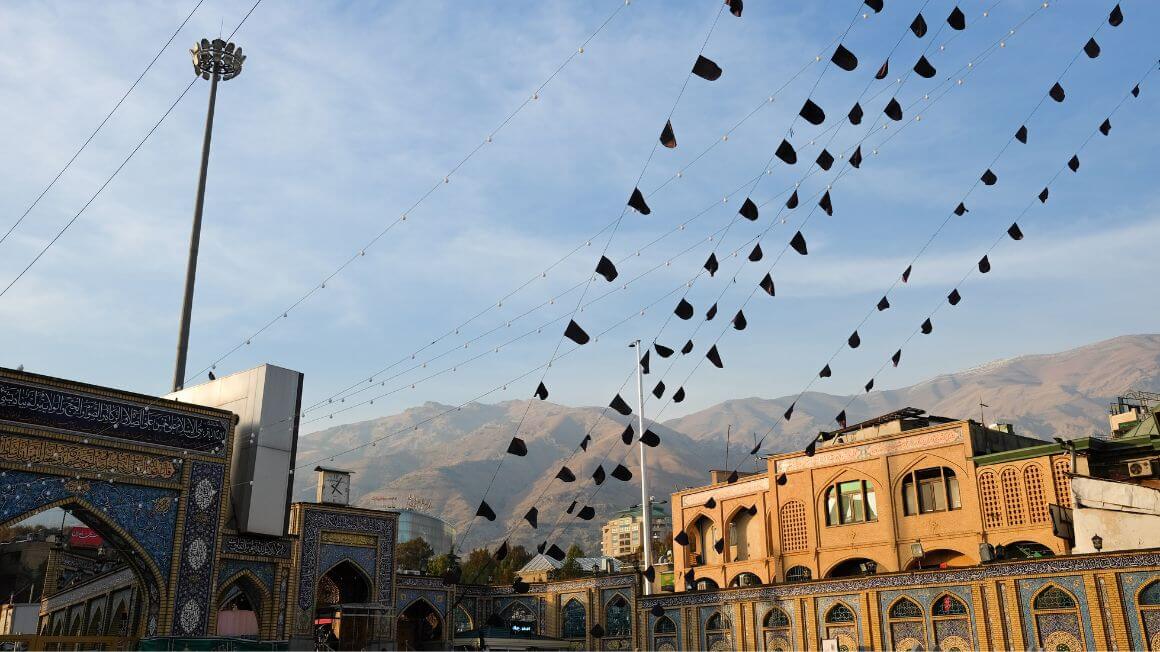
Outside of Tehran, there are multiple ski slopes – Dizin being the best known, which offer some of the best value skiing in the world – and about a two hours day trip from Tehran lies the city of Qom . A reader of the Broke Backpacker recently offered up this awesome travel tip regarding accommodation in Qom:
“I found a newly opened hostel in Qom called Qom Hostel (apparently the only hostel in the city). It’s owned by a young Iranian couple and is located a few minutes walk from the shrine – they have 11 nice rooms with all basics covered. The owners speak English and are incredibly helpful. It kinda feels like a couchsurf stay as they gladly invited us to their home for breakfast. My friend and I paid 30$ for a private room. They also have cheaper dorm options.”
Sound’s like a good time to me!
For where to stay in Theran, check out this post on Tehran’s 5 best neighborhoods to stay in!
Backpacking Shomal
Meaning simply ‘North’ , Shomal is where most young Tehranis go for a weekend away. Shomal is blessed with a cool climate, lush forests and patches of unspoilt coastline along the Caspian Sea; it’s another dope place to camp in Iran.
I spent a few days hanging out in Ser Velat village, reachable from Ramsar. Shomal offers the best value accommodation in all of Iran and you can pick up super plush villas with soaring balcony views for as little as $1-3 a night.
Whilst staying in Ser Velat, I ate in a small local restaurant – Khale Marzie Restaurant – which had some of the most incredible food I have ever tried. There are no shops in the village and this is the only restaurant so bring supplies! At the top of the village, there is virgin forest and pristine meadows where you can chill out and soak in the views. It normally takes about four to five hours to reach Shomal from Tehran.
Backpacking Sanandaj
No backpacking adventure across Iran would be complete without a couple of days exploring the rolling hills, quaint villages, and unbeatable hospitality of Iranian Kurdistan . Sanandaj is the capital of the region and, despite the heavier army presence, is one of the most friendly cities in Iran. Palangan is one of the most stunning hill-villages in all of The Middle East and it’s well worth hiking and camping around the area; The Kurds are fantastic people and will make sure you are well looked after. It’s an eight hour bus journey to Tehran from Sanandaj.
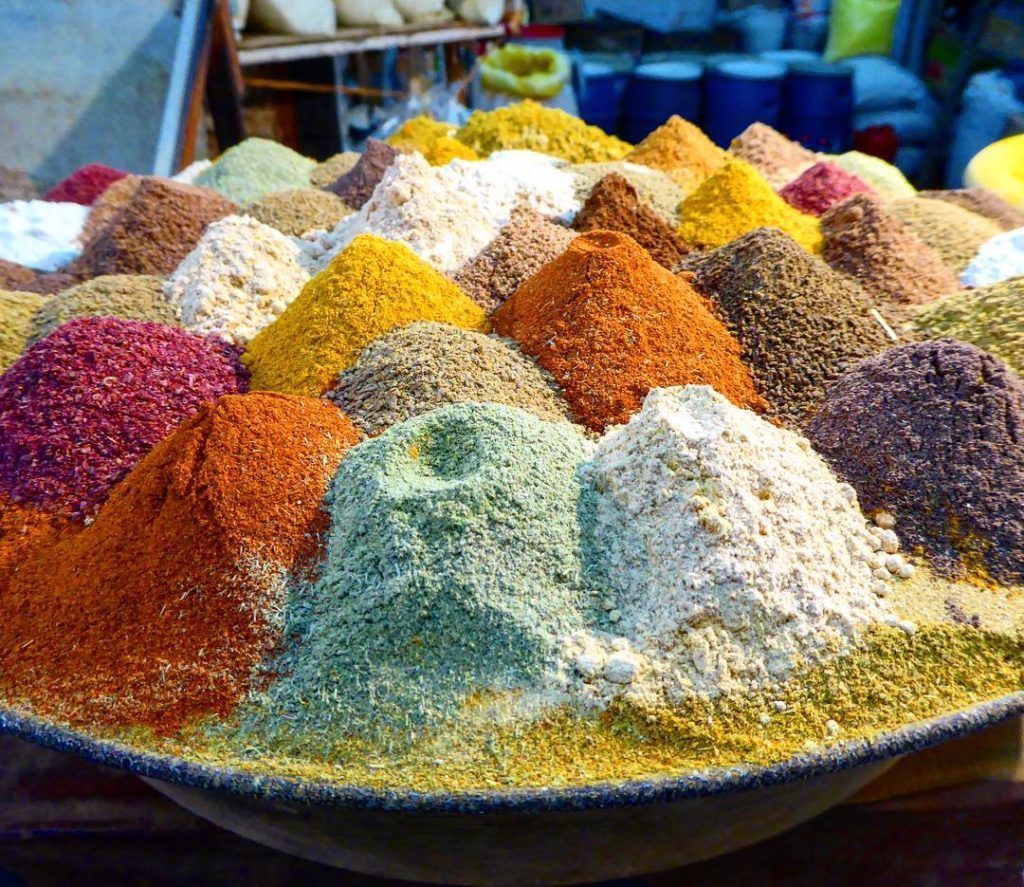
Backpacking Esfahan
Filled with gorgeous Islamic architecture, tree-lined boulevards, Persian parks, and some of the world’s most stunning bridges, Esfahan is a popular stop on the backpacking trail in Iran and most travelers spend a couple of days here. The bridges are lit up at night and walking along the river is a chilled out experience. The Masjid-e Jameh is a truly stunning work of art where you can explore 800 years of Islamic history before taking to the fun-filled bazaar nearby and hunting for trinkets.
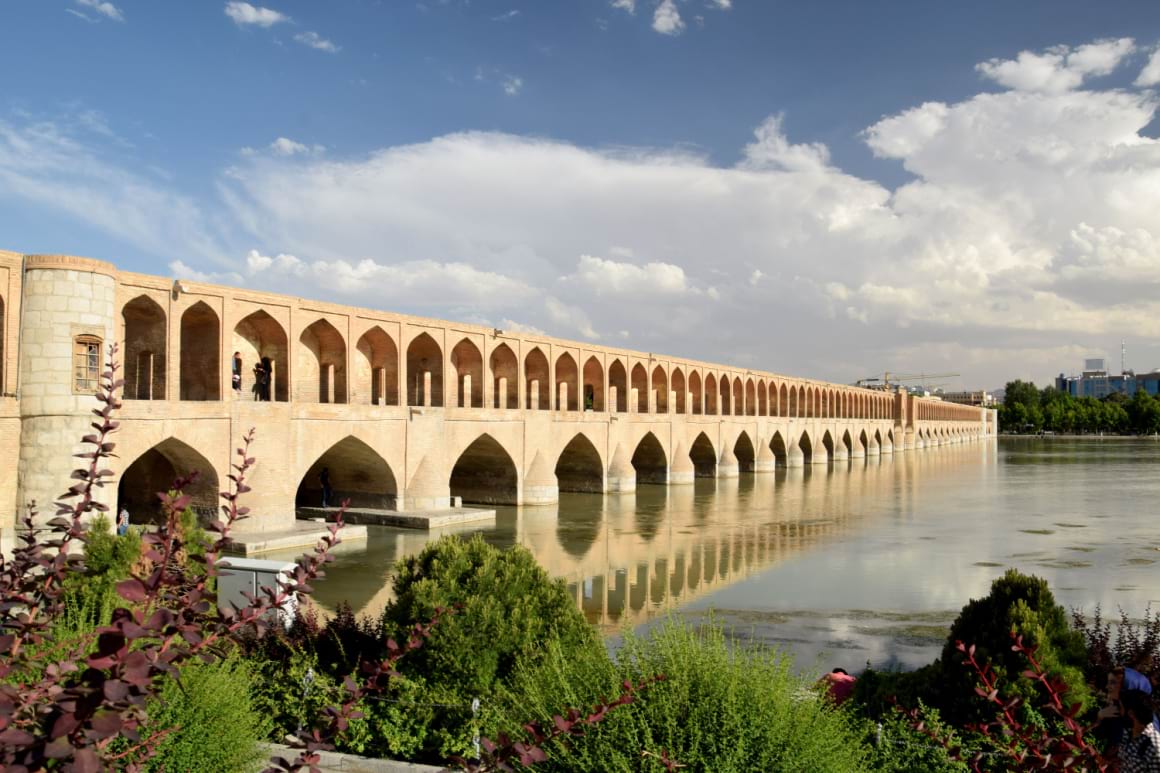
Backpacking Yazd
The desert city of Yazd springs out of the ground in defiance of its surroundings and wows tourists with it’s winding lanes, blue-tiled domes, and soaring minarets. Most backpackers in Yazd congregate at The Silk Road Hotel but there are much cheaper options around (though, sadly, Couchsurfing in Yazd is not especially easy). Yazd is one of the best places in Iran to organise desert adventures and nomad homestays; I’ve heard good things from backpackers who have visited Garmeh.
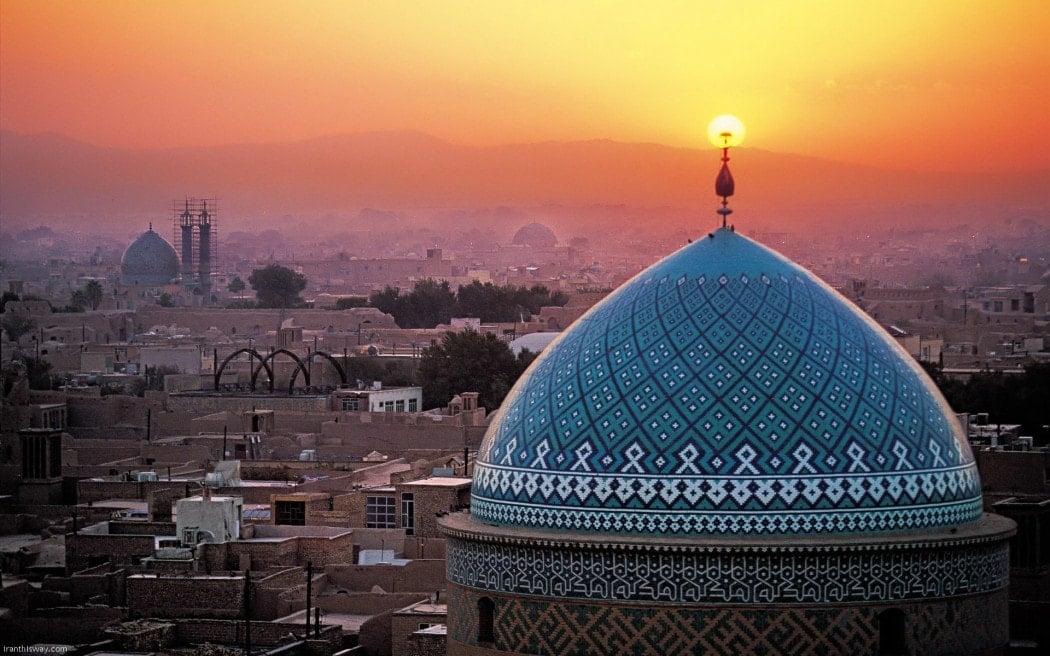
Backpacking Shiraz
The heartland of Persian culture for more than 2000 years, Shiraz is famed for its scholars, poets, nightingales, and wine. Home to the impressive Arg-e Karim Khan fortress, this is a city that is best explored on foot. Shiraz is, actually, the reason I came to Iran in the first place.
The masjid-e Nasir-al-Molk Mosque is one of the most stunning buildings in the world and, as a kid, I had a faded photograph torn from a National Geographic upon my wall. The mosque is filled with glittering stained glass windows and when the sun hits at the right angle the entire building is filled with multicoloured rainbows that dance across the floor and walls.
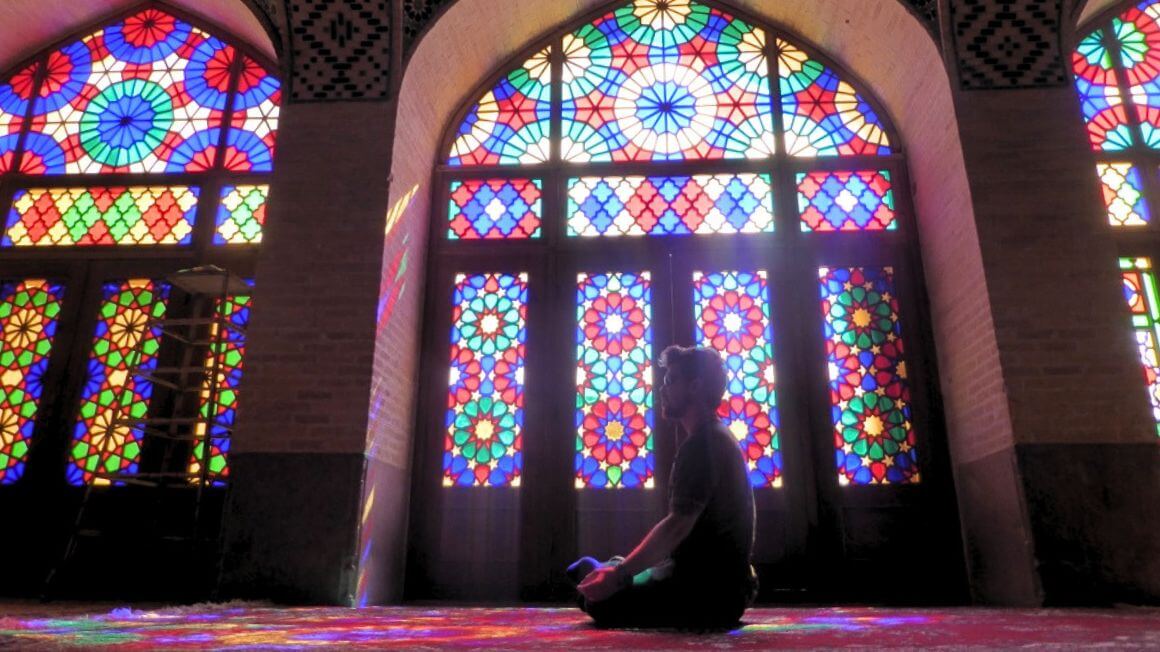
The mosque opens at 8 A.M. and I recommend arriving before that; it is the only place in Iran I visited that was crowded with tour groups… Despite the crowds, it should not be missed. The Pardis Hotel, near the Karandish Bus Station on Safar Street has bargain private rooms for around $12 if you don’t mind slumming it and are sick of camping.
Backpacking Persepolis
The ancient capital of the Persian Empire, Persepolis is simply awesome. This is my second favourite place in Iran and it’s a great place to explore for a few hours.
The city was sacked by Alexander the Great and burnt to a crisp but many of its huge stone statues and buildings carved into the rock still stand. The ancient city was totally lost beneath the sands for over a thousand years and only rediscovered in the 1930s.
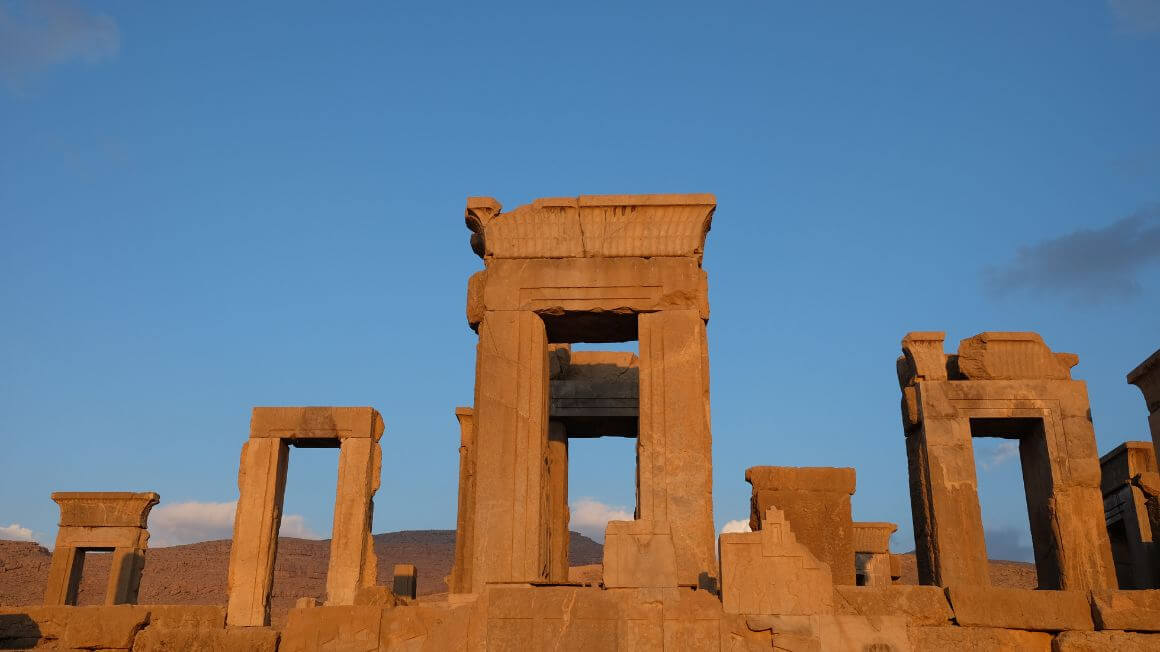
The best part of the city is the hills housing the tombs of Artaxerxes II and Artaxerxes III; it’s a poignant place to pause and soak in the sheer scale of the city stretching away from you. It’s easy to hitch a ride from Shiraz and takes under an hour to get to Persepolis but try to arrive before ten or eleven as it gets very hot.
Backpacking Ghalat
A small village a stone’s throw from Shiraz, Ghalat is said to be home to many fine flowers and herbs that grow wildly within the hills. This may be the perfect place to watch the sun go down with a cheeky smoke.
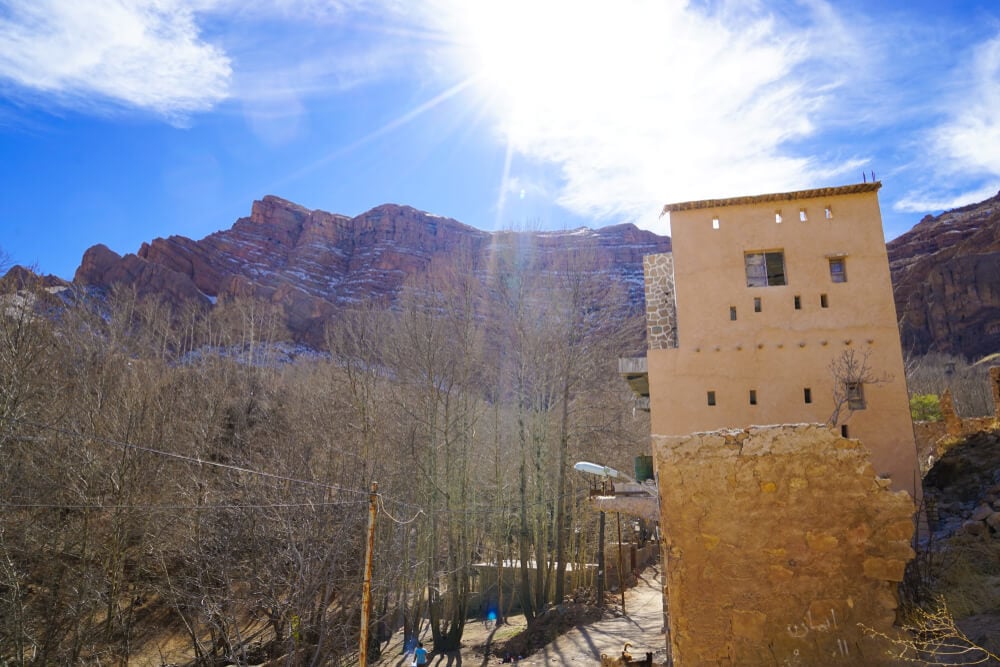
Backpacking Hormuz Island
This stunning volcanic island is my favourite place to visit in all of Iran. There is nowhere quite like this anywhere else on earth and if you’re backpacking Iran in search of incredible landscapes, this is where you should go!
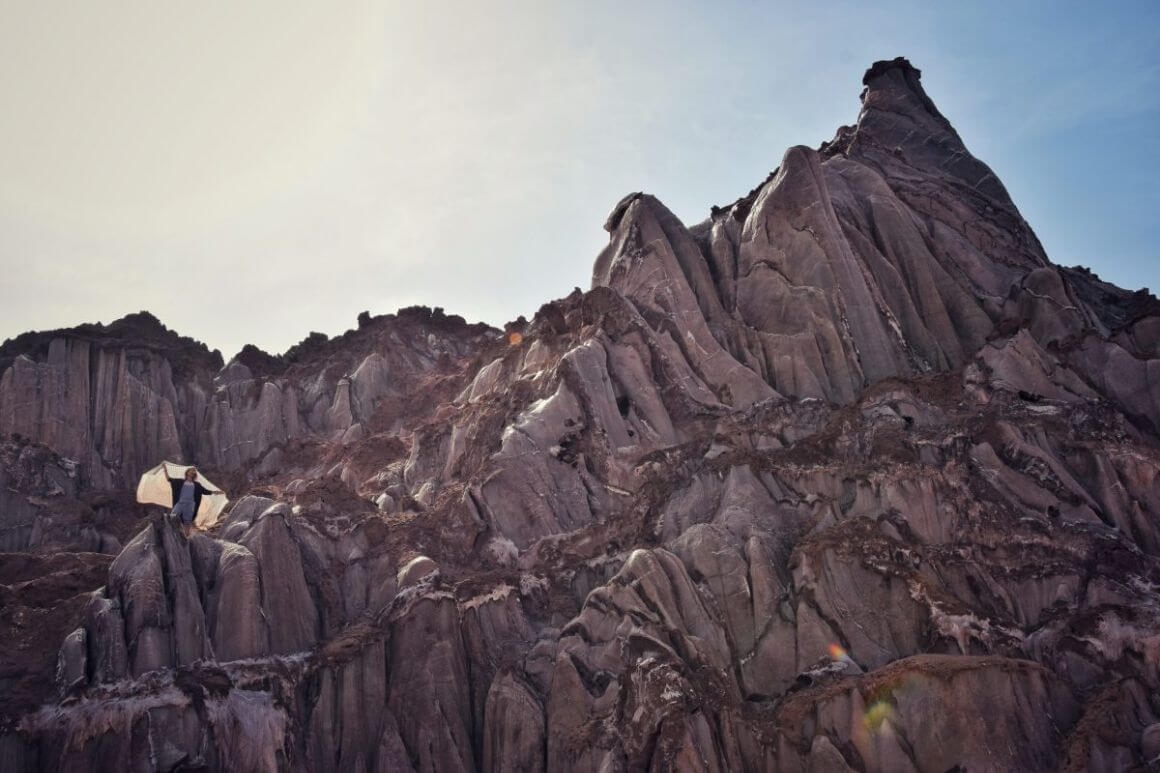
We’ve tested countless backpacks over the years, but there’s one that has always been the best and remains the best buy for adventurers: the broke backpacker-approved Osprey Aether and Ariel series.
Want more deetz on why these packs are so damn perfect? Then read our comprehensive review for the inside scoop!
- Smoke some shisha : Whilst in Iran, be sure to track down a sofre khune: a traditional shisha bar where Iranians hang out, play backgammon, and smoke ghelyoon (shisha).
- Crash a house party : Underground parties are very common in Iran and there are usually dozens happening in Tehran on the weekend. Drinks and other party enhancers are widely available and the atmosphere is chilled and casual with men and women chatting (and sometimes even canoodling together).
- Hitch a ride : Hitchhiking is not common in Iran but it’s an amazing experience, very easy and a great way to see the country.
- Haggle for trinkets : Haggling is very common in Iran and you should be able to negotiate a discount of at least 10%.
- Camp amongst nature : There are so many truly gorgeous places to camp and hike in Iran and, assuming it’s not freezing, this is a fantastic way to escape the bustle of the cities and explore the best of Iran’s stunning nature. Grab a backpacking tent , a good pair of hiking boots , and disappear into the Persian wilds.
- Try the food: Iran is famous for its kebabs and stews; street food here is some of the best in the world and Iranians take bread baking to the next level…
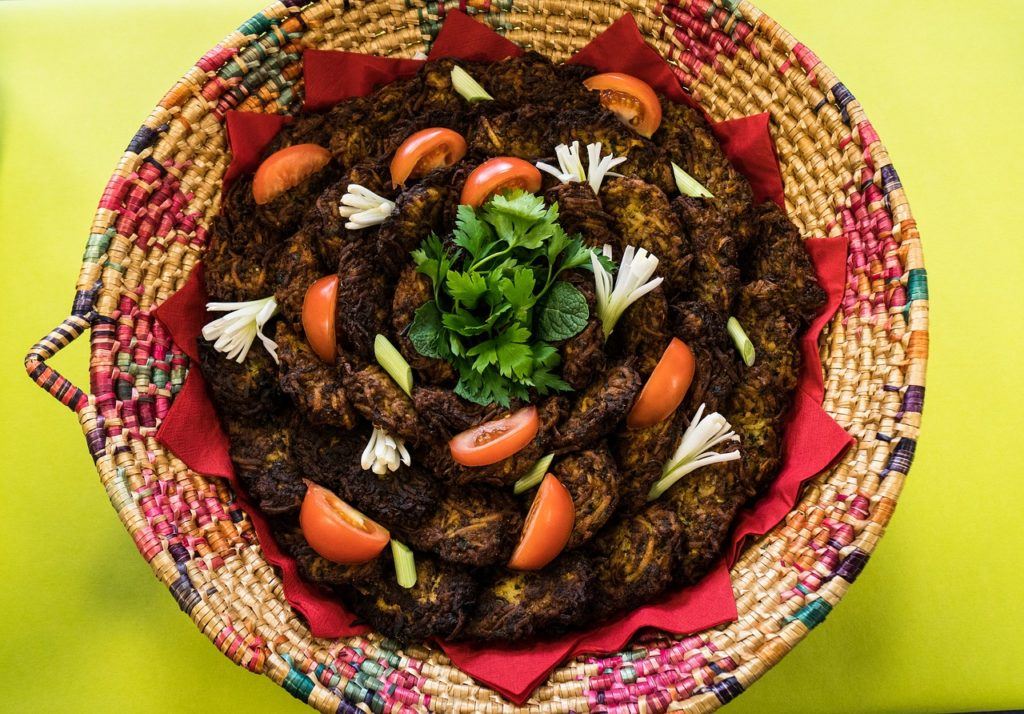
Wanna know how to pack like a pro? Well for a start you need the right gear….
These are packing cubes for the globetrotters and compression sacks for the real adventurers – these babies are a traveller’s best kept secret. They organise yo’ packing and minimise volume too so you can pack MORE.
Or, y’know… you can stick to just chucking it all in your backpack…
There are now some hostels in Iran although don’t expect the beer-pong culture of South East Asia. In general, your options are limited to cheap guesthouses, more expensive hotels, camping, or Couchsurfing. There are some hotels and guesthouses specifically set up for backpackers mentioned in The Lonely Planet but these tend to be much more expensive than they should be… because, you know, they are in the Lonely Planet (buurrrnn).
Iran is a truly great place to take a tent and I camped all over the country; Check out this post for a breakdown of the best tents to take backpacking or pack your camping hammock instead! These things tend to go super well in conjuction with a choice sleeping bag or you’re in for a cold night.
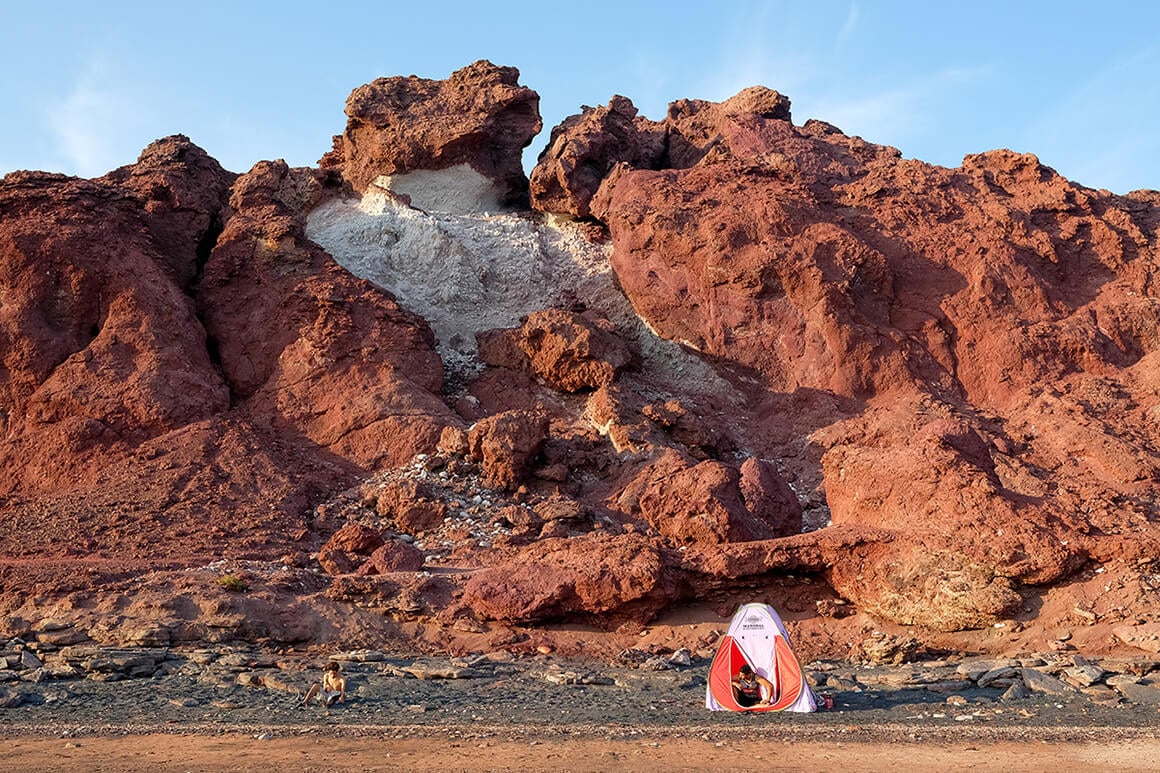
If you are a couple you will often be asked what your relationship is when checking into guesthouses or hotels in Iran. I recommend simply saying you are married.
The Best Places To Stay in Iran
Couchsurfing in iran.
Couchsurfing in Iran is technically illegal. You do not, however, need to use the (blocked) website to be able to find a place to crash; many Iranians will simply invite you into their home and the chance for this goes up dramatically if you are a backpacker hitchhiking across Iran.
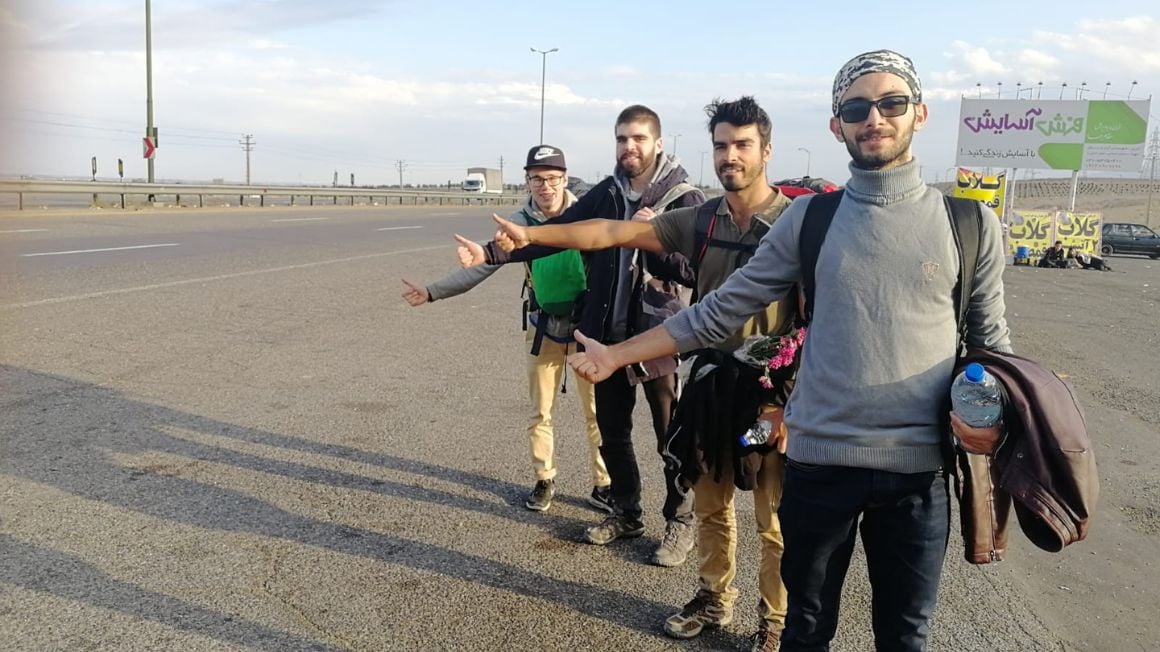
I had numerous drivers attempt to whisk me off for a week of adventuring in the desert, mountains, or jungles. Iranians tend to get very excited when they meet a backpacker – it’s one of the many reasons Iranians are awesome people and why budget travel in Iran is simply so excellent.
Backpacking Iran can be super cheap; I spent about $20 per day on average not counting the occasional splurge on something to smoke.
If you are staying in basic guesthouses, catching long-distances buses and trains (rather than flights), and eating in simple restaurants you can expect to spend around fifty dollars a day.
There is currently a black market for foreign currency which makes Iran INSANELY cheap to visit. When I visited in late 2018 I lived very well on $10 per day. However, the volatility go these markets makes it hard to estimate and advice of backpacking costs! Therefore, take these figures with a generous helping of salt.
A Daily Budget For Iran
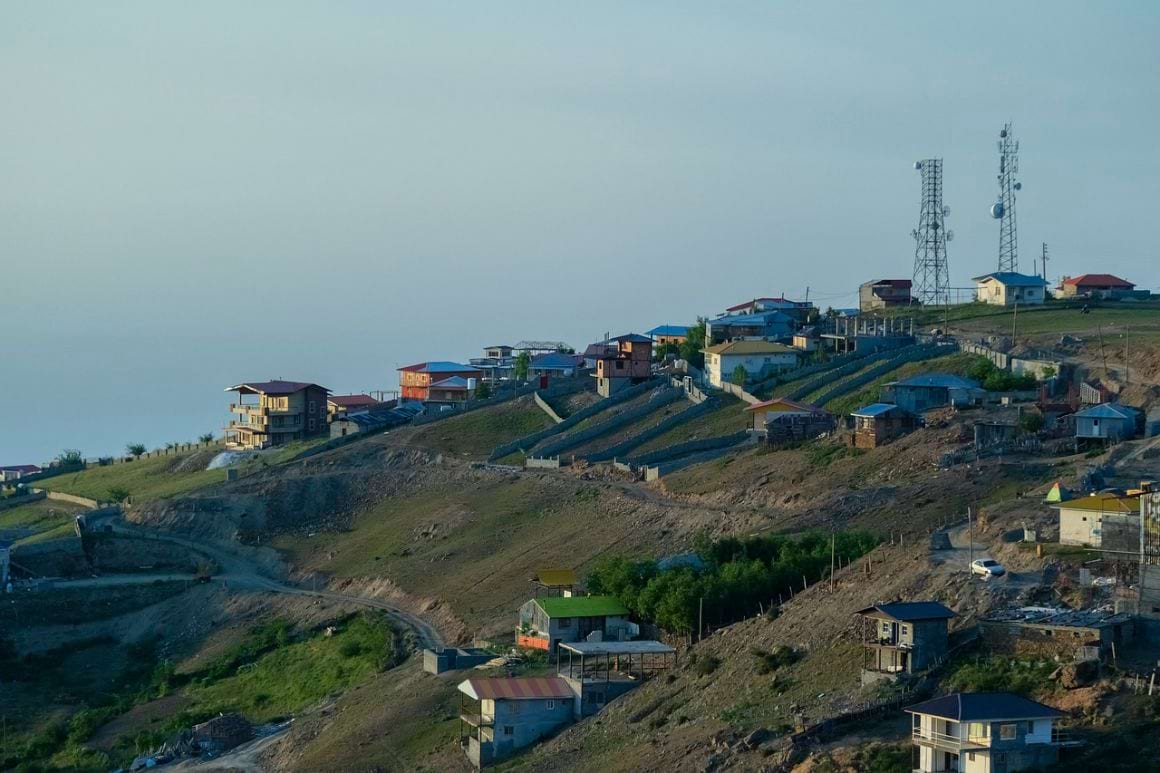
The Currency in Iran
The currency in Iran, the Rial, has a few too many zeros: 500,000 Rials is just 15 USD. The locals have come up with a somewhat ingenious, and somewhat confusing (and often frustrating), way to get around this.
Most prices are quoted in Toman with one Toman being equal to ten Rial. This gets rid of one of the pesky zeros. To work out how much you actually owe, add a zero to the quoted price and you are back into the realm of Rial.

In theory, this leaves foreign backpackers very open to getting scammed by unscrupulous Iranians but this didn’t happen to me once in Iran. Iranians are, in general, very honest and hospitable people. Taxi drivers can prove the exception to this rule…
Getting Money in Iran: Not as simple as it should be!
When I first traveled to Iran, I stocked up on cash – as much as I’d need for the whole trip. No debit or credit cards will work in the country and traveler’s cheques are usually not accepted.
Don’t try your luck with changing money in-country either. The rates you get will be insane because of your minimal and questionably legal options. This time, it pays to go with a good company and Mah Card is the one that’s helped me get money in and out of Iran.
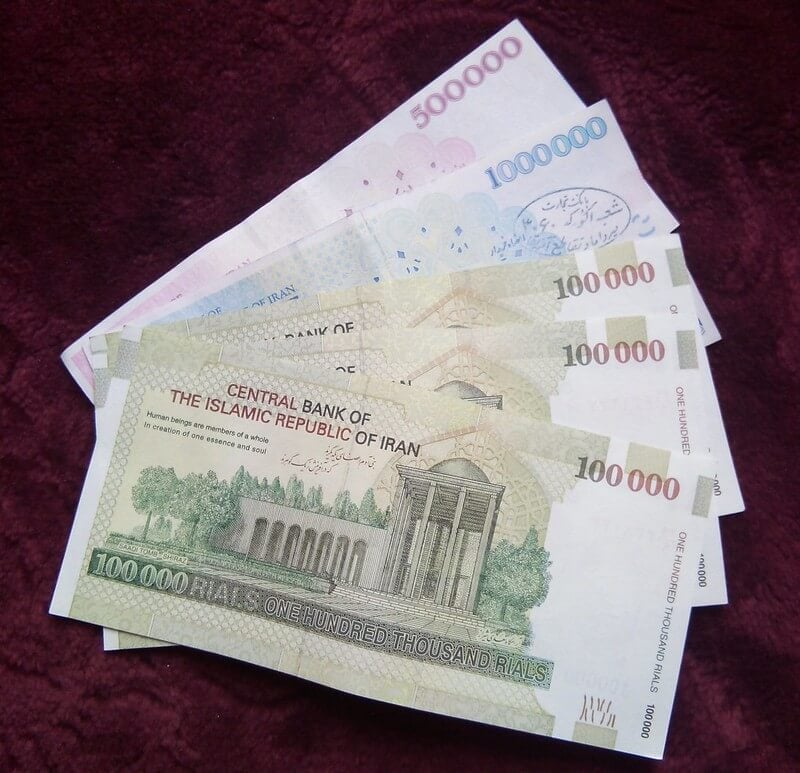
Mah Card is an Iranian prepaid debit card for travelers in Iran. It’s an equivalent of your usual international credit/debit card (i.e. Visa or MasterCard) with the one major difference that your card doesn’t work in Iran . Banks in Iran either don’t issue cards to foreigners or require a big, thick list of documents that tourists normally don’t carry around!
Check around with exchange rates yourself online to be sure, but we’ve found Mah Card to be pretty trustworthy. Plus, they offered Broke Backpacker readers 40% off their commission fee when they use our code, which is (you guessed it): brokebackpacker . Check them out and get your card here .
Travel Tips – Iran on a Budget
To backpack Iran on the cheap I recommend sticking to the basic rules of budget adventuring :
- Hitchhike: In Iran, it is so so easy to thumb a ride that it really would be a crime not to give it a go. Hitchhiking is an ace way to keep your transport costs down!
- Camp: With plenty of gorgeous natural places to camp, Iran is an excellent place to take a tent. When you’re in dire need of a shower and some company, jump on Couchsurfing. Check out the our mega camping checklist for ideas on how to prepare!
- Eat local: Local Iranian food is cheap, tasty, and everywhere – these guys are the king of kebabs!
- Pack a travel water bottle : And save money every day!
Why You Should Travel to Iran with a Water Bottle
Plastic washes up on even the most pristine beaches… so do your part and keep the Big Blue beautiful
You aren’t going to save the world overnight, but you might as well be part of the solution and not the problem. When you travel to some of the world’s most remote places, you come to realise the full extent of the plastic problem. And I hope you become more inspired to continue being a responsible traveller .
STOP USING SINGLE-USE PLASTIC!
Plus, now you won’t be buying overpriced bottles of water from the supermarkets either! Travel with a filtered water bottle instead and never waste a cent nor a turtle’s life again.

Drink water from ANYWHERE. The Grayl Geopress is the worlds leading filtered water bottle protecting you from all manner of waterborne nasties.
Single-use plastic bottles are a MASSIVE threat to marine life. Be a part of the solution and travel with a filter water bottle. Save money and the environment!
We’ve tested the Geopress rigorously from the icy heights of Pakistan to the tropical jungles of Bali, and can confirm: it’s the best water bottle you’ll ever buy!
Iran is famed for being a country with four very different seasons all being present at once!
The best time to visit Iran depends on what you want to do. Skiing is best in the winter and this is also a good time to visit the deserts and Hormuz; during the summer the desert can reach temperatures of 70 degrees… goddamn Celsius!
The best time to backpack around Iran is, in my opinion, between March to May and September to December .
What to Pack for Iran
On every adventure, I never go traveling without:

Travel Security Belt
This is a regular looking belt with a concealed pocket on the inside – you can hide up to twenty notes inside and wear it through airport scanners without it setting them off.

Microfiber Towel
Hostel towels are scummy and take forever to dry. Microfibre towels dry quickly, are compact, lightweight, and can be used as a blanket or yoga mat if need be.

Petzl Actik Core Headlamp
A decent head torch could save your life. If you want to explore caves, unlit temples, or simply find your way to the bathroom during a blackout, a headtorch is a must.

‘Monopoly Deal’
Forget about Poker! Monopoly Deal is the single best travel card game that we have ever played. Works with 2-5 players and guarantees happy days.
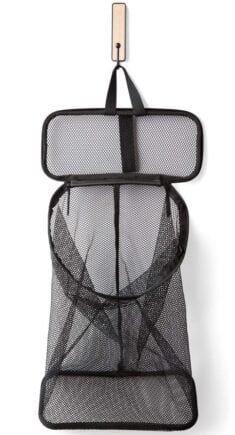
Hanging Laundry Bag
Trust us, this is an absolute game changer. Super compact, a hanging mesh laundry bag stops your dirty clothes from stinking, you don’t know how much you need one of these… so just get it, thank us later.
Fashion Tips for Backpacking in Iran
You might be surprised but fashion in Iran is a big part of daily life. Many young women colour their hair blue, purple, pink, and gold. Headscarves are often only just in place and golden sandals showing off painted toenails are commonplace.
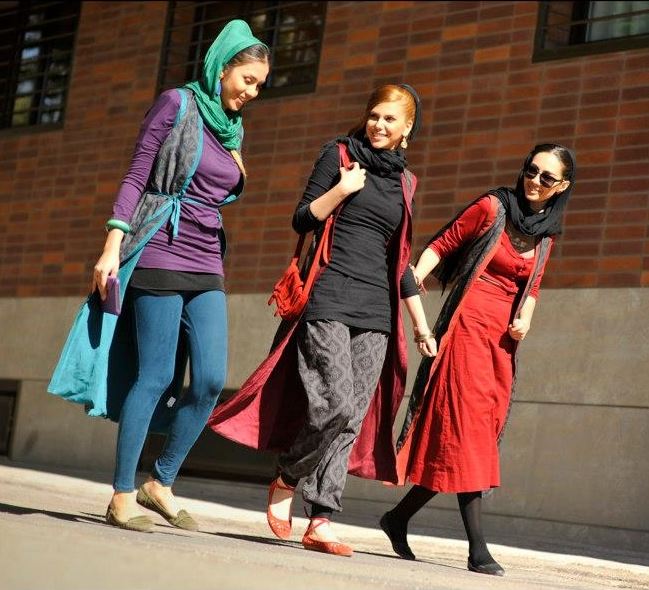
So what should you wear when backpacking around Iran?
Legally, all women in Iran must cover their hair with a headscarf. Avoid showing off flesh and stick to long-sleeved tops or a coat. Jeans are perfectly acceptable. Avoid clothes which show off your butt or boobs unless you’re on the hunt for an Iranian husband; you won’t have to hunt long.
Men in Iran should also keep skin covered although t-shirts are ok… just don’t wear shorts. If you have tattoos, keep them covered as tattoos are not permitted in Islamic culture and you may get some funny looks if you have them on show.
That’s a question I get asked a lot: is Iran safe? Yes, most definitley! Iran is a totally safe experience.
Almost all of the negative media hype surrounding Iran is a decade out of date and was not particularly accurate in the first place. Iran is a very peaceful country and one of the most stable nations in The Middle East; just don’t get caught breaking the rules. If you do, bribes are an option; play it carefully. Iran really is a super safe place to travel and plenty of women travel solo in Iran without any issues.
We’ve put together an Iran Safety Guide with all the information that will get you through your Iran trip without any issues.
Sex, Drugs and Rock ‘n’ Roll in Iran
Backpacking Iran is full of surprises… Everything is possible in Iran and there is a lively underground scene of house parties and even full-on raves. Getting invited to one of these is fairly easy if you fall in with the right crowd; I attended a truly mental house party whilst in Tehran and another more civilised event down in Shiraz.
Alcohol is illegal in Iran although Shiraz is famed for its wine and it’s possible to find imported booze and homemade stuff throughout the country.

Drugs are also, of course, illegal but rumour has it that Iran boasts some of the finest herbs in The Middle East (available at approximately thirty dollars for ten grams). For tips on how to stay safe whilst getting fucked, check out Blazed Backpackers 101.
Insurance in Iran
Whenever you hit the road and go travelling, you need insurance. I have been backpacking for nine years and have had to claim a total of three times; if I didn’t have backpacker insurance I would have been utterly screwed on all three occasions.
Because of a pesky embargo, only a handful of travel insurance companies will cover travelers visiting Iran – We’ve traveled on First Allied, but they’ve recently discontinued insuring backpackers. We’d suggest IATI Seguros , but do your own research and see what travelers from your country like to use as it’s a sticky topic.
I arrived into Iran overland from Turkey, hitchhiking to the Iranian border and then catching a bus on the other side but there are lots of other options for how you can travel to Iran. There are long-distance bus services that will take you all the way from Tbilisi in Georgia to Tabriz in Iran and services via Armenia and Turkey as well. You can enter Iran by train or motorbike.
For backpackers without the luxury of time, the best way to go to Iran is to catch a cheap flight to Tehran. There are flights with Turkish Airlines (via Istanbul), Emirates (via Dubai) and a whole load of other airlines; the cheapest I’ve found online has been with Pegasus Airlines. Most flights land in Tehran but you can also fly to other parts of the country.
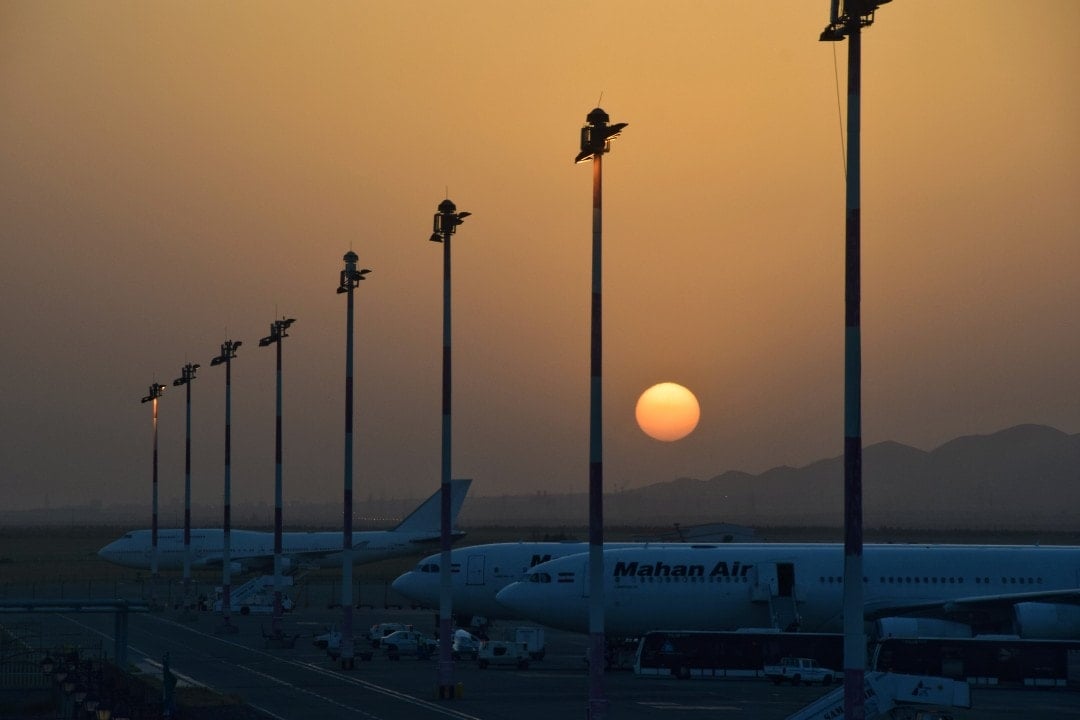
Imam Khomeini International Airport: There are two airports in Tehran but Imam Khomeini International Airport (IKA) handles almost all the international flights. It’s located 30 kilometres southwest of Tehran and is the largest airport in the capital. It costs about 18 dollars to catch a taxi into town although a recent initiative has been launched to offer ride-shares for 10 dollars per person. There is a subway line planned but not yet completed.
Entry Requirements for Iran
As of 2016, many visa restrictions have been lifted and it is now possible for most backpackers to get a visa on arrival for Iran at the airport. There are mixed reports on getting visas on arrival at Iranian land borders; I chose to get my visa issued in advance in the Iranian embassy in Istanbul. To do this I need an authorisation code; more on how I sorted that in a moment.
Officially British, Canadian, and American tourists cannot get a visa on arrival and can only travel the country with a guide. You can get a visa mead of time as long as you have an authorization code from a tour company. Officially, companies are not supposed to offer authorisation code’s unless you book a tour however, there are ways around that. You could book a cheap, one day tour, in order to get your authorization code.
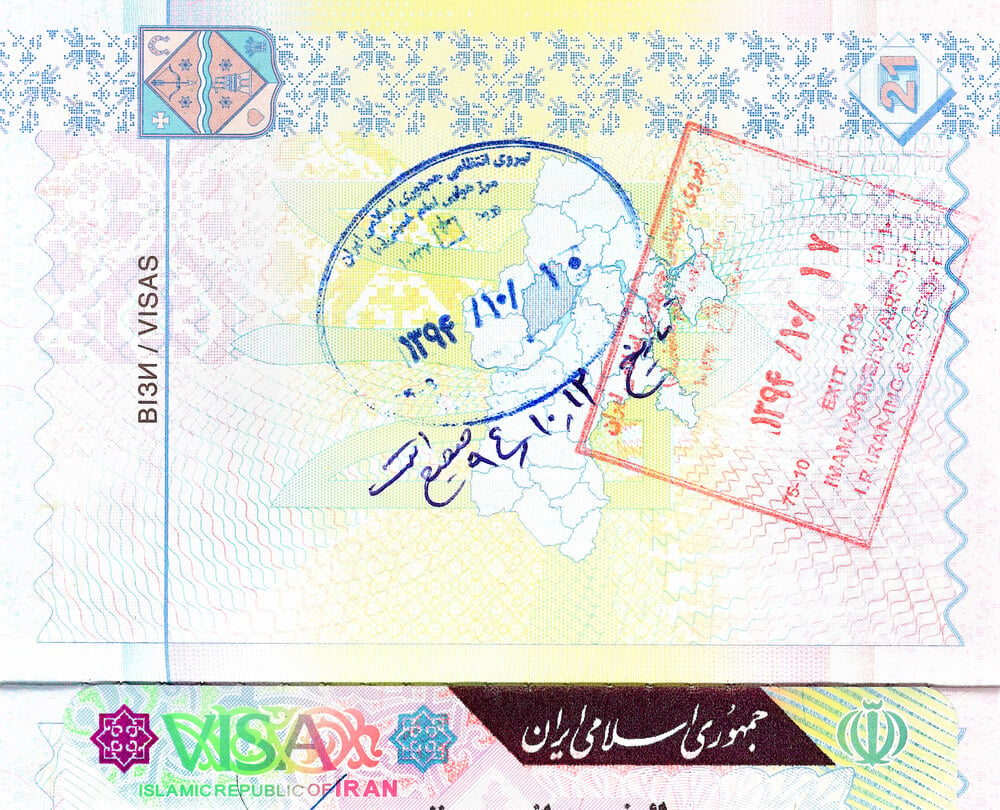
You could then apply for your visa and cancel the tour… Upon actually entering the country, it is unlikely that immigration personnel will ask you where your tour is; you could well be meeting them once you’re out of the airport. Come up with a decent story, have a couple of back-up phone numbers and keep a straight face; I’ve heard of several people who have made it around the country this way on a British or American passport.
Visas are valid for thirty days and can be extended for two weeks a total of two times; it is relatively easy to backpack Iran for two months. If you want to sort your visa ahead of time, you will need an authorisation code.
1stQuest provide the cheapest, fastest, authorisation codes out of any company in Iran and these are the guys I used to sort my authorisation code on my first trip to Iran.
Getting an Iranian Visa in Advance
If you are crossing Iran overland or are travelling on a British, American or Canadian passport, you will need to get your Iranian visa in advance at an embassy. It’s fairly straightforward to sort out your Iranian visa before you arrive, you will need an authorisation code ( get it here ). I got my first Iranian visa at the embassy in Istanbul; it was a simple enough procedure – I turned up with a couple of passport photos and the authorisation code, more information below, and filled in some forms. I got my passport back the same day.
Getting an Iranian Visa on Arrival
It’s recommended to bring records of your trip details: this often includes the name of at least one hotel which you could feasibly be staying at. It is useful to have the telephone number and name of somebody within the country. The airport immigration may make a few phone calls to validate your local contact or they may let you sail through; reports are mixed.
To get an Iranian visa on arrival, follow these steps…
- Iran Health Insurance Cover – Either bring a printed copy of your health insurance or get one at the airport for around €15. The Passport and Visa Department will need it.
- Submit the Form – The details will look something like this visa application form , including the contact details for your address and telephone number in Iran (hotel booking, friend/ family, or travel agency). You will need a hotel booking.
- Receive Visa Approval – Then you’ll receive your visa payment details.
- Pay the Visa Charge – At the next counter, it’s around €75 for Europeans or €50 if you have an MFA code. Other countries visa cost for Iran varies . Be careful with currencies other than Euros or USD as they may cause a delay.
- Receive the Visa Stamp (Full Page)
- Pass through Immigration Control (Entry Stamp) – Patiently answer any questions about why you are visiting Iran.
Copies of your passport and a few passport-sized photos are worth having on hand. The whole process can take between 1-4 hours depending on the airport and terminal passenger flux.
Can Americans Travel to Iran?
Let’s cut to the chase: yes! Despite the actions of certain baby-hand despots, yes, Americans can go to Iran. The previous information still applies – you’ll need to have a tour in Iran organised – but it is more than possible!
There are some added stipulations, however:
- A visa on arrival is a no-no.
- The visa process is going to take longer; give it 60-90 days .
- You’re going to need additional supporting documents.
Past that, the process for visiting Iran as an American is much the same:
- Book the trip to Iran and the tour.
- Obtain your authorisation code.
- Apply for the Iran visa through a chosen embassy.
Here’s a good post to read if you’re an American intending to travel to Iran .
What’s Visiting Iran as an American Like?
Dude, you’ll be just fine. All the nonsense you’ve heard about Iranians – yeah it’s BS. Visiting Iran as an American is going to take you well out of the bubble and it’ll be a beautiful experience.
The people in Iran are curious about the States and they’ll be curious about you too. Expect smiles, questions, and probably some spectacular hospitality too. This whole tension thing? Yeah, it’s a one-way street.
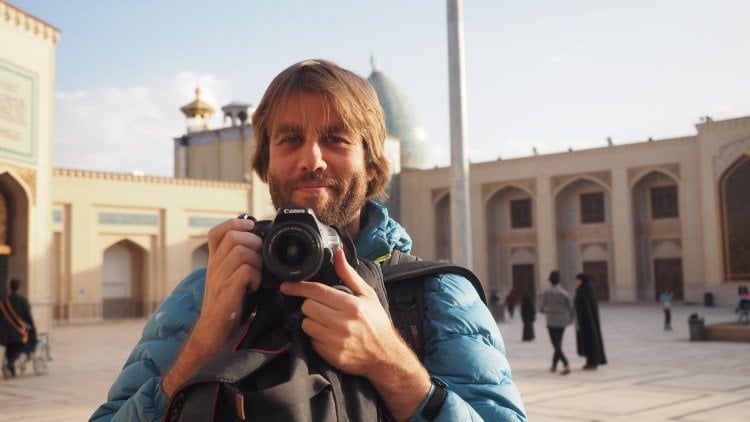
Be respectful and mindful of the culture and that will be more than enough.
In summary: can Americans travel to Iran? Hell to the yeah! Have a fucking blast.
It only takes 2 minutes! Book your transport on 12Go now and guarantee your seat easily.
Traveling in Iran by Public Transport
The roads in Iran are top-notch and long-distance transport is pretty comfortable. Iran has a good railway network and the trains are a better way to tackle some of the really long distances if you are short on time.
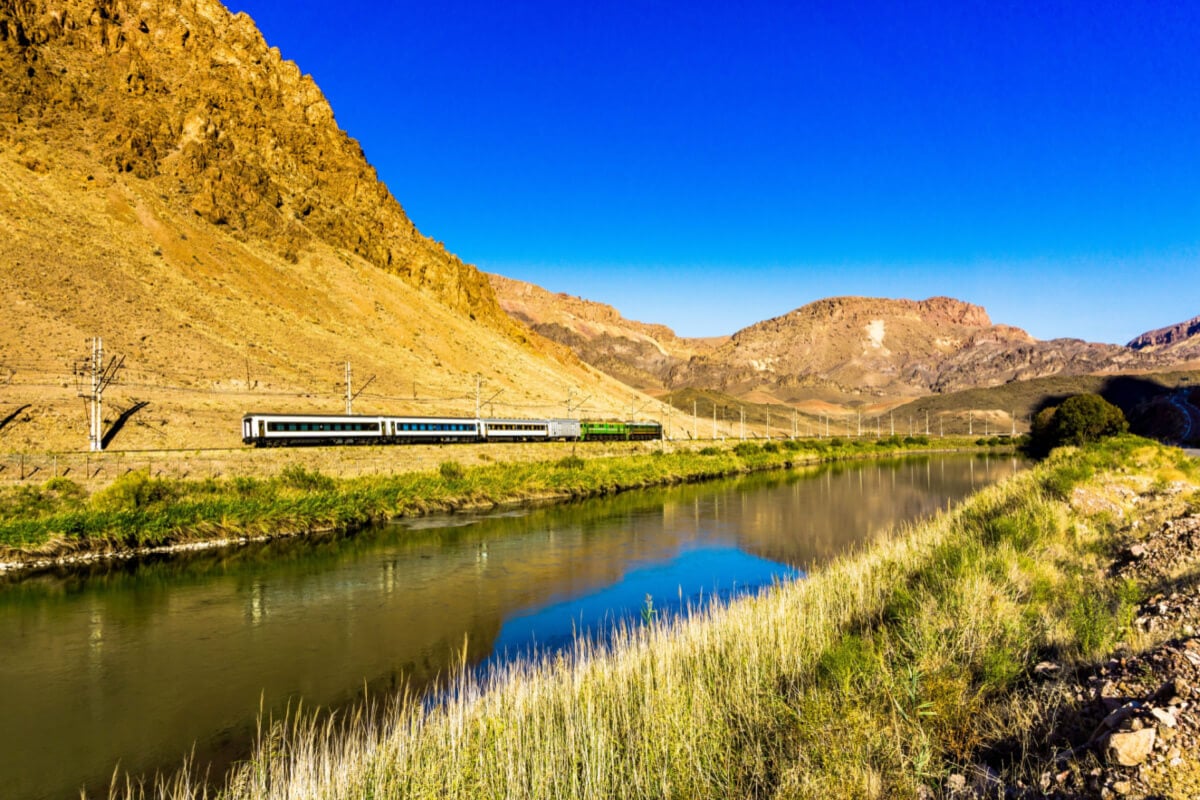
- By bus: There are many domestic bus routes. The public buses in Iran are reliable and nice enough for backpackers. There are also VIP buses with huge padded seats and plenty of leg-room; for a long journey, it might be worth the upgrade.
- By train: I caught a train from Bander Abbas up to Yazd and it was a pretty interesting experience. For longer distances, the trains in Iran are far preferable to buses. Train tickets are cheap and you can ask a Farsi speaking friend to check routes and fares at Ali Baba .
- By domestic flight: I haven’t taken any flights in Iran but flight options are fairly cheap – about $40-60 from Tehran to most places within Iran. If you’re backpacking Iran with just a couple of weeks to spare, domestic flights are probably the best way to get around.
- By car: The traffic in Iran is fairly crazy but if you’re an experienced driver, go for it. I’ve driven a lot in Iran, tackling the busy streets of Tehran and learning the hard way that Iran does indeed have traffic cameras. If you’re driving in the cities, keep your speed reasonable even if the locals don’t – they know where the cameras are and you don’t. All in all, roadtripping in Iran is a lot of fun!
- By metro: Tehran’s famous subway is a great way to get around on the cheap and is especially helpful during the truly hectic rush hour. Tehran Metro is a useful app to help with metro navigation.
Travelling in Iran by Hitchhiking
Iran budget travel only gets cheaper (and more unique) if you hitchhike!
Hitchhiking in Iran is unbelievably easy and I hitched over 2000km whilst backpacking Iran. In the past, the thumbs-up was seen as an obscene gesture in Iran, however, as more and more Iranians watch western movies, people now understand that it’s a common ‘European thing’ … If you are hitching though, it’s best to avoid using your thumb and instead to simply flag down cars by making a kind of ‘pat the dog’ motion with your outstretched arm.
It never takes long to get a lift in Iran. Many drivers are not familiar with the concept of hitchhiking but as soon as they see somebody by the side of the road they tend to stop; partly out of curiosity and partly out of the fact that everybody is just so damn nice. Backpackers in Iran are not a particularly common sight, and hitchhikers in Iran are even rarer, so plenty of friendly and curious Iranians will be bound to stop and pick you up.
About five percent of these guys will expect money but, if you explain your situation before you get in, it’s easy to avoid confusion. I learnt a few basic hitchhiking phrases in Farsi (see below) and found that as long as I could explain “no money” everything was usually fine. A few drivers did simply drive off when they realised I was hitchhiking without any money and wasn’t going to pay but this was never a problem; another lift was just a few minutes away!
Onwards Travel From Iran
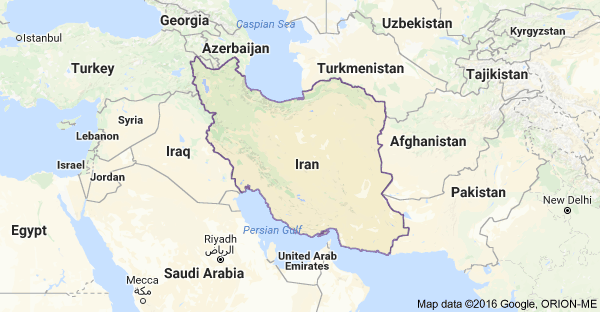
Iran shares borders with Turkey, Armenia, Azerbaijan, Iraq, Pakistan, Afghanistan, and Turkmenistan. When you’re finished backpacking Iran and ready to move on to a new adventure (I recommend Pakistan) check out Caravanistan for plenty of info on visas and crossing reports.
During different times you could travel onward to Afghanistan . Unfortunately, due to the current situation, you can’t enter Afghanistan at all.
Phrases you need when hitchhiking in Iran
Without money – M ajanee
Do you go to …? – S homa be … mirid?
Can you do me a favour, please? – Mishe ie lotfi be man bokonid?
Can you please give me a ride to …? – Momkene man ro be … beresonid lotfan?
I don’t want to pay – Man nemikham pul bedam
Being heavily subject to US Financial Sanctions, it is not really feasible for travellers to find work in Iran.

A new country, a new contract, a new piece of plastic – booooring. Instead, buy an eSIM!
An eSIM works just like an app: you buy it, you download it, and BOOM! You’re connected the minute you land. It’s that easy.
Is your phone eSIM ready? Read about how e-Sims work or click below to see one of the top eSIM providers on the market and ditch the plastic .
Volunteer in Iran
Iran is a not a suitable destination for volunteering. The authorities may not take kindly to foreigners involving themselves in the countries business and there have even been a few cases of dual national being imprisoned for working with NGO and Humanitarian Projects.
Backpacking Iran is not without its challenges. For starters, you might have to live without Facebook for a bit… shock-horror!
Unfortunately, it’s not just Facebook that is blocked; Couchsurfing, The BBC, Twitter, Youtube, and your favorite – ahem – extra curricular sites… a lot of your favourite sites have been blocked by the government for indecency reasons.

Luckily, it’s very easy to get around this. Almost all Iranians have VPNs installed on their phones and you can download a VPN from the app store or purchase one in the country.
VPNs work by bouncing your location all around the world so that it appears that you are in, for example, Amsterdam rather than in Tehran. This means that the Iranian government cannot track or block you. Because surveillance levels are that bit higher in Iran, it makes sense to have your VPN switched on whenever you are on any public wifi, regardless of what you are doing.
I’ve tried a whole number of VPNs whilst backpacking Iran; at the time of writing, Hide Me works the best.
Iranian Food offers a unique take on Middle Eastern. Kebabs and Falafel are available widely as are Olives and Pistachios nuts.
Much of the fare is carnivorous (of course, Pork is off the men) although there are some fine vegetarian offerings to choose from. Let’s look at some favourites.
Koofteh Tabrizi – Big juicy balls mixed with herbs served in a sweet tomato sauce. I initially ordered these believing them to be vegetarian. They are definitely not vegetarian.
Sheeps Head – Exactly what it sounds like. Boiled on the street in big pans and served for breakfast. Apparently the cheeks are the best bit.
Loobia Sabz (Green bean stew) – A trusty vegetarian dish which is simple but tasty.
Doogh – Delicious minty yoghurt based drink. You will either love or hate this, I loved it.
Persian hospitality
Before I travelled to Iran, I really wasn’t sure what to expect. This is a country which has been depicted unfavourably in the international media and I half expected to be bundled into the back of a van by a bunch of bearded men. When I look back on that I realise just how totally ridiculous it was to even think about that.
Iran is one of the safest countries to backpack around and there are many things I discovered about Iran during my travels in this amazing country. Persian hospitality opened my eyes to just how damn fun Iran is to travel around. Thanks to a couple of networking groups on Facebook , I was able to connect with plenty of local Iranians and arrange to hang out with people all over the country…
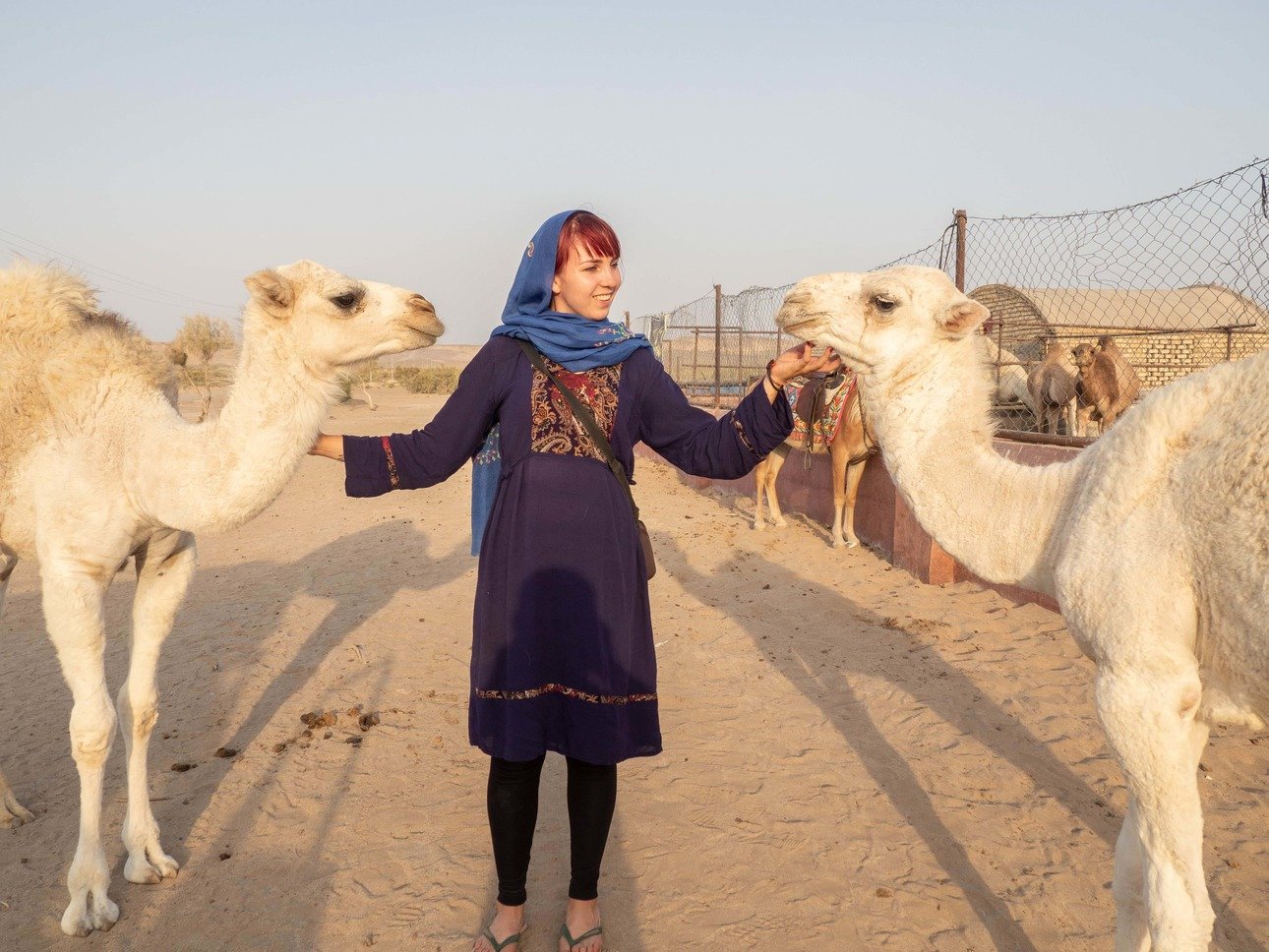
It was whilst hitchhiking that I first came across Tarof; a complex and confusing offshoot of Persian hospitality…
Tarof in Iran
Tarof is an Iranian culture and custom which you need to be aware of. Basically, somebody will offer something for free even though it is not actually for free; when the offer is made, it is supposedly understood by both parties.
Backpackers and even other Iranians can find this a bit frustrating as sometimes somebody will make a huge show of offering something for free only to expect payment at the end. The tradition comes from a warm and fuzzy place though; Iranians don’t like the idea of asking for money as the Persian culture dictates that you should be extremely hospitable to guests, especially us lucky backpacking vagabonds.
When hitchhiking in Iran, it helps if you check the ride is not Tarof – simply say ‘Tarof Nist’ – it’s not Tarof. Assuming they answer no you can assume that the offer is indeed genuine.
Useful Travel Phrases For Iran
Salaam – Hello
Mamnum/ Kheyli Mamnum – Thanks/Many Thanks
Chetori? – How are you?
Kheili khube – Very good
Khoshkel – Beautiful
Koja mitunam chador bezanam? – Where can I camp?
Lotfan – Please
Salamati – Cheers
Kesafat – Trash (can be used as a light insult amongst mates).
Chi? – What?
Koja? – Where?
Fandak darid? – Do you have a lighter?
Mishe takhfif bedid? – Can you give me a discount?
Aab ashamidani kojas? – Where is the drinking water?
Esme shoma chie? – What is your name?
Man az X hastam – I am from X
Een cheghad Mishe? – How much does this cost?
Dating in Iran
Whether you are a man or a woman, you are likely to get plenty of sultry stares whilst backpacking in Iran. I had one girl stop me on the street so she could give me her phone number. Iranians like ‘rare’ things and right now, in Iran, backpackers are still pretty damn scarce!
You need to use your VPN to access Tinder, but if that isn’t your thing; it’s easy to meet hot Iranians simply by heading to local cafes or shisha bars.
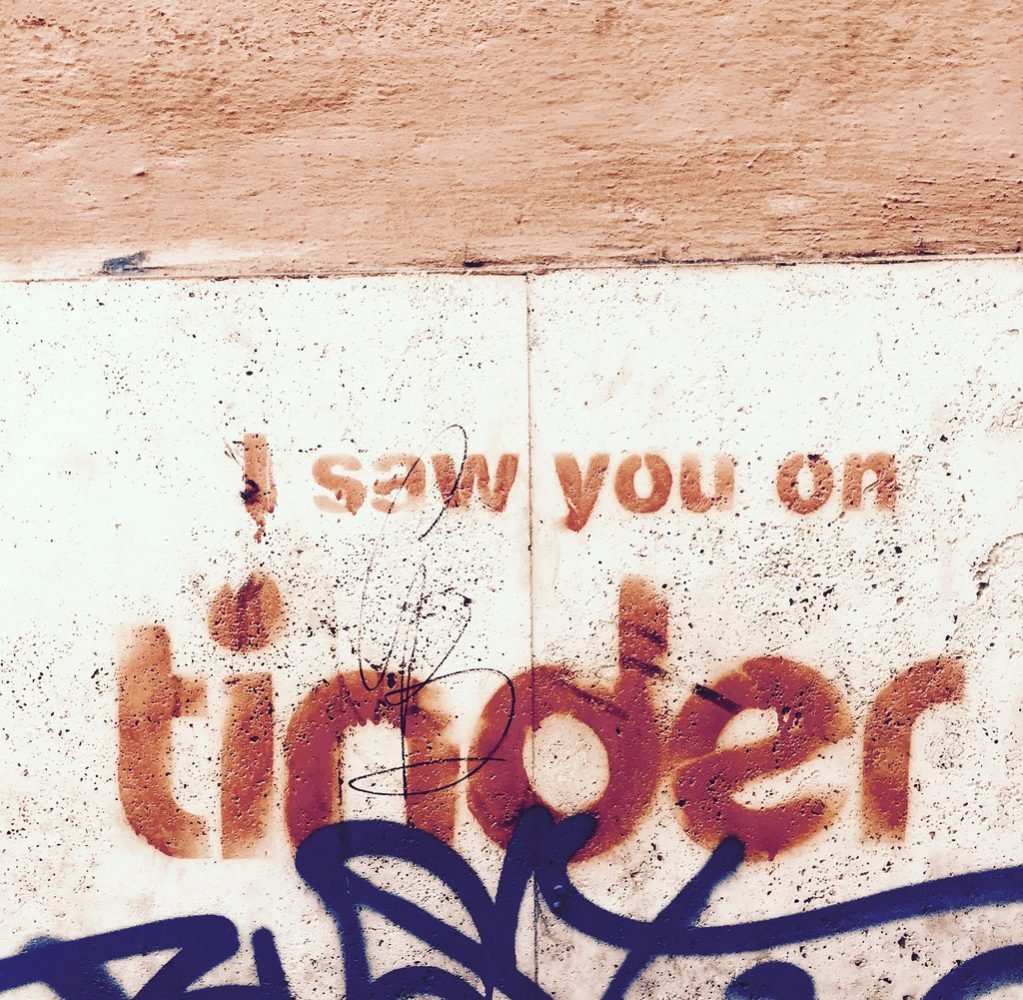
The big problem with dating in Iran is finding a place to be intimate, this is even harder if you are a foreign-Iranian duo. It is pretty much impossible for a foreign-Iranian duo to check into a hotel without a marriage certificate, however if you can find an understanding mullah, it’s possible to get a temporary Iranian marriage : a sigheh .
These can last for a minute to a lifetime and typically cost about thirty dollars to get sorted. Note that this is not easy to sort and takes perseverance.
Many young Iranians are not especially religious or conservative and are curious about foreign backpackers in Iran. Most Iranians lack the sexual experience of Europeans and it is important that you always treat women with respect whilst in Iran. If you go on a date with an Iranian, remember; you are an ambassador for your country – i.e. don’t be a dick .
Books to Read About Iran
A backpacking trip to Iran can be a much more enlightening experience if you know a little bit about the country’s history and customs, I strongly recommend throwing a couple of the below books into your backpack before travelling in Iran:
- A History of Iran: Empire of the Mind – An in-depth look at how the country was formed, encompassing historical, cultural, social, and religious factors.
- Understanding Iran: Everything You Need to Know – An overview of regional history and involvement with the west from past to present and into the future.
- The Silk Roads: A New History of the World – Certainly one of the most popular recent publications on the region. A stark look at history from the other side of the coin.
- Persepolis: The Story of a Childhood (Graphic Novel) – Insights into daily Iranian life, culture, and family through the experiences of Marjane, a young girl living in Tehran.
If you’re hitchhiking, I’d also strongly recommend picking up a road map of Iran .
A Brief History of Iran
Iran, or Persia, had been an important global player for millennia and is home to one of the oldest civilisations in the world. The first Persian Empire stretched from one corner of the known world to the other and 40% of the world’s total population lived and died under the reign of The Persians during 480BC.
Once a superpower of immense proportions, Iran has been invaded many times and suffered during the medieval ages as it was ravaged by the unstoppable Mongol hordes. Despite this, Persian culture refused to be diluted and Iran maintained a strong national psyche.
Iran sided with Germany during World War II and was promptly invaded by British, American, and Russian forces. After the war, Iran struggled with multiple local uprisings incited by Soviet forces who wanted cheap access to the country’s massive oil fields. A military coup orchestrated by the CIA in 1953 catapulted the young and enigmatic Shah Mohammed Reza to power.
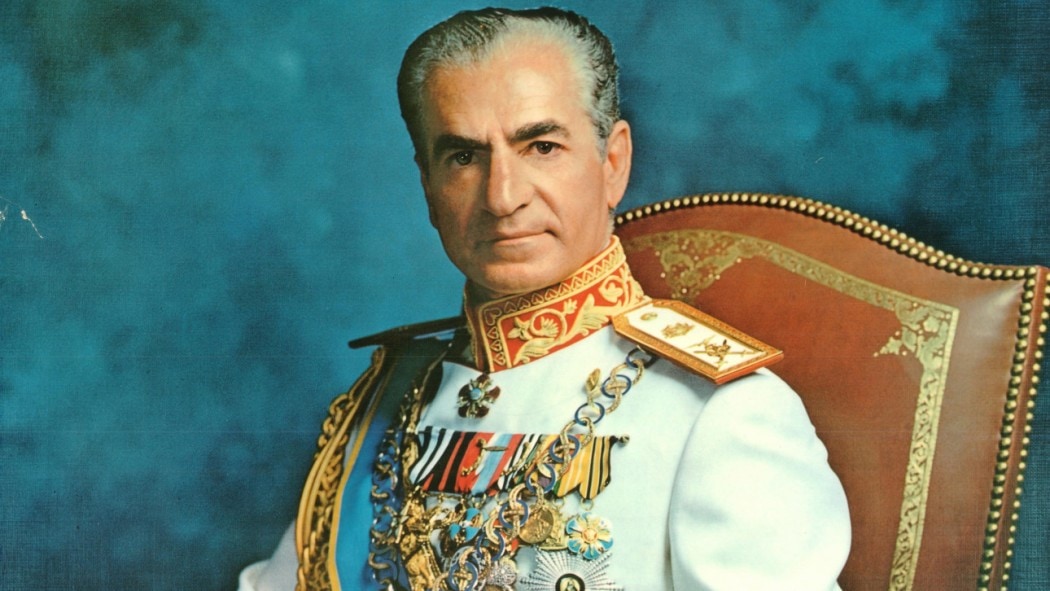
The new Shah began rapid modernisation of Iran and entered into a contract with an international consortium of businesses to sell Iranian oil and split profits 50:50. Crucially, the consortium would not allow Iranians to be on the board or to audit the cash flow and Iran was taken for a ride.
Its oil fields were sucked dry with only a fraction of the profits making it back to the government for economic improvements. As the Shah pushed through land reforms and pro-Western policies, the Islamic right wing became alienated and restless and found leadership under Ayatollah Khomeini who was swiftly banished after defaming the Shah during a speech.

In 1973, the Shah returned the oil fields to national control and raised export prices to further fund the country’s development. The West, who had enjoyed dirt cheap Iranian oil until this point, responded by fanning the flames of discontent amongst the Islamic right wing in the hopes that a change in government would lead to cheaper oil. It was largely because of foreign powers meddling behind the scenes that Iran changed so abruptly.
In an attempt to avoid a civil war the Shah left Iran in January 1979. Just a couple of weeks later, Ayatollah Khomeini returned to Iran and received a heroes welcome.
A New Rule… Again
Iranian army forces, surrounded on all sides by rebel revolutionary forces, declared neutrality and Khomeini took control as the ‘Supreme Leader of Iran’. Many political activists fled during the Iranian revolution as revolutionary forces took a hardline approach on nationalistic groups in a bid to unite the country. Khomeini’s policies changed Iran drastically, something I cannot write about here.
The USA and its allies, keen to get its hands on some dirt-cheap oil again, encouraged an Iraqi invasion led by American ally Saddam Hussein. The eight year Iran-Iraq war raged as Khomeini continued to enforce anti-western policies and the country changed beyond recognition. Khomeini died in 1989 and control passed to Khamenei, a powerful figure with an almost identical name and beard.
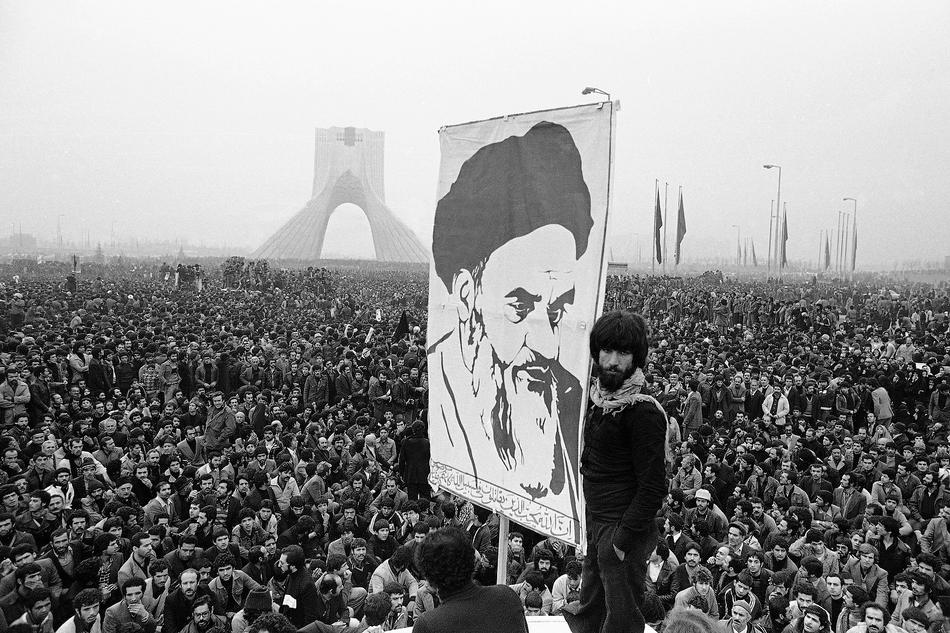
Recently, the situation in Iran has been rapidly changing. Many trade embargoes have now been lifted and Iranians are hopeful that economic prosperity and a softening of attitudes is on the horizon. Iran has the potential to be a world power yet again and the country is opening up to the world.
Inspired by a glorious past, many Iranians are now excited to see what the future holds for Iran and there are exciting political developments upon the horizon as politics slowly begins to move away from being totally intertwined with religion. Right now it is an exciting time to go backpacking around Iran; the sense of hope and excitement in the air is intoxicating and Iran is finally emerging, blinking into the light, as a global player yet again.
The typical things to do in Iran are one thing but it’s a big – and brilliantly beautiful – country. There is so much to do if you just take a moment to break away from typical trail. Make friends with the locals; they’re so warm and they’ll take you to the best places to go in Iran (where the true experiences lie).

Things go wrong on the road ALL THE TIME. Be prepared for what life throws at you.
Buy an AMK Travel Medical Kit before you head out on your next adventure – don’t be daft!
Be Good to Iran
Backpacking in Iran can be one hell of a party given the right moment – yes, even in Iran you can party! Take it from me, it can be easy to get carried away at an underground rave. It is important to keep in mind that you are an ambassador for your country, which is awesome. We can make a positive impact on people when we travel and get rid of any ugly stereotypes that may be associated with your country.
If you visit conservative villages or small communities outside of the cities, always ask before taking photos, especially when it comes to taking photos of women (you should ask in the cities as well). The people who live in these villages are not exhibits in a museum. They are normal folks just living their lives. Always show them the complete respect that they deserve.
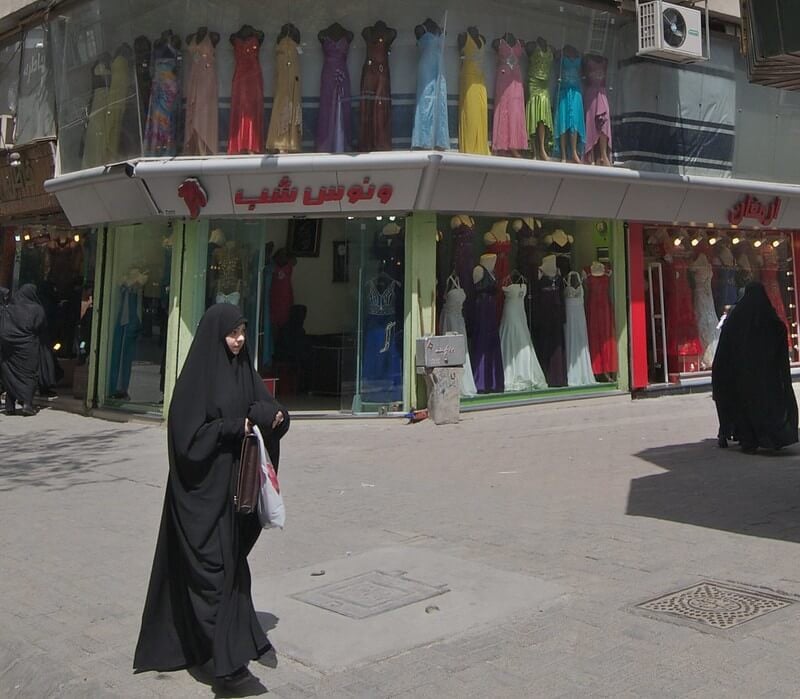
When buying a local crafts or knick-knacks, do not haggle so low that the price is unfair to the person who spent countless hours crafting it. Pay people what they are worth and contribute to the local economies as much as possible.
I know it can be hard, but do your best to use the least amount of plastic water bottles that you can. Refill the ones that you do buy; use a Grayl Geopress ; refill at your hostel/guest house… There are plenty of ways to reduce plastic!
Backpacking Iran or any region for that matter often illuminates some of the great socio-economic inequalities of the world. Never take it for granted that you are healthy and financially able to go traveling. Show the world around you some gratitude and help to make a positive impact on it. Most of all have the time of your life and spread the love in Iran!
Every traveler has – or will have – that country that they truly fell in love with. That country that truly changed their life’s direction is ways they could never have foreseen. For me, that was Iran.
While backpacking in Iran, I fell in love. Both with Iran and in Iran. What started as just another step in my overland journey became the country that changed everything.
It goes without saying that traveling Iran is a contentious point courtesy of how it’s been portrayed in the media. It’s not all simple. Iran isn’t perfect – as nowhere is – but it is gorgeous. More than that, Iran’s people are gorgeous.
Take a chance. Piss in the face of the big boys and girls that want to tell us where we can and can’t go on this beautiful. You know what? Fuck ’em.
They haven’t traveled to Iran… but I have. I’ve covered so much of that ancient land, backpacking through Iran and seeing its skies. And now, if you have the courage, I reckon you should too. Enjoy, amigos.
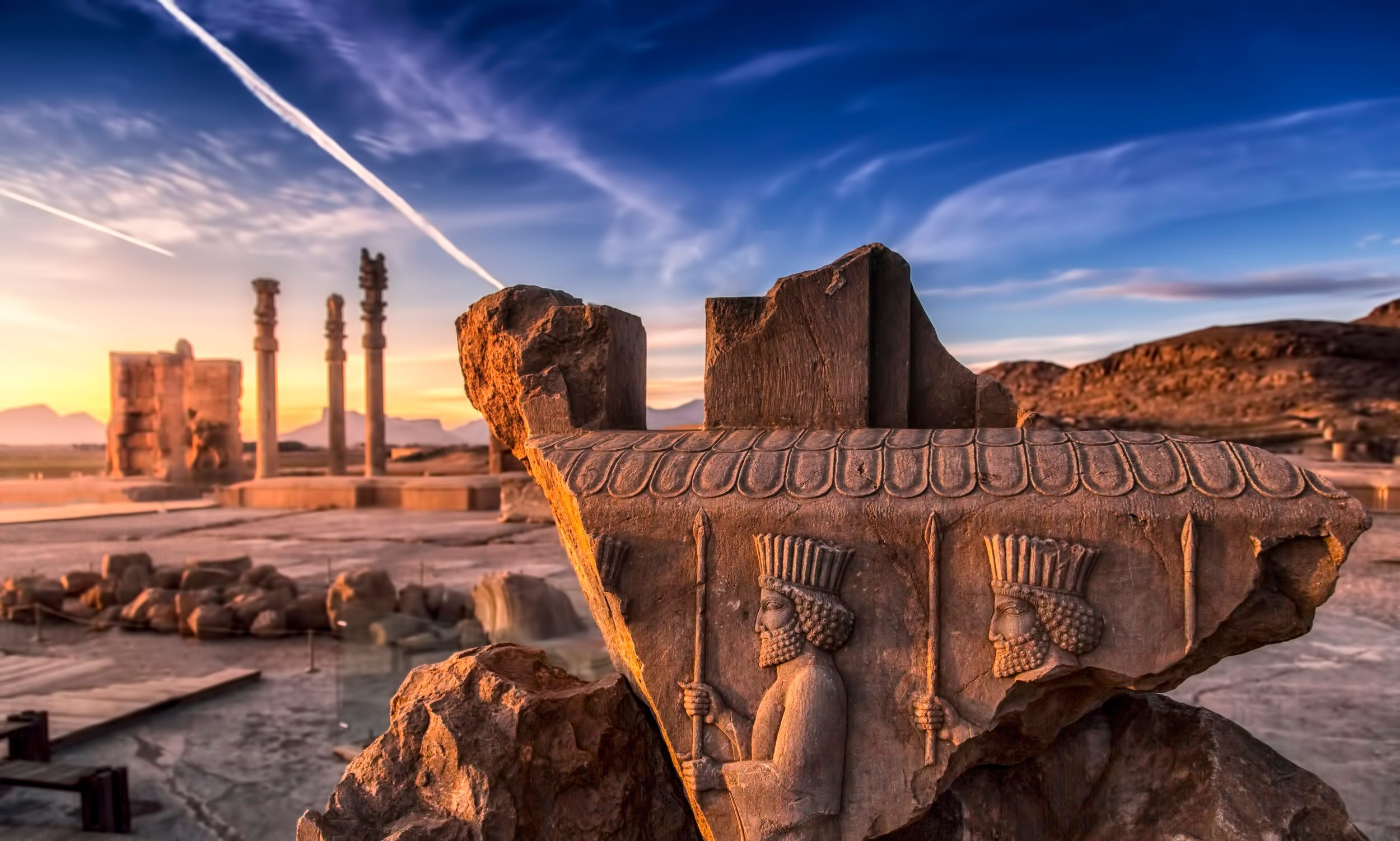
Made it this far? You get 15% OFF to book a place to stay ! Offer valid exclusively for Broke Backpackers 😉

Will Hatton
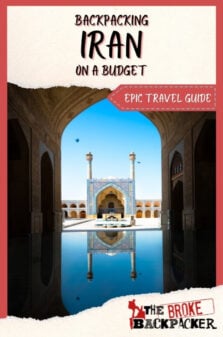
Share or save this post

89 Comments
Iran is really beautiful. I hope everyone traveling, enjoy this country. Tehran, Shiraz, Isfahan and north of Iran are must-sees in Iran. If you have enough time, also there are many other must-sees in Iran.
Wow. This has helped me make several decisions. Thanks for the inspiration.
Your personal definition of success in life may be different. But many people may define the secrets of success as happiness, security, health, love, and perfection. The key to success is the ability to achieve goals in life, whatever those goals may be. For more information on success, visit the iranmodir website.
Hello dear will Hope you feel good . May you and your family and friends all be well and stay away from this damn virus. Me and my family and nomads are all fine. Our only concern is being away from friends. Hope to see you. Be sure to send me a message on WhatsApp 00989100943 Be sure to come to our house agin yors bahman frome zagros mountain Qashqai Nomad
very good article. thanks.
My flight to Iran for June is still valid, even with all the craziness going on, I called the airline and apparently I’m still going to Iran! 🙂 Does anybody know if everything is ”back to normal” over there now?
Iran has many cities and places of interest. Beautiful historic cities with rich culture. I live in tehran
Please include amongst your favourite phrases for backpacking Iran “thanks” = mamnum or even kheyli mamnum = many thanks . Since mid 2018 & the start of US sanctions, life for Iranians is really harder now & simple words are even more are appreciated. Motashakkeram.
Thanks Soko,we’ve added that in 🙂
I want to travel with my family, When is the best time for traveling there and how can I book my hotels?
please reach out to our partner company at epicbackpackertours.com for more information on organized travel in Iran.
Iran is beautiful
With the current situation, would it be unwise for an American to travel to Iran now?
Hi Janet, Yes, we believe it is currently safe for Americans to travel to Iran. You will need to abide by certain requirements, Iranian law requires guests of US/UK and Canadian nationalities to have a 24/7 guide and all trip plans and reservations to be made in advance. The visa process will also require assistance of a third party. Check out our Iran tours here: http://www.epicbackpackertours.com/destinations-iran/ it would be great to have you along.
Yes I visited Iran with backpack 7-8 city I visited.’It is incredibly easy to hitchhike in Iran and to Couchsurfing” I agree I met nice people in Iran.
Hi Will, Thank you for the useful info and your interest in my beautiful country. Actually Iranian are so friendly and hospitable towards tourists and foreigners. I’m an English – Farsi translator and owner of Farsils.com. I would be more than happy to help the tourist to Iran have a pleasant journey.
Hi Will, Awesome post, very helpful! Thanks to your post I’m planning a trip to Iran! However I’m a bit confused about the visa situation for a British person. If you go through 1Quest like you recommend, they quote a fee of (starting at) 19 euros to gain an authorisation code. Is that then the only cost? Or will I have to pay a fee to obtain my visa at the Iranian embassy in Istanbul? I’ve read online elsewhere it costs £145 per passport to get a tourist visa permit and then £170 in visa stamp fees. Thanks for any help!
Hi Rosie, You will need to pay for the authorisation code and visa separately. The code is issued by the authorities in Iran and your visa will be added to your passport when you then send it in to the Iranian office/authority in your country.
Very comprehensive information about Iran! I’ve traveled multiple times to the country and I loved it a lot, just like you describe it. The village of Kong near the Gulf was one of my favorites because of the colourful clothing, history and hospitality.
very useful Thank you.
Remembering the extreme hospitality I received as a foreigner travelling through Iran, “thank you” being included amongst “My favourite phrases for backpacking Iran” would be a nice touch !
Truuuuueee! That’ll get put in as soon as I figure out the appropriate spelling! For anyone who’s interested, in Farsi it’s very similar to the French “Merci” but with the stress on the 1st syllable. 🙂
Iran has many cities and places of interest. Beautiful historic cities with rich culture. I live in tehran…
Very good, its very helpful.Thank you.
Thanks a lot for sharing your experience. That was so informative. Now Iran is in my bucket list.
Thats awesome to hear, Maria!
A nice and complete guide about backpacking in Iran, Amazing! I wish others to come to Iran and experience what you have. Iran is one of the most misunderstood countries in the world. Good luck
Hello I am Iranian I can speak a bit english
i enjoyed this article very much
Many sites hate Iran, but Iranian people are very loved
Travel to Iran and the see Iranian people
iranian people lovely people in the world
Tnx, very helpful.
Hey mate, first allied do not cover Iran anymore, any recommendations on agencies that will cover Iran?
I’m Mona from 1stQuest. We really love to help British, American and Canadian travelers to travel to Iran without a guide as we do it for all other nationalities. But as I have explained above in another comment, ignoring this regulation will give our agency and travelers trouble. Here is what we do to ease the process and lower the cost for travelers. British/Canadian travelers can be accompanied by different guides in each city, so we offer them the lowest rates possible for hiring a local guide in each city without having to pay for their accommodation and extra meals. Also they can get a visa for a whole month (30 days) just like other nationalities if they have a guide for the whole trip. For trip durations above 15 days we offer discounts to lower the total cost.
I hope that the Iranian government omit this regulation very soon.
Hello Will! How did you manage to get the authorisation code with 1stquest for only booking one day tour? I’ve contacted them regarding it but they insisted that I book a full tour for the entire length of the visit! And they said the visa is only valid for the duration specified, not one month! But isn’t the tourist visa valid for one month? Quite a contradiction there! And do you know any other agency that’d let one book a one day tour in order to get the authorisation? Many thanks!
Hey dude, so firstly – I DIDN’T get a one day authorisation code, we’ve just heard that it IS possible. I traveled to Iran on my Irish passport. Sorry but I don’t have any more info than that… it is pretty hard to visit Iran independently as a British, American or Canadian citizen.
hi very nice article
im from iran too
I am very glad you visited Iran, iran is a beautiful country in the world ,
Believe me, travel iran
Is it save enough for Iran travelling in 2018?
Yeah its 100% safe.
more than 100 %%%%%
Thanks for the comprehensive guide. Currently I’m hitchhiking and couchsurfing through Iran and suddenly ended up in Qom without a host. I noticed you have no hostel recommendations in Qom and wanted to tip about a newly opened hostel I found called Qom Hostel (appearantly the only hostel in the city). It’s owned by a young Iranian couple and is located a few minutes walk from the shrine – they have 11 nice rooms with all basics covered. The owners speak English and are incredibly helpful. It kinda feels like a couchsurf stay as they gladly invited us to their home for breakfast and spend a lot of the day with us etc. They also offer a free tour to the shrine, the mosque, the old and new bazaar which was absolutely amazing 🙂
I thought it might be relevant to readers as I myself couldn’t find proper information about hostels in Qom. It can be found in Google maps. My friend and I paid 30$ for a private room. They also have cheaper dorm options.
Hey Jacob! Thanks for this, we’ll pop them in the guide 🙂
Wow!!! That’s really a fantastic and well researched guide – the most detailed one I’ve came across! Thank you for your effort and time to put all this information together! I will definitely recommend it to everyone who’s planning to visit Iran. There is nothing to ad!! I just came back from a 4 weeks backpacking trip to Iran.The only thing i have to offer (or would like to share) are the smiling faces of the most warmhearted and welcoming people of Iranian. The incredible hospitality blew my mind away! So don’t think twice! Go there and let yourself surprise! You will not regret it!!! I promise! 🙂
https://www.youtube.com/watch?v=0yXiF3J1i3c
I hope you enjoy these (for us and hopefully soon for you too) memorable impressions!
Hi, I will visit Iran very soon, but I did not find Iran in the lists of travel insurance in First Allied Insurance.
Hi, This has got to be one of the best post I’d ever came across when it comes to Iran travel. I really enjoyed reading everything especially the tips. For other useful Iranian related topics I strongly recommend listening to Dr. Holakouee Persian radio program here: https://www.holakoueearchive.co . Thanks!
Hey man, thanks for a great read. I was hoping to visit Iran this summer and hitch hike to Iraq after.
I was just wondering would I need to present a return ticket to prove I’m leaving the country during my visa on arrival application?
Kind regards,
You shouldn’t need a return ticket for your visa unless you’re America, British or Canadian 🙂
Hey Daniel,
I’m a member of 1stQuest support team. I think you can always travel to Iran as an american traveler and there’s no risk for you.
What you’re asking for (traveling in Iran without a guide) is indeed a desire for many US/UK travelers and there may be some agencies which take the risk to do it. But there’s always a slight chance that someone report you to police (report that some Americans are traveling around without a guide) and then you will be in trouble which happened to some of our customers. They were reported by a tour leader or maybe hotel owner when they were in an Eco lodge in Yazd, after which they had to hire a guide for rest of their trip and were so stressed out that police will arrest them in the airport which of course didn’t happen.
Yes Iran is pretty damn safe, just a ton of bullshit in the media that scares most Americans away.
That is because thecompany that applies for the visa is responsible for the visitor – if anything should happen they would be held responsible and all could face unpleasant consequences.
I am a foreign student studying in Iran since the last few years and intend on backpacking, thanks for the lovely guide.
Just wanted to make one clarification: It is perfectly fine to have tattoos in Iran – unless they are obscene or extremely out of place and it is okay if they can be seen. The link in the post is linking to a website discussing the opinion of the Sunni school of thought. Iran is a Shia Muslim country and their scholars see no problem with tattoos.
Not saying it’s not OK to have tattoos in Iran, more that one should avoid wearing tank tops and shorts in the street.
Hey just an update. World Nomads no longer covers Iran.
Hi Will. Great article, really well put together and super informative!
I am planning a trip myself to Iran and have a question about the authorization code. I am a US citizen and am really not a tour or guide kind of guy. When you used 1st Quest, did you need to book a tour / guide for the entire duration? Did they make you do it before the authorization code? I am hoping to go with the book a one day tour route instead as I like you, much prefer the DIY approach when it comes to travel. Anyways, any suggestions would be awesome. Thanks.
Hey buddy! You should be able to find a provider who will let you just book a one day tour… However, it’s worth noting that with relations between the US and Iran in their current states, I’m not sure now is a good time to try and game the system.
hello Will i am Ramtin me and my wife have a guest house so near to yazd nartitee or nartitee ecolodge we are the first rank of special lodge in yazd on tripadvisor and we recommended by lonely planet this is our website http://www.nartitee .ir its our pleasure to be host of you and if you want recommend us to your friend and others thanks alot
Welcome to Iran. I’m Iranian and I’m living in Tehran. Don’t worry about your tattoos. Yes, it is true that generally Iranian people do not use tattoos on their bodies and they somehow do not like it, but nowadays many Iranian people also tattooed their bodies like arms, neck, back and etc. So, definitely there is not any problem for you because you are not Iranian and everyone completely know that your culture is different from us. Actually, the reason that Iranian people usually do not like tattoos is because in the past the vicious, villain and bad people first start to use tattoos on their bodies and this causes people dislike the tattoos. But, this thought become slowly wipe out from the society. So, be comfortable with your tattoos. Second, about money: the best way is provide a gift card (in persian: karte hadie) for your self by helping someone. This card is like your international cards but you can use it just in Iran, all over the country even in villages. It is easier and also safer. Iranian people also use widely these cards, they don’t keep much cash in their wallet. In every where they use their cards. Actually, almost all places like shops, markets, restaurant, Transport station, cinema, zoo, gas station, public places and etc. accept your card. Theses card are issued by different bank, no matter which bank. All of them are connected to one system which works all over the country. Third about currency: the official monetary unit of Iran is Rials. But, our people do not use it much, rather they use “Tomans” instead of “Rials”. Each Toman is equal to 10 Rials. For example, 100,000 Rials is equal to 10,000 Tomans. It is so easier to work with Tomans in Iran. If you see a cost to Rials, Just drop a zero, it becomes to Tomans. and if someone tells you a price in Tomans, you just need to add a zero in front of it in order to change it in Rilas. If you need any further information, please do not hesitate to contact me.
The last time i went to imam khomeini airport i went back with subway But the subway was open only between 8 and 14 And what was that about tattoo?! Most young people LOVE tattoo and so many have tattooes. There’s no need at all to cover your tattoos. Yes there are some people who will look at you strangely but no matter they look at me like that too! And about money i have a suggestion It’s hard to get an iranian an ATM card But you can do something. Find an Iranian friend and ask her/him to get you a gift card (in persian: karte hadie) and give him/her the money that you want in your card! This card works wherever the official cards work! + I FELL IN LOVE WITH YOUR ARTICLE!
Awesome post cheers for sharing.
Hey Will, amazing post, covers so much and has really got me wanting to visit. I especially love the addition of books to read, great idea. I was looking for some Iran content to share on my Travel Blogs platform, and have I have mapped out some of your destinations and linked to this. If you wanted to check what I mean, you can do so https://www.thetravelblogs.com/asia Keep up the amazing work. If your ever in Madrid feel free to hit me up, I’d love to buy you a beer and write an article about you!
Hi Will, Very useful information for me who’s going to visit Iran next year!
By the way, there is a photo caption From Tabriz to Tehran with colourful mountain range, is that far from Tabriz?
Thank you! Pandan
Wow! what a detailed guide, awesome! Can’t you stay longer if you request a visa in your own country?
Visa on arrival or visa in advance are both the same duration.
hi, Im from IRAN, Shiraz city, i liked the comments and ur blog, i like to offer our Guesthouse in Shiraz, and also tour package, if its ok you can publish it in tour page, ALWAYS AVAILABLE TO ANSWER YOUR QUESTIONS http://www.shirazstay.com [email protected]
Thank you for the time and effort in sharing your travel experience there. I’ve been deliberating for the last few weeks on where to go next from my current location and this has convinced me that it will be Iran. Cheers dude.
great post very good 🙂
This is like the ULTIMATE guide to Iran! Great write up, Will! Thanks for including the Visa* section, this would totally help when we decide to go.
Hey Buddy,you wrote a Great article, almost covered all the tips. BTW I want to introduce our hostel to readers of your blog, HI Tehran Hostel offers excellent value budget accommodation in a convenient location of Tehran, stay with us and see what a difference a stay makes.
Is there any possibility to mention the two facebook groups you were talking about? This guide is a bible man! much appreciated. I’ll backpack in Iran at the end of this year.
Hey buddy – sure thing; I’ve put them in the guide now – they are ‘see you in Iran’ and ‘Show the real Iran’ 🙂
Brilliant guide! You’ve opened my mind to travelling in Iran! Do you have any updates on how your brother got on with a UK passport? I’m currently trying to get an authorisation code but I’m getting nowhere, I’ve contacted many travel agencies but they insist that I must be part of an organised tour
It’s possible to get the authorisation code by booking a one day, short, inexpensive tour – getting the visa – and then cancelling the tour…
Do you have one tour in mind that could provide us with an authorization code?
My wife and I are Canadian, and we are not able to find any tour that will give us a code for 1 day. They insist that we have to stay the all time with them.
Thanks so much for your help, Matt
I’m afraid that the tour companies seem to change their mind so often that I can’t make a recommendation… Sorry about that!
How did your Brother do with the British Passport/Travelling without a guide?
Hey Will! Amazing guide! I think that this is the most detailed one I’ve seen out there! I also read your post about the Iranian girl! I have also heard similar stories from other travelers. The Iranian regime is just the make-up of the country. Behind all these conservative Sharia rules, you find the most liberal people in the Middle East. Except in Lebanon, having sex with a local Muslim woman is like an impossible mission. Nice story man!
By the way, one thing to do I would also add to your guide is visiting the Qashqai Nomads from the Zagros mountains. The nomads living there still live like their ancestors used to, and for me, that was one of the highlights of my trip to Iran.
Cheers mate,
I’ve heard of the nomads man! I’m heading back to Iran in May with Esme again so going to swing up that way andc camp out for a few nights! I read up on your posts in Iraq and got major travel envy – those are some quality adventures brother!
Your hedonist dick
Amazing guide! Wish we had had more time to explore some of the off the beaten path places you suggested here. We will just have to go back I guess 🙂
Yes,congratulations,but take into account what most travel bloggers and lonely planet guides forget – you are a MAN. things can be very different when travelling as a woman. everywhere in that region,while Iran is maybe has the least aggressive men,while it is getting worse now that more and more mainstream tourists go there. Girls,use your intellect and gut feeling! And enjoy that you can talk and chitchat with many women and girls 🙂
Great article. Thank you. You educated me about my own country that I have not encountered for many decades. I do believe that you could have left out your plug for drugs and how to obtain them. As for “Shisheh” an Iranian friend of mine had mentioned that is “glass” which is meth? Other than the drug part, it was an awesome, intriguing account. Thank you.
Fantastic work. A great guide to a lesser known area of the world. I have mapped your recommendations and linked to your article on The Travel Blogs, feel free to check it out: http://www.thetravelblogs.com/asia/western-asia/
Happy Travels!
Excellent guide Will! We’re going there in a few weeks and this is going to be our bible. Do you think Mariana and I will need to fake a marriage (get rings) to make life a bit easier travelling as a couple?
Nah, I think you will be fine – it’s just because she was an Iranian and I was not a Muslim. I met some other hitchhikers and they had encountered no issues as they were foreigners; just say you are married when they ask 🙂
Incredible article Will!!! I hope to visit Iran next year once I have my new passport (Israel stamp). Will definitely book mark this 😀
Wow, I’m an Iranian and I’m so appreciated, thank you so much for visiting and trying to change people minds about Iran. News are killing our culture.
Awesome write up dude. Now I really wanna go to Iran.
Wow. What a guide. Thanks for all the info man. From what I’ve heard, it’s pretty near impossible to get a visa or Iran as an American, but definitely going to be trying in the next few years. Awesome to hear you had such a good experience through the country.
Check out the visa section of this guide; there is some ways around the visa problem… 🙂
Very well written, but There is another recently opened hostel in Tehran, located in the city center named Denj Hostel in Tehran.
Wow, balls of steal, man. Thanks for the inspiration. 😉
Leave a Reply Cancel reply
Your email address will not be published. Required fields are marked *
Save my name, email, and website in this browser for the next time I comment.
Notify me of followup comments via e-mail.

Travel safety: 17 CIA tips, advice to think like a spy on vacation
Editor's note: This story was originally published on July 9, 2022.
TEL AVIV, Israel – Before I hit the bike path for a long sightseeing excursion in this international hotspot, dressing down in muted colors, a nondescript baseball cap and a relatively cheap watch and shoes was as second nature to me as applying sunscreen.
As a longtime national security journalist who has traveled to some of the world’s grittiest corners, I learned long ago to make sure I’m that person who doesn’t stick out in a crowd and become a target for thieves, terrorists, or kidnappers – whether I’m on an assignment or a family vacation.
Start the day smarter. Get all the news you need in your inbox each morning.
Central Intelligence Agency operatives on assignment overseas call it “being the gray man” who blends in and doesn’t alert the world to their American citizenship and all of the assumed wealth and baggage that can bring. I learned about this valuable safety tip during many “Hostile Environment Training” courses I’ve taken over the decades, including some I helped design for young journalists flying off to destinations overseas.
Live updates: Israel orders 'complete siege' of Gaza; at least 9 Americans killed
'We have to be on guard a lot': Why safety comes first for so many LGBTQ travelers
I was already thinking of brushing up on my travel safety tips when preparing to come to Tel Aviv when I happened upon a new CIA web posting with advice from its officers on how to travel safely and with confidence.
The CIA released these tips – or travel tradecraft, in spy parlance – as part of its ongoing effort to demystify its work in assisting the American public, according to agency spokesperson Walter Trosin.
I found the CIA's best practices, culled from the experience of its officers in the field, are exceptionally helpful, easy to adopt and especially relevant to Americans in these fraught times.
Here’s how to think like a spy on the ground overseas, with some annotation based on my travels as anything but an American James Bond:
Objective one: Getting there
▶ CIA tip: Make a paper and digital copy of your passport. While traveling abroad, it might literally be your ticket home if problems arise. If a hotel desk clerk asks to hold on to your passport, see if they’ll accept the paper copy. While you’re at it, write down some important phone numbers on the hard copy, including emergency contacts and the local U.S. embassy just in case.
Josh's tip: Email yourself the digital copy in case your phone goes missing along with your passport.
▶ CIA tip: Register with your embassy. Think of it as establishing communications with your home base. This enables embassy staff to contact you if there’s an emergency or unfolding crisis. U.S. citizens can also sign up with the State Department’s Smart Traveler Enrollment Program .
▶ CIA tip: Learn some local lingo. Bring a pocket guidebook or phone app so you can pick up key words and phrases.
Josh's tip: My go-to essentials include “thank you,” “please,” “hello,” “goodbye,” “yes/no,” “help,” “bathroom” and “police.” In worst-case scenarios, yelling out “no cash” helps if you believe you might be getting robbed, and “medic” and “hospital” if someone is hurt.
▶ CIA tip: Know your destination. Bone up not just on travel books but also try to get a sense of the place and the geopolitical issues at play there. The CIA World Factbook is very helpful and publicly available for basic information. The CIA's World Factbook team also has created special travel briefings for many countries.
Josh's tip: Look up the State Department Travel Advisories for your destination, though they often tend to be overly scary and alarmist.
▶ CIA tip: Scout out local transportation. Upon arrival, ask an airport official or travelers’ aide how much it should cost to catch a public shuttle or taxi to your hotel. Check online sites too. Be sure to negotiate the taxi price before loading your baggage and getting inside. Only use cabs from the official queue – or ride-hailing services from official apps – that are clearly marked and have a functioning meter and the driver’s ID displayed inside.
Josh's tip: Ask ahead of time if they take credit cards or American currency. Even better, stock up on the local currency, preferably at an ATM where you can use a credit card that gets you a better rate than the money changers at the airport.
▶ Josh's tip: Keep all your luggage close. This is especially the case when getting to and from your hotel. Bags can disappear at the luggage carousel, the taxi stand, hotel lobby, or any number of other places.
Story continues below.
Objective two: Settling in
▶ CIA tip: Know your escape route from your hotel room too. Familiarize yourself with emergency evacuation plans. And do a run-through to determine how many doors there are between your room and the nearest stairwell. Could you find it in the dark? While holding your breath in a smoky haze?
▶ CIA tip: Use the elevator, unless it’s an emergency. Using the stairs may be great for exercise, but crimes frequently occur in isolated stairwells.
▶ CIA tip: Try to reserve a room on a middle floor. Being on the ground floor can leave you vulnerable to break-ins, but many countries’ emergency response personnel aren’t equipped to reach higher than a few floors off the ground.
Josh's tip: If you’re in a particularly strife-torn locale, consider a room in the back of the hotel if you’re worried about car bombs or terrorist attacks. And just know that in some hotspots, bad actors will target hotel restaurants and other places where tourists congregate.
▶ CIA tip: Lock it up. Automatic locks on hotel room doors can often be forced open, and the chains cut. Use the deadbolt if there is one. Better yet, invest in a cheap and easily portable rubber doorstop; they work amazingly well.
▶ CIA tip: Beware of unsolicited knocks. Don’t open your hotel door unless you know or can verify who’s on the other side. Be especially wary of unrequested special delivery, maintenance calls, turndown service, or room service. Don’t be shy about calling the front desk to confirm.
Objective three: Going out and about
▶ CIA tip: Lock it down. Whether renting a car or taking a taxi, lock the doors and keep the windows rolled up if you sense any danger – or crowds. Carjackers and snatch-and-grab thieves often prey on simple mistakes like an open door or window.
▶ Josh's tip: When using Uber, Lyft and many other ride-hailing apps, make sure you are getting into the correct car. If something feels wrong, don’t get in.
▶ CIA tip: Stay alert. CIA officers (the real term for overseas spies, not agents) are trained to be highly attuned to their surroundings to constantly maintain situational awareness. Use all five senses to pay attention to what’s happening around you, and you’ll not only spot telltale signs if something is amiss but retain more of your destination’s unique atmosphere.
Josh's tip: You don’t always need to sit with your back to the wall like Jason Bourne but being able to see the entrances – and know the exits – is important if you need to get out quick.
▶ CIA tip: Be mindful when drinking adult beverages. Spies might swill martinis in the movies, but alcohol impairs alertness and judgment and could put you at risk, especially in an unfamiliar country. Learn the local customs and restrictions on alcohol consumption and follow them closely.
Josh's tip: Make sure you can see your drinks being poured and transported to you to make sure no one is adding any intoxicants. Avoid using or purchasing recreational drugs even if locals insist they’re safe and legal.
▶ CIA tip: Walk the walk. Your confident demeanor on the street is often the best deterrent against criminals. Be the gray man or woman and you won’t look like an easy target. Don’t attract attention by looking confused, lost, or distracted. Avoid poring over maps and phone apps in busy areas. And don’t be flashy. Flaunting extravagant watches and other personal items or cash will attract thieves and opportunists.
▶ CIA tip: Plan your route and reroute as necessary. Whether traveling by foot, car, or public or private transit, prepare in advance. Bone up on the potentially dangerous parts of town so you can avoid them. Don’t walk alone at night, stick to well-lit areas that aren’t too isolated if you can and know the number of the local authorities just in case. Avoid crowd commotion, as it could mean escalating danger or even a distraction designed to help someone target you.
Josh's tip: Carry an emergency whistle handy to scare off potential assailants.
With these tips, I spent the day biking throughout Tel Aviv and the nearby port of old Jaffa, home to a vibrant multiethnic community of Muslims, Christians, and Jews. The city was on edge a bit due to a recent wave of terrorist attacks , but I thoroughly enjoyed my time chatting up the locals and sampling their food and drink knowing I was doing everything I could to stay safe.
This article originally appeared on USA TODAY: Travel safety: 17 CIA tips, advice to think like a spy on vacation

- Privacy Policy
- Corrections Policy
- Ethics Policy
- Fact-checking Policy
- Ownership Policy
- Looking for Eguides?

How to Travel from Map to Map in Escape from Tarkov
Escape from Tarkov’s patch 0.15 introduced a new game mode called “Marathon.” Marathons are games with multiple raids, which is the new game-breaking feature. Players can move from one map to another and can end the marathon when they extract. However, how does a player travel between maps in a single raid? Here’s how you can do that and all the mechanics involved in the Marathon game mode.
How to Travel Between Maps in Escape from Tarkov
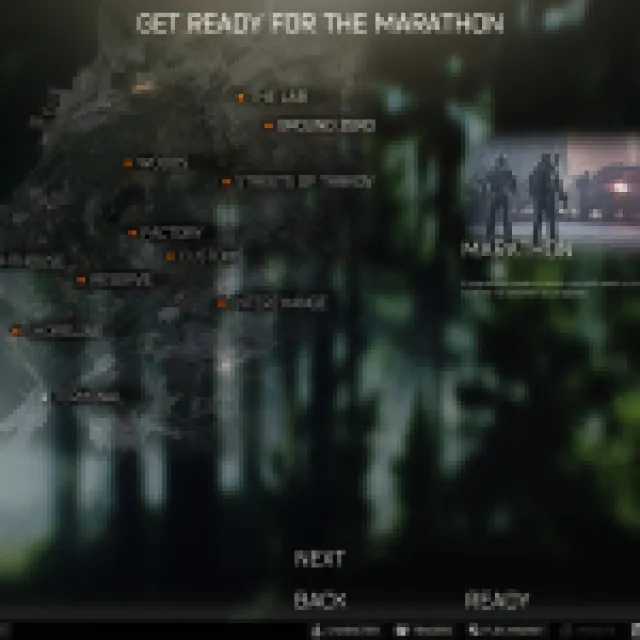
The Marathon is an event that offers a new game mode to Escape from Tarkov players. When you finish loading out your character, you can go to the raid select screen by pressing play and look for the “Marathon” icon on the top-right corner of the raid selection screen.
Tap the icon, and it’ll convert the raid into a Marathon. Once in Marathon mode, you cannot pick a map to play. Everyone starts at Ground Zero. Each area has a dotted line connecting them to other areas. The format or map order is the following:
- Ground Zero
- Streets of Tarkov
- Labs or Interchange (if you go to Labs, there are no other transits)
- Customs (from Interchange)
Your route has to follow the order, so you cannot go to Reserve from Streets of Tarkov. You have to go through everything to transfer from map to map. Once you are inside the Marathon raid, there will be “location transits” that will move you from map A to map B. However, location transits aren’t immediately available. You have to stay for at least 7 minutes from the start of the raid to use the transit.
Once you are moving from one map to another, you can stash valuable items you found in the raid for a price. This is great to get your quest items secured.
If you have a task like the Special Comms, where you need to place some Military Cables and Bulbex Cable Cutters in Woods and Reserve in one raid, you’ll have to go through other areas like Interchange and Streets of Tarkov just to get to it. This is where you want to plan out your tasks when playing a Marathon game. Choose the safest and most efficient routes based on your current tasks.
Related: All Transit Locations in Escape from Tarkov
How to Travel From Map to Map With a Group in EFT
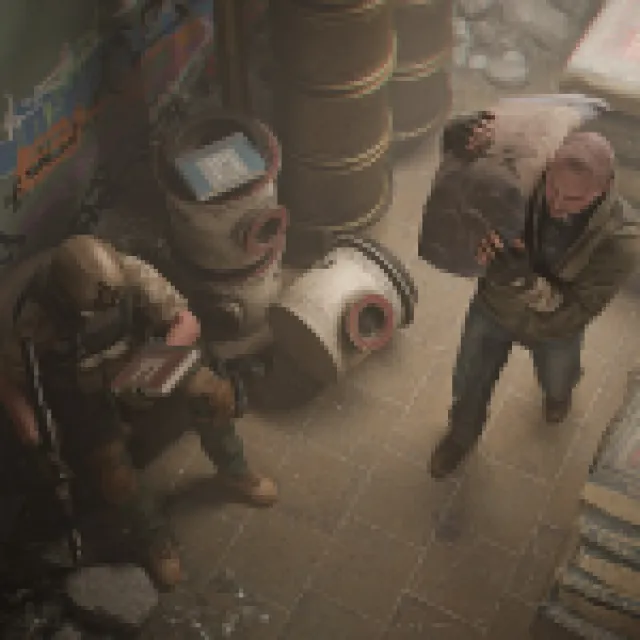
The Marathon group mechanics are the following:
- Players can only use the transit if all living members are in the transit zone .
- If you use the transit with another player who is not in a group with you, you’ll still get transferred to the next map together.
- Solo players can also travel with other groups (as long as you trust them, I guess).
It is best to travel with a group, especially when completing tasks, because it lessens the risk of failing. Playing as a group has more advantages than disadvantages because solo players or smaller groups will avoid fighting a big group. You’ll have more eyes on any location and can strategize properly to raid locations properly. As long as the group isn’t shooting each other and destroying their PMC Karma , group play is the safest way to run Marathons.


IMAGES
COMMENTS
Before you visit Iran make sure you check out our 25 travel tips and things to know to make sure you get the most out of this fascinating country!
Tips on visas, transportation, cultural etiquette, how to find accommodation, cuisine and everything you need to know for traveling to Iran
Travel to Iran: flight, visa, travel insurance, where to stay, Iranian debit card, tours, language, books, domestic transport, apps, VPN, what to wear.
Comprehensive Iran itinerary, from 1 week to 1 month, including all the places to see, transportation tips, a plenty of off beat destinations
Many travel to Iran to discover Persia, unaware of the limitations of visiting this Islamic Republic. This Iran travel guide shows you how.
Planning a solo trip to Iran? Check out my best tips for visiting Iran. Learn how to travel to Iran, how to arrange your visa to Iran and much more.
Iran Travel Guide: Get expert insights and first-hand experiences to plan your perfect trip to Iran. Must See, ATMs, Nowruz.
If there's one country in the world that's worth the pre-trip hassle, it's Iran. Take my Iran travel tips and go explore this incredible land.
Iran stands as a land of contrasts and surprises, a country where ancient history and modern developments converge. This guide, "Iran Travel Tips & Advice," aims to equip you with all the necessary information to make your journey through Iran, not only memorable but also smooth and hassle-free.
26+ Vital Iran Travel Advice & Tips Before you travel to Iran, you need to study some practicable travel advice to get more prepared to make a trip to Iran. Destination Iran travel tips are helpful pieces of advice to make you prepared beforehand.
Iran Travel Guide, Is Iran Safe? One of the top things to know before visiting Iran is that both statistics and tourist experiences show that Iran is a very safe place to travel to.
Get the ultimate travel tips for Iran's diverse attractions, from the architectural jewels of Isfahan to the bustling bazaars of Tehran and beyond.
Itinerary and travel guide blog for Iran covering Tehran, Shiraz, Esfahan, Yazd and Kashan. Includes practical information
From must-visit attractions to getting visa and cultural insights, our complete guide to Iran travel will inspire you to explore this captivating country.
First world travellers, embrace the squat toilets in Iran! It may feel strange and uncomfortable at first, but just quit whining - the natural squatting position is good for your bowel movements. 15. Set aside a considerable budget for entrance fees to attractions.
This guide to Iran Travel has everything you need to know about travelling Iran including where to stay, places to visit, what to do and when to go. Enjoy!
I'm often asked for suggestions about Iran itineraries, so without further ado: here's my suggested two week Iran travel itinerary. Includes tips on what to see, where to stay, how to get off the beaten track, and an interactive map. Updated in 2019 with new recommendations.
A guide to help you plan the perfect Iran itinerary. Options for one, two three and more weeks in Iran including recommended time in each place so you can build your perfect travel itinerary for Iran.
Traveling to Iran can be an enriching and captivating experience, offering an opportunity to explore its rich history, stunning landscapes, and vibrant
Planning on traveling to Iran? Find here the ultimate Iran itinerary for 1 - 3 weeks in Iran, including on and off the beaten path destinations in Iran...
A travel blogger's list of things to know before traveling to Iran. This guide to travel in Iran is based on three months of travel in the country.
Travel Guide to Iran - My 8 Day Cultural Itinerary Visiting Cities of Mashhad, Shiraz, Yazd, Ishfahan and Tehran. Iran is probably one of the most underrated tourist destinations in the world, thanks to the impact of mainstream media. As they report conflict and hatred, viewers establish fear and indifference to the country.
Americans can stay up-to-date on travel advisories for Iran by regularly checking official government sources, monitoring news updates, subscribing to travel alert services, and engaging with travel forums.
Backpacking Iran Travel Guide (2024) • EPIC Budget Tips & Secrets Salam! Planning on backpacking Iran? I had wanted to travel to Iran for years, it's a complicated land of ancient history and underground culture, a place where the girls are beautiful and the mountains bewitching.
Indigo Traveller. LONG BUS JOURNEY IRAN 🇮🇷 (Guide to Bus Travel in Iran) Posted: August 21, 2024 | Last updated: August 21, 2024. More for You
Forbes Travel Guide caught up with the sizzling businessman — naturally, over a couple of cold ones — to discuss it all. Welcome to Atlanta, where the players host a great party.
The CIA is releasing safety tips - or travel tradecraft - as part of its ongoing effort to demystify its work in protecting American citizens.
Here are our top 10 points redemptions for travel featuring hotel stays and flights. Learn how to maximize your travel rewards and save big with insider tips.
We have found that travel can be satisfying without being exhausting. But it has helped to follow these guidelines.
Marathons are games with multiple raids, which is the new game-breaking feature. Players can move from one map to another and can end the marathon when they extract. However, how does a player travel between maps in a single raid? Here's how you can do that and all the mechanics involved in the Marathon game mode.